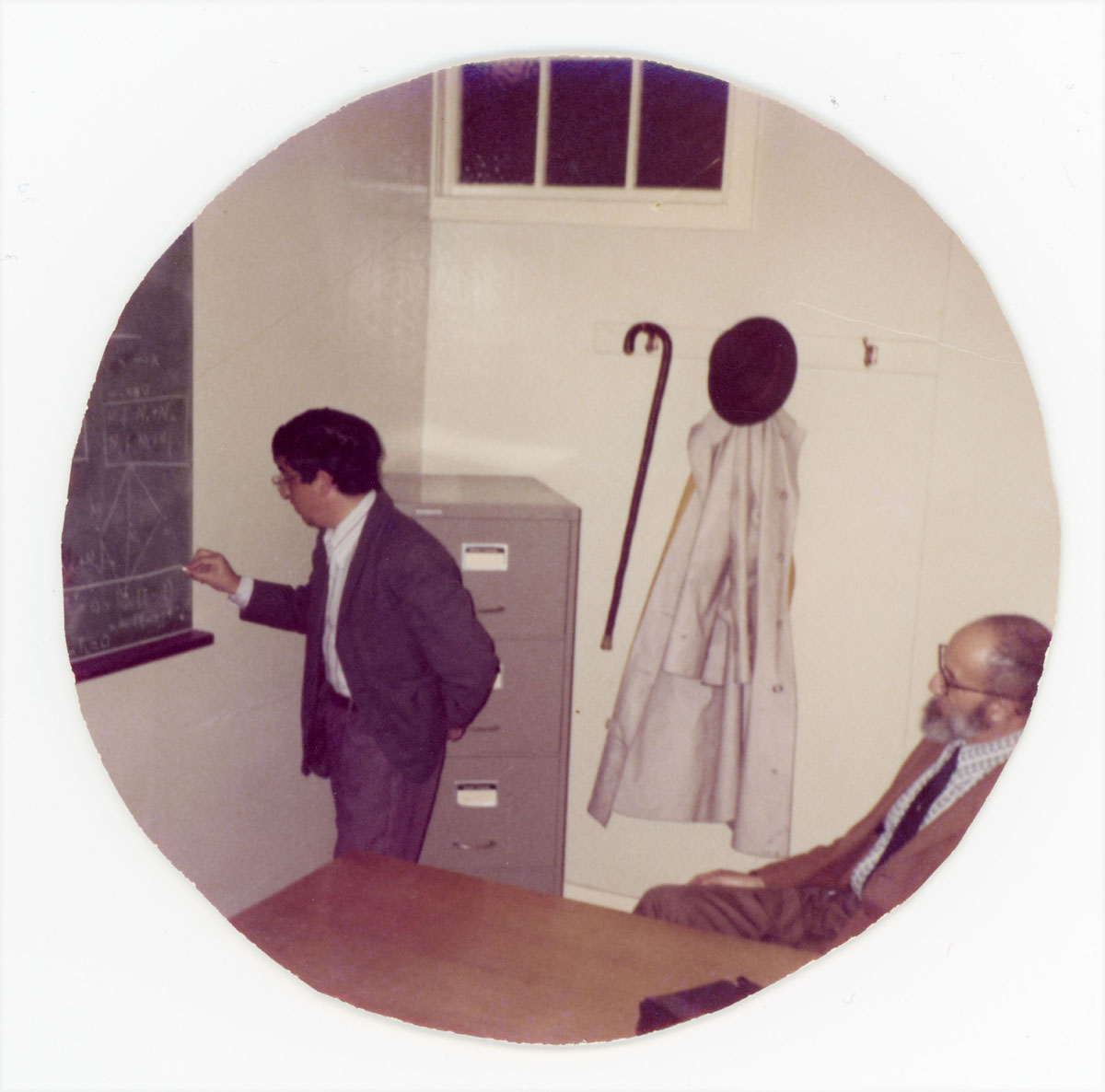Who's That Mathematician? Images from the Paul R. Halmos Photograph Collection
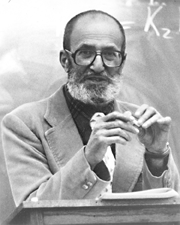
Well-known and warmly remembered mathematical researcher, educator, and expositor and “great friend of the MAA” Paul R. Halmos (1916-2006) enjoyed snapping photographs of mathematicians he met around the world and at his various home campuses in the U.S. In 2011, 343 of Halmos’ photos were digitized by the Archives of American Mathematics, Dolph Briscoe Center for American History, University of Texas, Austin, under the direction of Archivist Carol Mead with a grant from the History of Mathematics Special Interest Group of the Mathematical Association of America (HOM SIGMAA).
We present here a weekly-increasing subset of the 343 photos by inveterate photographer Halmos, and we invite you to share what you know about them with authors Janet Beery and/or Carol Mead. Please provide or correct names, dates, locations, and events (e.g. conference, invited speaker, social visit, etc.). Please also share any other pertinent information, warm memories, etc. connected to the photograph. And be sure to look for new photos at this site each week throughout the year!
The photograph of Halmos above is from the Convergence Portrait Gallery. Permission to reproduce the remaining photos must be obtained from the Dolph Briscoe Center for American History, University of Texas, Austin.
For more information about the life of Paul Halmos, please see the following biographies:
Mathematical Association of America (MAA) Biography of Paul Halmos
MacTutor History of Mathematics Archive Biography of Paul Halmos
The mathematical people in the photographs in the collection will be identified in captions appearing beneath the photos in order to give you a chance to try to identify them first.
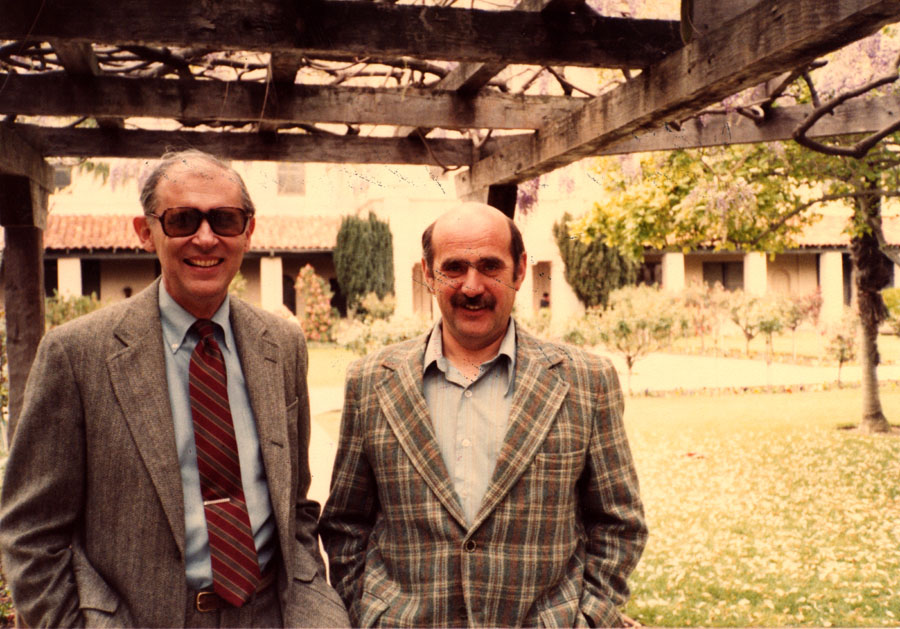
We begin with a photograph of Gerald (Jerry) Alexanderson, Halmos' colleague at Santa Clara University in California. Halmos joined the mathematics faculty at Santa Clara in 1985, at the invitation of Alexanderson, who had taught there since 1958. Alexanderson was largely responsible for the donation of Halmos' papers and photographs to the Archives of American Mathematics and, in particular, for the monumental task of organizing Halmos' photograph collection for the Archives.
Alexanderson (left) is pictured with Vladimir Drobot at Santa Clara University, where both were faculty members, in March of 1984, the year before Halmos joined them as a faculty member there. At the time this photo was taken, Alexanderson was First Vice President of the MAA. He would become MAA President in 1997. Vlad Drobot taught at SCU for 17 years and then, in 1990, moved across town to San Jose State University, where he taught for 16 years.
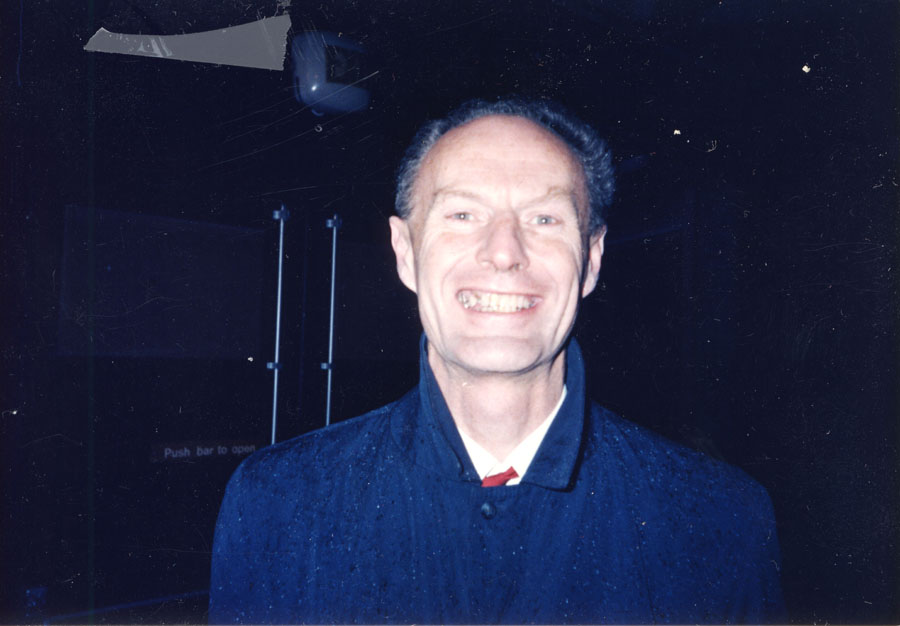
J. Frank Adams (1930-1989), then of Trinity College, Cambridge, was photographed at the annual British Mathematical Colloquium at the University of Hull, England, in April, 1986. Sir Michael Atiyah (pictured on page 2 and page 10) describes Adams as "the leader in the field [of homotopy theory] in its maturity." Halmos was a plenary speaker at the 1986 Colloquium, presenting "Fifty Years of Linear Algebra: A Personal Reminiscence" (see British Mathematical Colloquium, MacTutor History of Mathematics Archive).
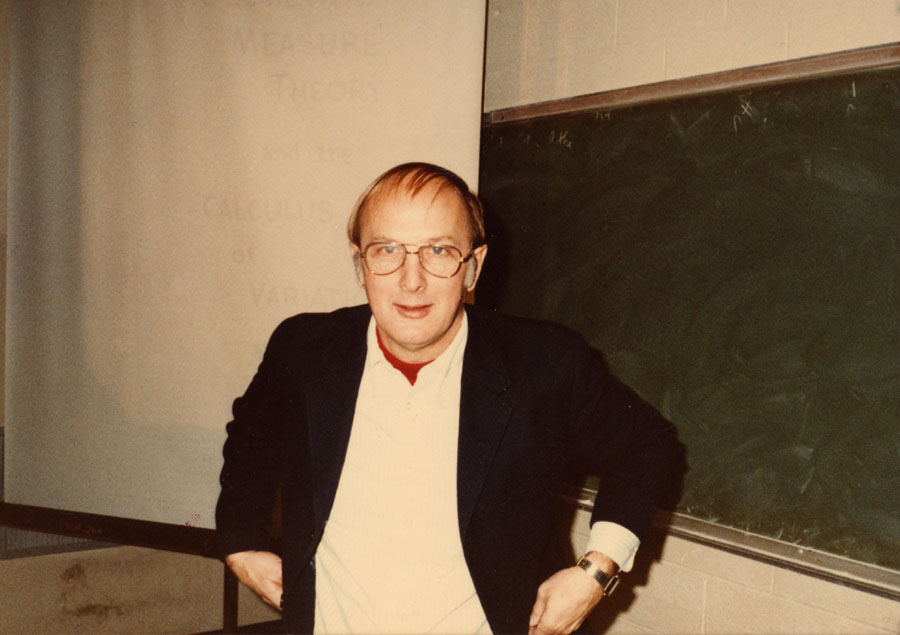
Frederick (Fred) Almgren (1933-1997), is pictured in December, 1983, possibly at Princeton University, where the geometric analyst spent most of his mathematical career, or possibly at Indiana University in Bloomington, where Halmos was a professor at the time, or possibly somewhere else ....
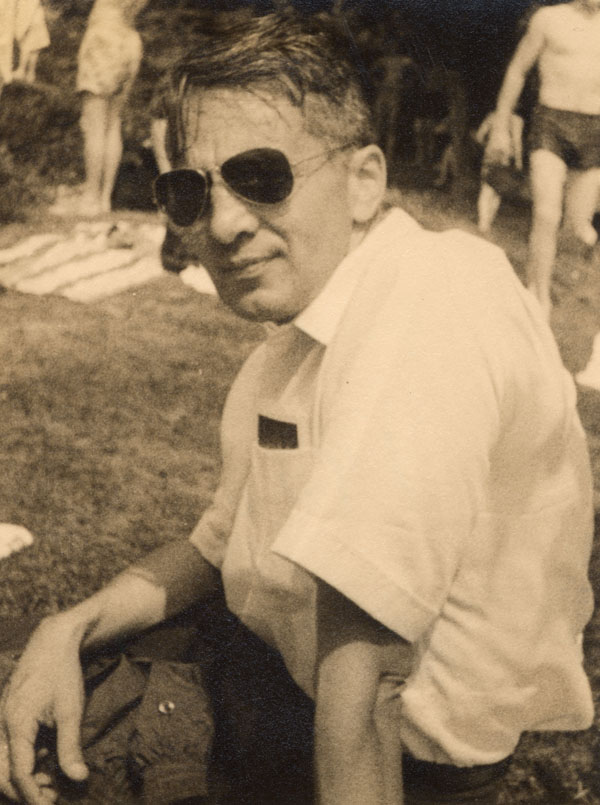
Warren Ambrose (1914-1995) was photographed by Halmos in 1958 (black and white photo printed July 15, 1958).
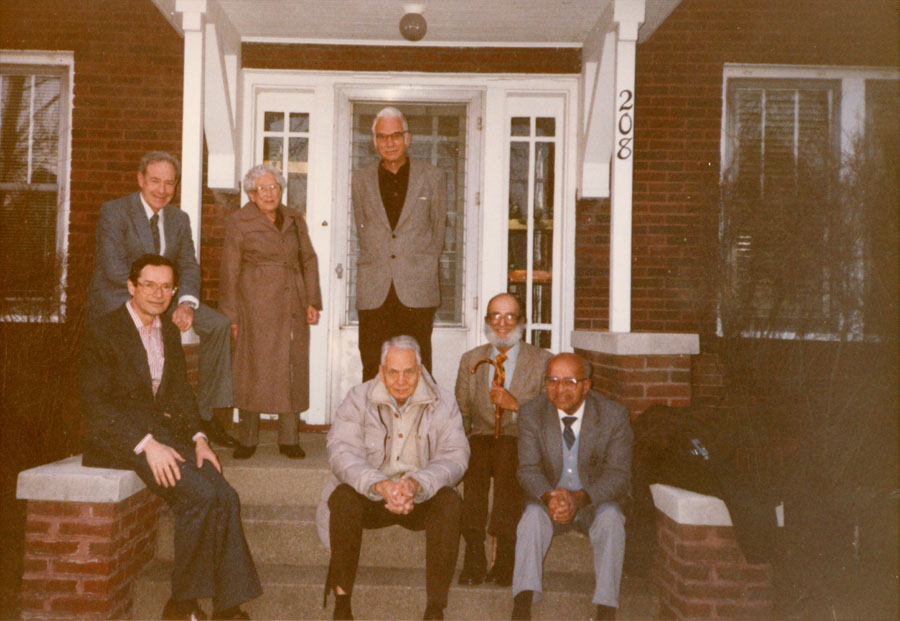
Warren Ambrose also appears in the group photo above (center front) taken in March, 1990. Ambrose, who spent most of his career at M.I.T., was a mathematical "brother" of Halmos, sharing Ph.D. advisor Joseph Doob (1910-2004) (at upper right in the group photo above) at the University of Illinois, Urbana-Champaign, during the late 1930s. Halmos completed his degree in 1938 and Ambrose in 1939. David Blackwell (1919-2010), at lower right in the group photo, also completed his Ph.D. with Doob at Illinois at about the same time, in 1941. The group gathered at the home of Joseph and Elsie Doob at 208 W. High Street in Urbana, Illinois, in March of 1990 in the photo above consisted of
- back row, left to right: Colin Blyth, Elsie Doob, Joseph Doob,
- front row, left to right: Donald Burkholder, and mathematical "brothers" Warren Ambrose, Paul Halmos, and David Blackwell.
David Blackwell became a statistician and spent most of his career at Howard University and the University of California, Berkeley. Joseph Doob was a probabilist and measure theorist who had a long career at the University of Illinois, where Halmos, Ambrose, and Blackwell were his first three Ph.D. students. Donald Burkholder (1927-2013) joined the University of Illinois Mathematics Department in 1955 and the UIUC Center for Advanced Study in 1978. He started out at Illinois as a statistician but soon became a probabilist under the influence of Doob. Statistician Colin Blyth, who had been professor of mathematics at the University of Illinois from 1950 to 1974, probably would have been visiting Urbana from Kingston, Ontario, Canada, where he had retired as a professor at Queen's University in 1987. We thank Frank Miles of California State University, Dominguez Hills, who grew up in Urbana and whose brother was in the same high school class as the Doobs' son Steve, for identifying the Doobs' home in the photo above. We are grateful to Joseph Rotman of UIUC as well for the information he provided about the "House of Probability."
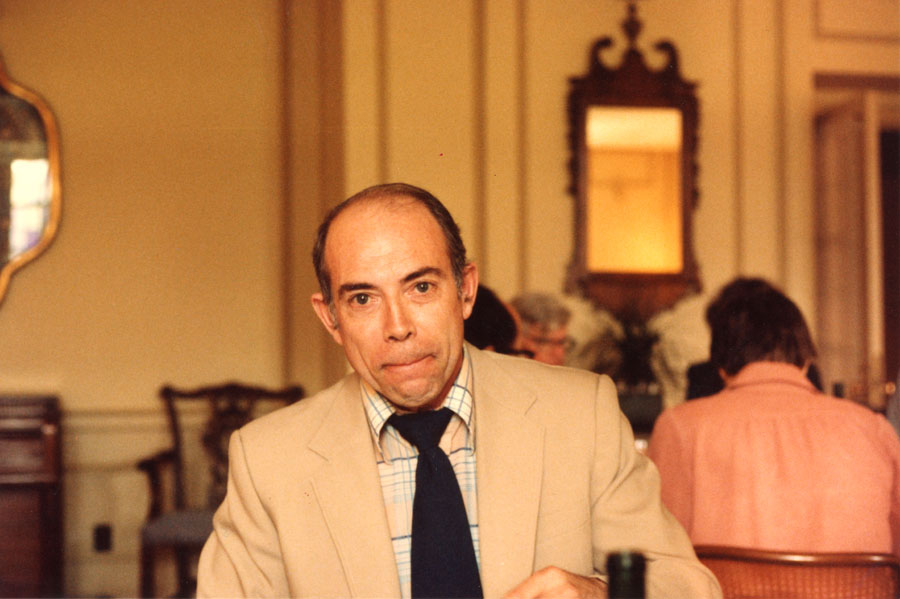
Steve Armentrout attended a meeting of the American Mathematical Society's Executive Committee and Board of Trustees in Ann Arbor, Michigan, in May of 1982 (Archives of American Mathematics). Armentrout had been a Ph.D. student of R. L. Moore at the University of Texas and had several Ph.D. students of his own at the University of Iowa during the 1960s (Mathematics Genealogy Project).
Sources:
- Archives of American Mathematics, Dolph Briscoe Center for American History, University of Texas, Austin. Information for which a source is not cited or given in the list below either appeared on the reverse side of the photograph or was obtained by AAM archivist Carol Mead from various sources during 2011-12.
- Vladimir Drobot Home Page
- ElectricScotland.com (Colin R. Blyth autobiography)
- MacTutor History of Mathematics Archive, St. Andrews University, Scotland (Frank Adams, Frederick Almgren, David Blackwell, Joseph Doob, Paul Halmos, British Mathematical Colloquium)
- Massachusetts Institute of Technology: MIT News (Warren Ambrose); see also "A Tribute to Warren Ambrose," by I. M. Singer and H. Wu, AMS Notices (April 1996); pp. 425-427
- Mathematical Association of America (Paul Halmos: A Life in Mathematics and MAA Presidents: Gerald Alexanderson)
- Mathematics Genealogy Project, North Dakota State University (all mathematicians)
- Queen's University (Kingston, Ontario) Department of Mathematics (Colin Blyth)
- San Jose State University (California) Department of Mathematics (Vladimir Drobot)
- Santa Clara University (California) Department of Mathematics (Gerald Alexanderson)
- University of Illinois, In Memoriam: Donald Burkholder
- University of Illinois, In Memoriam: Joseph Leo Doob
Who's That Mathematician? Images from the Paul R. Halmos Photograph Collection - Index
A - B - C - D - E-F - G - H - J - K - L - M - N-O-P-Q - R - S - T-U-V-W-X-Y-Z
| Name | Page |
| Adams, J. Frank | 1 |
| Albers, Donald | 11 |
| Alexanderson, Gerald | 1 |
| Almgren, Frederick | 1 |
| Ambrose, Warren | 1 |
| Armentrout, Steve | 1 |
| Arveson, William | 2 |
| Aschbacher, Michael | 2 |
| Askey, Richard | 2 |
| Atiyah, Michael | 2, 10 |
| Auslander, Maurice | 3 |
| Top | |
| Baer, Marianne | 3 |
| Baer, Reinhold | 3 |
| Banchoff, Thomas | 3 |
| Barnett, Fannie | 3 |
| Barnett, Isaac | 3 |
| Barrett, Lida | 3 |
| Barría, José | 4 |
| Bartle, Robert | 4, 59 |
| Bass, Hyman | 4 |
| Bastian, Joseph | 4 |
| Bateman, Felice | 5 |
| Bateman, Paul | 5 |
| Begle, Edward | 5 |
| Bellow, Alexandra | 5, 9, 59 |
| Benkart, Georgia | 5 |
| Bers, Lipman | 5, 32 |
| Bers, Mary | 5 |
| Bers, Ruth | 5 |
| Bers, Victor | 5 |
| Besicovitch, Abram | 6 |
| Bing, R. H. | 6, 17 |
| Birkhoff, Garrett | 6 |
| Bishop, Errett | 6 |
| Black, Max | 6 |
| Blackwell, David | 1, 7, 47 |
| Blyth, Colin | 1 |
| Boas, Jr., Ralph P. | 7 |
| Bollabás, Béla | 7 |
| Bombieri, Enrico | 7 |
| Bonsall, Frank | 7 |
| Boone, William | 20 |
| Borel, Armand | 8 |
| Borsuk, Karol | 8 |
| Bott, Raoul | 8, 10 |
| Bram, Leila Dragonette | 54 |
| Browder, William | 8, 40 |
| Brown, H. Arlen | 8, 48 |
| Bruckner, Andrew | 40 |
| Brumfiel, Charles | 48 |
| Buck, R. Creighton | 8 |
| Burkholder, Donald | 1, 9 |
| Butzer, Paul | 9 |
| Top | |
| Calderón, Alberto | 9 |
| Cassels, Constance | 9 |
| Cassels, John (Ian) | 9 |
| Chern, Shiing-Shen | 9, 38 |
| Coburn, Lewis | 9 |
| Cockcroft, Rhona | 51 |
| Cohn, Harry I. | 59 |
| Connes, Alain | 33 |
| Conway, John B. | 49, 58, 59 |
| Conway, John H. | 59 |
| Courant, Richard | 10 |
| Coxeter, Donald | 10, 33 |
| Craig, Walter | 30 |
| Császár, Ákos | 10 |
| Csiszár, Imre | 10 |
| Top | |
| Dales, H. Garth | 41 |
| D'Ambrosio, Ubiratan | 10 |
| Dantzig, George | 11 |
| Davis, Martin | 11 |
| Davis, Natalie | 42 |
| de Branges, Louis | 11 |
| de Branges, Tatiana | 11 |
| Devlin, Keith | 11 |
| Diestel, Joseph | 11 |
| Dieudonné, Jean | 11 |
| Dilworth, Robert | 12 |
| Dirac, Paul | 12 |
| Ditzian, Zeev | 59 |
| Dixmier, Jacques | 12 |
| Donaldson, Simon | 12 |
| Doob, Elsie | 1 |
| Doob, Joseph | 1, 2, 12, 14, 56 |
| Douglas, Ronald | 13 |
| Drobot, Vladimir | 1 |
| Dudley, Richard | 13 |
| Dudley, Underwood | 13 |
| Duren, Peter | 13 |
| Duren, William L. | 13 |
| Dyn, Nira | 59 |
| Top | |
| Edge, William L. | 13 |
| Eilenberg, Samuel | 13, 55 |
| Ellis, Robert | 38 |
| Erdös, Anna | 14 |
| Erdös, Paul | 3, 10, 14, 27, 59 |
| Fan, Ky | 14 |
| Feller, William | 14 |
| Flatto, Leopold | 14 |
| Floyd, Edwin E. | 50 |
| Foias, Ciprian | 14 |
| Fomin, Sergei | 15 |
| Freyd, Peter | 25 |
| Fröhlich, Albrecht | 15 |
| Fuchs, László | 15 |
| Top | |
| Gaal, Lisl (Ilse) | 15, 44 |
| Gaal, Steven | 15, 30 |
| Galler, Bernard | 15 |
| Gallian, Joseph | 15 |
| Gamkrelidze, Revaz | 16 |
| Gårding, Lars | 16 |
| Gardner, Martin | 16 |
| Gehring, Frederick | 16, 29 |
| Gelbart, Abraham | 16 |
| Gelfand, Israil | 15, 16 |
| Ghaffari, Abolghassem | 6 |
| Gillman, Leonard | 17 |
| Gillman, Reba | 17 |
| Gleason, Andrew | 17, 19 |
| Goffman, Casper | 58 |
| Gohberg, Israel | 17 |
| Graham, Fan Chung | 18 |
| Graham, Ronald | 18 |
| Grauert, Hans | 18 |
| Graves, Lawrence | 18 |
| Gray, Mary | 18 |
| Green, John | 18 |
| Green, Sandy | 19 |
| Greenwood, Robert | 19 |
| Griffiths, Phillip | 19 |
| Gross, Leonard | 19 |
| Grothendieck, Alexander | 19 |
| Gruenberg, Karl | 19 |
| Gupta, Shanti | 20 |
| Guy, Richard | 20 |
| Top | |
| Hadwin, Donald | 20 |
| Haimo, Deborah | 20 |
| Haimo, Franklin | 20 |
| Haken, Wolfgang | 20 |
| Halberstam, Heini | 20 |
| Halmos, Paul | 1, 4, 7, 16, 21, 39, 45, 58, 60 |
| Halmos, Virginia | 35, 43 |
| Halperin, Israel | 21 |
| Harary, Frank | 29, 59 |
| Hasse, Helmut | 21 |
| Hay, Louise | 21 |
| Hayman, Walter | 21 |
| Helson, Henry | 22 |
| Herstein, I. N. (Yitzchak) | 22 |
| Hestenes, Magnus | 22 |
| Hewitt, Edwin | 22 |
| Higman, Graham | 22 |
| Hildebrandt, Theophil | 23 |
| Hille, Carl Einar | 23 |
| Hille, Kirsti | 23 |
| Hilton, Peter | 23 |
| Hirsch, Kurt | 23 |
| Hirschman, Isidore | 23 |
| Hirzebruch, Friedrich | 23 |
| Hlavaty, Julius | 43 |
| Hochschild, Gerhard | 24 |
| Hodge, William | 24 |
| Hopf, Eberhard | 24 |
| Hopf, Heinz | 24 |
| Hörmander, Lars | 24 |
| Hoste, Jim | 25 |
| Householder, Alston | 24 |
| Howard, William | 25 |
| Hunt, Gilbert | 25 |
| Top | |
| James, Ralph F. | 25 |
| James, Robert C. | 25, 30 |
| Johnson, William | 5 |
| Jones, Burton W. | 6 |
| Jones, F. Burton | 25 |
| Jones, Madeleine | 25 |
| Jones, Phillip S. | 23 |
| Jones, Vaughan | 25 |
| Jónsson, Bjarni | 15 |
| Top | |
| Kaashoek, Marinus | 17 |
| Kac, Mark | 26 |
| Kadison, Richard | 26 |
| Kakutani, Shizuo | 26 |
| Kaplansky, Irving | 26 |
| Karlin, Samuel | 59 |
| Kato, Tosio | 26 |
| Katznelson, Yitzhak | 26 |
| Keller, Joseph | 27 |
| Kelley, John L. | 27 |
| Kelley, Robert L. | 27 |
| Kendall, David | 27 |
| Ketchum, Pierce | 45 |
| Kiefer, Jack | 27 |
| Kimchi, Esther | 59 |
| Kirby, Robion | 28 |
| Kneser, Hellmuth | 28 |
| Knobloch, Hans-Wilhelm | 19 |
| Kochen, Simon | 28 |
| Kolmogorov, Andrei | 28 |
| Komar, Arthur | 55 |
| Kopp, Robert | 45 |
| Korte, Bernhard | 59 |
| Kovács, László (Laci) | 37 |
| Krull, Wolfgang | 28 |
| Kruskal, Martin | 28 |
| Kuiper, Nicolaas | 29 |
| Kuratowski, Kazimierz | 29 |
| Top | |
| Lang, Serge | 29 |
| Langlands, Robert | 29 |
| Lax, Anneli | 29 |
| Lax, Peter | 10, 29 |
| Lehmer, Derrick | 30 |
| Lehmer, Emma | 30 |
| Lehrer, Tom | 30 |
| Lengyel, Béla A. | 50 |
| Leray, Jean | 30 |
| LeVeque, William | 30 |
| Leviatan, Dany | 59 |
| Lewis, Donald J. | 25 |
| Lewy, Hans | 30 |
| Lickorish, W. B. Raymond | 25 |
| Lindenstrauss, Joram | 59 |
| Linderholm, Carl | 31 |
| Lininger, Lloyd | 2 |
| Littlewood, J. E. | 31 |
| Liulevicius, Arunas | 31 |
| Loewner, Charles | 31 |
| Lorentz, George | 31 |
| Lovasz, Laszlo | 31, 59 |
| Lowig, Henry | 32 |
| Lowig, Libuse | 32 |
| Lukacs, Eugene | 32 |
| Lumer, Gunter | 32 |
| Lyndon, Roger | 32 |
| Top | |
| Mac Lane, Saunders | 32 |
| Mackey, George | 33 |
| Maddux, Roger | 33 |
| Magnus, Wilhelm | 33 |
| Mahler, Kurt | 33 |
| May, Kenneth | 33 |
| Mandelbrot, Benoit | 34 |
| Manin, Yuri | 34 |
| Marcus, Froim | 59 |
| McCarthy, John | 34 |
| McShane, Edward | 34 |
| McShane, Virginia | 34 |
| Merzbach, Uta | 34 |
| Mesirov, Jill | 34 |
| Micchelli, Charles | 59 |
| Millett, Kenneth | 25 |
| Milman, David | 35 |
| Milnor, John | 35 |
| Minty, George | 35 |
| Mishchenko, Evgenii | 40 |
| Moise, Edwin E. | 35 |
| Montgomery, Deane | 35 |
| Moore, Charles N. | 3 |
| Moore, Robert L. | 35 |
| Mordell, Louis | 36 |
| Moser, Jürgen | 36 |
| Muckenhoupt, Benjamin | 36 |
| Muckenhoupt, Carl | 36 |
| Muckenhoupt, Mary Kay | 36 |
| Muckenhoupt, Meg | 36 |
| Mumford, David | 7 |
| Myhill, John | 36 |
| Top | |
| Naimark, Mark | 37 |
| Namioka, Isaac | 37 |
| Nash, John | 37 |
| Nelson, Edward | 15 |
| Nerode, Anil | 37 |
| Neumann, Bernhard | 37, 59 |
| Neumann, Hanna | 37 |
| Neyman, Jerzy | 38 |
| Nirenberg, Louis | 38 |
| Niven, Betty | 38 |
| Niven, Ivan | 38 |
| Nordgren, Eric | 38 |
| Obaid, Samih | 34 |
| Ocneanu, Adrian | 25 |
| Ornstein, Donald | 38 |
| Ostrowski, Alexander | 38, 40 |
| Parrott, Stephen | 39 |
| Pearcy, Carl | 29, 39 |
| Peixoto, Mauricio | 31 |
| Penrose, Roger | 39 |
| Peters, Klaus | 39 |
| Peterson, Franklin | 40 |
| Pettis, Billy | 40 |
| Phelps, Robert | 40 |
| Phillips, Ralph | 9, 40 |
| Pólya, George | 40 |
| Pontryagin, Lev | 40, 41 |
| Porcelli, Pasquale | 41 |
| Price, Cora | 41 |
| Price, G. Baley | 41 |
| Puppe, Dieter | 44 |
| Top | |
| Rado, Richard | 41 |
| Rainich, George Yuri | 41 |
| Rankin, Robert | 7, 41 |
| Ravenel, Douglas | 42 |
| Ray, Daniel | 13 |
| Ray-Chaudhuri, Dijen | 18 |
| Reade, Maxwell | 32 |
| Reid, Constance | 42 |
| Reid, William T. | 41 |
| Reimann, Hans | 41 |
| Reiner, Irma | 42 |
| Reiner, Irving | 42 |
| Remmert, Reinhold | 18, 42 |
| Rényi, Alfréd | 42, 43 |
| Rényi, Zsuzsanna | 43 |
| Rhoades, Billy E. | 49 |
| Rickart, Charles | 43 |
| Ringrose, John | 43 |
| Ritchie, Robert | 43 |
| Rivlin, Ronald | 43, 55 |
| Robbins, Herbert | 43 |
| Robinson, Abraham | 44 |
| Robinson, Gilbert | 10, 44 |
| Robinson, Julia | 30, 42, 44 |
| Robinson, Raphael | 44 |
| Rogers, Donald | 44 |
| Rosenberg, Alex | 45 |
| Rosenblatt, Murray | 12 |
| Rosenstein, George | 45 |
| Rosenthal, Haskell | 5 |
| Rosenthal, Peter | 45 |
| Rosser, John Barkley | 45 |
| Rota, Gian-Carlo | 45 |
| Rubel, Lee A. | 45 |
| Rubin, Herman | 46 |
| Rudin, Mary Ellen | 25, 44, 46 |
| Rudin, Walter | 46 |
| Ruelle, David | 46 |
| Top | |
| Saaty, Thomas | 46 |
| Samuel, Pierre | 46 |
| Saphar, Pierre | 59 |
| Sarason, Donald | 47 |
| Schiffer, Menahem | 24 |
| Schoenberg, Isaac | 47, 59 |
| Schoenfeld, Alan | 47 |
| Schreiber, Morris | 47 |
| Schwartz, Jacob | 47 |
| Schwartz, Laurent | 47 |
| Seberry, Jennifer | 59 |
| Segal, Irving | 48 |
| Shapiro, Harold | 48 |
| Sharp, William | 33 |
| Shields, Allen | 48, 60 |
| Shields, Joan | 60 |
| Sierpinski, Waclaw | 48 |
| Singer, Crina | 59, 60 |
| Singer, Isadore | 48 |
| Singer, Ivan | 36, 58, 59, 60 |
| Smale, Stephen | 40, 48 |
| Smithies, Frank | 48, 49 |
| Smithies, Nora | 24, 49 |
| Smucker, Linda | 49 |
| Smucker, Russ | 49 |
| Smullyan, Raymond | 49 |
| Snapper, Ernst | 49 |
| Sneddon, Ian | 49 |
| Solovay, Robert | 49 |
| Sós, Vera | 10 |
| Spanier, Edwin | 50 |
| Spencer, Donald | 50 |
| Steenrod, Norman | 50 |
| Stein, Karl | 18 |
| Stinespring, William | 55 |
| Stone, Marshall | 4, 38, 50 |
| Straus, Ernst | 50 |
| Straus, Louise | 50 |
| Sunder, Viakalathur | 51 |
| Swift,Ellen | 58 |
| Swift, William | 58 |
| Swinnerton-Dyer, Peter | 51 |
| Szankowski, Andrzej | 59 |
| Szökefalvi-Nagy, Béla | 9, 14, 36, 38, 43, 50, 51 |
| Top | |
| Tarski, Alfred | 51 |
| Tate, John | 52 |
| Taub, Abraham | 52 |
| Taussky-Todd, Olga | 52 |
| Thom, René | 52 |
| Tits, Jacques | 52 |
| Tornheim, Leonard | 25 |
| Turán, Pál | 53 |
| Uhlenbeck, Karen | 53 |
| Ulam, Stanislaw | 53 |
| van der Waerden, Bartel | 23, 53 |
| Vanstone, Ray | 33 |
| Varadhan, Srinivasa | 53 |
| Varga, Richard | 54 |
| Vasiu, Angela | 59 |
| Vesztergombi, Katalin | 31 |
| von Neumann, John | 52 |
| Wall, C. Terence | 54 |
| Wallace, Andrew | 54 |
| Wallen, Lawrence | 54 |
| Wells, Raymond | 54 |
| Weyl, Fritz Joachim | 54, 55 |
| Wheeler, John | 55 |
| Whitehead, George | 55 |
| Whitehead, Henry | 55 |
| Whyburn, Gordon | 55 |
| Widom, Harold | 55, 56 |
| Wilder, Raymond | 43, 56 |
| Wolfowitz, Jacob | 56 |
| Wonenburger, Maria | 57 |
| Yetter, David | 25 |
| Young, Laurence | 56 |
| Youngs, J. W. T. | 56 |
| Zeeman, Christopher | 57 |
| Zorn, Max | 57 |
| Zygmund, Antoni | 57 |
| Top |
Who's That Mathematician? Images from the Paul R. Halmos Photograph Collection

Well-known and warmly remembered mathematical researcher, educator, and expositor and “great friend of the MAA” Paul R. Halmos (1916-2006) enjoyed snapping photographs of mathematicians he met around the world and at his various home campuses in the U.S. In 2011, 343 of Halmos’ photos were digitized by the Archives of American Mathematics, Dolph Briscoe Center for American History, University of Texas, Austin, under the direction of Archivist Carol Mead with a grant from the History of Mathematics Special Interest Group of the Mathematical Association of America (HOM SIGMAA).
We present here a weekly-increasing subset of the 343 photos by inveterate photographer Halmos, and we invite you to share what you know about them with authors Janet Beery and/or Carol Mead. Please provide or correct names, dates, locations, and events (e.g. conference, invited speaker, social visit, etc.). Please also share any other pertinent information, warm memories, etc. connected to the photograph. And be sure to look for new photos at this site each week throughout the year!
The photograph of Halmos above is from the Convergence Portrait Gallery. Permission to reproduce the remaining photos must be obtained from the Dolph Briscoe Center for American History, University of Texas, Austin.
For more information about the life of Paul Halmos, please see the following biographies:
Mathematical Association of America (MAA) Biography of Paul Halmos
MacTutor History of Mathematics Archive Biography of Paul Halmos
The mathematical people in the photographs in the collection will be identified in captions appearing beneath the photos in order to give you a chance to try to identify them first.

We begin with a photograph of Gerald (Jerry) Alexanderson, Halmos' colleague at Santa Clara University in California. Halmos joined the mathematics faculty at Santa Clara in 1985, at the invitation of Alexanderson, who had taught there since 1958. Alexanderson was largely responsible for the donation of Halmos' papers and photographs to the Archives of American Mathematics and, in particular, for the monumental task of organizing Halmos' photograph collection for the Archives.
Alexanderson (left) is pictured with Vladimir Drobot at Santa Clara University, where both were faculty members, in March of 1984, the year before Halmos joined them as a faculty member there. At the time this photo was taken, Alexanderson was First Vice President of the MAA. He would become MAA President in 1997. Vlad Drobot taught at SCU for 17 years and then, in 1990, moved across town to San Jose State University, where he taught for 16 years.

J. Frank Adams (1930-1989), then of Trinity College, Cambridge, was photographed at the annual British Mathematical Colloquium at the University of Hull, England, in April, 1986. Sir Michael Atiyah (pictured on page 2 and page 10) describes Adams as "the leader in the field [of homotopy theory] in its maturity." Halmos was a plenary speaker at the 1986 Colloquium, presenting "Fifty Years of Linear Algebra: A Personal Reminiscence" (see British Mathematical Colloquium, MacTutor History of Mathematics Archive).

Frederick (Fred) Almgren (1933-1997), is pictured in December, 1983, possibly at Princeton University, where the geometric analyst spent most of his mathematical career, or possibly at Indiana University in Bloomington, where Halmos was a professor at the time, or possibly somewhere else ....

Warren Ambrose (1914-1995) was photographed by Halmos in 1958 (black and white photo printed July 15, 1958).

Warren Ambrose also appears in the group photo above (center front) taken in March, 1990. Ambrose, who spent most of his career at M.I.T., was a mathematical "brother" of Halmos, sharing Ph.D. advisor Joseph Doob (1910-2004) (at upper right in the group photo above) at the University of Illinois, Urbana-Champaign, during the late 1930s. Halmos completed his degree in 1938 and Ambrose in 1939. David Blackwell (1919-2010), at lower right in the group photo, also completed his Ph.D. with Doob at Illinois at about the same time, in 1941. The group gathered at the home of Joseph and Elsie Doob at 208 W. High Street in Urbana, Illinois, in March of 1990 in the photo above consisted of
- back row, left to right: Colin Blyth, Elsie Doob, Joseph Doob,
- front row, left to right: Donald Burkholder, and mathematical "brothers" Warren Ambrose, Paul Halmos, and David Blackwell.
David Blackwell became a statistician and spent most of his career at Howard University and the University of California, Berkeley. Joseph Doob was a probabilist and measure theorist who had a long career at the University of Illinois, where Halmos, Ambrose, and Blackwell were his first three Ph.D. students. Donald Burkholder (1927-2013) joined the University of Illinois Mathematics Department in 1955 and the UIUC Center for Advanced Study in 1978. He started out at Illinois as a statistician but soon became a probabilist under the influence of Doob. Statistician Colin Blyth, who had been professor of mathematics at the University of Illinois from 1950 to 1974, probably would have been visiting Urbana from Kingston, Ontario, Canada, where he had retired as a professor at Queen's University in 1987. We thank Frank Miles of California State University, Dominguez Hills, who grew up in Urbana and whose brother was in the same high school class as the Doobs' son Steve, for identifying the Doobs' home in the photo above. We are grateful to Joseph Rotman of UIUC as well for the information he provided about the "House of Probability."

Steve Armentrout attended a meeting of the American Mathematical Society's Executive Committee and Board of Trustees in Ann Arbor, Michigan, in May of 1982 (Archives of American Mathematics). Armentrout had been a Ph.D. student of R. L. Moore at the University of Texas and had several Ph.D. students of his own at the University of Iowa during the 1960s (Mathematics Genealogy Project).
Sources:
- Archives of American Mathematics, Dolph Briscoe Center for American History, University of Texas, Austin. Information for which a source is not cited or given in the list below either appeared on the reverse side of the photograph or was obtained by AAM archivist Carol Mead from various sources during 2011-12.
- Vladimir Drobot Home Page
- ElectricScotland.com (Colin R. Blyth autobiography)
- MacTutor History of Mathematics Archive, St. Andrews University, Scotland (Frank Adams, Frederick Almgren, David Blackwell, Joseph Doob, Paul Halmos, British Mathematical Colloquium)
- Massachusetts Institute of Technology: MIT News (Warren Ambrose); see also "A Tribute to Warren Ambrose," by I. M. Singer and H. Wu, AMS Notices (April 1996); pp. 425-427
- Mathematical Association of America (Paul Halmos: A Life in Mathematics and MAA Presidents: Gerald Alexanderson)
- Mathematics Genealogy Project, North Dakota State University (all mathematicians)
- Queen's University (Kingston, Ontario) Department of Mathematics (Colin Blyth)
- San Jose State University (California) Department of Mathematics (Vladimir Drobot)
- Santa Clara University (California) Department of Mathematics (Gerald Alexanderson)
- University of Illinois, In Memoriam: Donald Burkholder
- University of Illinois, In Memoriam: Joseph Leo Doob
Who's That Mathematician? Paul R. Halmos Collection - Introduction - Page 1

Well-known and warmly remembered mathematical researcher, educator, and expositor and “great friend of the MAA” Paul R. Halmos (1916-2006) enjoyed snapping photographs of mathematicians he met around the world and at his various home campuses in the U.S. In 2011, 343 of Halmos’ photos were digitized by the Archives of American Mathematics, Dolph Briscoe Center for American History, University of Texas, Austin, under the direction of Archivist Carol Mead with a grant from the History of Mathematics Special Interest Group of the Mathematical Association of America (HOM SIGMAA).
We present here a weekly-increasing subset of the 343 photos by inveterate photographer Halmos, and we invite you to share what you know about them with authors Janet Beery and/or Carol Mead. Please provide or correct names, dates, locations, and events (e.g. conference, invited speaker, social visit, etc.). Please also share any other pertinent information, warm memories, etc. connected to the photograph. And be sure to look for new photos at this site each week throughout the year!
The photograph of Halmos above is from the Convergence Portrait Gallery. Permission to reproduce the remaining photos must be obtained from the Dolph Briscoe Center for American History, University of Texas, Austin.
For more information about the life of Paul Halmos, please see the following biographies:
Mathematical Association of America (MAA) Biography of Paul Halmos
MacTutor History of Mathematics Archive Biography of Paul Halmos
The mathematical people in the photographs in the collection will be identified in captions appearing beneath the photos in order to give you a chance to try to identify them first.

We begin with a photograph of Gerald (Jerry) Alexanderson, Halmos' colleague at Santa Clara University in California. Halmos joined the mathematics faculty at Santa Clara in 1985, at the invitation of Alexanderson, who had taught there since 1958. Alexanderson was largely responsible for the donation of Halmos' papers and photographs to the Archives of American Mathematics and, in particular, for the monumental task of organizing Halmos' photograph collection for the Archives.
Alexanderson (left) is pictured with Vladimir Drobot at Santa Clara University, where both were faculty members, in March of 1984, the year before Halmos joined them as a faculty member there. At the time this photo was taken, Alexanderson was First Vice President of the MAA. He would become MAA President in 1997. Vlad Drobot taught at SCU for 17 years and then, in 1990, moved across town to San Jose State University, where he taught for 16 years.

J. Frank Adams (1930-1989), then of Trinity College, Cambridge, was photographed at the annual British Mathematical Colloquium at the University of Hull, England, in April, 1986. Sir Michael Atiyah (pictured on page 2 and page 10) describes Adams as "the leader in the field [of homotopy theory] in its maturity." Halmos was a plenary speaker at the 1986 Colloquium, presenting "Fifty Years of Linear Algebra: A Personal Reminiscence" (see British Mathematical Colloquium, MacTutor History of Mathematics Archive).

Frederick (Fred) Almgren (1933-1997), is pictured in December, 1983, possibly at Princeton University, where the geometric analyst spent most of his mathematical career, or possibly at Indiana University in Bloomington, where Halmos was a professor at the time, or possibly somewhere else ....

Warren Ambrose (1914-1995) was photographed by Halmos in 1958 (black and white photo printed July 15, 1958).

Warren Ambrose also appears in the group photo above (center front) taken in March, 1990. Ambrose, who spent most of his career at M.I.T., was a mathematical "brother" of Halmos, sharing Ph.D. advisor Joseph Doob (1910-2004) (at upper right in the group photo above) at the University of Illinois, Urbana-Champaign, during the late 1930s. Halmos completed his degree in 1938 and Ambrose in 1939. David Blackwell (1919-2010), at lower right in the group photo, also completed his Ph.D. with Doob at Illinois at about the same time, in 1941. The group gathered at the home of Joseph and Elsie Doob at 208 W. High Street in Urbana, Illinois, in March of 1990 in the photo above consisted of
- back row, left to right: Colin Blyth, Elsie Doob, Joseph Doob,
- front row, left to right: Donald Burkholder, and mathematical "brothers" Warren Ambrose, Paul Halmos, and David Blackwell.
David Blackwell became a statistician and spent most of his career at Howard University and the University of California, Berkeley. Joseph Doob was a probabilist and measure theorist who had a long career at the University of Illinois, where Halmos, Ambrose, and Blackwell were his first three Ph.D. students. Donald Burkholder (1927-2013) joined the University of Illinois Mathematics Department in 1955 and the UIUC Center for Advanced Study in 1978. He started out at Illinois as a statistician but soon became a probabilist under the influence of Doob. Statistician Colin Blyth, who had been professor of mathematics at the University of Illinois from 1950 to 1974, probably would have been visiting Urbana from Kingston, Ontario, Canada, where he had retired as a professor at Queen's University in 1987. We thank Frank Miles of California State University, Dominguez Hills, who grew up in Urbana and whose brother was in the same high school class as the Doobs' son Steve, for identifying the Doobs' home in the photo above. We are grateful to Joseph Rotman of UIUC as well for the information he provided about the "House of Probability."

Steve Armentrout attended a meeting of the American Mathematical Society's Executive Committee and Board of Trustees in Ann Arbor, Michigan, in May of 1982 (Archives of American Mathematics). Armentrout had been a Ph.D. student of R. L. Moore at the University of Texas and had several Ph.D. students of his own at the University of Iowa during the 1960s (Mathematics Genealogy Project).
Sources:
- Archives of American Mathematics, Dolph Briscoe Center for American History, University of Texas, Austin. Information for which a source is not cited or given in the list below either appeared on the reverse side of the photograph or was obtained by AAM archivist Carol Mead from various sources during 2011-12.
- Vladimir Drobot Home Page
- ElectricScotland.com (Colin R. Blyth autobiography)
- MacTutor History of Mathematics Archive, St. Andrews University, Scotland (Frank Adams, Frederick Almgren, David Blackwell, Joseph Doob, Paul Halmos, British Mathematical Colloquium)
- Massachusetts Institute of Technology: MIT News (Warren Ambrose); see also "A Tribute to Warren Ambrose," by I. M. Singer and H. Wu, AMS Notices (April 1996); pp. 425-427
- Mathematical Association of America (Paul Halmos: A Life in Mathematics and MAA Presidents: Gerald Alexanderson)
- Mathematics Genealogy Project, North Dakota State University (all mathematicians)
- Queen's University (Kingston, Ontario) Department of Mathematics (Colin Blyth)
- San Jose State University (California) Department of Mathematics (Vladimir Drobot)
- Santa Clara University (California) Department of Mathematics (Gerald Alexanderson)
- University of Illinois, In Memoriam: Donald Burkholder
- University of Illinois, In Memoriam: Joseph Leo Doob
Who's That Mathematician? Paul R. Halmos Collection - Page 2
For more information about Paul R. Halmos (1916–2006) and about the Paul R. Halmos Photograph Collection, please see the introduction to this article on page 1. A new page featuring six photographs will be posted at the start of each week during 2012.

Paul Halmos photographed William Arveson (1934–2011) on January 6, 1970, possibly in Bloomington, Indiana, at the Indiana University Mathematics Department offices, where Halmos was a professor at the time. Arveson had been a faculty member at the University of California, Berkeley, since 1968. He would spend the rest of his long career at Berkeley, where he worked on functional analysis and operator algebras. He retired in 2003 but continued to publish research papers until his death in 2011.
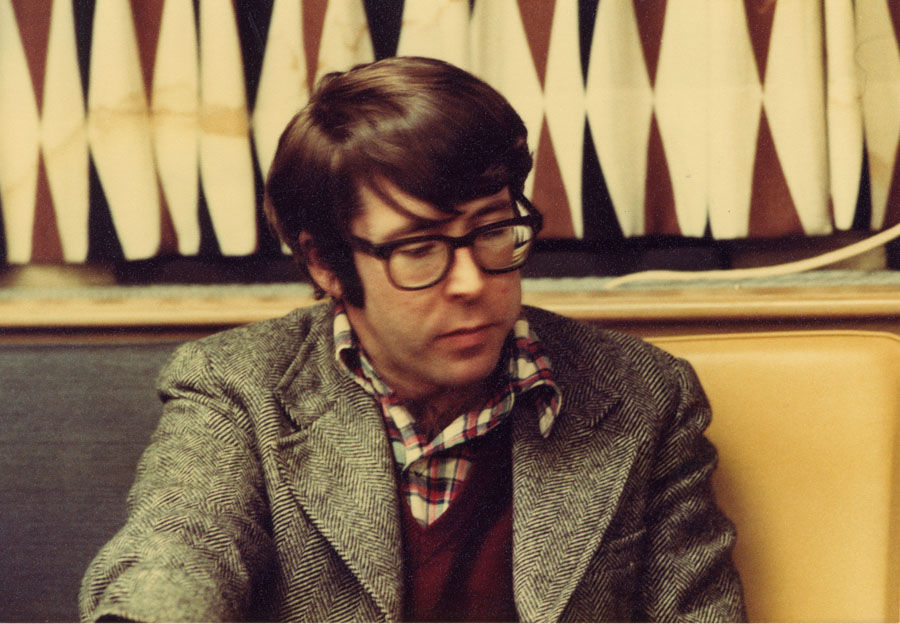
Michael Aschbacher is shown at Indiana University in Bloomington in February of 1980, the year he won the American Mathematical Society’s Cole Prize in Algebra for his work in finite group theory. Aschbacher, who was and is professor of mathematics at the California Institute of Technology (Caltech), won both the AMS Steele Prize for Mathematical Exposition and the Wolf Prize in 2012.
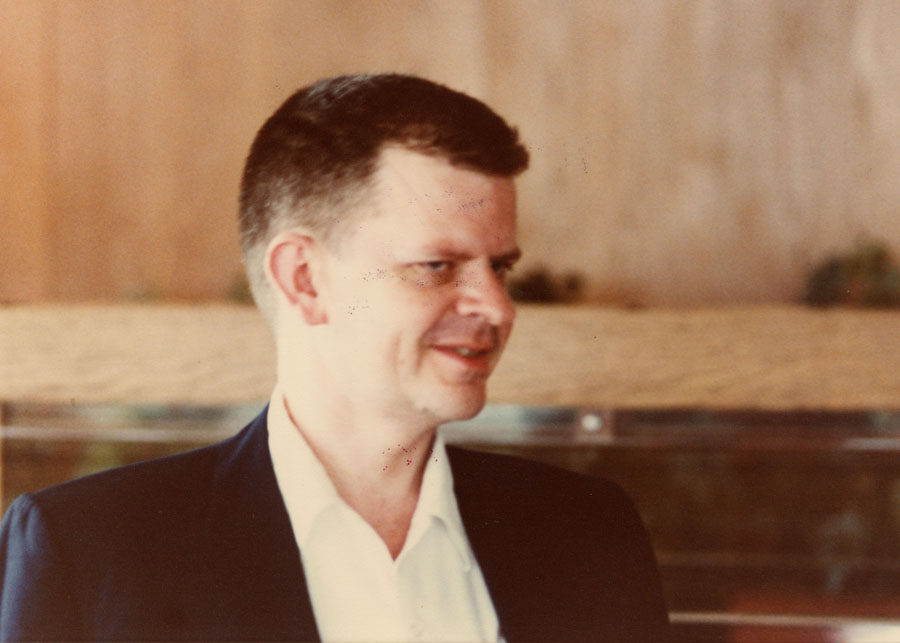
Halmos and Richard (Dick) Askey (1933–2019) "met in the middle" in Evanston, Illinois, at least twice during the early 1980s. Halmos was a faculty member at Indiana University, Bloomington, from 1969 to 1985 and Askey has been a faculty member at the University of Wisconsin, Madison, since 1963 (professor emeritus since 2003). The photo of Askey at left was taken in May of 1980 in Evanston, perhaps during an AMS Sectional Meeting at Northwestern University.
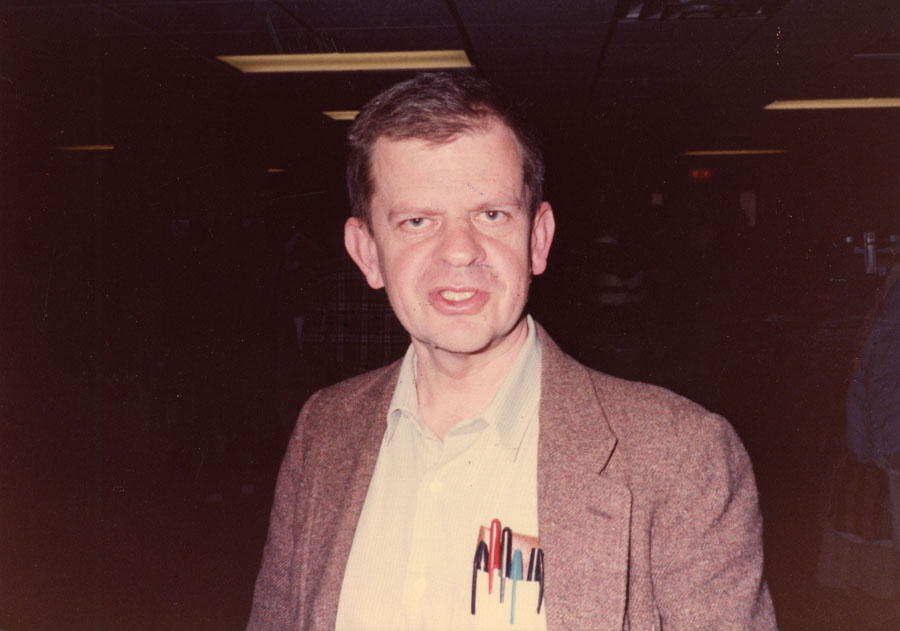
Halmos photographed Askey again in November of 1983 in Evanston. The occasion was almost certainly an AMS Sectional Meeting, as Halmos noted that he himself spoke during an AMS Special Session on Operator Theory in Classical Function Spaces. Askey has worked on orthogonal polynomials and special functions throughout his long career at the University of Wisconsin, Madison. He also has shown a strong interest in mathematics education. Askey reports that he first met Halmos "in the summer of 1961, when I went to the Univ. of Chicago for two years and Paul was still there for the summer but on his way to the Univ. of Michigan."
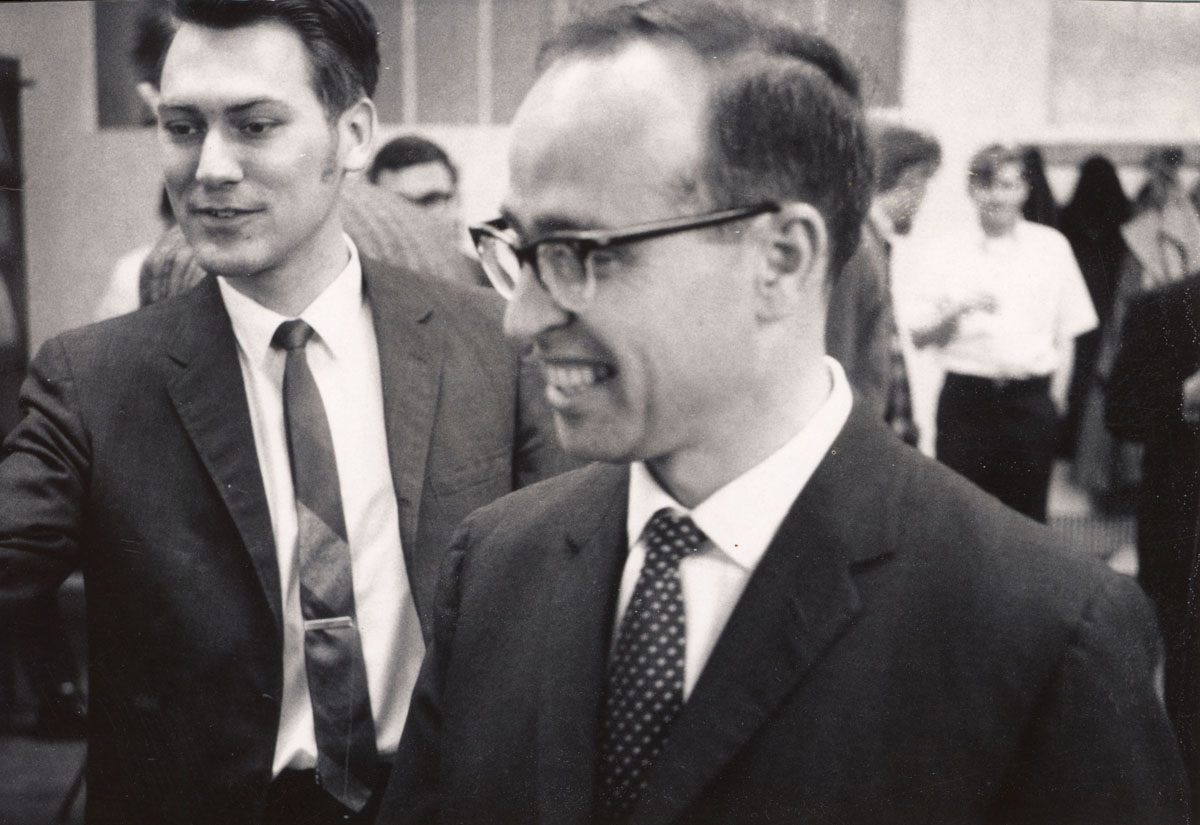
The photo above shows Lloyd Lininger (left) and Sir Michael Atiyah (1929–2019) in Ann Arbor, Michigan on April 3, 1968. Halmos was a faculty member at the University of Michigan from 1961 through 1968. Atiyah had won the Fields Medal in 1966 and published his book K-theory, which included discussion of the Atiyah-Singer Index Theorem, in 1967 (MacTutor History of Mathematics Archive). He was knighted in 1983. According to the Mathematics Genealogy Project, Lininger had earned his Ph.D. in 1964 at the University of Iowa with the dissertation “Some Results on Crumpled Cubes” under Steve Armentrout, whose photograph appears on page 1 of this collection. Ken Millett (University of California, Santa Barbara) suggests that the young man in the background facing the camera may be topologist William Thurston, who would have been in his first year of graduate school at the University of California, Berkeley. Bill Thurston would win the Fields Medal in 1982.
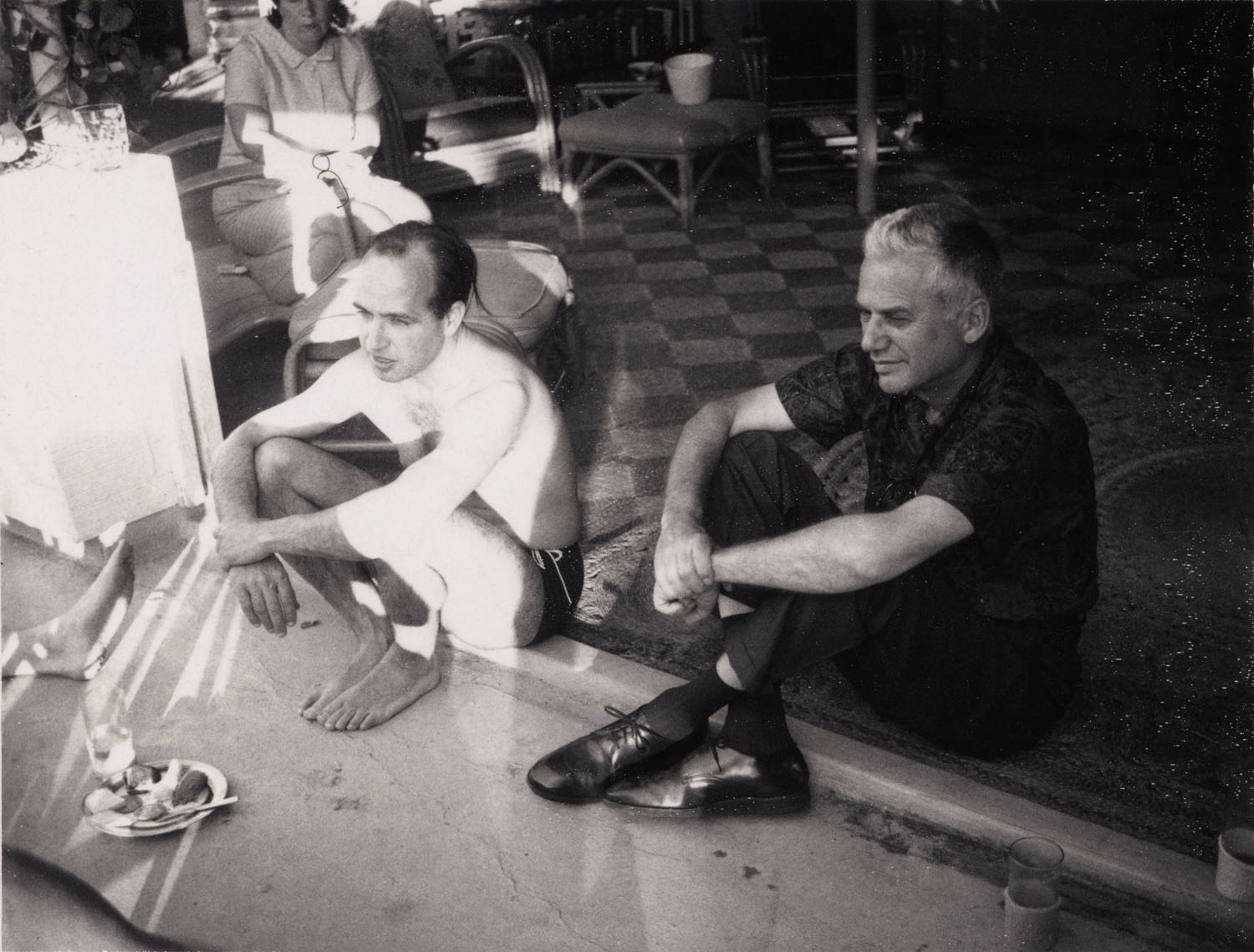
The photo above shows Atiyah (left) with Joseph Doob (right) in Honolulu, Hawaii on March 29, 1969. Halmos spent the 1968-1969 academic year at the University of Hawaii in Honolulu. In fact, he affixed an address label to the back of this photograph that gave his address as “3760 Diamond Head Circle, Honolulu, Hawaii” and this photo may well have been taken at his home. The woman at upper left in the photo is Joan Shields, wife of mathematician Allen Shields, who was a colleague of Halmos at the University of Michigan and whose visit to the University of Hawaii during the 1969 spring semester was described by Lawrence Wallen in "Walking and Talking with Halmos" (1991). Larry Wallen earned his Ph.D. from M.I.T. in 1967. He spent the 1967–68 academic year at the University of Michigan, where he worked with Halmos, and the remainder of his career at the University of Hawaii. Shields, who had earned his Ph.D. from M.I.T. in 1952 and joined the University of Michigan faculty in 1955, returned to Michigan after working with Halmos and Wallen in Hawaii in 1969. Halmos himself accepted a position at the University of Indiana in Bloomington, where he would remain until 1985. Probabilist Joseph Doob had been Halmos' Ph.D. advisor at University of Illinois, Urbana-Champaign. He also is pictured on page 1 and page 12 of this collection.
Page 1 also includes an introduction to this article and to the Paul R. Halmos Photograph Collection, as well as information about Paul R. Halmos. Watch for a new page featuring six new photographs each week during 2012.
Sources:
- American Mathematical Society (AMS) Prizes and Awards (Michael Aschbacher)
- Archives of American Mathematics, Dolph Briscoe Center for American History, University of Texas, Austin. Information for which a source is not cited or given in this list either appeared on the reverse side of the photograph or was obtained by AAM archivist Carol Mead from various sources during 2011-12.
- California Institute of Technology Department of Mathematics (Michael Aschbacher)
- Cornell University Department of Mathematics (William Thurston)
- MacTutor History of Mathematics Archive, St. Andrews University, Scotland (Richard Askey, Sir Michael Atiyah, William Thurston, Joseph Doob, Allen Shields, Wolf Prize)
- Mathematics Genealogy Project, North Dakota State University (all mathematicians)
- University of California, Berkeley, Department of Mathematics (William Arveson)
- University of Hawaii Department of Mathematics (Lawrence Wallen)
- University of Wisconsin, Madison, Department of Mathematics (Richard Askey)
- Wallen, Lawrence J., "Walking and Talking with Paul Halmos," in Paul Halmos: Celebrating 40 Years of Mathematics, edited by John H. Ewing and F. W. Gehring, Springer-Verlag, New York, 1991, pp. 136-138. Accessed via Google Books Feb. 10, 2012.
Who's That Mathematician? Paul R. Halmos Collection - Page 3
For more information about Paul R. Halmos (1916-2006) and about the Paul R. Halmos Photograph Collection, please see the introduction to this article on page 1. A new page featuring six photographs will be posted at the start of each week during 2012.

Maurice Auslander (1926-1994) at Indiana University, Bloomington, where Paul Halmos was a faculty member from 1969 to 1985, on Feb. 18, 1974. By this time, Auslander was working on representation theory of Artin algebras and we imagine that he may have given a talk on this topic at Indiana University. Auslander spent his career at Brandeis University in Waltham, Massachusetts, but frequently held visiting positions elsewhere (MacTutor History of Mathematics Archive).
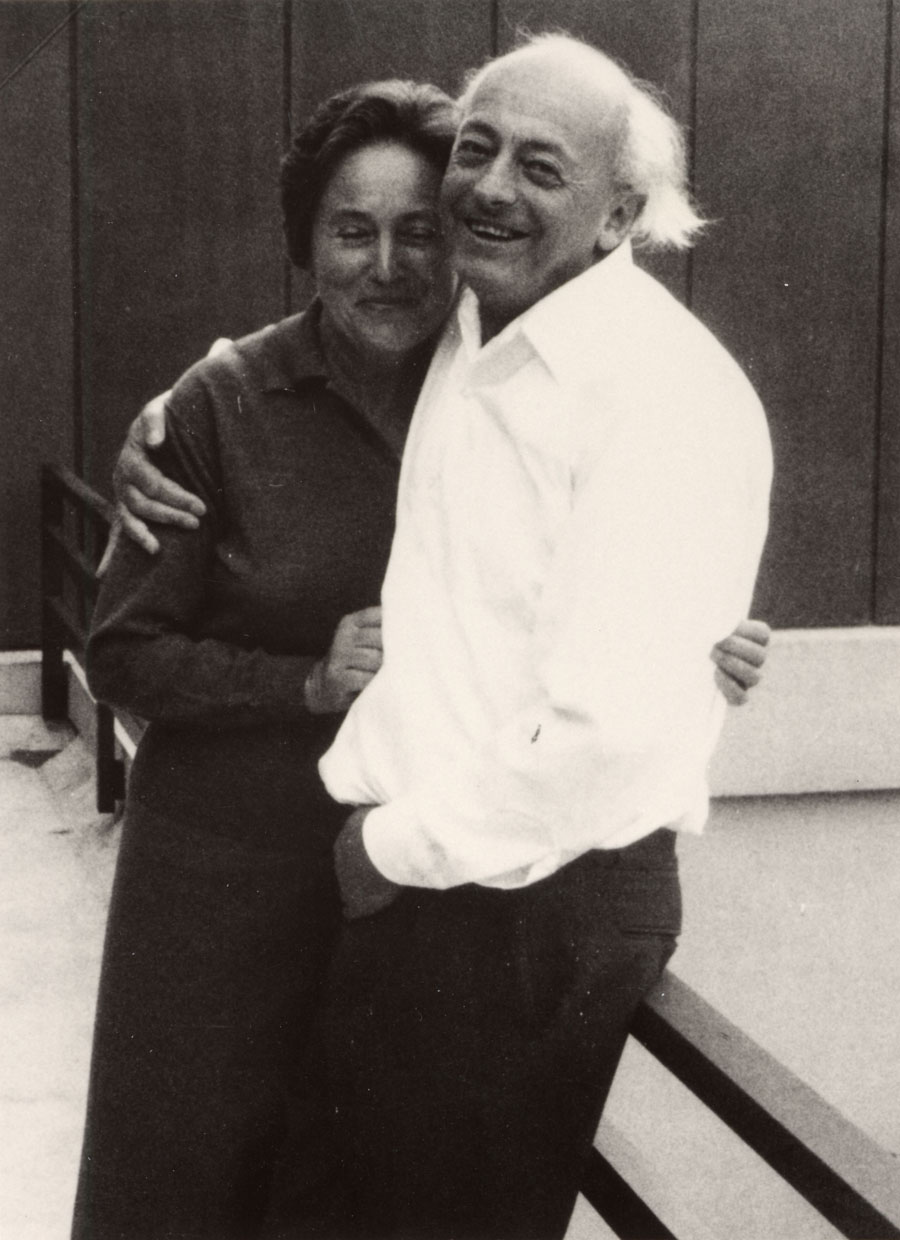
Reinhold Baer (1902-1979) and his wife, Marianne Baer, at a conference at the Oberwolfach Institute in Germany on July 22, 1968. Baer was a group theorist who advised at least 59 Ph.D. students at the University of Illinois, Urbana-Champaign, from 1938 to 1956 and at Goethe Universität Frankfurt am Main from 1956 onward (MacTutor History of Mathematics Archive, Mathematics Genealogy Project). He and Halmos would have met in 1938, the year Halmos earned his Ph.D. at the University of Illinois and the year Baer joined the faculty there. They would have overlapped because Halmos remained at Illinois as an instructor during 1938-1939 (MacTutor History of Mathematics).
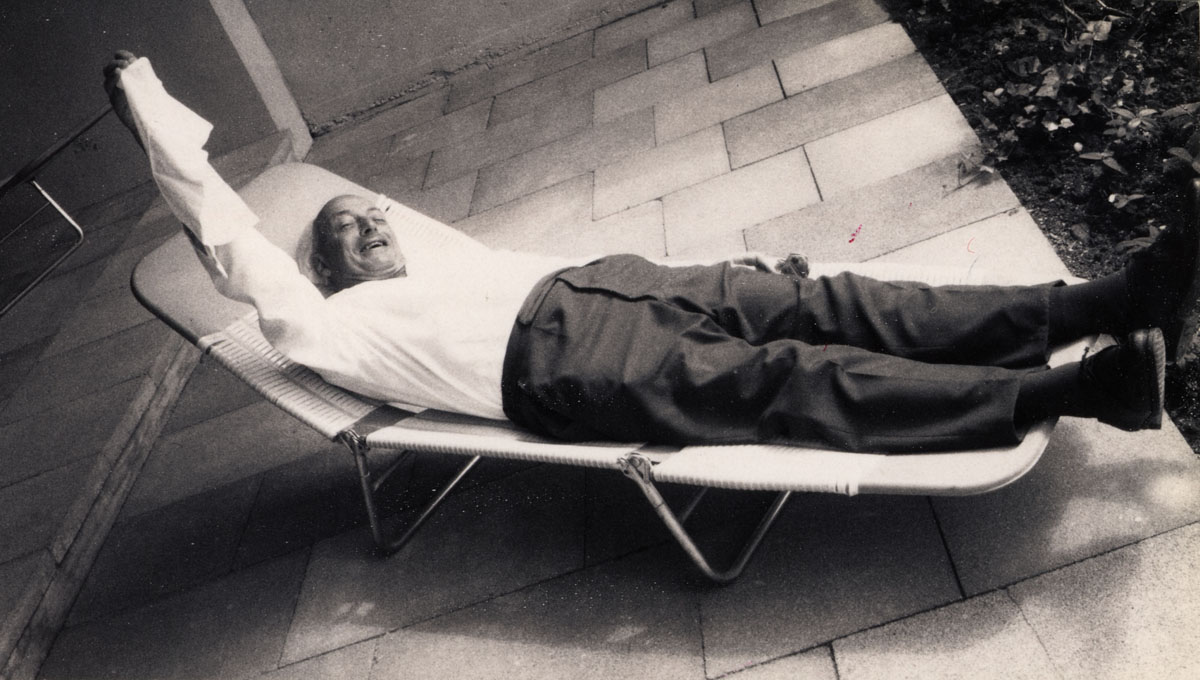
Reinhold Baer (1902-1979) seems to have been interrupted by the photographer while reading at the same conference at the Oberwolfach Institute in Germany on July 22, 1968.
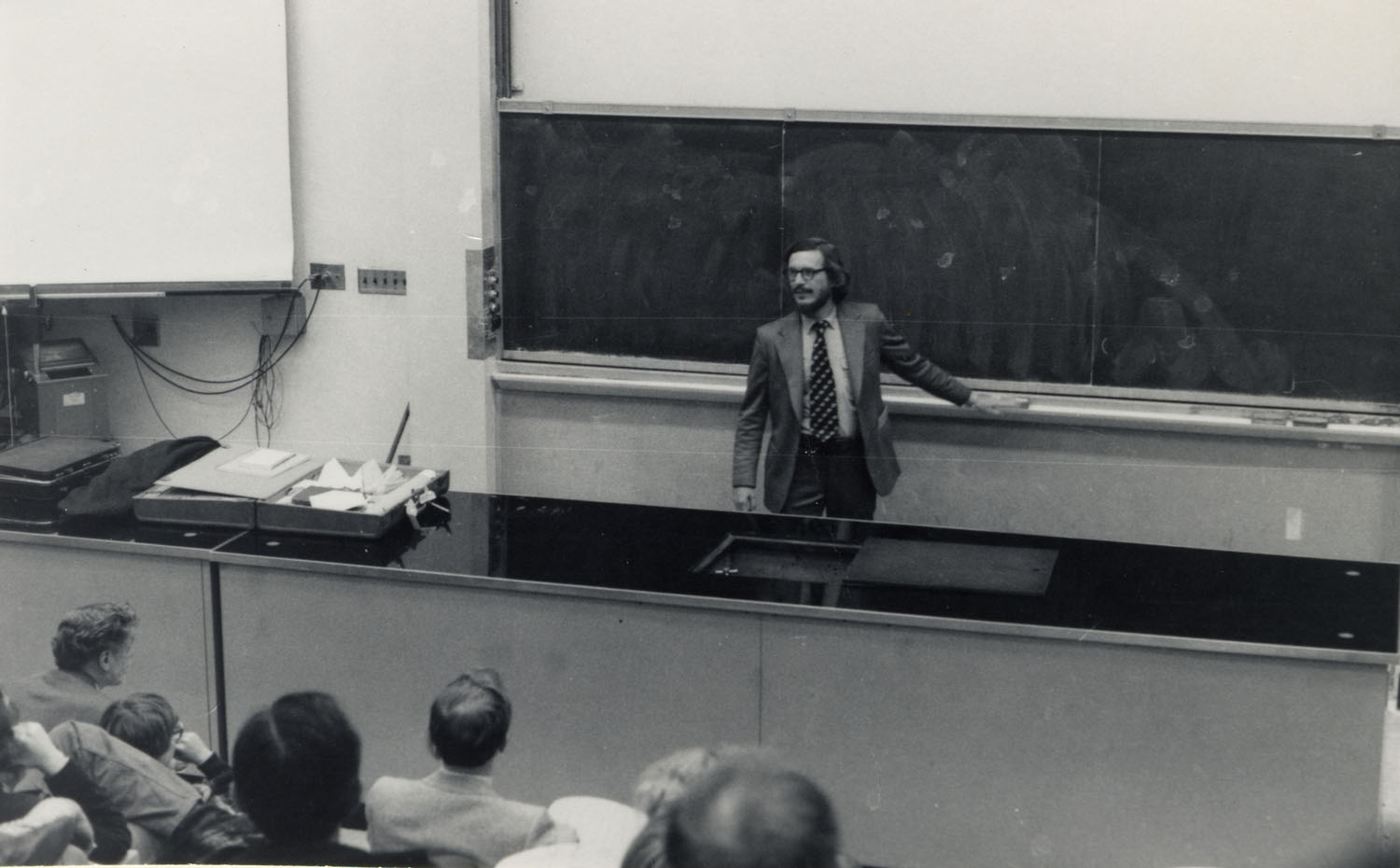
Thomas Banchoff lectures at Indiana University in Bloomington, Indiana, on Oct. 27, 1975. Banchoff has been a faculty member at Brown University in Providence, Rhode Island, since 1967, where he has specialized in geometry and in computer graphics to help visualize geometry (MAA Presidents). Indeed, he may be best known for his work on visualizing the fourth dimension. Banchoff served as president of the Mathematical Association of America (MAA) during 1999-2000 (MAA Presidents).
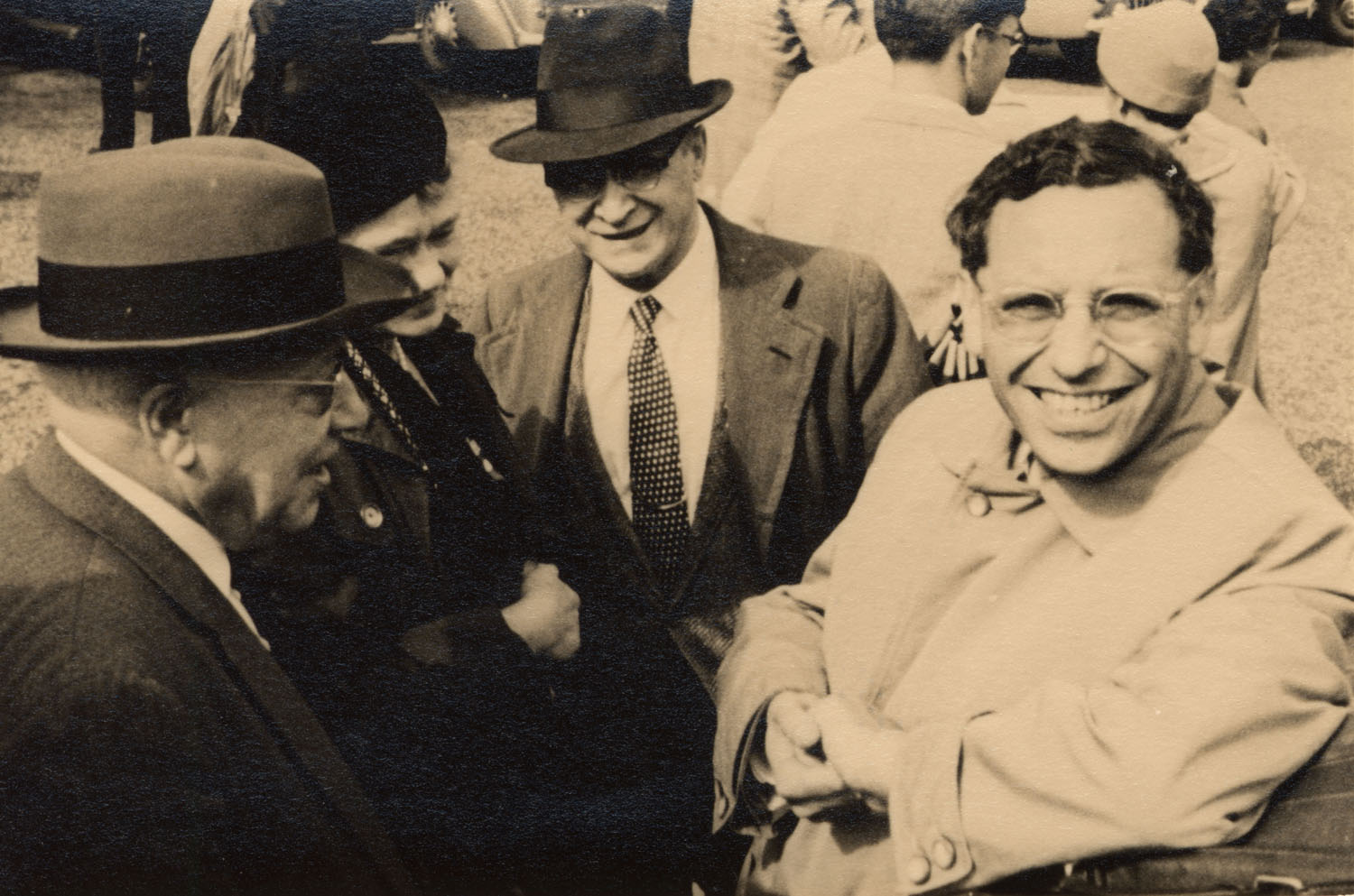
From left to right, Charles Moore, Fannie Barnett, Isaac Barnett, and Paul Erdös chat in August or September of 1958 at ... the International Congress of Mathematicians in Edinburgh, Scotland? Charles N. Moore (1882-1967) earned his Ph.D. in analysis under Maxime Bôcher at Harvard in 1908 and had at least 17 Ph.D. students of his own during a career at the University of Cincinnati (Ohio Masters of Mathematics, Mathematics Genealogy Project). Isaac A. Barnett (1894-1974), earned his Ph.D. in differential equations under Gilbert Bliss at the University of Chicago in 1918, and, like Moore, was a faculty member at the University of Cincinnati. The University of Cincinnati later established a lecture series in number theory in honor of Isaac and Fannie Barnett (Ohio Masters of Mathematics). Paul Erdös (1913-1996), the famous itinerant polymath, already was well known for traveling all over the world posing problems and solving them with many and varied collaborators. His 509 co-authors have "Erdös number" 1 (Wolfram MathWorld). In 1958, Halmos was a faculty member at the University of Chicago. However, Erdös had left the U.S. in 1954 or shortly thereafter and did not return until 1963 (MacTutor History of Mathematics); it seems likely that both Halmos and Erdös would have attended the 1958 ICM. There are two more photos of Erdös on page 14 of this collection.
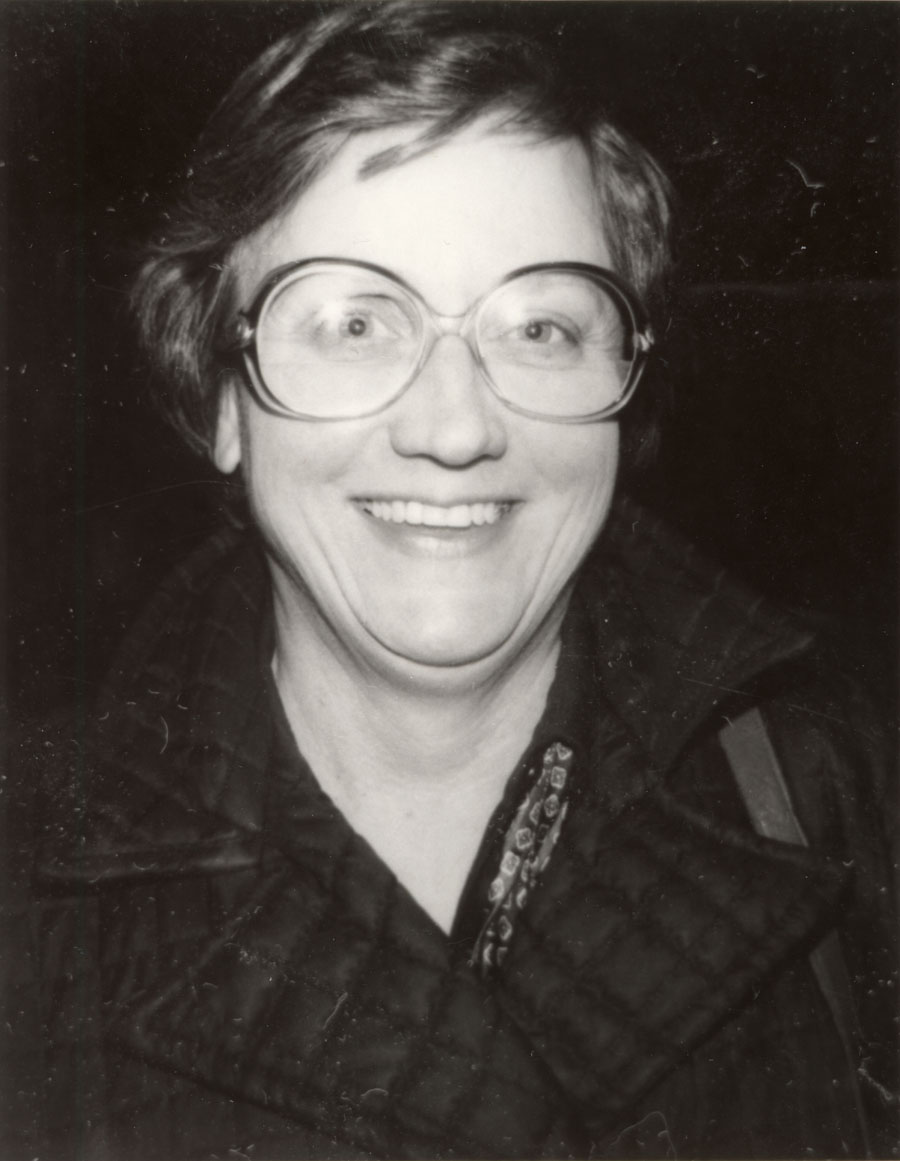
Lida Barrett was photographed by Halmos during the winter of 1981. Barrett moved from her position as mathematics department chair at the University of Tennessee, where she had worked in topology and applied mathematics, to an administrative position at Northern Illinois University in 1980, and this photo may have been taken in Illinois or Indiana, where Halmos was based. Barrett would continue her administrative career at Mississippi State University and the National Science Foundation and her teaching career at the United States Military Academy, West Point, New York. She has served the MAA throughout her career, including leading the MAA as president in 1989-1990 (MAA Presidents).
Barrett believes she and her husband, mathematician John H. Barrett, may have first met Halmos during 1959-60 while they were "on visiting appointments at the University of Wisconsin and Halmos was at the University of Chicago."
For an introduction to this article and to the Paul R. Halmos Photograph Collection, please see page 1. Watch for a new page featuring six new photographs each week during 2012.
Sources:
- Archives of American Mathematics, Dolph Briscoe Center for American History, University of Texas, Austin. Information for which a source is neither cited nor given in this list either appeared on the reverse side of the photograph or was obtained by AAM archivist Carol Mead from various sources during 2011-12.
- MacTutor History of Mathematics Archive, St. Andrews University, Scotland (Maurice Auslander, Reinhold Baer, Gilbert Bliss, Maxime Bôcher, Paul Erdös)
- Mathematical Association of America Presidents (Thomas Banchoff, Lida Barrett)
- Mathematics Genealogy Project, North Dakota State University (all mathematicians)
- Ohio Masters of Mathematics, MAA Ohio Section (originally, Bowling Green State University) (Charles Moore, Fannie Barnett, Isaac Barnett)
- Wolfram MathWorld (Erdös numbers)
Who's That Mathematician? Paul R. Halmos Collection - Page 4
For more information about Paul R. Halmos (1916-2006) and about the Paul R. Halmos Photograph Collection, please see the introduction to this article on page 1. A new page featuring six photographs will be posted at the start of each week during 2012.
José Barría works at the chalkboard under the inquisitive eye of Paul Halmos in May of 1973. Barria was a doctoral student of Halmos, earning his Ph.D. from Indiana University in 1974 (Mathematics Genealogy Project).
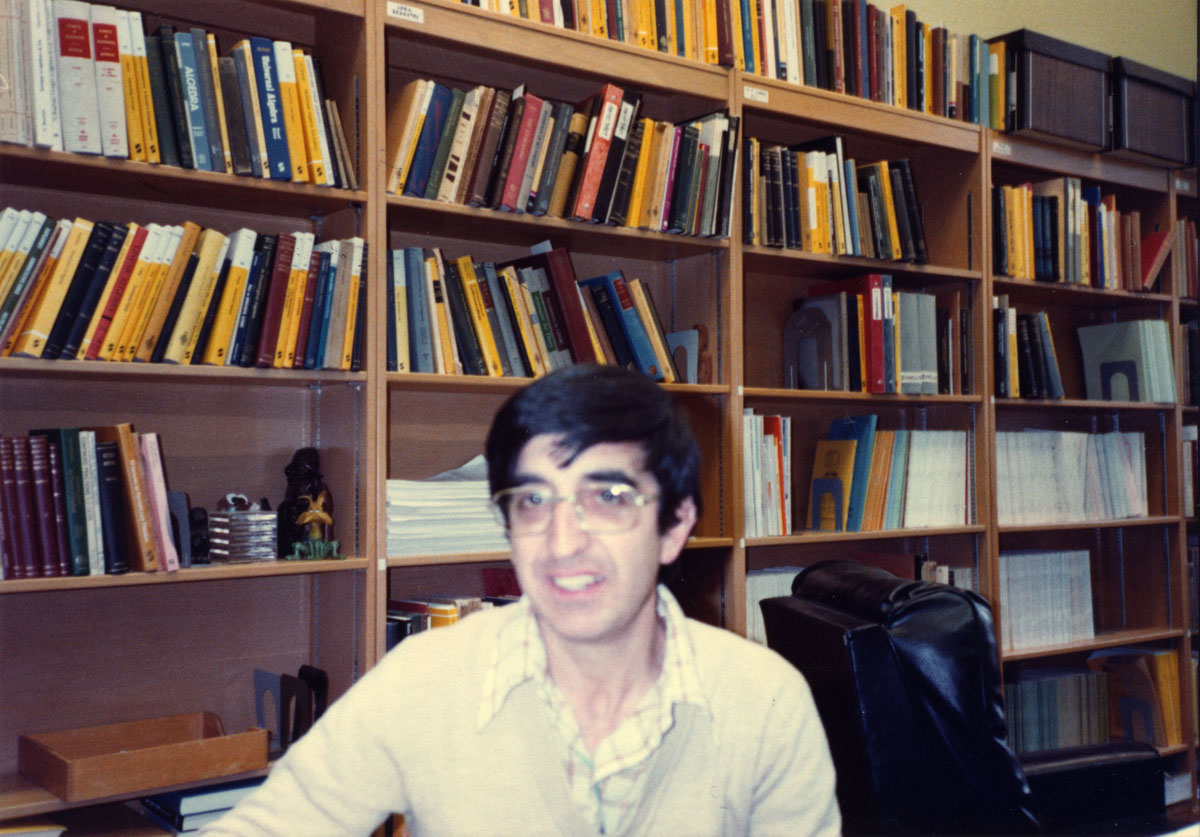
Halmos photographed José Barría again nearly ten years later, in January of 1983. Barría became a mathematics professor at Santa Clara University, where Halmos himself joined the faculty in 1985 and where Barría continues to publish research papers on operator theory. Barría and Halmos published their third joint paper in 1990 while they were colleagues at SCU (MathSciNet).

Below, Robert Bartle asks Marshall Stone to sign his picture in the book of photographs of mathematicians that quickly became known as the "Halmos Picture Book." Its title was I Have a Photographic Memory and it was published by the American Mathematical Society (AMS) in 1987. This photograph was taken in June of 1988 at Hofstra University in Hempstead, New York.
Robert (Bob) Bartle (1927-2003) earned his Ph.D. at the University of Chicago in 1951, where he would have met both Halmos, who was a faculty member there from 1946 to 1961, and Stone, who was mathematics department chair from 1946 to 1968. Bartle was a faculty member at the University of Illinois, Urbana-Champaign, from 1955 to 1990, where he wrote well-known textbooks, including The Elements of Real Analysis (1964) and, with colleague Donald Sherbert, Introduction to Real Analysis (1982). He also served for six years, 1976-78 and 1986-90, as executive editor of Mathematical Reviews (MR) in Ann Arbor, Michigan. According to MR colleague Jane Kister, who herself served as MR executive editor from 1998 to 2004, Bartle was a universally loved editor who oversaw MR's first steps toward computerization, tremendous growth in the database, and revision of the Mathematics Subject Classification (MSC). (Source: AMS Notices, Feb. 2004, "Inside the MAA: Robert G. Bartle (1927-2003)," by Jane E. Kister and Donald R. Sherbert.)
Marshall Stone (1903-1989) is best known for the Stone-Weierstrass Theorem and for his leadership of the University of Chicago Mathematics Department from 1946 to 1968. Halmos was a faculty member at Chicago from 1946 to 1961, so he and Stone would have known each other well. Stone chaired the Chicago Mathematics Department only from 1946 to 1952, at which point Saunders Mac Lane took over as chair. However, he assembled such an impressive faculty and attracted and developed such excellent students during that short time that his tenure as chair became known reverently as the "Stone Age." He retired from the University of Chicago in 1968 and accepted a position at the University of Massachusetts, which he held until 1980. Stone had earned his Ph.D. in differential equations from Harvard University in 1926 under advisor George D. Birkhoff, and, after spending 1925-27 at Columbia University, he joined the mathematics faculty at Harvard, where he would remain (except for 1931-33 at Yale University and war work from 1942 to 1945) until 1946 when the University of Chicago lured him away (MacTutor History of Mathematics Archive). He was AMS president in 1943-1944 (AMS Presidents).
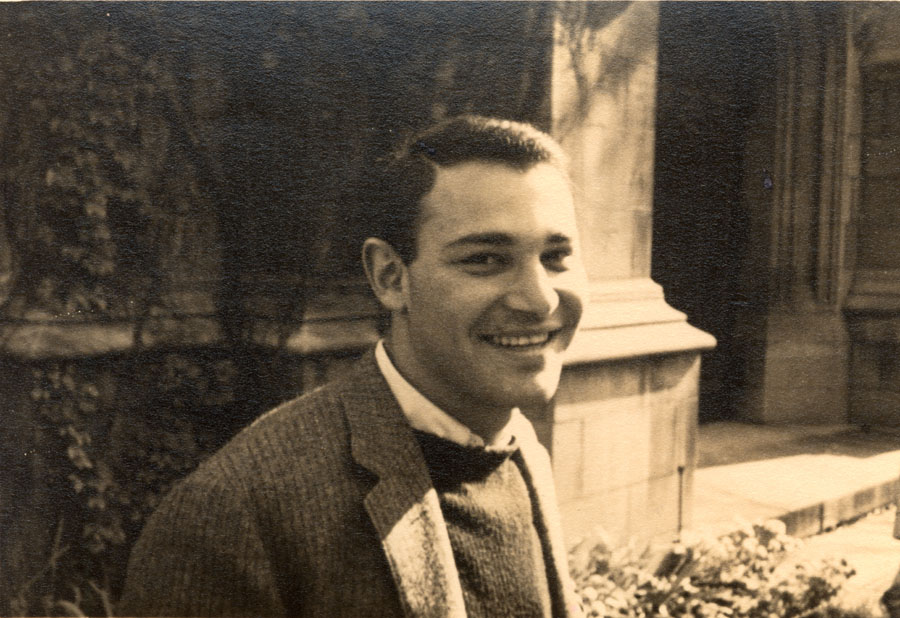
Halmos first photographed Hyman Bass in autumn of 1958, probably at the University of Chicago, where Halmos was a faculty member from 1946 to 1961 and where Bass would complete his Ph.D. in commutative algebra under Irving Kaplansky in 1959. Halmos had written a paper introducing monadic algebras in 1956, and Bass's first paper in 1958 would be on this topic (MacTutor History of Mathematics).
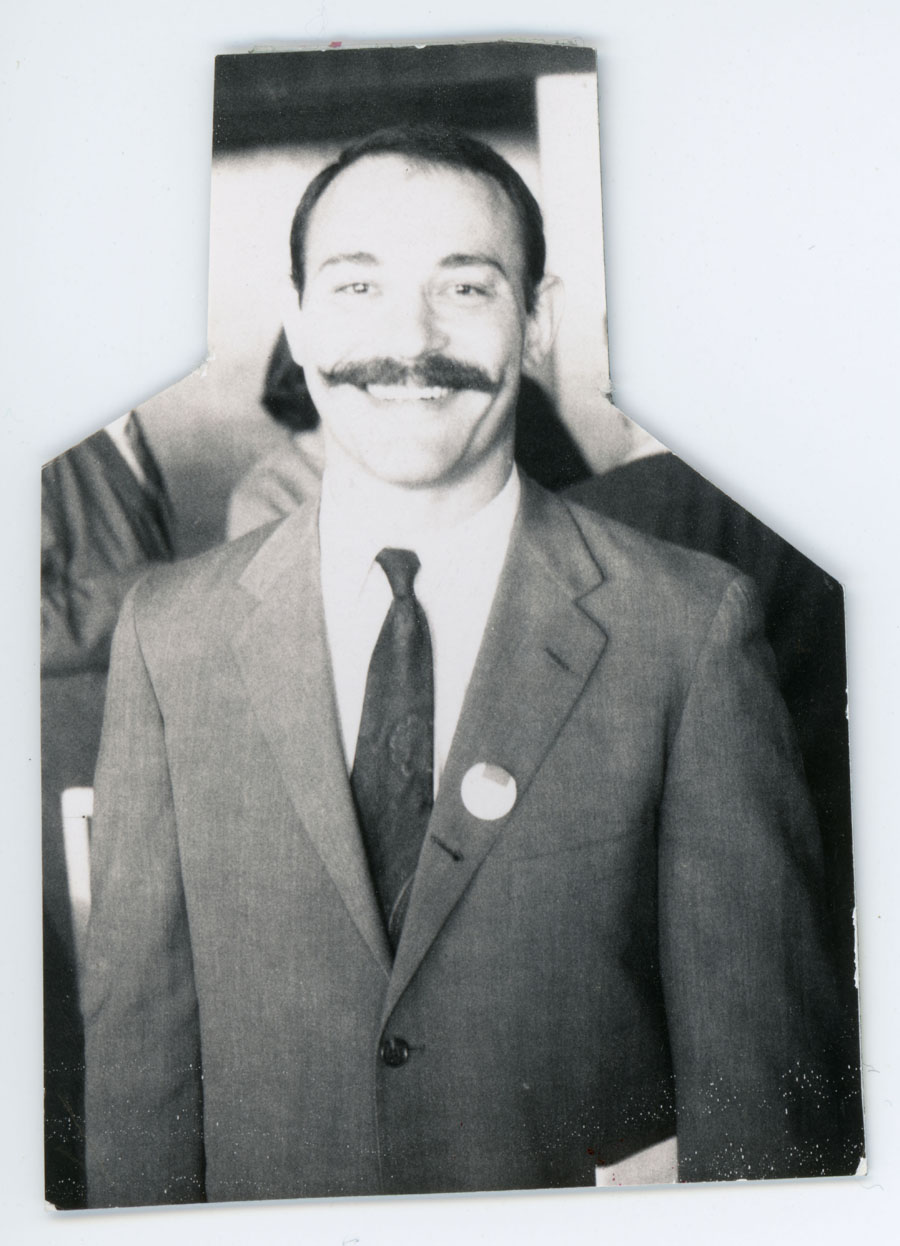
Halmos photographed Hyman (Hy) Bass again in August of 1968 at a Joint Summer Meeting of the AMS and MAA in Madison, Wisconsin. Bass was a faculty member at Columbia University from 1959 to 1999, where he advised at least 24 Ph.D. theses (Mathematics Genealogy Project). During the 1990s, he turned his attention to mathematics education, eventually joining the University of Michigan faculty as Roger Lyndon Collegiate Professor of Mathematics and Mathematics Education in 1999. He is now Samuel Eilenberg Distinguished University Professor of Mathematics and Professor in the School of Education as well. He was AMS president in 2001-2002 (AMS Presidents).
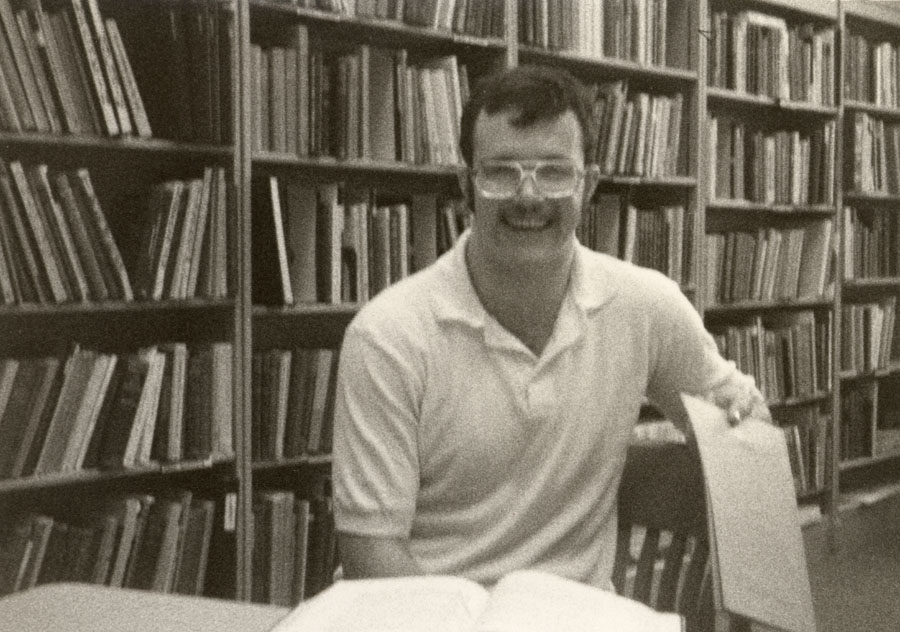
Joseph Bastian, a Ph.D. student of Halmos at Indiana University, is pictured in May of 1972 in Bloomington, Indiana. Bastian earned the Ph.D. in 1973 with the dissertation, "Decompositions of Weighted Translation Operators" (Mathematics Genealogy Project). After five years in academia, Bastian did a summer consulting project for the U.S. Air Force that introduced him to digital signal processing. He reports that he never returned to academia, instead pursuing a career in modeling, simulation, and digital signal processing for electro-optical sensors with a private aerospace firm with headquarters in Boulder, Colorado, where he retired in June of 2011.
For an introduction to this article and to the Paul R. Halmos Photograph Collection, please see page 1. Watch for a new page featuring six new photographs each week during 2012.
Sources:
- American Mathematical Society (AMS) MathSciNet (all mathematicians)
- AMS Notices, February 2004, "Inside the MAA: Robert G. Bartle (1927-2003)," by Jane E. Kister and Donald R. Sherbert (Robert Bartle)
- AMS Presidents (Hyman Bass, Marshall Stone)
- Archives of American Mathematics, Dolph Briscoe Center for American History, University of Texas, Austin. Information for which a source is neither cited nor given in this list either appeared on the reverse side of the photograph or was obtained by AAM archivist Carol Mead from various sources during 2011-12.
- MacTutor History of Mathematics Archive, St. Andrews University, Scotland (Hyman Bass, Samuel Eilenberg, Marshall Stone)
- Mathematics Genealogy Project, North Dakota State University (all mathematicians)
- University of Illinois Department of Mathematics (Donald Sherbert)
- University of Michigan Department of Mathematics (Hyman Bass)
- University of Michigan School of Education (Hyman Bass)
Who's That Mathematician? Paul R. Halmos Collection - Page 5
For more information about Paul R. Halmos (1916-2006) and about the Paul R. Halmos Photograph Collection, please see the introduction to this article on page 1. A new page featuring six photographs will be posted at the start of each week during 2012.
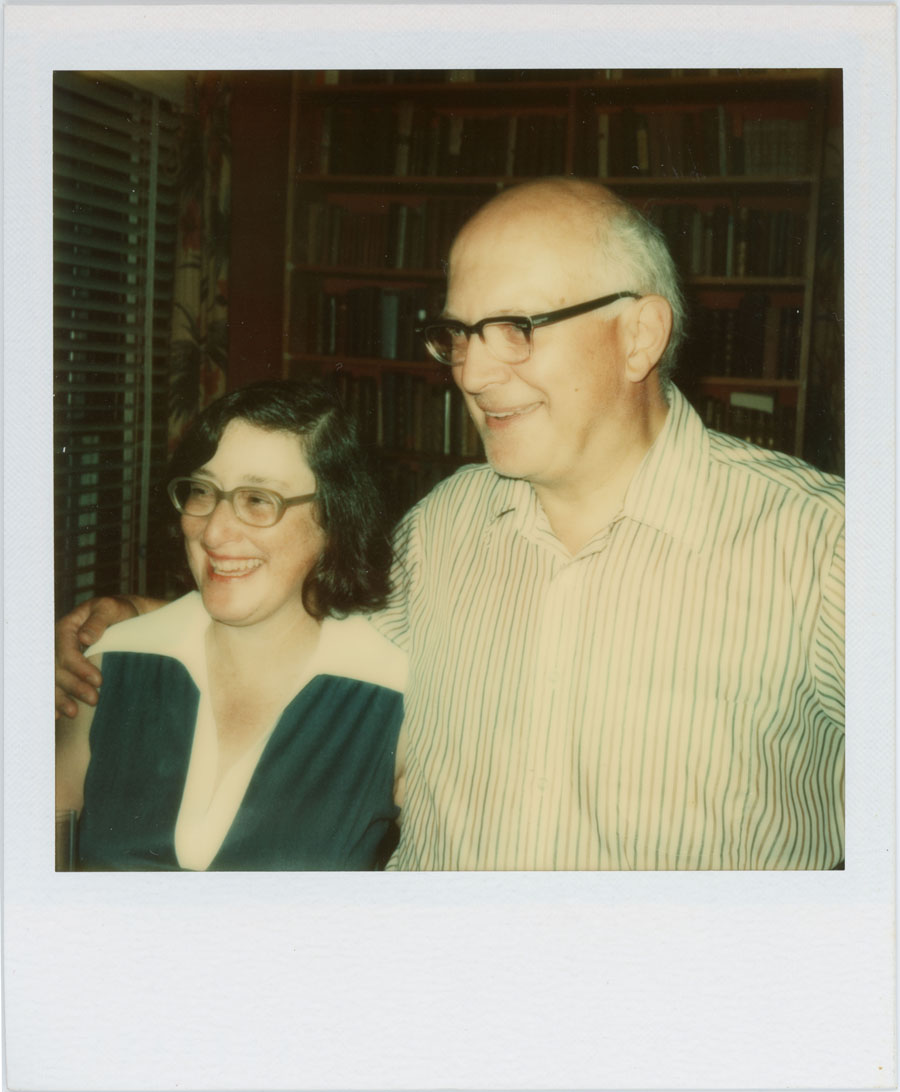
Paul Halmos photographed Felice and Paul Bateman on July 12, 1974, in Urbana, Illinois. Both Felice and Paul Bateman were mathematics faculty members at the University of Illinois, Urbana-Champaign, where they were emeriti at the time this article first appeared. In 1974, Halmos was a faculty member at Indiana University, but he had earned his Ph.D. at University of Illinois in 1938 and his many friends there included his thesis advisor Joseph Doob (1910-2004). Number theorist Paul Bateman (1919-2012) earned his Ph.D. from the University of Pennsylvania in 1946 with the thesis "On the representation of a number as a sum of three squares," written under Hans Rademacher, and went on to advise 20 Ph.D. students of his own at the University of Illinois (Mathematics Genealogy Project). Felice Davidson Bateman (1922-2013) graduated from Smith College in 1943 and earned her Ph.D. in algebra from the University of Michigan in 1950 (Smith College, Mathematics Genealogy Project). She and Paul Bateman were at the Institute for Advanced Study during 1949-1950 (IAS).
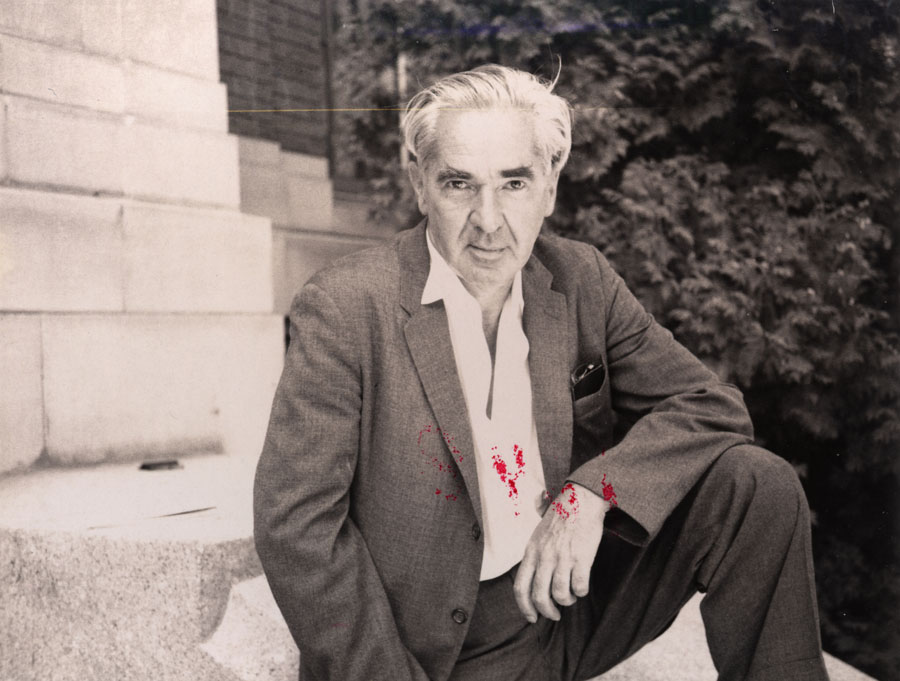
Edward Begle (1914-1978) was photographed on August 27, 1964, in Amherst, Massachusetts perhaps during a Joint Summer Meeting there. Begle earned his Ph.D. in topology from Princeton in 1940 under Solomon Lefschetz (Mathematics Genealogy Project). He then spent nearly 20 years at Yale University (1942-1961), where his focus gradually shifted from topology to mathematics education. From 1961, he was both Professor of Mathematics and Professor of Education at Stanford University and a leader in the mathematics education community (MacTutor History of Mathematics Archive). It is possible that he and Paul Halmos first met while Begle was a Ph.D. candidate or an instructor (1940-41) at Princeton and Halmos was first at the Institute for Advanced Study (1939-1941, IAS).
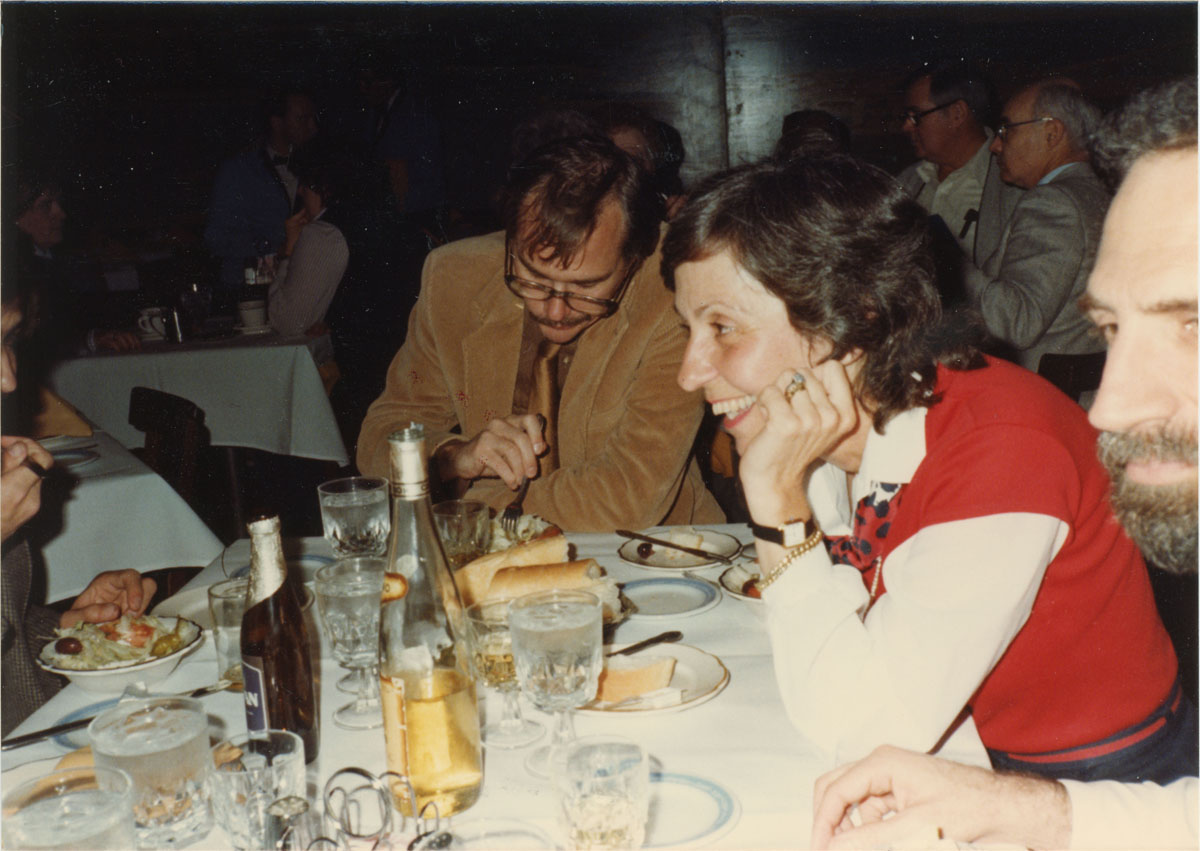
William Johnson, Alexandra Bellow, and Haskell Rosenthal enjoy a meal at the AMS Sectional Meeting at Northwestern University in Evanston, Illinois, in November of 1983. (For a photograph of Richard Askey at the same conference, see page 2.) Johnson gave two talks at this conference, one in a session on operator theory in classical function spaces in which Paul Halmos also spoke. He earned his Ph.D. from Iowa State University in 1969, and has spent most of his career at Ohio State University and Texas A&M University, where he is Distinguished Professor and Owen Chair of Mathematics. Bellow earned her Ph.D. at Yale University in 1959 with a dissertation on “Ergodic theory of random series,” written under Shizuo Kakutani. She spent most of her career at Northwestern University (Mathematics Genealogy Project), where she is now emeritus. She also appears in a photograph on page 9 of this collection. Rosenthal earned his Ph.D. at Stanford in 1965, and taught at the University of California, Berkeley, during the 1970s and at the University of Texas, Austin, from the 1980s onward. He recently retired from UT Austin as the John T. Stuart III Centennial Professor.
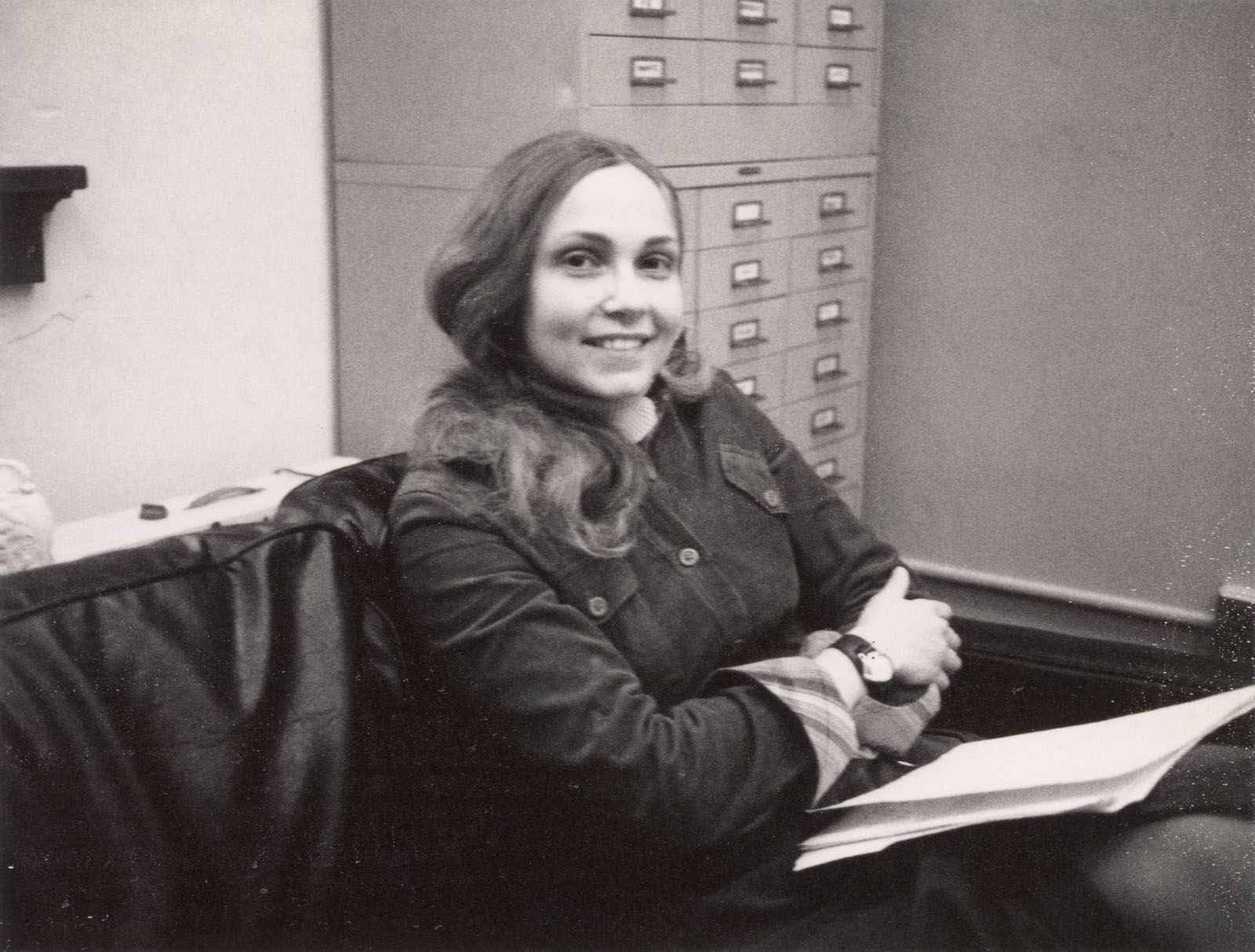
Georgia Benkart during a visit to Indiana University, where Halmos was then a faculty member, on February 22, 1979. Benkart earned her Ph.D. in algebra from Yale University in 1974 under advisor Nathan Jacobson. She spent most of her career at the University of Wisconsin, Madison, where she advised 21 Ph.D. theses (Mathematics Genealogy Project) and retired as E. B. Van Vleck Professor of Mathematics in 2006. She served as president of the Association for Women in Mathematics (AWM) from 2009 to 2011, helping direct AWM's 40th anniversary celebrations in 2011. Benkart currently serves as AMS Associate Secretary for the Central Section.
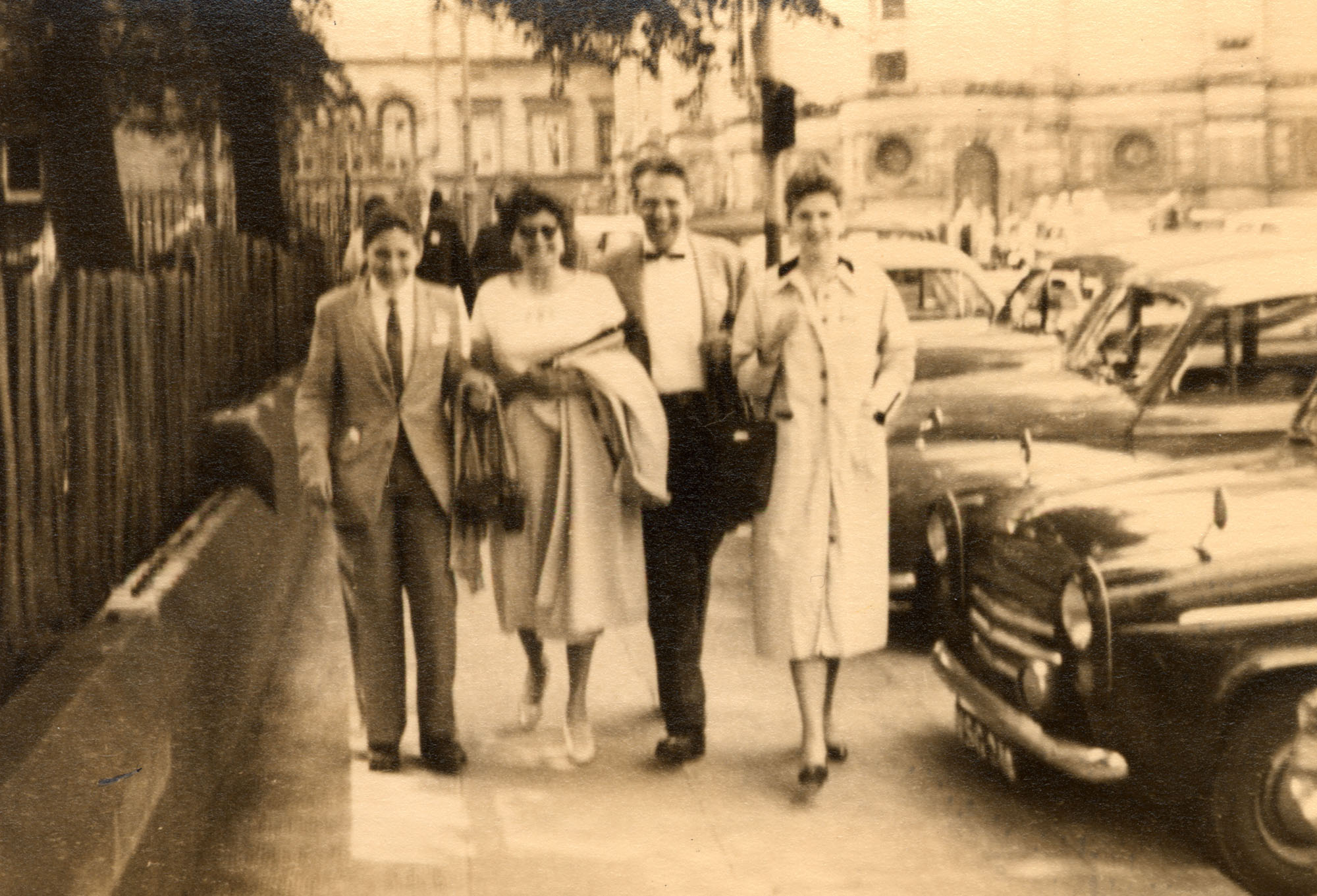
Halmos photographed Lipman Bers (1919-2004), second from right, and his family in 1958 in Edinburgh, Scotland, where Halmos and Bers were attending the St. Andrews Colloquium. Although Halmos made no such notation, we assume the three people with whom Bers is walking are his son Victor, wife Mary, and daughter Ruth (AMS Notices: "Remembering Lipman Bers").

Halmos snapped "Lipa" Bers again on May 13, 1974, at the AMS Hilbert Problems Conference, held in DeKalb, Illinois. Bers served as president of the AMS in 1975-1976 (AMS Presidents). According to the Mathematics Genealogy Project, he advised 53 Ph.D. students from 1945 to 1988, most of them at New York University's Courant Institute or at Columbia University, the two institutions at which he spent most of his career. He and Halmos may have first met in 1945 at Syracuse University, where Halmos was a faculty member from 1942 to 1946 and Bers a faculty member from 1945 to 1949. In these early years, Bers worked mainly in fluid dynamics, but in about 1950 switched to quasiconformal mappings (MacTutor History of Mathematics Archive).
For an introduction to this article and to the Paul R. Halmos Photograph Collection, please see page 1. Watch for a new page featuring six new photographs each week during 2012.
Sources:
- American Mathematical Society (AMS) Notices, January 1995, "Remembering Lipman Bers," by William Abikoff, Carol Corillon, Jane Gilman, Irwin Kra, and Tilla Weinstein
- AMS Presidents (Lipman Bers)
- Archives of American Mathematics, Dolph Briscoe Center for American History, University of Texas, Austin. Information for which a source is neither cited nor given in this list either appeared on the reverse side of the photograph or was obtained by AAM archivist Carol Mead from various sources during 2011-12.
- Association for Women in Mathematics (Alexandra Bellow, Georgia Benkart)
- Institute for Advanced Study Past Members (Felice Bateman, Paul Bateman, Georgia Benkart, Lipman Bers, Paul Halmos)
- MacTutor History of Mathematics Archive, St. Andrews University, Scotland (Edward Begle, Lipman Bers, Joseph Doob, Paul Halmos, Nathan Jacobson, Shizuo Kakutani, Solomon Lefschetz, Hans Rademacher)
- Mathematics Genealogy Project, North Dakota State University (all mathematicians)
- Northwestern University Department of Mathematics (Alexandra Bellow)
- Smith College Mathematicians (Felice Bateman)
- Texas A&M University Department of Mathematics (William Johnson)
- University of Illinois, In Memoriam: Felice Bateman
- University of Illinois, In Memoriam: Paul T. Bateman
- University of Texas, Austin, Department of Mathematics (Haskell Rosenthal)
- University of Wisconsin Department of Mathematics (Georgia Benkart)
Who's That Mathematician? Paul R. Halmos Collection - Page 6
For more information about Paul R. Halmos (1916-2006) and about the Paul R. Halmos Photograph Collection, please see the introduction to this article on page 1. A new page featuring six photographs will be posted at the start of each week during 2012.
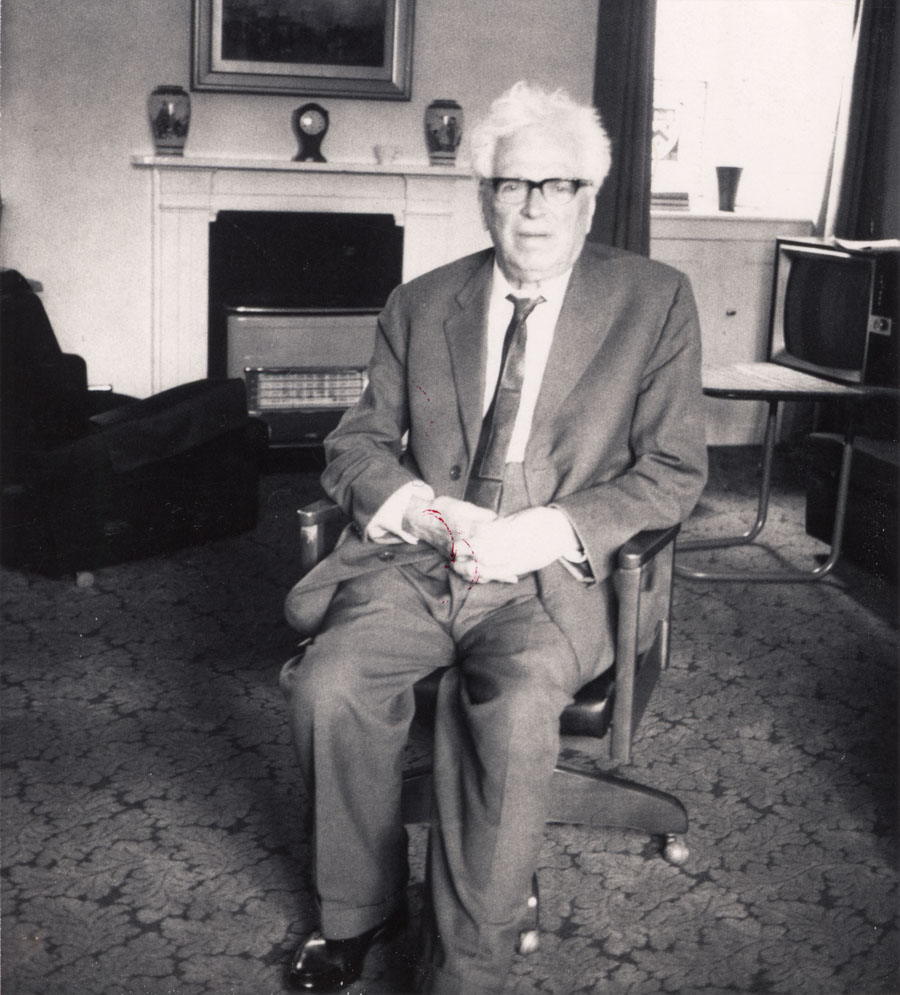
Abram Besicovitch (1891-1970) is pictured in his office at Trinity College, Cambridge, England (or possibilty his home in Cambridge) on June 8, 1968. A student of A. A. Markov at the University of St. Petersburg, where he earned his degree in 1912, Besicovitch taught in Russia during the revolutionary years. He finally escaped to Copenhagen in 1924, and eventually settled in England, where he was a functional analyst at Cambridge from 1927 onward. Besicovitch was a member of the Institute for Advanced Study in Princeton in 1954-55 and also visited various U.S. universities from 1958 to 1966. It is possible that his visits included the University of Chicago or the University of Michigan, where Paul Halmos taught during this period (he moved from Chicago to Michigan in 1961), and that the two became acquainted then. They certainly would have been interested in one another's mathematical work.
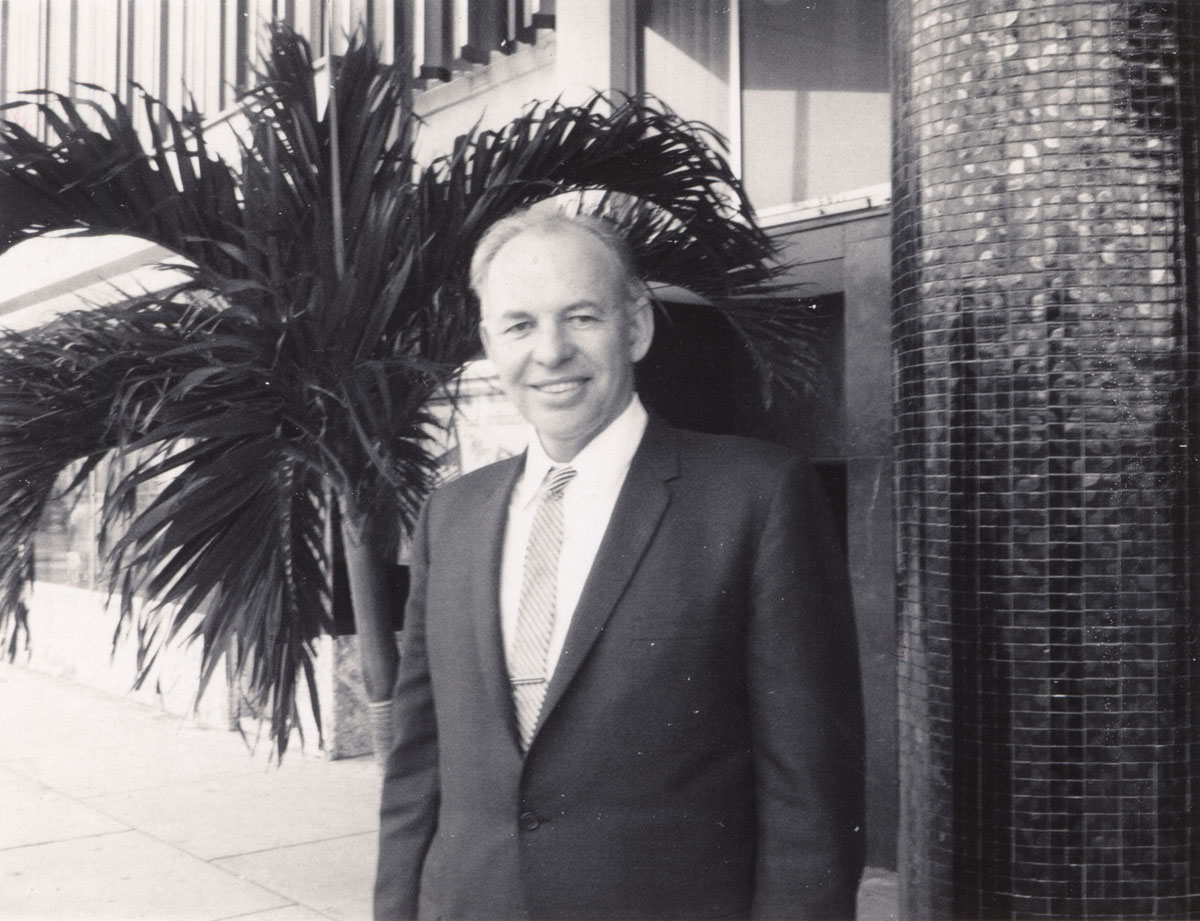
Halmos photographed R. H. Bing (1914-1986) in Miami, Florida on April 3, 1966. Bing was a Texas high school teacher turned R. L. Moore-trained topologist. He spent most of his career at the universities of Wisconsin and Texas. He and Halmos may have met at the Institute for Advanced Study in Princeton, where both were members during 1957-58. Bing served as president of the MAA in 1963-64 and as president of the AMS in 1977-78. In 1965-66 Halmos took a year's leave from the University of Michigan to teach at the University of Miami in Coral Gables, Florida. Two years later, the sun-seeking Halmos accepted a position at the University of Hawaii in Honolulu. In 1966, Bing was a professor at the University of Wisconsin; in 1973, he returned to the University of Texas, Austin, where he had earned his Ph.D. in 1945.
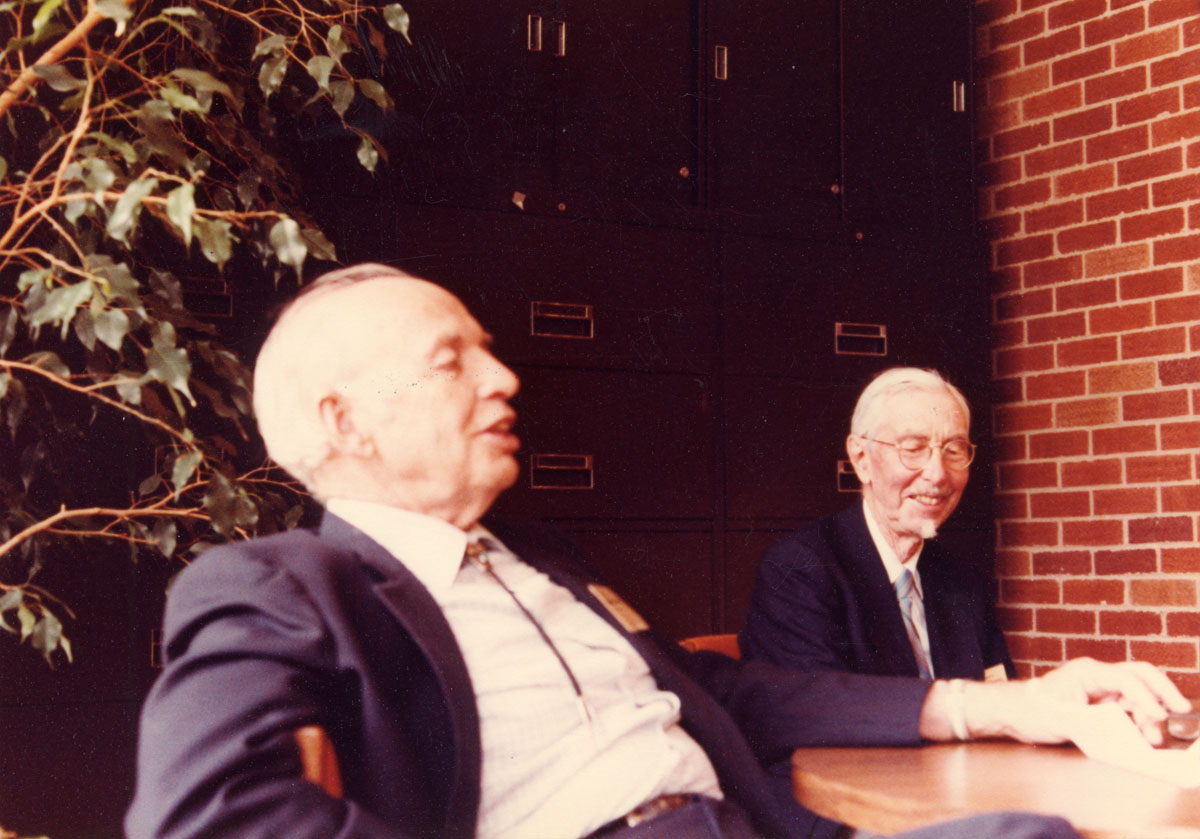
This photograph shows R. H. Bing (left) with Burton W. Jones (1902-1983) in 1981. Jones earned his Ph.D. from the University of Chicago in 1928, working under Leonard Eugene Dickson. From 1930 to 1948, he was a professor at Cornell University, where his second, third, and fourth Ph.D. students were representation theorist Irving Reiner (1947), MAA book series eponym Mary Dolciani (1947), and number theorist William LeVeque (1948). His very first Ph.D. student was Irma Moses Reiner (1946), who described Jones as a "good, approachable, and available" Ph.D. advisor, who "provided an excellent problem and was helpful in conferences while I was working on it." In 1948, Jones moved to the University of Colorado, Boulder, where he spent the rest of his career, chairing the mathematics department from 1949 to 1963 and retiring in 1971. He published number theory and abstract algebra textbooks and a popular book on mathematics, Elementary Concepts of Mathematics. Both UC Boulder and the MAA Rocky Mountain Section have mathematics teaching awards named in Jones' honor.
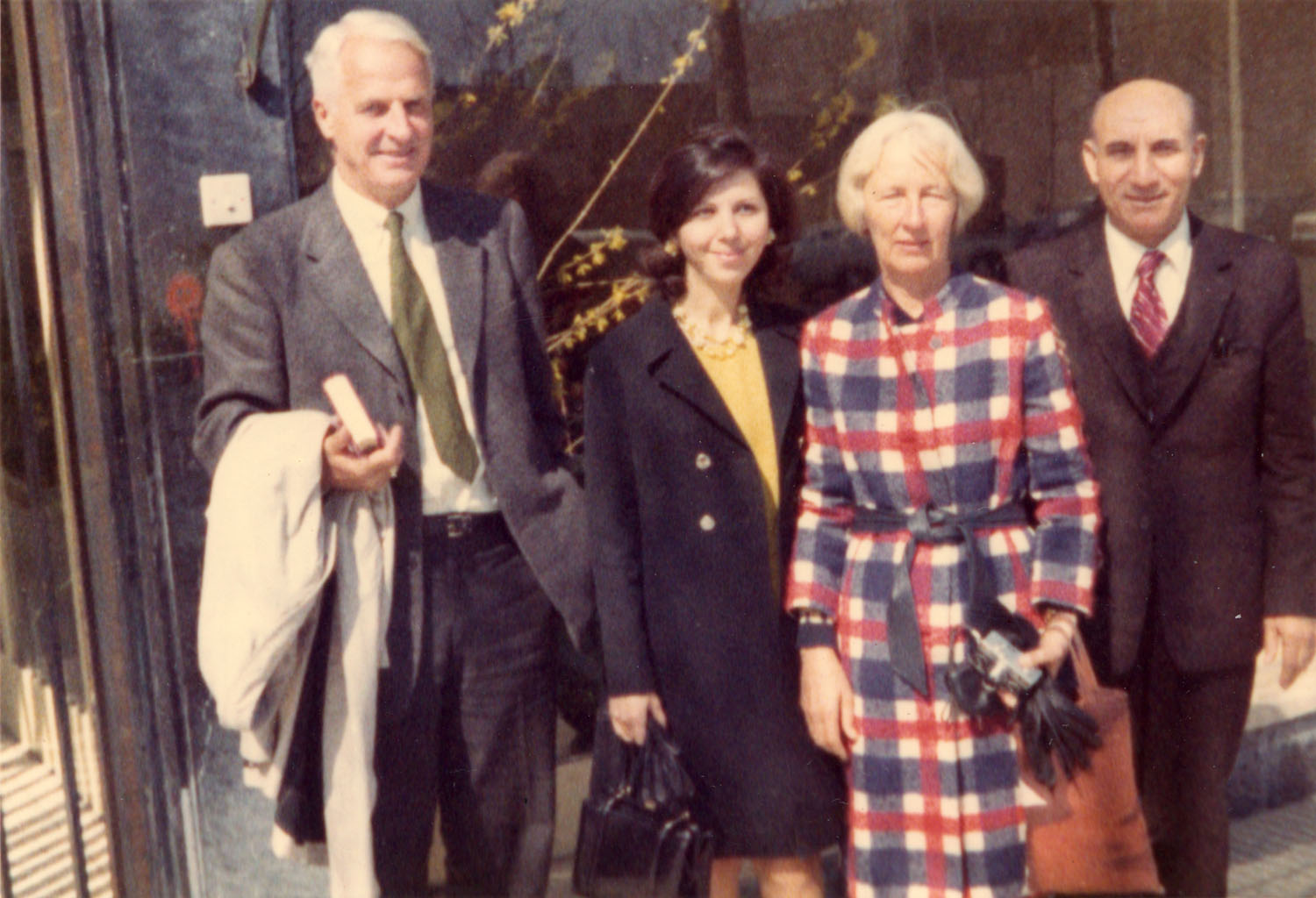
Halmos photographed the American algebraist Garrett Birkhoff (1911-1996), far left, and the Iranian mathematical physicist Abolghassem Ghaffari (1907-2013), far right, at the Third Iranian Mathematical Conference in Tehran, Iran, in 1972. He identified the two women in the photo only as "Mrs. Ghaffari" and "R. Birkhoff" (Mitra Meshkati Ghaffari and Ruth Collins Birkhoff).
Abolghassem Ghaffari studied and worked in Iran, France, England, and the U.S., before moving to the U.S. permanently in 1956. During the 1950s, he worked with Einstein and Oppenheimer in Princeton and, during the 1960s, he worked for NASA on the Apollo 11 mission. On June 15, 2011, Ghaffari celebrated his 104th birthday; at the time this article was published, he would soon celebrate his 105th birthday. He died November 5, 2013, at age 106. The Ghaffari family is collecting photographs of A. Ghaffari and is particularly interested in photographs of him with Einstein and/or Oppenheimer. Please contact the authors if you can help.
Group and lattice theorist Garrett Birkhoff advised over 50 Ph.D. students during a long career at Harvard, but he may be best remembered for his abstract algebra text, A Survey of Modern Algebra, written with Saunders Mac Lane and more commonly known by its authors' surnames, "Birkhoff and Mac Lane." Halmos and Birkhoff probably would have first met when both were at the Institute for Advanced Study in Princeton in 1939-40.
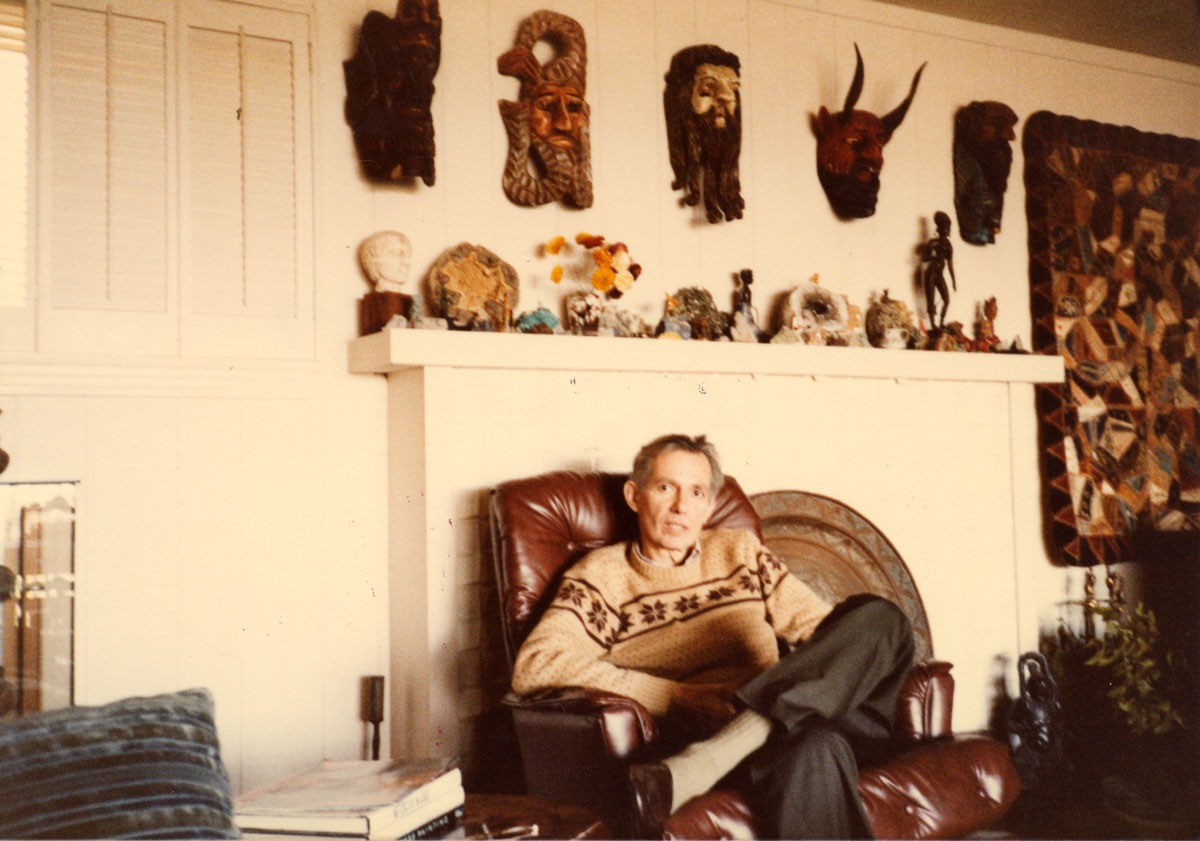
Halmos photographed Errett Bishop (1928-1983) at Bishop's home in La Jolla, California, in February 1983. A Ph.D. student of Halmos at the University of Chicago (1955), Bishop spent his career at the University of California, Berkeley, and the University of California, San Diego (in La Jolla). He made important contributions to a number of areas of analysis, including its foundations.
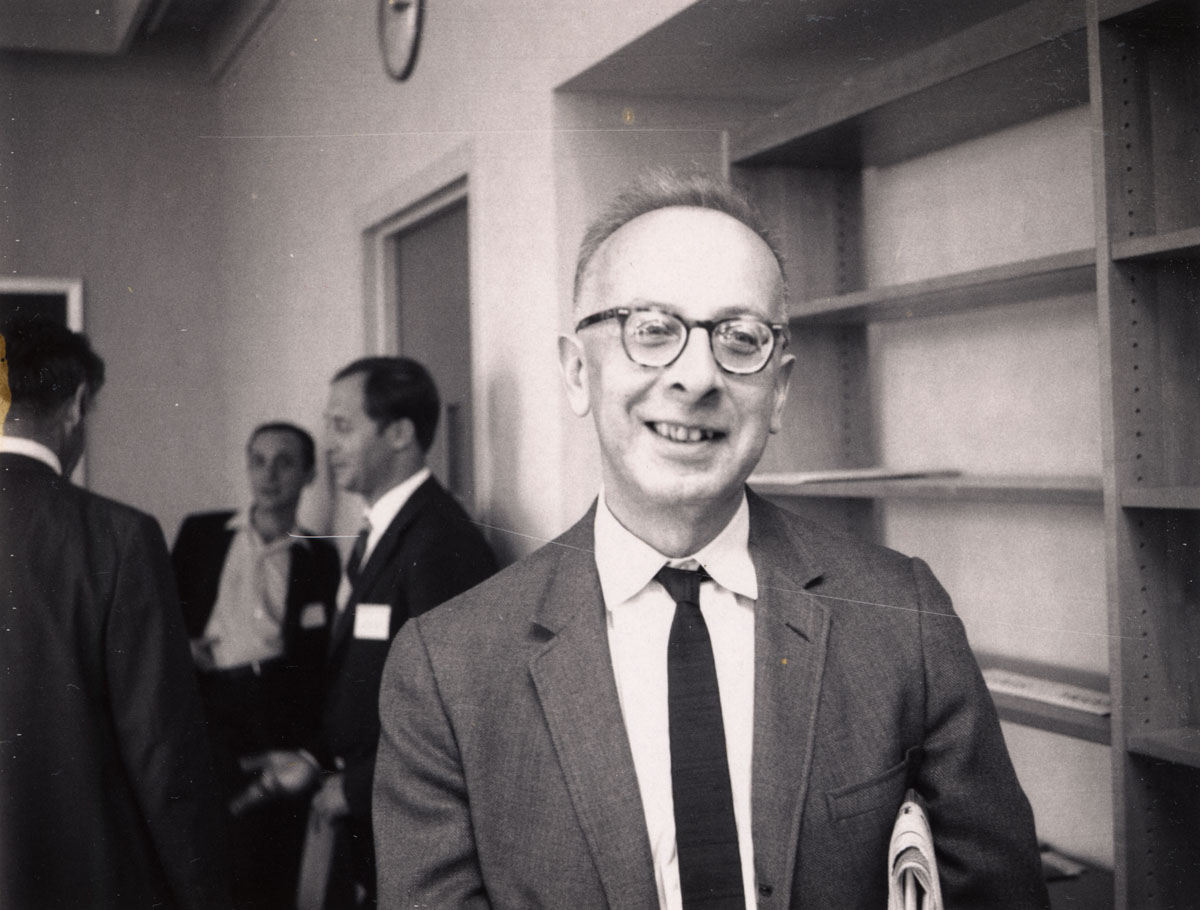
Mathematical philosopher Max Black (1909-1988) at the AMS-MAA Joint Summer Meeting in Ithaca, New York, on Aug. 31, 1965. Black was at that time a philosophy professor at Cornell University in Ithaca, where he spent most of his career. Did he attend the mathematics meeting because it was in a convenient location for him, or did he regularly attend mathematics meetings?
For an introduction to this article and to the Paul R. Halmos Photograph Collection, please see page 1. Watch for a new page featuring six new photographs each week during 2012.
Sources:
- American Mathematical Society (AMS) Presidents (R. H. Bing)
- Archives of American Mathematics, Dolph Briscoe Center for American History, University of Texas, Austin. Information for which a source is neither cited nor given in this list either appeared on the reverse side of the photograph or was obtained by AAM archivist Carol Mead from various sources during 2011-12.
- Institute for Advanced Study Past Members (Besicovitch, Bing, Birkhoff, Bishop, Ghaffari, and Jones)
- MacTutor History of Mathematics Archive, St. Andrews University, Scotland (Besicovitch, Bing, Birkhoff, Bishop, and Black)
- MAA Presidents (R. H. Bing)
- MAA Rocky Mountain Section (Burton W. Jones)
- "Burton W. Jones," Boulder Daily Camera, Jan. 10, 1983 (obituary)
- Jones, Burton W. and Wolfgang Thron, A History of the Mathematics Departments of the University of Colorado (1979), p. 17. Thanks to William Jones and Judith Packer of the UC Boulder Mathematics Department for providing copies of this item and the preceding one.
- Mathematics Genealogy Project, North Dakota State University (all mathematicians)
- Pars Times, Payvand Iran News, Washington Post obituary (Abolghassem Ghaffari)
Who's That Mathematician? Paul R. Halmos Collection - Page 7
For more information about Paul R. Halmos (1916-2006) and about the Paul R. Halmos Photograph Collection, please see the introduction to this article on page 1. A new page featuring six photographs will be posted at the start of each week during 2012.
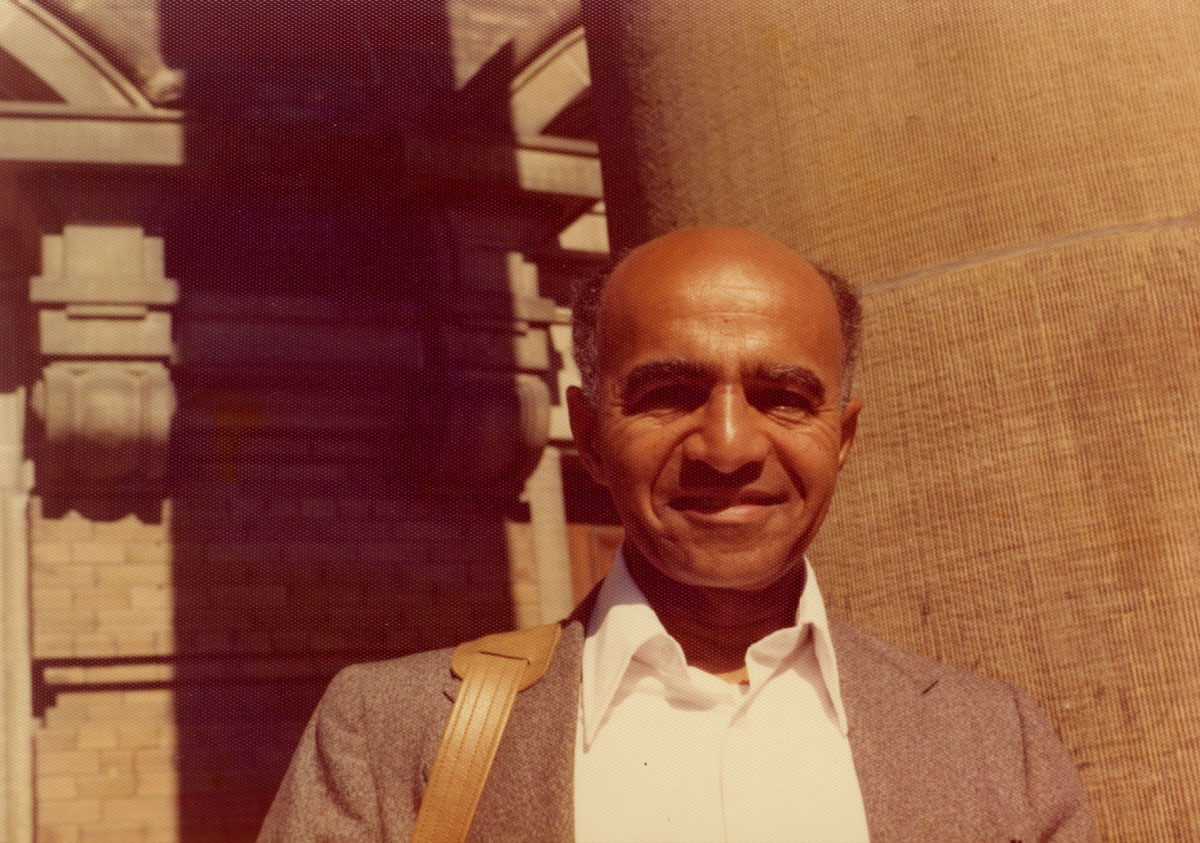
Halmos photographed David Blackwell (1919-2010) in August of 1976 in Toronto, Ontario, Canada. Blackwell earned his Ph.D. in 1941 at the University of Illinois, Urbana-Champaign, under probabilist Joseph Doob, with a dissertation on Markov chains. He was awarded a fellowship at the Institute for Advanced Study (IAS) in Princeton for 1941-42. After two one-year appointments at colleges in Louisiana and Georgia, Blackwell became professor and, very quickly, chair at Howard University in Washington, D.C. At Howard, Blackwell’s research focus changed to theoretical statistics and, in 1955, he accepted a position at the University of California, Berkeley, in the Department of Mathematics and Statistics, where he spent the rest of his career and advised at least 65 Ph.D. students.
As an African-American mathematician and statistician, Blackwell faced many challenges and attained many firsts, including becoming the first African-American to be awarded an IAS fellowship, the first to be elected to the National Academy of Sciences, and the first to earn tenure at UC Berkeley. The annual National Association of Mathematicians (NAM)-MAA David Blackwell Lecture was instituted in 1994, and remains one of the featured invited addresses of the annual MAA MathFest. Howard University will host the David Blackwell Memorial Conference, to be held April 19-20, 2012, on the Howard University campus in Washington, D.C. The conference will celebrate Blackwell's legacy, including his contributions to probability theory, theoretical statistics, operations research, and game theory.
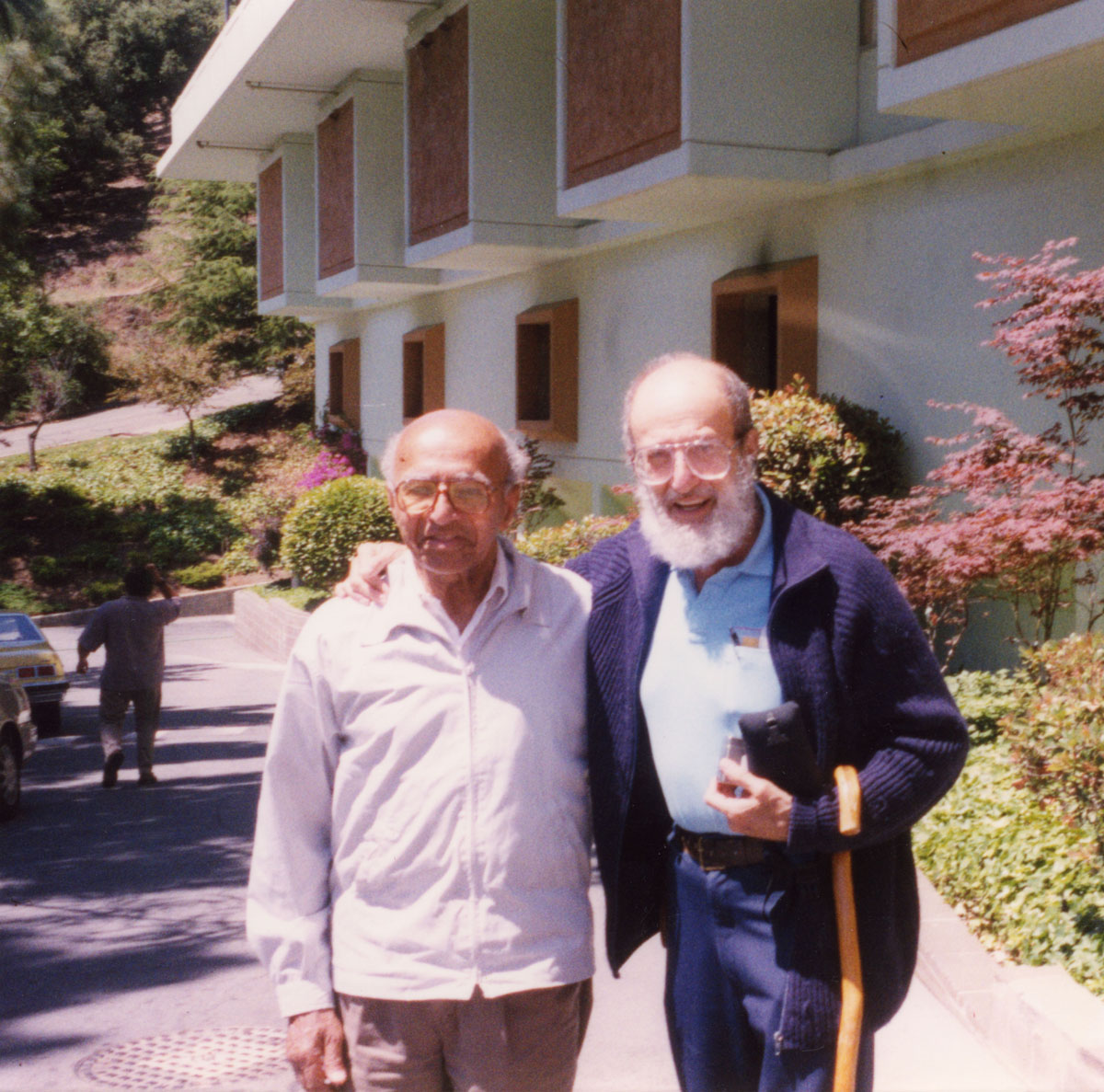
David Blackwell and Paul Halmos were photographed on June 30, 1998. “Two geezers” is the caption supplied by Halmos on the back of the photo.
Halmos and Blackwell attended the University of Illinois, Urbana-Champaign, at about the same time, with Halmos entering as a 15-year-old in 1931 and Blackwell as a 16-year-old in 1935. Both earned Ph.D.s at the age of 22 with probabilist Joseph Doob, Halmos in 1938 with a dissertation on measure-theoretic probability and Blackwell in 1941 with a dissertation on properties of Markov chains. Halmos spent 1938-39 as an instructor at Illinois, and then moved to the Institute for Advanced Study (IAS) in Princeton for three years, 1939-42. Blackwell was awarded an IAS fellowship for 1941-42. In 1942, Halmos joined the faculty at Syracuse University, where he would remain for four years, and Blackwell, after two one-year appointments at colleges in Louisiana and Georgia, became a professor at Howard University in Washington, D.C. Halmos and Blackwell remained lifelong friends, and both stayed close to Doob as well. Another friend was Warren Ambrose, who completed his Ph.D. with Doob at Illinois in 1939 and was at IAS from 1939 to 1941. Blackwell, Halmos, Ambrose, and Doob also are pictured on page 1 of this collection.
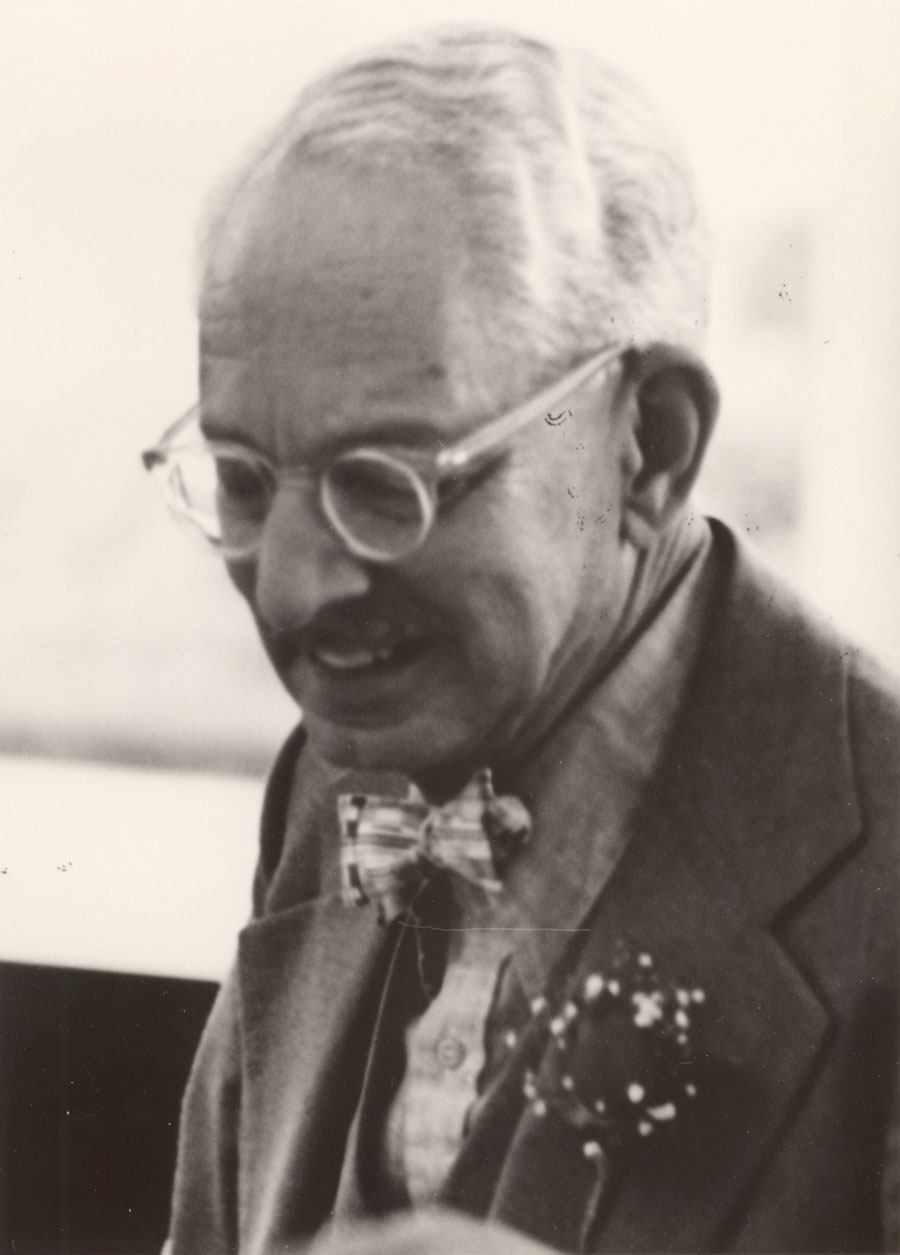
Halmos photographed Ralph P. Boas, Jr. (1912-1992) in 1980. Boas earned his Ph.D. at Harvard University in 1937. In 1943-45, he taught at Harvard, where he advised the Ph.D.s of R. Creighton Buck and Philip J. Davis, but he spent most of his career at Northwestern University in Evanston, Illinois. In addition to his research in real and complex analysis, Boas did extensive editorial work and was active in both the AMS and MAA, serving as MAA president in 1973-74. His son, Harold Boas, who earned his Ph.D. in complex analysis from M.I.T. in 1980 and is professor of mathematics at Texas A&M University, wrote in March of 2012 that “my father's unique bowties -- he always wore one -- were hand-made by my mother.” Mary L. Boas (1917-2010), who earned her Ph.D. in physics from M.I.T. in 1948, was professor of physics at DePaul University in Chicago for 30 years.

Graph theorist Béla Bollobás in May of 1973 at Cambridge University, England. Born in Budapest, Hungary, Bollobás caught the attention of mathematician Paul Erdös (pictured on page 3) while still a young teenager. Erdös became a mentor to Bollobás and interested him in graph theory. Bollobás earned Ph.D.s at Budapest University and, after he finally was allowed to leave Hungary, at Cambridge University. He became a fellow of Trinity College, Cambridge, in 1970, and, since 1996, has held positions both at Cambridge and at the University of Memphis, Tennessee.
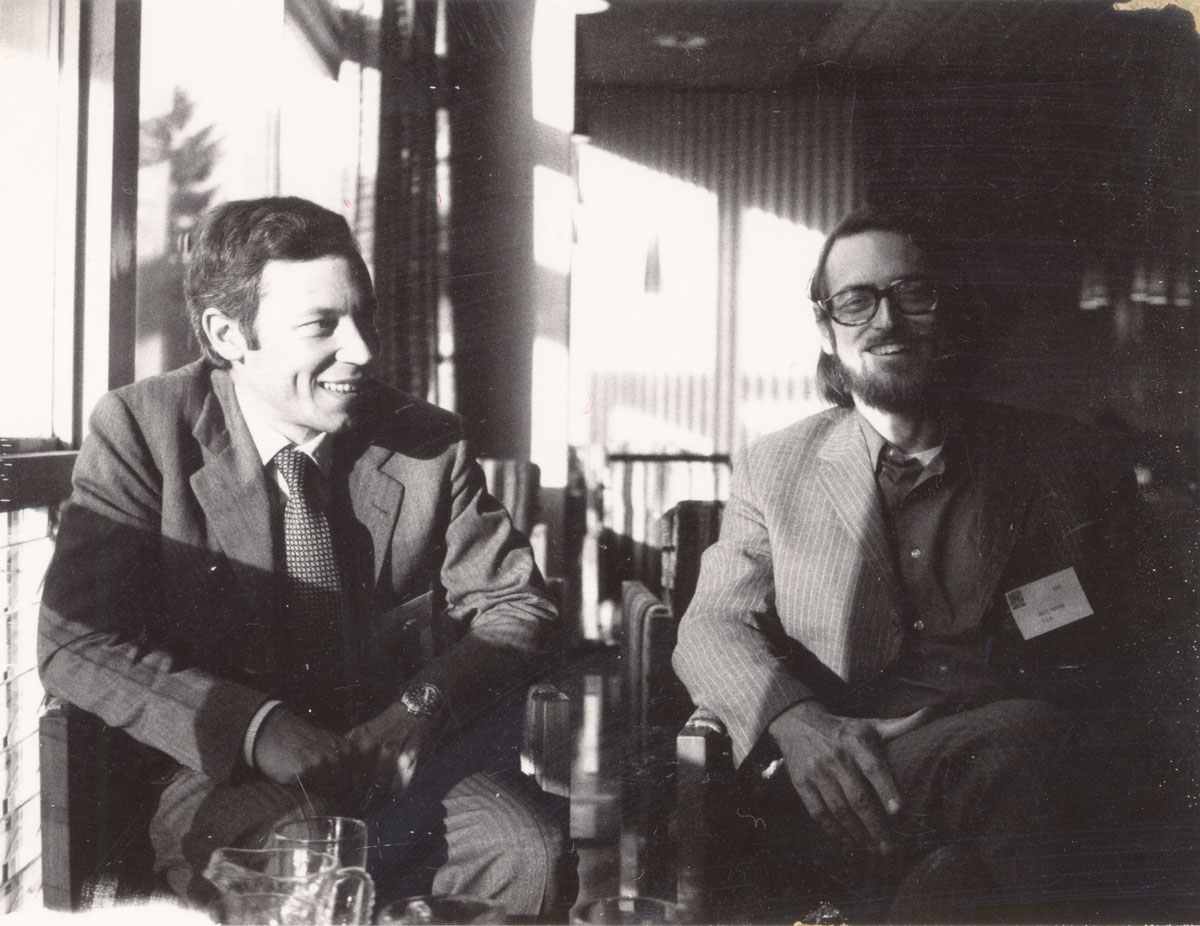
Next, we have the two 1974 Fields medalists Enrico Bombieri and David Mumford on August 21, 1974, at the International Congress of Mathematicians (ICM) in Vancouver, B.C., Canada, where they were awarded their medals. Bombieri believes this photograph may have been taken the day after the awards ceremony, which would have been the second day of the conference. He reported in March of 2012 that he and his friend Mumford had worked together in 1973, producing "two joint papers on classification of algebraic surfaces in positive characteristic. Our Fields Medals were a totally unexpected surprise for both of us."
Enrico Bombieri (left) earned his Fields Medal primarily for advances in number theory, but also for results in analysis and in the partial differential equations of minimal surfaces. He studied in his native Milan, Italy, and also in Cambridge, England, and then taught in Pisa, Italy, for a number of years. In 1977, he became a faculty member of the School of Mathematics of the Institute for Advanced Study (IAS) in Princeton, New Jersey, and in 1988 became IBM von Neumann Professor at IAS.
David Mumford (right) earned his Fields Medal for advances in algebraic geometry. He spent most of his career at Harvard, moving at the turn of the millennium to the Division of Applied Mathematics at Brown University, where he has led the pattern theory group and has been affiliated with the brain science program, focusing on visual perception. He has supervised at least 47 Ph.D. students and was awarded the National Medal of Science in 2010.
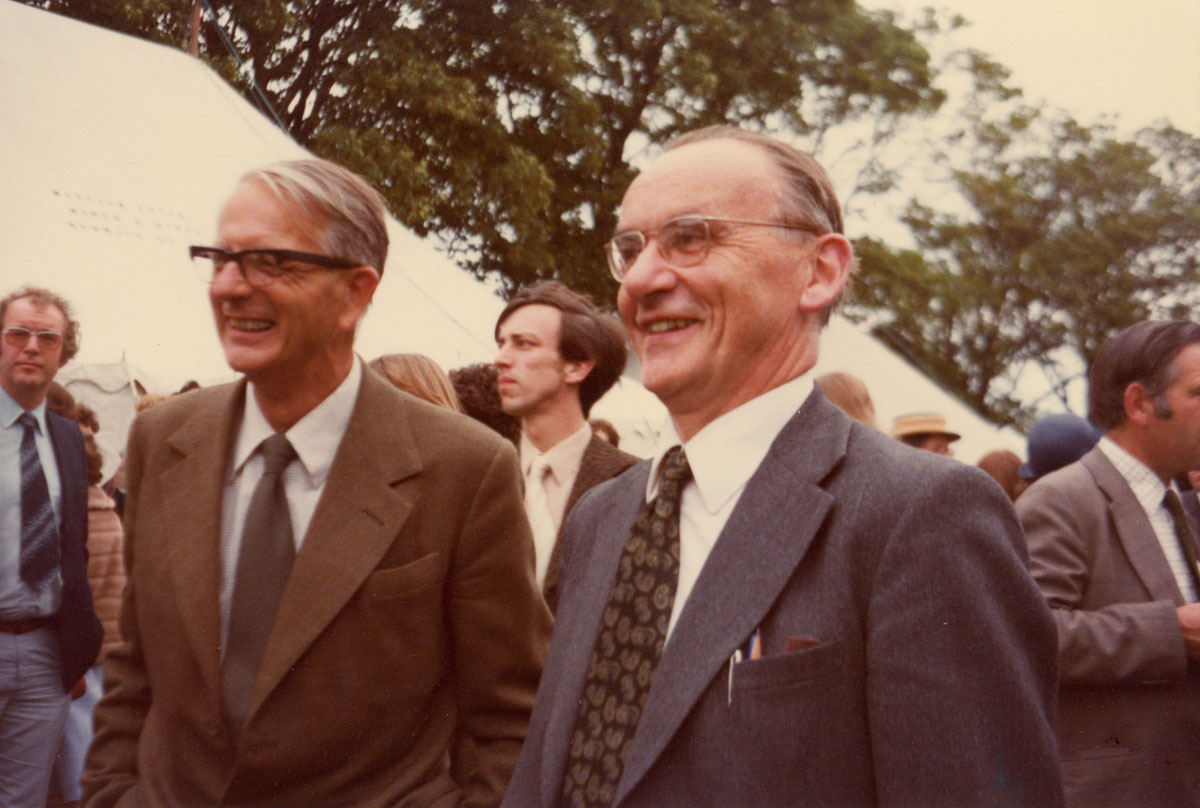
Halmos photographed functional analyst Frank Bonsall (1920-2011) and number theorist Robert Rankin (1915-2001) on July 1, 1980 in St. Andrews, Scotland.
Bonsall studied at Oxford, then spent over a decade at Newcastle University, before becoming the first occupant of the Maclaurin Chair at the University of Edinburgh, a position he held for 20 years. Rankin earned his degree at Cambridge and spent most of his career at the University of Glasgow, Scotland. While at Cambridge, he had worked with G. H. Hardy on the mathematics of Srinivasa Ramanujan, and he continued to publish both mathematical and historical work on Ramanujan throughout his career.
For an introduction to this article and to the Paul R. Halmos Photograph Collection, please see page 1. Watch for a new page featuring six new photographs each week during 2012.
Biographies of David Blackwell (1919-2010):
- American Mathematical Society (AMS) Notices: "A Tribute to David Blackwell"
- American Statistical Association Statisticians in History: "David H. Blackwell (1919-2010)"
- Blackwell Memorial Conference (2012): "About Dr. Blackwell"
- MacTutor History of Mathematics: "David Harold Blackwell"
- Mathematical Association of America (MAA): "Noted Mathematician David Blackwell Has Died at 91"
- National Association of Mathematicians (NAM): "David Harold Blackwell" (1994)
- Saint Louis Post-Dispatch: "David Blackwell fought racism; became world-famous statistician" (Obituaries also appeared in the Los Angeles Times and New York Times.)
- University of California, Berkeley: "Eminent statistician David Blackwell has died at 91"
Other Sources for this page:
- Archives of American Mathematics, Dolph Briscoe Center for American History, University of Texas, Austin. Information for which a source is neither cited nor given in this list either appeared on the reverse side of the photograph or was obtained by AAM archivist Carol Mead from various sources during 2011-12.
- Harold Boas, email dated 2 March 2012 (Ralph P. Boas, Jr.)
- Enrico Bombieri, emails dated 5 March 2012 and 6 March 2012 (Bombieri, David Mumford)
- Brown University Division of Applied Mathematics (Philip J. Davis, David Mumford)
- DePaul University Physics Department (Mary L. Boas)
- Institute for Advanced Study (IAS) Faculty (Enrico Bombieri)
- Institute for Advanced Study (IAS) Past Members (Ambrose, Blackwell, Halmos, and others)
- International Mathematical Union (IMU) Fields Medal and Medalists (Bombieri, Mumford)
- MacTutor History of Mathematics Archive, St. Andrews University, Scotland (all mathematicians except Ambrose, Boas, Buck, and Davis)
- Massachusetts Institute of Technology (MIT) News Office (Warren Ambrose)
- MAA Presidents (Ralph P. Boas, Jr.)
- Mathematics Genealogy Project, North Dakota State University (all mathematicians)
- Texas A&M University Mathematics Department (Harold Boas)
- University of Wisconsin Department of Mathematics (R. Creighton Buck)
Who's That Mathematician? Paul R. Halmos Collection - Page 8
For more information about Paul R. Halmos (1916-2006) and about the Paul R. Halmos Photograph Collection, please see the introduction to this article on page 1. A new page featuring six photographs will be posted at the start of each week during 2012.
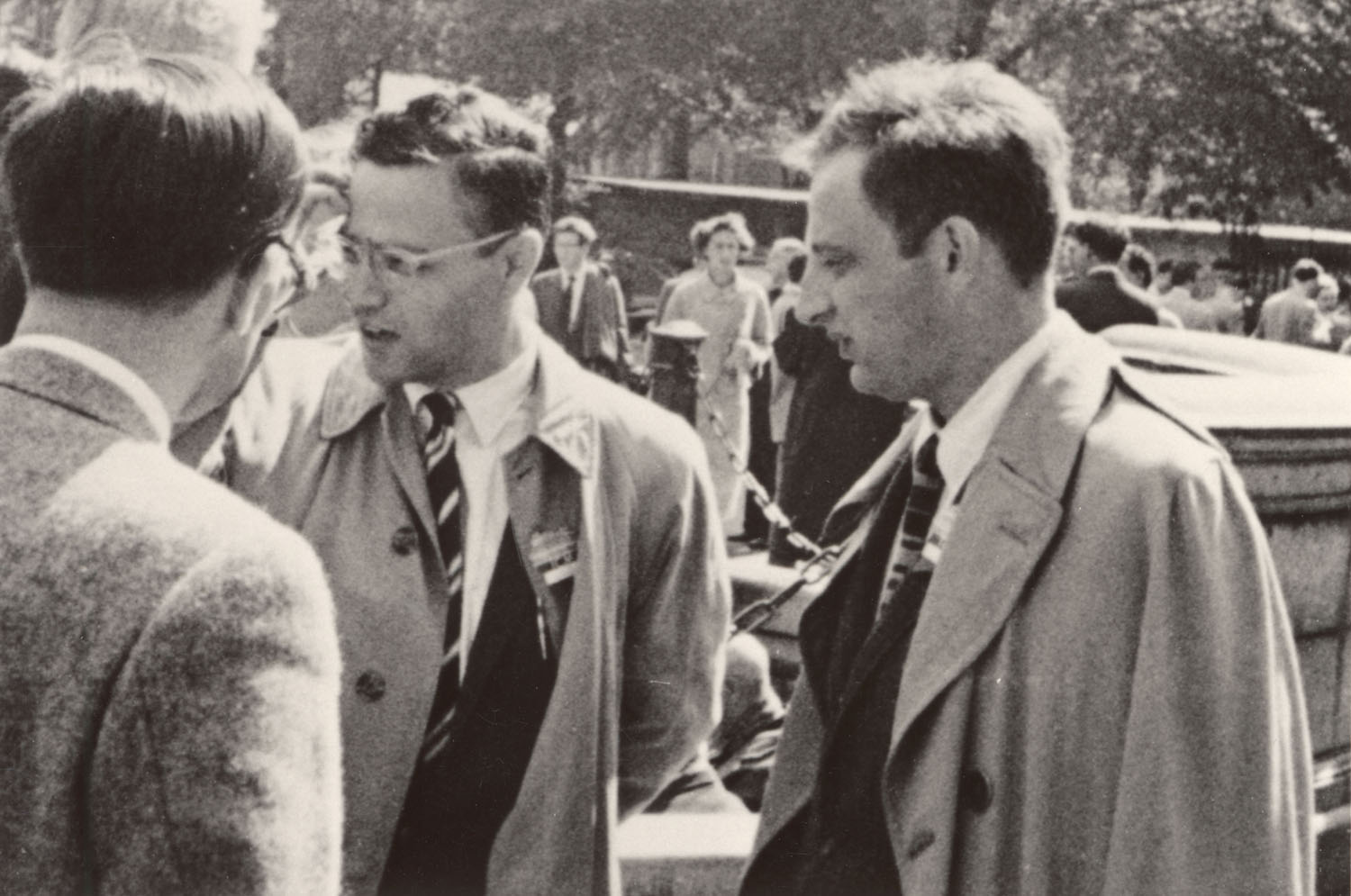
Our first photograph this week is of Armand Borel (1923-2003) and Raoul Bott (1923-2005) in 1958, possibly at the International Congress of Mathematicians held that year in Edinburgh, Scotland.
Armand Borel is best known for his work on Lie groups, beginning with his Ph.D. dissertation, defended at University of Paris in 1952. Largely through his influence, Lie groups and algebras became important in many areas of mathematics and helped connect many areas of mathematics. A member of the younger generation of the Bourbaki, he was the main contributor to the Bourbaki’s book on Lie groups and algebras. Borel’s work on Lie groups led him to work on algebraic groups and arithmetic groups as well. Born in Switzerland, Borel spent most of his career at the Institute for Advanced Study (IAS) in Princeton, where he became a permanent professor in 1957. He had been a student at ETH = Eidgenössische Technische Hochschule Zürich (German) = École Polytechnique Fédérale de Zurich (French) = Swiss Federal Institute of Technology (English) between 1942 and 1947 (including military service), then an instructor there for two years, before spending a formative year in Paris (1949-50), learning from and working with the group of mathematicians known as the Bourbaki. He would return to ETH as a professor during 1955-57 and 1983-86. (Sources: MacTutor Archive and IAS)
Another photograph of Raoul Bott appears below; a review of his career accompanies that photo.
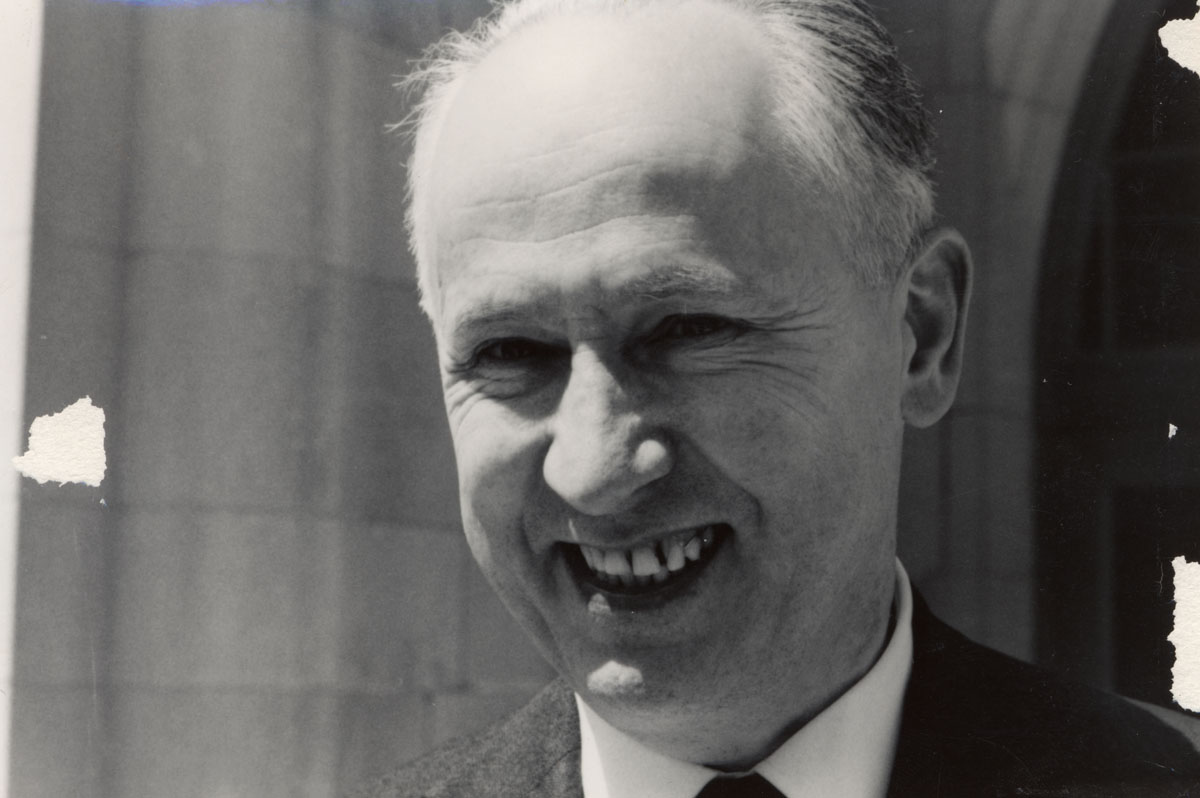
Paul Halmos photographed Karol Borsuk (1905-1982) in the spring of 1968 at Indiana University in Bloomington. (Halmos would accept a professorship there one year later.) Borsuk earned his Ph.D. at the University of Warsaw in 1931 for a dissertation in topology “in which he invented the theory of retracts” (MacTutor Archive). His other great contribution to topology was his theory of shape. At the time he earned his Ph.D., Borsuk had already begun teaching at the University of Warsaw. The Mathematics Genealogy Project shows that he advised at least eight Ph.D.s there through 1936, with the last one earned by Samuel Eilenberg for his dissertation “On the Topological Applications of Maps onto a Circle” with Borsuk as second advisor to Kazimierz Kuratowski. After attempting to help take the university “underground” during World War II (MacTutor Archive), Borsuk and Kuratowski set about rebuilding the mathematics program after the war ended in 1945. The Mathematics Genealogy Project shows Borsuk advising two Ph.D.s in 1958, one each at the Polish Academy of Science's Institute of Mathematics and Moscow State University; and then, beginning in 1965, six more at the University of Warsaw, including the one Krystyna Kuperberg began there in 1966 and completed at Rice University in Houston, Texas, in 1974. Kuperberg remembers Borsuk as "a great person as well as a great mathematician."
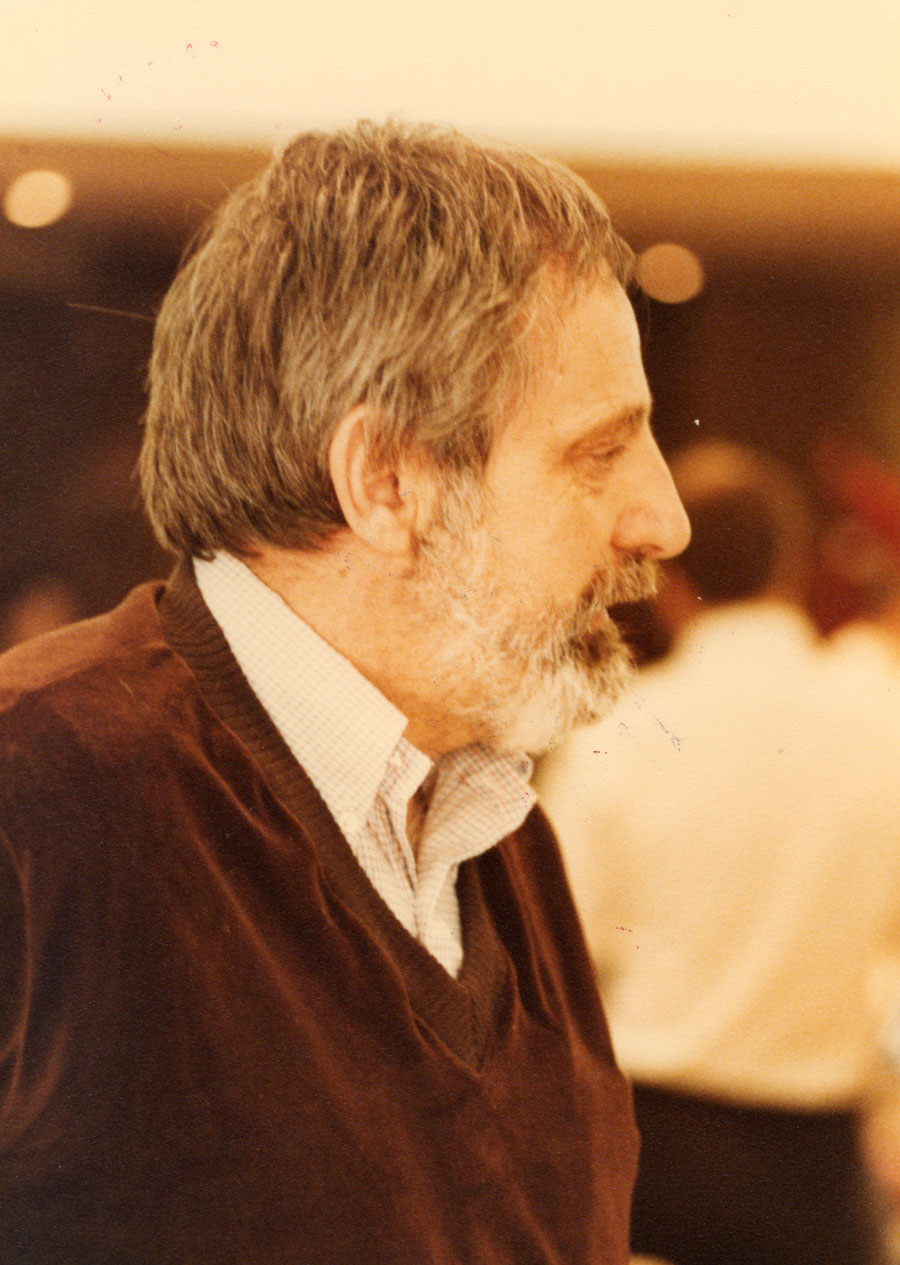
Halmos photographed Raoul Bott (1923-2005) in April of 1980 in Bloomington, Indiana, where Halmos was a professor at Indiana University. Bott was an engineer-turned-mathematician who produced many important results in topology and differential geometry throughout his career and who advised 24 Ph.D. students, including two Fields medalists. In fact, his first Ph.D. student was future Fields Medalist Stephen Smale, who earned his degree from the University of Michigan in 1957 with the thesis “Regular Curves on Riemannian Manifolds.” Bott spent most of his career at Harvard, where one of his early Ph.D. students (1964) was future Fields Medalist Daniel Quillen. Bott’s own Ph.D. was from Carnegie-Mellon University, earned in 1949 for his dissertation on “Electrical Network Theory,” reflecting his interest up to that time in electrical engineering. (Sources: MacTutor Archive, Mathematics Genealogy Project)

Then-AMS president William Browder was photographed by Halmos in April of 1990 at an AMS Meeting in Albuquerque, New Mexico. The well-known topologist is most famous for his invention of surgery on manifolds. He has advised at least 32 Ph.D. students, three at Cornell and the rest at Princeton, where he has spent most of his career. His own thesis, “Homology of Loop Spaces,” was written at Princeton in 1958. He became a faculty member at Princeton immediately following his first Institute for Advanced Study (also in Princeton) appointment in 1963-64 and remains professor of mathematics there today. He served as AMS president in 1989-90. Browder and Halmos may have first met when Browder spent part of the academic year 1959-60 at the University of Chicago, where Halmos was a faculty member. (Sources: MacTutor Archive, Mathematics Genealogy Project, AMS Presidents, IAS, Princeton University Mathematics Department)
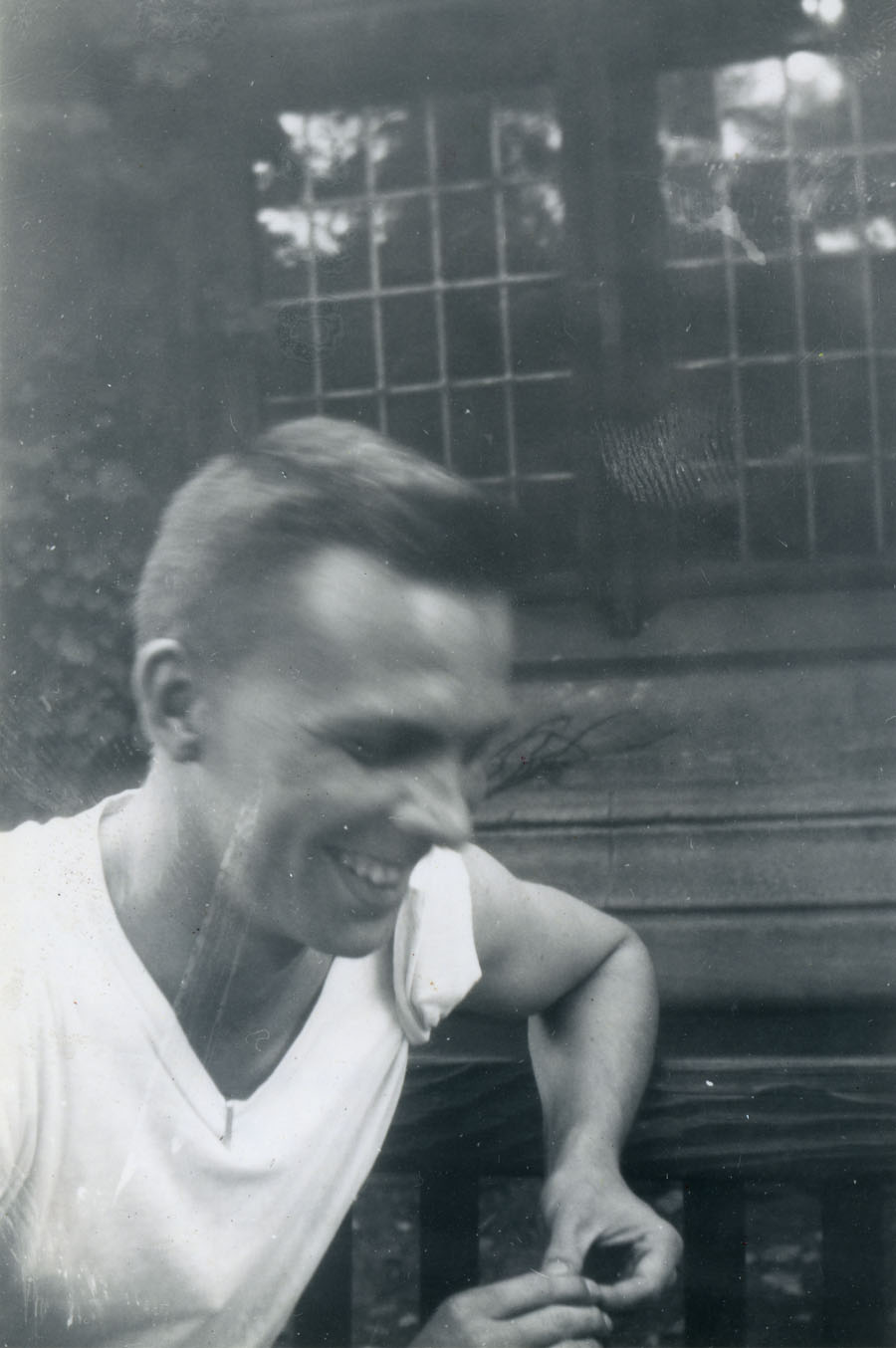
Halmos photographed H. Arlen Brown (Herbert Arlen Brown), in 1952, the year Brown earned his Ph.D. from the University of Chicago under advisors Halmos and Irving Kaplansky (photographed on page 26 of this collection) with the dissertation “Two Classes of Non-Normal Operators.” The photograph, however, was taken in East Lansing, Michigan, probably at the AMS Summer Meeting held at Michigan State University Sept. 2-5, 1952. Brown was one of at least nine Ph.D. students Halmos advised during his tenure at the University of Chicago (1946-61). According to Halmos:
Arlen and I stayed in close personal and professional touch for a long time. He went to Texas, to the Rice Institute (as it was then called), but two years later, when I was at Michigan, I was able to wangle a job for him there, and we were together again. Later still he moved to Indiana, and I was at Hawaii, and he wangled a job for me at Indiana; turnabout is fair play. (I Want To Be a Mathematician, p. 161)
Brown could have been at Rice for as many as 11 years; he must have taken up his position there sometime before 1957 because the Mathematics Genealogy Project shows him advising Ph.D. theses completed in 1957 and 1960 there. He was on the faculty at the University of Michigan from 1963 to 1967, and at Indiana University by 1969. Halmos’ 1969-1985 professorship at Indiana University followed his 1968-69 academic year at the University of Hawaii. He was at Michigan from 1961 to 1968.
Brown was active in operator theory research at least through the 1970s, including two joint papers with Halmos during the early 1960s and many joint papers with one of his own Ph.D. students, Carl Pearcy (photographed on page 29 of this collection), during the 1960s and 1970s. He and Pearcy co-authored An Introduction to Analysis, in the Springer Graduate Texts in Mathematics series, in 1995. (Sources: Mathematics Genealogy Project; MathSciNet; University of Michigan Faculty History Project; Halmos, P. R., I Want To Be a Mathematician, Springer, 1985, pp. 160-161)
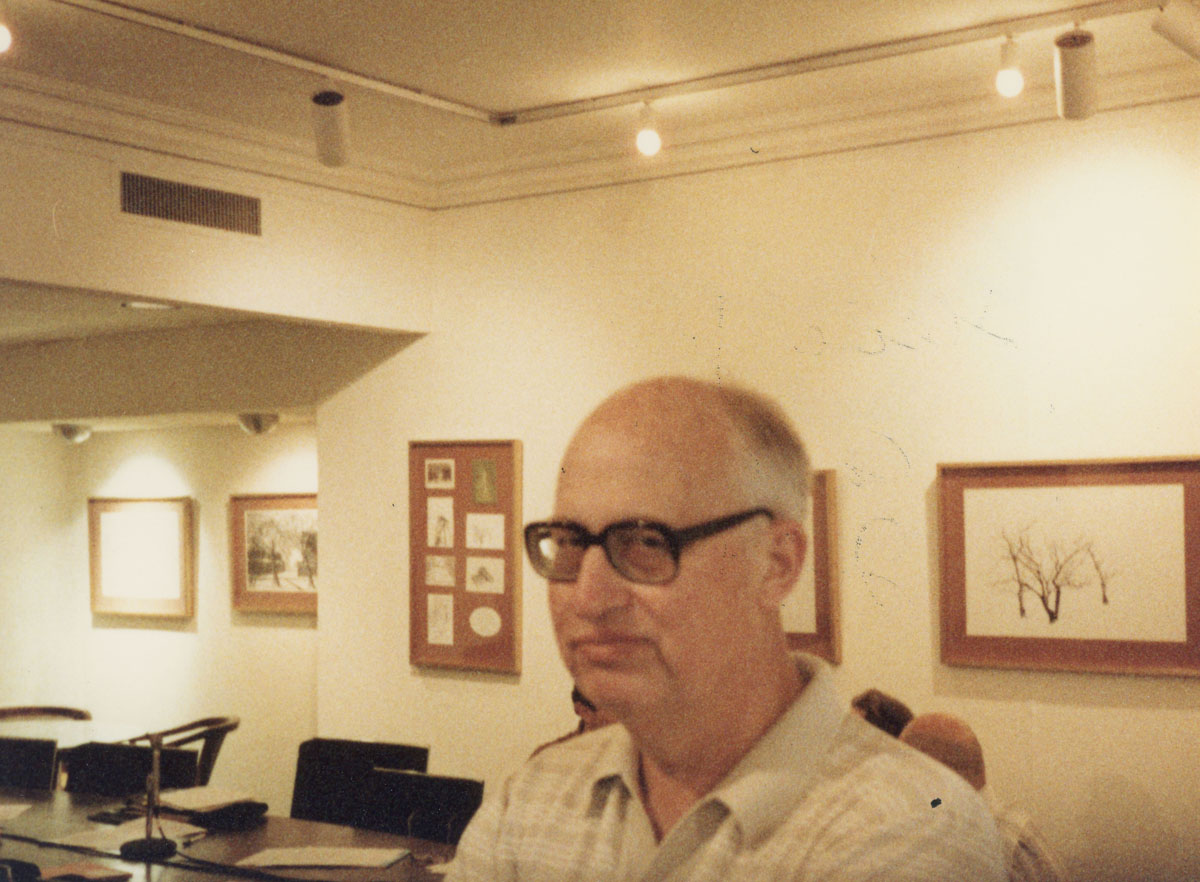
Halmos photographed R. Creighton Buck (1920-1998) in July of 1984 at Carleton College in Northfield, Minnesota. Buck earned his Ph.D. from Harvard in 1948 with Ralph P. Boas, Jr., pictured on page 7, as his second advisor. Buck taught first at Brown, and then, beginning in 1950, enjoyed a long and successful career at the University of Wisconsin. He worked in approximation theory, complex analysis, operations research, topological algebra, and the history of mathematics. Many know of Buck either through his historical article, “Sherlock Holmes in Babylon,” in The American Mathematical Monthly in 1980 and Cryptologia in 1981, or through his textbook, Advanced Calculus (McGraw-Hill, 1956, 1965, 1978). He also served both the AMS and MAA in various roles. (Sources: University of Wisconsin Department of Mathematics, Mathematics Genealogy Project, MathSciNet)
For an introduction to this article and to the Paul R. Halmos Photograph Collection, please see page 1. Watch for a new page featuring six new photographs each week during 2012.
Regarding sources for this page: Information for which a source is not given either appeared on the reverse side of the photograph or was obtained from various sources during 2011-12 by archivist Carol Mead of the Archives of American Mathematics, Dolph Briscoe Center for American History, University of Texas, Austin.
Who's That Mathematician? Paul R. Halmos Collection - Page 9
For more information about Paul R. Halmos (1916-2006) and about the Paul R. Halmos Photograph Collection, please see the introduction to this article on page 1. A new page featuring six photographs will be posted at the start of each week during 2012.
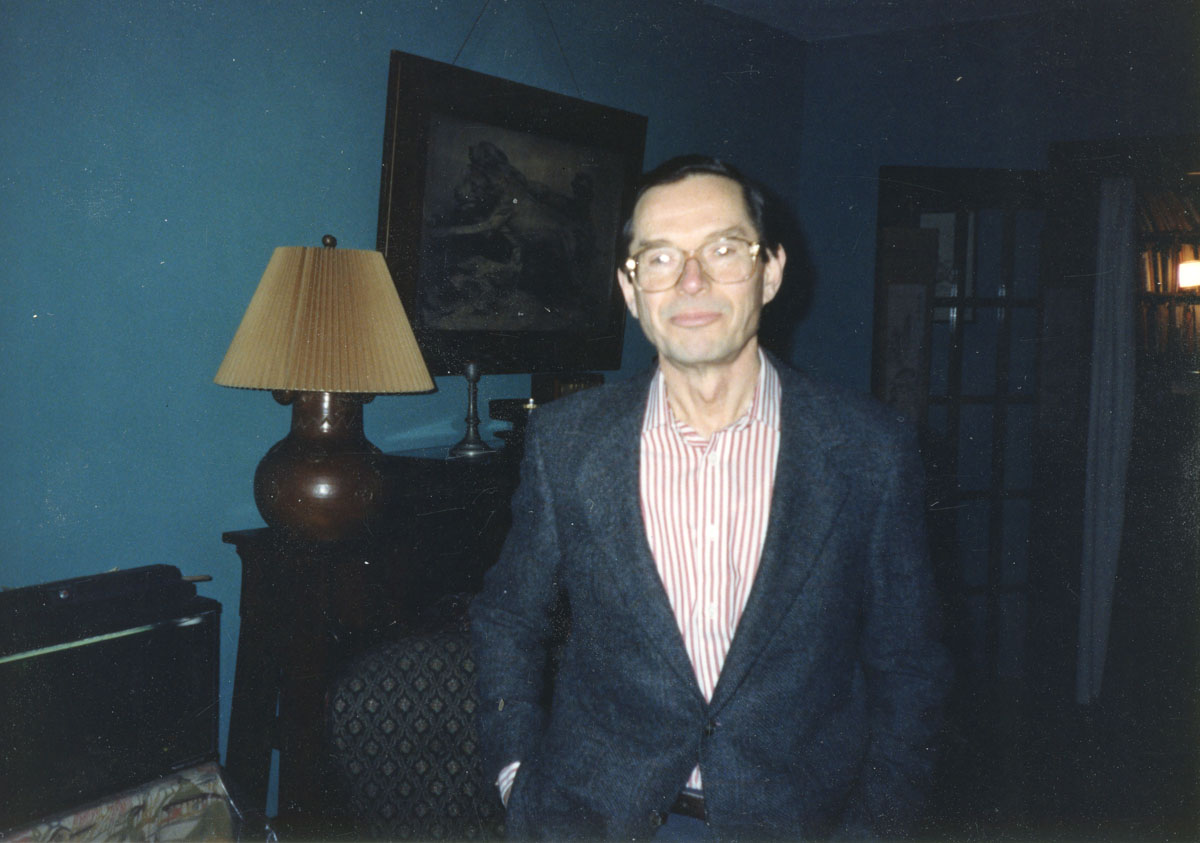
Paul Halmos photographed Donald Burkholder (1927-2013) in March of 1990 in Urbana, Illinois, quite probably in the home of Joseph and Elsie Doob. On page 1, Burkholder appears in a photo taken the same day of a group gathered on the porch of the Doob home. This group also included Colin Blyth, Elsie and Joseph Doob, Warren Ambrose, Paul Halmos, and David Blackwell. Burkholder was an emeritus mathematics professor and member of the Center for Advanced Study at the University of Illinois, Urbana-Champaign, when this article appeared. His specialties included probability theory, stochastic processes, functional analysis, and Fourier analysis. He edited Joseph Doob: A Collection of Mathematical Articles in His Memory, which comprised the first four issues of the Illinois Journal of Mathematics (and over 1000 pages!) in 2007 (WorldCat).
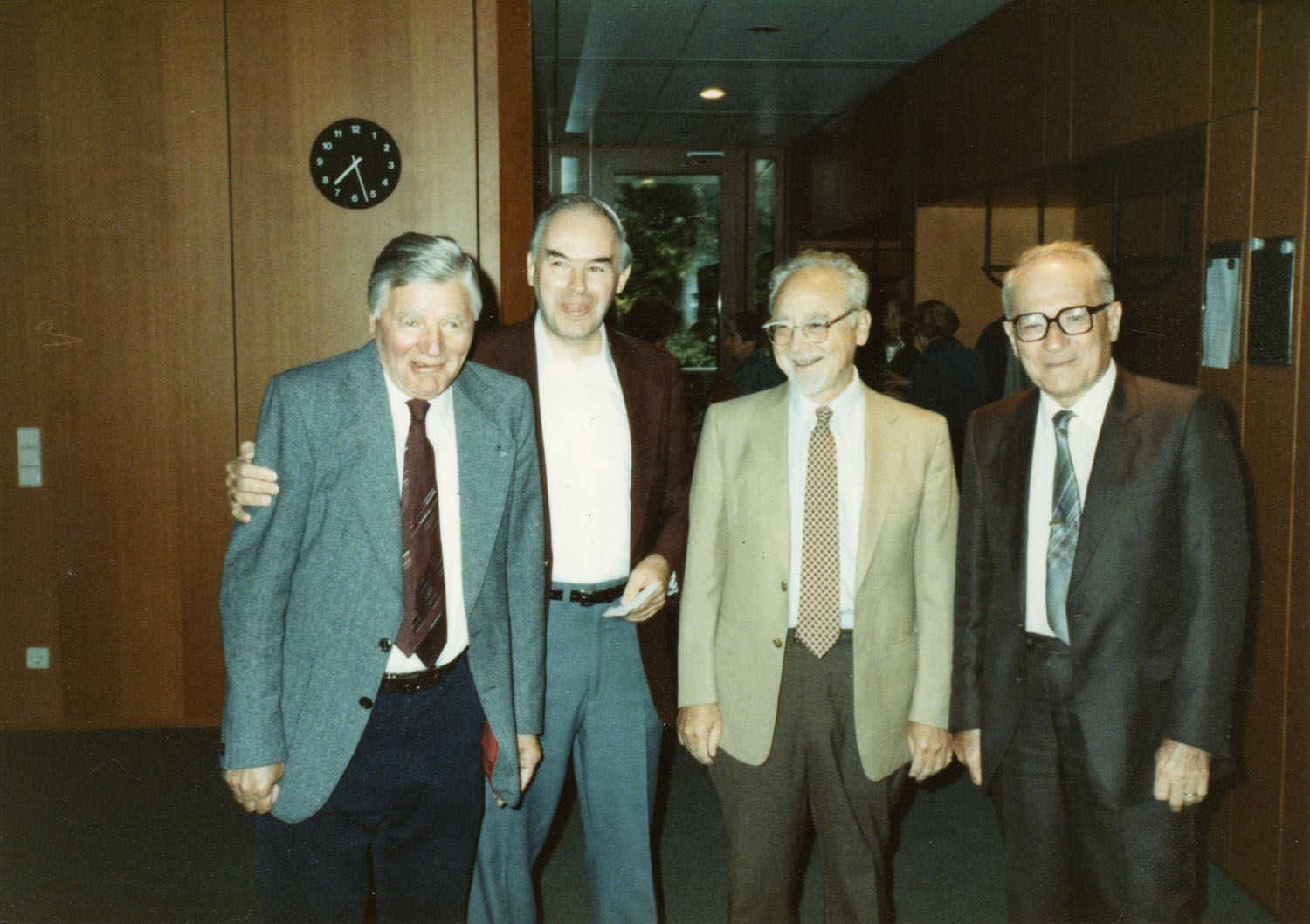
From left to right, mathematicians Adriaan Zaanen, Paul Butzer, Ralph Phillips, and Béla Szökefalvi-Nagy are pictured in August of 1983 at the Oberwolfach Conference Center in Germany.
Adriaan "Aad" Cornelis Zaanen (1913-2003) earned his doctorate from the University of Leiden in the Netherlands in 1938. He retired as Chair of Mathematics from Leiden in 1982 (with a retirement symposium titled "From A to Z"), but remained active in functional analysis, integration theory, and Riesz space theory. He wrote both important series of papers and influential books on these topics (MacTutor Archive).
Paul Leo Butzer has spent most of his career at Rheinisch Westfälische Technische Hochschule (RWTH) in Aachen, Germany, where he is professor emeritus of mathematics. He organized seven conferences at the Oberwolfach Conference Center from 1963 to 1983 on his own specialty of approximation theory and related fields such as functional analysis and operator theory (MacTutor Archive), which would have attracted Paul Halmos. Indeed, Butzer says Halmos first attended his 1968 conference at Oberwolfach. Butzer also is interested in signal theory, combinatorial number theory, and the history of mathematics (RWTH). (Additional source: P. L. Butzer, "A retrospective on 60 years of approximation theory and associated fields," Journal of Approximation Theory (2009), doi:10.1016/j.jat.2009.05.004)
Ralph S. Phillips (1913-1998) earned his Ph.D. at the University of Michigan in 1939, taught at the University of Southern California (USC) for ten years, and from 1960 onward was professor of mathematics at Stanford University, where he retired as Grimmett Chair of Mathematics in 1978. Phillips was a functional analyst and a founding editor of the Journal of Functional Analysis, but perhaps is best known for his work in mathematical physics with Peter Lax, now known as Lax-Phillips theory (Stanford University) or scattering theory (MacTutor Archive). He and Paul Halmos would have first met in 1939 at the Institute for Advanced Study in Princeton, where both were members during the 1939-40 academic year. (Additional source: "Ralph Phillips (1913-1998)," AMS Notices 47:5, May 2000)
Béla Szökefalvi-Nagy (1913-1998) was Butzer's co-organizer for the last four of the seven Oberwolfach conferences held during 1963-1983 (MacTutor Archive). A faculty member at the University of Szeged, Hungary, from 1940 onward, Szökefalvi-Nagy was "one of the founders of modern operator theory, and one of its major contributors," according to the editors of Recent Advances in Operator Theory and Related Topics: The Béla Szökefalvi-Nagy Memorial Volume (Birkhäuser, 2001). Butzer describes him as "the greatest mathematician from Hungary from ca. 1950 till his death." Ergodic theorist Alexandra Bellow (see next photo) remembers that when she was a student in Romania and the U.S. during the 1950s, "Bela Sz.-Nagy ... was regarded as one of the leading European mathematicians. ... [H]is book with Frederic Riesz, Leçons d'Analyse Fonctionnelle [1952], was ... the book from which we all learnt Functional Analysis; it became a classic." Sz.-Nagy also appears in a photo on page 14 of this collection, where you can read more about him.
Butzer reports that because Zaanen, Phillips, Sz.-Nagy, and Blagovest Sendov (University of Sofia, Bulgaria) all turned 70 in 1983, they were honored with tributes to their lives and work in the Anniversary Volume on Approximation Theory and Functional Analysis, P. Butzer, R. Stens (RWTH), and B. Sz.-Nagy, eds., ISNM Vol. 65, Birkhäuser, Basel, 1984.
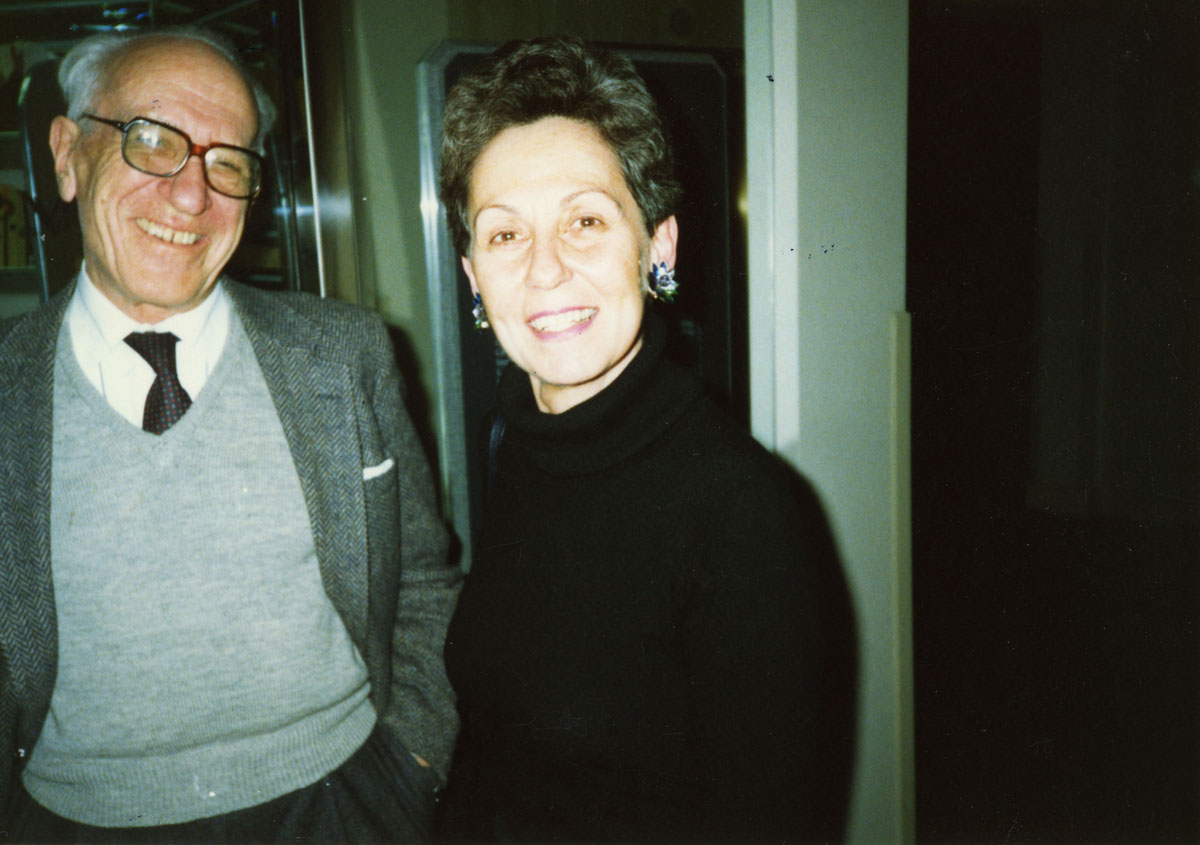
Halmos photographed mathematicians Alberto Calderón (1920-1998) and Alexandra Bellow at the San Francisco Airport in January of 1991.
Alberto Calderón spent most of his career at the University of Chicago, where he earned his Ph.D. in 1950. He and his thesis advisor Antoni Zygmund (1900-1992) collaborated throughout their careers and are most famous for their Calderón-Zygmund theory of singular integral operators (MacTutor Archive). Calderón and Halmos probably first met in the late 1940s when Calderón arrived at the University of Chicago, where Halmos was a professor, to complete his Ph.D. work. He and Halmos were colleagues at Chicago only from 1959, when Calderón returned to Chicago from MIT, to 1961, when Halmos moved to the University of Michigan. Calderón was at Chicago 1959-72, MIT 1972-75, and Chicago 1975-85 and from 1989 onward. (Additional sources: "Alberto Pedro Calderón (1920-1998)" and "Singular Integrals: The Roles of Calderón and Zygmund," AMS Notices 45:9, October 1998. Much of the biographical material for the AMS volume, Selected Papers of Alberto P. Calderón with Commentary (2008), co-edited by Bellow, Carlos Kenig, and Paul Malliavin, is available here.)
Alexandra Bellow, who also appears in a photograph on page 5 of this collection, has spent most of her career at Northwestern University in Evanston, Illinois, where she is now emeritus. An ergodic theorist, she earned her Ph.D. at Yale University in 1959 under the direction of Shizuo Kakutani. In the photo above, Bellow and her husband Calderón were in San Francisco in January of 1991 for the Joint Mathematics Meetings, where she delivered the Association for Women in Mathematics (AWM) Emmy Noether Lecture, "Almost Everywhere Convergence: The Case for the Ergodic Viewpoint." Bellow recalls that "conversation with Paul Halmos was never dull or predictable," and offers an example from the 1991 JMM, when she said to him, "I need to ask you a question, Professor Halmos," and he replied, "The answer is yes. Now what was the question?" According to the brochure for the AWM Noether Lecture, Bellow and Calderón first met in 1974 when they shared an office at MIT. Bellow explains that she arrived at MIT as a visiting professor. Calderón, then a professor at MIT, "had a magnificently large office, in keeping with his mathematical stature. There was a shortage of office space in the Math Department and the Chairman asked Alberto if he would mind sharing his office with a visitor. Alberto, always a gentleman, agreed." They were married in 1989.
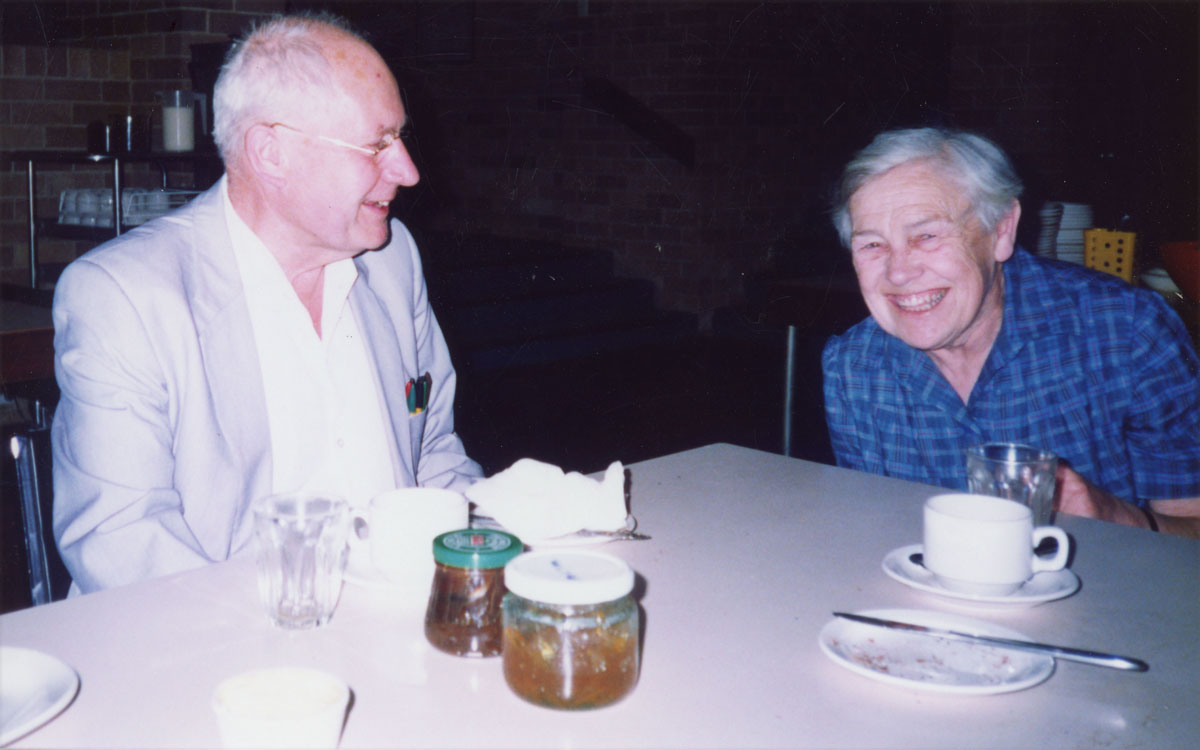
Halmos photographed John "Ian" Cassels (1922-2015) and his wife Constance Cassels (d. 2000) at Macquarie University in Sydney, Australia, in July of 1989. J. W. S. Cassels retired from Cambridge University, England, as Sadleirian Professor of Pure Mathematics and Head of Department in 1984, but remained active in number theory. He began his career with research on the geometry of numbers and Diophantine approximation and added new topics and interests over the years. J. J. O'Connor and E. F. Robertson reported that "Cassels has worked on every aspect of the theory of numbers, particularly on the theory of rational quadratic forms and local fields," and that he received both the Sylvester and DeMorgan medals for this work (MacTutor Archive).
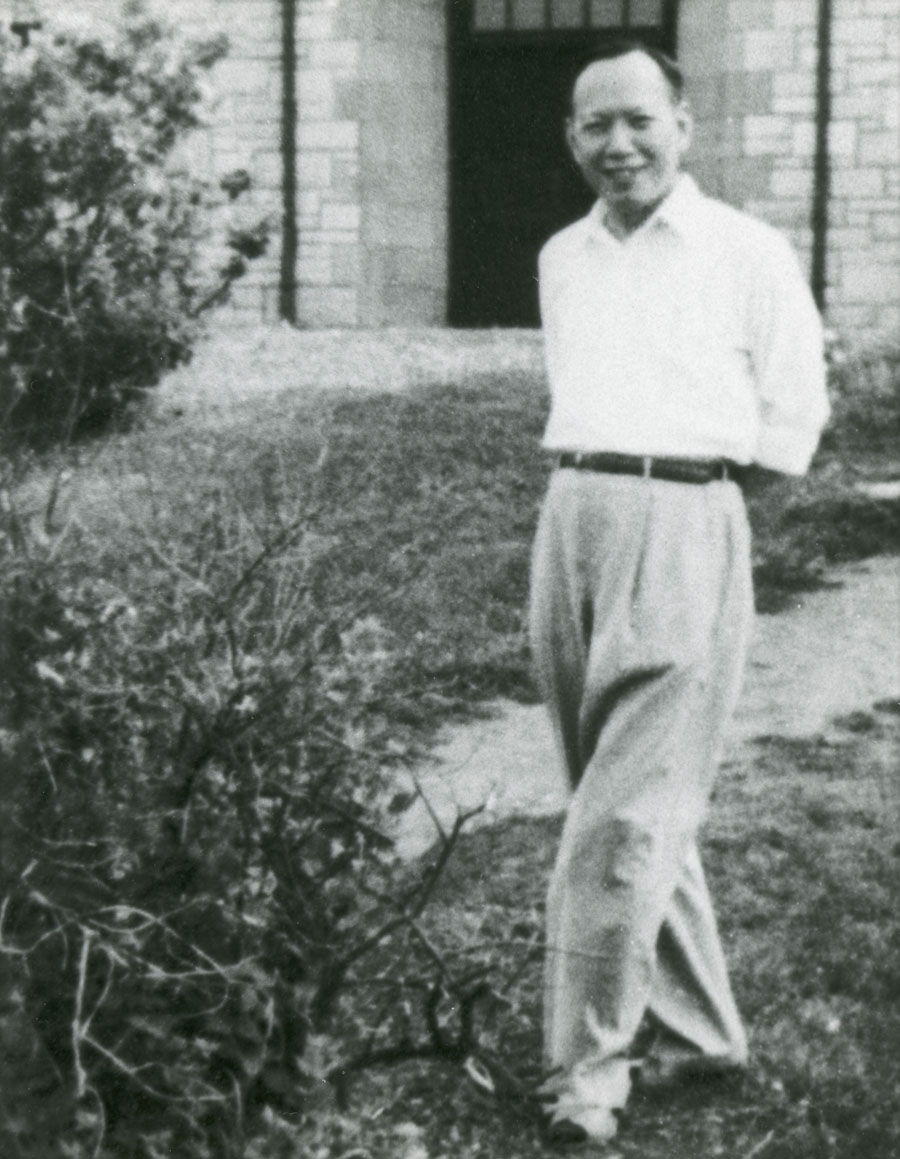
Halmos photographed Shiing-Shen Chern (1911-2004) in 1959. The famous differential geometer spent most of his career in the United States at the University of Chicago during the 1950s, and from 1960 onward at the University of California, Berkeley. He received the National Medal of Science in 1975, and was the first director of the Mathematical Sciences Research Institute (MSRI) in Berkeley from 1981 to 1984. Chern first visited the Institute for Advanced Study in Princeton during 1943-45, where he developed what would become known as Chern characteristic classes and "gave a now famous proof of the Gauss-Bonet formula" (MacTutor Archive). Chern and Halmos may have first met at the University of Chicago, where they were colleagues throughout the 1950s. Chern was a faculty member at Chicago from 1949 to 1960 and Halmos from 1946 to 1961. (Additional sources: "Interview with Shiing Shen Chern," AMS Notices 45:7, August 1998; "Shiing-Shen Chern (1911-2004)," AMS Notices 58:9, October 2011)
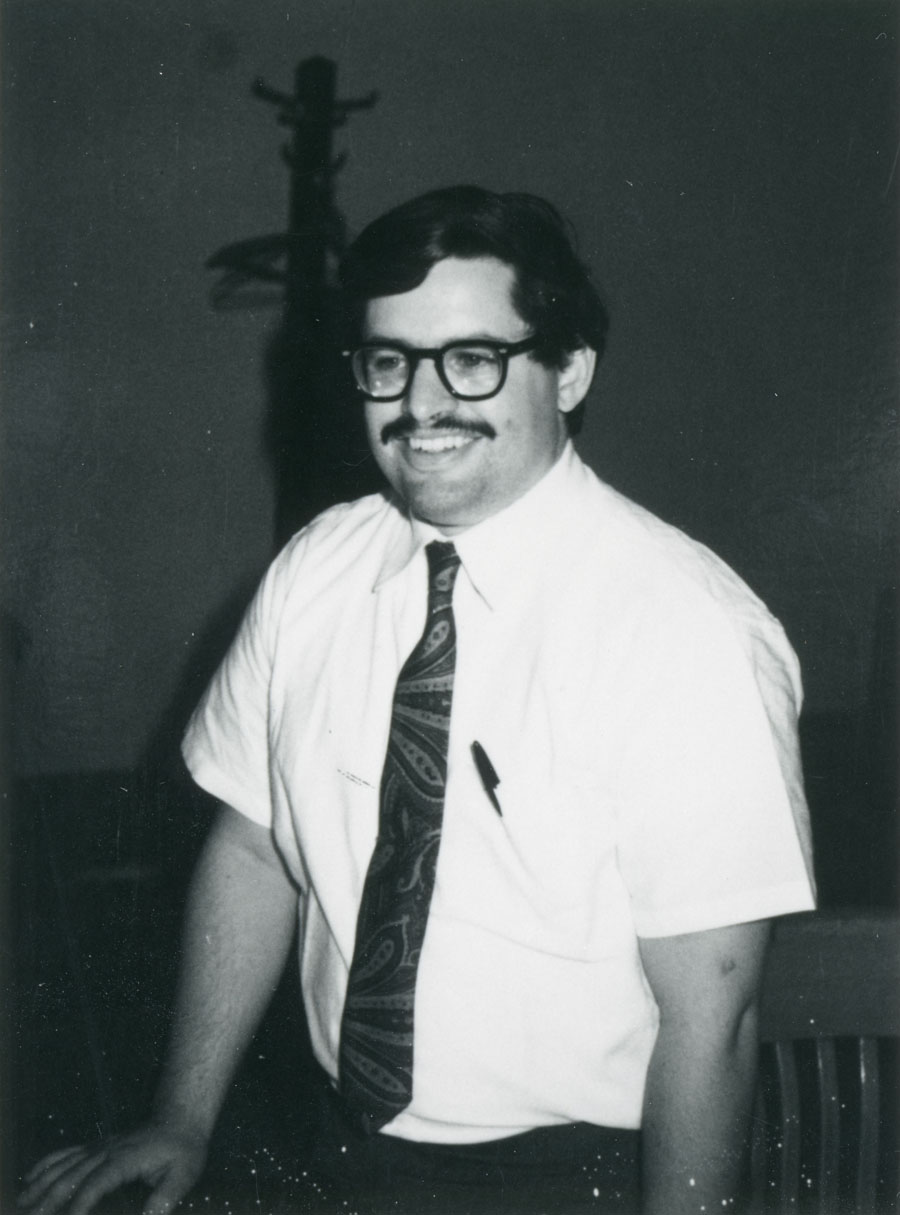
Halmos photographed his Ph.D. student Lewis Coburn in 1969 at Yeshiva University in New York City, where Coburn was a faculty member. Coburn remembers that his department "had some extra cash" and used it to invite three senior faculty members, including Halmos, to visit for two weeks each. He adds, "I don't remember the event at which this picture was taken, but it must have been something special because I was wearing a tie." Coburn earned his Ph.D. from the University of Michigan in 1964 with a dissertation titled, "Function Algebras and Hilbert Spaces" (Mathematics Genealogy Project). He is professor of mathematics at the State University of New York (SUNY) at Buffalo, where he is a functional analyst working in operator theory, C*-algebras, and quantum mechanics (SUNY Buffalo).
For an introduction to this article and to the Paul R. Halmos Photograph Collection, please see page 1. Watch for a new page featuring six new photographs each week during 2012.
Regarding sources for this page: Information for which a source is not given either appeared on the reverse side of the photograph or was obtained from various sources during 2011-12 by archivist Carol Mead of the Archives of American Mathematics, Dolph Briscoe Center for American History, University of Texas, Austin.
Who's That Mathematician? Paul R. Halmos Collection - Page 10
For more information about Paul R. Halmos (1916–2006) and about the Paul R. Halmos Photograph Collection, please see the introduction to this article on page 1. A new page featuring six photographs will be posted at the start of each week during 2012.
Paul Halmos photographed, from left to right, Richard Courant (1888–1972), Peter Lax, and Michael Atiyah (1929–2019) poolside at the Halmos home in Honolulu, Hawaii, on March 29, 1969. Halmos was a faculty member at the University of Hawaii during the 1968–69 academic year and invited many mathematical friends to visit. For a photo of Halmos' Ph.D. advisor, Joseph Doob, in Hawaii, see page 2 of this collection.
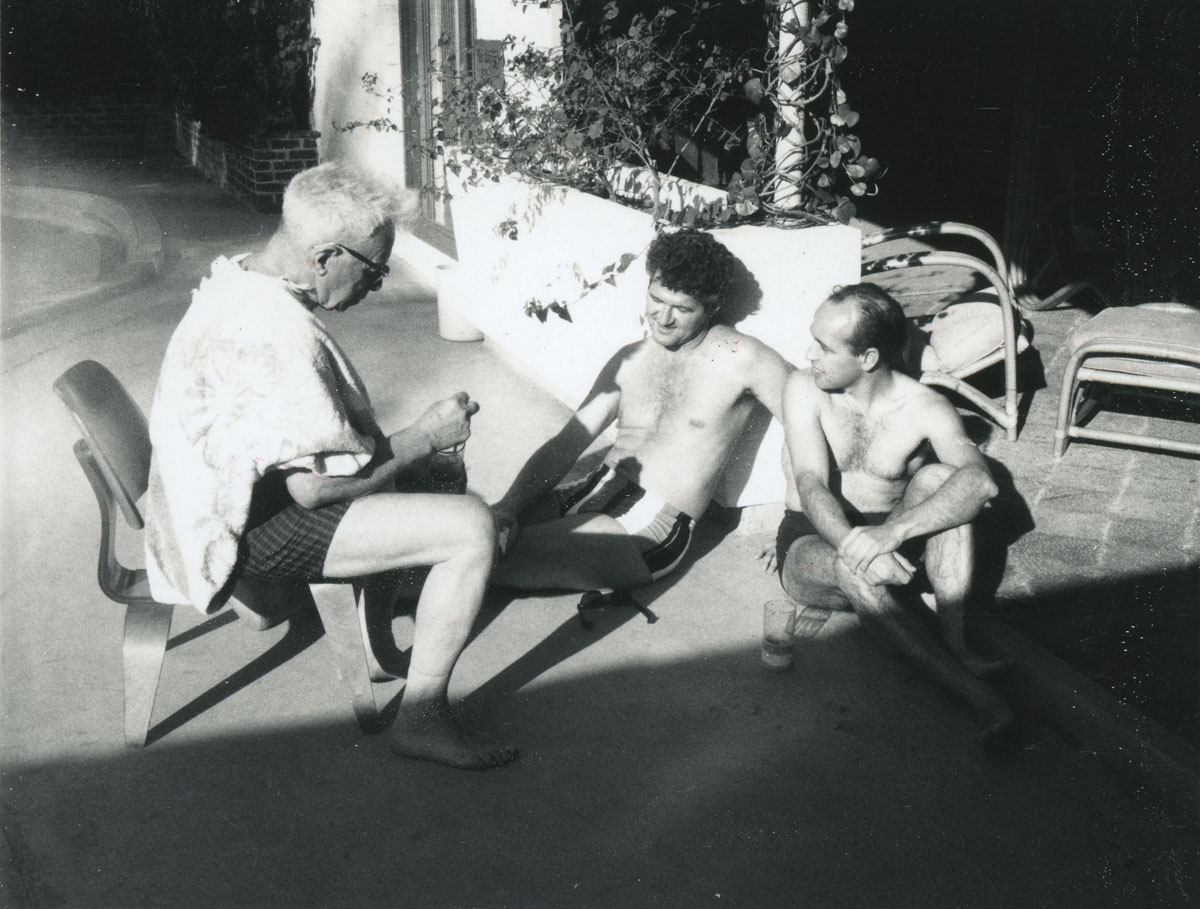
Richard Courant is best known as founder of the Courant Institute of Mathematical Sciences at New York University, whose faculty he began building in 1936. Courant already had established one Mathematical Institute, at Göttingen University in Germany, but the Nazis effectively dismantled its faculty when they came to power in 1933. An applied mathematician whose work was primarily in mathematical physics, Courant developed what is now known as the "finite element method." Both the finite element method and the Courant Institute acquired their present names during the 1960s. (Source: MacTutor Archive)
Peter Lax has spent most of his career at the Courant Institute at New York University, earning his Ph.D. there in 1949, becoming an instructor there in 1951, and directing the Institute during the 1970s. He is an applied mathematician with wide-ranging interests, mostly centered around differential equations and numerical methods for solving them. He may be best known for developing scattering theory with Ralph S. Phillips; see page 9 of this collection for a photo of Phillips (MacTutor Archive). He was president of the AMS in 1979-80 (AMS Presidents).
Sir Michael Atiyah, who was knighted in 1983, won the Fields Medal in 1966 and published his book K-theory, which included discussion of the Atiyah-Singer Index Theorem, in 1967 (MacTutor Archive). His Fields Medal was awarded for his work on K-theory; for the Index Theorem; and for a proof with Raoul Bott (see below) of a fixed point theorem related to the 'Lefschetz formula' (International Mathematical Union). Two more photographs of Atiyah can be found on page 2 of this collection.
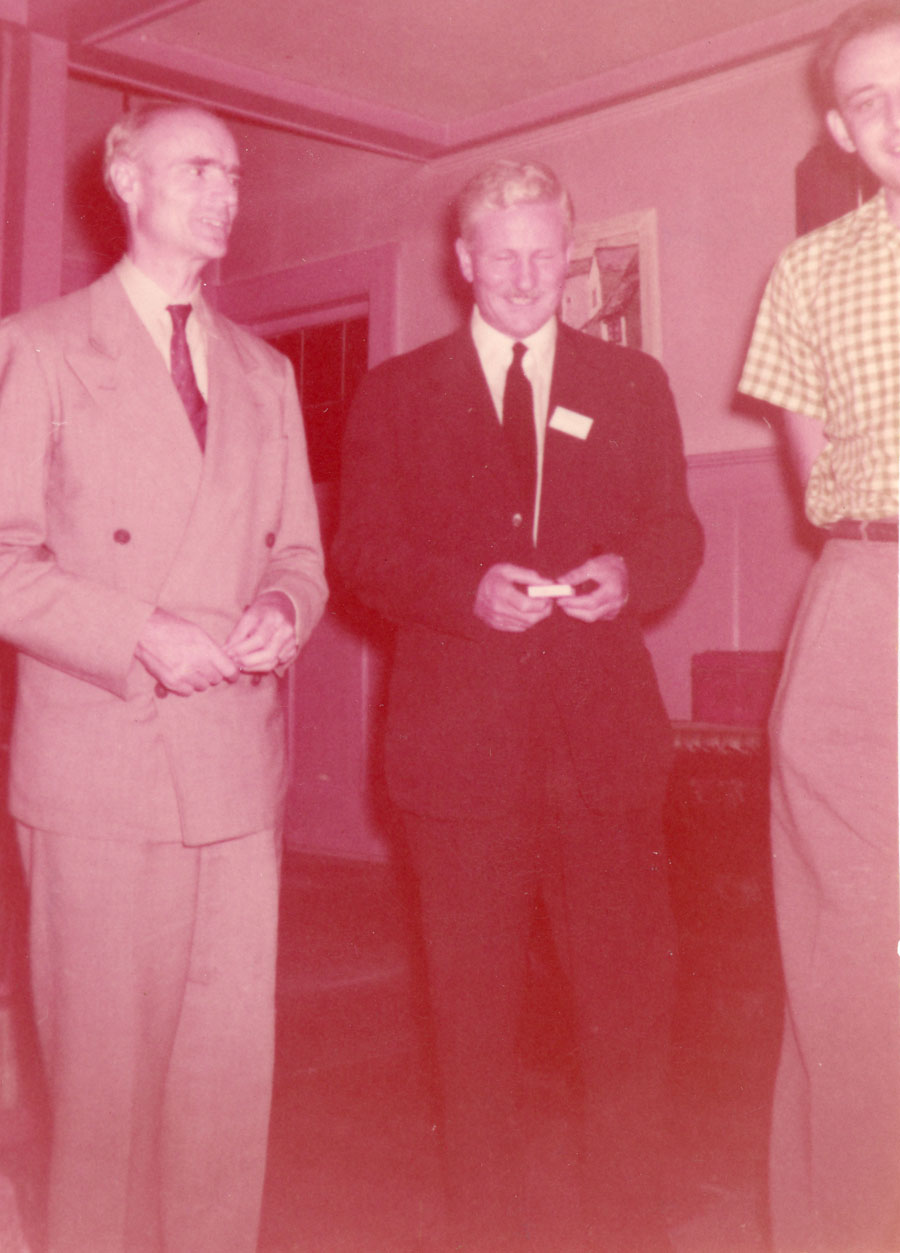
Halmos photographed, from left to right, H. S. M. (Donald) Coxeter (1907–2003), Gilbert Robinson (1906–1992), and Raoul Bott (1923–2005) in 1955. For two more photographs of Bott, see page 8 of this collection.
H. S. M. (Donald) Coxeter was president of the Canadian Mathematical Society (CMS Presidents) from 1965 to 1967 and, with G. de B. Robinson, founded the Canadian Journal of Mathematics (CMS: Robinson biography). A well-known geometer most famous for introducing Coxeter groups, he spent his career at the University of Toronto (CMS: Coxeter biography). O'Connor and Robertson see beauty and symmetry as Coxeter's primary mathematical concerns, citing also his friendships with artist Maurits Escher and architect Buckminster Fuller (MacTutor Archive).
Gilbert de Beauregard Robinson was president of the Canadian Mathematical Society (CMS Presidents) from 1953 to 1957 and, with H. S. M. Coxeter, founded the Canadian Journal of Mathematics. A symmetric group theorist (CMS: Robinson biography) who earned his Ph.D. from Cambridge in 1931, he spent most of his career at the University of Toronto (Mathematics Genealogy Project).
Raoul Bott was an engineer-turned-mathematician who produced many important results in topology and differential geometry throughout his career and whose Ph.D. students included two Fields medalists. In fact, his first Ph.D. student was future Fields Medalist Stephen Smale, who earned his degree from the University of Michigan in 1957. Bott spent most of his career at Harvard, where one of his early Ph.D. students (1964) was future Fields Medalist Daniel Quillen. Bott’s own Ph.D. was from Carnegie-Mellon University, earned in 1949 for his dissertation on “Electrical Network Theory,” reflecting his interest up to that time in electrical engineering. (Sources: MacTutor Archive, Mathematics Genealogy Project)
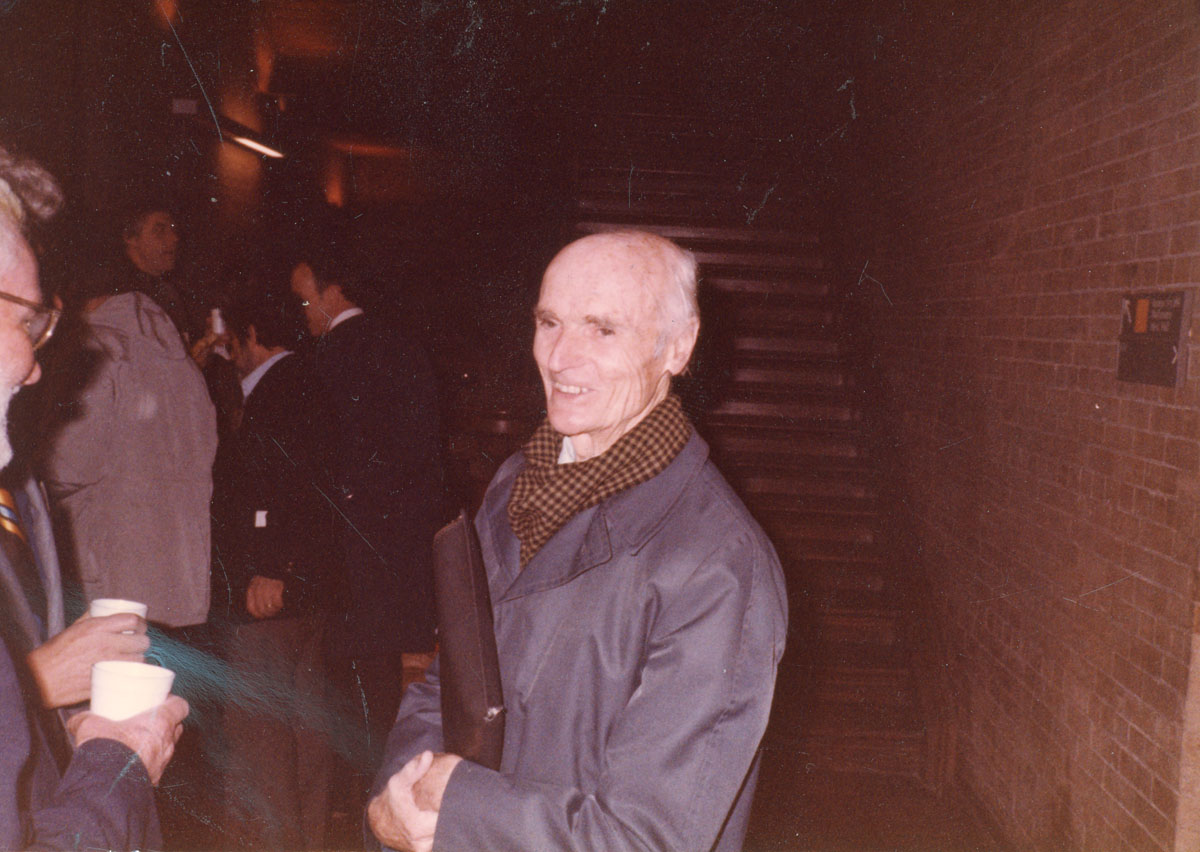
Donald Coxeter was photographed again in November of 1983 at a mathematics meeting in Toronto, Ontario, Canada. He was professor of mathematics at the University of Toronto from 1936 onward. (See "H. S. M. Coxeter (1907-2003)," AMS Notices 50:10, November 2003.)
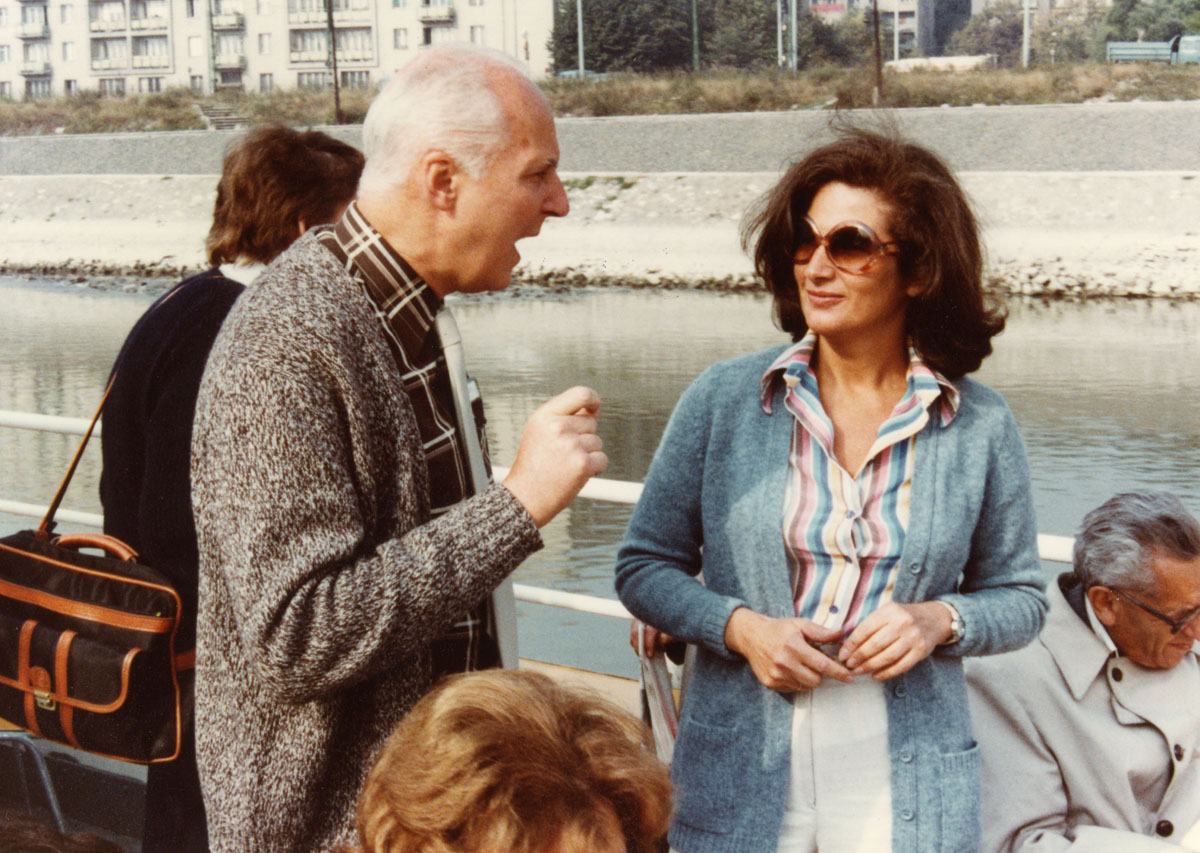
Halmos photographed Ákos Császár and Vera Sós in Visegrád, Hungary, in August of 1980. Both Császár and Sós have spent most of their careers at Eötvös Loránd University in Budapest, Hungary, and both have been associated with the Hungarian Academy of Sciences in Budapest as well (Mathematics Genealogy Project). Császár may be most famous for his discovery of the Császár polyhedron (Science News). Sós is a graph theorist who currently is a researcher in the combinatorics and discrete mathematics group at the Alfréd Rényi Institute of Mathematics, Hungarian Academy of Sciences (Rényi Institute Research Fellows). And, yes, that sure looks like Paul Erdös sitting to the right of Sós!
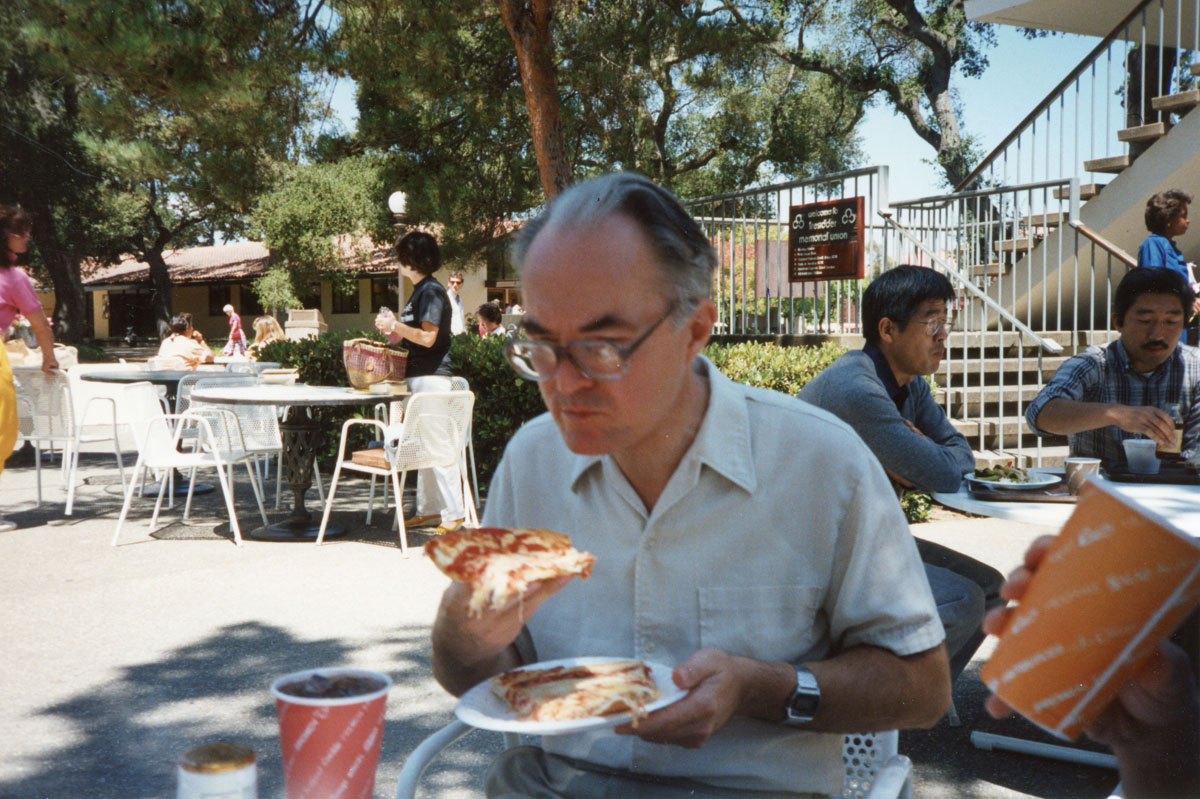
Halmos photographed Imre Csiszár in about 1987. Csiszár earned his Ph.D. in 1968 from the Hungarian Academy of Sciences with a dissertation on information theory written under the famous Hungarian mathematician Alfréd Rényi (Mathematics Genealogy Project). Since 1968, he has been head of the information theory research group at what is now the Alfréd Rényi Institute of Mathematics, Hungarian Academy of Sciences, Budapest. He also is a professor at Eötvös University and the Technical University in Budapest. His c.v. indicates that he was a visiting professor at Stanford University in Palo Alto, California, at some point during his career, and we wonder if this photograph was taken during his time there (Rényi Institute Research Fellows, Rényi Institute Csiszár homepage). He received the Claude E. Shannon Award for "consistent and profound contributions to information theory" in 1996 (IEEE Information Theory Society) and the Richard W. Hamming Medal for “contributions to information theory, information-theoretic security, and statistics” in 2015 (IEEE Hamming Medal Recipients).
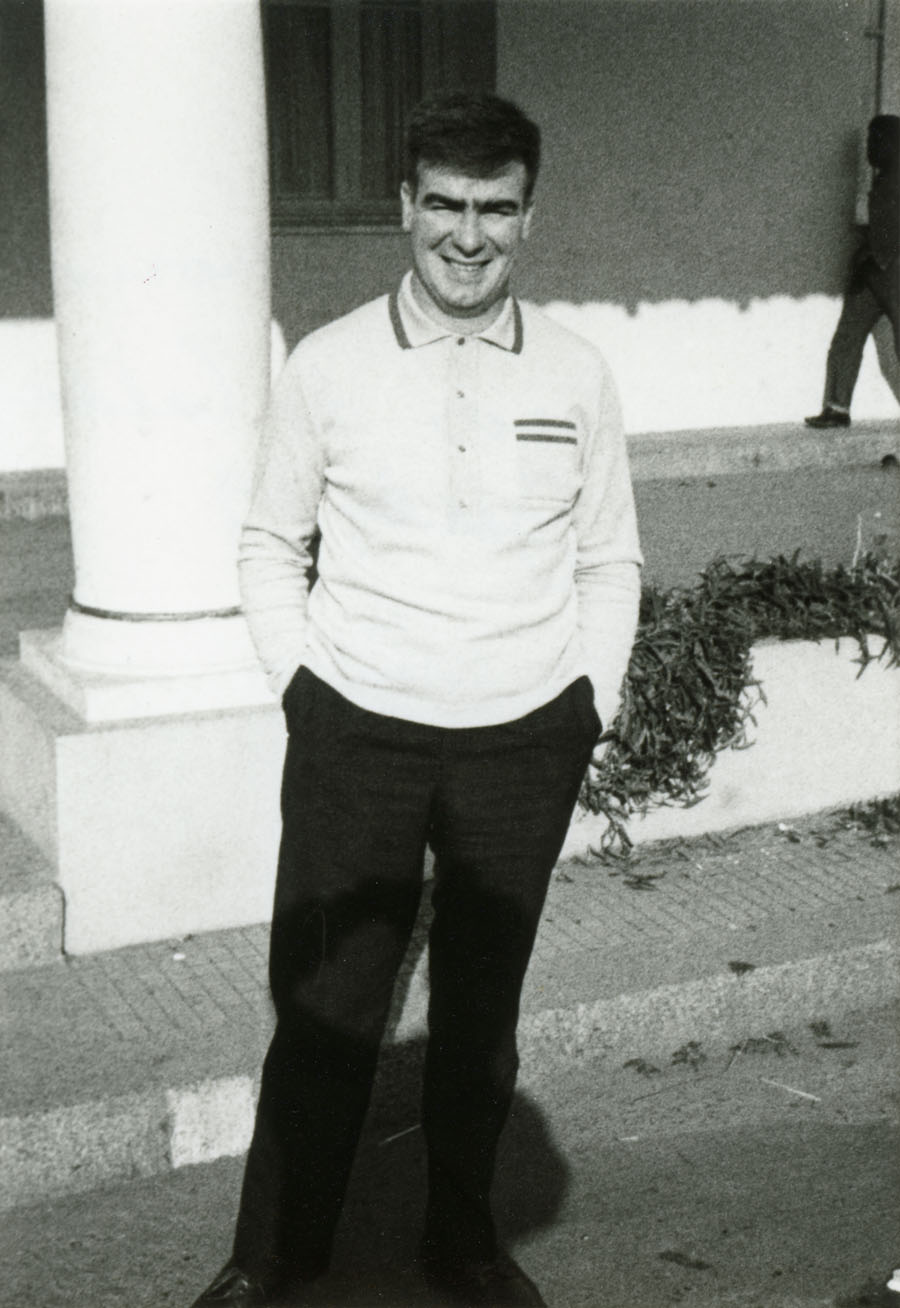
Ubiratan "Ubi" D'Ambrosio was photographed by Halmos at the Seventh Brazilian Mathematics Colloquium in Poços de Caldas, Brazil, on July 1, 1969. One of the founders and leaders of the cultural and mathematical area of study known as ethnomathematics, D'Ambrosio earned his Ph.D. in functional analysis at the University of São Paulo, Brazil, in 1963, and now is professor emeritus of mathematics at the State University of Campinas (UNICAMP) in São Paulo, Brazil (Nexus Network Journal biography, Mathematics Genealogy Project).
For an introduction to this article and to the Paul R. Halmos Photograph Collection, please see page 1. Watch for a new page featuring six new photographs each week during 2012.
Regarding sources for this page: Information for which a source is not given either appeared on the reverse side of the photograph or was obtained from various sources during 2011–12 by archivist Carol Mead of the Archives of American Mathematics, Dolph Briscoe Center for American History, University of Texas, Austin.
Who's That Mathematician? Paul R. Halmos Collection - Page 11
For more information about Paul R. Halmos (1916-2006) and about the Paul R. Halmos Photograph Collection, please see the introduction to this article on page 1. A new page featuring six photographs will be posted at the start of each week during 2012.

Paul Halmos photographed Donald Albers and George Dantzig (1914-2005) in Menlo Park, California, in February of 1985.
Albers served as MAA Director of Publications from 1991 to 2006, then as Editorial Director of MAA Books from 2006 to 2011, and now is Senior Acquisitions Editor for MAA Publications. He was the founding editor of the MAA's magazine for students, Math Horizons, and may be best known for his interviews and profiles of mathematicians, many of them published in MAA journals and in the books Mathematical People and More Mathematical People, co-authored with Gerald Alexanderson, whose photograph appears on page 1 of this collection, and Constance Reid. In 1985, Albers was a mathematics professor at Menlo College.
Dantzig earned his Ph.D. from the University of California, Berkeley, in 1946 and then returned to his wartime job as a statistican for the U.S. Air Force. He continued to develop what would become known as linear programming and, in 1947, he invented the simplex method of optimization. In 1952, he moved to the RAND Corporation, where he was able to to implement linear programming on computers. He became a professor of operations research at Berkeley in 1960, but in 1966 he moved across the bay to Stanford University (MacTutor Archive). Dantzig advised at least 50 Ph.D. theses, 11 of them at Berkeley and 40 at Stanford (Mathematics Genealogy Project). He received the National Medal of Science in 1975. (Sources: MacTutor Archive, Mathematics Genealogy Project; see also AMS Notices 54:3 March 2007.)
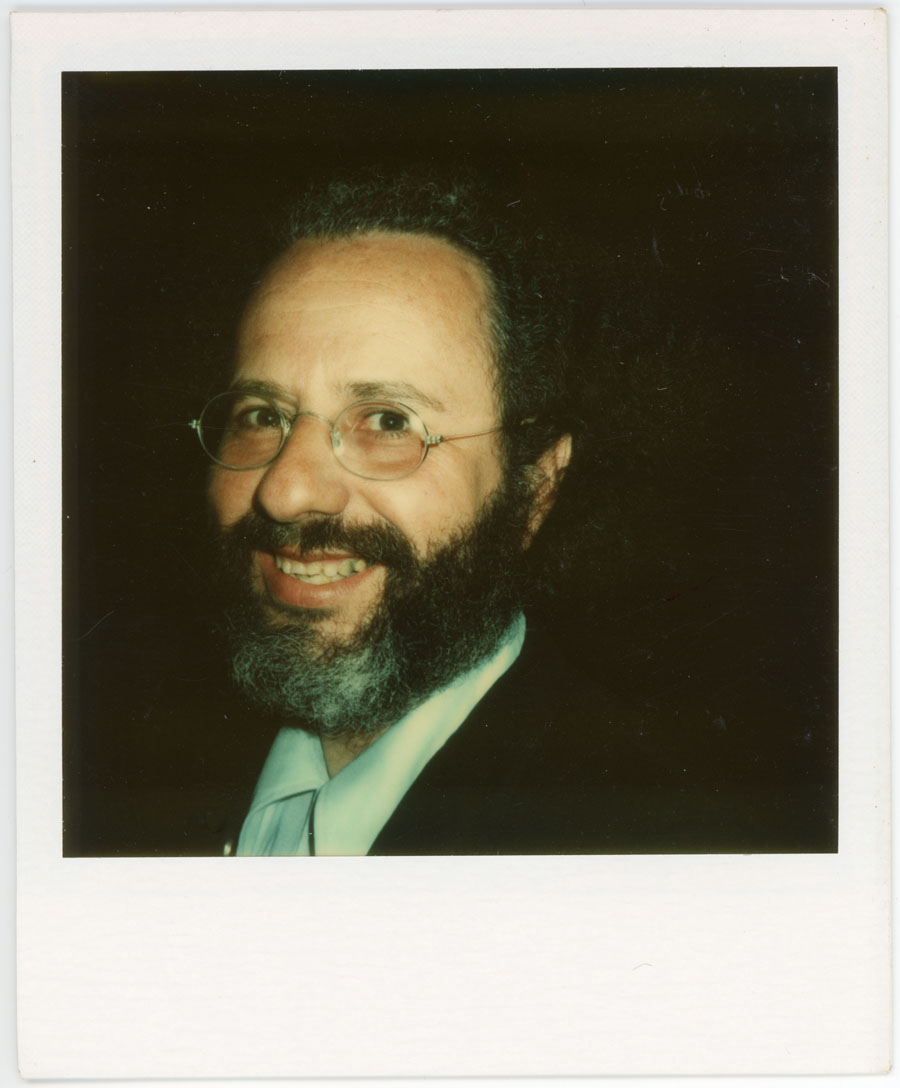
Halmos photographed Martin Davis at the American Mathematical Society (AMS) Hilbert Problems Conference in DeKalb, Illinois, on May 14, 1974. Davis contributed to the solution of Hilbert's Tenth Problem during the late 1950s and early 1960s (MacTutor Archive). "The crucial final step in the solution of the problem," as Davis describes it, was provided by Russian mathematician Yuri Matiyasevich (or Matijasevic) in 1970. "A paper by Hilary Putnam, Julia Robinson, and me ... had reduced the problem to finding a single equation that satisfied a certain exponential growth condition. What Yuri's beautiful proof did was to provide just such an equation."
In 1973, Davis published a widely read paper explaining the proof (MacTutor Archive), but he himself points to the more forward-looking "Hilbert's tenth problem. Diophantine equations: Positive aspects of a negative solution," co-authored with Matiyasevich and Robinson, in the AMS volume Mathematical Developments Arising from Hilbert Problems (1976). The solution to "H10" is known as the "MRDP Theorem" in recognition of the four mathematicians who contributed significantly to its proof. Davis earned his Ph.D. in mathematical logic at Princeton in 1950 with the dissertation, "On the Theory of Recursive Unsolvability." He then taught at several universities, including Yeshiva University in New York City from 1960 to 1965, but spent most of his career at the Courant Institute of Mathematical Sciences, New York University, where he is now emeritus (MacTutor Archive).
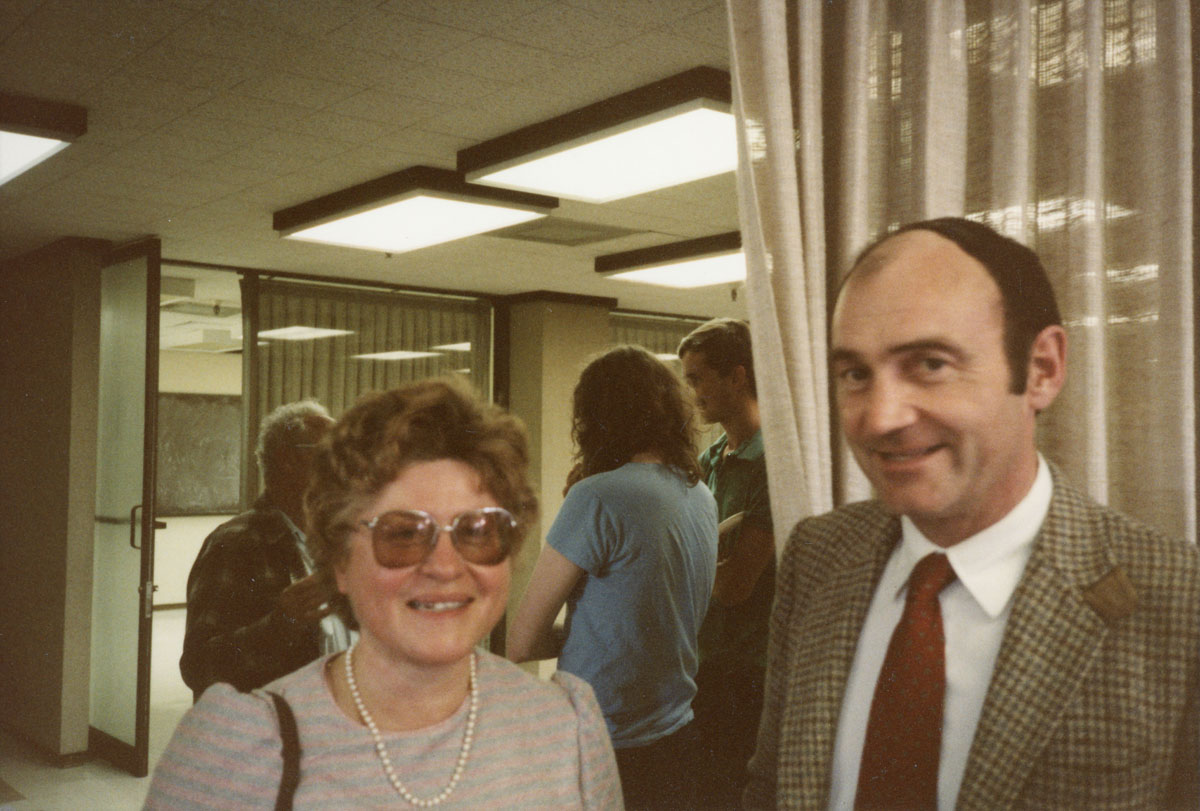
Louis de Branges and his wife Tatiana Jakimov de Branges are photographed at Stanford University in Palo Alto, California, in April of 1985. De Branges earned his Ph.D. at Cornell University in 1957 with a dissertation on "Local Operators on Fourier Transforms" and has spent most of his career at Purdue University, where he is Edward C. Elliott Distinguished Professor of Mathematics. From the late 1950s onward, he has worked on Hilbert spaces of entire functions, always with an eye toward proving the Riemann Hypothesis. In 1984 this work led not to a proof of the Riemann Hypothesis, but to a proof of the Bieberbach Conjecture, which, as O'Connor and Robertson of the MacTutor Archive point out, should now rightly be known as "de Branges' Theorem" (MacTutor Archive). De Branges' current work on the Riemann Hypothesis is posted at his Purdue University webpage.
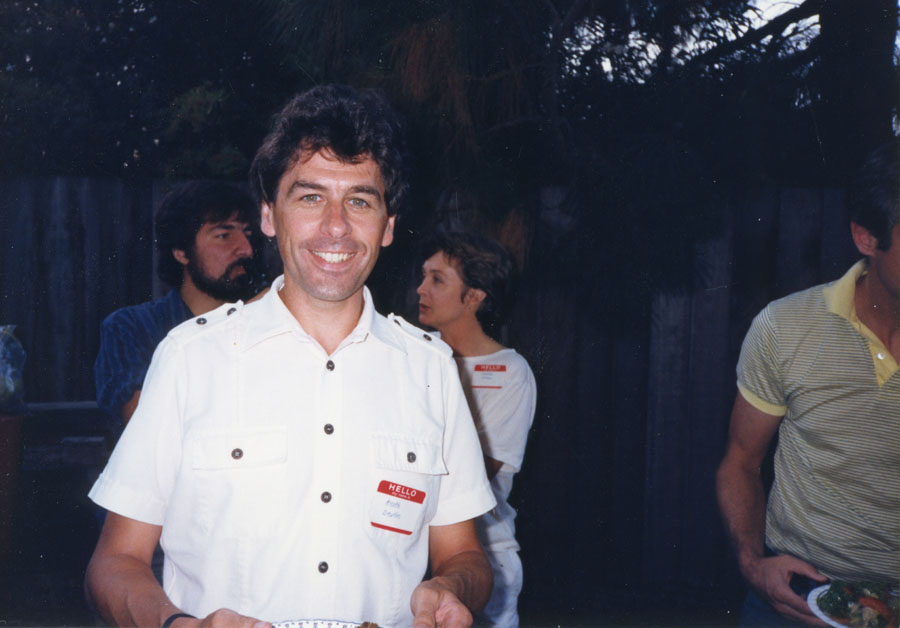
Keith Devlin is pictured at Stanford University in September of 1987. Devlin had just begun a 1987-89 visit to Stanford University as a professor of mathematics and philosophy, while photographer Halmos had joined the faculty of nearby Santa Clara University in 1985. Devlin also became a researcher at Stanford University's Center for the Study of Language and Information in 1987. He would return to the Bay Area for good in 1993, taking positions at St. Mary's College and Stanford University. He currently is director of the Human-Sciences and Technologies Advanced Research Institute (H-STAR) at Stanford University. Originally trained as a logician, with a Ph.D. from the University of Bristol, U.K., in 1971, his main interest today is to use "different media to teach and communicate mathematics to diverse audiences." He is a prolific author of popular mathematics books, and popularizes mathematics on television and radio as well (Stanford University webpage).

Halmos photographed Joseph Diestel at Kent State University in Kent, Ohio, on June 1, 1975. Diestel earned his Ph.D. in functional analysis from the Catholic University of America in 1968. He has spent most of his career at Kent State University in Kent, Ohio, where his first Ph.D. student (in 1974) was Barbara Faires, current MAA Secretary. According to the Mathematics Genealogy Project, Diestel has advised at least 23 Ph.D. dissertations in functional analysis, operator theory, and measure and integration theory. Six of his Ph.D. students earned their degrees at universities in Spain, Venezuela, South Africa, and Italy. He is now professor emeritus of mathematics at Kent State (Kent State emeritus faculty webpage).
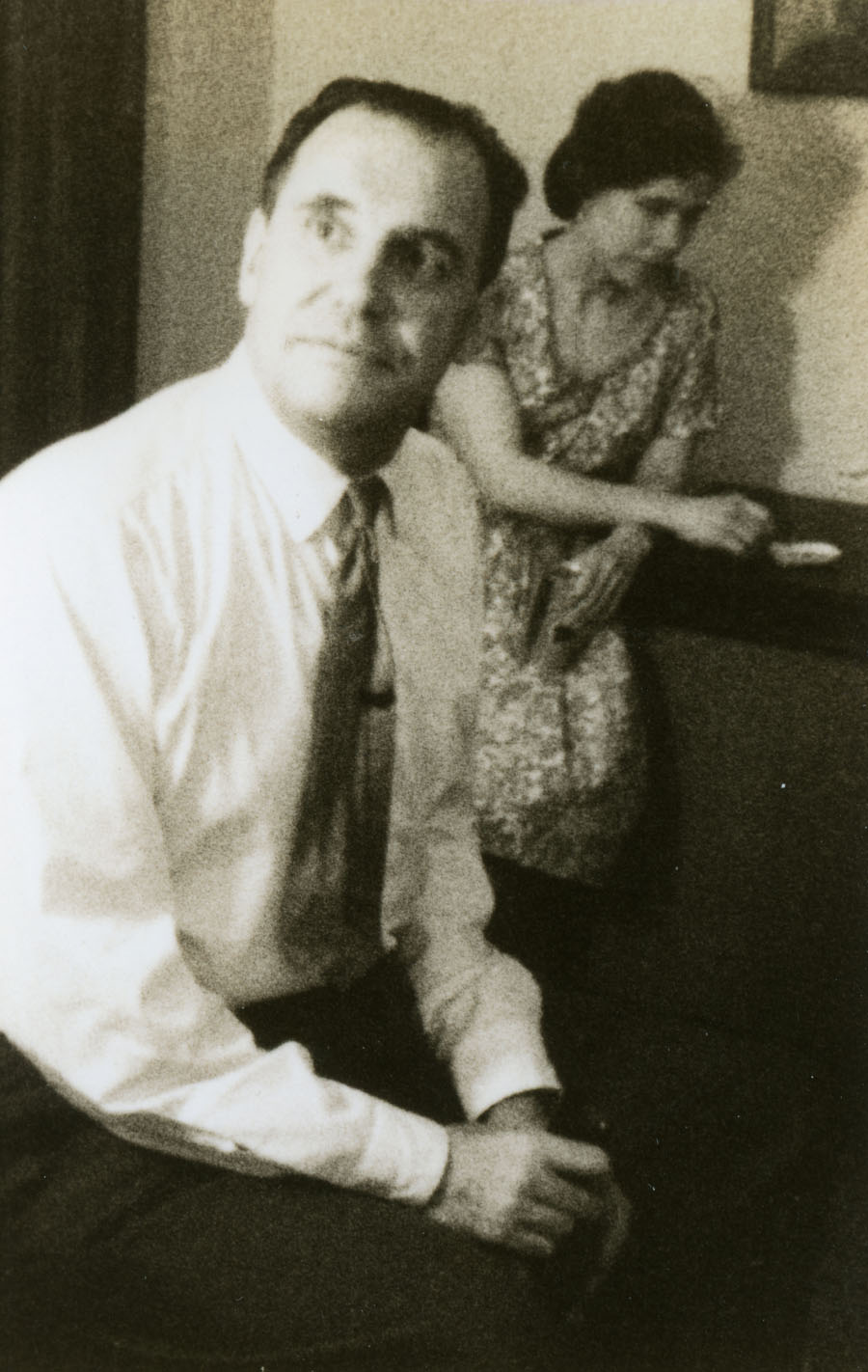
Halmos photographed Jean Dieudonné (1906-1992) and Carol Hughes on May 1, 1962. Dieudonne earned his Ph.D. at the École Normale Supérieure Paris in 1931. Soon after, he became a founding member of the Bourbaki and credited the group with expanding his mathematical horizons beyond the classical analysis in which he had been trained. According to O'Connor and Robertson of the MacTutor Archive, Dieudonné "was the leading influence in a group whose whole object was to avoid anyone taking on this role," and they quote Armand Borel's and Pierre Cartier's descriptions of him as the final drafter of the first 30 Bourbaki volumes. Dieudonné worked in general topology, topological vector spaces, algebraic geometry, invariant theory, and classical groups. He also wrote histories of functional analysis, algebraic geometry, and algebraic and differential topology, and edited the works of Camille Jordan. (Source: MacTutor Archive)
For an introduction to this article and to the Paul R. Halmos Photograph Collection, please see page 1. Watch for a new page featuring six new photographs each week during 2012.
Regarding sources for this page: Information for which a source is not given either appeared on the reverse side of the photograph or was obtained from various sources during 2011-12 by archivist Carol Mead of the Archives of American Mathematics, Dolph Briscoe Center for American History, University of Texas, Austin.
Who's That Mathematician? Paul R. Halmos Collection - Page 12
For more information about Paul R. Halmos (1916-2006) and about the Paul R. Halmos Photograph Collection, please see the introduction to this article on page 1. A new page featuring six photographs will be posted at the start of each week during 2012.
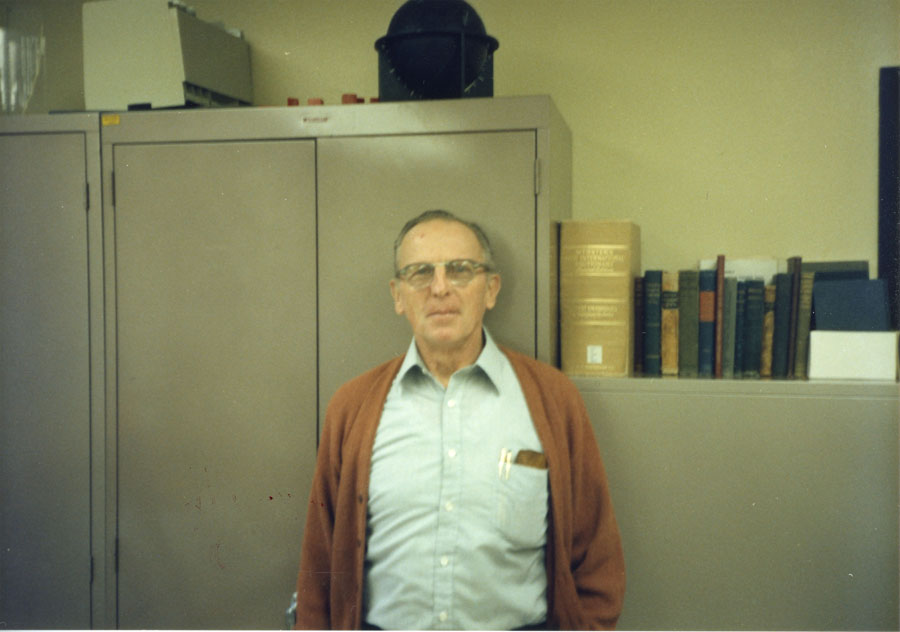
Halmos photographed Robert Dilworth (1914-1993) in October 1985 in Chico, California. Dilworth earned his Ph.D. at the California Institute of Technology (Caltech) in Pasadena, Calif., in 1939 with a thesis on lattice theory. After three years at Yale, he returned to Caltech in 1943, and spent his career there successfully transforming lattice theory "from being merely a tool of other disciplines to an important subject in its own right" (O'Connor and Robertson, MacTutor Archive). He also was interested in mathematics education, serving on various committees and boards to improve mathematics education in the U.S. and working on a project during the 1960s to develop primary and secondary mathematics curricula for various African nations (MacTutor Archive).
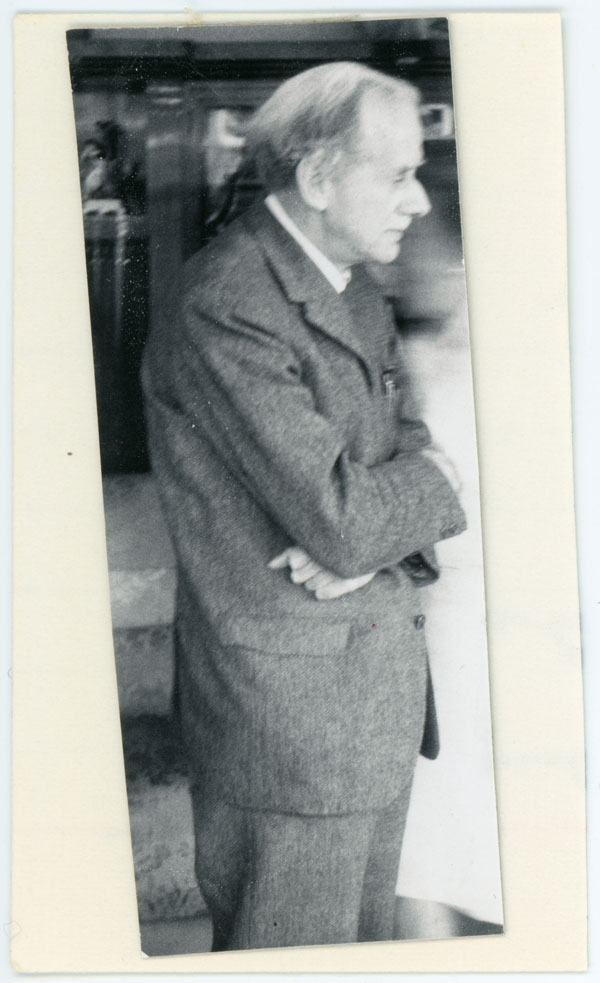
Paul Dirac (1902-1984) was photographed at a conference at Cambridge University on June 6, 1968. Dirac earned his Ph.D. at Cambridge in 1926 with a dissertation titled simply "Quantum Mechanics." In this dissertation, he formulated "for the first time a mathematically consistent general theory of quantum mechanics in correspondence with Hamiltonian mechanics," according to physicist Peter Higgs (quoted by O'Connor and Robertson, MacTutor Archive). By 1928, Dirac had connected quantum mechanics to relativity theory; during 1927-29, he travelled around the world (literally) visiting physicists and giving lectures; in 1932 he became Lucasian Professor of Mathematics at Cambridge; and in 1933 he was awarded the Nobel Prize in Physics for his work in quantum theory. Dirac retired from Cambridge in 1969 and moved to Florida, where he soon accepted a professorship at Florida State University in Tallahassee and continued his research and his travels. (Additional source: Nobel Prize Biography from Nobel Lectures, Physics 1922-1941, Elsevier Publishing Company, Amsterdam, 1965)
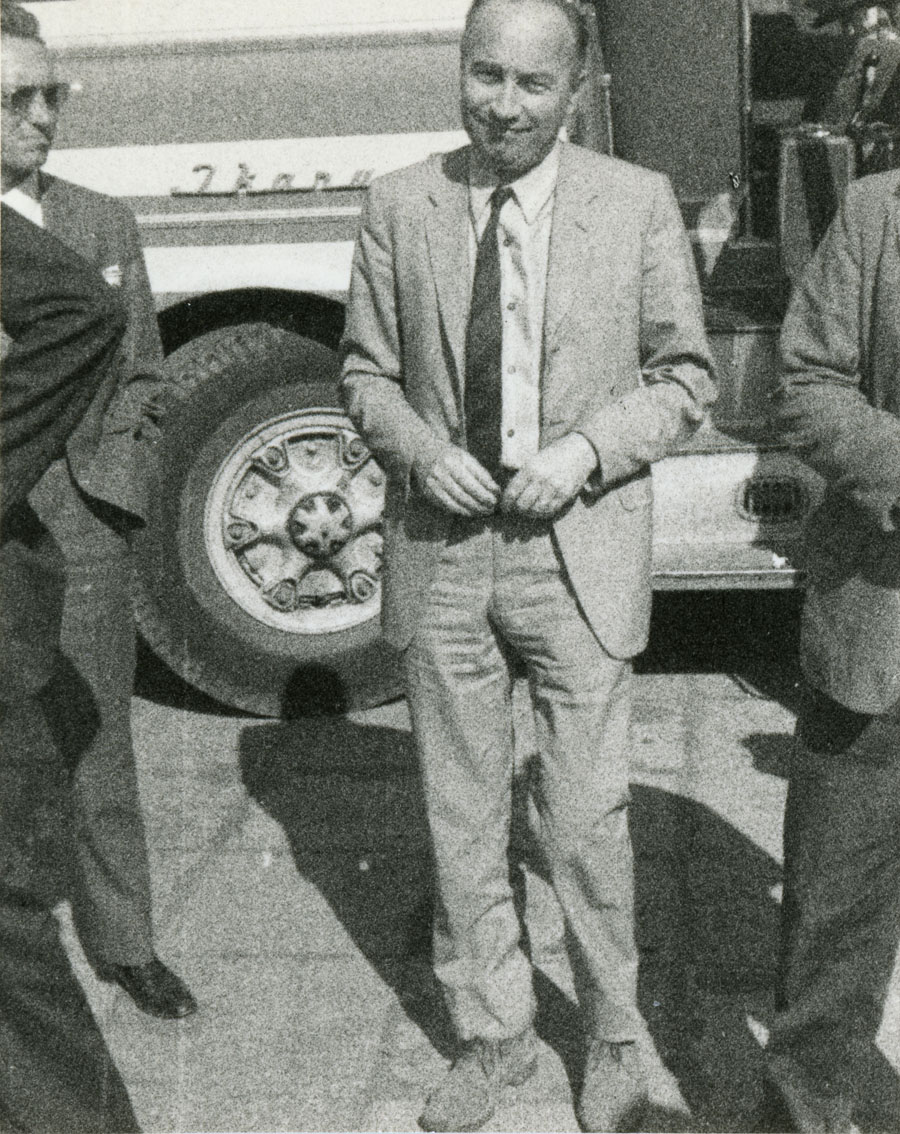
Halmos photographed Jacques Dixmier in September 1970 at a conference in Tihany, Hungary. Dixmier earned his Ph.D. in 1949 at the University of Paris under Gaston Julia and spent most of his career at various branches of the University of Paris, advising 20 Ph.D. students in all. He learned about Hilbert spaces from Julia and made them his initial research area. Like Jean Dieudonné (see page 11 of this collection), he credits his participation in the Bourbaki from 1949 onward with introducing him to new (albeit related) research areas, including operator algebras, C*-algebras, unitary representation theory, enveloping algebras, and invariant theory. (Source: Martin Raussen, "Interview with Jacques Dixmier," Newsletter of the European Mathematical Society, June 2009, 34-41, ISSN 1027-488X)
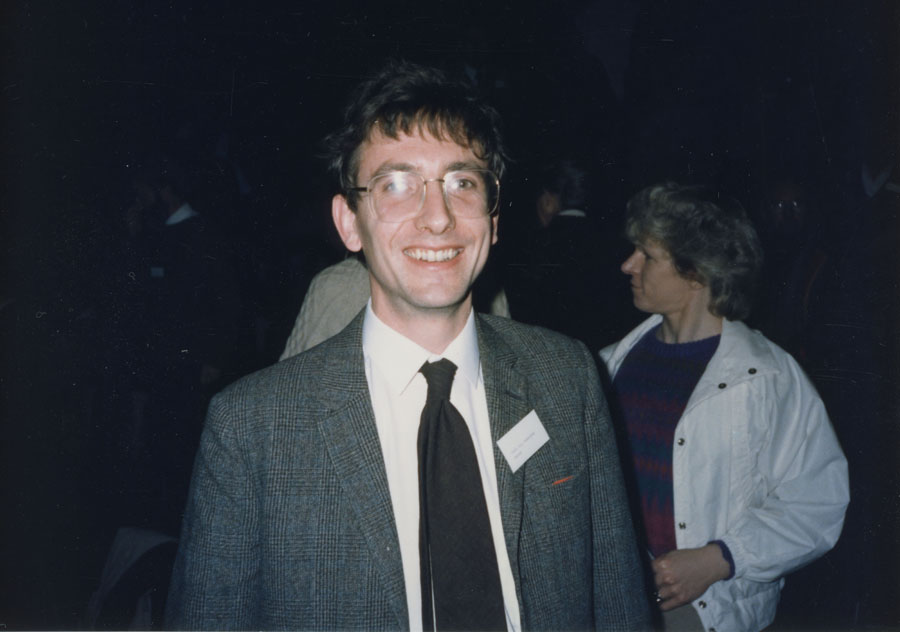
Simon Donaldson is pictured in April 1986 at the British Mathematical Colloquium in Hull, England. Paul Halmos was a plenary speaker at this BMC, on "Fifty Years of Linear Algebra: A Personal Reminiscence," and Donaldson a "morning speaker" on "Geometry of 4-manifolds" (MacTutor Archive). Donaldson was awarded the Fields Medal a few months later at the 1986 International Congress of Mathematicians in Berkeley, California, "primarily for his work on topology of four-manifolds, especially for showing that there is a differential structure on [Euclidean] four-space which is different from the usual structure" (IMU Fields Medallists). His Ph.D. advisor, Michael Atiyah, wrote in the ICM Proceedings (quoted by O'Connor and Robertson, MacTutor Archive):
In 1982, when he was a second-year graduate student, Simon Donaldson proved a result that stunned the mathematical world. ... Donaldson's result implied that there are "exotic" 4-spaces, i.e. 4-dimensional differentiable manifolds which are topologically but not differentiably equivalent to the standard Euclidean 4-space .... What makes this result so surprising is that n = 4 is the only value for which such exotic n-spaces exist.
Donaldson earned his doctorate at Oxford University in 1983 with the dissertation "The Yang-Mills Equations on Kähler Manifolds," and was Wallis Professor of Mathematics at Oxford until he moved to Imperial College, London, in 1999. He has advised at least 40 Ph.D. students, most of them at Oxford, but, since 2002, eight of them at the University of London and one (2009) at Imperial College (Mathematics Genealogy Project and MacTutor Archive).
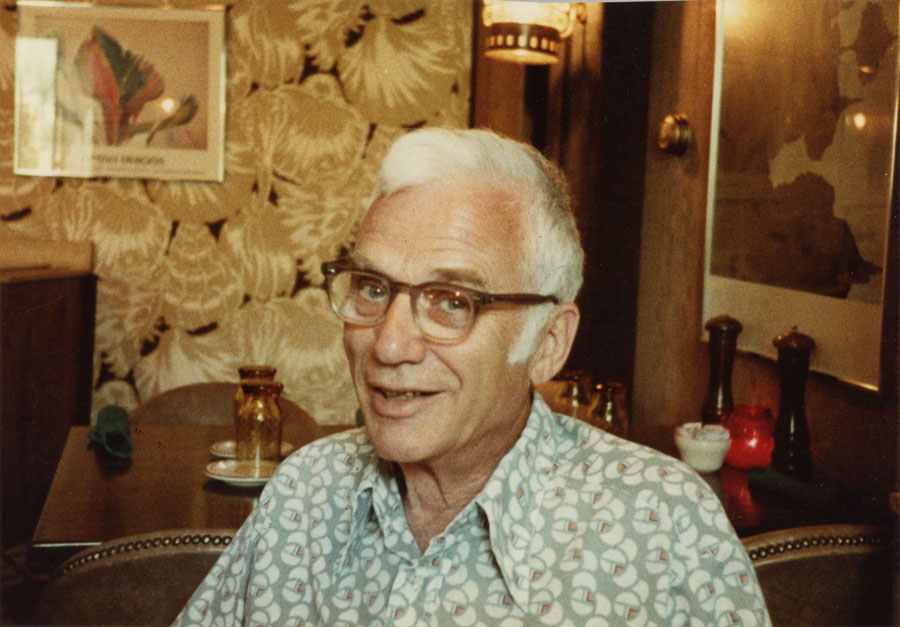
Halmos photographed his Ph.D. advisor Joseph Doob (1910-2004) in July 1984 in Urbana, Illinois. Doob earned his Ph.D. at Harvard University in 1932 on "Boundary Values of Analytic Functions." He first studied his specialty, probability, under the direction of statistician Harold Hotelling, during the final year, 1934-35, of a three-year post-doctoral position at Columbia University. In 1935, he became a mathematics professor at the University of Illinois, Urbana-Champaign, where he spent the rest of his career. Paul Halmos was Doob's very first Ph.D. student at Illinois, graduating in 1938, and Warren Ambrose (1939) and David Blackwell (1941) soon followed. All three wrote dissertations in probability theory (MacTutor Archive). For a photograph of Doob, Halmos, Ambrose, and Blackwell, see page 1 of this collection; for a photo of Ambrose, see page 1; and for photos of Blackwell, see page 7. Additional photos of Joseph Doob appear below and on page 2 of this collection.
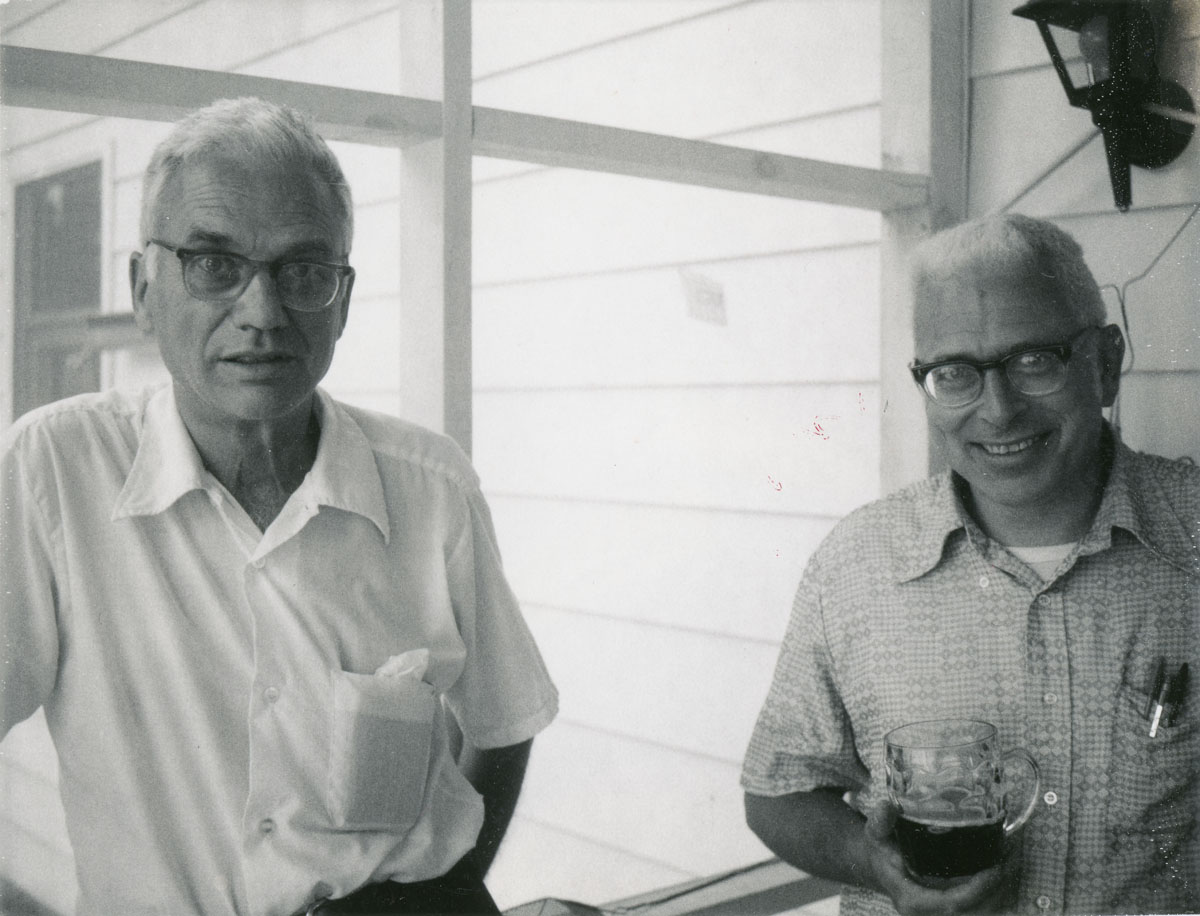
Joseph Doob and Murray Rosenblatt were photographed on August 1, 1974, in Bloomington, Indiana, where Halmos was professor of mathematics at Indiana University.
Joseph Doob's specialties were probability and measure theory, including stochastic processes, martingale theory, and potential theory (MacTutor Archive). He served as president of the American Mathematical Society in 1963-64 (AMS Presidents) and received the National Medal of Science in 1979 (MacTutor Archive).
Probabilist and statistician Murray Rosenblatt earned his Ph.D. at Cornell University in 1949 under advisor Mark Kac. After stints at the University of Chicago (where he and Halmos probably first met), Indiana University, and Brown University, he moved in 1964 to the brand-new University of California, San Diego, where he is now emeritus. Although Rosenblatt's specialties are time series and Markov processes, his research has spanned a variety of topics in probability and statistics. He has advised at least 22 Ph.D. theses. (Sources: Mathematics Genealogy Project; UC San Diego Mathematics Department; History of UC San Diego; D. R. Brillinger and R. A. Davis, "A Conversation with Murray Rosenblatt," Statistical Science 24:1 (2009), 116–140, DOI: 10.1214/08-STS267)
For an introduction to this article and to the Paul R. Halmos Photograph Collection, please see page 1. Watch for a new page featuring six new photographs each week during 2012.
Regarding sources for this page: Information for which a source is not given either appeared on the reverse side of the photograph or was obtained from various sources during 2011-12 by archivist Carol Mead of the Archives of American Mathematics, Dolph Briscoe Center for American History, University of Texas, Austin.
Who's That Mathematician? Paul R. Halmos Collection - Page 13
For more information about Paul R. Halmos (1916–2006) and about the Paul R. Halmos Photograph Collection, please see the introduction to this article on page 1. A new page featuring six photographs will be posted at the start of each week during 2012.

Halmos photographed operator theorist Ronald G. Douglas (1938–2018) in 1966, possibly at the University of Michigan in Ann Arbor, where both were mathematics professors at the time. Douglas earned his Ph.D. at Louisiana State University in 1962 with the dissertation "Structure of L(p) Spaces." He advised at least 24 Ph.D. students, most of them at the State University of New York, Stony Brook (Mathematics Genealogy Project), where he was a professor and administrator from 1969 to 1996. He then became Distinguished Professor of Mathematics at Texas A & M University in College Station, where he has held both administrative and faculty positions since 1996 (Texas A & M University).
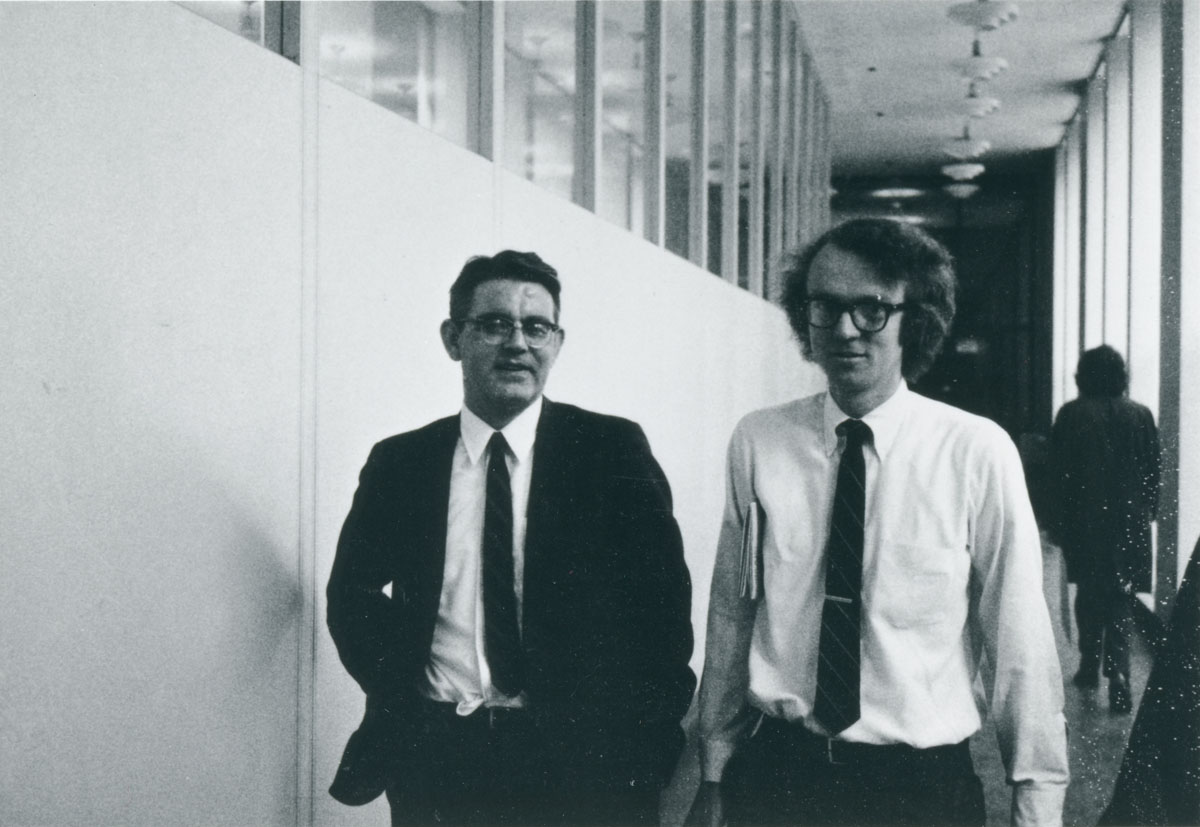
MIT professors and probabilists Daniel Ray (d. 1979) and Richard Dudley were photographed in 1971. Ray earned his Ph.D. in 1953 from Cornell University under probabilist Mark Kac. He was professor of mathematics at the Massachusetts Institute of Technology from 1957 to 1979 (MIT). Dudley points out that the Ray-Knight theorems of probability were named for Ray (and for Frank Knight) and that, in addition to papers on probability, Ray published three papers on torsion on manifolds with his MIT colleague I. M. Singer. He reports that Ray died "suddenly and unexpectedly" in 1979. Dudley earned his Ph.D. in 1962 from Princeton under Gilbert Hunt and Edward Nelson (pictured on page 15 of this collection). He joined the MIT faculty in 1967, conducts research in both probability and statistics, has advised 31 Ph.D. students, and has published at least 120 books and papers (MathSciNet, MIT).

Halmos photographed Underwood Dudley in 1979 at Wabash College in Crawfordsville, Indiana, during a Wabash Seminar. Dudley earned his Ph.D. in 1965 from the University of Michigan under number theorist William LeVeque. He spent most of his career, from 1967 to 2004, at DePauw University in Greencastle, Indiana, where he is now emeritus. He has written a number theory textbook and several popular mathematics books (amazon), many of them published by the MAA (MAA Bookstore).
Bill Swift and his colleages at Wabash College began hosting the monthly Wabash Functional Analysis Seminar during the late 1960s, at the instigation of Halmos and other mathematicians from Indiana University, Purdue University, and the University of Illinois at Urbana-Champaign. Swift retired in 1990, but the Wabash Seminar still meets a few times each semester (Wabash College: "Remembering Bill Swift").
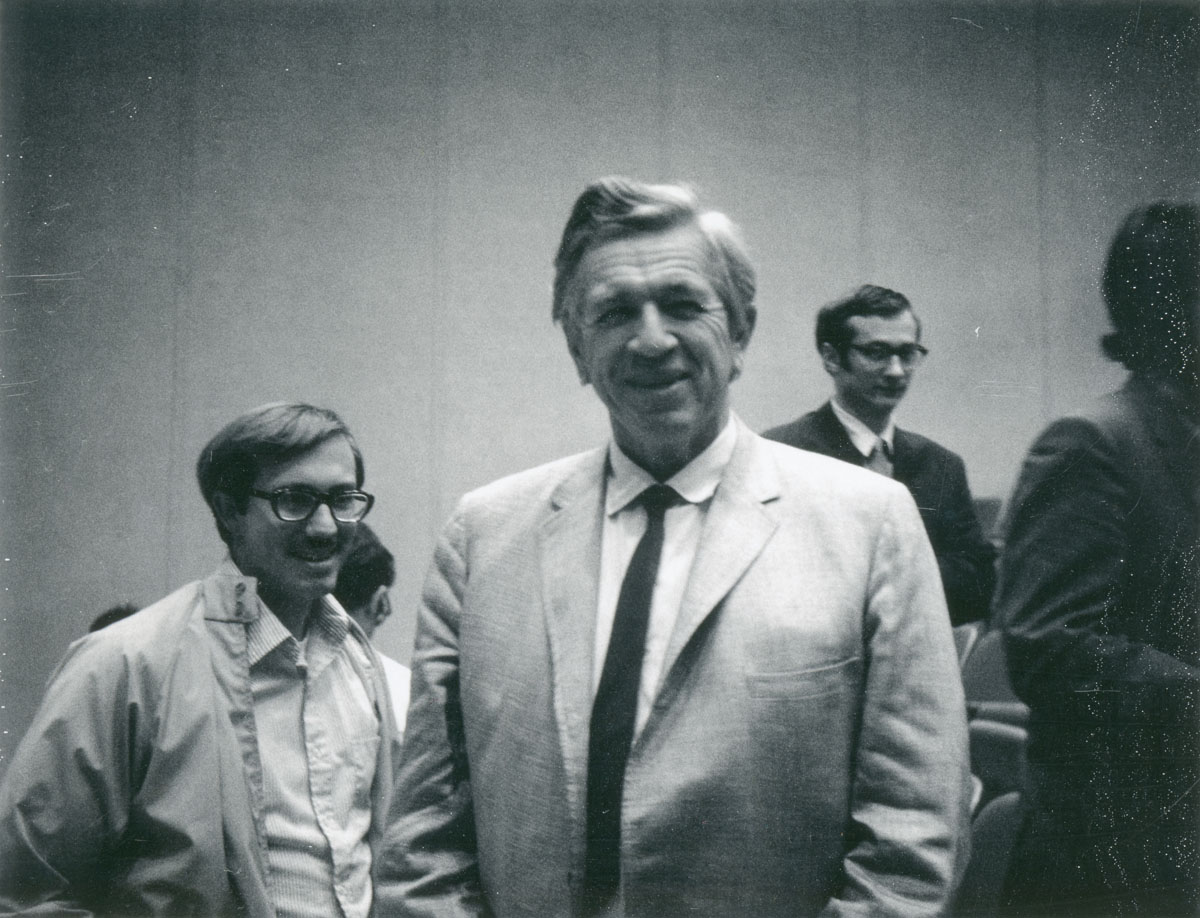
Halmos photographed William L. Duren (1905–2008) on Oct. 14, 1971, at the University of Virginia in Charlottesville, where he was University Professor in the Department of Applied Mathematics and Computer Science. Duren earned his Ph.D. at the University of Chicago in 1930 with a dissertation on calculus of variations written under G. A. Bliss. He was professor of mathematics at his alma mater, Tulane University, from 1931 to 1955; Dean of the College of Arts and Sciences at the University of Virginia from 1955 to 1962; and University Professor and founding member of the Department of Applied Mathematics and Computer Science at Virginia from 1962 to 1976 (University of Virginia). Duren was MAA president during 1955-56 and a founding member of the MAA Committee on the Undergraduate Program in Mathematics (CUPM) (MAA Presidents).
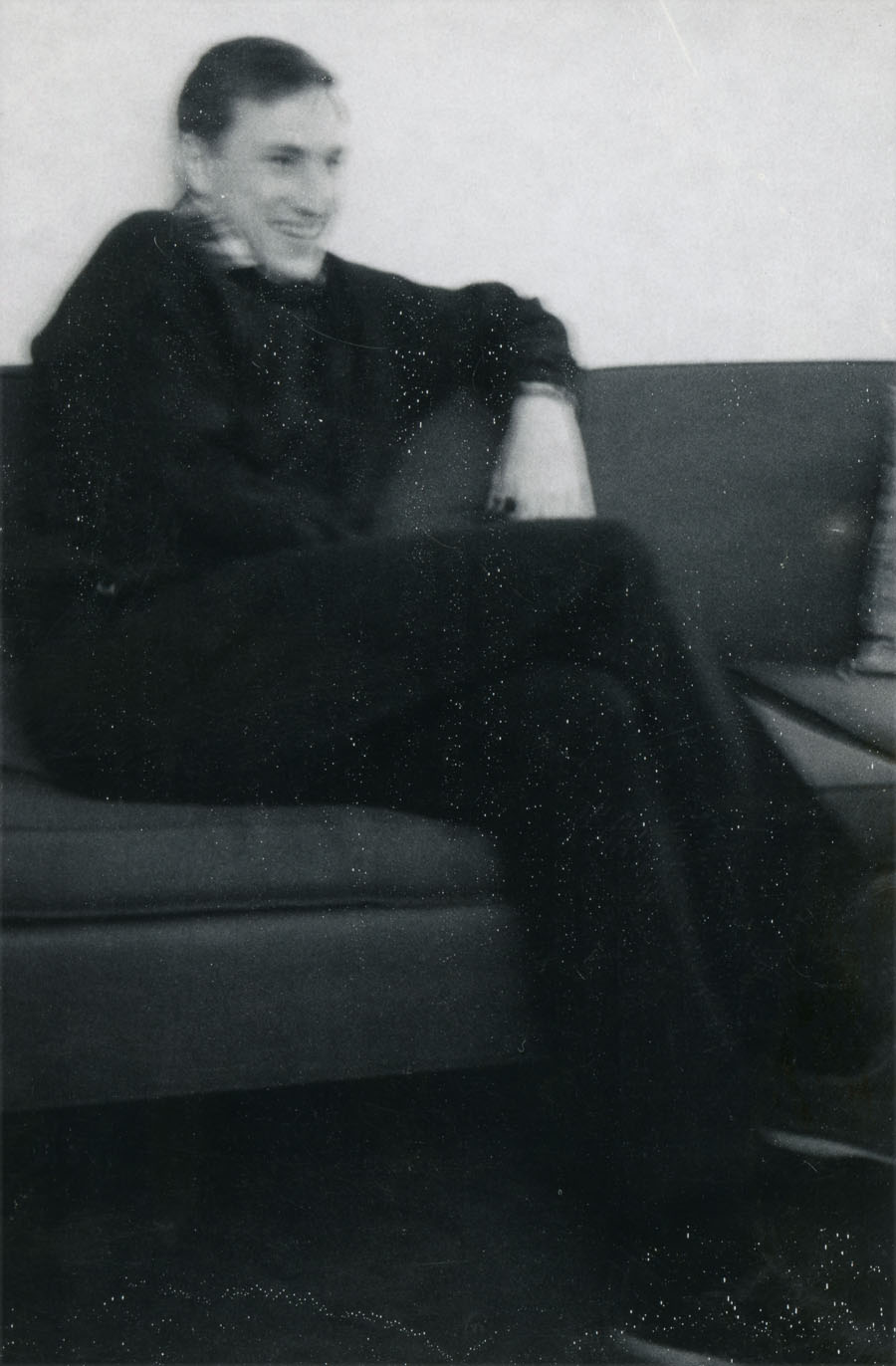
Peter Duren was photographed on Feb. 24, 1968, at the University of Michigan in Ann Arbor, where he and Halmos were mathematics professors. Duren is now Professor Emeritus of Mathematics at Michigan; Halmos spent the 1968-69 academic year at University of Hawaii and then moved to Indiana University. Duren writes, "I well remember Paul Halmos the photographer, not to mention the mathematician or the lecturer. At least once I attended a talk he gave away from home and saw him begin by taking a photo of his audience!"
Duren earned his Ph.D. at the Massachusetts Institute of Technology in 1960 under Gian-Carlo Rota (Mathematics Genealogy Project). He has advised 25 Ph.D. students at the University of Michigan. In addition to numerous books and articles on complex analysis, he edited the American Mathematical Society's three-volume set, A Century of Mathematics in America, published in 1988 (University of Michigan).

William L. Edge (1904–1997) is pictured during the British Mathematical Colloquium, in Dundee, Scotland, in April of 1965. Halmos was a plenary speaker on "Some recent progress in Hilbert space" at the 1965 BMC (BMC Speakers). Edge received his Ph.D. from Cambridge with a dissertation on projective geometry and spent most of his career at Edinburgh University, specializing in finite geometry (MacTutor Archive).

Halmos photographed Samuel Eilenberg (1913–1998) in 1970. Eilenberg earned his doctorate in point-set topology from the University of Warsaw in 1936 under advisors Kazimierz Kuratowski (pictured on page 29 of this collection) and Karol Borsuk (page 8). He moved to the U.S. in 1939, spending most of his career at Columbia University in New York City. He was a second-generation member of Bourbaki, invited in 1949 to write about homotopy groups for the project. Eilenberg is most famous for the books Foundations of Algebraic Topology, with Norman Steenrod, and Homological Algebra, with Henri Cartan (MacTutor Archive).
For an introduction to this article and to the Paul R. Halmos Photograph Collection, please see page 1. Watch for a new page featuring six new photographs each week during 2012.
Regarding sources for this page: Information for which a source is not given either appeared on the reverse side of the photograph or was obtained from various sources during 2011-12 by archivist Carol Mead of the Archives of American Mathematics, Dolph Briscoe Center for American History, University of Texas, Austin.
Who's That Mathematician? Paul R. Halmos Collection - Page 14
For more information about Paul R. Halmos (1916-2006) and about the Paul R. Halmos Photograph Collection, please see the introduction to this article on page 1. A new page featuring six photographs will be posted at the start of each week during 2012.
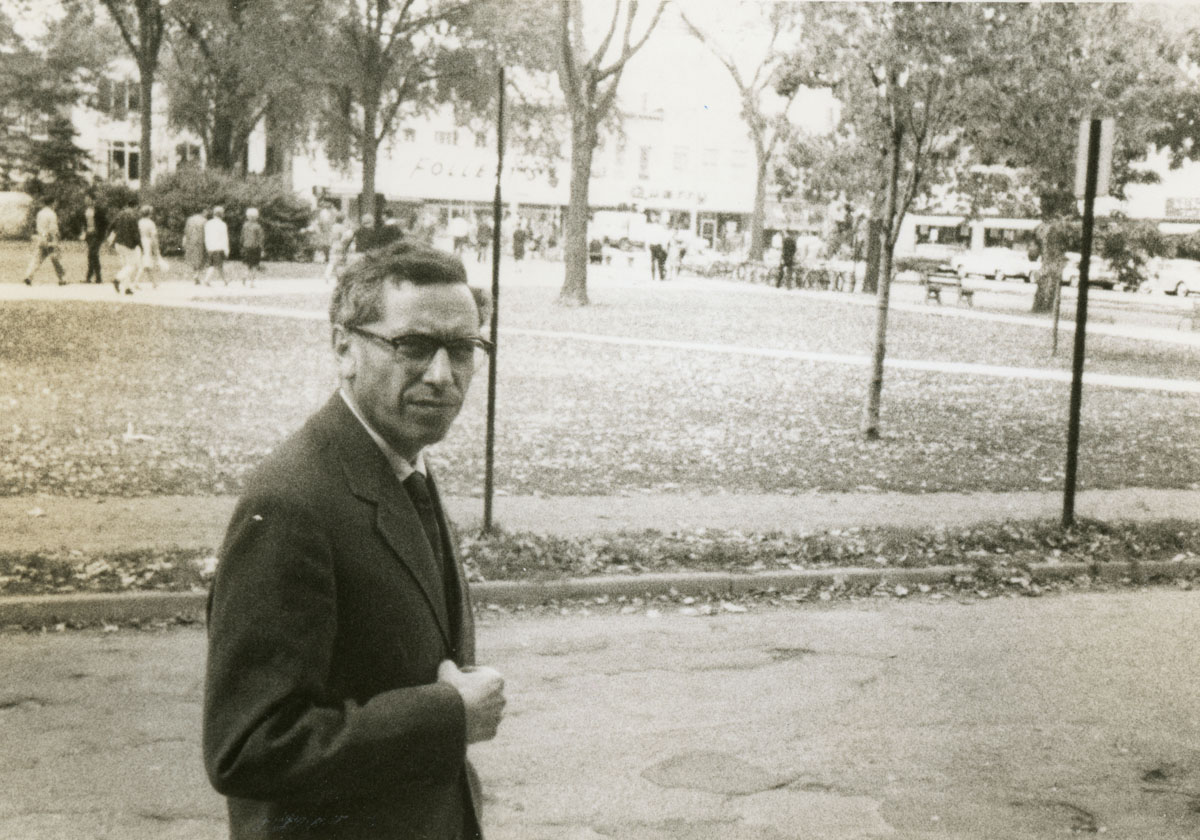
Halmos photographed Paul Erdös (1913-1996) in Ann Arbor, Michigan, in September of 1963. Halmos was a faculty member at the University of Michigan at the time. Erdös was well known for traveling all over the world posing and solving problems, mainly in number theory, combinatorics, and graph theory, with many and varied collaborators. According to one source, Erdös had been barred from the U.S. in 1954 (for showing too much enthusiasm for his homeland, Hungary, and for Karl Marx when interviewed by U.S. immigration agents) and was not allowed to return until November of 1963 (MacTutor Archive).
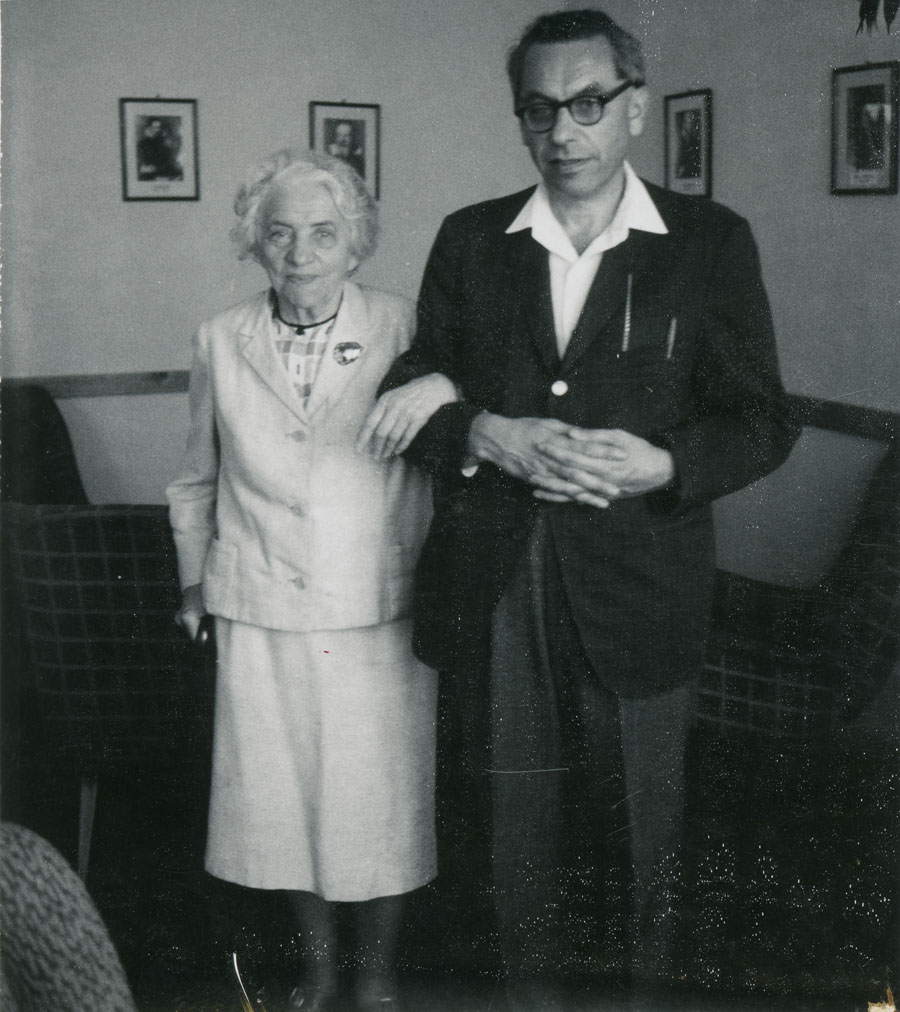
Paul Erdös and his mother, Anna Erdös, on July 12, 1968, in Budapest, Hungary, where Anna lived and where Paul was born. Erdös left Hungary just after earning his doctorate there in 1934 to become a post-doc at the University of Manchester in England. He was able to visit his family, who were Jewish, in Hungary until 1938 but had no news of them from 1941 to 1945. In 1945 he learned that his father had died in 1942 but that his mother had survived, and he finally was able to visit her in 1948 (MacTutor Archive). Erdös appears in another photograph on page 3 of this collection.
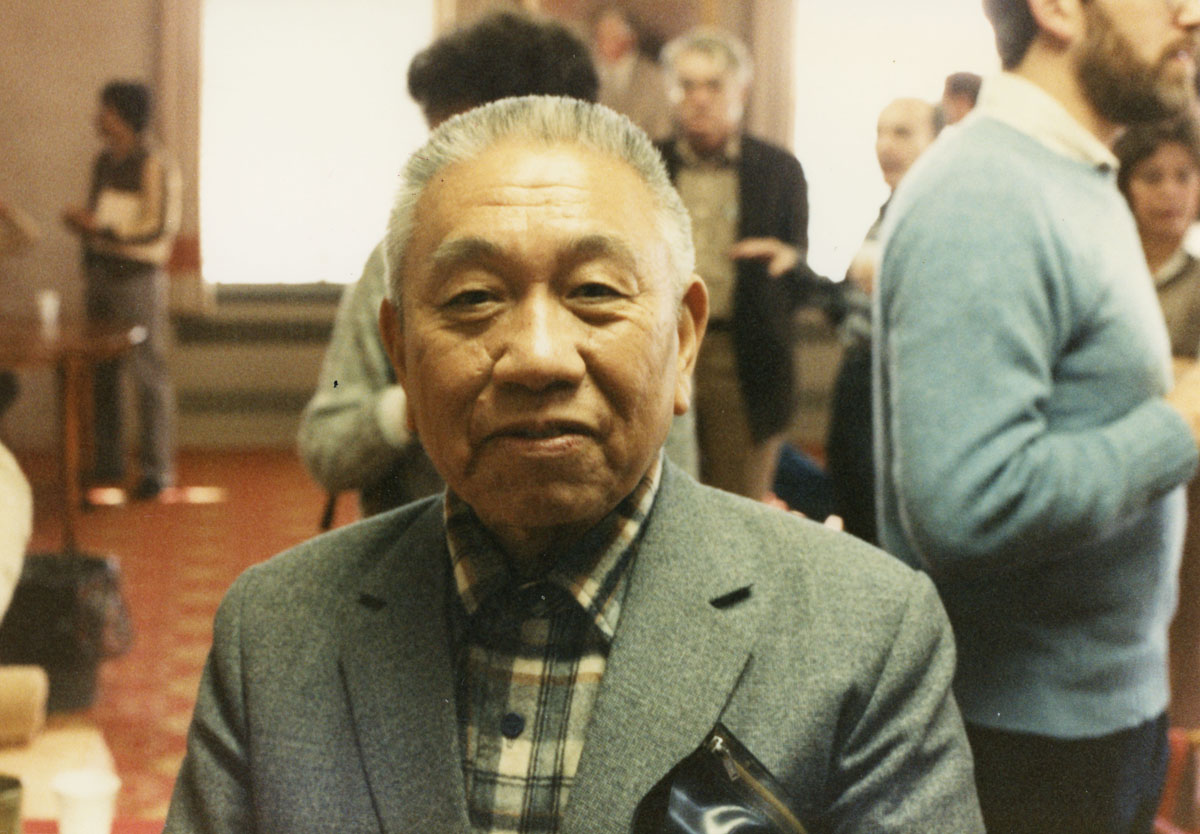
Ky Fan (1914-2010) was photographed by Halmos in 1985. Born in China, Fan studied mathematics at Peking University and then at the University of Paris, receiving his doctorate under Maurice Fréchet in 1941. He spent most of his career at the University of Notre Dame in South Bend, Indiana, and the University of California, Santa Barbara (UCSB). He contributed to many areas of analysis and topology and advised 21 Ph.D. students (UCSB). Fan and Halmos may have first met at the Institute for Advanced Study in Princeton, where Fan was a member from 1945 to 1947 and Halmos was a short-term visitor during 1945-46 (IAS).
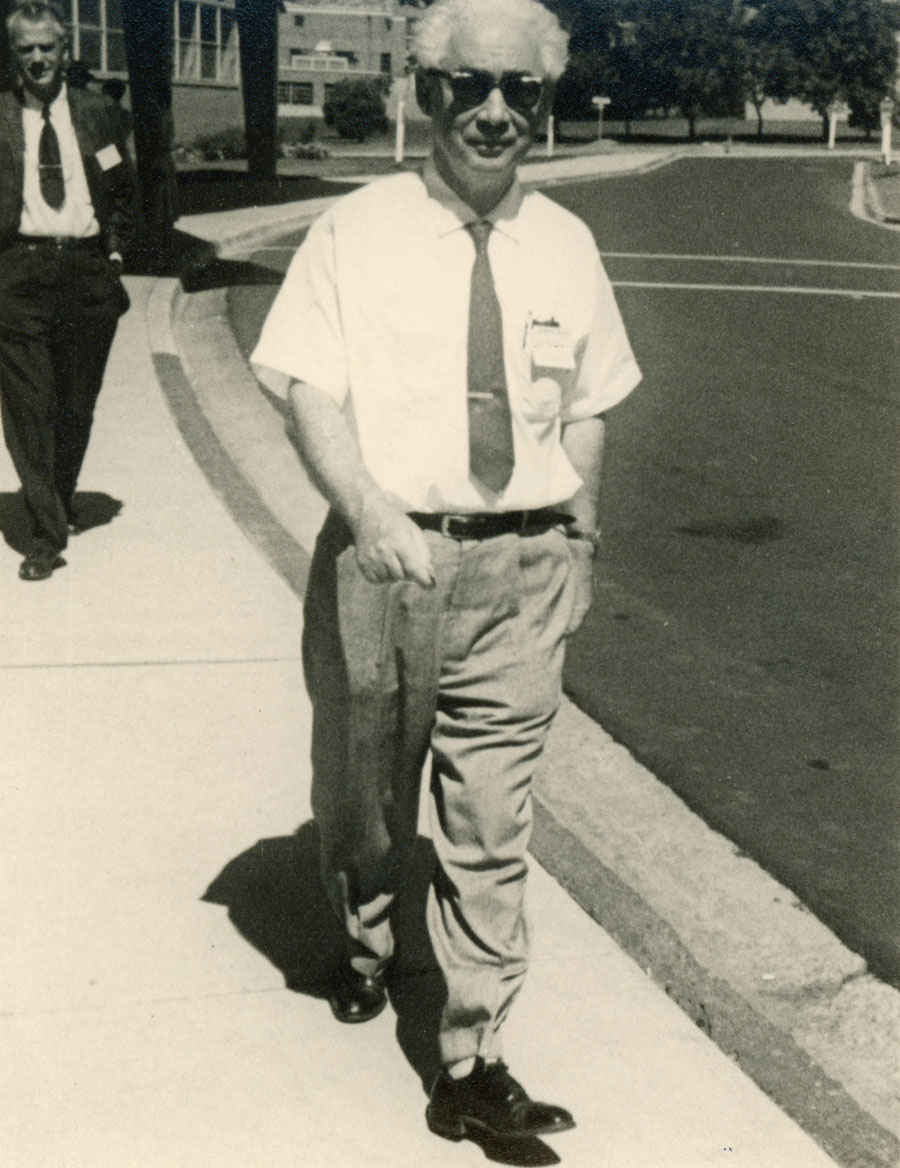
Halmos photographed two probabilists, Joseph Doob (1910-2004) (in background) and William Feller (1906-1970), in September of 1959. Doob was Ph.D. advisor to Halmos and appears in photographs on page 1, page 2, and page 12 of this collection. Born in Croatia, Feller studied mathematics at the University of Zagreb and then at Göttingen University in Germany, where he earned the Ph.D. in 1926 under David Hilbert and Richard Courant. He was able to work with probabilists Harald Cramér at the University of Stockholm during the 1930s and Mark Kac at Cornell University from 1945 to 1950. During the years 1939-1945, Feller was at Brown University in Providence, Rhode Island, where he helped Otto Neugebauer found Mathematical Reviews. He spent most of his career, from 1950 onward, at Princeton University (MacTutor Archive).

Leopold Flatto was photographed by Halmos in March of 1970 at Yeshiva University in New York City, where Flatto was a mathematics professor. Flatto earned his Ph.D. in 1955 from MIT with the dissertation “Periodic solutions associated with singular perturbations of a system of non-linear differential equations,” written under advisor Norman Levinson. He was at Yeshiva from 1961 to 1979 and at Bell Labs from 1979 to 1997. His best known books are Poncelet’s Theorem (AMS 2009) and the textbook Advanced Calculus (1976). When we asked him what spurred his interest in Poncelet's theorem, he wrote
While at Bell Labs I worked on some problems in queuing theory (double queues). I observed a connection between the latter and Poncelet's theorem .... So I got intrigued, both by the connection and by Poncelet's theorem. Being retired, I took up the study of Poncelet's theorem in earnest, and that explains my writing the book.
Flatto now teaches at City College of New York. (Sources: Mathematics Genealogy Project, WorldCat, CCNY Mathematics)
Halmos wrote “Flato” on the back of this photograph, leading us to believe at first that the photo was of Moshé Flato, cousin of Leopold Flatto and one of the few family members to spell his last name with only one “t”. Moshé Flato (1937-1998) was born in Tel Aviv and studied at Hebrew University in Jerusalem before moving to Paris in 1963, earning his doctorate in theoretical physics in 1965, and becoming a French citizen in 1967. A mathematical physicist, he was Professor of Mathematics at the University of Dijon from 1968 onward. (Source: MacTutor Archive)
We thank Daniel Sternheimer, Flato’s collaborator in mathematical physics from 1963 until his death, for correcting our mistaken identification. Sternheimer met Flatto several times, most recently at the International Congress of Mathematicians in Kyoto, Japan, in 1990. Sternheimer and Flato first met in 1958 in Israel in a distribution theory course taught by Shmuel Agmon. Sternheimer moved to Paris in 1961 to become a member of the Centre National de la Recherché Scientifique (CNRS) – initially to work with Agmon’s advisor Szolem Mandelbrojt – and retired from CNRS 42 years later! Since his retirement in 2003 he has lived mostly in Japan, as Visiting Professor of Mathematics at Keio University in Tokyo-Yokohama (2004-2010) and Visiting Research Fellow in Mathematics at Rikkyo University in Tokyo since 2010. Besides his Flato and Flatto connections, Sternheimer had his own Halmos connection:
Paul Halmos was a good friend of my uncle Richard Sternheimer, M.D., who lived in Chicago and was during WWII at the University [of Chicago], inter alia, the physician of the physicists of the Manhattan Project. Halmos made a list of mathematical textbooks that my uncle sent me when I immigrated to Israel in 1958. ... [M]y uncle Richard Sternheimer had many connections with the academic community in Chicago. In particular he remained the physician of the [Enrico] Fermi family. During WWII, he noticed a strange blood composition among the physicists (who were handling radioactive material) but they told him that the lab was taking care of that and he did not suspect anything (until Hiroshima) though he lived across the street from the first (underground) nuclear reactor!
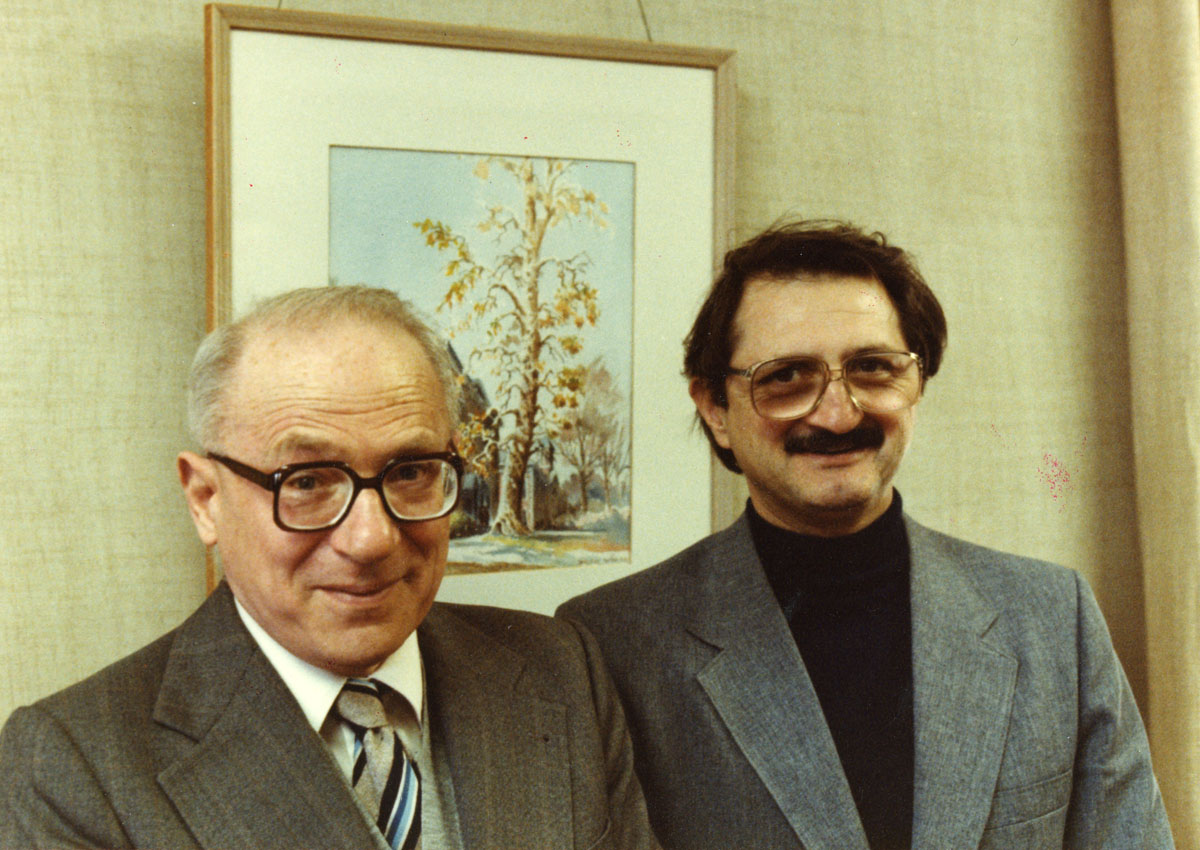
Halmos photographed Béla Szökefalvi-Nagy (1913-1998) and Ciprian Foias (1933-2020) at the Wabash Seminar in Crawfordsville, Indiana, in 1983. Szökefalvi-Nagy and Foias were longtime collaborators and co-authors of the book, Harmonic analysis of operators on Hilbert space, first published in French in 1967 and in English in 1970 (MathSciNet).
Szökefalvi-Nagy also appears in a photograph on page 9 of this collection, where you can read more about him. According to the Great Soviet Encyclopedia (3rd edition, 1979), Szökefalvi-Nagy "graduated from the University of Szeged, Hungary, in 1936 and became a professor there in 1948. ... [His] principal works deal with the approximation of functions and with functional analysis---in particular, the expansion of operators in [Hilbert] space" (The Free Dictionary). Sz.-Nagy also wrote articles on Hungarian mathematicians Frigyes (Frederic) Riesz, John von Neumann, and Alfred Haar (MathSciNet).
Foias is Distinguished Professor of Mathematics at Texas A & M University in College Station, specializing in PDEs and operator theory (Texas A&M). He also is Distinguished Professor Emeritus at Indiana University in Bloomington (Indiana University), where Halmos was a faculty member from 1969 to 1985. Foias joined the Indiana University mathematics faculty in 1979 after earning the Ph.D. at the Institute of Mathematics of the Romanian Academy in 1962 and serving as a mathematics professor at the University of Bucharest for 12 years. (Source: "1995 Norbert Wiener Prize in Applied Mathematics," AMS Notices 42:4, April 1995, pp. 457-458.)
For an introduction to this article and to the Paul R. Halmos Photograph Collection, please see page 1. Watch for a new page featuring six new photographs each week during 2012.
Regarding sources for this page: Information for which a source is not given either appeared on the reverse side of the photograph or was obtained from various sources during 2011-12 by archivist Carol Mead of the Archives of American Mathematics, Dolph Briscoe Center for American History, University of Texas, Austin.
Who's That Mathematician? Paul R. Halmos Collection - Page 15
For more information about Paul R. Halmos (1916-2006) and about the Paul R. Halmos Photograph Collection, please see the introduction to this article on page 1. A new page featuring six photographs will be posted at the start of each week during 2012.
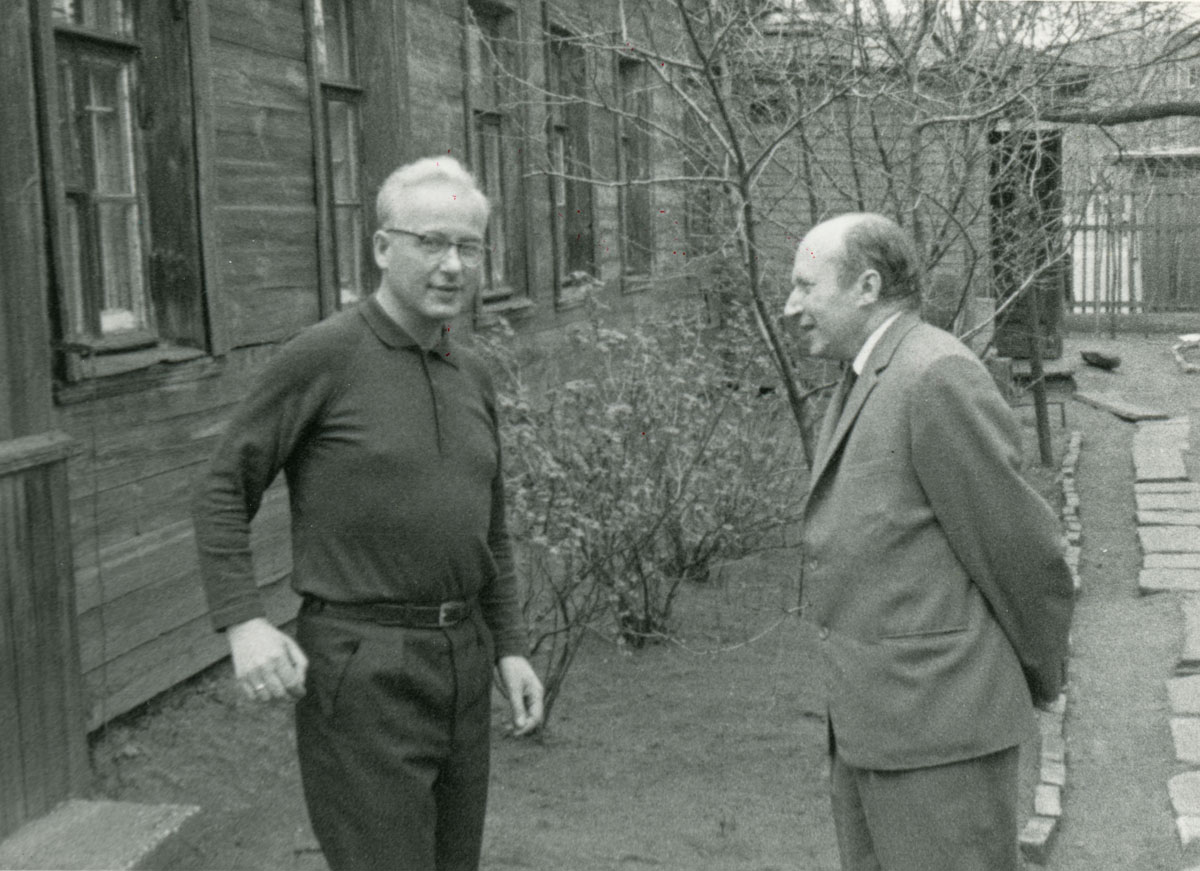
Halmos photographed Sergei Fomin (1917-1975), left, and Israil Gelfand (1913-2009) in Moscow, Russia, in May of 1965. Halmos visited mathematicians in Moscow and Leningrad (St. Petersburg) for one month during April and May of 1965 as part of a 1964-65 exchange program between the scientific academies of the U.S. and U.S.S.R. that sent 20 scientists from each country to the other.
Born in Moscow, Fomin earned his Ph.D. in 1942 under A. N. Kolmogorov at the Steklov Institute of Mathematics in Moscow. However, he actually defended his thesis at the Steklov Institute's temporary home in Kazan while he was a member of the Red Army. During his career at Moscow State University, Fomin worked in many areas, including general topology, ergodic and measure theory, and mathematical biology (MacTutor Archive).
Born in Odessa, Ukraine, Gelfand earned his Ph.D. in functional analysis in 1935 under A. N. Kolmogorov at Moscow State University. After six years at the USSR Academy of Sciences, he moved in 1941 to Moscow State University, where he worked on representation theory of non-compact groups, differential equations, computational mathematics, integral geometry, and, with his colleague Fomin, mathematical biology. He moved to Rutgers University in New Jersey in 1990 (MacTutor Archive). Gelfand also appears in a photograph on page 16 of this collection.
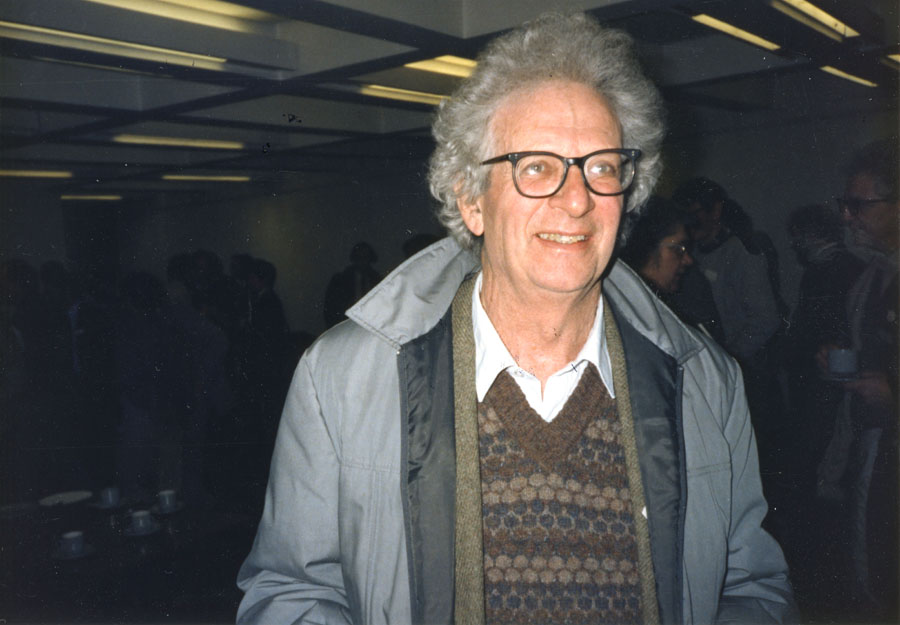
Albrecht Fröhlich (1916-2001) was photographed by Halmos at the British Mathematical Colloquium in Hull, England, in April of 1986. Born in Munich, Germany, "Ali" Fröhlich and his parents fled the Nazis soon after they came to power in 1933, moving first to France and then to Palestine. Fröhlich eventually earned his Ph.D. at the University of Bristol, England, in 1951, and spent most of his career at King's College, London, working in group theory and algebraic number theory (MacTutor Archive).

Halmos photographed László Fuchs in Budapest, Hungary, in May of 1965. As one of two hosts for the Budapest portion of Halmos' May 19 - June 1 visit to Hungary, Fuchs met Halmos at the airport on May 19. During his visit, Halmos addressed the János Bolyai Mathematical Society in Budapest and traveled to Szeged to meet with Béla Szökefalvy-Nagy, photographed on page 9 and page 14 of this collection.
László Fuchs earned his Ph.D. in 1947 at Eötvös Loránd University in Budapest with a dissertation on quasi-primary ideals. He spent about 20 years as a professor at Eötvös Loránd University and then moved to Tulane University in New Orleans, Louisiana, where he advised 21 of his 26 Ph.D. students (Mathematics Genealogy Project), held the Phillips Distinguished Chair in Mathematics, and is now emeritus. He lists his current research interests as Abelian groups and commutative domains and their modules (Tulane University).
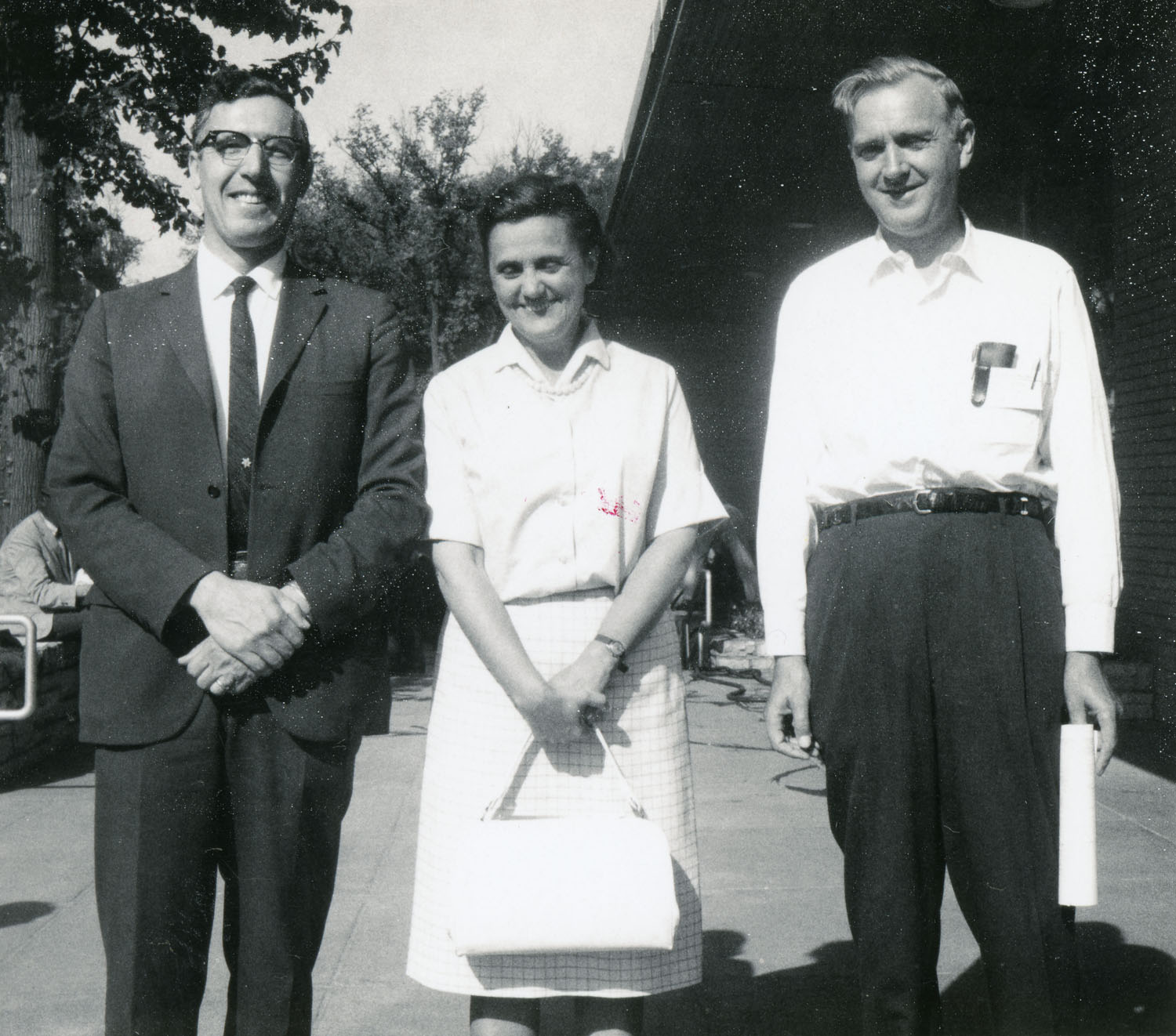
Left to right, Steven Gaal, Lisl Gaal, and Bjarni Jónsson at the AMS-MAA Joint Summer Meetings in Madison, Wisconsin, on August 28, 1968.
Steven Gaal (1924-2016) had Ph.D. advisors Leopold Fejér and Frigyes Riesz (Mathematics Genealogy Project), presumably at Eötvös Loránd University in Budapest, Hungary, where Fejér spent most of his career, or possibly at Szeged University in Hungary, where Riesz spent much of his career. Gaal was a faculty member at the University of Minnesota in Minneapolis from the 1960s onward. Olaf Stackelberg, who was a Ph.D. student of Gaal during the 1960s, remembers him as a "private, studious man, who was kind and helpful to his students." Gaal is now Professor Emeritus at the University of Minnesota (University of Minnesota).
Lisl (or Ilse) Novak Gaal earned her Ph.D. in 1948 at Radcliffe College with the dissertation, "On the consistency of Goedel's axioms for class and set theory relative to a weaker set of axioms," under Lynn Loomis and Willard Van Quine of Harvard University (Mathematics Genealogy Project). Lisl Gaal is Associate Professor Emeritus at the University of Minnesota. Besides logic, set theory, and foundations, she lists Galois theory as a research interest (University of Minnesota). Olaf Stackelberg recalls that "Lisl and Steve Gaal would have their students over to their house for an informal dinner party at year's end, gatherings we enjoyed."
Bjarni Jónsson earned his Ph.D. in 1946 at the University of California, Berkeley, with a dissertation on "Direct decompositions of finite algebraic systems," written under Alfred Tarski. He was a faculty member at the University of Minnesota during the early 1960s (Mathematics Genealogy Project), then in 1966 moved to Vanderbilt University in Nashville, Tennessee, where he is now Distinguished Professor of Mathematics, Emeritus. He lists his research interests as lattice theory, universal algebra, and logic (Vanderbilt University).

Bernard Galler (1928-2006), at left, and Edward Nelson, whom Halmos identified as "Buzz Galler" and "Ed Nelson," play baseball in Chicago, Illinois, circa 1955. Both Galler and Nelson earned Ph.D.s from the University of Chicago in 1955.
Galler's dissertation was directed by Paul Halmos and Marshall Stone and was titled, "Some results in algebraic logic." Halmos wrote a book, Algebraic logic, on this topic in 1962. From 1955 onward, Galler was a faculty member at the University of Michigan in Ann Arbor, first in mathematics and then, by 1966, in computer science. In 1966, he helped found the Department of Computer and Communication Sciences (University of Michigan). He and his Ph.D. advisor, Halmos, were colleagues at Michigan during Halmos' tenure there from 1961 to 1968.
Edward Nelson also earned his Ph.D. from the University of Chicago in 1955, with the dissertation, "On the operator theory of Markoff processes," written under Irving Segal (Mathematics Genealogy Project). After a three-year fellowship (1956-59) at the Institute for Advanced Study in Princeton, Nelson has spent his career at Princeton University. He lists mathematical logic, foundations of mathematics, bounded arithmetic, and automatic proof verification as his current research interests (Princeton University).
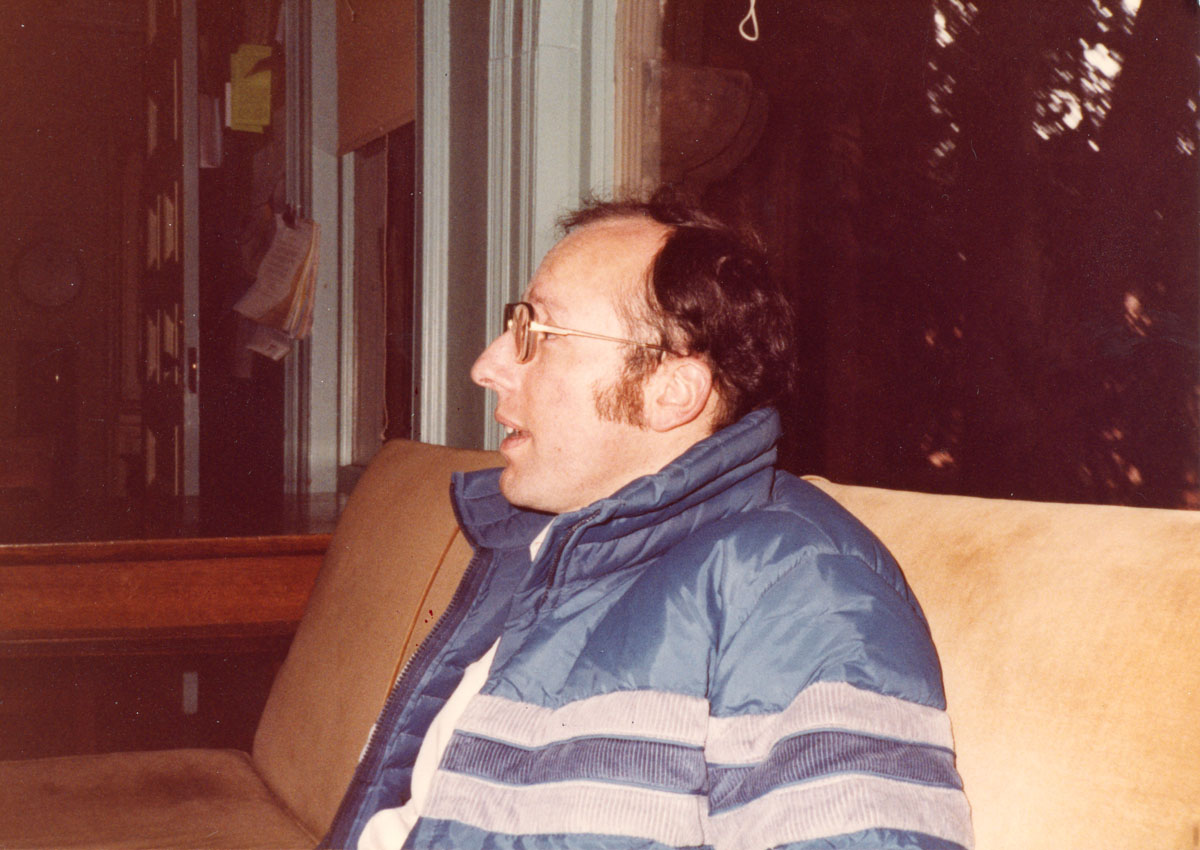
Halmos photographed Joseph Gallian at Carleton College in Northfield, Minnesota, in April of 1983. Gallian earned his Ph.D. in 1971 at the University of Notre Dame in South Bend, Indiana. He has spent his career at the University of Minnesota, Duluth, where he is Morse Distinguished Professor of Teaching and Professor of Mathematics. In 1977, Gallian founded a summer research program for undergraduates at UM-Duluth that became a model for the National Science Foundation Research Experiences for Undergraduates (NSF-REU) program and is still going strong. He has served as co-director of the MAA Project NExT mentoring program for new mathematics faculty members since 1998, and he served as MAA president during 2007-08. (Sources: Mathematics Genealogy Project, MAA Presidents, MAA Project NExT)
For an introduction to this article and to the Paul R. Halmos Photograph Collection, please see page 1. Watch for a new page featuring six new photographs each week during 2012.
Regarding sources for this page: Information for which a source is not given either appeared on the reverse side of the photograph or was obtained from various sources during 2011-12 by archivist Carol Mead of the Archives of American Mathematics, Dolph Briscoe Center for American History, University of Texas, Austin.
Who's That Mathematician? Paul R. Halmos Collection - Page 16
For more information about Paul R. Halmos (1916-2006) and about the Paul R. Halmos Photograph Collection, please see the introduction to this article on page 1. A new page featuring six photographs will be posted at the start of each week during 2012.
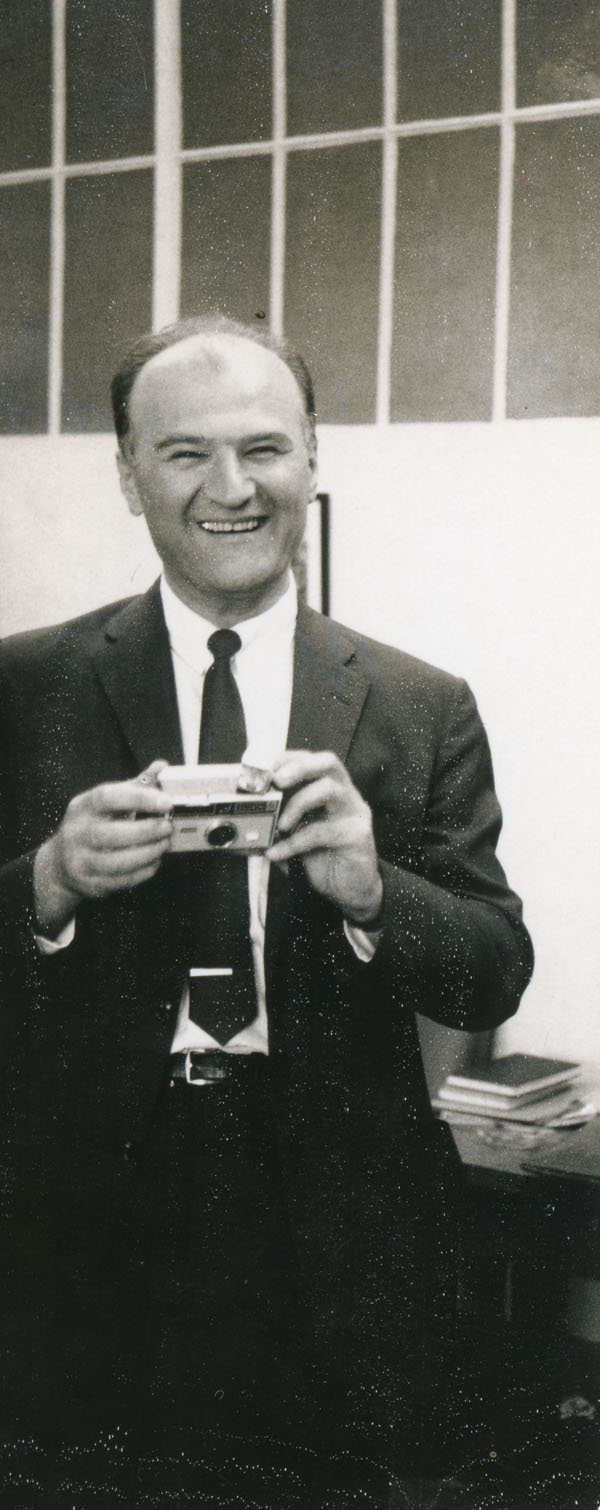
Paul Halmos photographed Revaz Gamkrelidze (at right) in Ann Arbor, Michigan, on May 31, 1967. Halmos was a faculty member at the University of Michigan in Ann Arbor from 1961 to 1968. Born in Kutaisi, Georgia, Gamkrelidze studied for one year (1945-46) at Tbilisi State University in Georgia before moving to Moscow State University, where he studied from 1946 to 1953. In 1953, he became a researcher at the Steklov Institute of Mathematics of the Russian Academy of Sciences, becoming Senior Researcher in 1955, Doctor of Physico-Mathematical Sciences in 1961, Professor in 1966, and Head of the Department of Differential Equations and Theory of Control in 1988. Gamkrelidze was founding editor of the Encyclopaedia of Mathematical Sciences, published by Springer-Verlag since 1988. (Sources: Georgian National Academy of Sciences: Academician Revaz Gamkrelidze, Springer-Verlag)
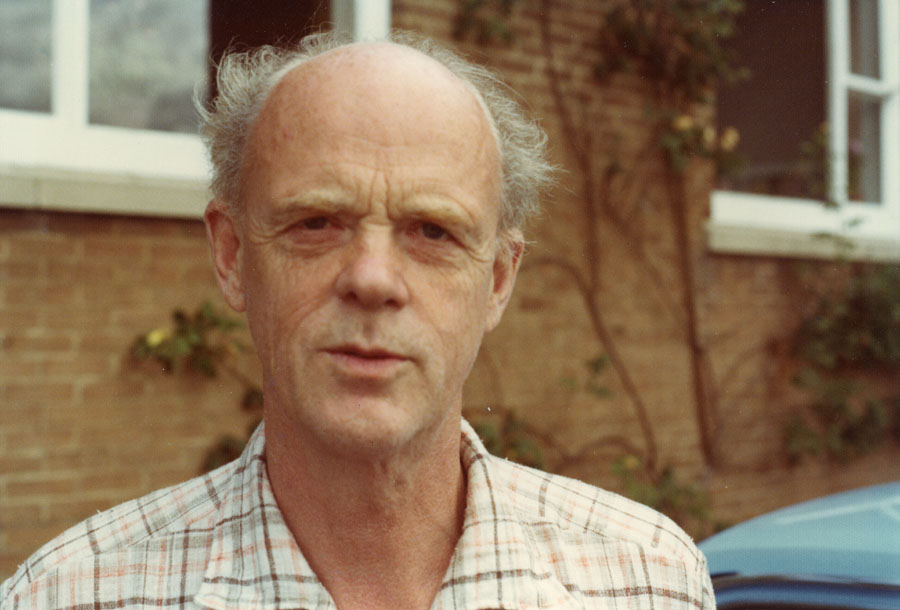
Lars Gårding was photographed by Halmos in England in 1976. Gårding earned his Ph.D. at Lund University in Sweden under Marcel Riesz. After visiting Princeton University in New Jersey in 1946-47, he has spent his career at Lund University (with eight years at the Institute for Advanced Study in Princeton), where he has carried out research in partial differential operators and is now Professor Emeritus. In 1952, when Marcel Riesz retired from Lund and Gårding was a new faculty member there, Gårding took over supervision of the Ph.D. thesis of Lars Hörmander (pictured on page 24 of this collection), who would win the Fields Medal in 1962 for his work in linear partial differential operators. Gårding also is interested in the history of mathematics, having written the books Some Points of Analysis and Their History (AMS, 1997) and Mathematics and Mathematicians: Mathematics in Sweden Before 1950 (AMS, 1998). (Sources: Mathematics Genealogy Project; Institute for Advanced Study; AMS Bookstore; Perspectives in PDE, Harmonic Analysis & Applications; Mitrea & Mitrea, eds.: Garding article; Fields Medallists' Lectures, 2nd ed., Atiyah & Iagolnitzer, eds.: Hörmander autobiography)
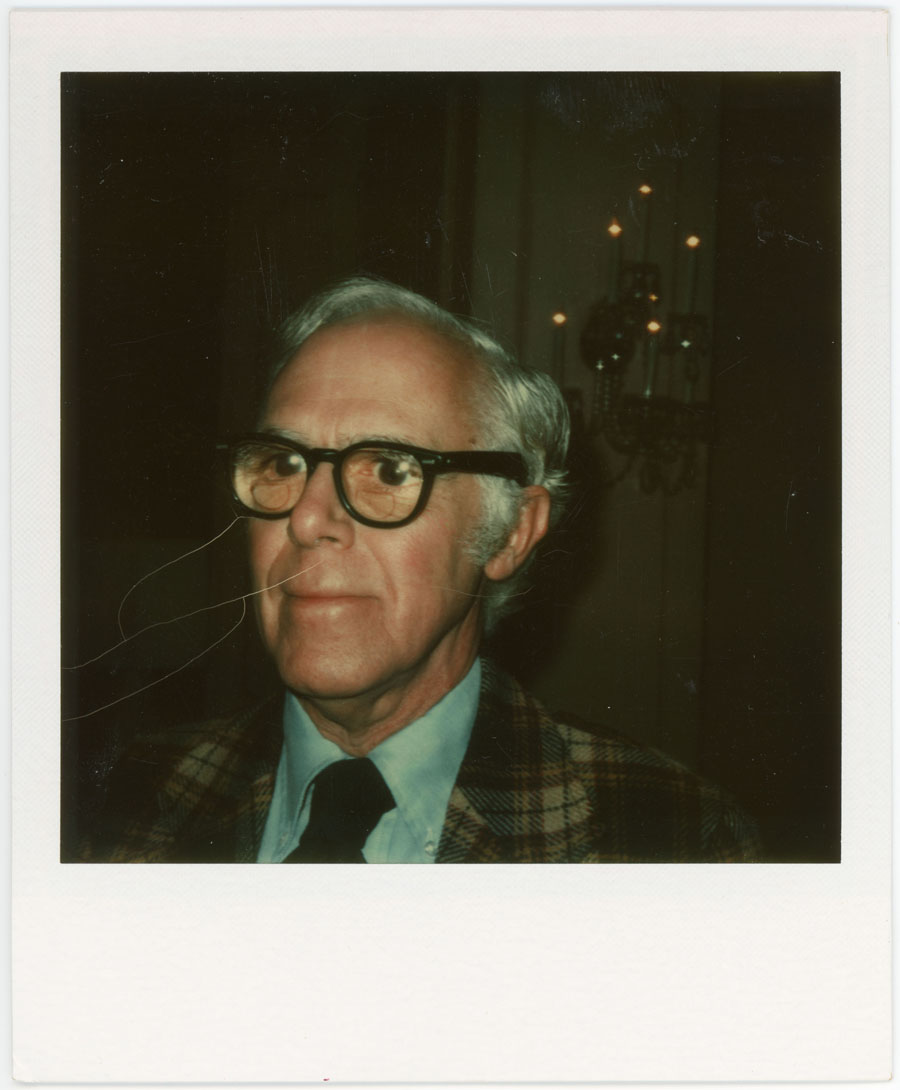
Halmos photographed Martin Gardner (1914-2010) in New York City on Oct. 26, 1974. The magazine Scientific American paid tribute to Gardner, the "Mathematical Gamester," as follows: "For 25 years, he wrote Scientific American's Mathematical Games column, educating and entertaining minds and launching the careers of generations of mathematicians." The magazine also credits Gardner with "single-handedly populariz[ing] recreational mathematics in the U.S." Gardner wrote his first article for Scientific American in 1956 and was immediately invited to write the magazine's "Mathematics Games" column, which he did from 1957 to 1981. The 15 books containing all of his columns are among the over 100 books and pamphlets he published during his career. (Sources: Scientific American, MacTutor Archive)
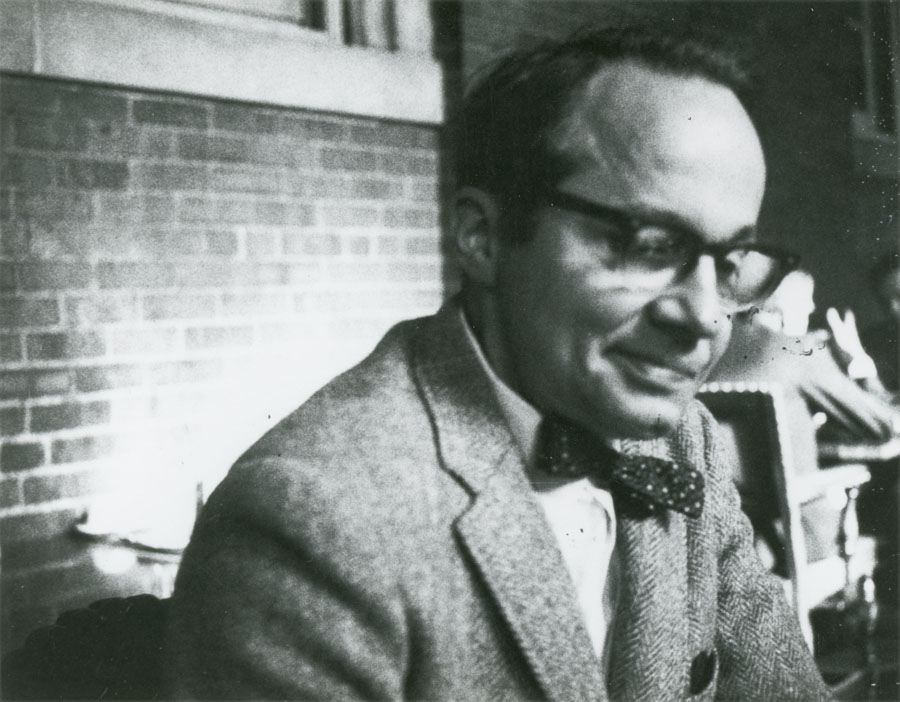
Halmos photographed his former University of Michigan colleague, the complex analyst and geometer Frederick Gehring, in 1974. Born and raised in Ann Arbor, Michigan, Gehring earned his Ph.D. at Cambridge in 1952, taught at Harvard for three years, and, since 1955, has been a mathematics professor at the University of Michigan in Ann Arbor, where he has specialized in quasiconformal mappings and advised at least 29 Ph.D. students. He was appointed T. H. Hildebrandt Distinguished University Professor in 1987 and, in 1995, he added Emeritus to his title. (T. H. Hildebrandt is photographed on page 23 of this collection.) In 1996, Michigan established the Gehring Collegiate Professorship in his honor, and appointed complex analyst John Erik Fornaess as its first holder. During 2001-02, UM held the Gehring Special Year in Complex Analysis. Gehring and Halmos were colleagues at UM from 1961 to 1968, when Halmos was a faculty member there. Another photograph of Gehring appears on page 29 of this collection. (Sources: Mathematics Genealogy Project, UM Memoir, UM: Fornaess, ContinuUM)
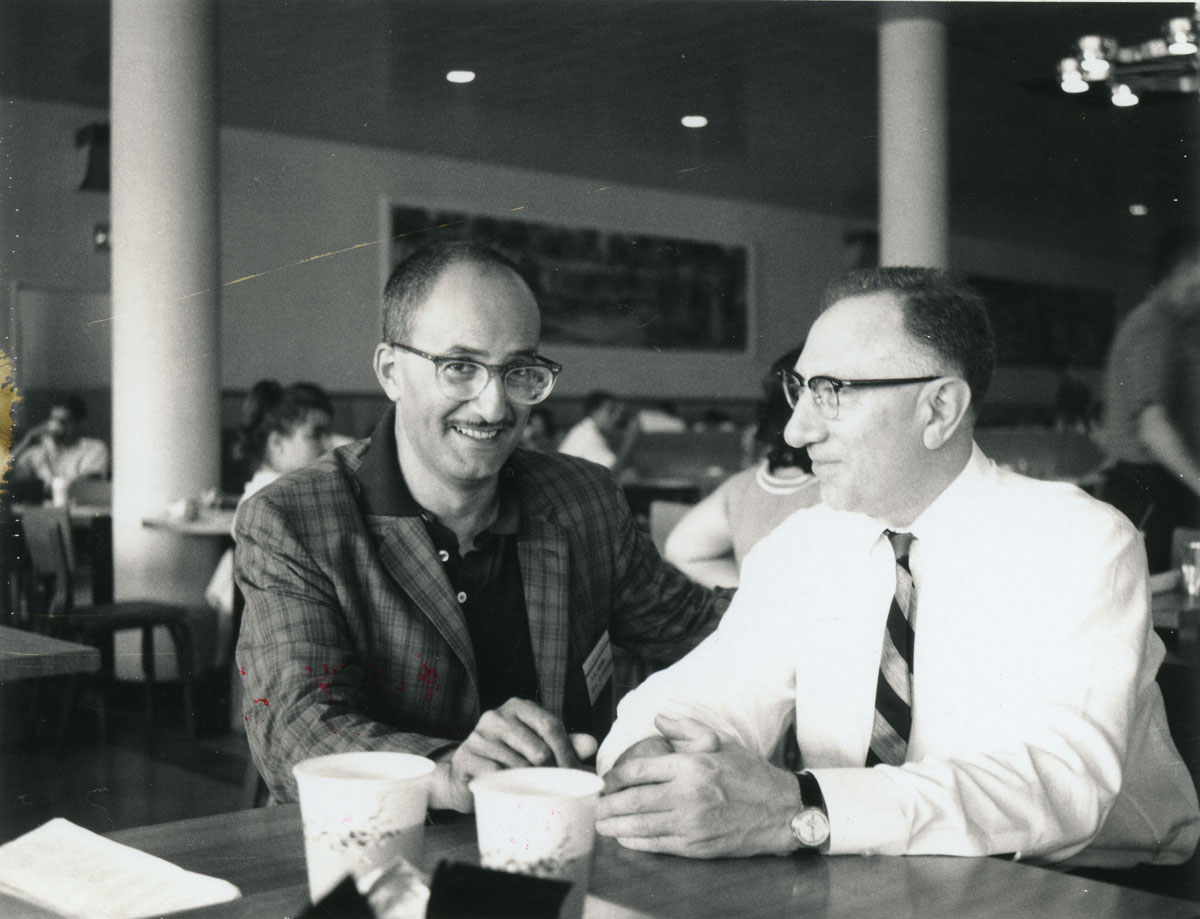
Paul Halmos and Abraham Gelbart (1911-1994) at the AMS-MAA Joint Summer Meetings in Amherst, Mass., on August 25, 1964. Abe Gelbart earned his Ph.D. in 1940 from the Massachusetts Institute of Technology (M.I.T.) under advisor Norbert Wiener. He taught at Syracuse University in New York from 1943 to 1958. Paul Halmos was a faculty member at Syracuse from 1942 to 1946, and it is likely that he and Gelbart first met there. In 1958, Gelbart became Director of Mathematics at Yeshiva University in New York City, where he pursued his interests in complex analysis and partial differential equations. In 1982, after his retirement from Yeshiva, he became a trustee of Bar-Ilan University in Ramat-Gan, Israel. Bar-Ilan University now has an Abraham Gelbart Research Institute in Mathematical Sciences, founded in 1987 to focus on analysis. (BIU has one other mathematical research institute, the Emmy Noether Mathematics Institute in Algebra, Geometry, Function Theory and Summability.) Gelbart himself received an honorary doctorate from BIU in 1985. (Sources: AMS Notices 42:1 (Jan. 1995), Bar-Ilan University, BIU: Gelbart Institute)
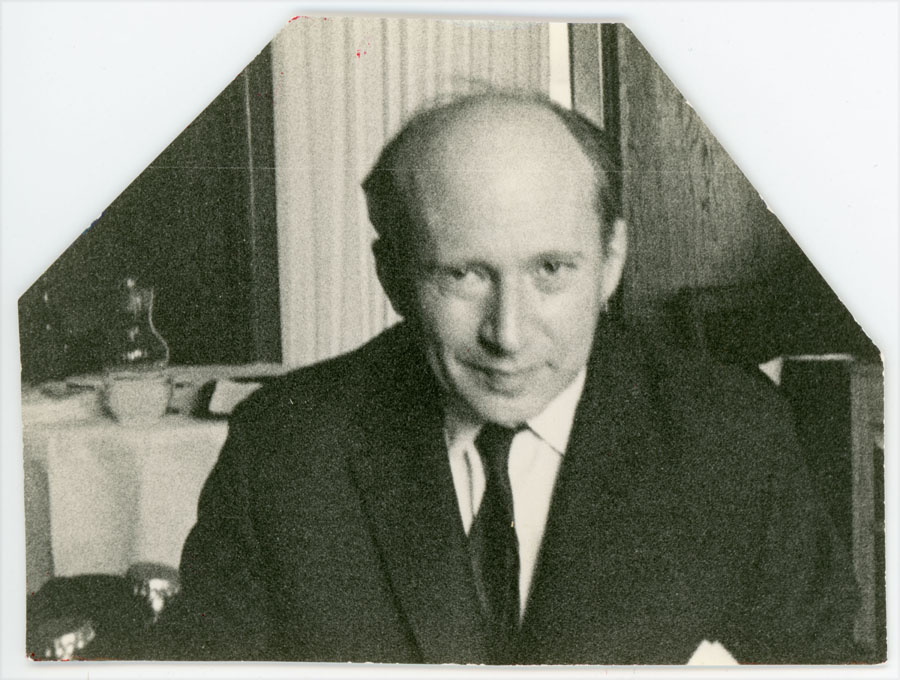
Halmos photographed Israil Gelfand (1913-2009) in Moscow, Russia, in May of 1965. Halmos visited the USSR for one month during April and May of 1965 as part of an exchange program between the American and Soviet scientific academies that sent 20 scientists from each country to the other. Born in Odessa, Ukraine, Gelfand earned his Ph.D. in functional analysis in 1935 under A. N. Kolmogorov at Moscow State University. In 1941, after six years at the USSR Academy of Sciences, he moved to Moscow State University, where he worked on representation theory of non-compact groups, differential equations, computational mathematics, integral geometry, and, with his colleague Sergei Fomin, mathematical biology. (Fomin and Gelfand are pictured together, also in 1965, on page 15 of this collection.) Gelfand moved to Rutgers University in New Jersey in 1990. (Sources: Archives of American Mathematics, MacTutor Archive)
For an introduction to this article and to the Paul R. Halmos Photograph Collection, please see page 1. Watch for a new page featuring six new photographs each week during 2012.
Regarding sources for this page: Information for which a source is not given either appeared on the reverse side of the photograph or was obtained from various sources during 2011-12 by archivist Carol Mead of the Archives of American Mathematics, Dolph Briscoe Center for American History, University of Texas, Austin.
Who's That Mathematician? Paul R. Halmos Collection - Page 17
For more information about Paul R. Halmos (1916-2006) and about the Paul R. Halmos Photograph Collection, please see the introduction to this article on page 1. A new page featuring six photographs will be posted at the start of each week during 2012.
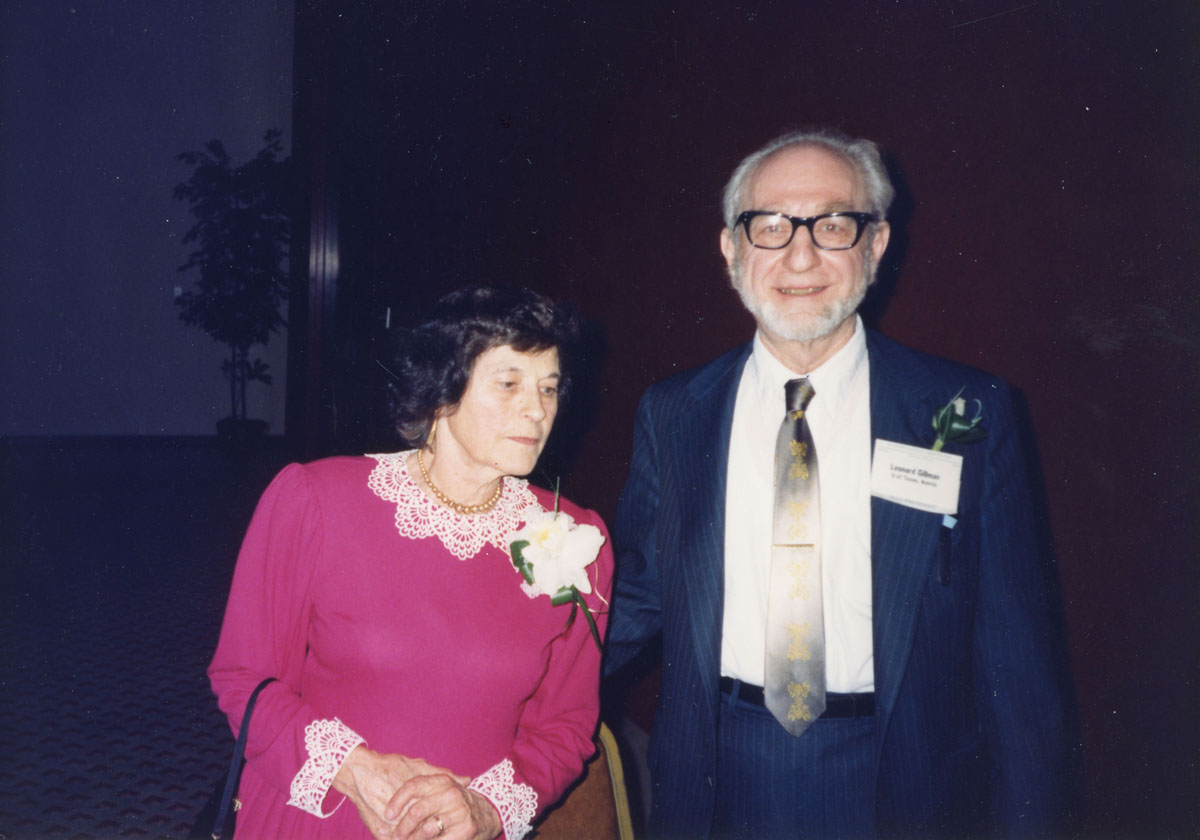
Paul Halmos photographed Reba Gillman and Leonard Gillman (1917-2009) at the AMS-MAA Joint Mathematics Meetings in Phoenix, Arizona, in January of 1989. Leonard Gillman earned his Ph.D. from Columbia University in 1953 with the dissertation, "On Intervals of Ordered Sets," written under Edgar Lorch and Alfred Tarski. He taught at Purdue University (1952-60) and the University of Rochester (1960-69) before joining the faculty of the University of Texas at Austin in 1969. Although his research was in set theory and topology, his best known articles may be "Teaching Programs That Work" (MAA FOCUS, 1990) and "An Axiomatic Approach to the Integral" (American Mathematical Monthly, 1993). Gillman served as MAA president in 1987-88. (Sources: Mathematics Genealogy Project, MAA Presidents)

Reba and Leonard Gillman perform for friends, including Paul Halmos, in December of 1971. Leonard was an accomplished pianist and Reba a professional soprano who remains involved with musical groups in Austin, Texas.

R. H. Bing (1914-1986), left, and Andrew Gleason (1921-2008) were photographed at the Joint Summer Mathematics Meetings in Boulder, Colorado, in August of 1963.
R. H. Bing was a Texas high school teacher turned R. L. Moore-trained topologist who spent most of his career at the universities of Wisconsin and Texas. He and Paul Halmos may have first met at the Institute for Advanced Study in Princeton, where both were members during 1957-58. In 1973, after 26 years (1947-73) at the University of Wisconsin, Bing returned to the University of Texas at Austin, where he had earned his Ph.D. in 1945. He served as MAA president in 1963-64 and AMS president during 1977-78. For two more photographs of Bing, see page 6 of this collection. (Sources: MacTutor Archive, Mathematics Genealogy Project, AMS Presidents, MAA Presidents)
After serving as a codebreaker during World War II, Andrew Gleason became a Junior Fellow at Harvard in 1946. As a Junior Fellow, Gleason neither wrote a traditional dissertation nor earned a traditional Ph.D., but, since he did the sort of work Ph.D. candidates do from 1946 to 1950, his date of doctoral completion is sometimes listed as 1950. By 1952, he had helped solve Hilbert's 5th Problem on the relationship between connected locally compact groups and Lie groups. During his career at Harvard, Gleason researched Banach spaces and classical geometry and advised at least 28 Ph.D. students. In 1959, he served as chair of the advisory committee to the inventors of the infamous "New Math" and, during the 1990s, he was a member of the Calculus Consortium based at Harvard (CCH), which produced the most commercially successful of the "calculus reform" textbooks of that decade. Gleason served as president of the AMS during 1981-82. (Sources: MacTutor Archive, Mathematics Genealogy Project, AMS Presidents)
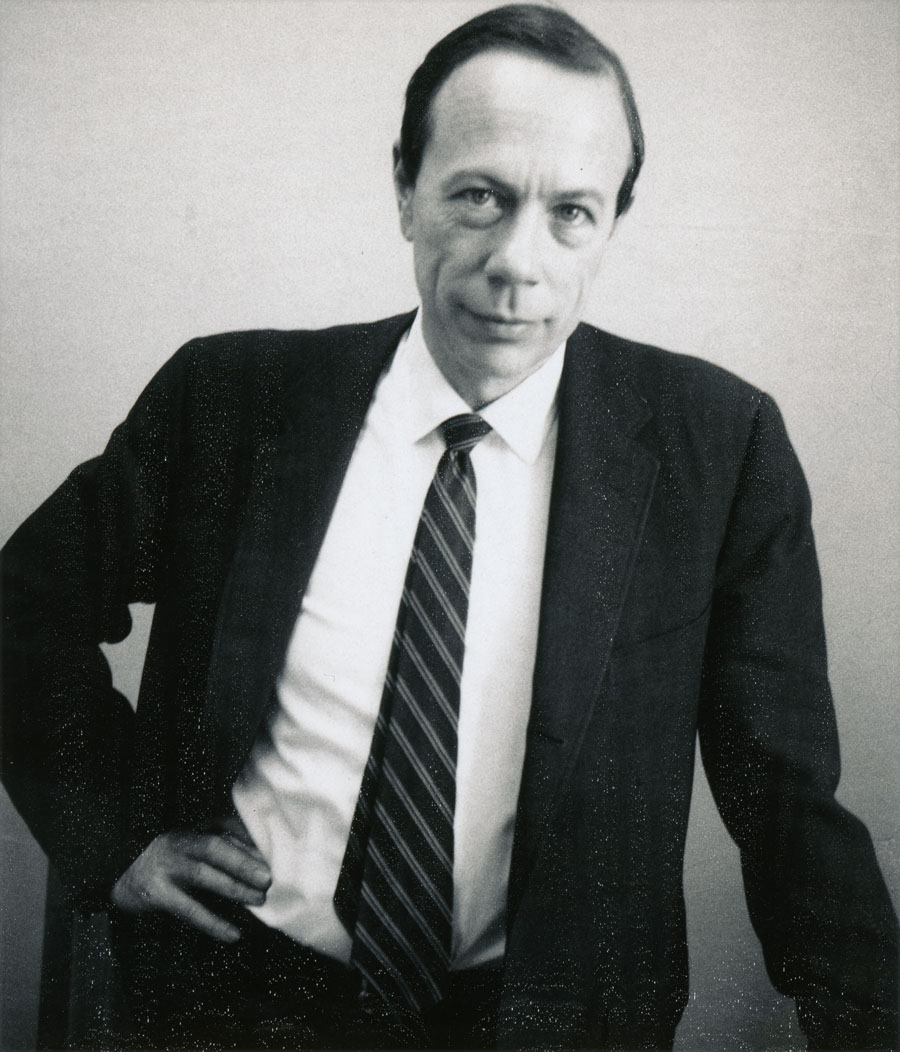
Halmos photographed Andrew Gleason again in Bloomington, Indiana, on December 5, 1969. Halmos had joined the faculty at Indiana University in Bloomington earlier that year.

Next, we have operator theorists Israel Gohberg (1928-2009), left, and Marinus Kaashoek at a conference in Tihany, Hungary, in September of 1970.
Born in Tarutino, Ukraine, Israel Gohberg earned his Ph.D. at the University of Leningrad (now St. Petersburg State University) in 1954. He spent most of his career at Kishinev (or Kishinyov or, more recently, Chisinau) State University in Moldova and the Institute of Mathematics of the Academy of Sciences of Moldova, where he advised at least 22 Ph.D. students. In 1974, he moved to Tel Aviv University in Israel and, in 1983, he became a professor at the Free University (Vrije Universiteit) of Amsterdam. He has advised at least 42 Ph.D. students in all and published at least 460 papers. (Sources: Mathematics Genealogy Project, MacTutor Archive, IEEE Xplore: Israel Gohberg)
Marinus "Rien" Kaashoek earned his Ph.D. in 1964 from the University of Leiden under advisor Adriaan Zaanen, whose photograph appears on page 9 of this collection. Kaashoek has spent his career at the Free University (Vrije Universiteit) of Amsterdam, where he has advised at least 18 Ph.D. students and written at least nine books, and is now Professor Emeritus. (Sources: Mathematics Genealogy Project, Free University of Amsterdam)
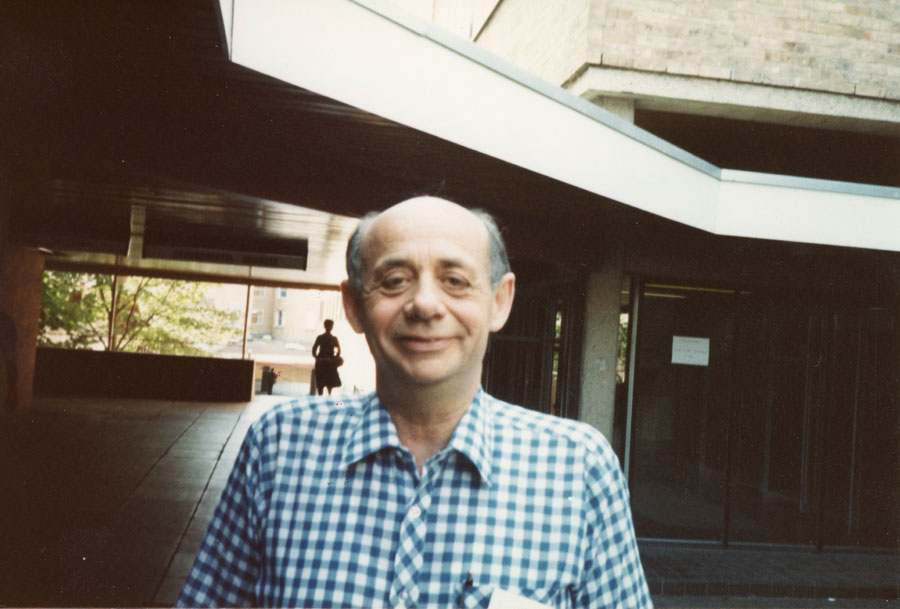
Halmos photographed Israel Gohberg again in Lancaster, England, in July of 1984.
For an introduction to this article and to the Paul R. Halmos Photograph Collection, please see page 1. Watch for a new page featuring six new photographs each week during 2012.
Regarding sources for this page: Information for which a source is not given either appeared on the reverse side of the photograph or was obtained from various sources during 2011-12 by archivist Carol Mead of the Archives of American Mathematics, Dolph Briscoe Center for American History, University of Texas, Austin.
Who's That Mathematician? Paul R. Halmos Collection - Page 18
For more information about Paul R. Halmos (1916-2006) and about the Paul R. Halmos Photograph Collection, please see the introduction to this article on page 1. A new page featuring six photographs will be posted at the start of each week during 2012.
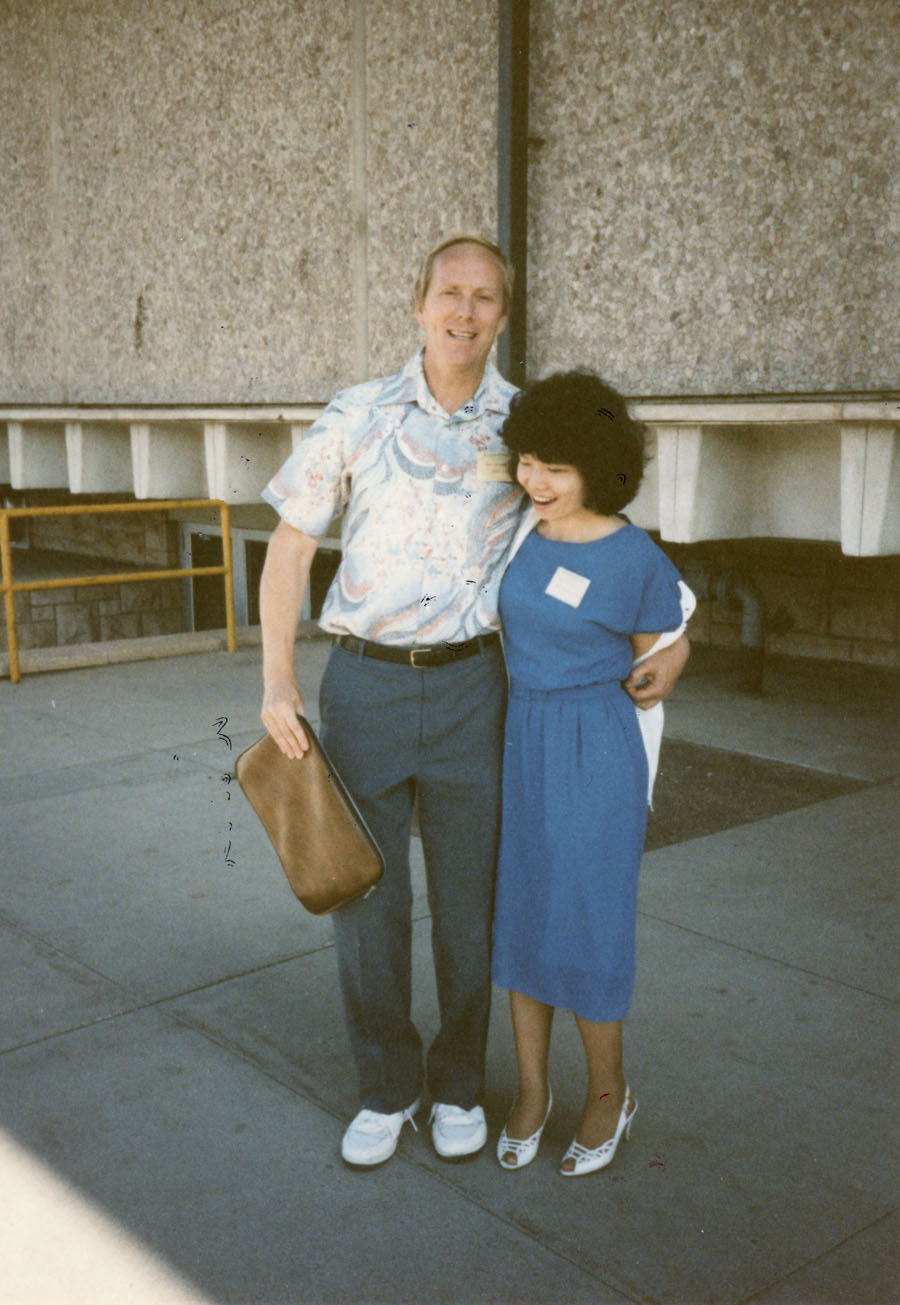
Halmos photographed Ronald Graham and Fan Chung Graham at the AMS-MAA Joint Summer Meetings in Laramie, Wyoming, in August of 1985. The Grahams have provided a link to a companion photo to this one that also appeared in Halmos' I Have a Photographic Memory (AMS, 1987).
Ron Graham earned his Ph.D. in 1962 from the University of California, Berkeley, with the dissertation “On Finite Sums of Rational Numbers.” He became a researcher at Bell Telephone Laboratories (Bell Labs), serving as Director of Information Sciences from 1962 to 1995 and then Chief Scientist until 1999, when he accepted the Jacobs Chair of Computer and Information Science at the University of California, San Diego. During the 1960s, perhaps under the influence of Paul Erdös, whom he met at a number theory conference in 1963, Graham gradually expanded his interests beyond number theory to various areas of discrete mathematics, and, by the 1970s, was developing new disciplines, such as Ramsey theory (suggested by work of Frank Ramsey in 1930). Graham served as AMS president in 1993-94 and MAA President in 2003-04. (Sources: MacTutor Archive, AMS Presidents, MAA Presidents)
Fan Chung Graham earned her Ph.D. in 1974 from the University of Pennsylvania under advisor Herbert Wilf with a dissertation on “Ramsey numbers in multi-colors and combinatorial designs.” That year, she joined the Mathematical Foundations of Computing Department at Bell Labs, publishing papers on Ramsey theory and graph theory. She was promoted to Research Manager at Bellcore in 1983 and to Division Manager of Mathematics, Information Sciences, and Operations Research in 1986. In 1994, she left Bell Labs to spend 1994-95 at the Institute for Advanced Study in Princeton, New Jersey, and 1995-98 at the University of Pennsylvania. In 1998, she became Professor of Mathematics, Computer Science, and Engineering at the University of California, San Diego, where she initially held the Akami Chair in Internet Mathematics and now holds the Paul Erdös Chair in Combinatorics. (Sources: MacTutor Archive, UC San Diego Department of Mathematics)

Ron Graham and Dwijendra (Dijen) Ray-Chaudhuri were photographed in Columbus, Ohio, in October of 1979. Ray-Chaudhuri joined the mathematics faculty at Ohio State University in Columbus in 1966, and is now Professor Emeritus of Mathematics at OSU. He earned his Ph.D. in 1959 from the University of North Carolina at Chapel Hill with a dissertation on incomplete block designs and error correcting binary codes. In 1968, he and Richard Wilson, now at Caltech, solved the general case of Kirkman’s Schoolgirl Problem (Ohio State University; for more information about the problem, see the biography of Thomas Kirkman at the MacTutor Archive). Ray-Chaudhuri has advised at least 31 Ph.D. students at Ohio State (Mathematics Genealogy Project).
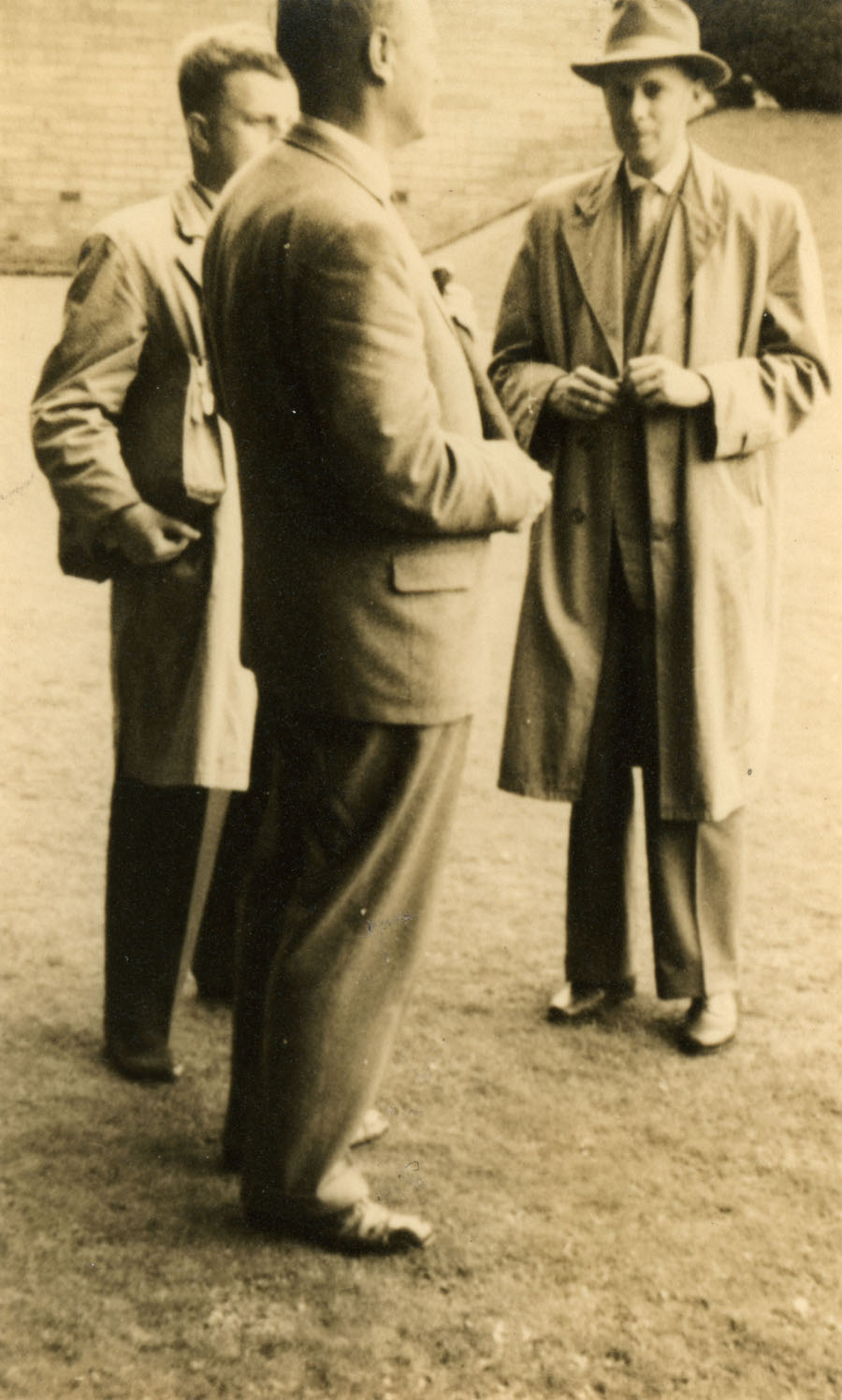
Halmos photographed, left to right, complex analysts Reinhold Remmert, Karl Stein, and Hans Grauert in September of 1958.
Reinhold Remmert earned his Ph.D. in complex variables in 1954 from Wesfälische Wilhelms-Universität Münster. His, Stein’s, and Grauert’s Doktorvater (Ph.D. advisor) was Heinrich Behnke (1898-1979). Remmert's career has included advising at least 24 Ph.D. students at Münster, Erlangen-Nürnberg, and Göttingen from 1956 to 1983 (Mathematics Genealogy Project). He is currently Professor Emeritus of Mathematics at Wesfälische Wilhelms-Universität Münster.
Karl Stein (1913-2000) earned his Ph.D. in complex variables in 1937 from Wesfälische Wilhelms-Universität Münster, and spent most of his career at Ludwig-Maximilians-Universität München, where he advised at least 28 Ph.D. students from 1956 to 1982 (Mathematics Genealogy Project). He wrote at least five papers with his Ph.D. advisor, Behnke, from 1949 to 1954 (MacTutor Archive: Behnke).
Hans Grauert (1930-2011) earned his Ph.D. in complex variables in 1954 from Wesfälische Wilhelms-Universität Münster. He and Paul Halmos both spent 1957-58 at the Institute for Advanced Study in Princeton, New Jersey; in fact, Grauert spent part of 1959 there as well. Grauert and Halmos both traveled to the International Congress of Mathematicians in Edinburgh, Scotland, in August of 1958, with Grauert giving a 30-minute address, and it is possible that this photograph was taken in Edinburgh. In 1959, Grauert was appointed to the mathematics faculty at Georg-August-Universität Göttingen, where he advised at least 44 Ph.D. students from 1961 to 1996 (Sources: Mathematics Genealogy Project, MacTutor Archive, Institute for Advanced Study).
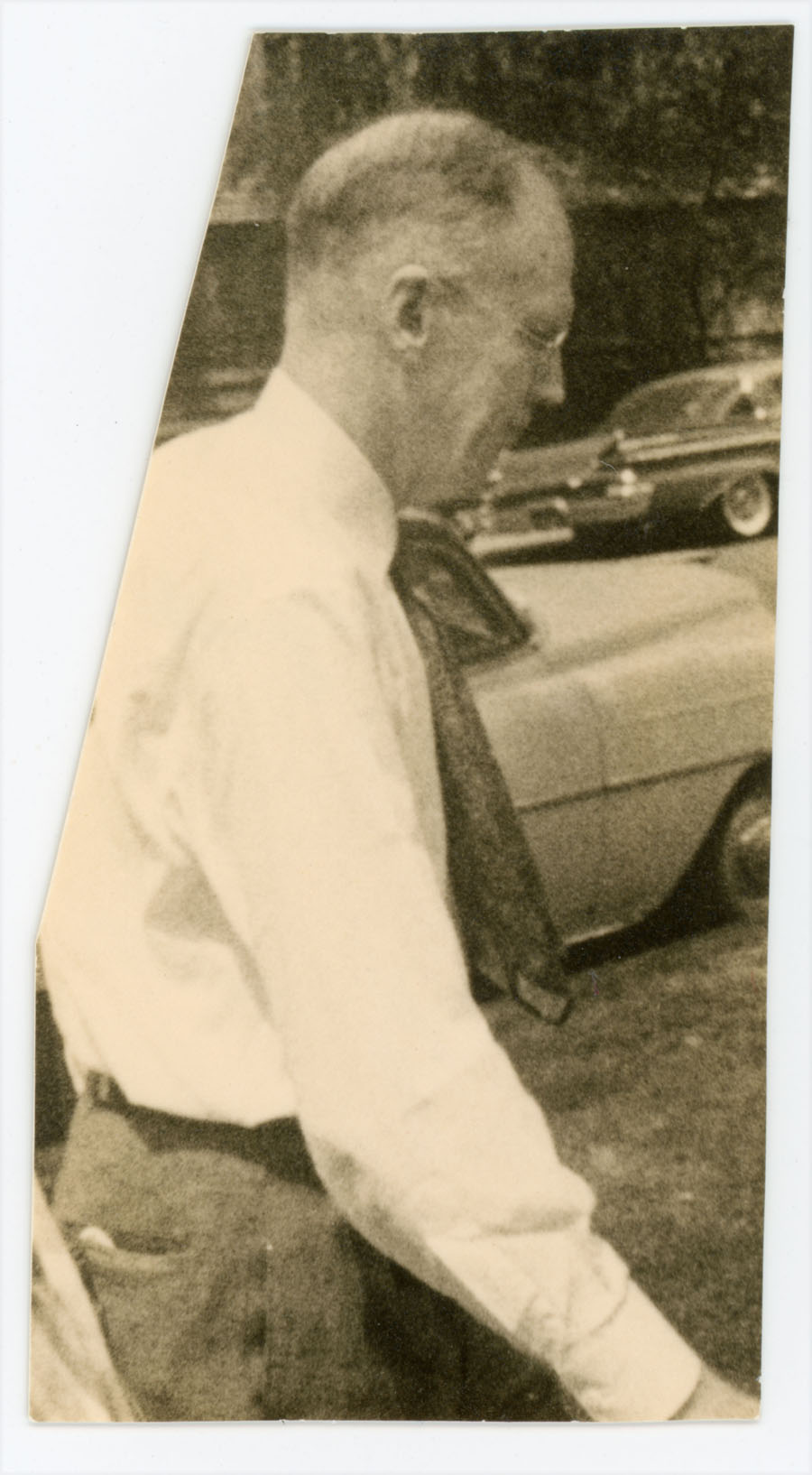
Lawrence Graves (1896-1973) was photographed by Halmos, probably in Chicago, in August of 1960. At the time, both Graves and Halmos were faculty members at the University of Chicago. Graves earned his Ph.D. in calculus of variations in 1924 from the University of Chicago under advisor Gilbert Ames Bliss. After spending two years at Harvard on a National Research Fellowship, he returned to the University of Chicago in 1926 and spent the rest of his career there, retiring in 1961. He advised at least 18 Ph.D. students from 1930 to 1952, including Edward McShane, for whom he served as second advisor to Bliss, in 1930; Herman Goldstine in 1936; and Robert Bartle, who appears in a photo on page 4 of this collection, in 1951. The second edition of Graves’ Theory of Functions of Real Variables, originally published in 1956 (first edition in 1946), is now available from Dover Books. According to its website, the University of Chicago Mathematics Department annually awards the Lawrence and Josephine Graves Prize for teaching. (Sources: Mathematics Genealogy Project and "Lawrence Murray Graves, 1896-1973," by H. H. Goldstine and E. J. McShane, 3pp., date unknown, available from University of Chicago Mathematics Department)
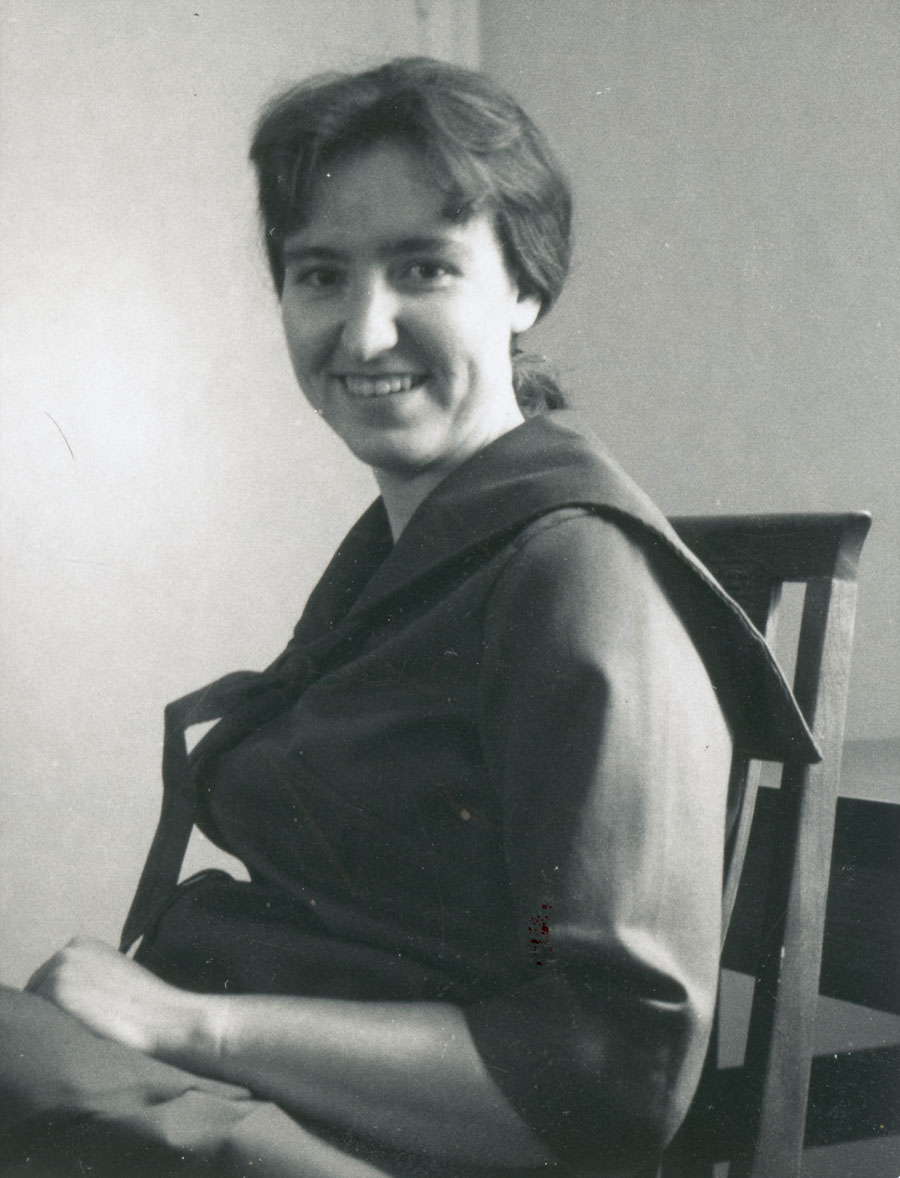
Halmos photographed Mary Gray in Irvine, California, on March 27, 1966. Gray remembers that she and her husband Alfred Gray, a differential geometer then at the University of California, Berkeley, attended a mathematics meeting in Irvine in March of 1966, and that she and Paul Halmos first met at this meeting.
Mary Gray earned her Ph.D. in 1964 from the University of Kansas with the dissertation “Radical Subcategories.” She was a professor at California State University, Hayward (now East Bay), at the time this photo was taken and moved to American University in Washington, D.C., in 1968, where she is Professor of Mathematics and Statistics. After publishing the book A Radical Approach to Algebra in 1970, Gray turned from ring theory to applied statistics and mathematics education in order, she recalls, "to have a more immediate effect on the real world." Today, she is a statistician (and lawyer) whose favorite applications of statistics include human rights, economic equity, legal issues, and education. She helped found the Association for Women in Mathematics in 1971 and served as its first president from 1971 to 1973. She has been nationally recognized for her mentoring of aspiring statisticians and mathematicians, most recently in 2012 by the Committee of Presidents of Statistical Societies, and also by the American Association for the Advancement of Science in 1994. As of June 1, 2012, Gray has advised 34 Ph.D. students at American University. (Sources: MacTutor Archive, American University, American University Department of Mathematics and Statistics)
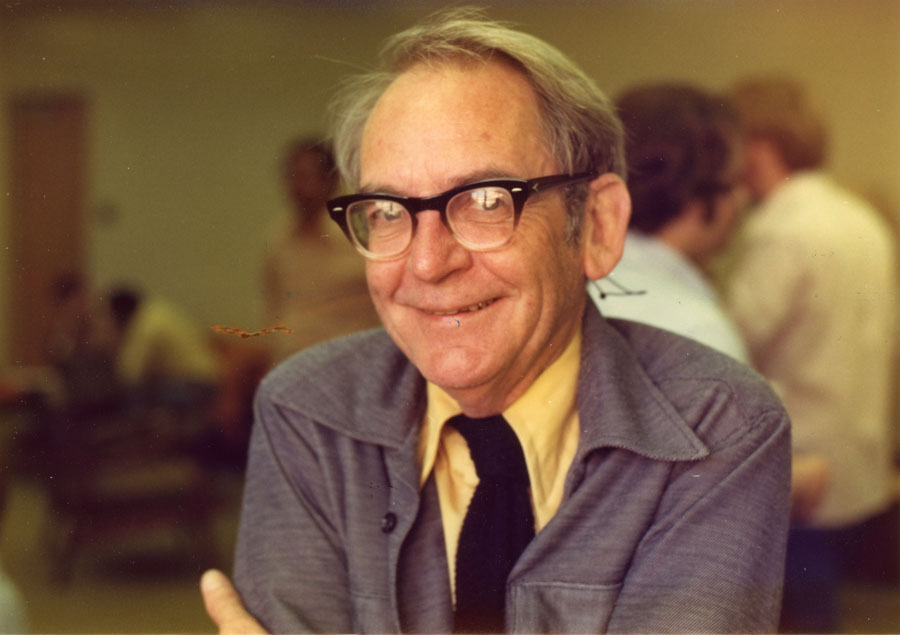
Halmos photographed John W. Green (1914-2000) in 1977. At the time, Green was Professor of Mathematics at the University of California, Los Angeles (UCLA). After receiving bachelors and masters degrees from what was then the Rice Institute and is now Rice University in Houston, Texas, John Willie Green earned his Ph.D. from the University of California, Berkeley, in 1938, with a dissertation on harmonic functions. He then spent one year at Harvard University (1938-39) and six years at the University of Rochester (1939-1945 with leave assignment at the Ballistics Research Laboratory, Aberdeen Proving Ground, Maryland, during World War II). In 1945, he moved to UCLA, where he spent the rest of his career. He was active in American Mathematical Society governance, most notably serving as AMS Secretary from 1957 to 1967. We thank Nathaniel Grossman, Professor Emeritus of Mathematics at UCLA, who was Green's colleague from 1966 onward, for identifying Green for us and pointing us toward the University of California's memorial article about him cited here. (Source: John W. Green Memorial at calisphere)
For an introduction to this article and to the Paul R. Halmos Photograph Collection, please see page 1. Watch for a new page featuring six new photographs each week during 2012.
Regarding sources for this page: Information for which a source is not given either appeared on the reverse side of the photograph or was obtained from various sources during 2011-12 by archivist Carol Mead of the Archives of American Mathematics, Dolph Briscoe Center for American History, University of Texas, Austin.
Who's That Mathematician? Paul R. Halmos Collection - Page 19
For more information about Paul R. Halmos (1916-2006) and about the Paul R. Halmos Photograph Collection, please see the introduction to this article on page 1. A new page featuring six photographs will be posted at the start of each week during 2012.
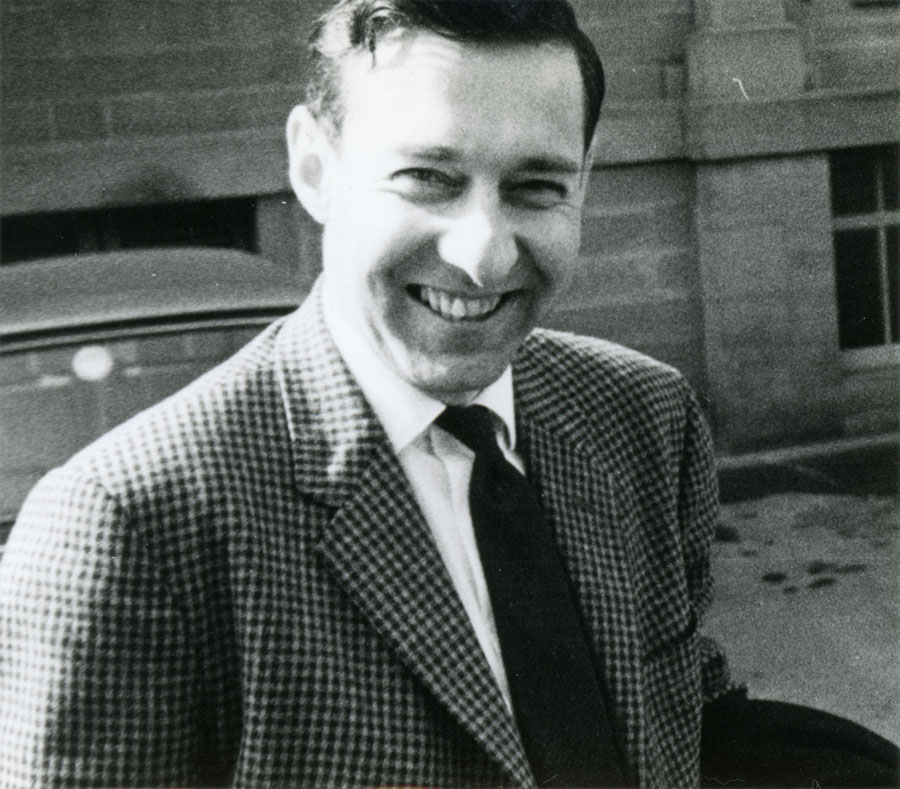
Halmos photographed group theorist James Alexander “Sandy” Green (1926-2014) at the British Mathematical Colloquium in Dundee, Scotland, in April of 1965. At this BMC, Halmos gave a plenary lecture on “Some recent progress in Hilbert space” and Green a morning lecture on “Symmetric Functions and Group Representations.” At the time, Green was finishing up the second of two years at the University of Sussex in Brighton, England, and had accepted an appointment to the mathematics faculty at the brand-new University of Warwick in Coventry, England, where he would spend the rest of his career. Green earned his Ph.D. from Cambridge in 1951, with the dissertation “Abstract Algebra and Semigroups,” written under Philip Hall, and, by 1955, had shifted his focus to representation and character theory. He advised at least two Ph.D. students, including Bhama Srinivasan in 1960, at the University of Manchester, England, where he was on the faculty from 1950 to 1963. He then advised at least 21 more students at the University of Warwick from 1968 to 1992. Green is now Emeritus Professor of Mathematics at Warwick and a Fellow of the Royal Society. (Sources: Mathematics Genealogy Project; MacTutor Archive, including Biographies and BMC Programs)
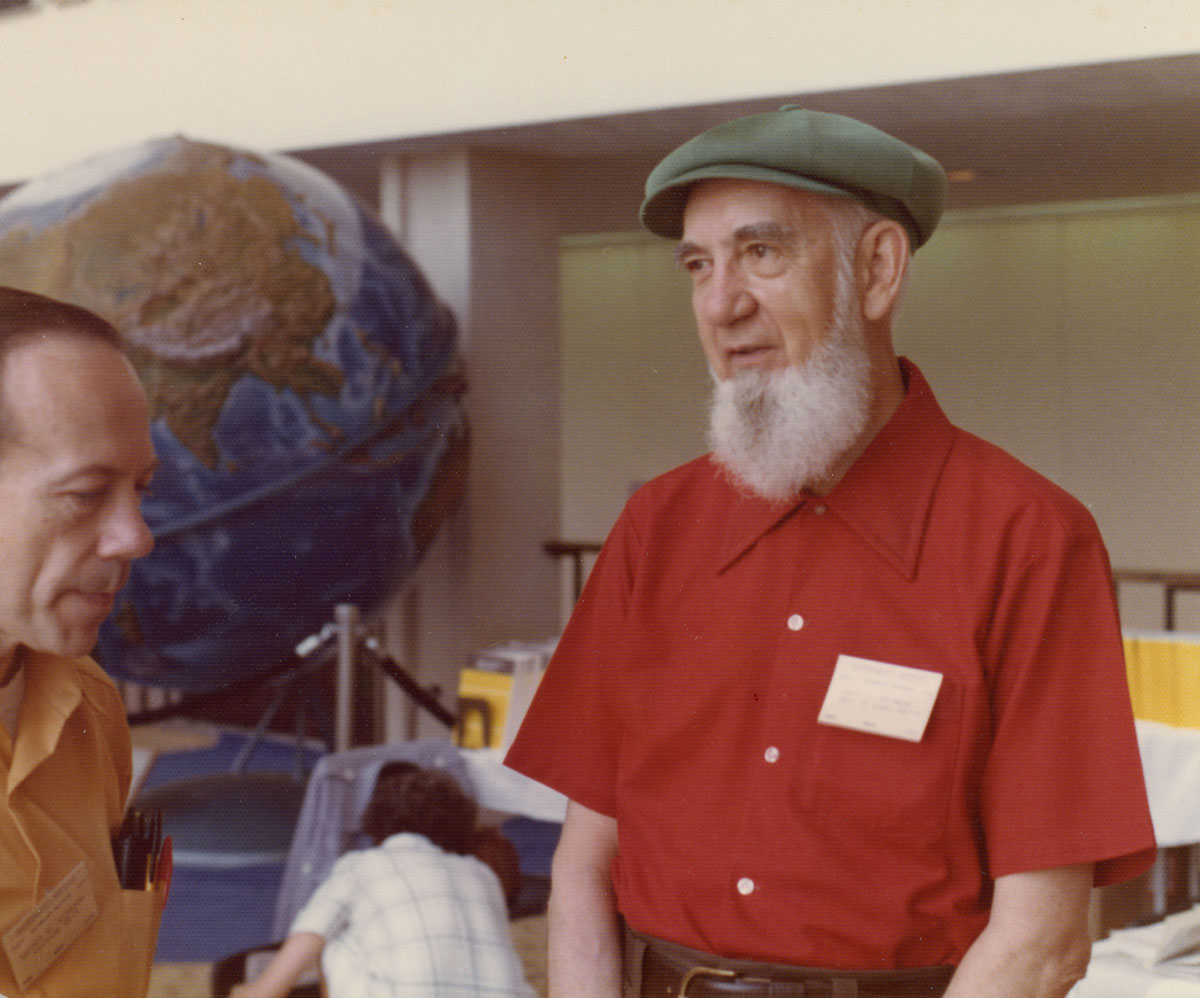
Andrew Gleason (1921-2008) and Robert Greenwood (1911-1993) were photographed at the AMS Summer Meeting at Western Michigan University in Kalamazoo, Michigan, in August of 1975.
Two more photographs of Gleason appear on page 17 of this collection, where you can read more about him.
Greenwood earned his Ph.D. from Princeton University in 1939 with a dissertation on “Hankel series,” written under Salomon Bochner. Born in Texas and educated as an undergraduate (in physics) at the University of Texas at Austin, he returned to UT Austin to join the mathematics faculty there in 1938, leaving only to serve in the U.S. Navy during World War II (1942-46) and during the Korean Conflict (1950-52). Many years later, he retired from the U.S. Naval Reserve as a Lieutenant Commander. Throughout his university career, Greenwood took on summer consulting positions and reservist duties in which he applied mathematics to real-world problems. At UT Austin, Greenwood was known as an excellent teacher and lecturer with primary interest in numerical analysis, but also probability and cryptography. He retired in 1981 and remained active as Professor Emeritus until his death. (Sources: Mathematics Genealogy Project, UT Austin Memorial)
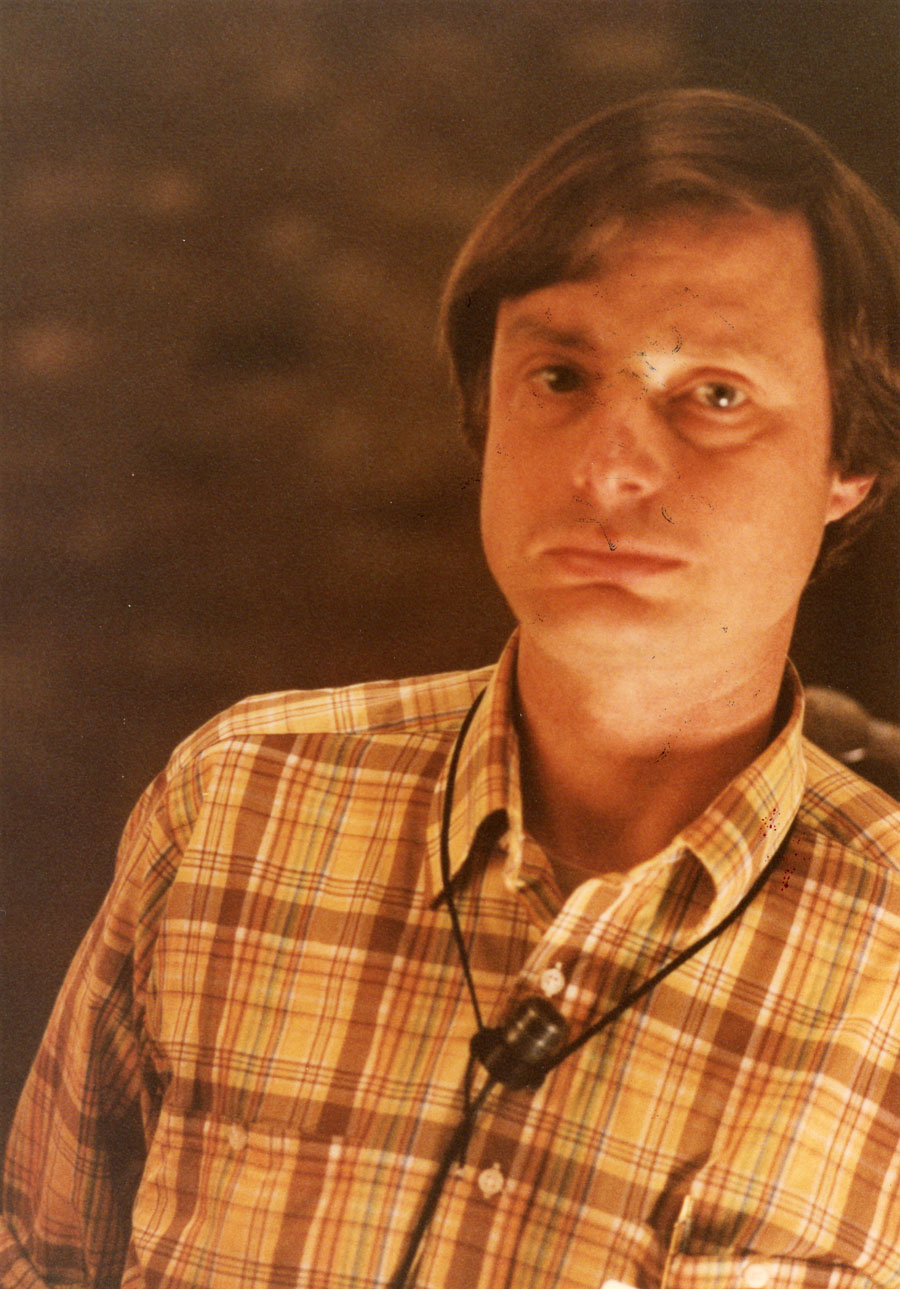
Halmos photographed Phillip Griffiths in Bloomington, Indiana, in April of 1980. At the time this photo was taken, Griffiths was on the mathematics faculty at Harvard University and Halmos at Indiana University in Bloomington. Griffiths now is Professor Emeritus of Mathematics at the Institute for Advanced Study (IAS) in Princeton, New Jersey, where he served as Director from 1991 to 2003 and as Professor of Mathematics from 2004 to 2009. Before joining IAS as a faculty member, he visited IAS during 1968-70 and 1981-82. Griffiths earned his Ph.D. from Princeton in 1962 with the dissertation, “On certain homogeneous complex manifolds,” and then served on the faculties of the University of California, Berkeley (1962-67), Princeton University (1967-72), Harvard University (1972-83), and Duke University (1983-91), where he also was University Provost. He advised at least nine Ph.D. students at UC Berkeley, at least ten at Harvard, and at least nine at Princeton, the latter during both 1971-73 and 1997-2004. (Sources: Mathematics Genealogy Project, MacTutor Archive, Institute for Advanced Study)
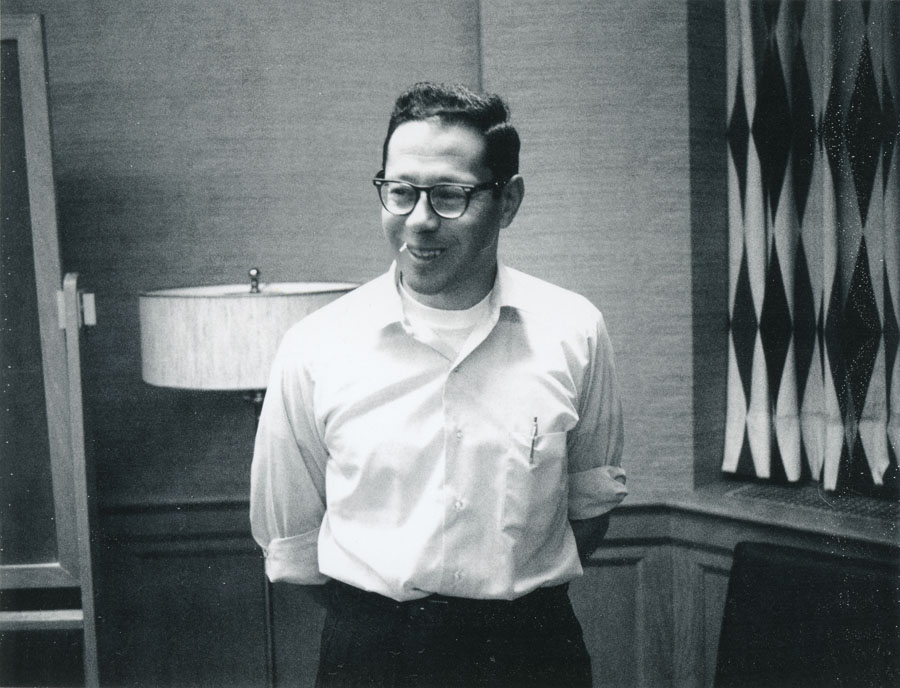
Leonard Gross was photographed by Halmos in Bloomington, Indiana, on December 8, 1972. Gross received his Ph.D. from the University of Chicago in 1958 with the dissertation, “Integration and non-linear transformations of Hilbert space,” written under Irving Segal. Halmos was on the University of Chicago faculty from 1946 to 1961, and Gross confirms that he and Halmos first met when Gross was a graduate student there. At the time this photo was taken, Halmos was a faculty member at Indiana University in Bloomington. After earning his Ph.D., Gross spent two years at Yale, then moved to Cornell University, where he has advised at least 35 Ph.D. students so far. He lists his current mathematical interests as functional analysis and constructive quantum field theory. (Sources: Mathematics Genealogy Project, Cornell University)
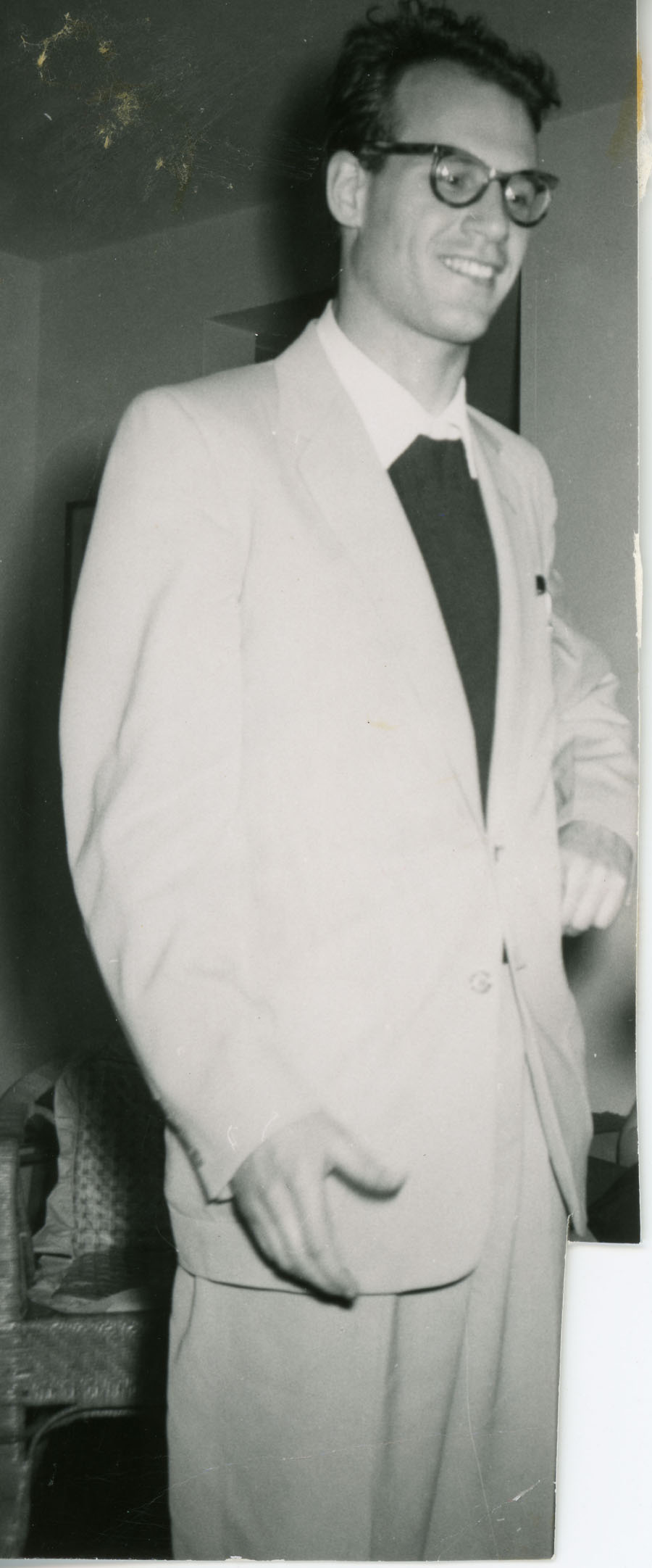
Halmos photographed Alexander Grothendieck (1928-2014) in Chicago, Illinois, probably during academic year 1955-56, which Grothendieck spent at the University of Kansas. Halmos was on the faculty at the University of Chicago at the time he took this photograph. Grothendieck earned his Ph.D. in 1953 from Université Henri Poincaré Nancy with a dissertation in functional analysis written under Laurent Schwartz and Jean Dieudonné (see page 11 of this collection for a photo of Dieudonné). He spent 1953-55 at the University of São Paulo, Brazil, and the next academic year in the United States. By the time he returned to the Centre National de la Recherche Scientifique in Paris in 1956, his research interests had shifted to topology and geometry. In 1959 he became a founding faculty member of the Hautes Études Scientifiques (IHES), where he remained until 1970. During 1959-70, Grothendieck established important results in many fields, most notably algebraic geometry, and, perhaps even more significantly, helped effect a major shift in mathematics towards generalization and abstraction. He received the Fields Medal in 1966 for advances in algebraic geometry and in homological algebra and for introducing K-theory (Grothendieck groups and rings). In 1970, Grothendieck left IHES and began to divide his time between mathematics and political activities. He seemed to leave mathematics altogether when he retired from Université Montpellier in 1988.
Grothendieck advised at least 17 Ph.D. students, most of them at at Université de Paris. Perhaps most notable among his Ph.D. students is Pierre Deligne, who spent 1965-66 in Paris, but who earned his degree from Université Libre de Bruxelles in 1968. Deligne is now Professor Emeritus at the Institute for Advanced Study in Princeton, New Jersey. (Sources: Mathematics Genealogy Project; MacTutor Archive; Fields Medallists; AMS Notices: “Comme Appelé du Néant: As If Summoned from the Void: The Life of Alexandre Grothendieck,” Part 1 and Part 2, by Allyn Jackson, Oct.-Nov. 2004; Institute for Advanced Study)
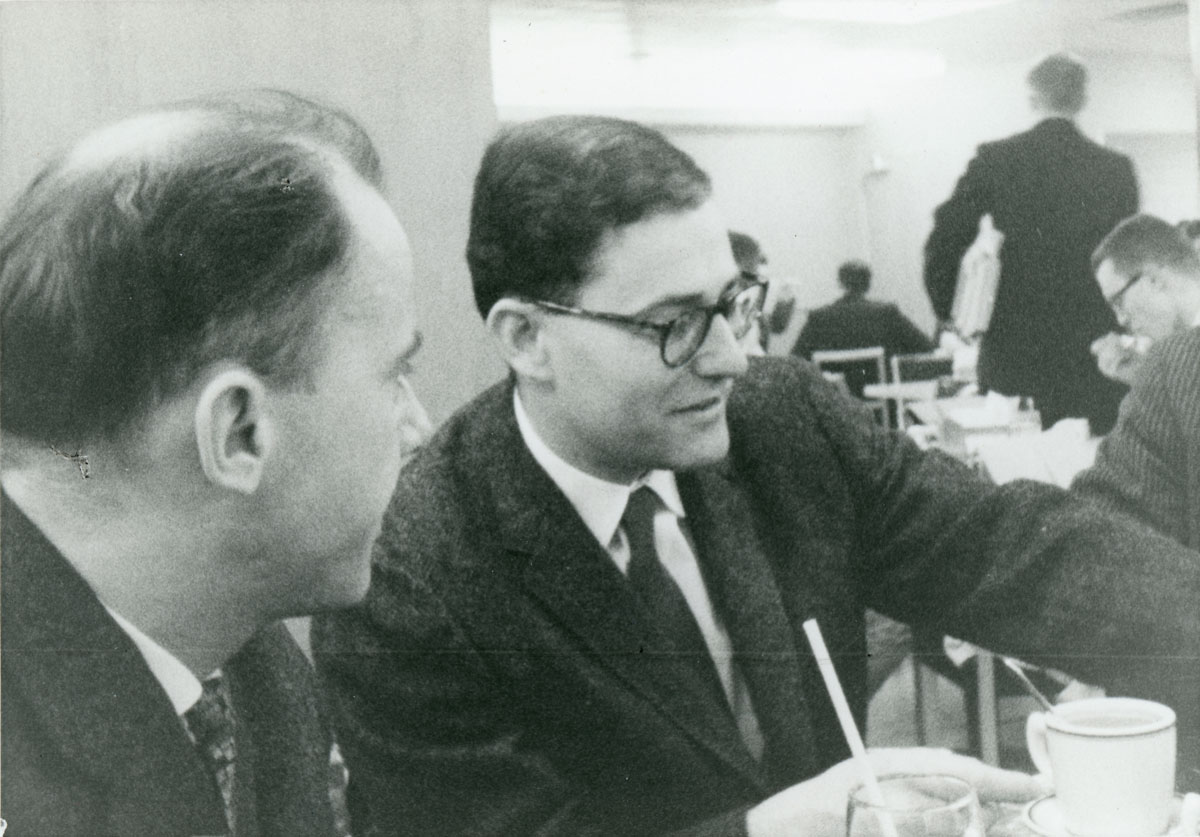
Halmos photographed Hans-Wilhelm Knobloch and Karl Gruenberg (1928-2007) in Ann Arbor, Michigan, in March of 1962. Halmos was a faculty member at the University of Michigan in Ann Arbor at that time.
Knobloch, who was a visiting faculty member at the University of Michigan from 1961 to 1963, earned his Ph.D. from Humboldt-Universität zu Berlin in 1950 with the dissertation, “Über galoissche Algebren,” written under advisor Helmut Hasse. In 1958, after publishing five papers in algebra and number theory, Knobloch published three papers, one nominally in field theory, but the other two in integral transforms and in differential equations. Judging from his publication record (including two papers on differential equations published in the Michigan Mathematics Journal in 1962 and 1963), differential equations were most likely what he worked on during his two years at Michigan. From there he moved to Aarhus University in Denmark (1963-65) and then to the Technische Universität Berlin (1965-1970). In 1970, he joined the mathematics faculty at Bayerische Julius-Maximilians-Universität Würzburg, where he has been Professor Emeritus since 1995. By the time he moved to Würzburg, he was working in control theory as well as differential equations. (Sources: Mathematics Genealogy Project, MathSciNet, Mathematisches Institut der Universität Würzburg)
Gruenberg earned his Ph.D. from Cambridge in 1954 with a dissertation on commutators of groups and associative rings written under Philip Hall. He accepted a position at Queen Mary College, University of London, in 1953 and spent his career there, retiring in 1993 but remaining active as Professor Emeritus until his death. During the 1960s, he focused on the cohomology of groups; his book Cohomological topics in group theory (Springer-Verlag, 1970) contains his work from that decade. His second book, Relation modules of finite groups (AMS, 1976), described his work from the early 1970s. (Source: MacTutor Archive)
For an introduction to this article and to the Paul R. Halmos Photograph Collection, please see page 1. Watch for a new page featuring six new photographs each week during 2012.
Regarding sources for this page: Information for which a source is not given either appeared on the reverse side of the photograph or was obtained from various sources during 2011-12 by archivist Carol Mead of the Archives of American Mathematics, Dolph Briscoe Center for American History, University of Texas, Austin.
Who's That Mathematician? Paul R. Halmos Collection - Page 20
For more information about Paul R. Halmos (1916–2006) and about the Paul R. Halmos Photograph Collection, please see the introduction to this article on page 1. A new page featuring six photographs will be posted at the start of each week during 2012.

Halmos photographed Shanti Gupta (1925–2002) on March 20, 1968, in East Lansing, Michigan. Gupta was born in India and taught at the University of Delhi for several years before traveling to the U.S. on a Fulbright Scholarship in 1953. After earning his Ph.D. at the University of North Carolina, Chapel Hill, in 1956, Gupta did statistics research at Bell Laboratories in Allentown, Pennsylvania. In 1962, he accepted a position as Professor of Statistics and Mathematics at Purdue University, where he founded the Department of Statistics in 1968, the year this photo was taken. Halmos was on the faculty at the University of Michigan in Ann Arbor at the time. Gupta remained at Purdue (in West Lafayette, Indiana) for the rest of his career; Halmos left Michigan a few months after this photo was taken for the University of Hawaii in Honolulu. (Source: MacTutor Archive)
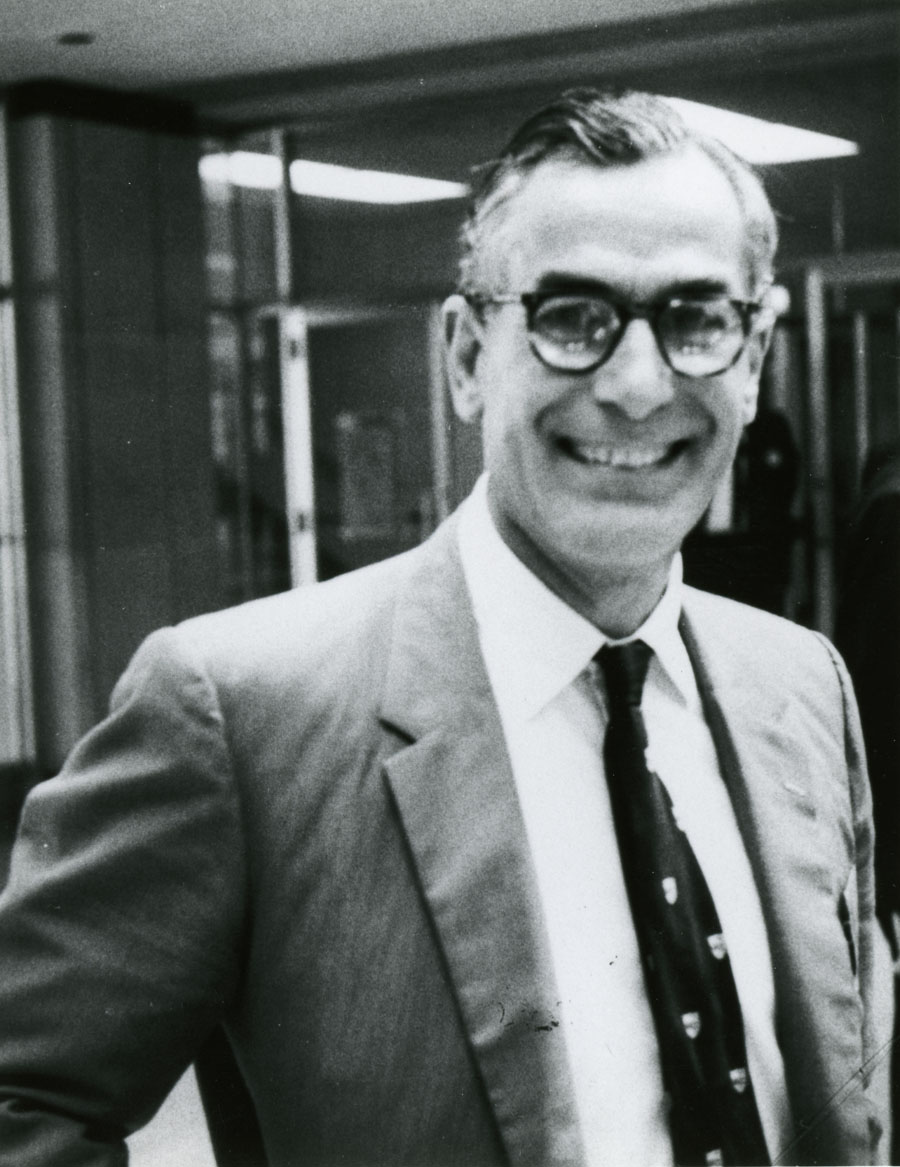
Halmos photographed Richard Guy (1916–2020) in 1963. Educated at Cambridge (M.A. in 1941), Guy has spent most of his career at the University of Calgary, Alberta, Canada, where he retired as Faculty Professor of Pure Mathematics and is now Professor Emeritus of Mathematics. His well-known books include Winning Ways for Your Mathematical Plays (with John Conway and Elwyn Berlekamp, 4 vols., A. K. Peters, 2001-04), The Inquisitive Problem Solver (with Loren Larson and Paul Vaderlind, MAA, 2002), and The Book of Numbers (with John Conway, Copernicus Press, 1996). Best known as an inventor of mathematical games, puzzles, and problems, his research interests include combinatorics, graph theory, and number theory. He describes his combinatorial interests as a combination (!) of combinatorics, geometry, and logic, including combinatorial games, enumerative combinatorics, and combinatorial geometry. (Source: University of Calgary; see also T&F Virtual Special Issue)
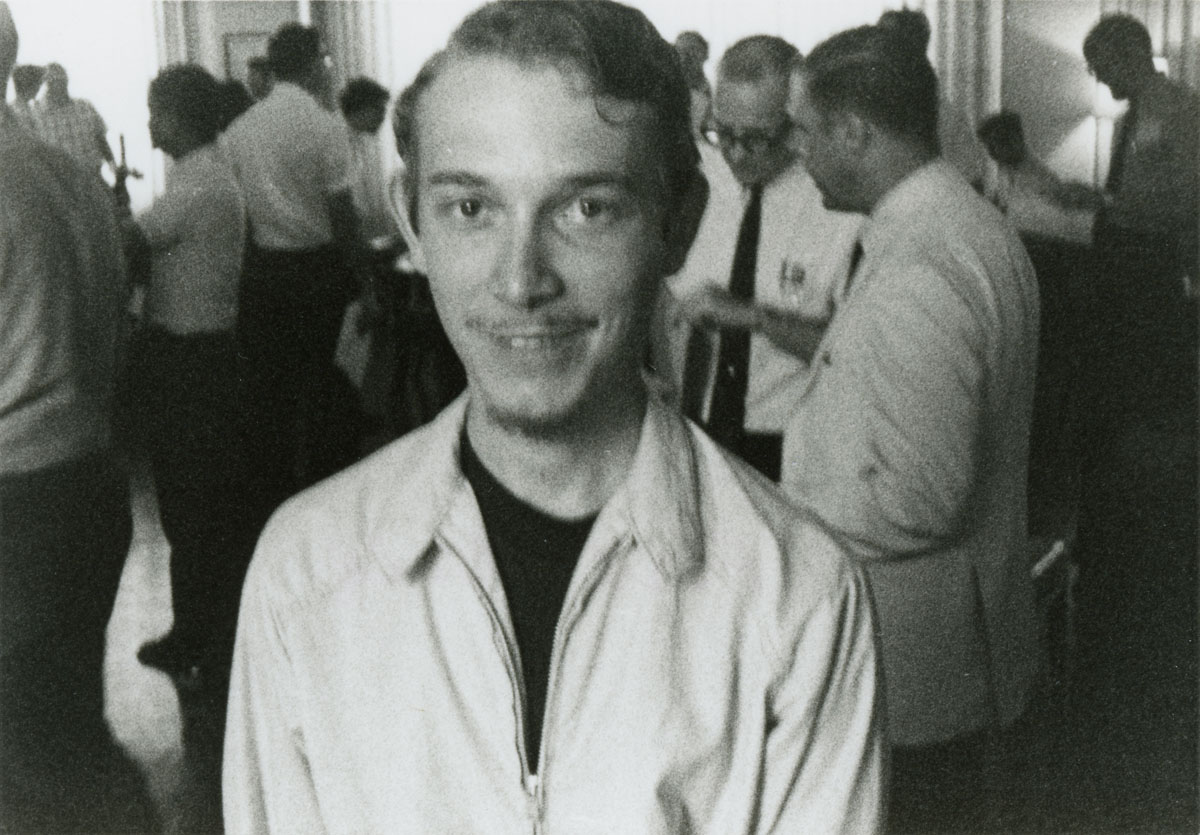
Halmos photographed his (future!) Ph.D. student, Donald Hadwin, at a National Science Foundation (NSF) Regional Conference at Texas Christian University in Fort Worth, Texas, in June of 1970. Don Hadwin earned his Ph.D. in 1975 from Indiana University in Bloomington with the dissertation “Closures of Unitary Equivalence Classes.” He is Professor of Mathematics at the University of New Hampshire in Durham, and lists his research interests as Hilbert spaces, operator theory, free entropy, operator algebras, ring theory, and K-theory. (Sources: Mathematics Genealogy Project, MathSciNet, University of New Hampshire)
Hadwin remembers the conference and that Halmos took his photograph there. After asking Halmos some questions about harmonic analysis, "I asked him for a necessary and sufficient condition for becoming a Halmos student, to which he replied that a necessary condition was being a student at Indiana University. After hearing Paul's incredible ten lectures at the conference, I was determined to become his student."
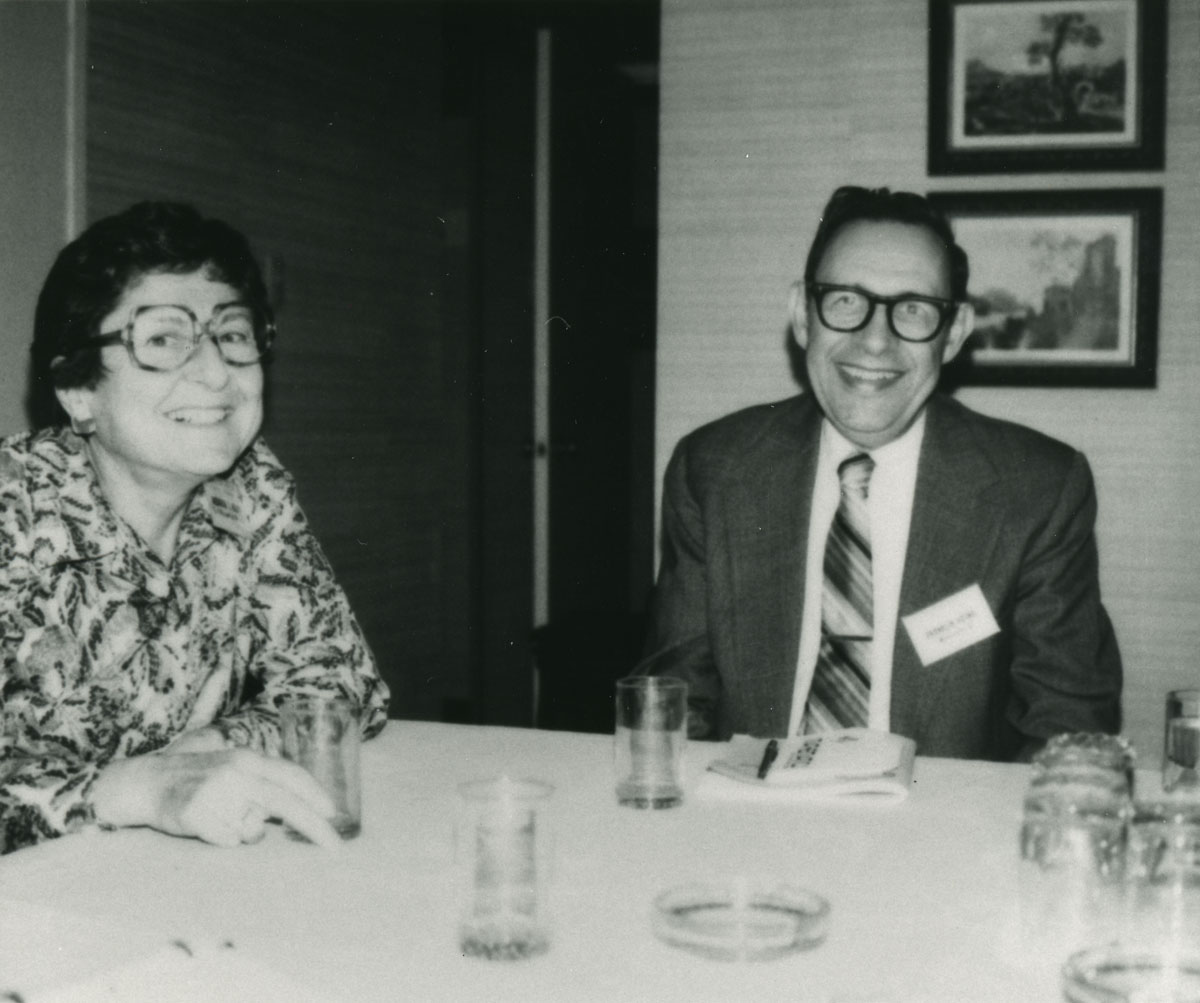
Deborah Tepper Haimo (1921–2007) and Franklin Haimo (1919–1982) were photographed in 1981.
Born in Odessa, Ukraine, and raised in Palestine, Deborah Tepper Haimo taught at Washington University from 1948 to 1961, earned her Ph.D. from Harvard in 1964 for the dissertation “Integral equations associated with Hankel transforms,” and in 1968 became Professor of Mathematics at the University of Missouri, St. Louis. At UMSL she not only continued her research on integral transforms and heat equations, but also built up the mathematics department, as she was hired to do. She served as president of the MAA during 1991–92. In 1992, she retired from UMSL and moved to La Jolla, California, where she was a visiting scholar at the University of California, San Diego.
Franklin Haimo, who was born in Portland, Oregon, earned his Ph.D. in 1947 from Harvard with the dissertation “Division by the Integers in Abelian Groups,” written under Hassler Whitney. He joined the mathematics faculty at Washington University in St. Louis in 1947 and remained a faculty member there until his death in 1982. He published papers on group theory throughout his career. Franklin and Deborah Tepper Haimo first met at Harvard University in a course taught by Saunders Mac Lane and were married in 1944. Both Haimos were members of the Institute for Advanced Study in Princeton, New Jersey, in 1972–73.
When she served as MAA President during 1991-92, Deborah Haimo established the MAA Award for Distinguished College or University Teaching of Mathematics. Renamed in 1993 as the Franklin and Deborah Tepper Haimo Award for Distinguished College or University Teaching, it is awarded annually by the MAA to three of its members.
(Sources: Agnes Scott College Biographies of Women Mathematicians; MAA Presidents; Carole B. Lacampagne, “Fond Memories of My Friend Deborah Tepper Haimo, 1921–2007,” MAA FOCUS, August/September 2007, p. 21; Mathematics Genealogy Project; MathSciNet; Public Affairs Biographical Faculty Files, Box H1, University Archives, Department of Special Collections, Washington University Libraries, St. Louis, MO; MAA Haimo Award)
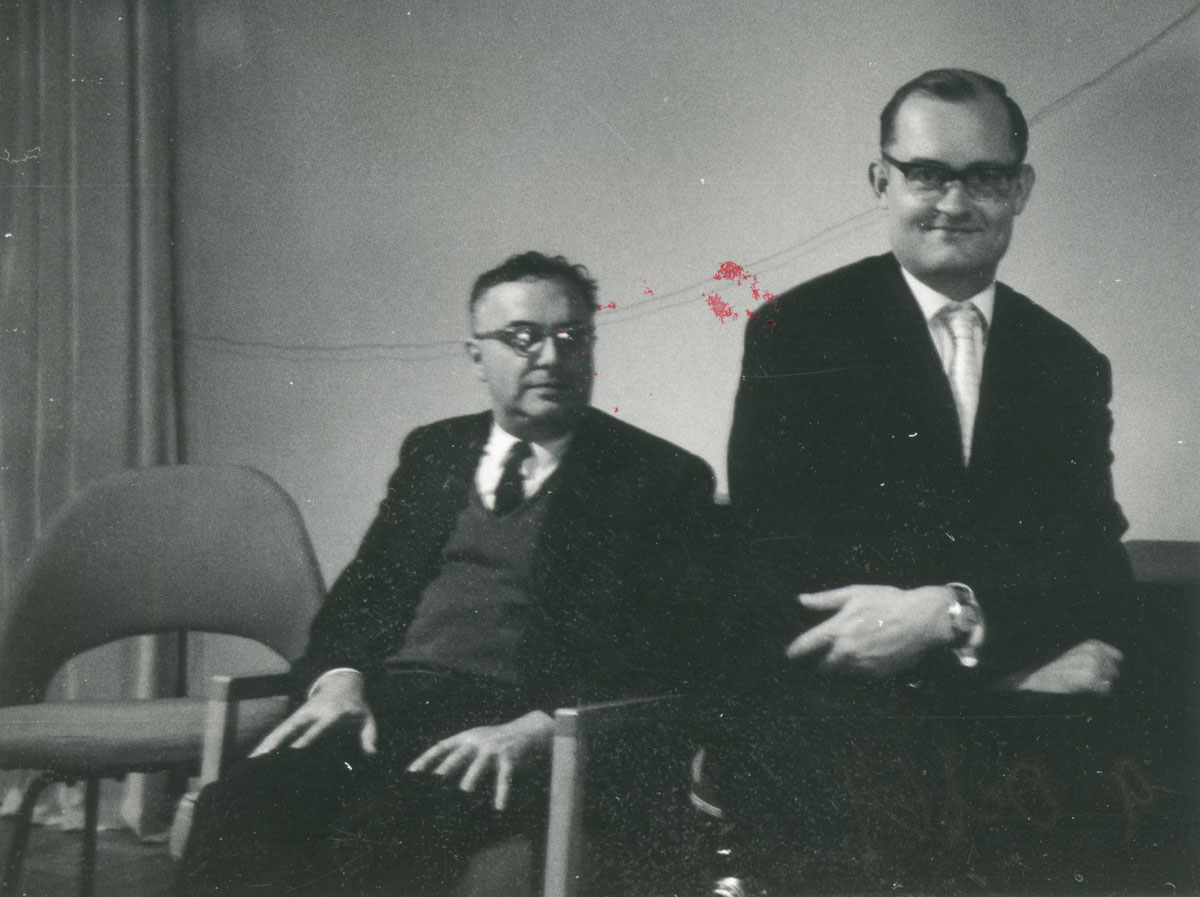
William Boone (1920–1983), left, and Wolfgang Haken were photographed at Princeton University on October 9, 1964.
Boone earned his Ph.D. from Princeton in 1952 and, from 1958 onward, was a faculty member at the University of Illinois at Urbana-Champaign. He worked almost exclusively on the unsolvability of the word problem in group theory. (Source: MacTutor Archive)
Wolfgang Haken is Professor Emeritus of Mathematics in the Department of Mathematics and in the Center for Advanced Study at the University of Illinois at Urbana-Champaign. Most famous for proving the Four Color Theorem with Kenneth Appel in 1976 (first conjectured in 1852), he also solved the Knotting Problem, first posed in 1847. (Source: University of Illinois Center for Advanced Study)
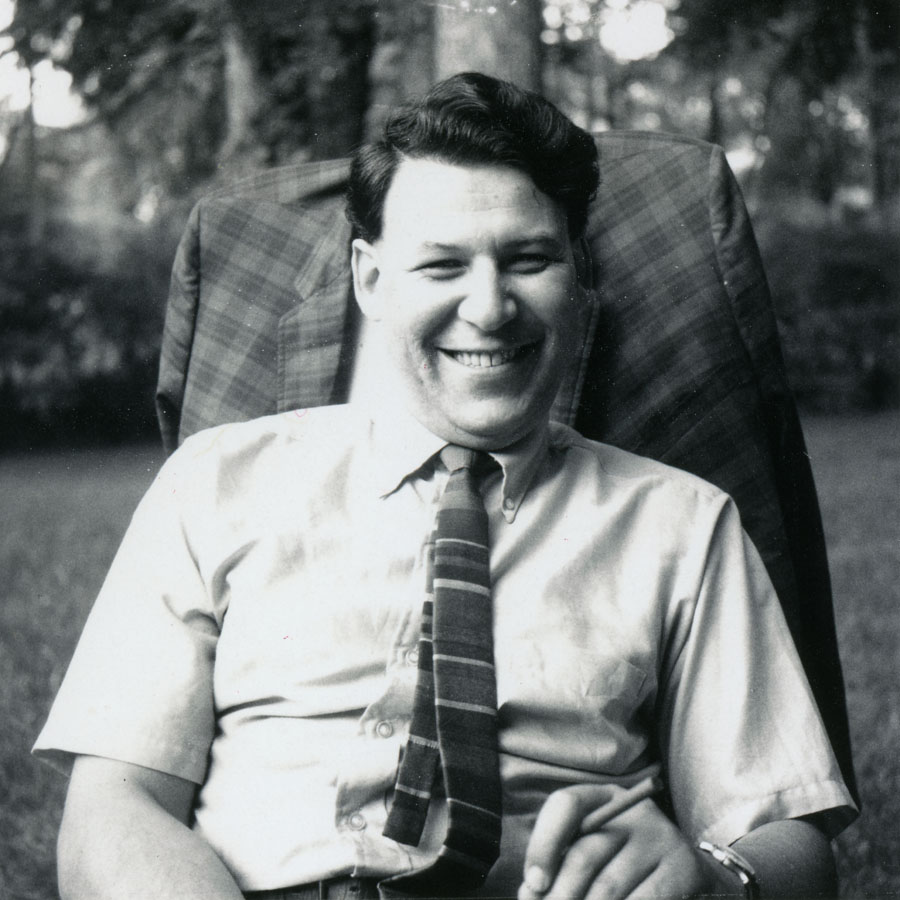
Halmos photographed Heini Halberstam (1927–2014) in 1966 in Ann Arbor, Michigan. Halberstam recalled that he "was spending a happy and productive year in Ann Arbor at that time" and was using Halmos' office. Halmos was a professor at the University of Michigan in Ann Arbor from 1961 to 1968, but he spent the 1965-66 academic year visiting the University of Miami in Coral Gables, Florida.
Born in 1926 in the Sudetenland, Bohemia, Czechoslovakia (now part of the Czech Republic), Halberstam escaped the Nazis in 1939 via Kindertransport from Prague to London. He earned his Ph.D. in 1952 from the University of London in analytic number theory and, during his career, published on integer sequences and higher dimensional sieves. Halberstam also helped edit the works of William Rowan Hamilton, Harold Davenport (with whom he collaborated), J. E. Littlewood, and L. K. Hua. He was a faculty member at Trinity College, Dublin, from 1962 to 1964; at the University of Nottingham, England, from 1964 to 1980; and at the University of Illinois, Urbana-Champaign, from 1980 to 1996. He was Professor Emeritus of Mathematics at Illinois from 1996 until his death on 25 January 2014. (Sources: University of Illinois Mathematics Department, accessed 2 June 2012; Heini Halberstam via email, 3 June 2012; obituary in The Guardian by Judith Halberstam, 30 Jan. 2014)
For an introduction to this article and to the Paul R. Halmos Photograph Collection, please see page 1. Watch for a new page featuring six new photographs each week during 2012.
Regarding sources for this page: Information for which a source is not given either appeared on the reverse side of the photograph or was obtained from various sources during 2011–12 by archivist Carol Mead of the Archives of American Mathematics, Dolph Briscoe Center for American History, University of Texas, Austin.
Who's That Mathematician? Paul R. Halmos Collection - Page 21
For more information about Paul R. Halmos (1916-2006) and about the Paul R. Halmos Photograph Collection, please see the introduction to this article on page 1. A new page featuring six photographs will be posted at the start of each week during 2012.
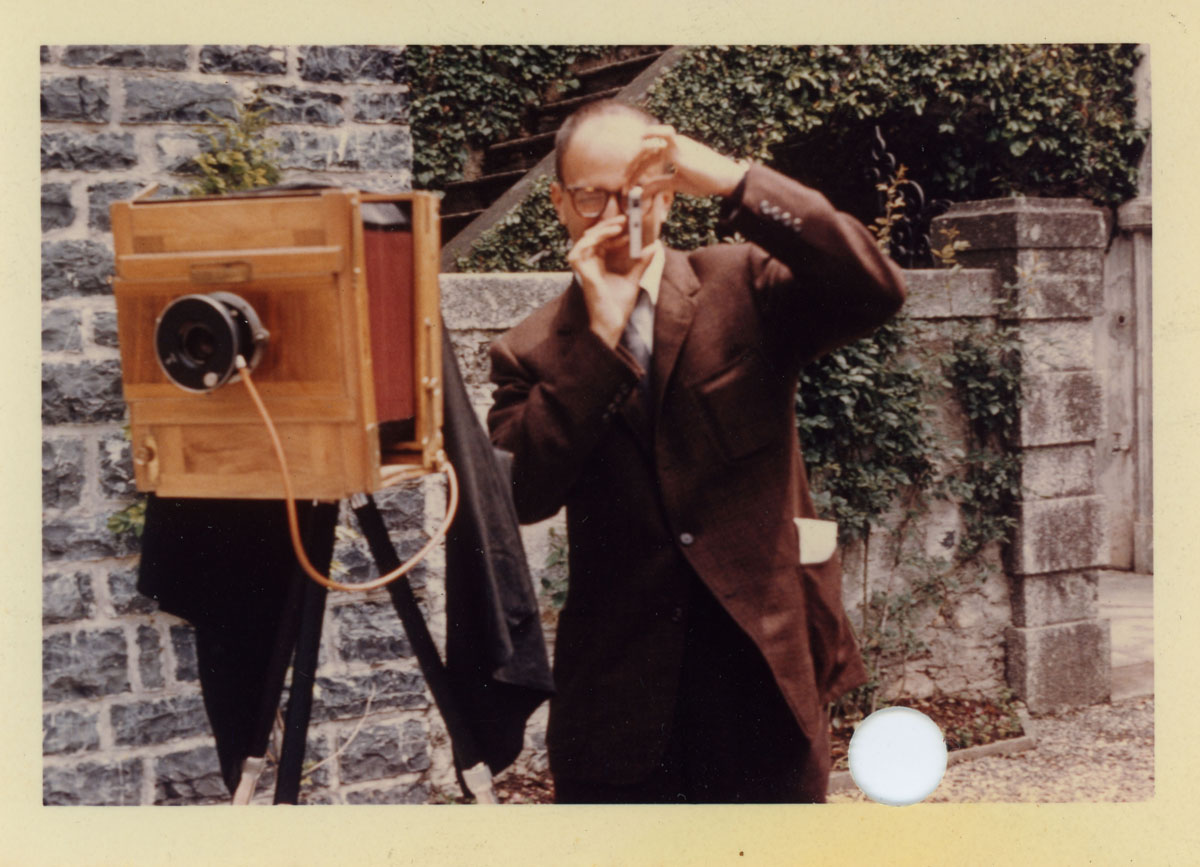
Paul Halmos himself was photographed in Varenna, Italy, in June of 1960, apparently caught in the act of setting up a photograph. Written on the back of this photo, in a very neat hand not belonging to Halmos, are the words “Best regards, Eberhard.” Assuming not only that Eberhard was a mathematician, but also that he was the best-known mathematician named “Eberhard” of the 20th century, the writer (and presumably photographer) may have been Eberhard Hopf (1902-1983). Born in Salzburg, Austria, Hopf received his Ph.D. in 1926 from the University of Berlin, Germany, under advisors Erhard Schmidt and Issai Schur. He worked in topology and ergodic theory, holding faculty positions mainly in the U.S., except for professorships at the universities of Leipzig and Munich, Germany, from 1936 to 1947. Hopf’s longest faculty appointment was at Indiana University from 1949 to 1972, when he retired, but he remained a research faculty member until his death in 1983. Halmos was a faculty member at Indiana University from 1969 to 1985. (Sources: MacTutor Archive, Mathematics Genealogy Project)
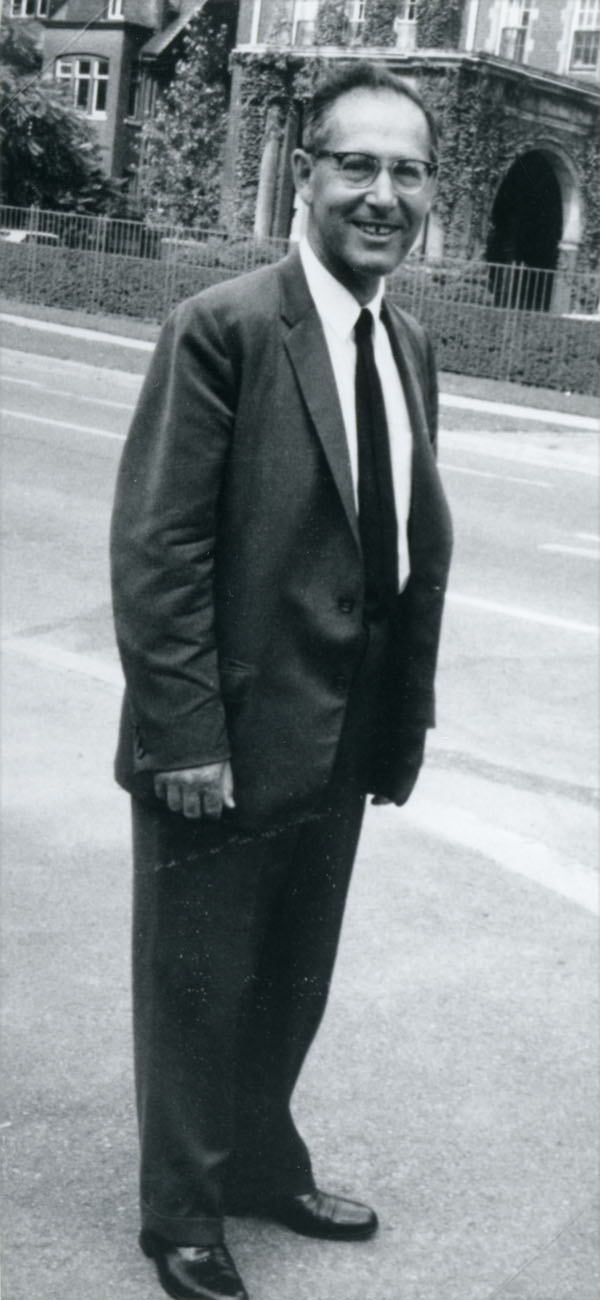
Israel Halperin (1911-2007) was photographed by Halmos in 1967. Halperin earned his Ph.D. from Princeton University in 1936 with the dissertation, “Adjoints and Closures of Linear Differential Operators,” written under Salomon Bochner and John von Neumann. After short stints at Yale and Harvard, he was on the mathematics faculty of Queen’s University in Kingston, Ontario, Canada, from 1939 to 1966 and the University of Toronto, Ontario, from 1966 to 1976. He was a pioneer in the field of operator algebras and also became known as a human rights activist following his own “Red scare” imprisonment in Canada in 1946-47. (Sources: Mathematics Genealogy Project, Toronto Globe and Mail (pdf file), Princeton Alumni Weekly)
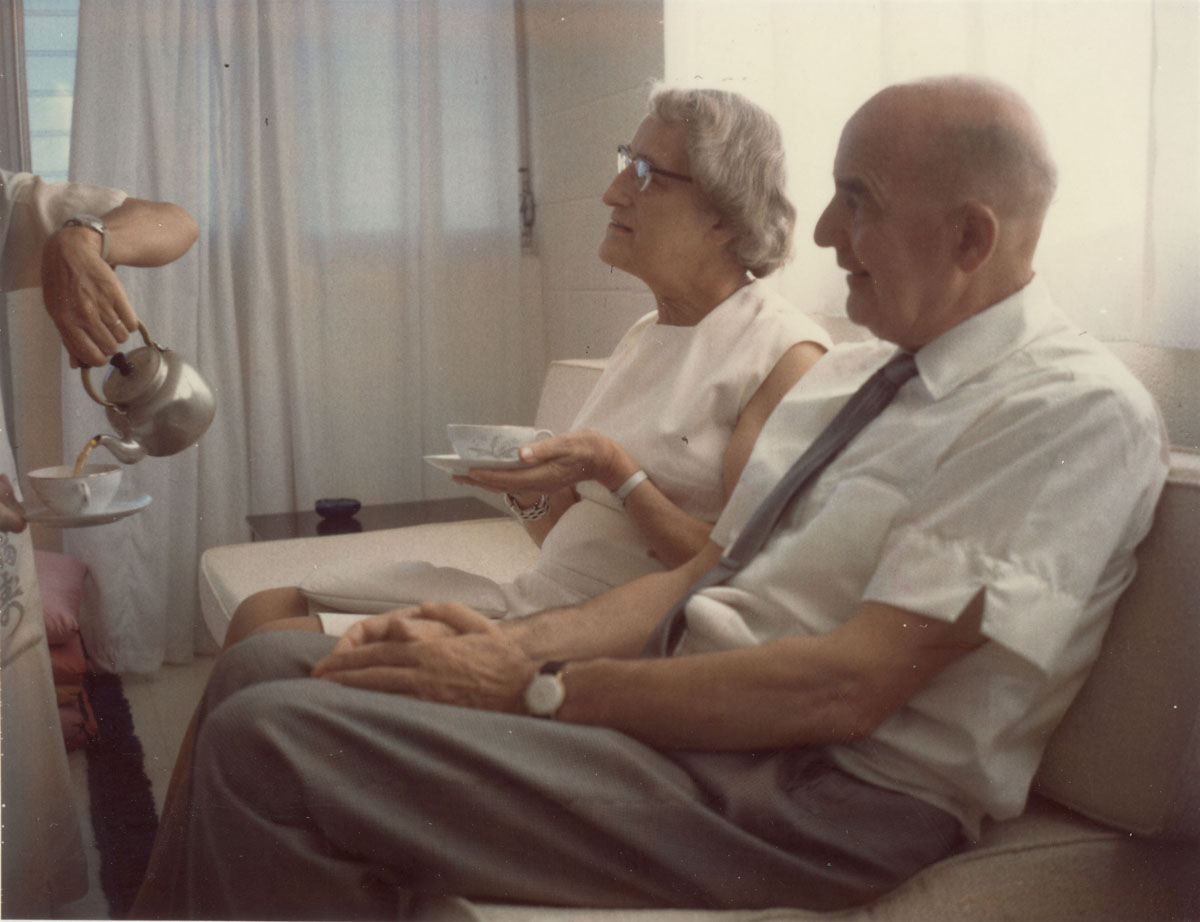
Halmos photographed number theorist Helmut Hasse (1898-1979) and his wife, identified only as Mrs. Hasse, in Honolulu, Hawaii, in January of 1967. Hasse earned his Ph.D. in 1922 at the University of Marburg under advisor Kurt Hensel, and taught at a number of German universities with his longest tenure, 1950-1966, at Hamburg University, from which he retired. He is famous for his contributions to many areas of number theory, including class field theory, Brauer groups of algebraic number fields, elliptic curves, and perhaps above all local methods in algebraic number theory. He also served as editor of Crelle’s Journal for 50 years. Halmos would return to Honolulu as a professor at the University of Hawaii during the 1968-1969 academic year. (Sources: MacTutor Archive, Mathematics Genealogy Project)
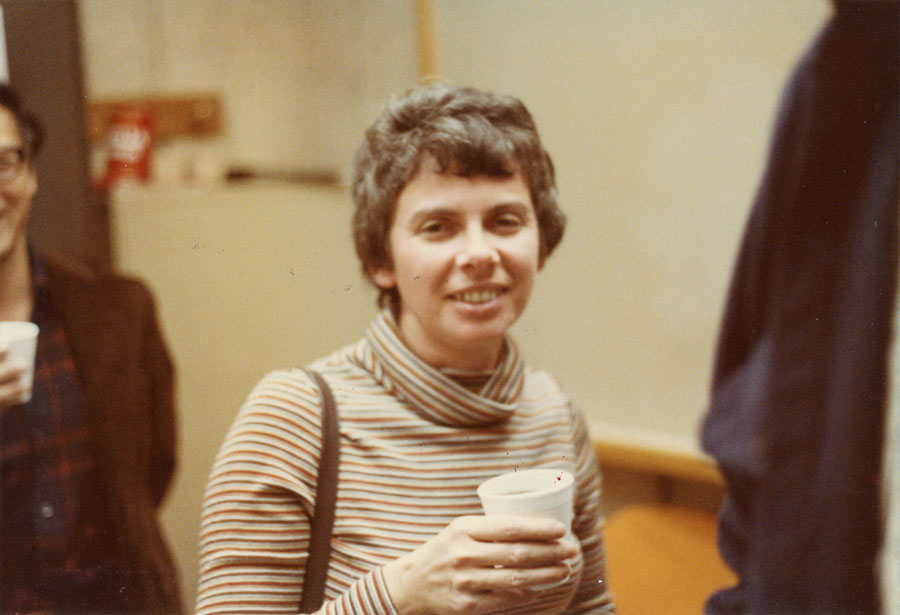
Mathematical logician Louise Hay (1935-1989) was photographed in November of 1978 at a colloquium at the University of Illinois, Chicago Circle (which became the University of Illinois at Chicago in 1982). Hay was a mathematics professor at Chicago from 1968 until her death in 1989 and Mathematics Department Head from 1980 to 1989. She earned her Ph.D. in 1965 from Cornell University with a dissertation on recursion theory written under Anil Nerode. She was a founding member of the Association for Women in Mathematics (AWM), which in 1990 established the Louise Hay Award for Contributions to Mathematics Education to honor her success as a teacher and mentor. (Sources: MacTutor Archive, University of Illinois at Chicago, Biographies of Women Mathematicians (Agnes Scott College), Mathematics Genealogy Project)
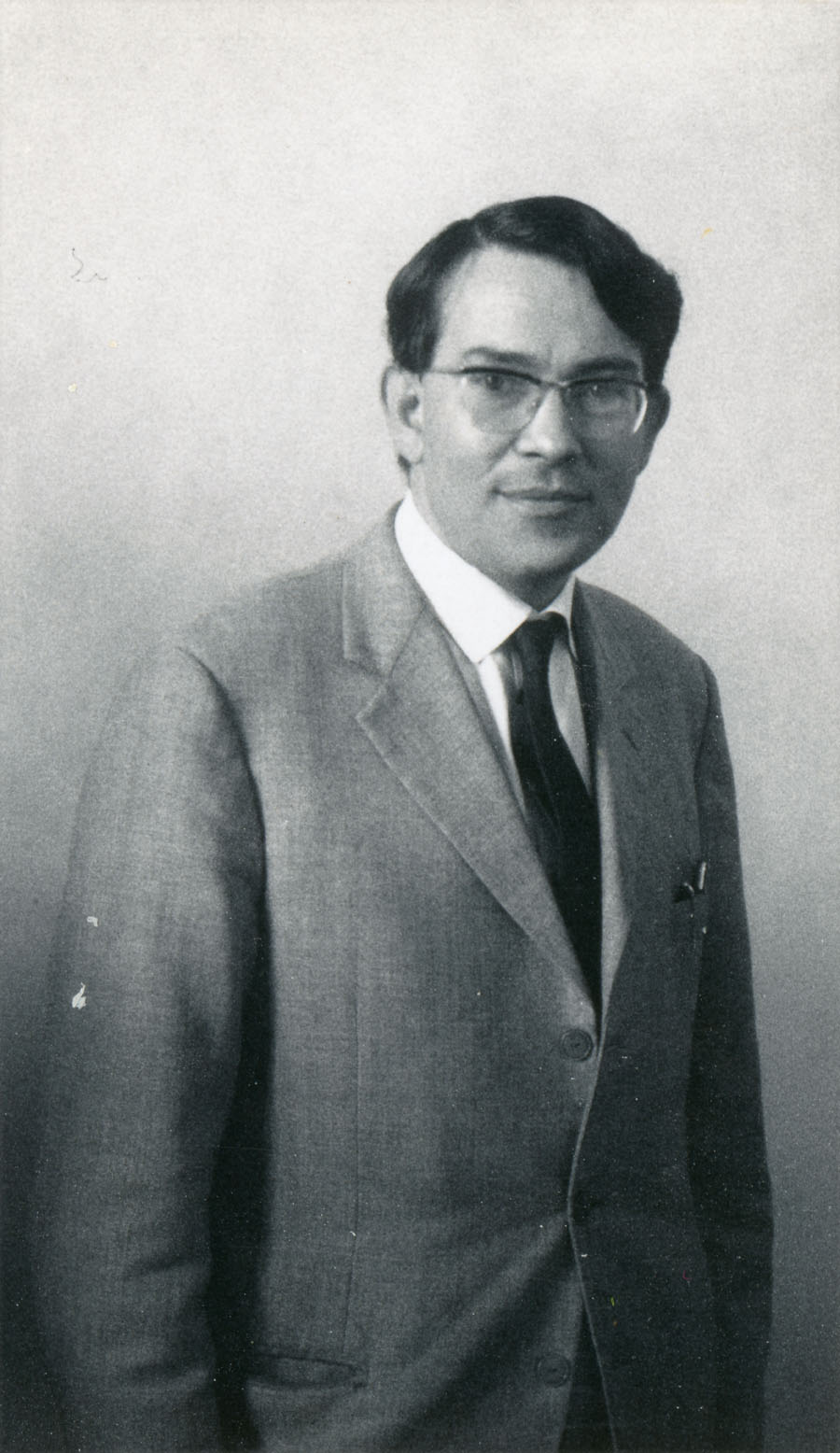
Halmos photographed complex analyst Walter Hayman in 1968, possibly in London, England. Hayman earned his Ph.D. in about 1947 from Cambridge under advisor Mary Cartwright. Although he spent some years at the University of Exeter (1947-1956) and York University (1985-1993), he spent most of his career at Imperial College, London (1956-1985, 1995-present). In 1955, he proved the asymptotic Bieberbach Conjecture and in 1956 he became a fellow of the Royal Society as well as the first-ever Professor of Pure Mathematics at Imperial College. He and his wife, mathematics teacher Margaret Crann Hayman, founded the British Mathematical Olympiad in 1966 and first sent a UK team to the International Mathematical Olympiad in 1967. (Sources: MacTutor Archive, Mathematics Genealogy Project)
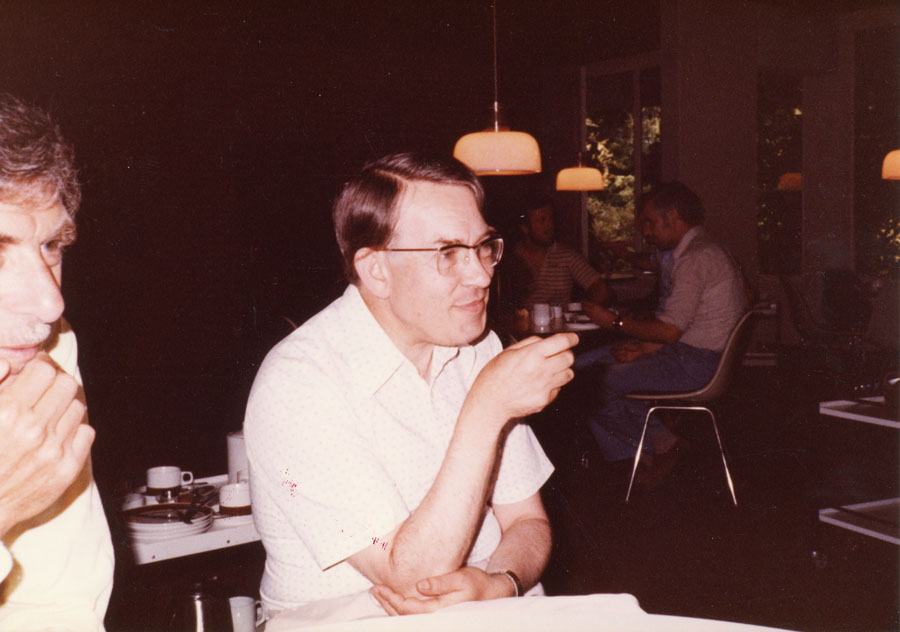
Halmos photographed Walter Hayman again at the Oberwolfach Conference Center in Germany in August of 1983. For two more photos of Hayman at Oberwolfach, see the Oberwolfach Photograph Collection.
For an introduction to this article and to the Paul R. Halmos Photograph Collection, please see page 1. Watch for a new page featuring six new photographs each week during 2012.
Regarding sources for this page: Information for which a source is not given either appeared on the reverse side of the photograph or was obtained from various sources during 2011-12 by archivist Carol Mead of the Archives of American Mathematics, Dolph Briscoe Center for American History, University of Texas, Austin.
Who's That Mathematician? Paul R. Halmos Collection - Page 22
For more information about Paul R. Halmos (1916-2006) and about the Paul R. Halmos Photograph Collection, please see the introduction to this article on page 1. A new page featuring six photographs will be posted at the start of each week during 2012.
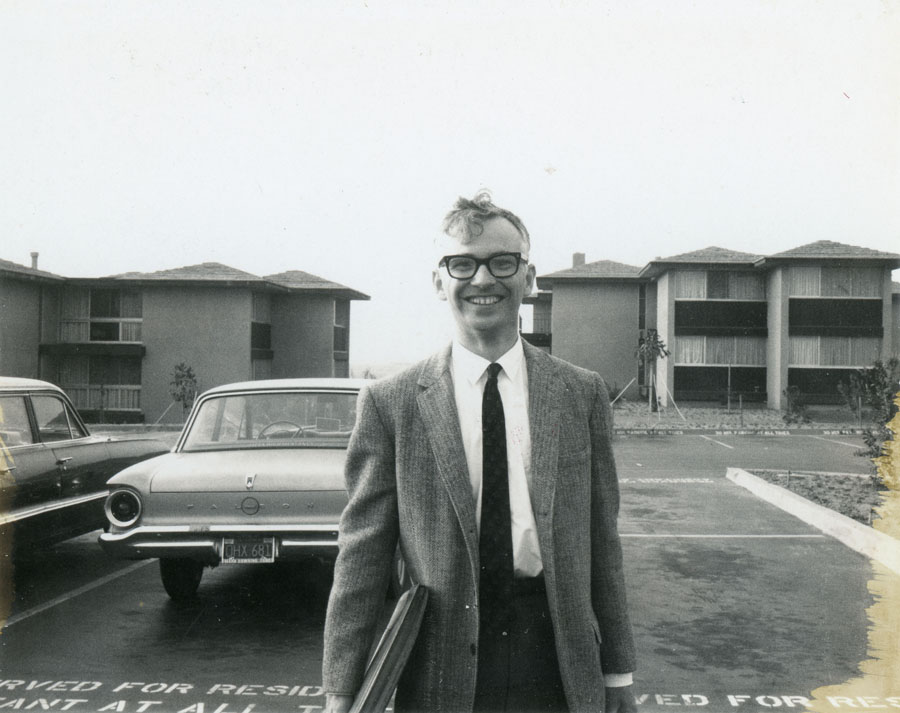
Halmos photographed harmonic analyst Henry Helson (1927-2010) in March of 1966 in Irvine, California. Helson earned his Ph.D. in 1951 from Harvard under advisor Lynn Loomis. In 1955, he joined the faculty at the University of California, Berkeley, and went on to advise 20 Ph.D. students during his career there. (Sources: Mathematics Genealogy Project and “A Tribute to Henry Helson,” by Donald Sarason, et al., AMS Notices 58:2, February 2011)
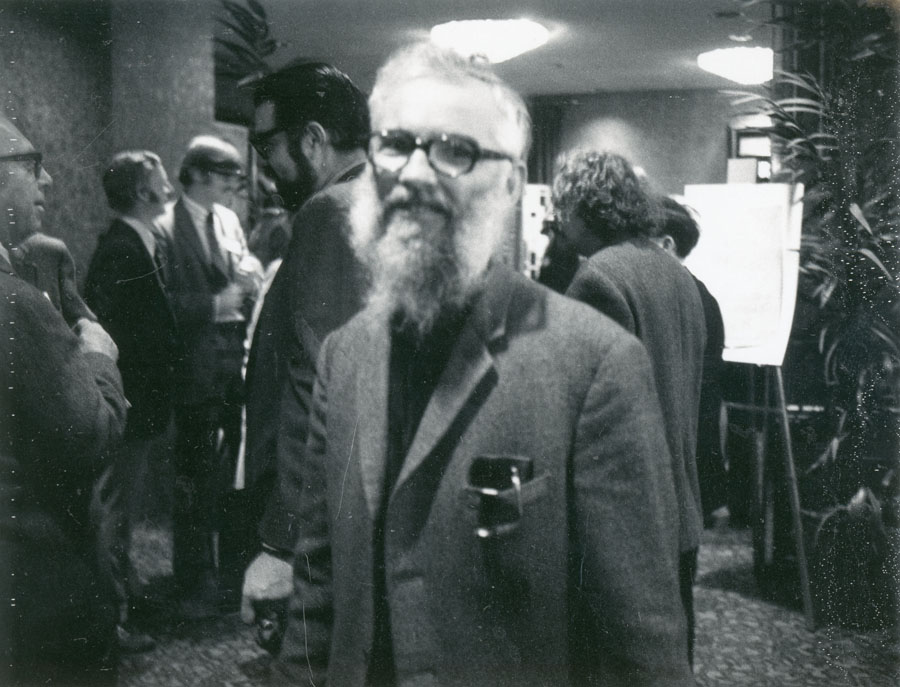
Halmos photographed Henry Helson again on January 17, 1974, at the Joint Mathematics Meetings in San Francisco, California.
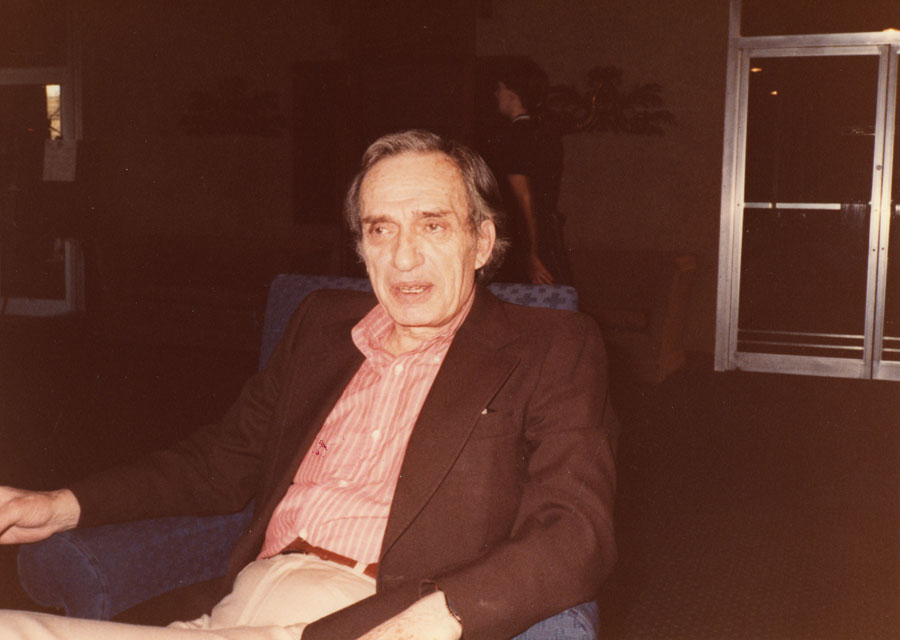
Halmos photographed ring theorist Yitzchak (Israel) Herstein (1923-1988) in April of 1984 at the University of Notre Dame in South Bend, Indiana. Herstein earned his Ph.D. in 1948 from Indiana University with the dissertation “Divisor Algebras” written under Max Zorn. In 1951, he became a faculty member at the University of Chicago, where Halmos also was on the faculty. Herstein left Chicago in 1953 to teach at the University of Pennsylvania and Cornell, but returned to Chicago in 1962 and spent the rest of his career there. Halmos left Chicago for Michigan in 1961. (Sources, Mathematics Genealogy Project and MacTutor Archive)

Numerical analyst Magnus Hestenes (1906-1991) was photographed by Halmos on March 30, 1966, in Irvine, California. Hestenes earned his Ph.D. in 1932 from the University of Chicago under advisor Gilbert Ames Bliss. After serving as a faculty member at Chicago for several years, he joined the faculty at the University of California, Los Angeles, in 1947 and spent the rest of his career there. Best known for developing the conjugate-gradient method for solving linear systems, he advised 35 Ph.D. students at Chicago and UCLA. (Sources: Mathematics Genealogy Project and “Magnus Hestenes,” by Tony Chan, Numerical Analysis Digest 91:24, Sat., June 15, 1991. See also “Conjugacy and Gradients, by Magnus R. Hestenes,” in The History of Numerical Analysis and Scientific Computing, SIAM, and “Requiem for the Skillful,” by Saunders Mac Lane, AMS Notices 44:2, February 1997.)
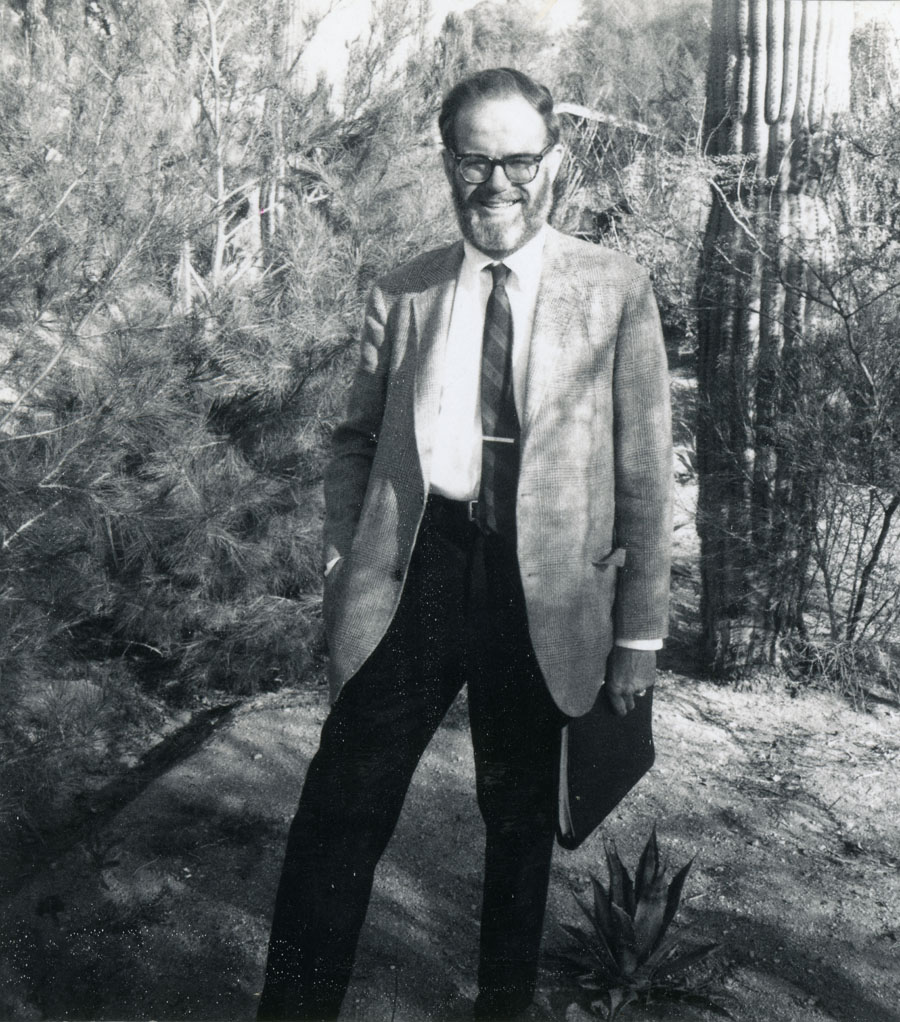
Halmos photographed Edwin Hewitt (1920-1999) in November of 1968 in Tucson, Arizona. Hewitt earned his Ph.D. in 1942 from Harvard under advisor Marshall Stone. He became a faculty member at the University of Washington in Seattle in 1948 and spent the rest of his career there. At Washington, he advised 37 Ph.D. students, including former MAA president Ken Ross, with whom he wrote several papers and a book on harmonic analysis. (Sources: Mathematics Genealogy Project; MathSciNet; “Edwin Hewitt,” in Mathographies, Bellevue Community College, Washington; and MAA Presidents)
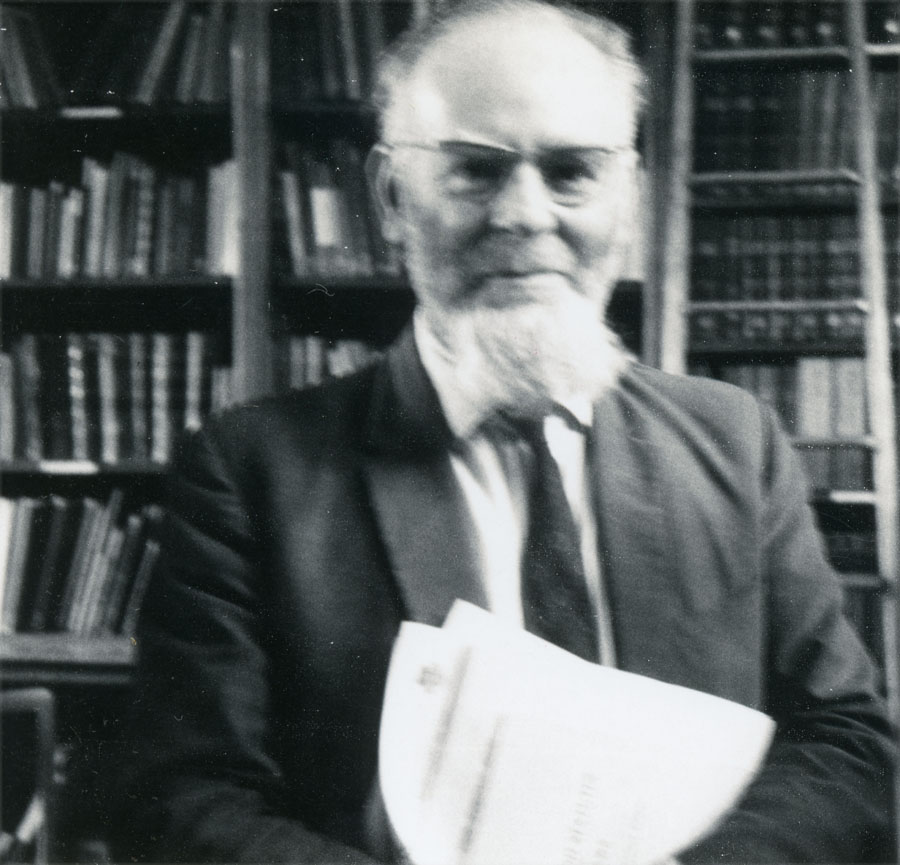
Group theorist Graham Higman (1917-2008) was photographed by Halmos on June 20, 1968, in London, England. Higman earned his Ph.D. in 1941 from Oxford with the dissertation “The Units of Group-Rings,” written under Henry Whitehead. In 1946, after doing non-mathematical war work from 1940 to 1946, he joined the mathematics faculty at the University of Manchester, where he worked in group theory with Max Newman, Bernhard Neumann, and Hannah Neumann. He moved to Oxford University in 1955 and remained there until he retired in 1984. His 50 Ph.D. students included the group theorist Peter Neumann, son of Bernhard and Hannah Neumann. (Mathematics Genealogy Project and MacTutor Archive)
For an introduction to this article and to the Paul R. Halmos Photograph Collection, please see page 1. Watch for a new page featuring six new photographs each week during 2012.
Regarding sources for this page: Information for which a source is not given either appeared on the reverse side of the photograph or was obtained from various sources during 2011-12 by archivist Carol Mead of the Archives of American Mathematics, Dolph Briscoe Center for American History, University of Texas, Austin.
Who's That Mathematician? Paul R. Halmos Collection - Page 23
For more information about Paul R. Halmos (1916-2006) and about the Paul R. Halmos Photograph Collection, please see the introduction to this article on page 1. A new page featuring six photographs will be posted at the start of each week during 2012.
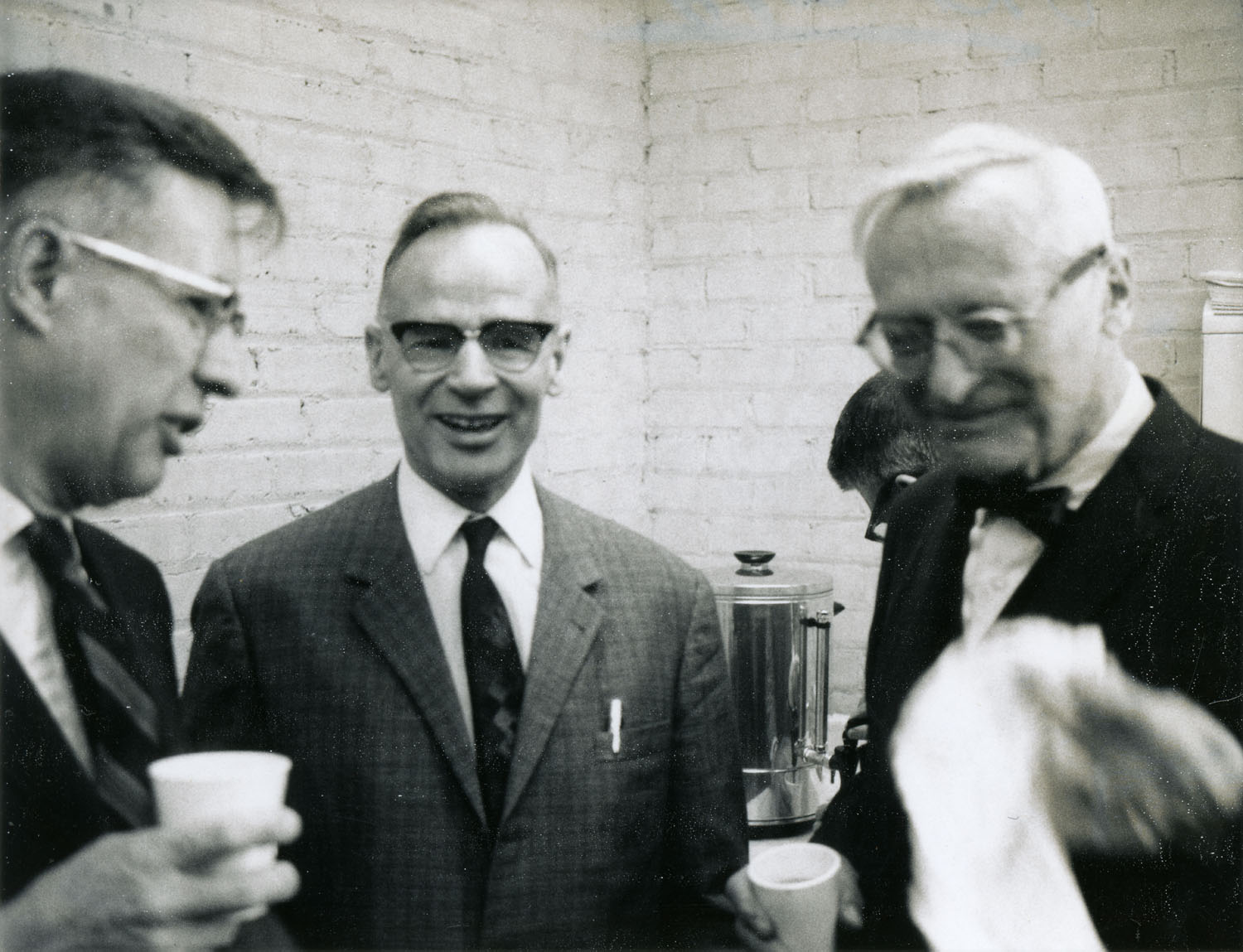
Halmos photographed Phillip Jones, Bartel van der Waerden, and Theophil Hildebrandt on April 2, 1968, in Ann Arbor, Michigan. That spring, Halmos was still a faculty member at the University of Michigan in Ann Arbor, but he would move to the University of Hawaii in Honolulu for the 1968-69 academic year and then to Indiana University in Bloomington in the fall of 1969.
Phillip S. Jones (1912-2002) earned his Ph.D. in 1948 from the University of Michigan, where he had earned bachelors and masters degrees in mathematics ten years earlier, with a dissertation on the history of geometry and linear perspective written under the mathematics historian Louis Karpinski. He became a faculty member at Michigan in 1947 and remained there for the rest of his career, specializing in mathematics history and education. He was a national leader in both of his specialties and was perhaps best-known for combining the two: using mathematics history as a mathematics teaching tool and writing the history of mathematics education in the U.S. (Source: Phillip S. Jones (1912-2002) (pdf file), History and Pedagogy Newsletter 64, March 2007, 1-4)
Bartel van der Waerden (1903-1996) earned his Ph.D. in 1926 from the University of Amsterdam with the dissertation, “The algebraic foundations of the geometry of numbers,” after studying also at the University of Göttingen, Germany, with Emmy Noether (algebra) and Hellmuth Kneser (topology). After studying for a semester with Emil Artin at the University of Hamburg, van der Waerden began writing his most famous book, Moderne Algebra, basing Volume I (1930) on work of Noether and Artin and Volume II (1931) on his own work in algebra. He was professor of mathematics at the University of Leipzig from 1931 through the end of World War II in 1945 and at the University of Zürich, Switzerland, from 1951 onward. Although he was interested in mathematics history throughout his career, he published most of his work in this field later in his career. (Source: MacTutor Archive)
Theophil H. Hildebrandt (1888-1980) earned his Ph.D. in 1910 from the University of Chicago under advisor E. H. Moore. He joined the mathematics faculty at the University of Michigan in 1909 and spent his career there, specializing in functional analysis and integration theory. Hildebrandt is best known for giving the first general proof of the principle of uniform boundedness for Banach spaces and for serving as president of the American Mathematical Society during 1945-1946. (Source: Mathematics Genealogy Project, MacTutor Archive: Moore, AMS Presidents)
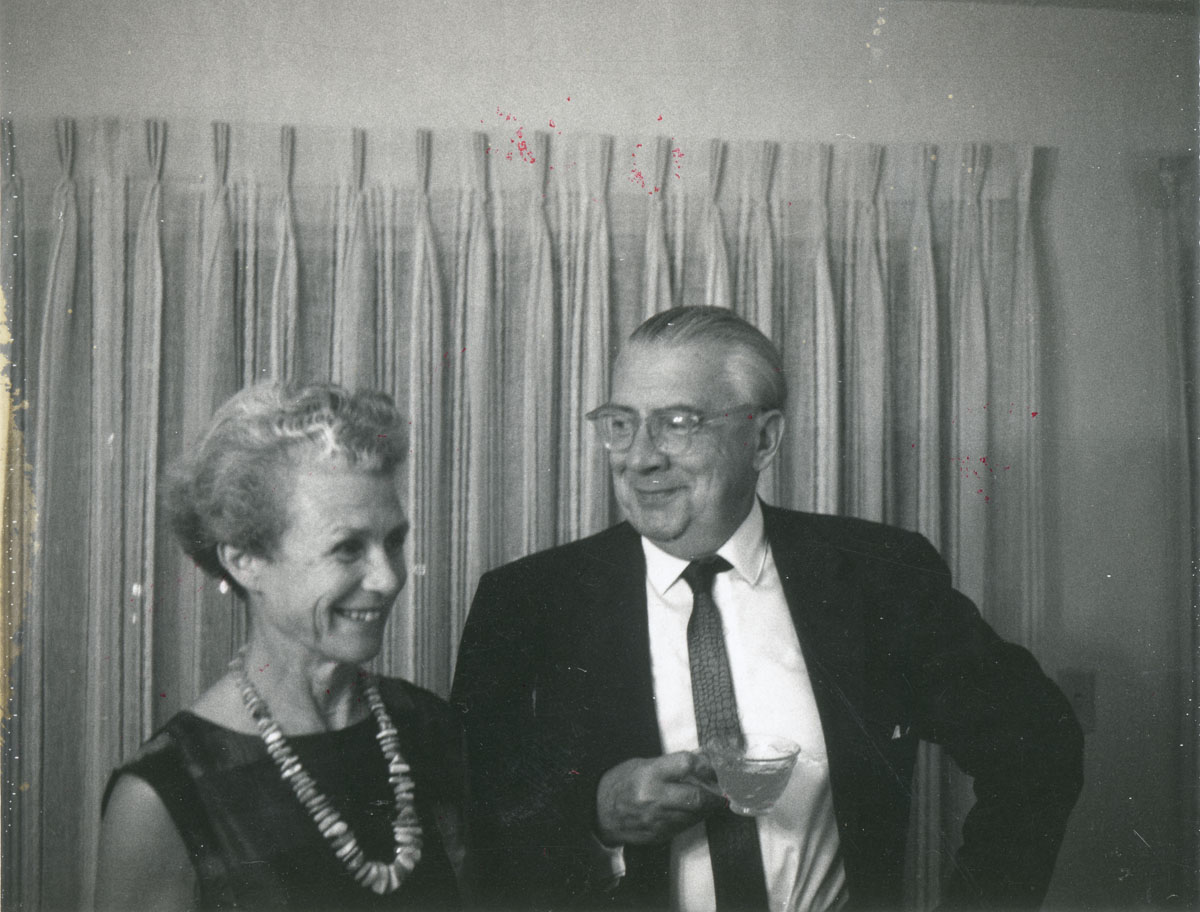
Halmos photographed Kirsti Ore Hille and Carl Einar Hille (1894-1980) on October 31, 1965, in their home in Irvine, California. Einar Hille had started out as a classical analyst but, long before 1965, had shifted to the same general field as Halmos, functional analysis. Born in the U.S. and raised in Stockholm, Sweden, Hille studied under Ivar Bendixson, Helge von Koch, and Marcel Riesz (and was influenced by Gösta Mittag-Leffler) at the University of Stockholm, earning his Ph.D. in 1918 for the dissertation “Some Problems Concerning Spherical Harmonics.” He moved to the United States in 1920, working with G. D. Birkhoff at Harvard for two years, then moved to Princeton, and then in 1933 moved to Yale. He spent most of his career at Yale, retiring in 1962, and then became a founding faculty member of the University of California, Irvine, which opened in October of 1965. About the occasion of the photograph, the Hilles' son Harald speculates, "The University was probably celebrating its recent opening and various people were invited, including perhaps Halmos." Kirsti Hille, who married Einar Hille in 1937, was the sister of Yale mathematician Oystein Ore. Einar Hille served as AMS president in 1947-48. (Sources: MacTutor Archive, AMS Presidents, UC Irvine)
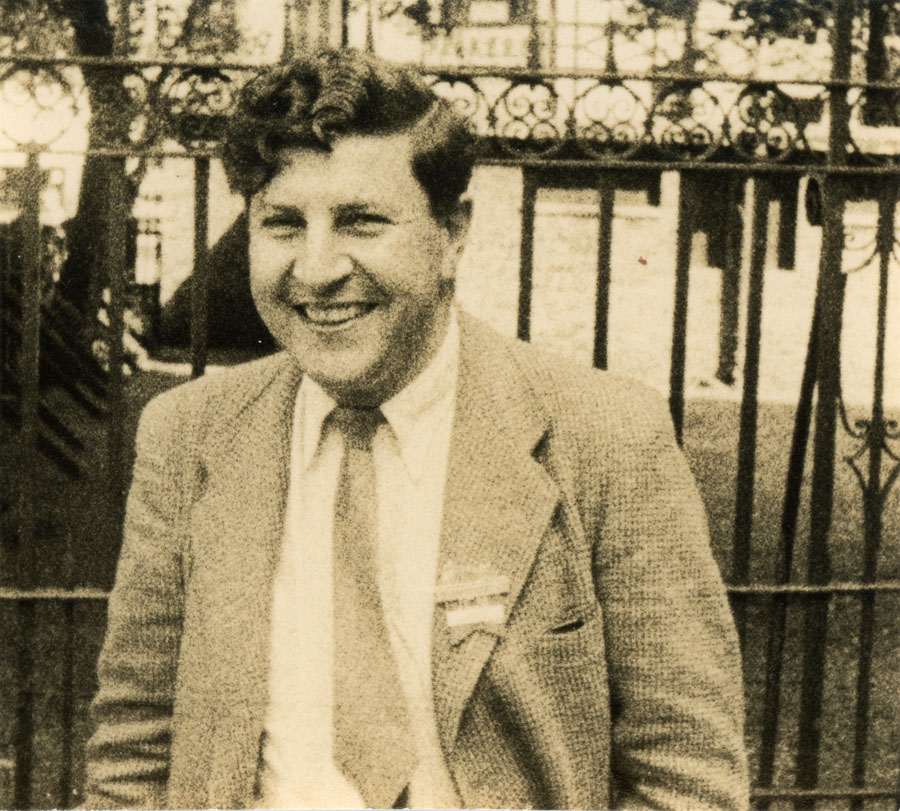
Halmos photographed topologist Peter Hilton (1923-2010) in 1958. This was the year Hilton became professor of mathematics at Birmingham University. Four years later he moved to the U.S. to join the mathematics faculty at Cornell University in Ithaca, New York, and eventually ended up (in 1982) at the State University of New York (SUNY), Binghamton, where he became emeritus in 1993. As J. J. O'Connor and E. F. Robertson point out in their MacTutor Archive biography of him, “Hilton has made a remarkable contribution both as a research mathematician and as an author of textbooks.” They also point out that Hilton met the mathematicians who would influence him most as a topologist while doing wartime decoding work at Bletchley Park; namely, Henry Whitehead, who became his Ph.D. thesis advisor at Oxford University (Ph.D. awarded in 1950, with another earned at Cambridge in 1952); Max Newman, who employed him as a lecturer at the University of Manchester (1948-1952, 1955-1958); and Shaun Wylie, with whom he worked at Cambridge University from 1952 to 1955 and wrote perhaps his best-known book, Homology Theory: An Introduction to Algebraic Topology, published in 1960. (Source: MacTutor Archive)
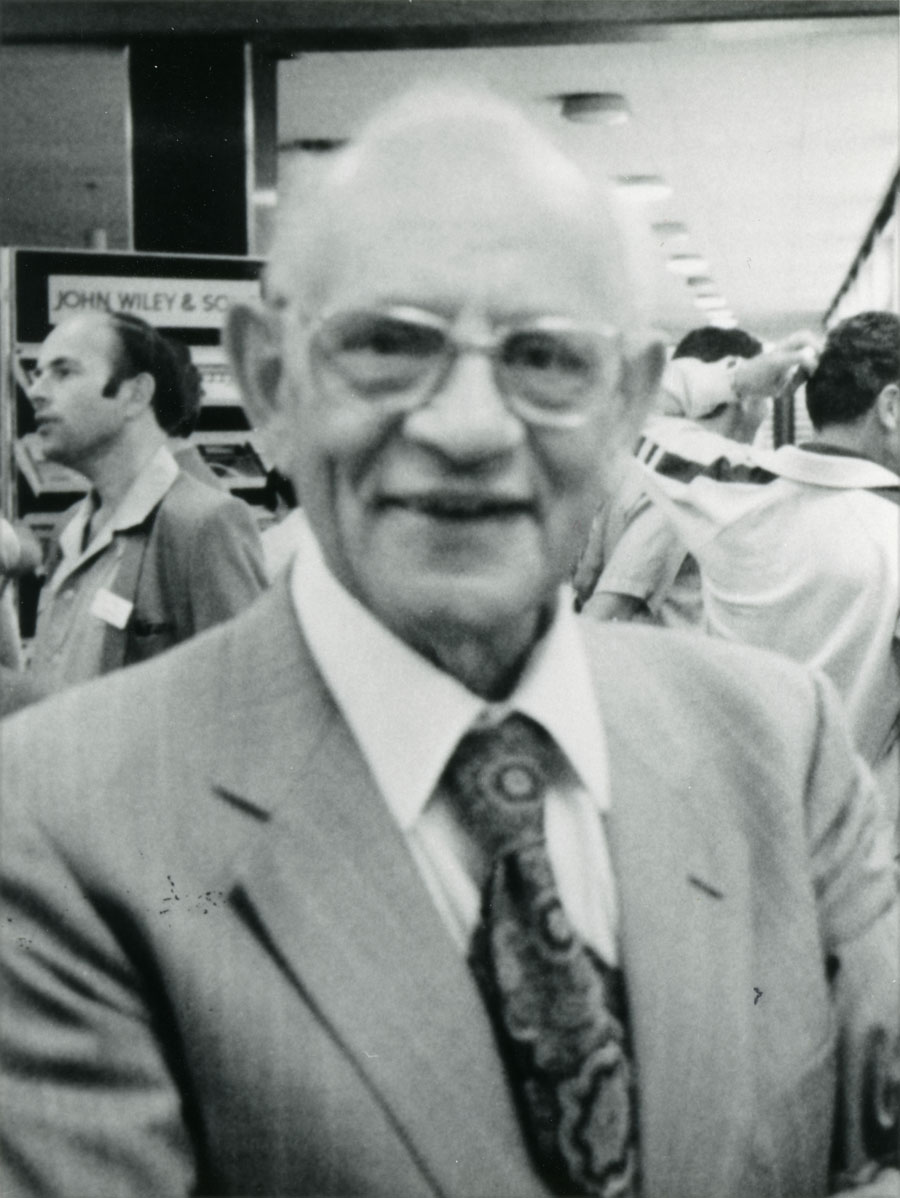
Group theorist Kurt Hirsch (1906-1986) was photographed by Halmos in 1984. Hirsch earned a Ph.D. in 1933 from the University of Berlin with a dissertation on the philosophy of mathematics and another in 1937 from Cambridge University with the dissertation “A Class of Infinite Soluble Groups,” written under advisor Philip Hall. After stints at the University of Leicester and at King’s College, Newcastle, in 1948 he joined the mathematics faculty at Queen Mary College, University of London, where he spent the rest of his career. (Source: MacTutor Archive)

Halmos photographed analyst Isidore Hirschman (1922-1990) in June of 1960. Hirschman earned his Ph.D. in 1947 from Harvard with the dissertation “Some Representation and Inversion Problems for the Laplace Transform,” written under David Widder. After writing ten papers together, Hirschman and Widder published the book The Convolution Transform in 1955 (Princeton University Press; now available from Dover Publications). Hirschman spent most of his career (1949-1978) at Washington University in St. Louis, Missouri, where he published mainly in harmonic analysis and operator theory. Washington University hosts the I. I. Hirschman Lecture Series, inaugurated in February of 2007 with a lecture by Richard Askey (photographed on page 2 of this collection). When Askey was a senior at Washington University, Hirschman gave him a problem on ultraspherical polynomials. Askey recalls, "This led to a joint paper, and was what started my interest in special functions." (Sources: Mathematics Genealogy Project, Washington University Mathematics Department, MathSciNet, MacTutor Archive: Askey)
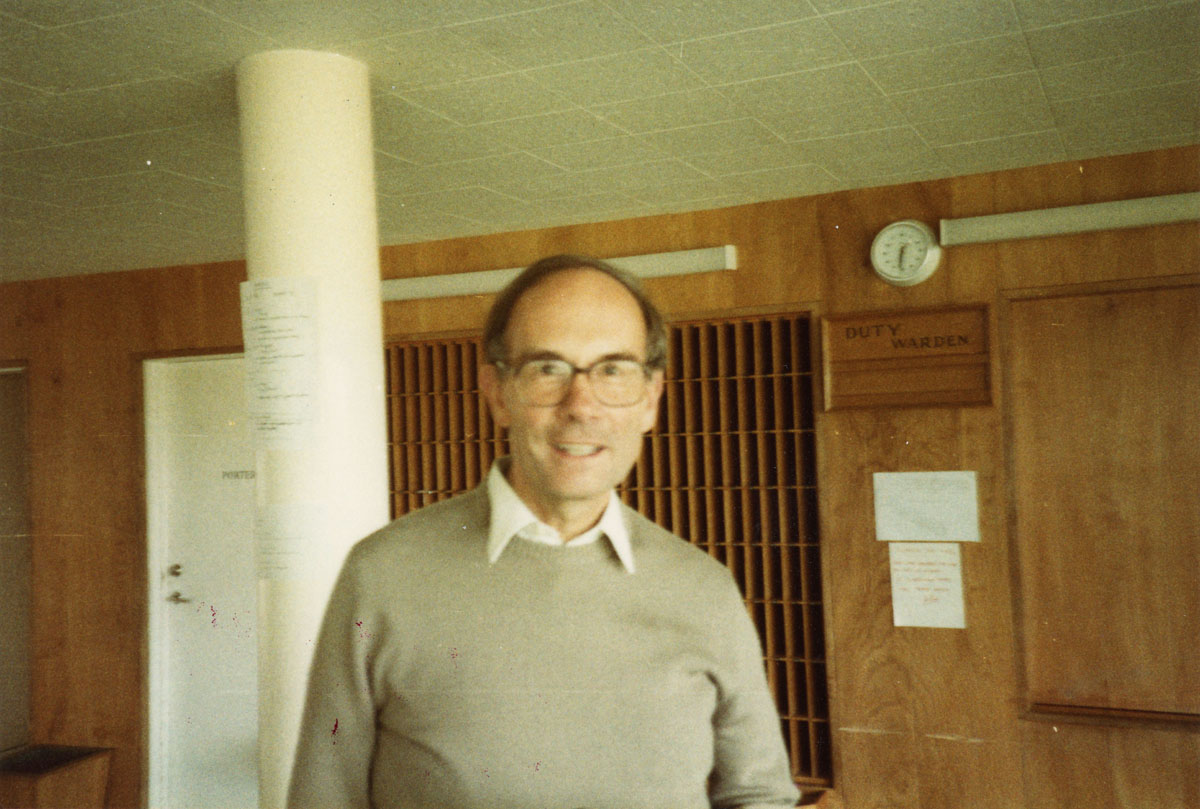
Topologist Friedrich Hirzebruch (1927-2012) was photographed in July of 1984 at the Edinburgh Mathematical Society Colloquium in St. Andrews, Scotland. At the time, Hirzebruch was professor of mathematics at the University of Bonn, Germany, where he spent most of his career (1956-1993). A doctoral student of Heinrich Behnke at the University of Münster, where he earned his Ph.D. in 1950, and of Heinz Hopf at ETH in Zürich, Hirzebruch is perhaps best known for his formulation and proof of the Riemann-Roch Theorem for algebraic varieties in 1954 and, more generally, for “outstanding work combining topology, algebraic and differential geometry, and algebraic number theory” (from his 1988 Wolf Prize citation, quoted in the MacTutor Archive biography of Hirzebruch. This biography was our source for this caption. See also “Friedrich Hirzebruch (1927-2012)” at the AMS website, an article identifying Hirzebruch as “the leading German mathematician of the second half of the twentieth century.”)
For an introduction to this article and to the Paul R. Halmos Photograph Collection, please see page 1. Watch for a new page featuring six new photographs each week during 2012.
Regarding sources for this page: Information for which a source is not given either appeared on the reverse side of the photograph or was obtained from various sources during 2011-12 by archivist Carol Mead of the Archives of American Mathematics, Dolph Briscoe Center for American History, University of Texas, Austin.
Who's That Mathematician? Paul R. Halmos Collection - Page 24
For more information about Paul R. Halmos (1916-2006) and about the Paul R. Halmos Photograph Collection, please see the introduction to this article on page 1. A new page featuring six photographs will be posted at the start of each week during 2012.
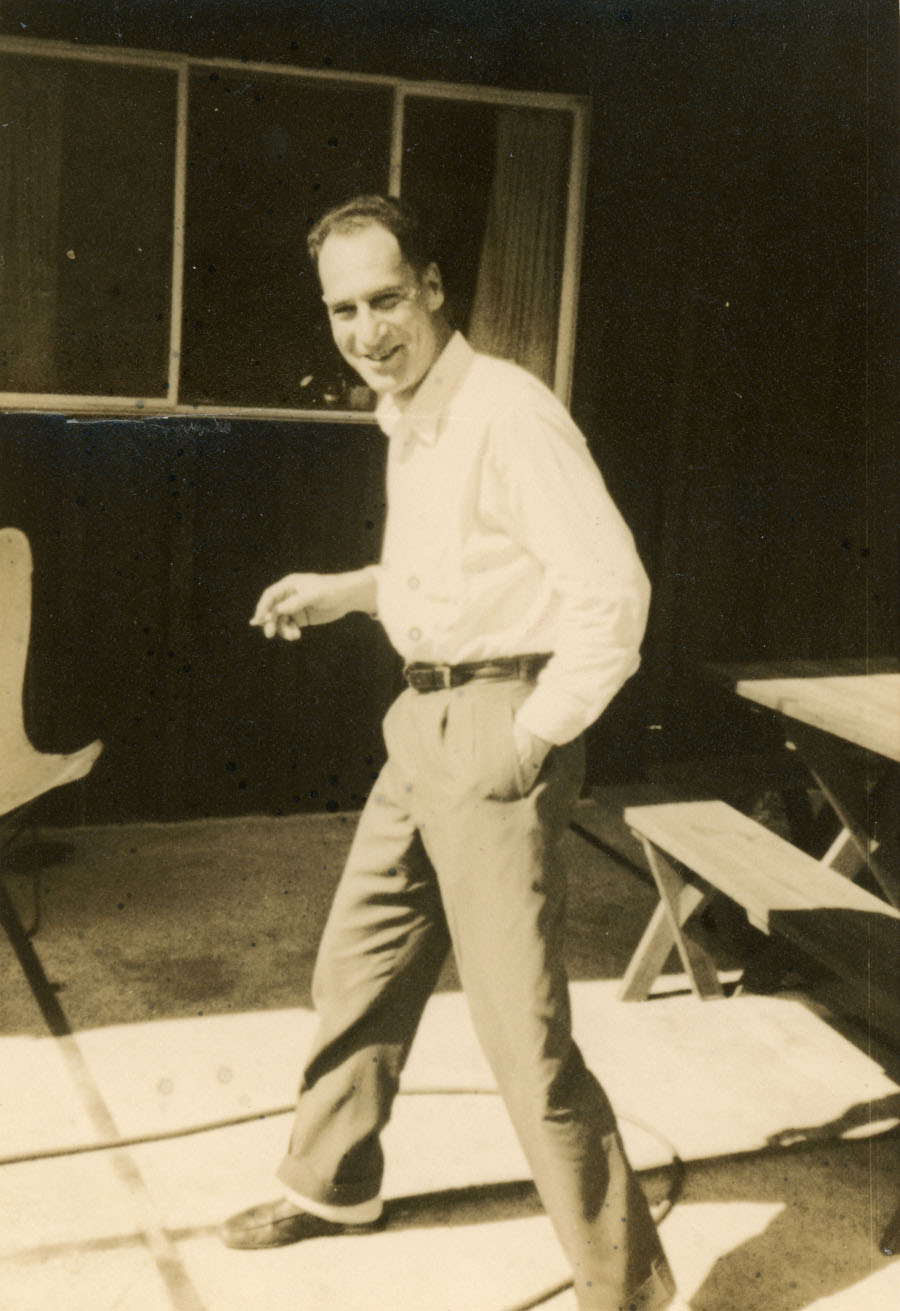
Halmos photographed algebraist Gerhard Hochschild (1915-2010) in 1959. Born in Berlin, Germany, Hochschild was educated at the University of Cape Town, South Africa, and at Princeton University in New Jersey, where he received his Ph.D. in 1941 with the dissertation “Semisimple algebras and generalized derivations,” written under Claude Chevalley. After service in the U.S. Army (1942-45) and short stints at Princeton and Harvard, he joined the faculty at the University of Illinois, Urbana-Champaign, in 1948. In 1958, he moved to the University of California, Berkeley, where he spent the rest of his career. His specialties were cohomology theory, algebraic groups, and Lie algebras. (Sources: In Memoriam: Gerhard Paul Hochschild, University of Illinois; In Memoriam: Gerhard Hochschild, UC Berkeley; Gerhard Hochschild (1915-2010), AMS Notices 58:8, September 2011)
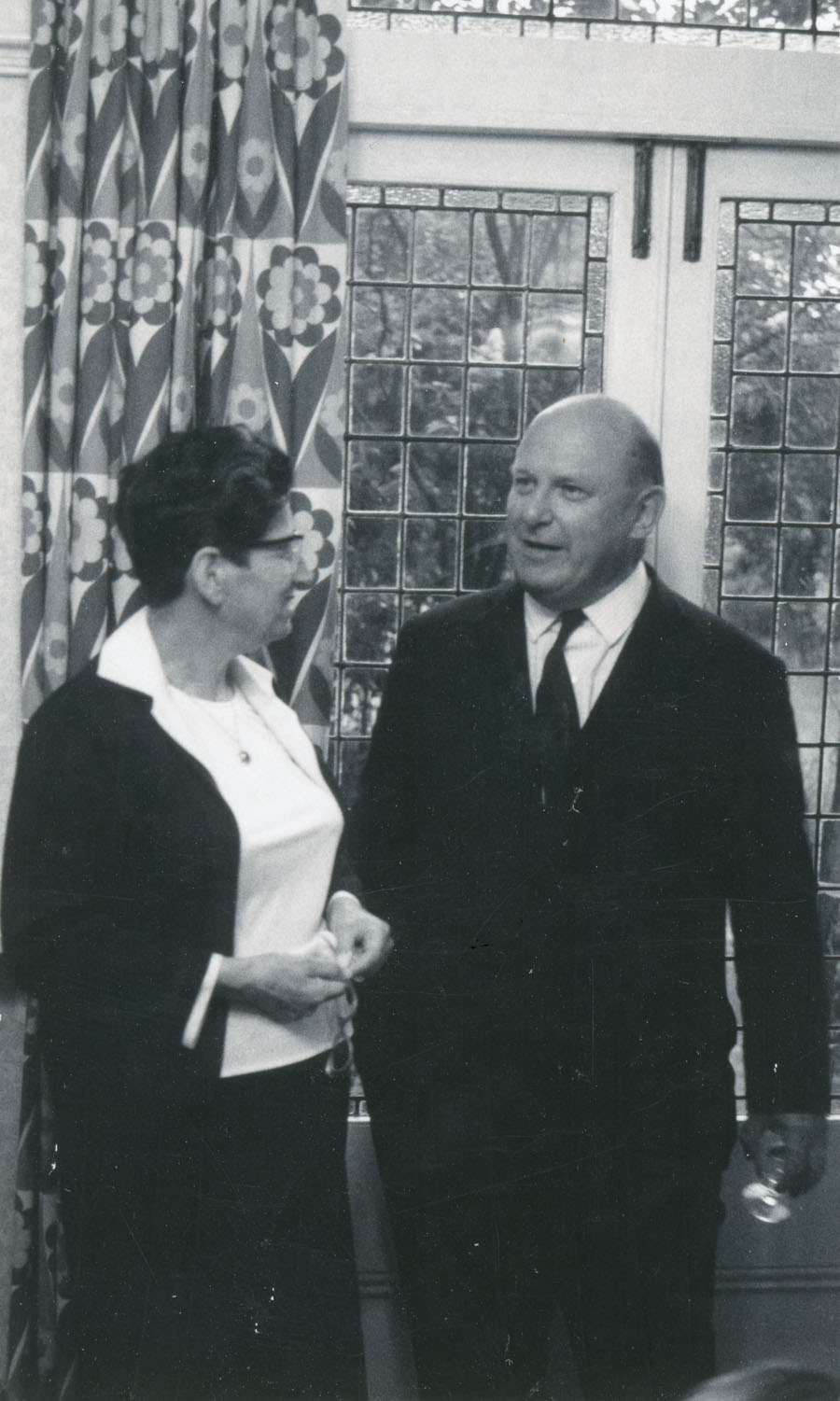
Halmos photographed Nora Arone Smithies and William Hodge on June 3, 1968, in Cambridge, England.
Nora Arone (d. 1987) met functional analyst Frank Smithies (1912-2002) in 1942, while both worked at the British Ministry of Supply during World War II, and they were married in 1945, when Frank Smithies returned to his academic post at Cambridge University after the war. He later became a mathematics historian best known for his work on Cauchy. (Source: MacTutor Archive)
William Hodge (1903-1975) was a well-known geometer, specializing in both algebraic and differential geometry. During the early 1930s, “he developed the relationship between geometry, analysis and topology and produced some of his best remembered work on the theory of harmonic integrals,” according to O’Connor and Robertson of the MacTutor Archive. Born in Edinburgh, Scotland, Hodge was educated at the universities of Edinburgh and Cambridge, spent five years on the faculty of Bristol University (1926-31) and one year visiting Solomon Lefschetz and Oscar Zariski in the U.S. (1931-32), and then, from 1932 onward, spent the rest of his career at Cambridge, where he was Lowndean Professor of Astronomy and Geometry from 1936 until his retirement in 1970. He was the Ph.D. advisor of 1966 Fields Medalist Michael Atiyah (Cambridge, 1955), whose photograph appears on page 2 of this collection. (Sources: MacTutor Archive, Mathematics Genealogy Project)
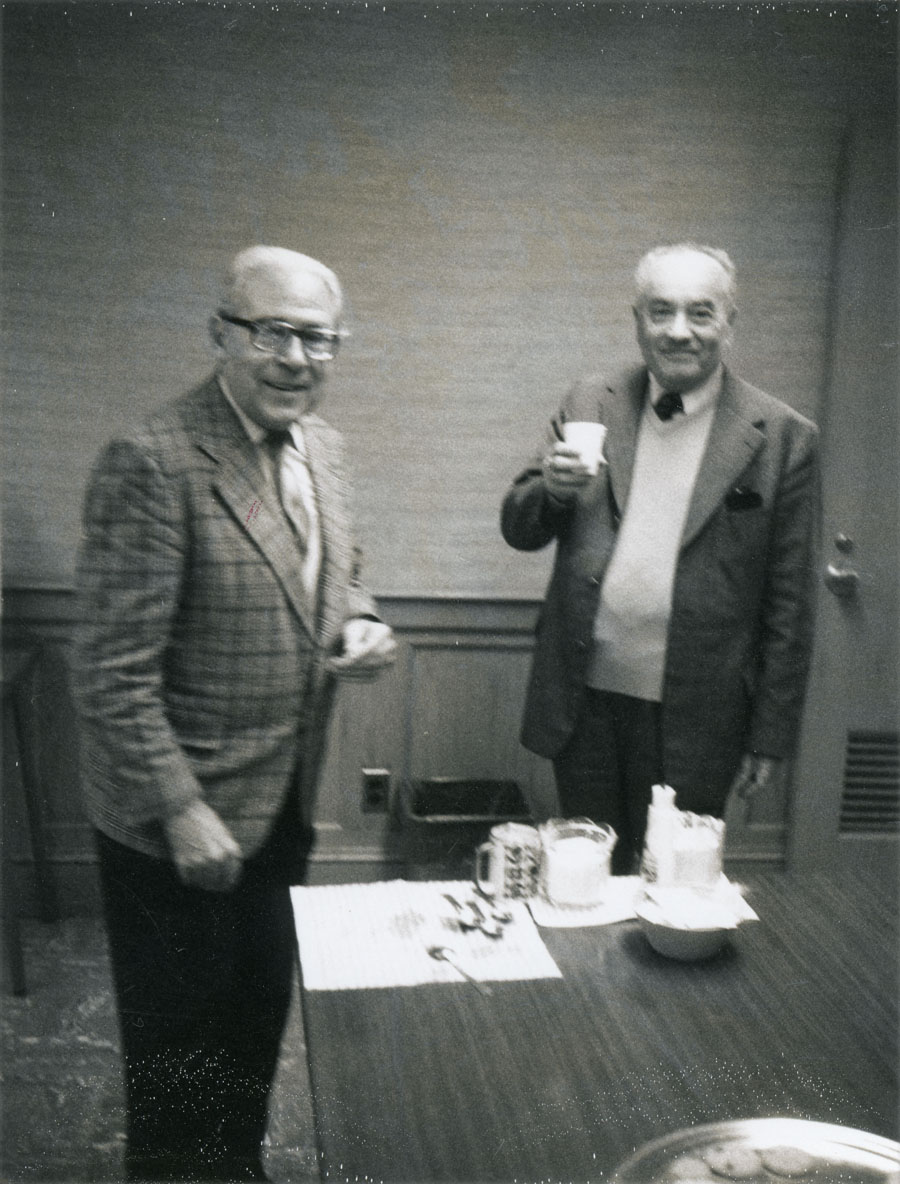
Halmos photographed Eberhard Hopf (1902-1983), left, and Menahem Schiffer (1911-1997) in November of 1978 at a colloquium at the University of Illinois at Chicago Circle.
Born in Salzburg, Austria, Eberhard Hopf received his Ph.D. in 1926 from the University of Berlin, Germany, under advisors Erhard Schmidt and Issai Schur. During his career, he worked in topology and ergodic theory, holding faculty positions mainly in the U.S., except for professorships at the universities of Leipzig and Munich, Germany, from 1936 to 1947. Hopf’s longest faculty appointment was at Indiana University from 1949 to 1972, when he retired, but he remained a research faculty member at Indiana until his death in 1983. Halmos was a faculty member at Indiana University from 1969 to 1985. (Source: MacTutor Archive)
Born in Berlin, Menahem Schiffer began his studies at the University of Berlin, but fled to Palestine in 1934. After initially studying physics with Erwin Schrödinger and then specializing in algebra with Schur in Berlin, he earned his Ph.D. from the Hebrew University of Jerusalem in 1938 with a dissertation on calculus of variations, written under Michael Fekete, in which he developed what became known as the “Schiffer variation.” Schiffer was on the mathematics faculty at Hebrew University from 1938 to 1946 and in 1950-51, at Harvard and Princeton in the U.S. from 1946 to 1950, and at Stanford University in Palo Alto, California, from 1951 onward. He was known for both excellent teaching and excellent research. (Source: MacTutor Archive)
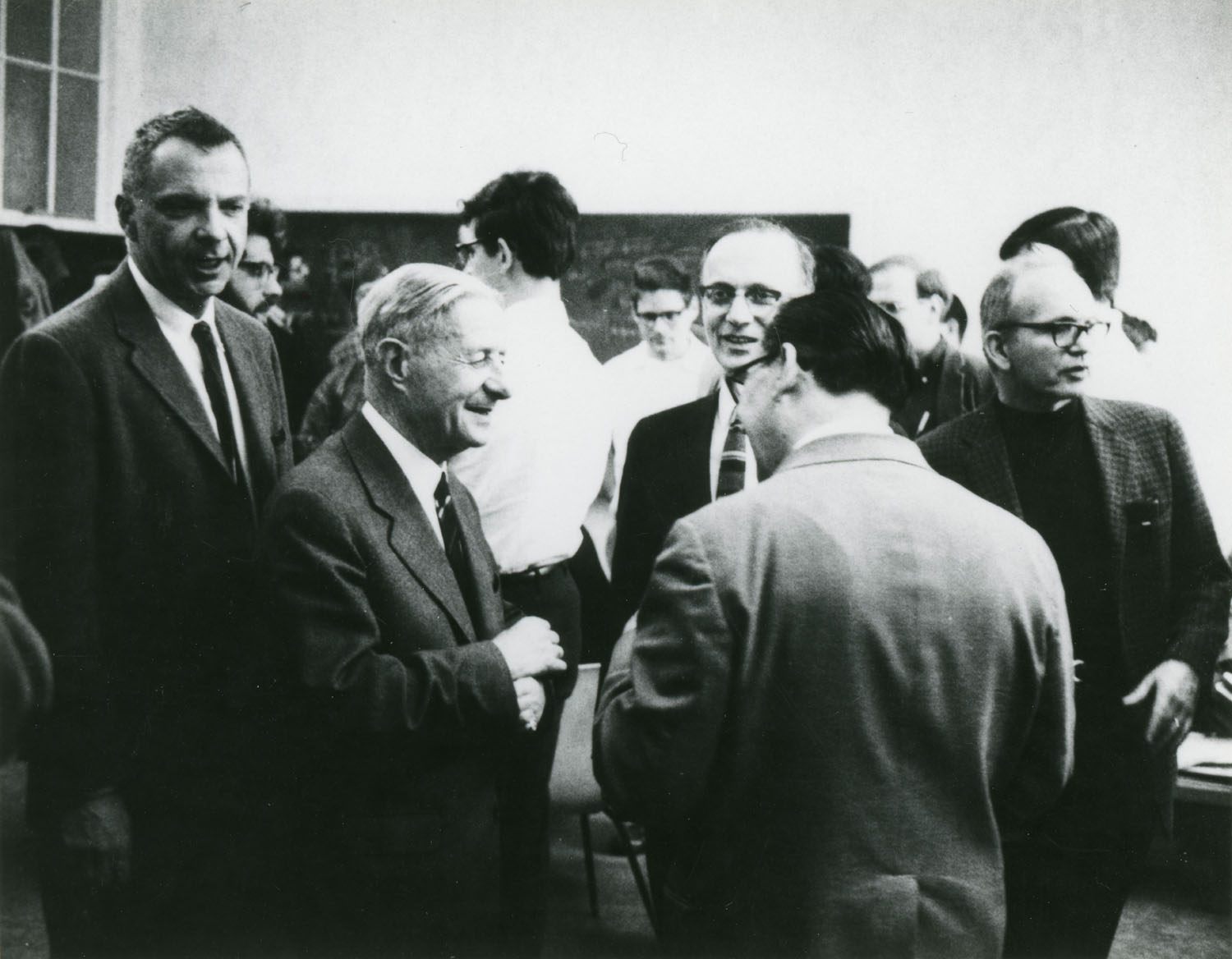
Algebraic topologist Heinz Hopf (1894-1971), second from left, was photographed by Halmos in 1968. Born near Breslau, Germany, Hopf studied at the universities of Breslau, Heidelberg, and Berlin. He earned his Ph.D. in 1925 from the University of Berlin with a dissertation on the topology of manifolds written under Erhard Schmidt. He then spent a year at the University of Göttingen studying with algebraist Emmy Noether and topologist Pavel Aleksandrov. He would collaborate with Aleksandrov for years to come, including the academic year 1927-28, which both spent at Princeton University. In 1931, Hopf accepted a chair in mathematics at Eidgenössische Technische Hochschule (ETH) in Zurich, Switzerland, where he remained for the rest of his career. His accomplishments in algebraic topology include introducing homology groups in 1928, the Hopf invariant in 1931, the Hopf algebra in 1939, and homological algebra in the early 1940s. (Source: MacTutor Archive)
Please help us identify the other people in the photograph above!
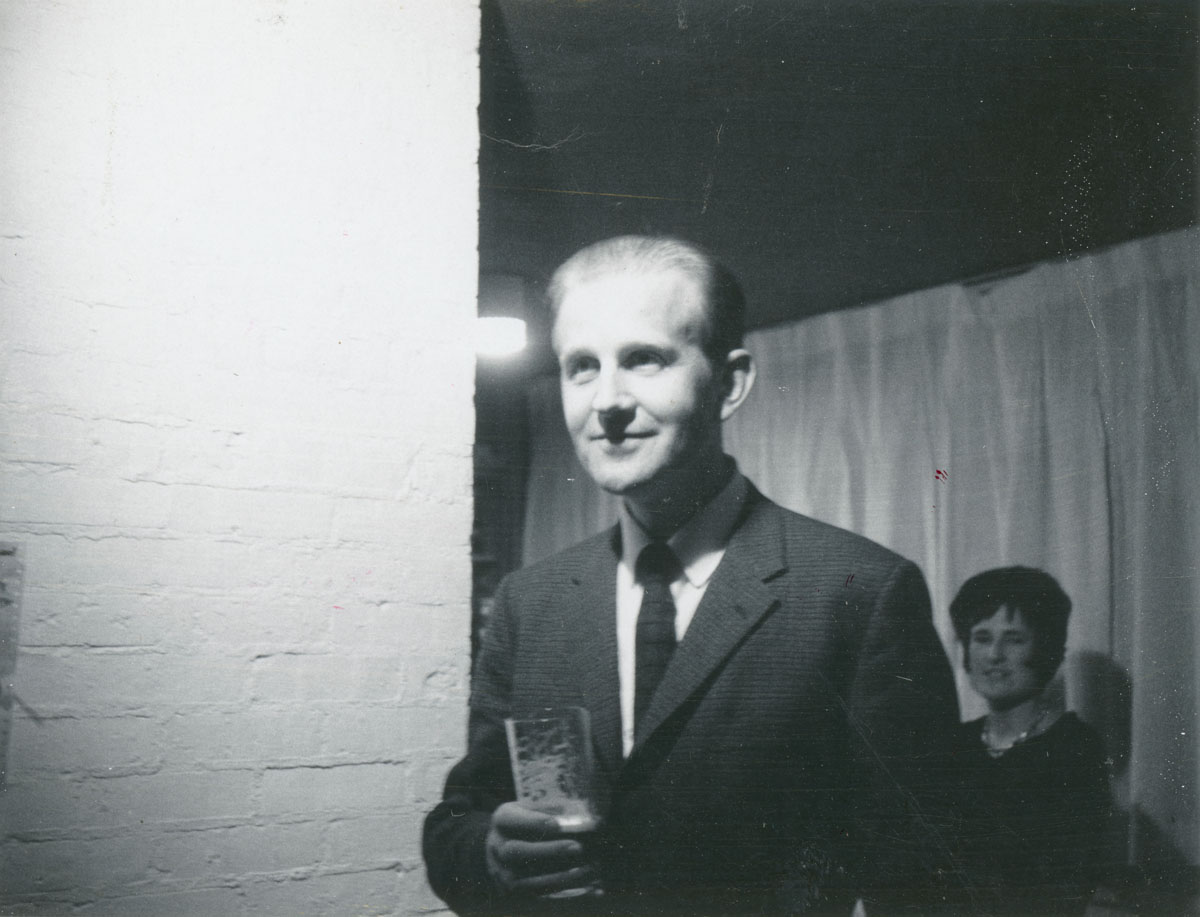
Halmos photographed Lars Hörmander on April 27, 1966, in Princeton, New Jersey. Hörmander was a faculty member at the Institute for Advanced Study in Princeton from 1964 to 1968. After earning his Ph.D. at Lund University in Sweden in 1955, he visited several universities in the U.S., including the University of Chicago, where Halmos was a professor at the time. Hörmander’s Ph.D. thesis was on the theory of partial differential equations, written under Marcel Riesz and Lars Gårding (pictured on page 16 of this collection), and in 1962 he was awarded the Fields Medal for his work on linear (partial) differential operators. He was a professor at the University of Stockholm, Sweden, from 1957 to 1964 and has been at Lund University, where he is now emeritus, since 1968. (Source: MacTutor Archive; Mathematics Genealogy Project; Lund University, Mathematics, Faculty of Science)
Who is the woman in the photograph above?
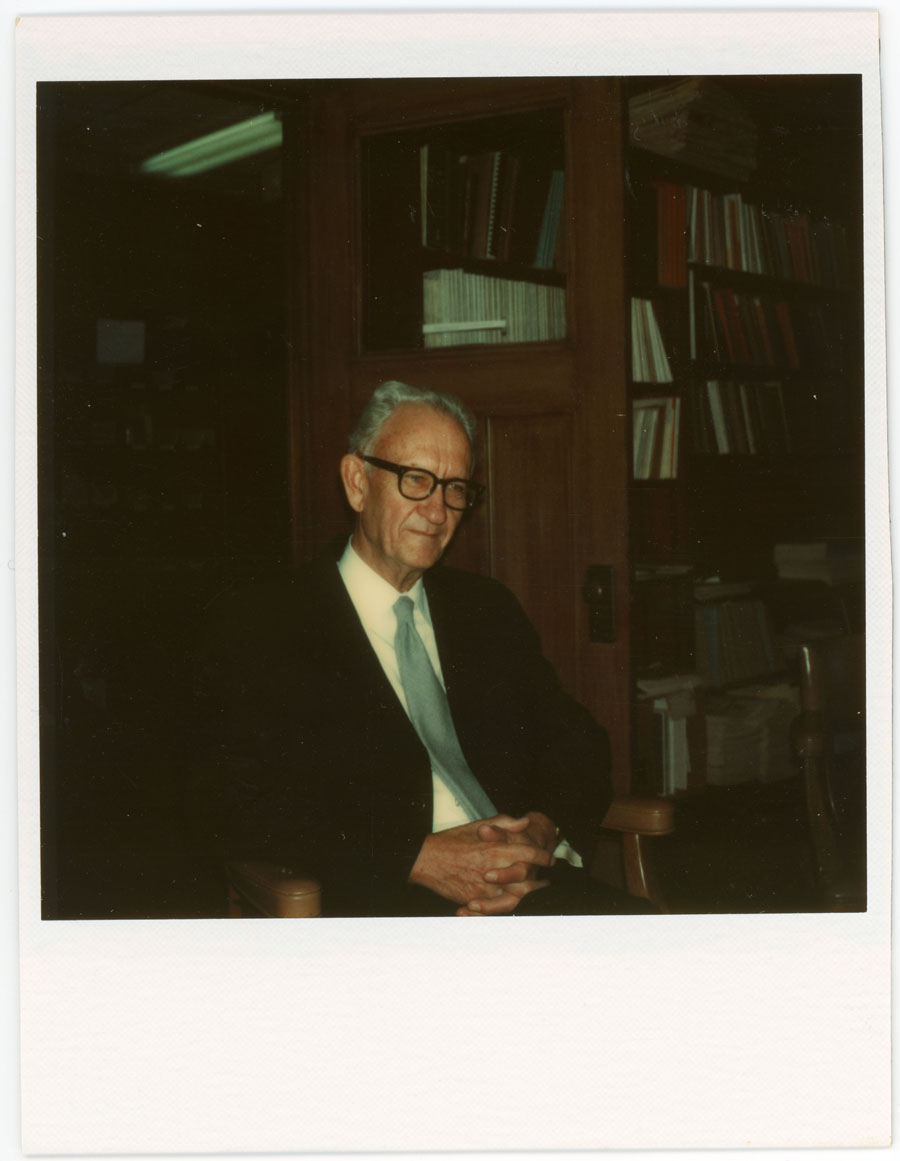
Alston Householder (1904-1993) was photographed on October 17, 1973, in Knoxville, Tennessee, where he was Professor of Mathematics at the University of Tennessee from 1969 to 1974. Householder earned his Ph.D. in 1937 from the University of Chicago with a dissertation in calculus of variations written under Gilbert Ames Bliss. He remained at Chicago for eight more years during which he focused his research on mathematical biology. From 1946 to 1969, Householder was a mathematician at the Oak Ridge National Laboratory in Tennessee, where his research focus was numerical analysis, especially its applications to linear algebra. (Sources: MacTutor Archive, Mathematics Genealogy Project)
For an introduction to this article and to the Paul R. Halmos Photograph Collection, please see page 1. Watch for a new page featuring six new photographs each week during 2012.
Regarding sources for this page: Information for which a source is not given either appeared on the reverse side of the photograph or was obtained from various sources during 2011-12 by archivist Carol Mead of the Archives of American Mathematics, Dolph Briscoe Center for American History, University of Texas, Austin.
Who's That Mathematician? Paul R. Halmos Collection - Page 25
For more information about Paul R. Halmos (1916-2006) and about the Paul R. Halmos Photograph Collection, please see the introduction to this article on page 1. A new page featuring six photographs will be posted at the start of each week during 2012.
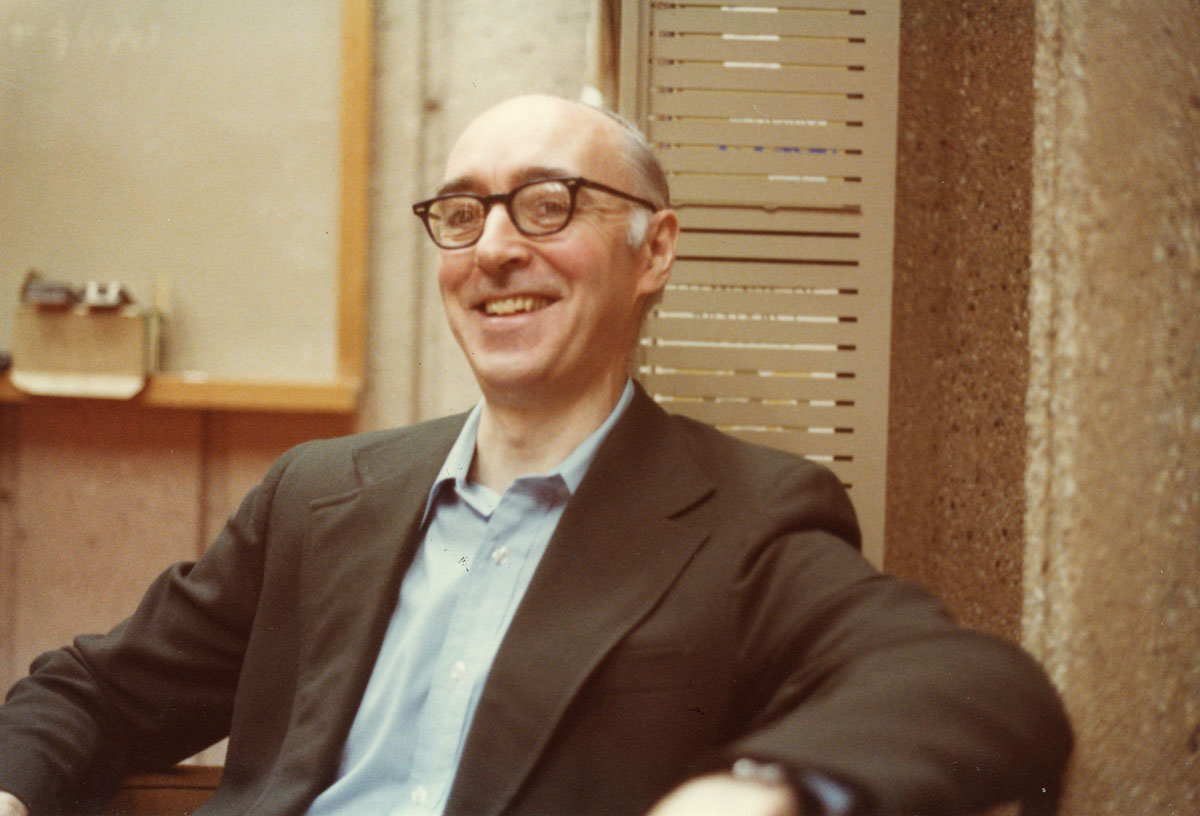
Halmos photographed logician William Howard in 1978 at a colloquium at the University of Illinois at Chicago Circle, where Howard was a professor. Howard earned his Ph.D. in 1956 from the University of Chicago with the dissertation “k-Fold Recursion and Well-Ordering,” written under Saunders Mac Lane. He recalls that he first met Halmos, who was a professor at Chicago at the time, in the spring of 1949 at a conference at the University of Illinois at Urbana-Champaign, where he was a graduate student. That summer, Halmos helped him transfer to the University of Chicago, but first he had to pass a test:
He asked me: "What kind of mathematics do you like? A page full of formulas, or one symbol sitting in the middle of the page?" My answer: "The latter." Of course, I knew that that was the answer he would like, but actually, that was my preference.
Howard was a researcher at Bell Labs from 1956 to 1959 and, from 1959 to 1965, was on the faculty at Pennsylvania State University, where he worked with the logician Haskell Curry, who retired from Penn State in 1966. In 1965 Howard joined the faculty of the University of Illinois at Chicago Circle (University of Illinois at Chicago as of 1982), where he is now Professor Emeritus and lists his interests as proof theory, foundations of mathematics, and history of mathematics. (Sources: Mathematics Genealogy Project, MacTutor Archive: Curry, UIC Mathematics)
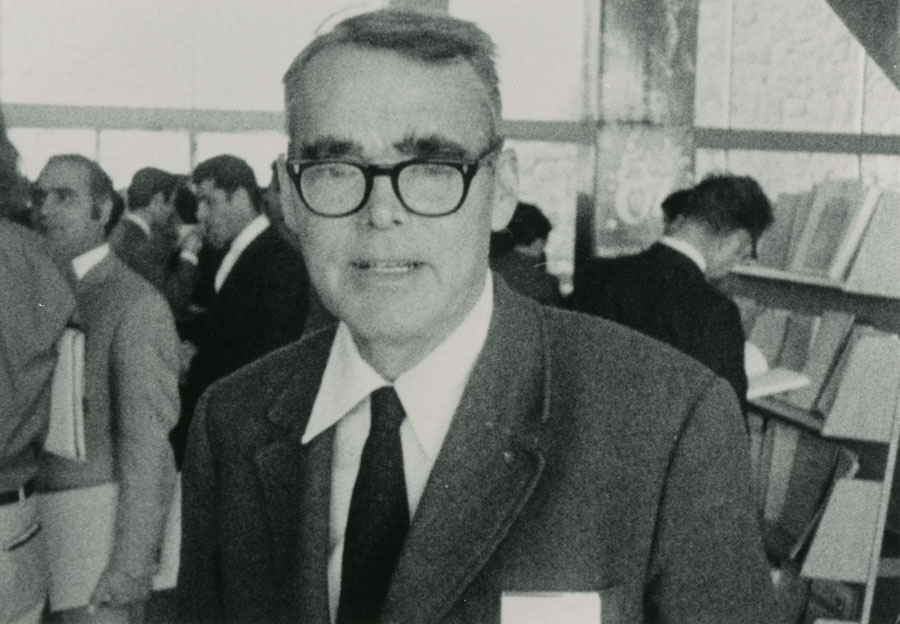
Probabilist Gilbert Hunt (1916-2008) was photographed by Halmos in 1972. After giving up a promising tennis career and performing wartime service as a weather forecaster (1941-46), Hunt earned his Ph.D. in 1948 from Princeton University with the dissertation “On Stationary Stochastic Processes,” written under Salomon Bochner. From 1946 to 1949, he also worked as an assistant to John von Neumann at the Institute for Advanced Study in Princeton. He was a faculty member at Cornell University from 1949 to 1959 and 1962 to 1965 and at Princeton from 1959 to 1962 and from 1965 onward. He is especially well known for his contributions to the theory of Markov processes. (Sources: MacTutor Archive, Mathematics Genealogy Project)
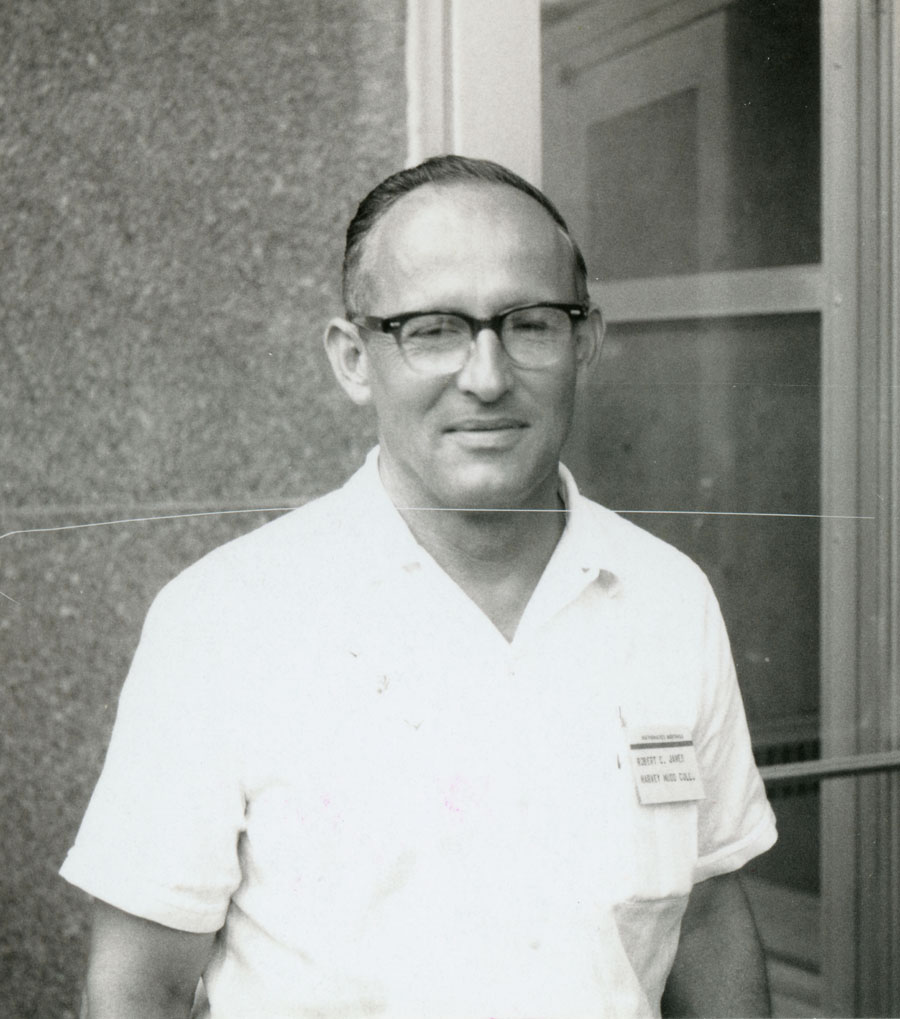
Halmos photographed functional analyst Robert C. James (d. 2004) at the AMS-MAA Joint Summer Mathematics Meetings in Amherst, Massachusetts, on August 26, 1964. James earned his Ph.D. in 1946 from the California Institute of Technology (Caltech) with the dissertation “Orthogonality in Normed Linear Spaces.” He was the only mathematics professor among the seven founding faculty members at Harvey Mudd College in Claremont, California, which opened its doors in 1957 to 48 mathematics, science, and engineering students, and he was a professor there at the time this photo was taken. Harvey Mudd College annually awards the Robert James Prize to two outstanding first year mathematics students. According to his Ph.D. student Steve Bellenot, who also was an undergraduate at Harvey Mudd College from 1966 to 1970, James left HMC in about 1968, spent a year at SUNY Albany, and then returned to Claremont to serve as a founding professor in the mathematics program at the Claremont Graduate School (now the Claremont Graduate University), where he spent the rest of his career and where Bellenot earned his Ph.D. in 1974.
In his primary research field, Banach spaces, James was especially well known for "James' Theorem" and for his counterexamples. Bellenot, who is now a mathematics professor at Florida State University, remembers that James named the solar-powered retirement retreat he built in the Sierra foothills of California "Trees and Bushes" after its surroundings and after a famous counterexample called the James tree space and a collection of essays on James trees spaces titled The James Forest (LMS, 1997). James may have been even better known for the Mathematics Dictionary he co-authored with his father, Glenn James. Founded by the elder James in about 1940, Bob James published its 5th and final edition in 1992. (Sources: Mathematics Genealogy Project, Harvey Mudd College History, Harvey Mudd College Math Awards, MathSciNet)
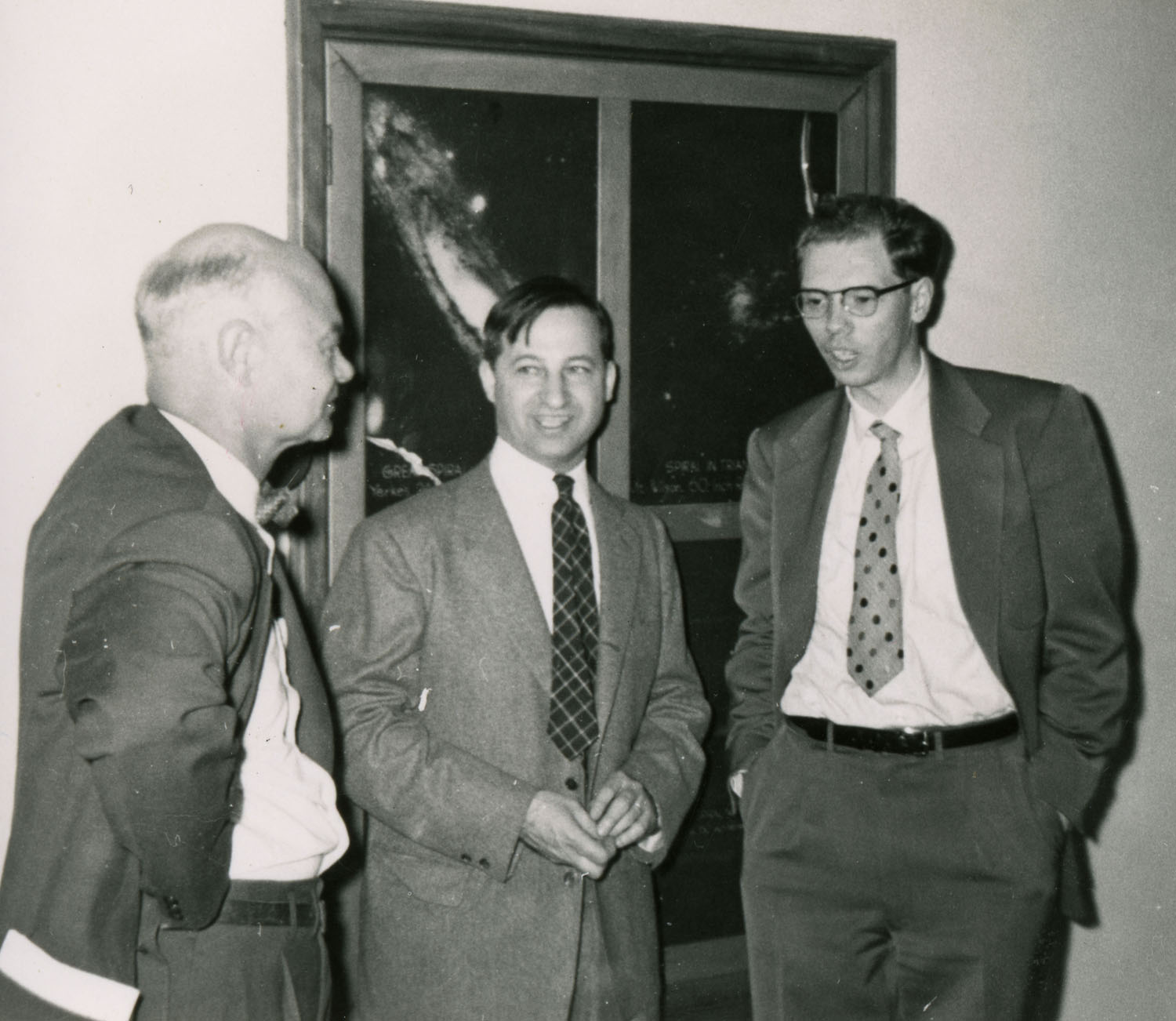
Number theorists Ralph D. James, Leonard Tornheim, and Donald J. Lewis (left to right) were photographed by Halmos in about 1955.
Born in England and educated in Vancouver, British Columbia, Canada, Ralph James (1909-1979) earned his Ph.D. in 1932 from the University of Chicago with the dissertation “Analytical Investigations in Waring’s Theorem,” written under Leonard Eugene Dickson. After studying with E. T. Bell for a year at Caltech and G. H. Hardy for a year at Cambridge, James was on the mathematics faculty at the University of California, Berkeley, for five years and the University of Saskatchewan for another five years before becoming professor of mathematics at the University of British Columbia in 1943. From 1961 to 1963, he served as president of the Canadian Mathematical Society. He retired from UBC in 1974 after coordinating the International Congress of Mathematicians held in Vancouver that year. (Sources: MacTutor Archive, CMS Presidents)
Leonard Tornheim earned his Ph.D. in 1938 from the University of Chicago with the dissertation “Integral Sets of Quaternion Algebras over a Function Field,” written under advisor A. Adrian Albert. He published in a wide variety of fields, including number theory, classical algebra, harmonic analysis, numerical analysis, and statistics, from 1941 to 1970. His publications include the book Vector Spaces and Matrices, co-authored with Robert Thrall and published in 1957. He was a faculty member at the University of Michigan from 1946 to 1955 (as was Robert Thrall from 1937 to 1969). (Sources: Mathematics Genealogy Project, MathSciNet, UM Faculty History Project: Tornheim, UM Faculty History Project: Thrall)
Donald J. (D.J.) Lewis (1926-2015) earned his Ph.D. in 1950 from the University of Michigan under advisor Richard Brauer. After holding positions at Ohio State University (1950-52), the Institute for Advanced Study (1952-53), and the University of Notre Dame (1953-61), Lewis returned to the University of Michigan, where he has spent the rest of his career and advised at least 25 Ph.D. students. He received the American Mathematical Society’s Award for Distinguished Public Service in 1995 and then continued to serve the mathematical community as director of the National Science Foundation’s Division of Mathematical Sciences from 1995 to 1999. (Sources: “1995 Award for Distinguished Public Service to Mathematics,” AMS Notices 42:4 (April 1995); Mathematics Genealogy Project; UM Faculty History Project)
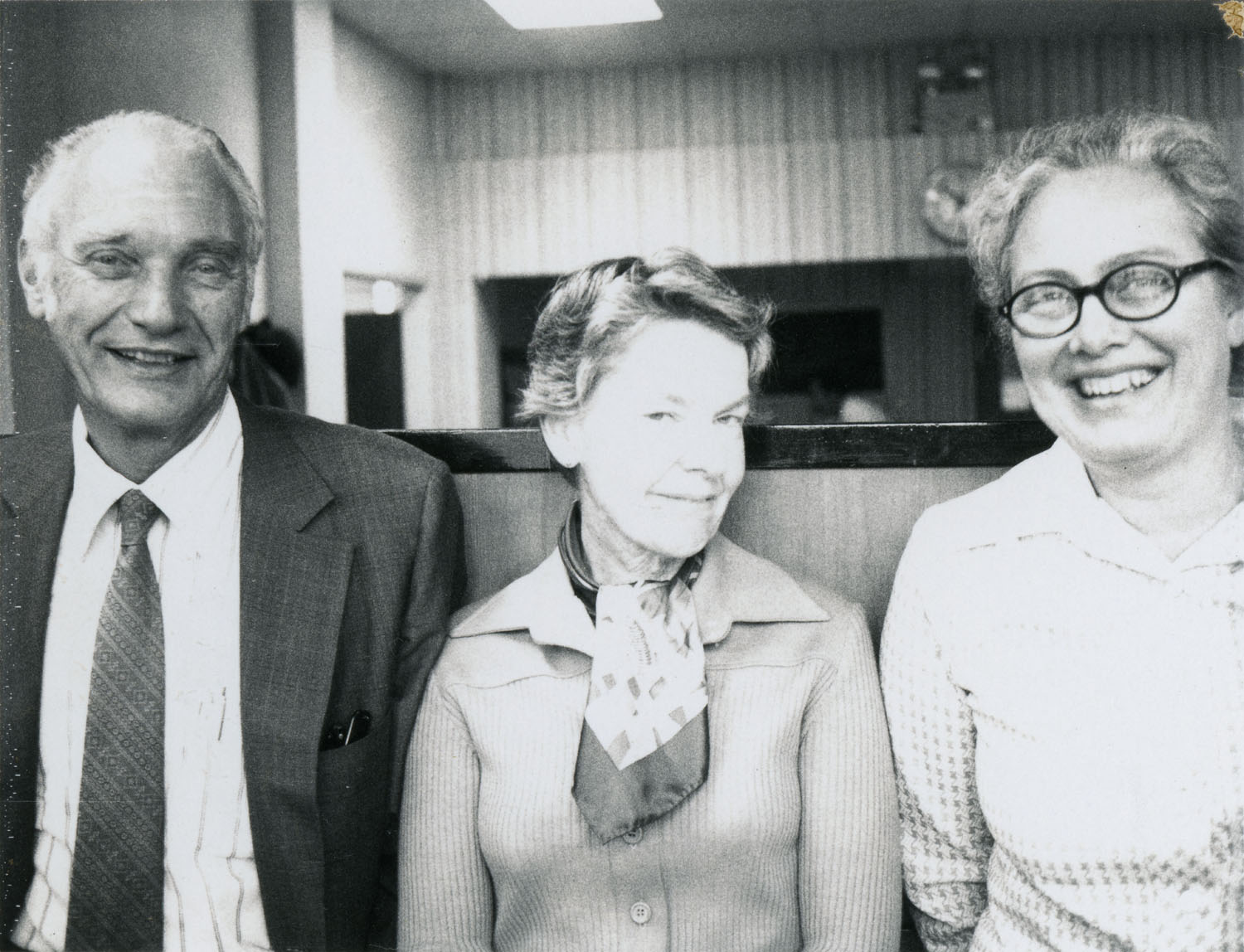
Halmos photographed F. Burton Jones, Madeleine Jones, and Mary Ellen Rudin at the International Congress of Mathematicians in Vancouver, British Columbia, Canada, on August 22, 1974. (See page 7 of this collection for a photograph of Enrico Bombieri and David Mumford, who were awarded Fields Medals at the 1974 ICM in Vancouver.)
F. Burton Jones (1910-1999) earned his Ph.D. in 1935 from the University of Texas at Austin with a dissertation in general topology written under advisor R. L. Moore. He was on the mathematics faculty at UT Austin from 1935 to 1950 (except for 1942-44, when he did war work), at the University of North Carolina at Chapel Hill from 1950 to 1962, and at the University of California, Riverside, from 1962 onward. Jones wrote important papers on point set topology and homogeneous continua, and was known as both an excellent researcher and an excellent teacher. (Source: MacTutor Archive; see also the biography of Jones available from the California Digital Library or from UC Riverside as a pdf file.)
Madeleine Maire Jones (1918-2006) married F. Burton Jones in 1936. A mathematics and education major at the University of Texas at Austin, she assisted with the publication, Creative Teaching: The Heritage of R. L. Moore (1972, 1993, 1999), now available online. In 1987-88, she and her husband endowed the F. Burton Jones Chair in Topology at the University of California, Riverside. (Sources: ancestry.com, Creative Teaching: The Heritage of R. L. Moore at Topology Atlas)
Mary Ellen Estill Rudin (1924-2013) earned her Ph.D. in 1949 from the University of Texas at Austin with a dissertation in general topology written under R. L. Moore. She also was influenced by F. Burton Jones. From 1949 to 1953, she was on the mathematics faculty at Duke University, and from 1953, when she married complex analyst Walter Rudin, to 1971, she held “temporary part time” positions at the University of Rochester and the University of Wisconsin at Madison while her husband held full-time positions at these institutions. In 1971, she became Professor of Mathematics at Wisconsin, in 1981 the first Grace Chisholm Young Professor there, and in 1991 Emeritus Professor. Throughout her career, Rudin published important papers in set-theoretic topology and was especially well known for her skill in constructing counterexamples. She was selected to give the Association for Women in Mathematics Noether Lecture at the Joint Mathematics Meetings in Louisville, Kentucky, in 1984, speaking on set-theoretic aspects of “Paracompactness.” (Sources: MacTutor Archive, Mathematics Genealogy Project, UW Mathematics, AWM Noether Lecturers)
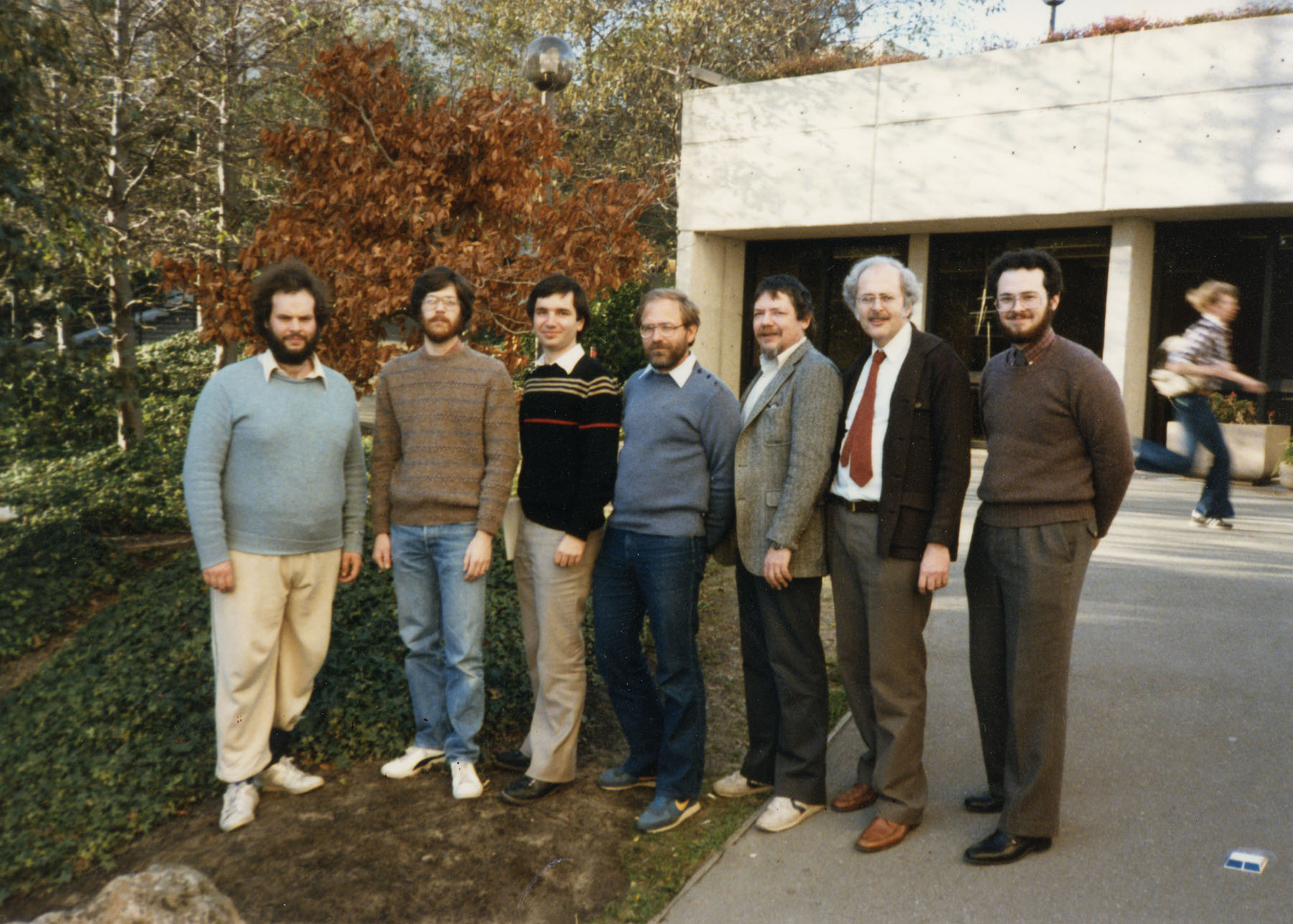
Vaughan Jones, left, discoverer of the Jones polynomial in knot theory, is pictured together with the discoverers of the HOMFLY polynomial, a generalization of the Jones polynomial, on February 10, 1985. The HOMFLY discoverers are, left to right, Jim Hoste, Adrian Ocneanu, Kenneth Millett, Peter Freyd, W. B. Raymond Lickorish, and David Yetter. According to Millett, the photo was taken on the University of California, Berkeley, campus during a pair of Mathematical Sciences Research Institute (MSRI) conferences / workshops on index theory and low-dimensional topology, and this was "the only time that all of us were together." (Source: Wolfram MathWorld)
Born and educated in New Zealand through the M.Sc. degree, Vaughan Jones earned his Ph.D. in 1979 from the University of Geneva, Switzerland. After one year at the University of California, Los Angeles, and four years at the University of Pennsylvania in Philadelphia, he moved to the University of California, Berkeley, in 1985. He received the Fields Medal in 1990 at the International Congress of Mathematicians in Kyoto, Japan, for finding a new polynomial invariant for knots and links, a discovery arising from his proof of the Index Theorem for von Neumann Algebras. In 2011, Jones became Distinguished Professor of Mathematics at Vanderbilt University in Nashville, Tennessee. (Sources: MacTutor Archive, Vanderbilt University Department of Mathematics)
Jim Hoste earned his Ph.D. in 1982 from the University of Utah in Salt Lake City with the dissertation "Sewn-up r-Link Exteriors." He is now professor of mathematics at Pitzer College in Claremont, California. (Sources: Mathematics Genealogy Project, Pitzer College Mathematics)
Adrian Ocneanu earned his Ph.D. in 1983 from the University of Warwick, England, with a dissertation on von Neumann algebras written under Ciprian Foias (pictured on page 14 of this collection). Ocneanu is now professor of mathematics at Pennsylvania State University in State College. (Sources: Mathematics Genealogy Project, Penn State Mathematics)
Ken Millett earned his Ph.D. in 1967 from the University of Wisconsin, Madison, with a dissertation on Euclidean bundle pairs. In 1998, he received the AMS Award for Distinguished Public Service. He is professor of mathematics at the University of California, Santa Barbara. (Sources: Mathematics Genealogy Project, UC Santa Barbara Mathematics)
Peter Freyd earned his Ph.D. in 1960 from Princeton University with a dissertation on functor theory. He is now professor emeritus of mathematics and director of the logic and computation group at the University of Pennsylvania in Philadelphia. (Sources: Mathematics Genealogy Project, University of Pennsylvania Mathematics)
W. B. Raymond Lickorish earned his Ph.D. in 1964 from the University of Cambridge, England, where he is now emeritus professor of geometric topology. He is the author of An Introduction to Knot Theory in the Springer Graduate Texts in Mathematics series. (Sources: Mathematics Genealogy Project, amazon.com)
David Yetter earned his Ph.D. in 1984 from the University of Pennsylvania with the dissertation "Aspects of Synthetic Differential Geometry," written under advisor Peter Freyd. Vaughan Jones was also on the U Penn faculty from 1981 to 1985. Yetter is now professor of mathematics at Kansas State University in Manhattan, Kansas. (Sources: Mathematics Genealogy Project, KSU Mathematics)
For an introduction to this article and to the Paul R. Halmos Photograph Collection, please see page 1. Watch for a new page featuring six new photographs each week during 2012.
Regarding sources for this page: Information for which a source is not given either appeared on the reverse side of the photograph or was obtained from various sources during 2011-12 by archivist Carol Mead of the Archives of American Mathematics, Dolph Briscoe Center for American History, University of Texas, Austin.
Who's That Mathematician? Paul R. Halmos Collection - Page 26
For more information about Paul R. Halmos (1916-2006) and about the Paul R. Halmos Photograph Collection, please see the introduction to this article on page 1. A new page featuring six photographs will be posted at the start of each week during 2012.
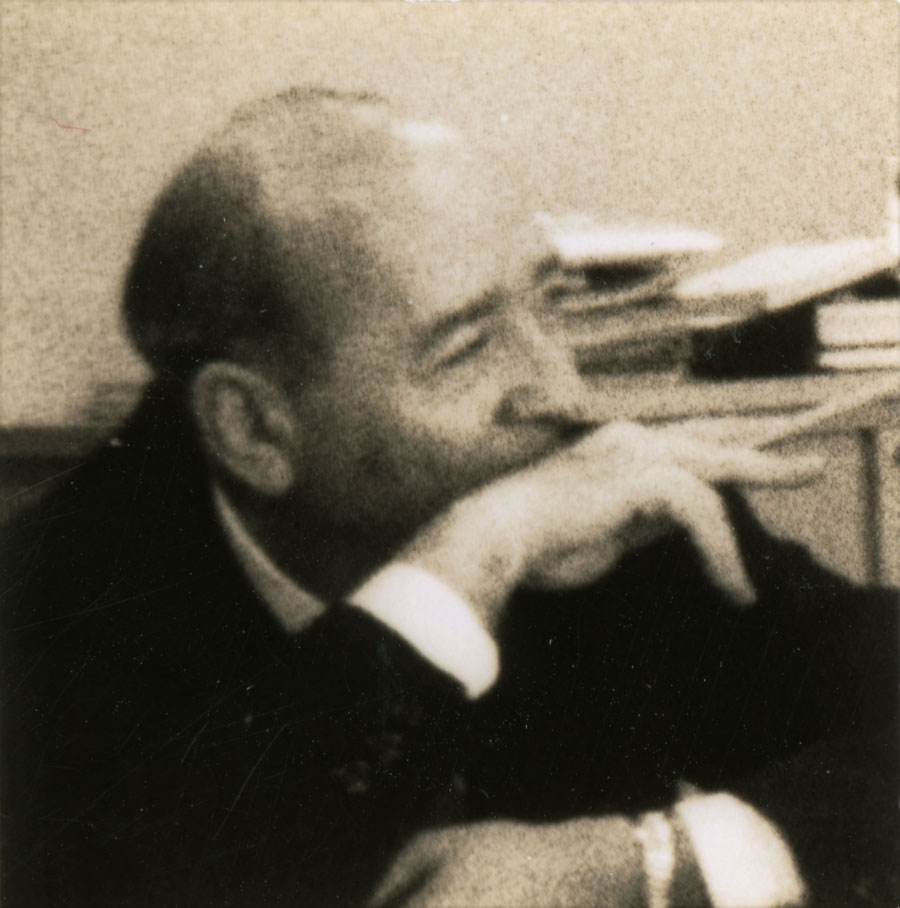
Halmos photographed probabilist Mark Kac (1914-1984) in 1962. According to J. J. O’Connor and E. F. Robertson of the MacTutor Archive, “Mark Kac pioneered the modern development of mathematical probability, in particular its applications to statistical physics.” Kac earned his Ph.D. at the University of Lwów (Lvov) in Poland in 1937 under the direction of Hugo Steinhaus. He managed to escape Poland in 1938, when he took up a scholarship at Johns Hopkins University in Baltimore. He was on the mathematics faculty at Cornell University in Ithaca, New York, from 1939 to 1961, Rockefeller University in New York City from 1961 to 1981, and the University of Southern California in Los Angeles from 1981 onward. (Source: MacTutor Archive)
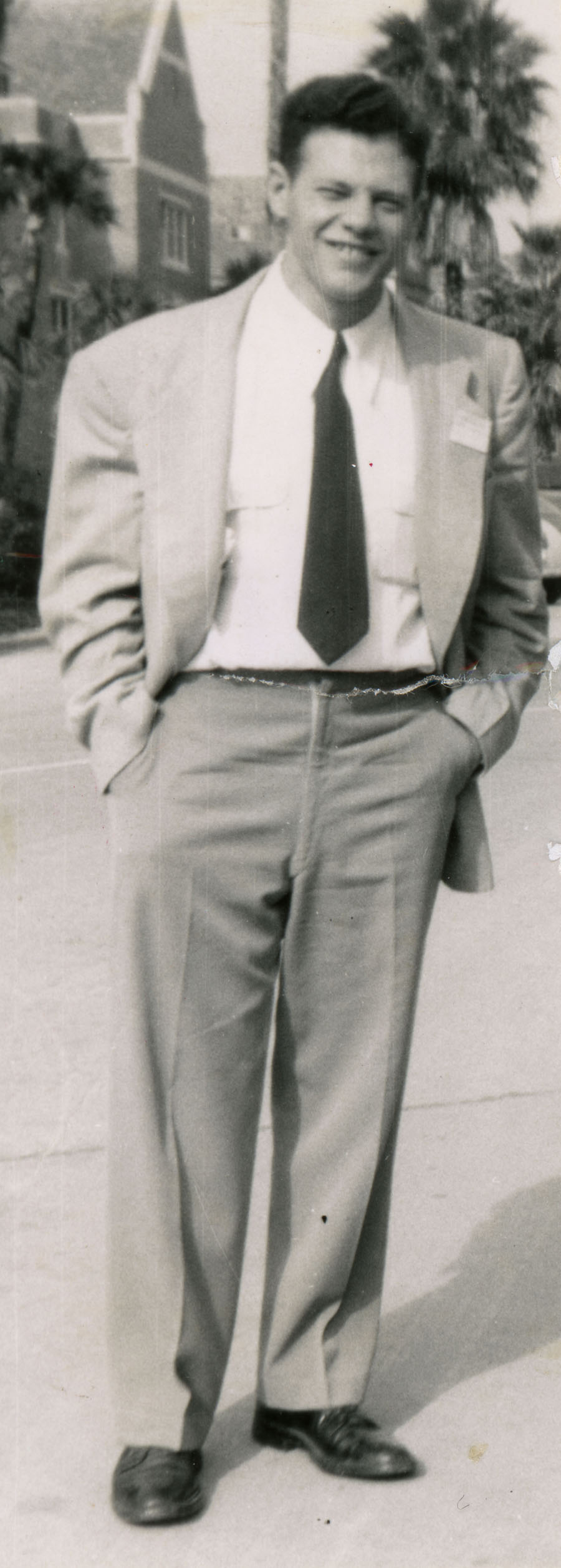
Richard Kadison (1925-2018) was photographed by Halmos in December of 1950 during the AMS Winter Meeting at the University of Florida in Gainesville, to which he carpooled from the Institute for Advanced Study in Princeton with Shizuo Kakutani, Irving Segal, and Alan Hoffman. He remembers well that Halmos was also at the meeting:
Paul was sitting next to me as I waited for my turn to speak [during a session of 10-minute talks]. When I was about to leave my seat to give my talk, Paul tugged at my sleeve and said, out of the side of his mouth in a low voice, with just the hint of a growl, "Don't give an uninvited address." That put me in a wonderfully humorous mood for my lecture!
Kadison wasn't the only one who drove from New Jersey to Florida for the meeting; apparently, IAS permanent faculty member John von Neumann did, too:
A little later at that conference, Dec. 28, von Neumann's birthday, arrived. I knew von Neumann from my stay at the Institute, but only in a formal way. Paul and Shizuo were dear friends of his. At their suggestion I was invited along to his "birthday party." The four of us drove in von Neumann's large Cadillac to a nearby county that wasn't "dry" for a small celebration; it was the thrill of a lifetime for me.
Kadison earned his Ph.D. from the University of Chicago (where Halmos was on the faculty) in 1950 with the dissertation “A Representation Theory for Commutative Topological Algebra,” written under advisor Marshall Stone (pictured on page 4 of this collection), and visited IAS during 1950-52. After teaching at Columbia University from 1952 to 1964, he became Kuemmerle Professor of Mathematics at the University of Pennsylvania. According to the citation for his 1999 AMS Steele Prize for Lifetime Achievement, “For almost half a century, Dick Kadison has been one of the world leaders in the subject of operator algebras, and the tremendous flourishing of this subject in the last thirty years is largely due to his efforts.” (Sources: IAS; UPenn Mathematics; “1999 Steele Prizes,” AMS Notices 46:4 (April 1999), 461-462)
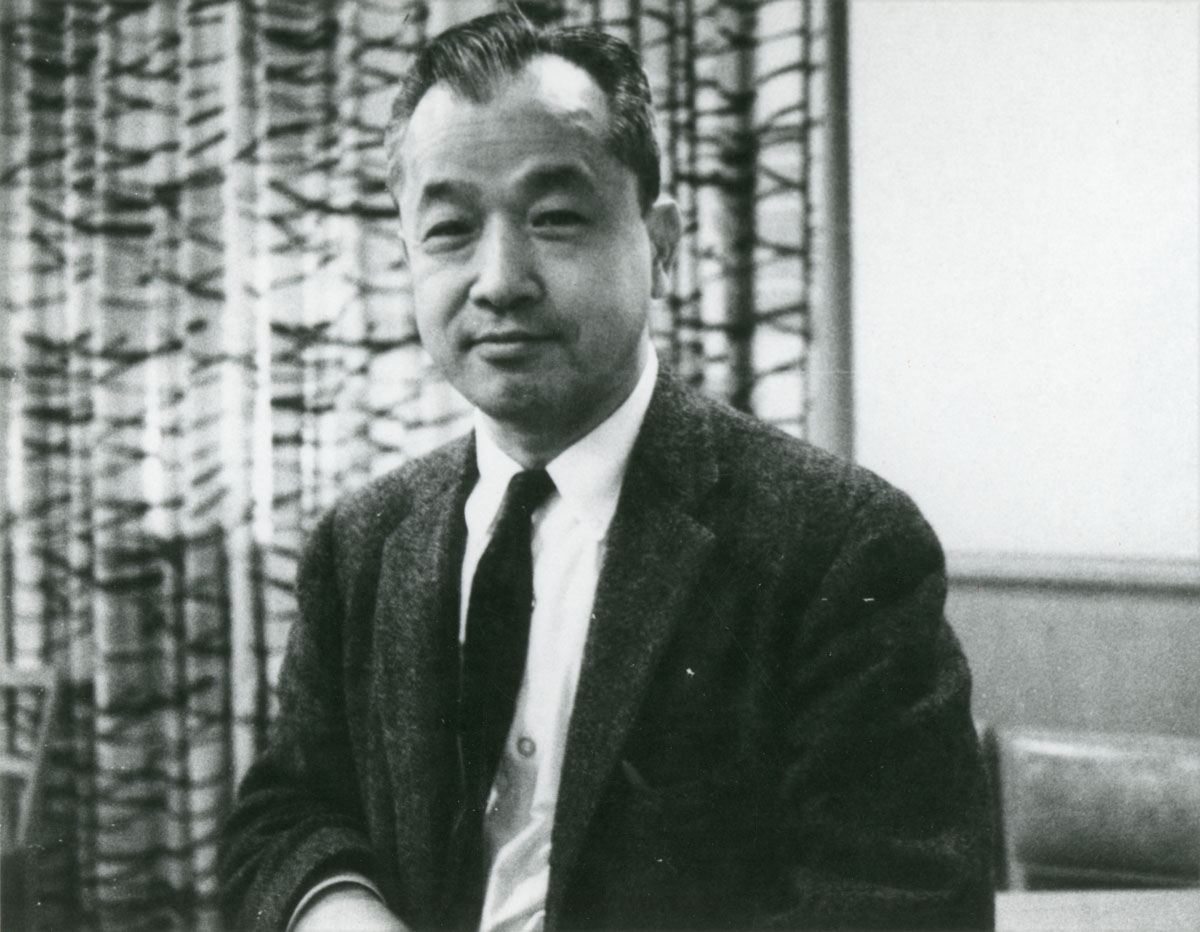
Halmos photographed functional analyst and ergodic theorist Shizuo Kakutani (1911-2004) in 1965. Kakutani earned his Ph.D. in 1941 from the University of Osaka, Japan, where he had taught since 1934. At the invitation of Hermann Weyl, he spent the two years 1940-42 at the Institute for Advanced Study (IAS) in Princeton, New Jersey, where he met Halmos (page 1 of this collection), Warren Ambrose (page 1), Joseph Doob (pages 1, 2, 12, 14), Paul Erdös (pages 3, 14), and John von Neumann. Despite Japan and the U.S. being at war beginning Dec. 7, 1941, Kakutani was able to complete his two-year visit to IAS and return to Japan in 1942. He was on the mathematics faculty at the University of Osaka from 1942 to 1948, at IAS during 1948-49, and at Yale University, where he advised at least 32 Ph.D. students, from 1949 onward. (Sources: MacTutor Archive, Mathematics Genealogy Project)
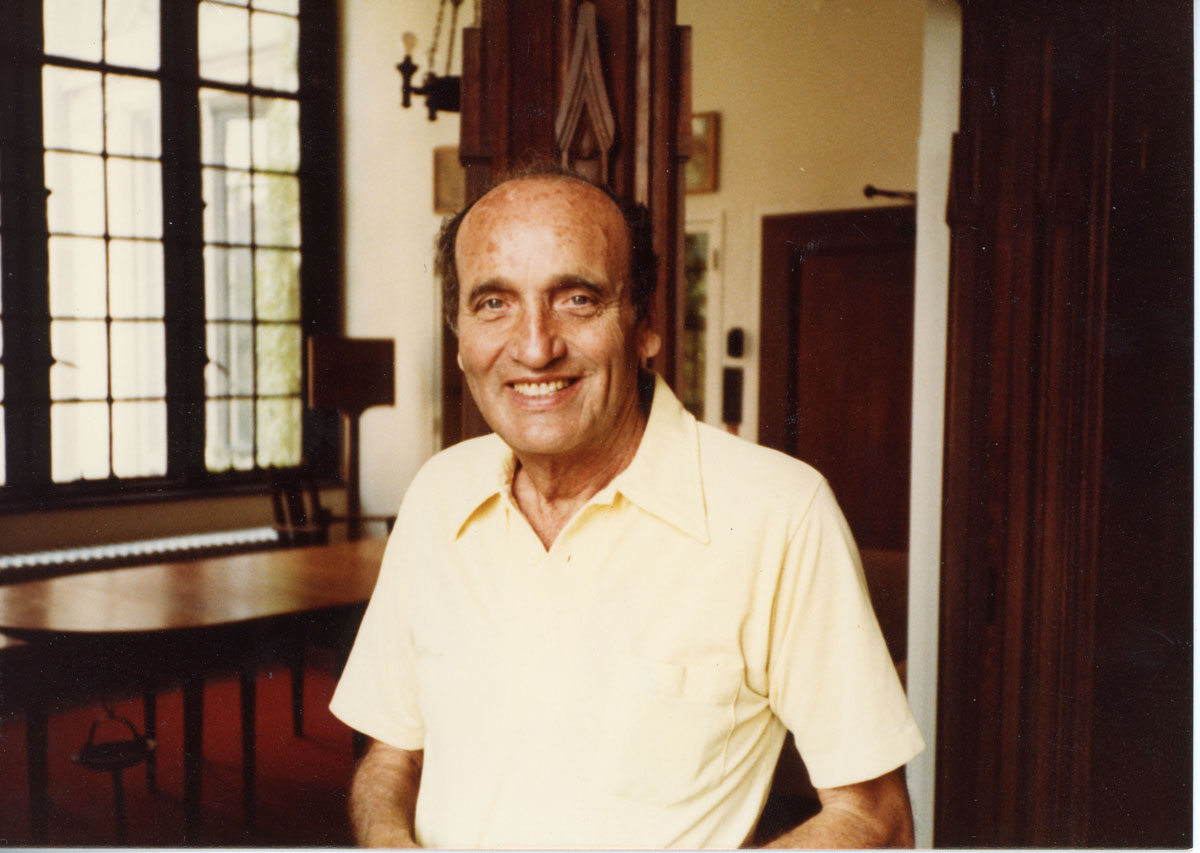
Algebraist Irving Kaplansky (1917-2006) was photographed by Halmos in July of 1983, probably at the University of Chicago, where Kaplansky was professor of mathematics from 1945 to 1984. Halmos was also a faculty member at Chicago from 1946 to 1961. Kaplansky, who advised at least 55 Ph.D. students at Chicago, earned his own Ph.D. from Harvard University in 1941 with the dissertation “Maximal Fields with Valuations,” written under advisor Saunders Mac Lane. He remained at Harvard until 1944, then spent a year at Columbia doing war work before joining the Chicago faculty in 1945. In 1984, he became director of the Mathematical Sciences Research Institute (MSRI), which at that time was housed at the University of California, Berkeley. According to O’Connor and Robertson of the MacTutor Archive, “Kaplansky has made major contributions to ring theory, group theory and field theory.” He was president of the American Mathematical Society during 1985 and 1986. (Sources: MacTutor Archive, AMS Presidents)
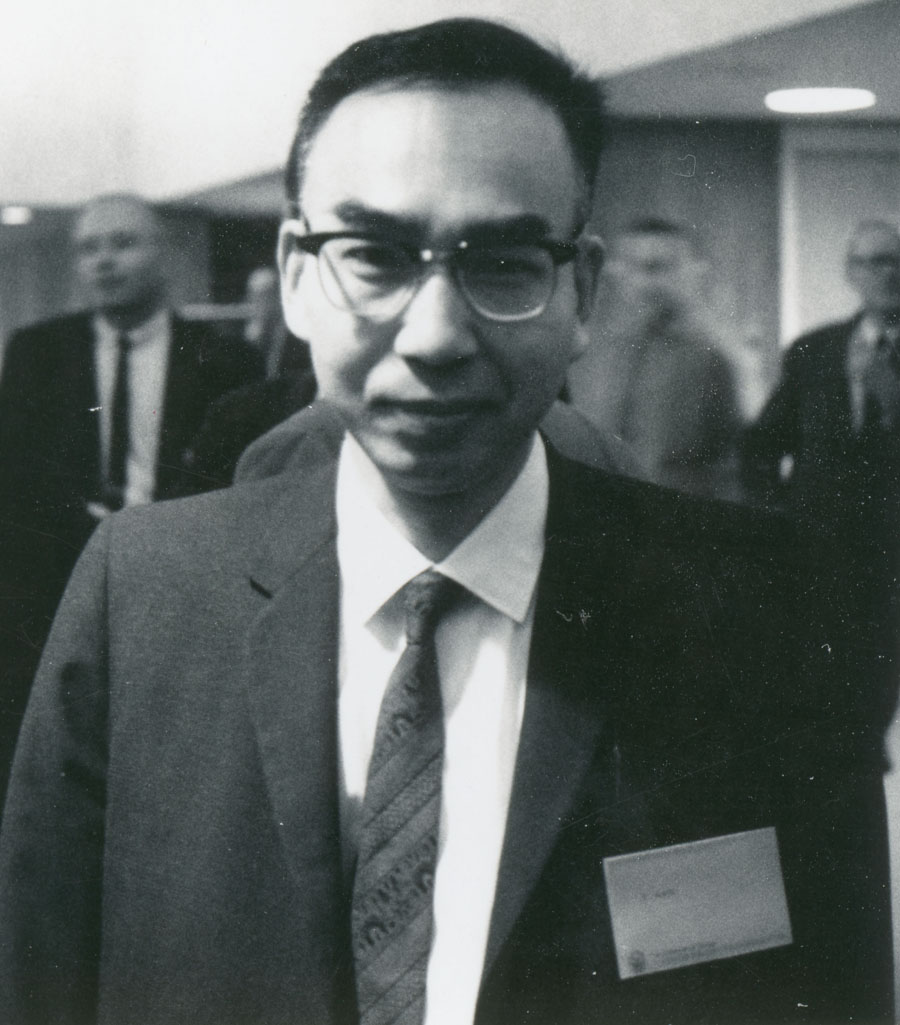
Halmos photographed mathematical physicist and operator theorist Tosio Kato (1917-1999) in Chicago on May 20, 1968. Kato earned his D.Sci. in physics in 1951 from the University of Tokyo with the dissertation “On the convergence of the perturbation method” on partial differential equations. He was a physics faculty member at the University of Tokyo from 1951 to 1962. In 1962, he moved to the University of California, Berkeley, Mathematics Department, where he spent the rest of his career, advising at least 21 Ph.D. students and publishing his well known Perturbation theory for linear operators in 1966. (Source: MacTutor Archive)
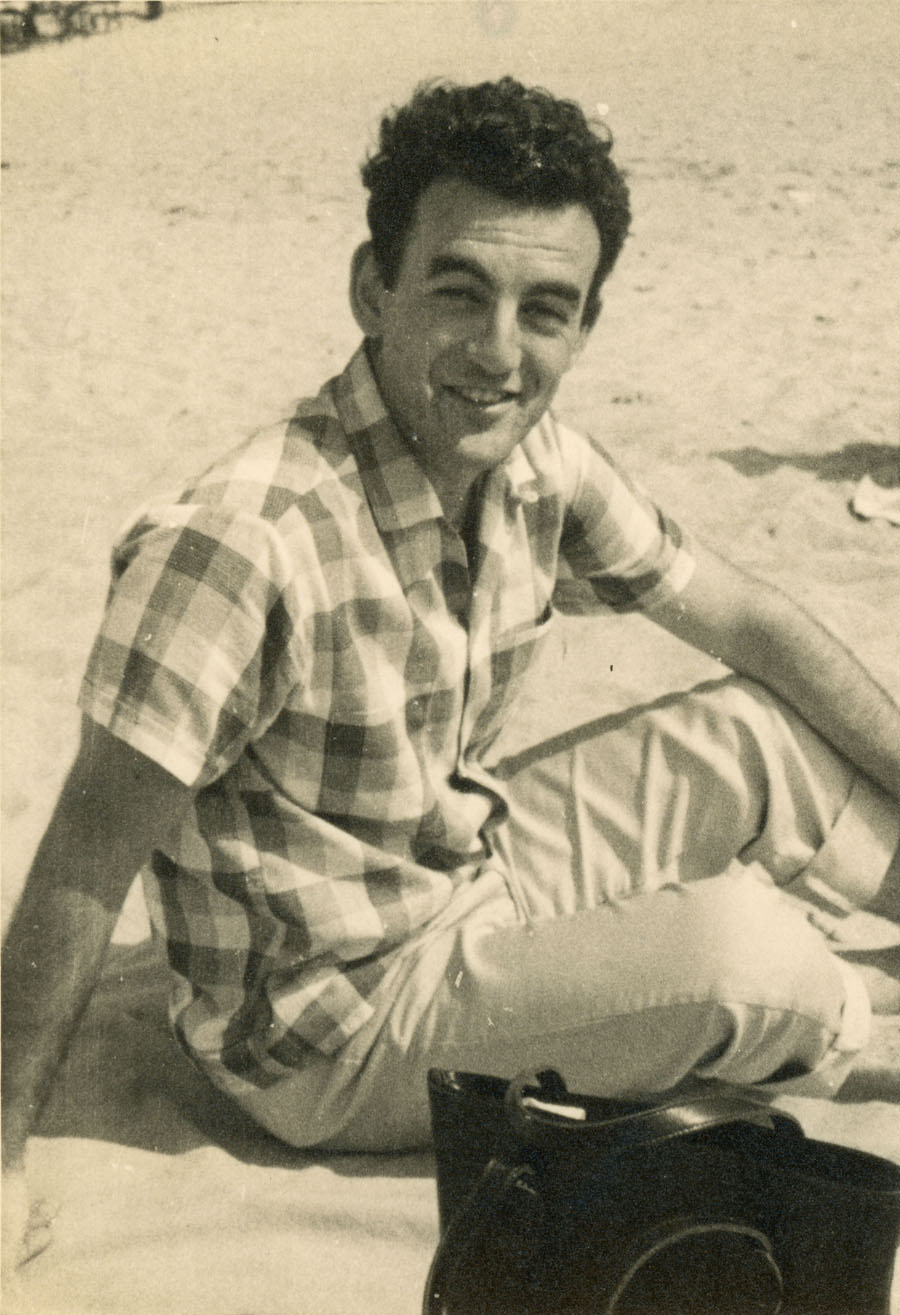
Halmos photographed Yitzhak Katznelson in August of 1960 at a location he identified only as “Dunes” on the back of the photo. Halmos was still at the University of Chicago at the time, and “Dunes” in 1960s Chicago probably referred to the Indiana Dunes State Park on Lake Michigan. Born in Jerusalem, Katznelson earned his Ph.D. from the University of Paris in 1959 under advisor Szolem Mandelbrojt. After teaching at UC Berkeley, Hebrew University (in Jerusalem), Yale, and Stanford, he joined the mathematics faculty of Hebrew University in 1966. In 1988, he moved to Stanford University, where he is now professor emeritus of mathematics and lists his research interests as harmonic analysis and ergodic theory. He is the author of the AMS Steele Prize-winning book An Introduction to Harmonic Analysis. (Sources: Mathematics Genealogy Project; Stanford Mathematics; “2002 Steele Prizes,” AMS Notices 49:4 (April 2002), 466-467)
For an introduction to this article and to the Paul R. Halmos Photograph Collection, please see page 1. Watch for a new page featuring six new photographs each week during 2012.
Regarding sources for this page: Information for which a source is not given either appeared on the reverse side of the photograph or was obtained from various sources during 2011-12 by archivist Carol Mead of the Archives of American Mathematics, Dolph Briscoe Center for American History, University of Texas, Austin.
Who's That Mathematician? Paul R. Halmos Collection - Page 27
For more information about Paul R. Halmos (1916-2006) and about the Paul R. Halmos Photograph Collection, please see the introduction to this article on page 1. A new page featuring six photographs will be posted at the start of each week during 2012.
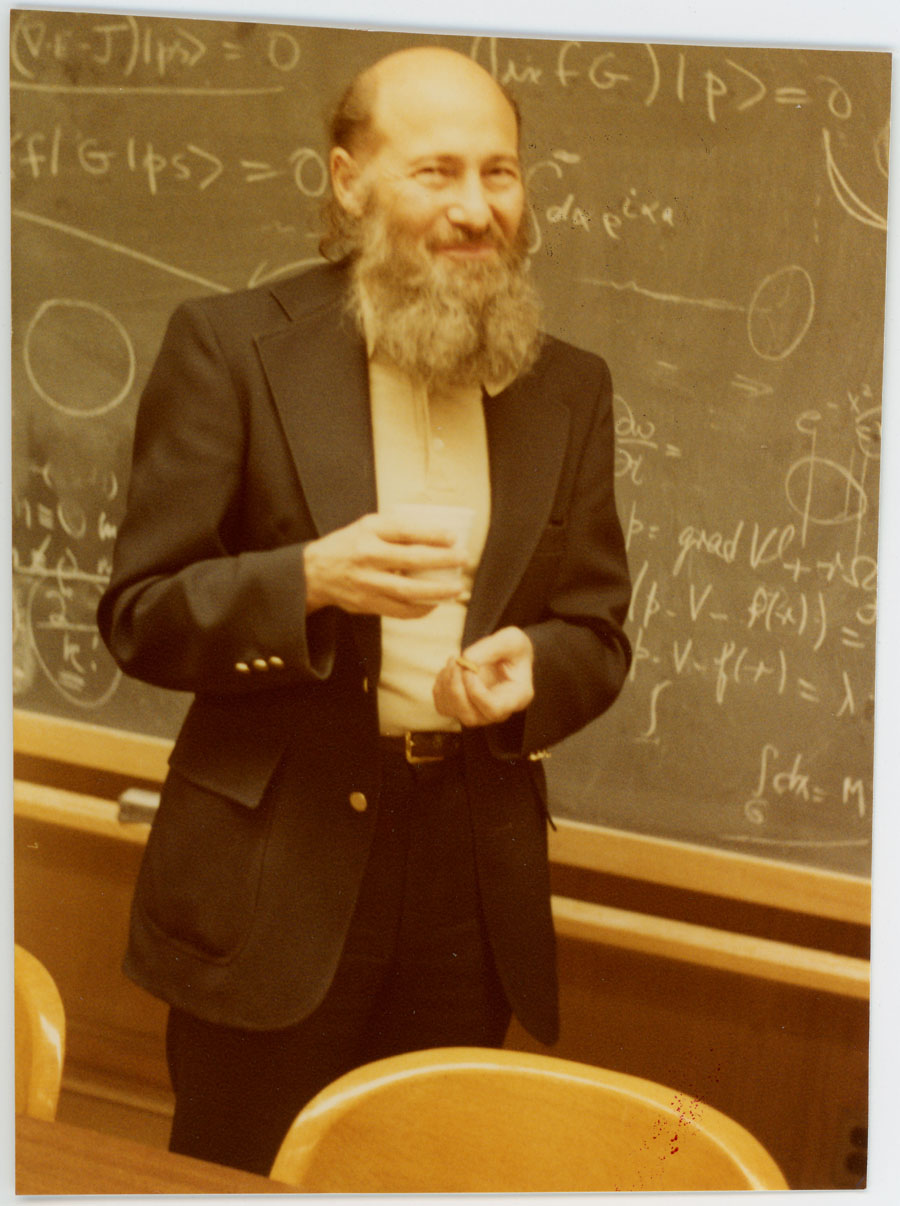
Halmos photographed Joseph Keller in December of 1978 at Indiana University in Bloomington, where Halmos was a professor at the time. Keller is an applied mathematician best known for developing the geometrical theory of diffraction to describe the propagation of waves. After teaching military engineering and working for the Division of War Research on submarine detection using sonar during World War II, he returned to his alma mater, New York University, in 1945 and earned his Ph.D. in 1948 with the dissertation “Reflection and Transmission of Electromagnetic Waves by Thin Curved Shells.” From 1948 to 1979, he was a mathematics professor at NYU’s Institute of Mathematical Sciences (which became the Courant Institute in 1964), serving as Director of the Division of Wave Propagation and Applied Mathematics there from 1967 to 1979. In 1978 he became Lewis M. Terman Professor of Mathematics and Mechanical Engineering at Stanford University, where he is now Professor Emeritus. (Sources: MacTutor Archive, Stanford Mathematics)
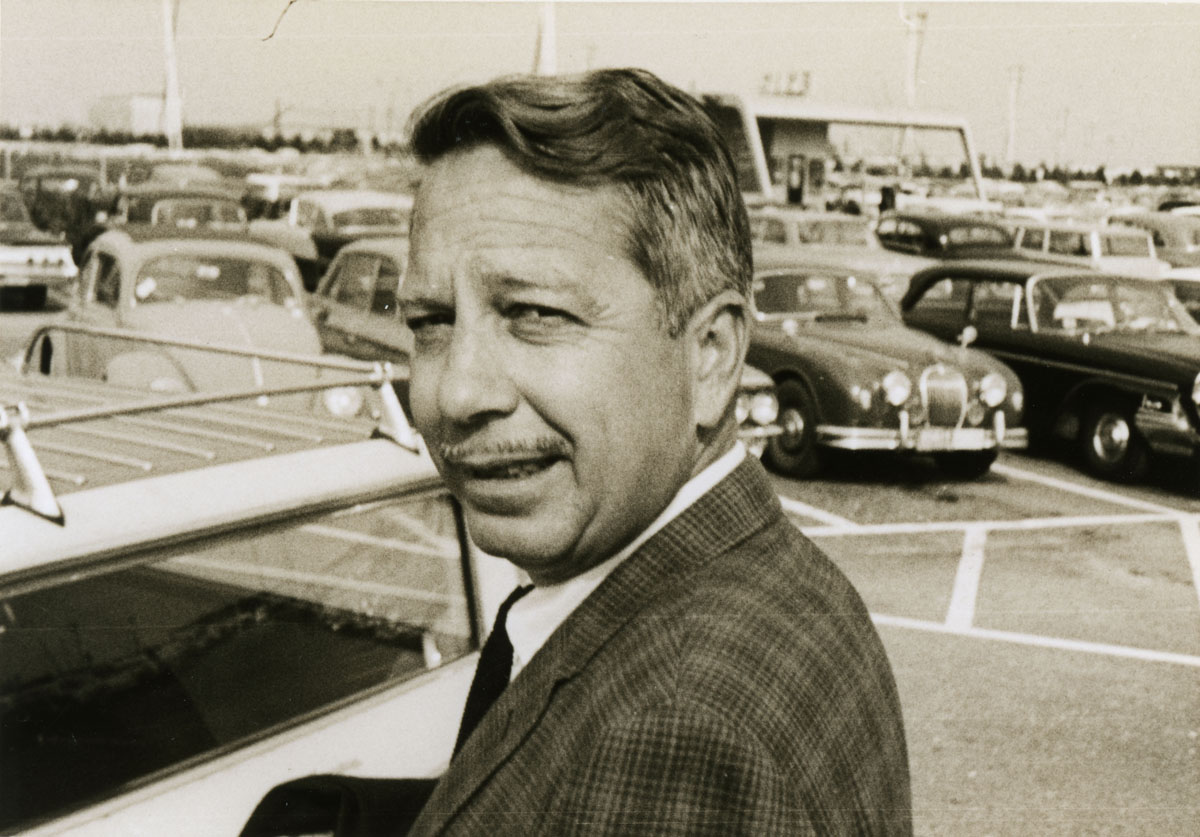
John L. Kelley (1916-1999) was photographed by Halmos in July of 1962. Kelley earned his Ph.D. in 1940 from the University of Virginia with the dissertation “A Study of Hyperspaces.” After holding positions at the University of Notre Dame (1940-42), the Aberdeen Proving Grounds (1942-45), the Institute for Advanced Study (1945-46), and the University of Chicago (1946-47), Kelley spent the rest of his career (from 1947 onward) at the University of California, Berkeley, becoming Professor Emeritus in 1985. He and Halmos may have first met at IAS during the nearly five months Halmos spent there during the spring and summer of 1946 or they may have met in the fall of 1946 at the University of Chicago, where both were new faculty members. Kelley was a topologist and functional analyst best known as the author of the classic text General Topology (Springer Graduate Texts in Mathematics, 1952, 1968, 1976), and also was a leader in mathematics education initiatives. (Sources: Mathematics Genealogy Project; UC Berkeley Public Information Office; IAS; Paul R. Halmos, I Want to Be a Mathematician (Springer, 1985), pp. 127-8, 131, 140)
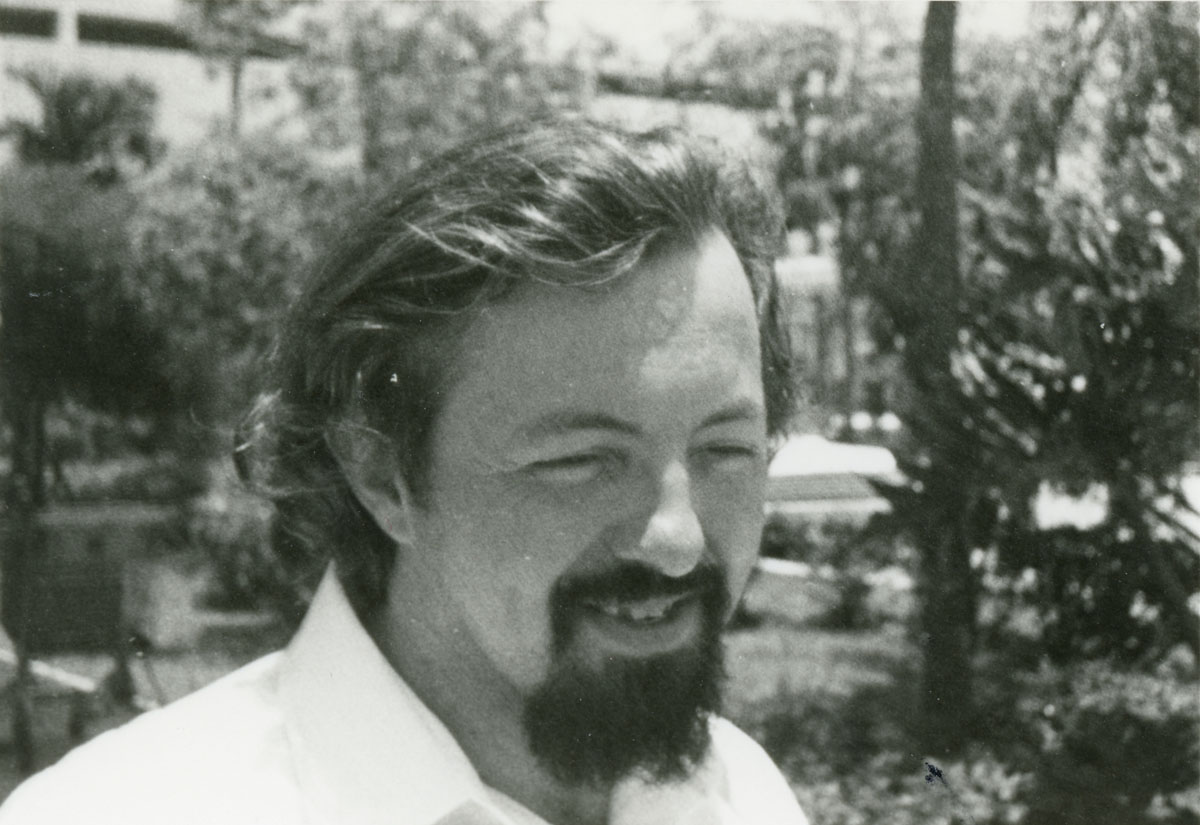
Halmos photographed his Ph.D. student Robert L. Kelley (d. 2006) in July of 1969. Kelley earned his Ph.D. in 1966 from the University of Michigan with the dissertation “Weighted Shifts on Hilbert Spaces,” with Halmos as his first advisor and Allen Shields as his second advisor. He spent most of his career in the mathematics department at the University of Miami in Coral Gables, Florida, where he had earned a masters degree in 1960. (Halmos spent the academic year 1965-66 at the University of Miami and one wonders if Kelley traveled there with him.) Kelley was known as an excellent teacher with interests including botany (he led tours at the university’s arboretum), music, and Maya archaeology. (Sources: Mathematics Genealogy Project; “A Man without Equal,” University of Miami College of Arts and Sciences Magazine)
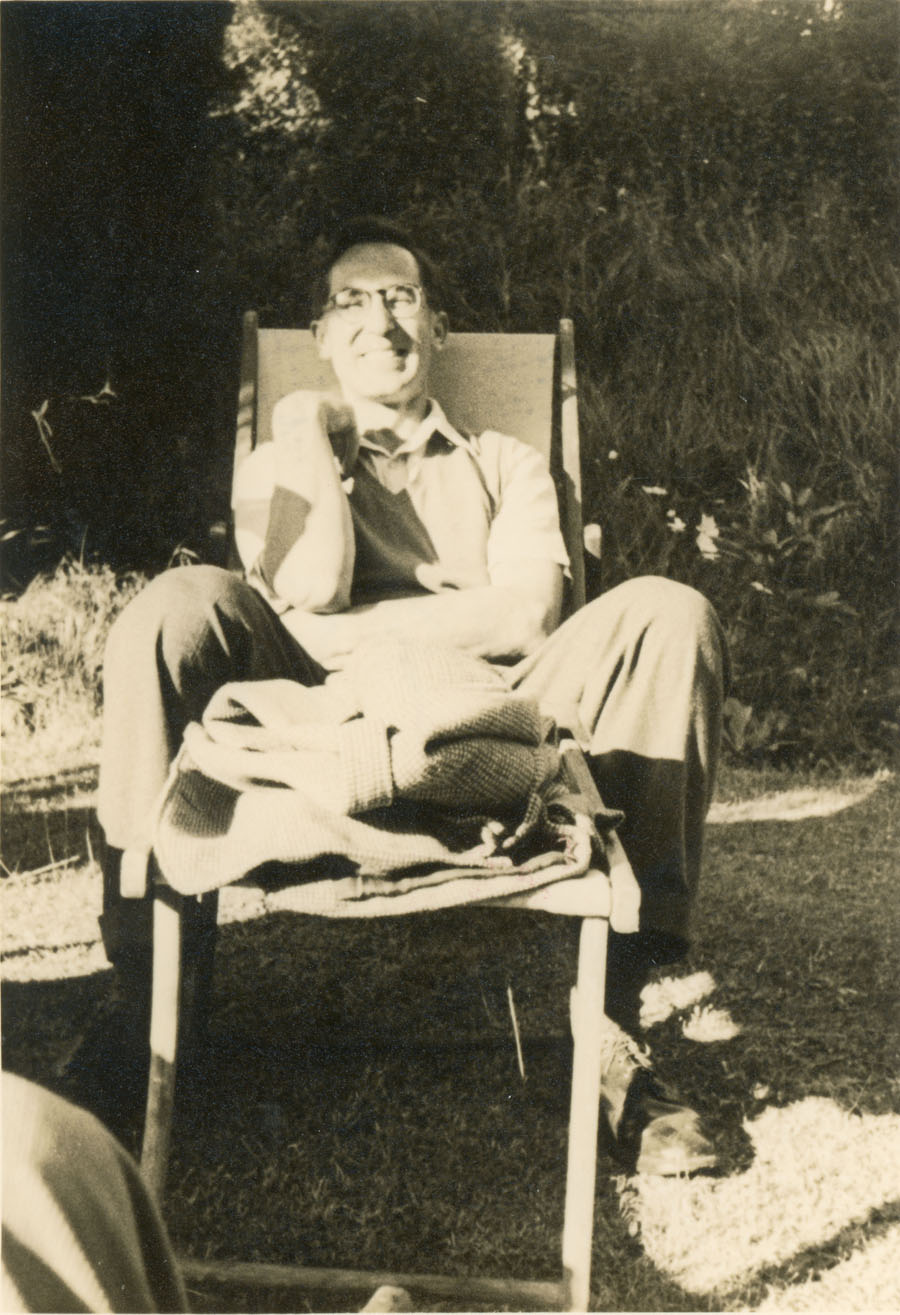
Applied probabilist and data analyst David Kendall (1918-2007) was photographed by Halmos in 1958 in Cambridge, England. Kendall studied at Oxford University at least until 1943, served in the Ministry of Supply during World War II (1940-45), and lectured at Oxford from 1946 to 1962. In 1962, he became Professor of Mathematical Statistics at Cambridge, where he spent the rest of his career. According to J. J. O’Connor and E. F. Robertson of the MacTutor Archive, he was “a leading world authority on applied probability and data analysis” and “[a]n exceptional lecturer.” Kendall was president of the London Mathematical Society from 1972 to 1974. (Sources: MacTutor Archive, Mathematics Genealogy Project)

Halmos photographed Paul Erdös (1913-1996), left, and David Kendall (the subject of the preceding photograph) in Cambridge, England on June 4, 1968. Erdös (also pictured on page 3 and page 14) was well known for traveling all over the world posing problems in number theory, combinatorics, and graph theory and solving them with many and varied collaborators. Those who published papers with him (509 people at last count) have Erdös number 1. (Sources: MacTutor Archive, Wolfram MathWorld)
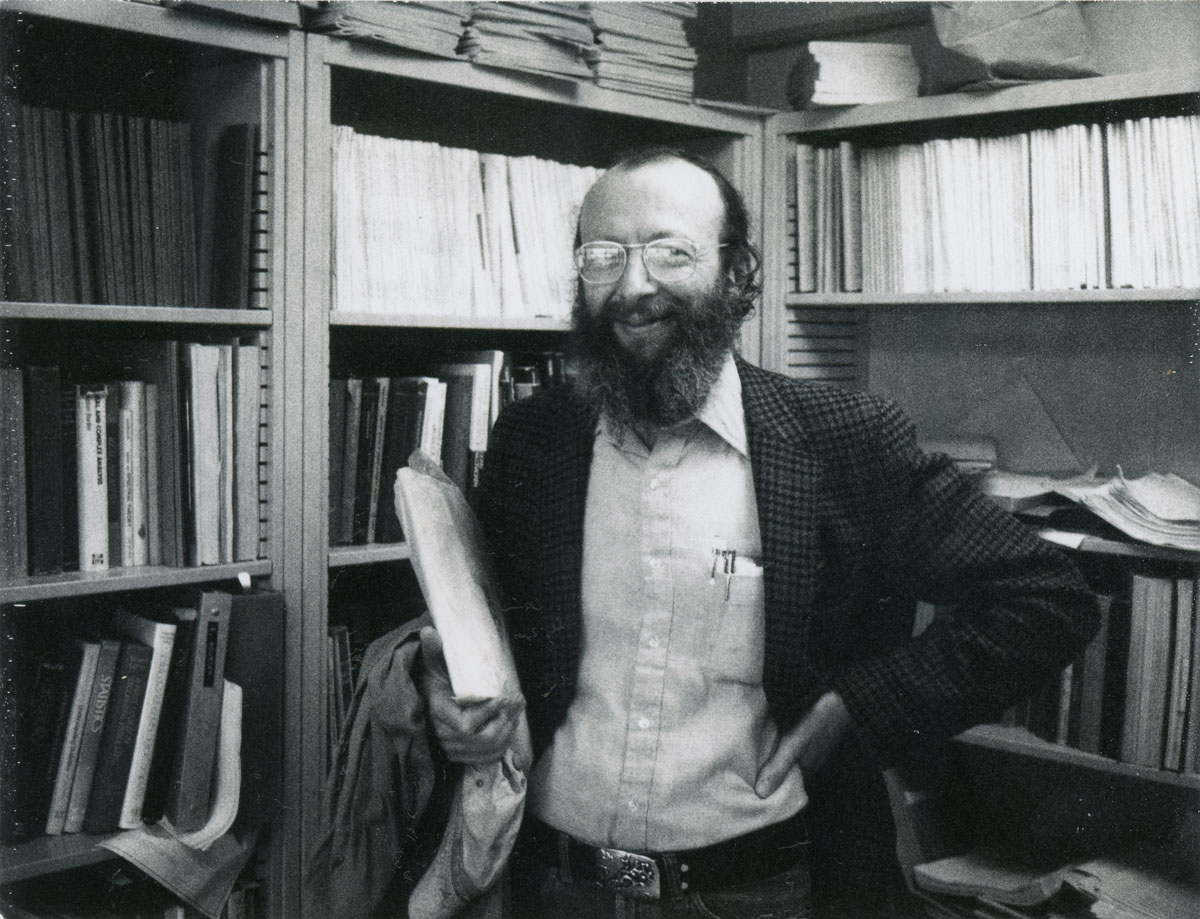
Halmos photographed Jack Kiefer (1924-1981) on Feb. 7, 1978, in Santa Barbara, California. After studying engineering and economics at the Massachusetts Institute of Technology, Kiefer earned his Ph.D. in mathematical statistics in 1952 from Columbia University with the dissertation “Contributions to the Theory of Games and Statistical Decision Functions” and went on to specialize in optimal design of experiments. He was on the mathematics faculty at Cornell University from 1951 to 1979, holding the Horace White Professorship from 1973 onward, and on the faculty of the University of California, Berkeley, from 1979 until his death. (Source: MacTutor Archive)
For an introduction to this article and to the Paul R. Halmos Photograph Collection, please see page 1. Watch for a new page featuring six new photographs each week during 2012.
Regarding sources for this page: Information for which a source is not given either appeared on the reverse side of the photograph or was obtained from various sources during 2011-12 by archivist Carol Mead of the Archives of American Mathematics, Dolph Briscoe Center for American History, University of Texas, Austin.
Who's That Mathematician? Paul R. Halmos Collection - Page 28
For more information about Paul R. Halmos (1916-2006) and about the Paul R. Halmos Photograph Collection, please see the introduction to this article on page 1. A new page featuring six photographs will be posted at the start of each week during 2012.
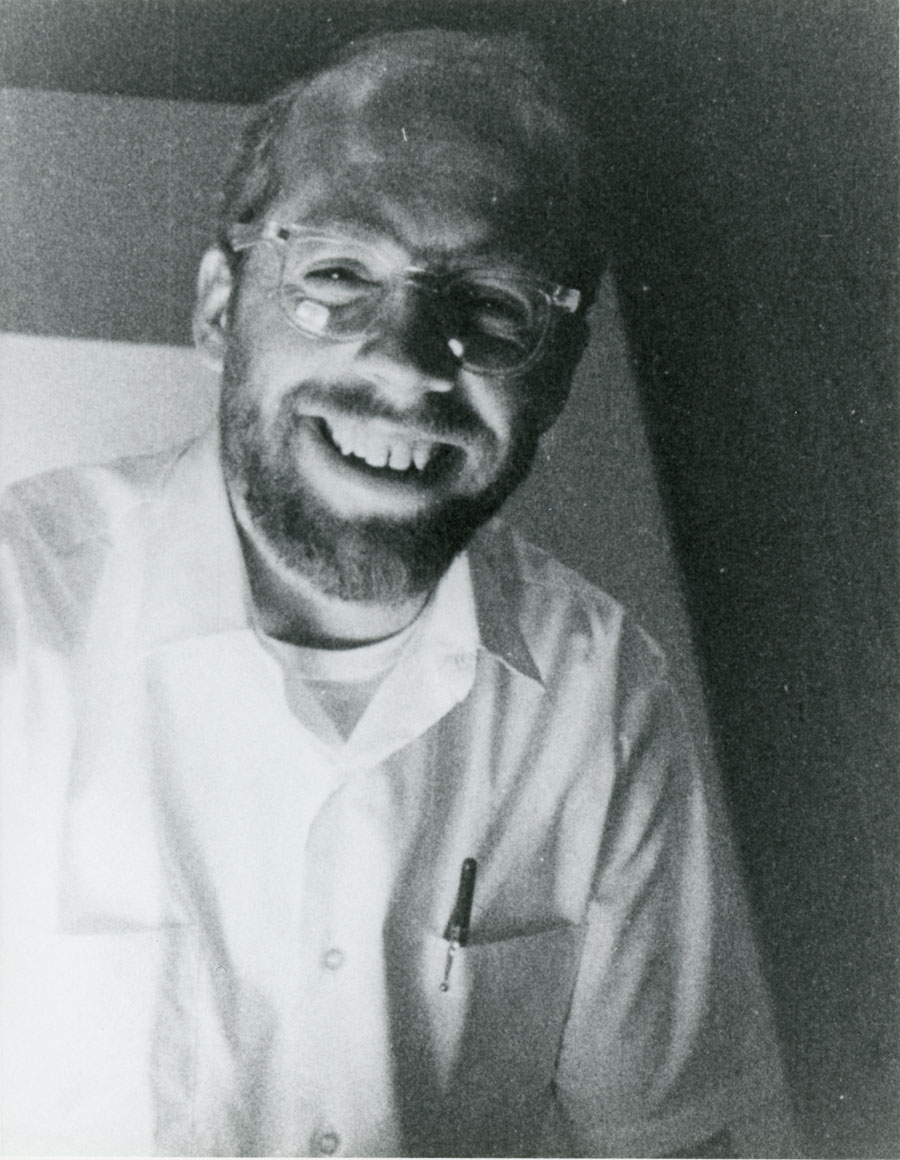
Halmos photographed Robion Kirby in 1969. As an undergraduate at the University of Chicago, Kirby was particularly inspired by a general topology course he took with Halmos in 1958, and he went on to earn his Ph.D. in topology from Chicago in 1965. While still in graduate school, he had worked on the "annulus conjecture" and he continued to do so after accepting his first academic post at the University of California, Los Angeles, in 1965. It was at the Institute for Advanced Study in Princeton, New Jersey, during the fall term of 1968 that he and L. C. Siebenmann completed the proof of the annulus theorem and settled three other conjectures on triangulations and on the topological invariance of Whitehead torsion. These three conjectures were from John Milnor's list of seven of the most important problems in geometric topology. It was this list of open problems that inspired Kirby to create, in 1976, his own list of open problems in low-dimensional topology. In 1971, Kirby received the AMS Veblen Prize in Geometry for his work on the annulus conjecture and he moved from UCLA to the University of California, Berkeley. At Berkeley, he has continued his research on the topology of manifolds and advised 50 Ph.D. students, the most recent one in June of 2011. (He also advised three Ph.D. students at UCLA.) Rob Kirby is now Professor Emeritus at UC Berkeley. (Sources: MacTutor Archive, IAS, Mathematics Genealogy Project, UC Berkeley Mathematics)
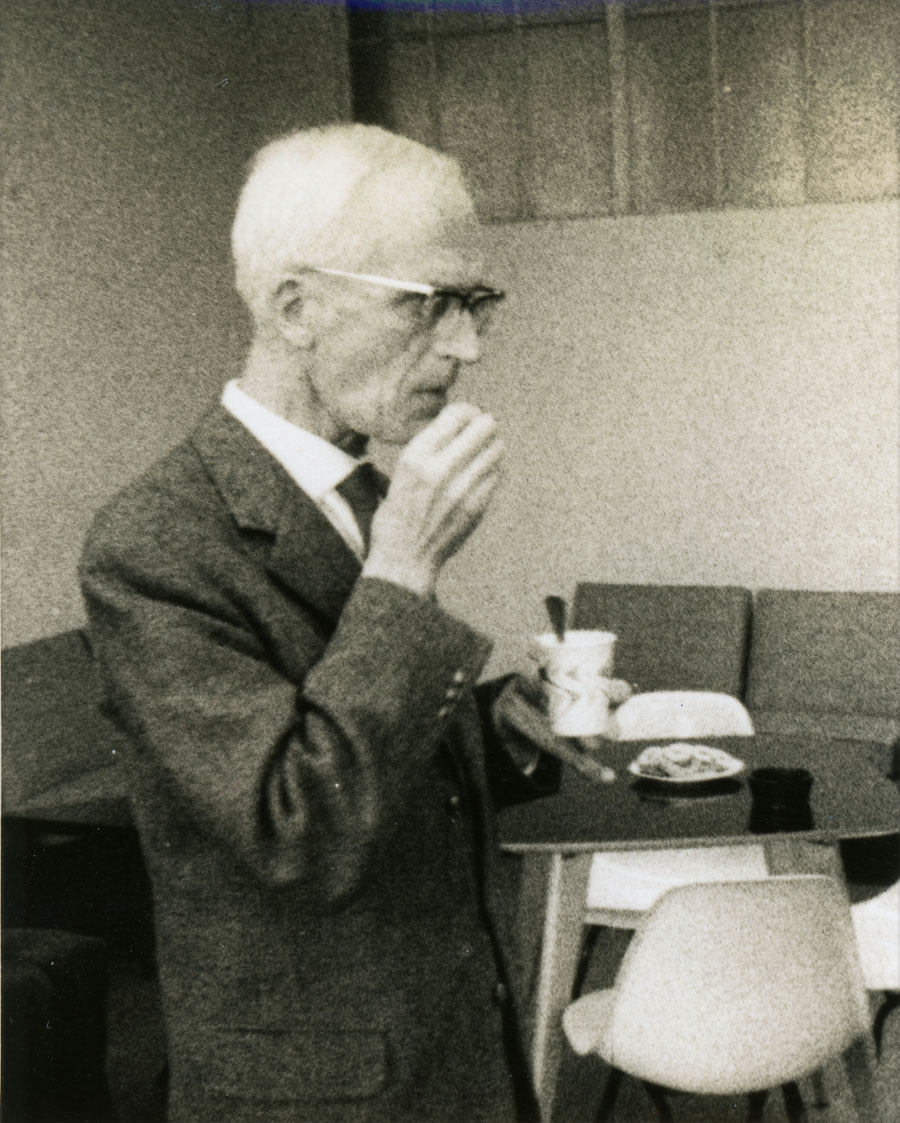
Hellmuth Kneser (1898-1973) was photographed by Halmos in December of 1961. Son of mathematician Adolf Kneser, Hellmuth Kneser was born in Dorpat, Russia (now Tartu, Estonia) but grew up mainly in the German cities of Berlin and Breslau (now Wroclaw, Poland). He earned his Ph.D. in 1921 from the University of Göttingen with a dissertation on the mathematics of quantum mechanics written under advisor David Hilbert. He taught for a few years at Göttingen, where he had one Ph.D. student, Reinhold Baer (pictured on page 3 of this collection). In 1925 Kneser moved to the University of Greifswald, and in 1937 to the University of Tübingen, where he spent the rest of his career. He intentionally worked in a variety of areas of mathematics, including topology, number theory, group theory, complex analysis, non-Euclidean geometry, differential geometry, and applications of game theory to economics and sociology. (Source: MacTutor Archive)
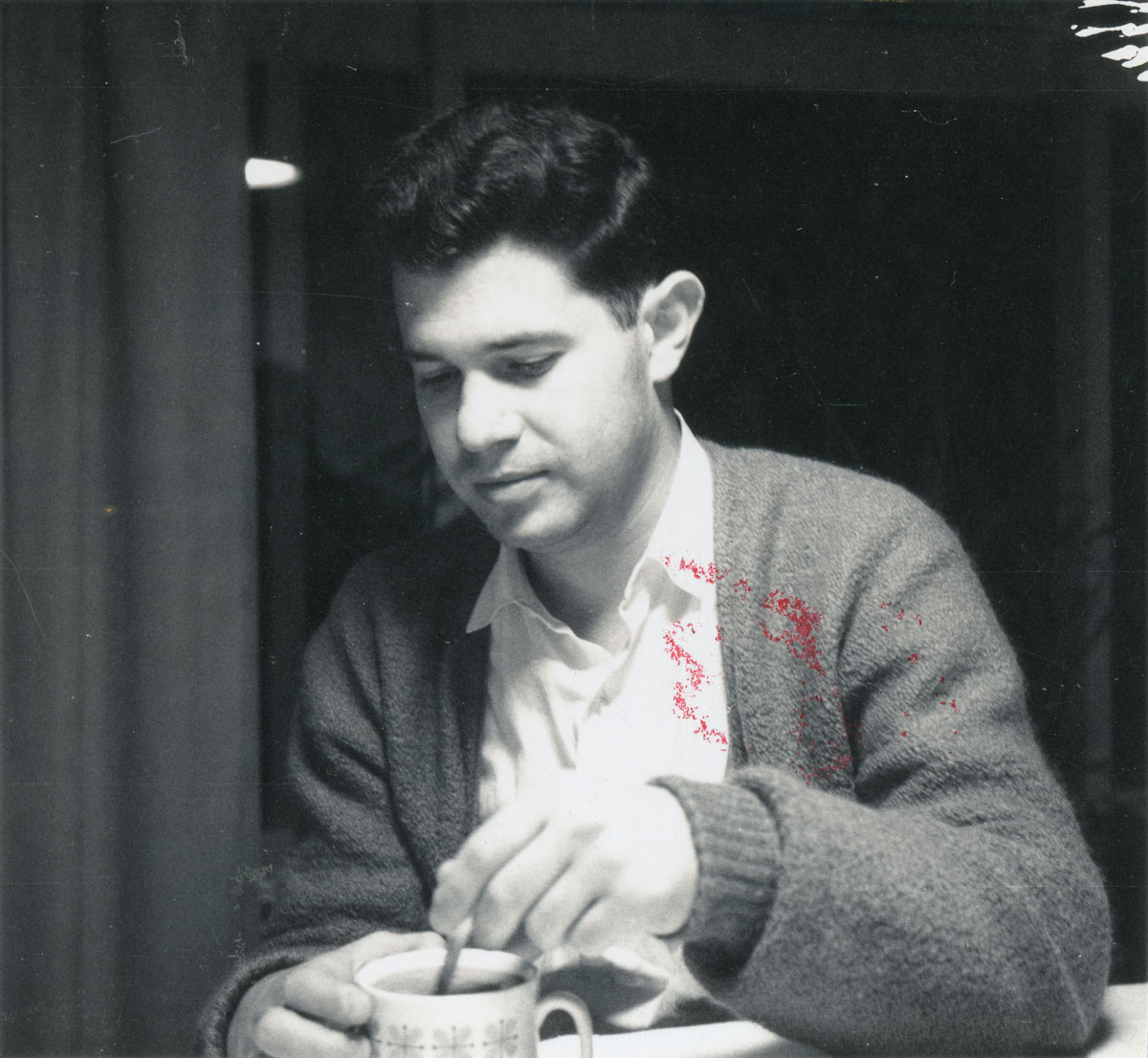
Halmos photographed Simon Kochen on September 2, 1965, at the Joint Summer Meetings at Cornell University in Ithaca, New York. Kochen earned his Ph.D. in 1959 from Princeton University with a dissertation in logic written under advisor Alonzo Church. For the next few years, he worked in number theory, winning the AMS Cole Prize in that field in 1967 for work with James Ax. Following a year (1966-67) at the Institute for Advanced Study in Princeton, he returned to Princeton University in 1967, where he became Henry Burchard Fine Professor of Mathematics in 1994 and is now Professor Emeritus. Kochen may be best known today for his and Princeton colleague John Conway’s Free Will Theorem and Strong Free Will Theorem relating human free will to that of elementary particles. (Sources: Mathematics Genealogy Project; Princeton Philosophy Department; IAS; J. H. Conway and S. Kochen, “The Strong Free Will Theorem,” AMS Notices 56:2 (Feb. 2009), 226-232; MacTutor Archive)
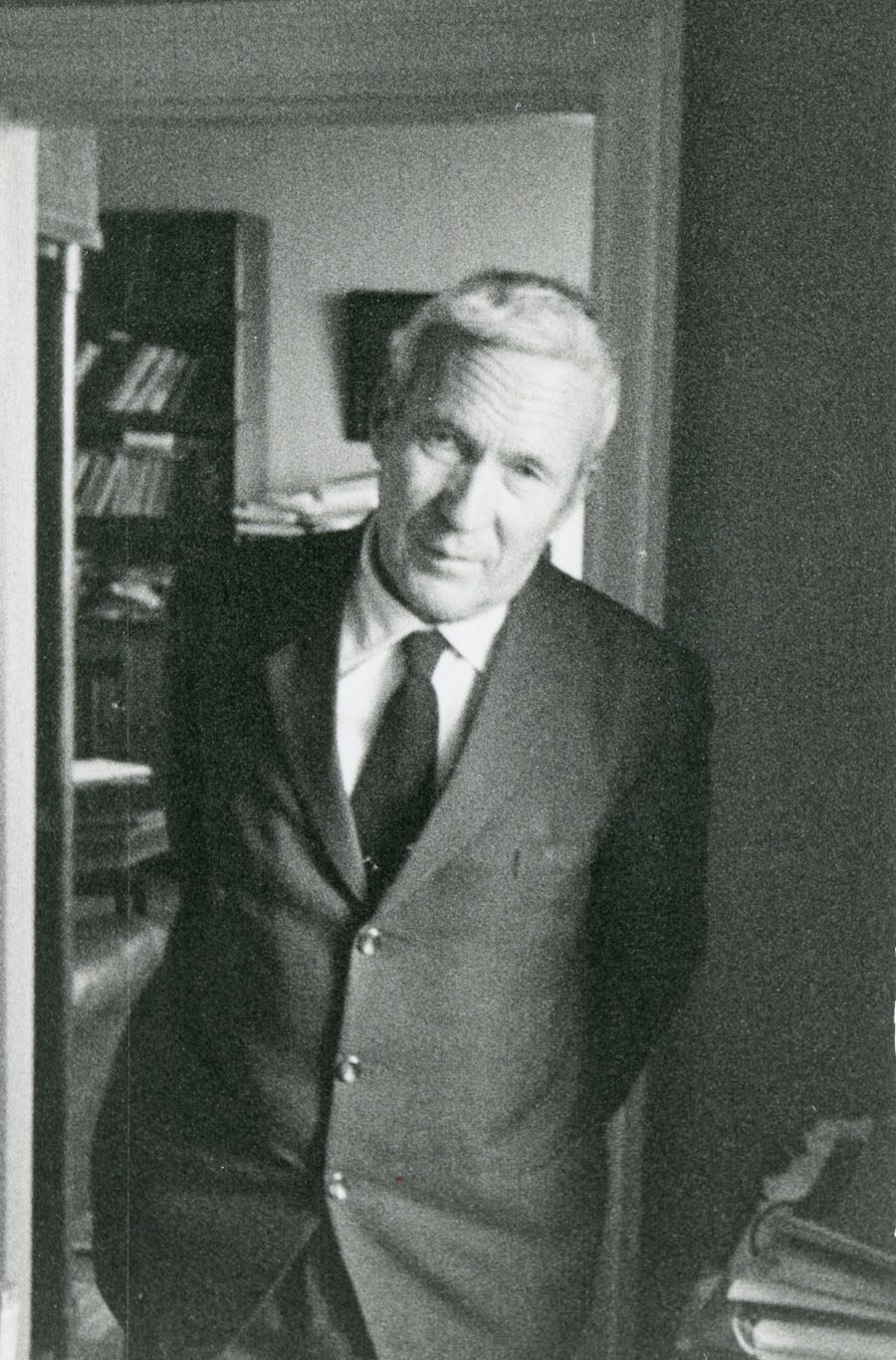
Probabilist Andrei Kolmogorov (1903-1987) was photographed by Halmos in May of 1965 in Moscow, Russia. Halmos visited mathematicians in Moscow and Leningrad (St. Petersburg) for one month during April and May of 1965 as part of a 1964-65 exchange program between the scientific academies of the U.S. and U.S.S.R. that sent 20 scientists from each country to the other. From 1922 to 1925, as an undergraduate at Moscow State University, Kolmogorov became internationally known for his papers in classical analysis, and in 1925 he published his first paper on probability, the field to which he would make seminal contributions throughout his career. He earned his Ph.D. in 1929 from Moscow State University under advisor Nikolai Luzin (as part of a group of students who called themselves “Luzitania”), then set to work on Markov processes, then foundations of probability, then applications of probability to turbulence and planetary motion. Besides analysis and probability, he also worked in logic, topology, and dynamical systems. According to the Mathematics Genealogy Project, he advised 76 Ph.D. students at Moscow State University, three at the Steklov Mathematical Institute (where he was head of the department of probability and statistics), one at Stockholm, and one at M.I.T. (Sources: MacTutor Archive, Mathematics Genealogy Project)
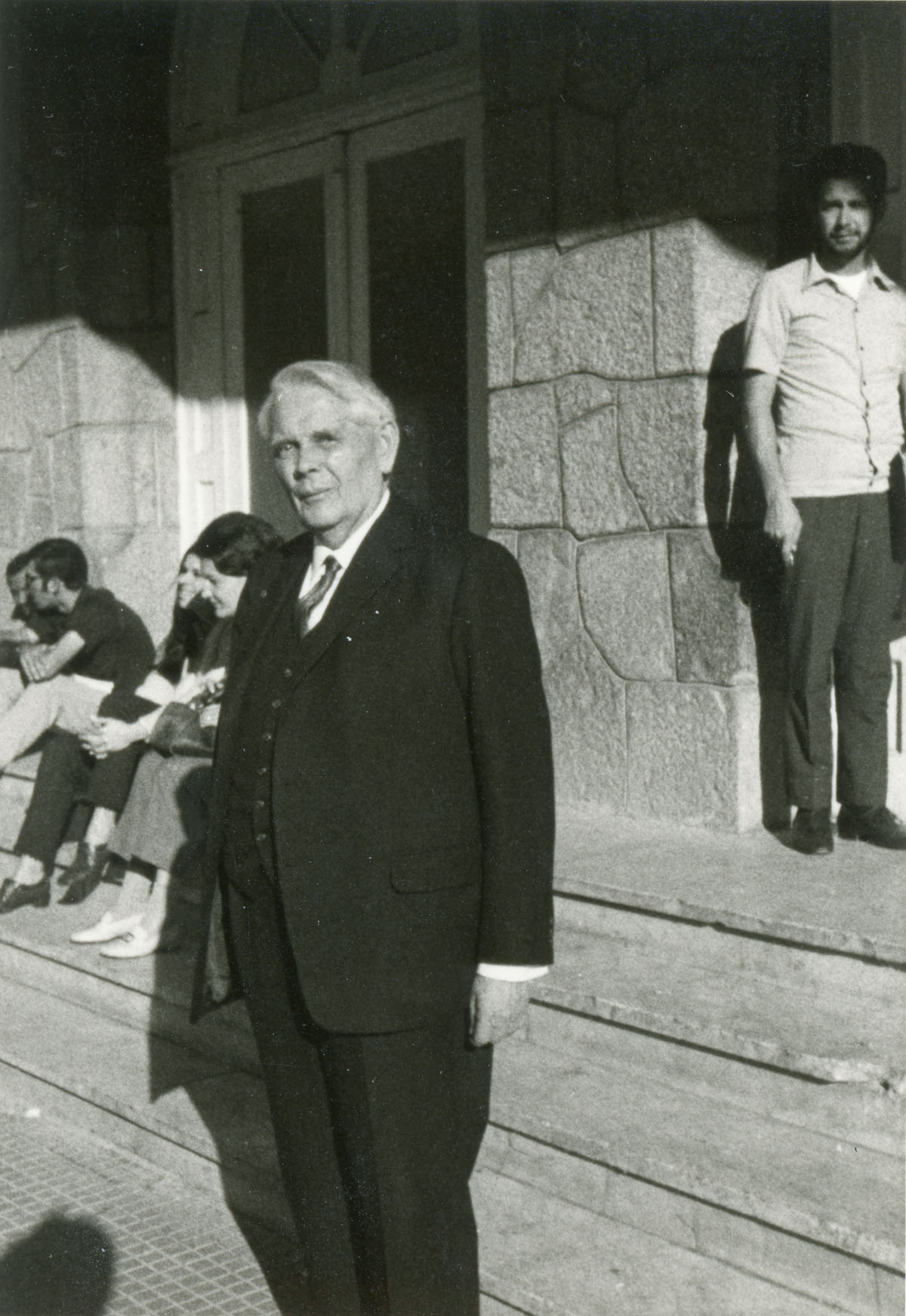
Halmos photographed Wolfgang Krull (1899-1971) in July of 1969 at the Seventh Brazilian Mathematics Colloquium in Poços de Caldas, Brazil. Krull began his studies at the University of Freiburg, but studied with Felix Klein and Emmy Noether at the University of Göttingen during 1920-21, before earning his Ph.D. at Freiburg in 1922. According to O’Connor and Robertson of the MacTutor Archive, “[M]uch of modern ring theory is still following the path which Krull took, building on the foundations which Emmy Noether had laid.” Primarily a ring theorist, Krull also worked in group theory and extended Galois theory to infinite field extensions. He is the “Krull” of the Krull dimension of a ring and the Krull-Schmidt theorem for decomposing abelian groups. He remained on the faculty at Freiburg until 1928, when he moved to the University of Erlangen. He advised at least 41 Ph.D. students, the first seven at the University of Erlangen and, beginning in 1939, the rest at the University of Bonn. (Source: MacTutor Archive, Mathematics Genealogy Project)
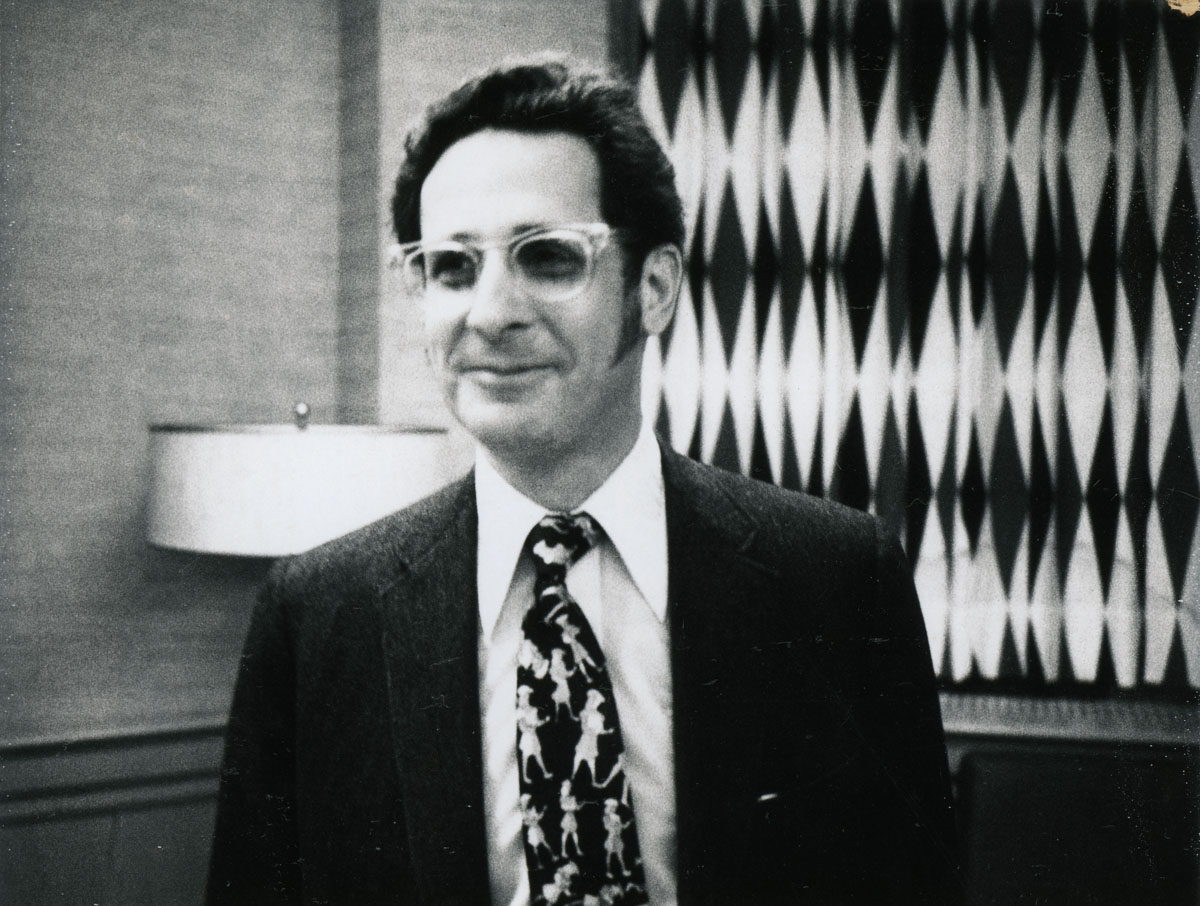
Halmos photographed Martin Kruskal (1925-2006) on January 17, 1975, at Indiana University in Bloomington, where Halmos was on the faculty at the time. Kruskal earned his Ph.D. in 1952 from New York University with the dissertation, “The Bridge Theorem for Minimal Surfaces,” written under Richard Courant (pictured on page 10 of this collection) and Bernard Friedman. From 1951 to 1964, he did plasma physics research in “Project Matterhorn,” which in 1961 became the Princeton Plasma Physics Laboratory. From 1959 to 1989, he also was an astrophysics professor at Princeton and, from 1968 to 1989, a mathematics professor and director of the applied mathematics program there. In 1989, when he became an emeritus professor at Princeton, he accepted the David Hilbert Chair of Mathematics at nearby Rutgers University in New Brunswick, New Jersey. As a mathematical physicist and applied mathematician, he not only discovered the nonlinear waves he dubbed “solitons” but also solved the nonlinear PDEs describing them. (Sources: Rutgers University Department of Mathematics, MacTutor Archive, PPPL History)
For an introduction to this article and to the Paul R. Halmos Photograph Collection, please see page 1. Watch for a new page featuring six new photographs each week during 2012.
Regarding sources for this page: Information for which a source is not given either appeared on the reverse side of the photograph or was obtained from various sources during 2011-12 by archivist Carol Mead of the Archives of American Mathematics, Dolph Briscoe Center for American History, University of Texas, Austin.
Who's That Mathematician? Paul R. Halmos Collection - Page 29
For more information about Paul R. Halmos (1916-2006) and about the Paul R. Halmos Photograph Collection, please see the introduction to this article on page 1. A new page featuring six photographs will be posted at the start of each week during 2012.
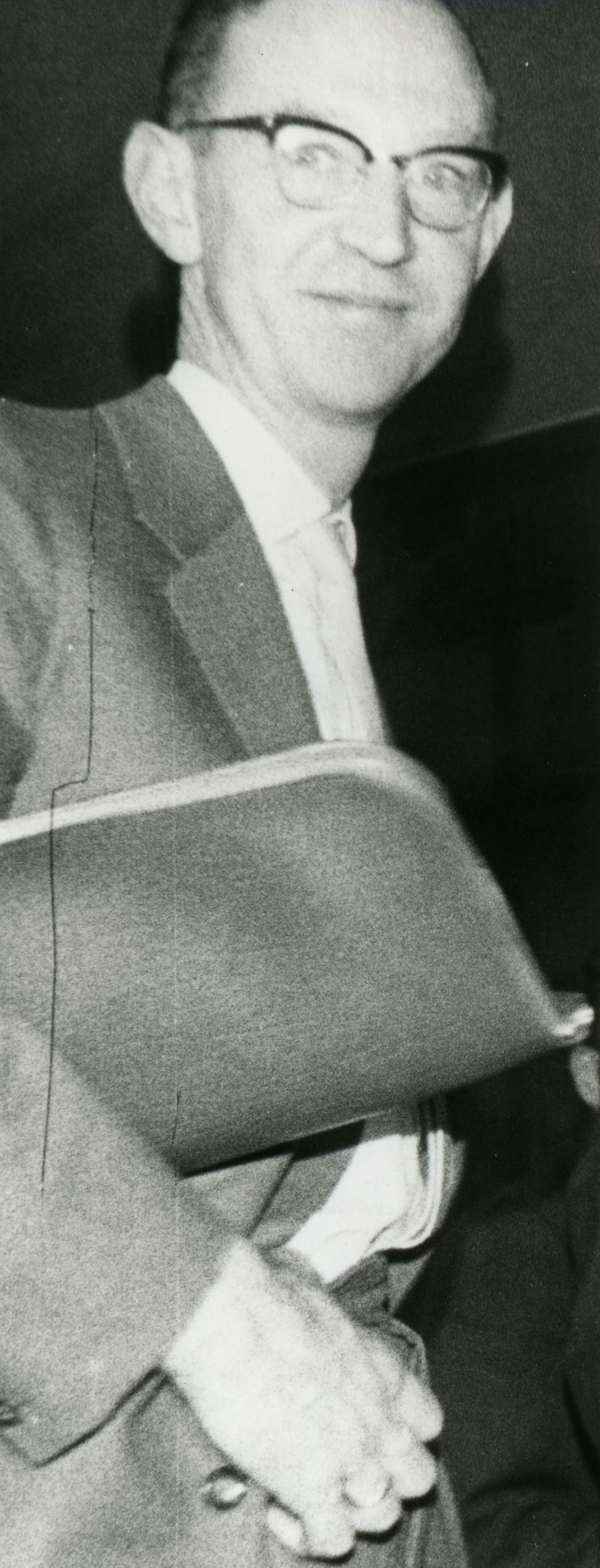
Halmos photographed Nicolaas Kuiper (1920-1994) in April of 1961 in Chicago, Illinois. Kuiper earned his Ph.D. in differential geometry in 1946 from the University of Leiden in Holland. He then visited the U.S. for three years, spending most of his time at the Institute for Advanced Study in Princeton, where he began a collaboration with differential geometer Shiing-Shen Chern (whose photograph appears on page 9 of this collection) and where he may have first met Halmos, who was at IAS during 1947-48. Kuiper then taught at the Agricultural Institute in Wageningen, Holland, until 1962, when he became a professor at the University of Amsterdam. In 1971, he moved to Paris to become Director of the Institut des Hautes Études Scientifiques (IHES), a position he held until 1985. He retired from IHES in 1991 and moved back to Holland. Among differential geometers, he is best known for his work on tight and taut manifolds. (Sources: MacTutor Archive, IAS)
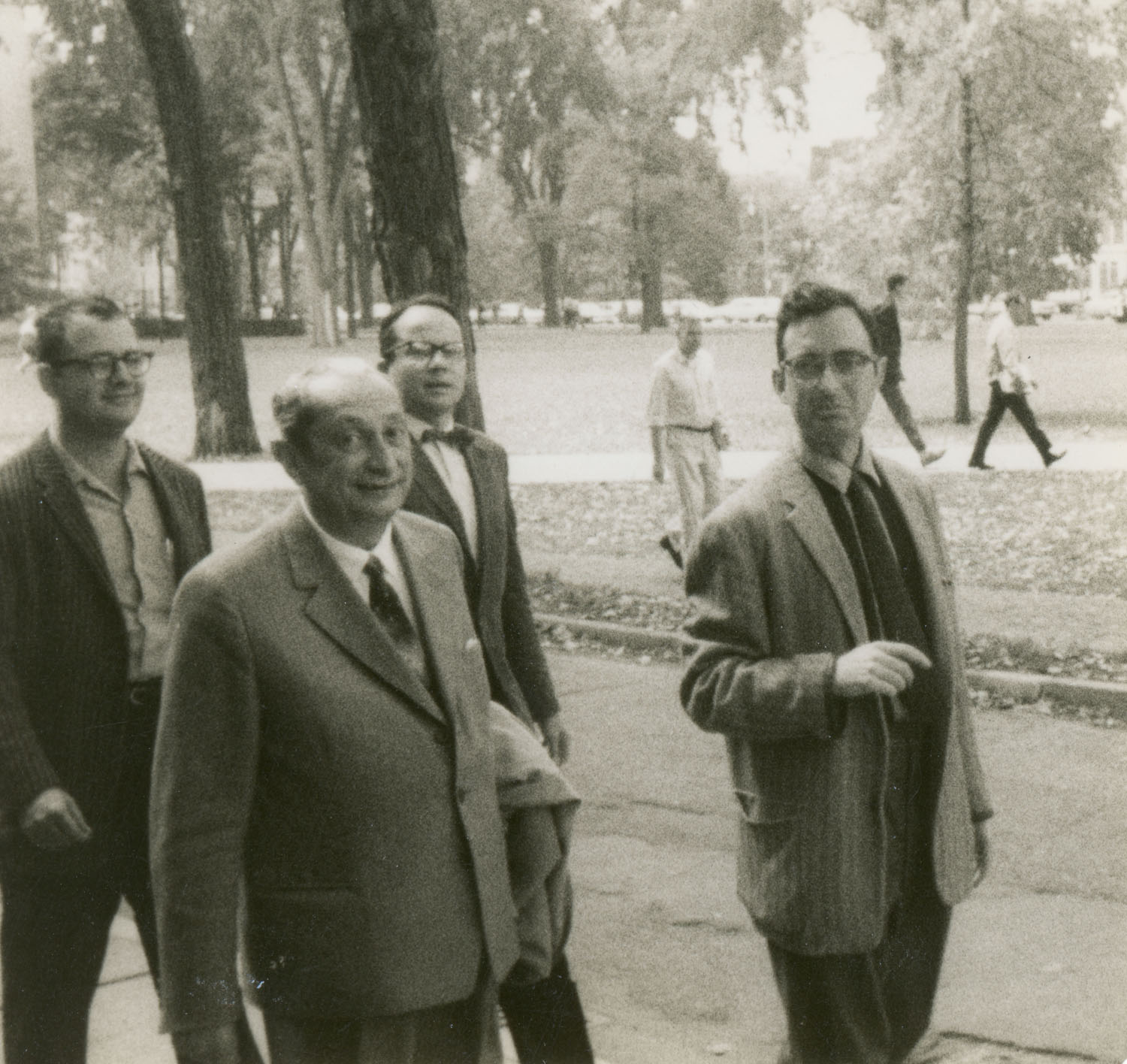
Left to right: Carl Pearcy, Kazimierz Kuratowski, Frederick Gehring, and Frank Harary were photographed by Halmos in September of 1963 in Ann Arbor, presumably on the University of Michigan campus. Halmos, Pearcy, Gehring, and Harary were faculty members at Michigan at the time.
Carl Pearcy earned his Ph.D. in operator theory in 1960 from Rice University. He was a Ph.D. student of Arlen Brown (photographed on page 8 of this collection), who in turn had been a Ph.D. student of Halmos and Irving Kaplansky (page 26) at the University of Chicago, earning his degree in 1952. Pearcy and Brown wrote many joint papers during the 1960s and 1970s. The two also co-authored An Introduction to Analysis, in the Springer Graduate Texts in Mathematics series, in 1995. Pearcy remained at Rice long enough to advise (with Brown) one Ph.D. student, Donald Deckard, with whom he published papers throughout the 1960s. Pearcy joined the faculty at the University of Michigan in 1963 and, when he retired in 1990, moved to Texas A & M University. He is now Professor Emeritus of Mathematics at both Michigan and Texas A & M, and has advised at least 31 Ph.D. students at Rice, Michigan, and Texas A & M. (Sources: Mathematics Genealogy Project, MathSciNet, University of Michigan Memoir, Texas A & M Department of Mathematics)
Kazimierz Kuratowski (1896-1980) earned his Ph.D. in 1921 from the University of Warsaw in the then-new discipline of topology. He was a mathematics professor at the Technical University of Lvov from 1927 to 1934, when he returned to the University of Warsaw. His Ph.D. students included Stanislaw Ulam (Lvov, 1933) and Samuel Eilenberg (Warsaw, 1936), with Eilenberg (pictured on page 13 of this collection) co-advised by Karol Borsuk (page 8). During the brutal German occupation of Poland during World War II (1939-1945), Kuratowski taught in the underground university. After the war, he led the rebuilding of the Polish mathematical education and research systems. In 1949, he became founding director of the Mathematical Institute of the Polish Academy of Sciences. He worked in topology and set theory, and is best known today for Kuratowski’s Theorem, which states that a graph is planar if and only if it does not contain a subgraph homeomorphic to the complete graph K5 or the complete bipartite graph K3,3. (Sources: MacTutor Archive, Mathematics Genealogy Project)
Born and raised in Ann Arbor, Michigan, complex analyst and geometer Frederick Gehring earned his Ph.D. at Cambridge in 1952, taught at Harvard for three years, and, since 1955, has been a mathematics professor at the University of Michigan in Ann Arbor, where he has specialized in quasiconformal mappings and advised at least 29 Ph.D. students. He was appointed T. H. Hildebrandt Distinguished University Professor in 1987 and, in 1995, he added Emeritus to his title. (T. H. Hildebrandt is photographed on page 23 of this collection.) In 1996, Michigan established the Gehring Collegiate Professorship in his honor, and appointed complex analyst John Erik Fornaess as its first holder. During 2001-02, UM held the Gehring Special Year in Complex Analysis. Gehring and Halmos were colleagues at UM from 1961 to 1968, when Halmos was a faculty member there. Gehring also is photographed on page 16 of this collection. (Sources: Mathematics Genealogy Project, UM Memoir, UM: Fornaess, ContinuUM)
Frank Harary (1921-2005) earned his Ph.D. in 1948 from the University of California, Berkeley, with the dissertation, “The Structure of Boolean-like Rings.” He joined the faculty at the University of Michigan in 1948 and retired in 1986, becoming Professor Emeritus. Harary is considered the “father” of modern graph theory. He developed and shaped the field in his own courses, numerous papers, even more numerous presentations, and influential books, especially his 1969 text, Graph Theory, and by helping found and run journals in combinatorics and graph theory. He was interested in applications of graph theory to a wide variety of disciplines and was a member of the Institute for Social Research at Michigan from 1950 to 1982. In 1987, he became Distinguished Professor of Computer Science at New Mexico State University in Las Cruces. (Sources: Mathematics Genealogy Project, UM Memoir, UM Memorial)
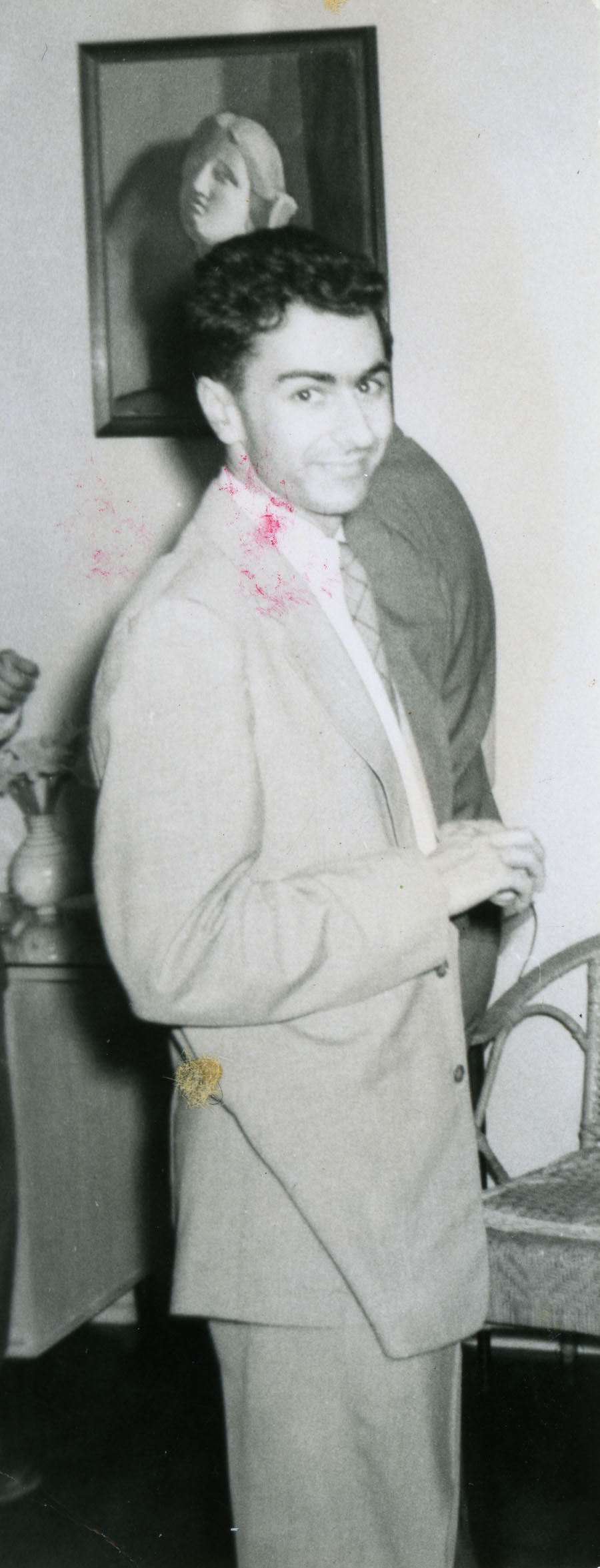
Halmos photographed Serge Lang (1927-2005), probably between 1953 and 1955 when Lang taught at the University of Chicago. Halmos was a professor at Chicago from 1946 to 1961. Born near Paris, France, Lang earned his Ph.D. in 1951 from Princeton University under advisor Emil Artin, with the dissertation “On Quasi Algebraic Closure.” He remained at Princeton and the Institute for Advanced Study for two years, then joined the University of Chicago faculty for two years. He was a professor at Columbia from 1955 to 1971 and at Yale from 1972 onward. He did significant research, mainly in algebra and number theory, but he is best known for his many highly regarded textbooks for which he won the AMS Steele Prize for Mathematical Exposition in 1999. The AMS cited in particular two of his graduate texts, Algebra (1965) and Algebraic Number Theory (1970), as having changed the way the subjects were taught. Jay Jorgenson and Steven G. Krantz, editors of a 2006 AMS tribute to Lang, reported that Lang wrote 61 books in all, not counting multiple editions and translations, and they repeated the mathematical riddle:
Q: Why did Bourbaki stop writing? A: They discovered that Serge Lang is one person.
(Sources: MacTutor Archive; “1999 Steele Prizes,” AMS Notices 46:4 (April 1999), 457-462; “Serge Lang: 1927-2005” (Part 1), AMS Notices 53:5 (May 2006), 536-553)
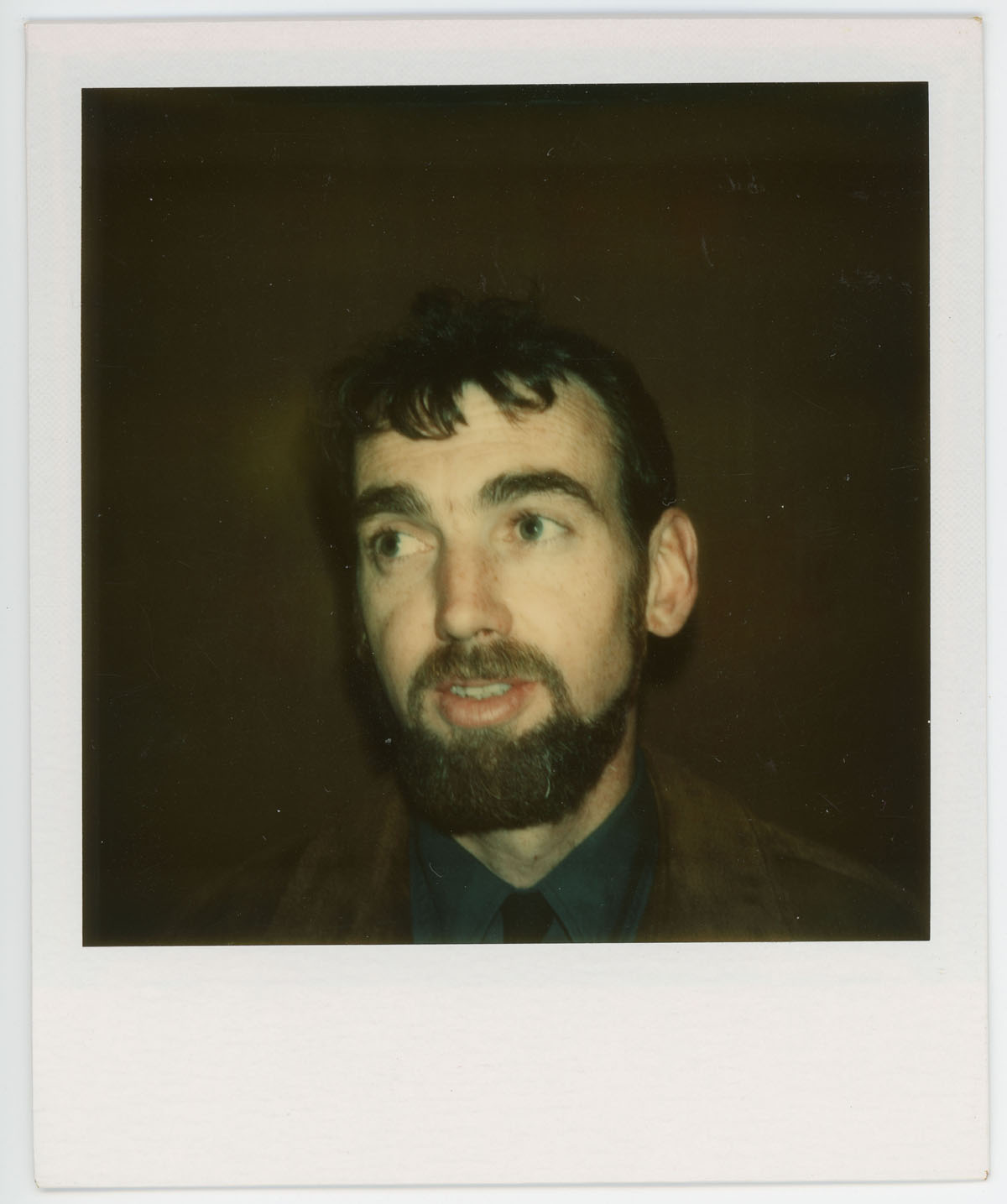
Robert Langlands was photographed by Halmos on Pi Day (March 14), 1971, in DeKalb, Illinois. Born in British Columbia, Canada, Langlands earned his Ph.D. in 1960 from Yale University, with the dissertation “Semi-Groups and Representations of Lie Groups.” He was a faculty member at Princeton from 1960 to 1967 and Yale from 1967 to 1972 before becoming a permanent faculty member at the Institute for Advanced Study, where he is now emeritus. After completing his Ph.D., he turned his attention to the theory of automorphic forms and to Eisenstein series. He is best known for the “Langlands program,” a series of conjectures originally presented in a 17-page handwritten letter to André Weil in 1967. According to Bill Casselman (quoted by J. J. O’Connor and E. F. Robertson in their MacTutor Archive article), the "Langlands conjectures" were a “collection of far-reaching and uncannily accurate conjectures relating number theory, automorphic forms, and representation theory.” (Sources: “2005 Steele Prizes,” AMS Notices 52:4 (April 2005), 439-442; IAS; MacTutor Archive)
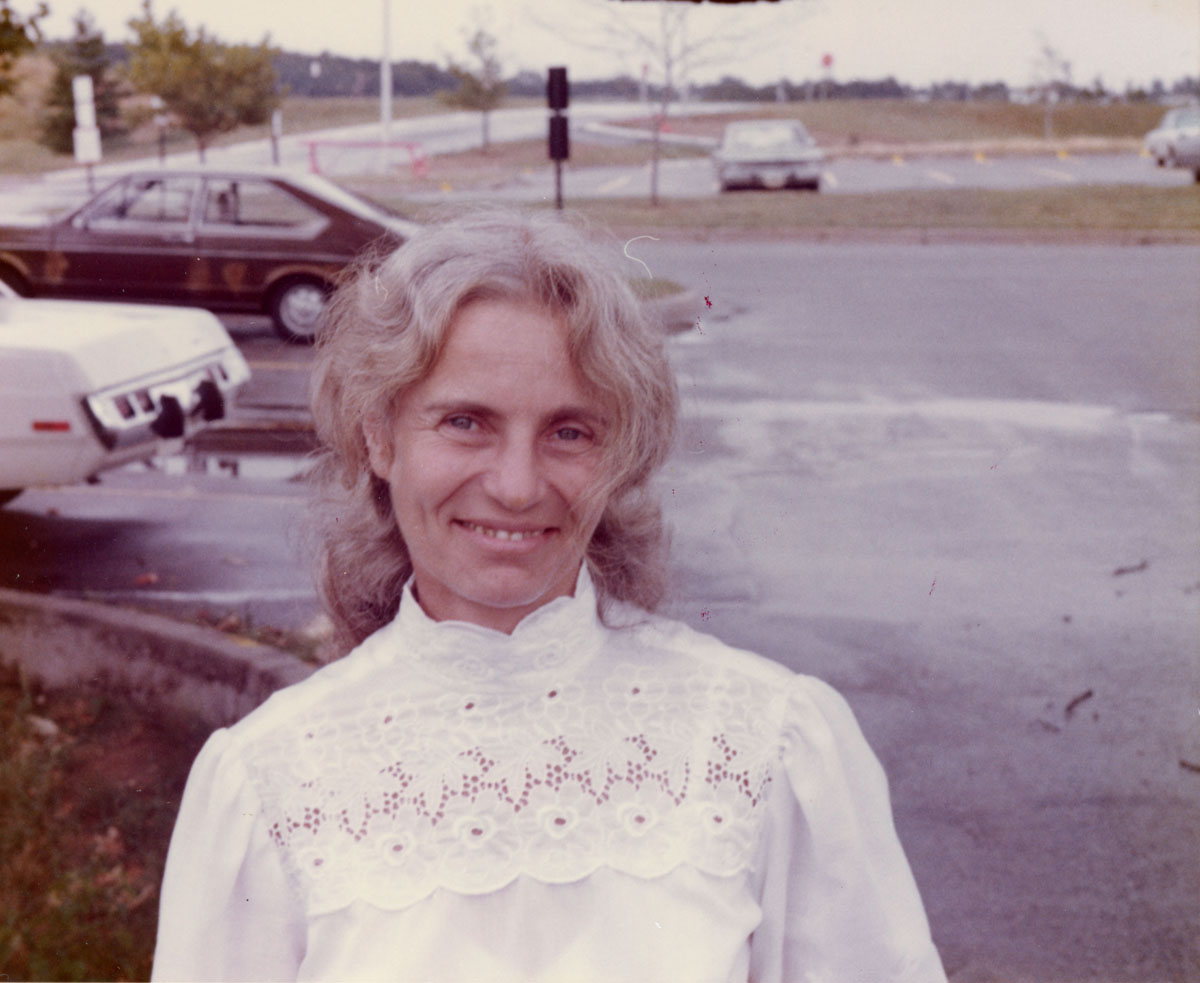
Halmos photographed Anneli Lax (1922-1999) at the AMS Summer Meeting, held August 18-22, 1975, at Western Michigan University in Kalamazoo. Born in Katowice, Poland, Anneli Cahn Lax earned her Ph.D. in partial differential equations in 1955 from the Institute of Mathematics at New York University under advisor Richard Courant. (The Institute was renamed for Courant in 1964.) Lax joined the faculty at NYU in 1961 and retired in 1992. She is best known as founding editor of the New Mathematical Library, which began in 1958 as a series of monographs for high school students with talent and interest in mathematics. The NML was part of a nationwide response to the USSR's successful launch of its Sputnik satellite in 1957. It was intended to be temporary, but it proved to be popular and the MAA took it over in 1975. Lax served as its editor until her death in 1999 and, in 2000, the MAA renamed the series the Anneli Lax New Mathematical Library. Anneli and Peter Lax, a fellow NYU math grad student, were married in 1948. Richard Courant and Peter Lax are pictured together on page 10 of this collection. (Sources: MacTutor Archive, MAA Online: “The New Mathematical Library Records”)
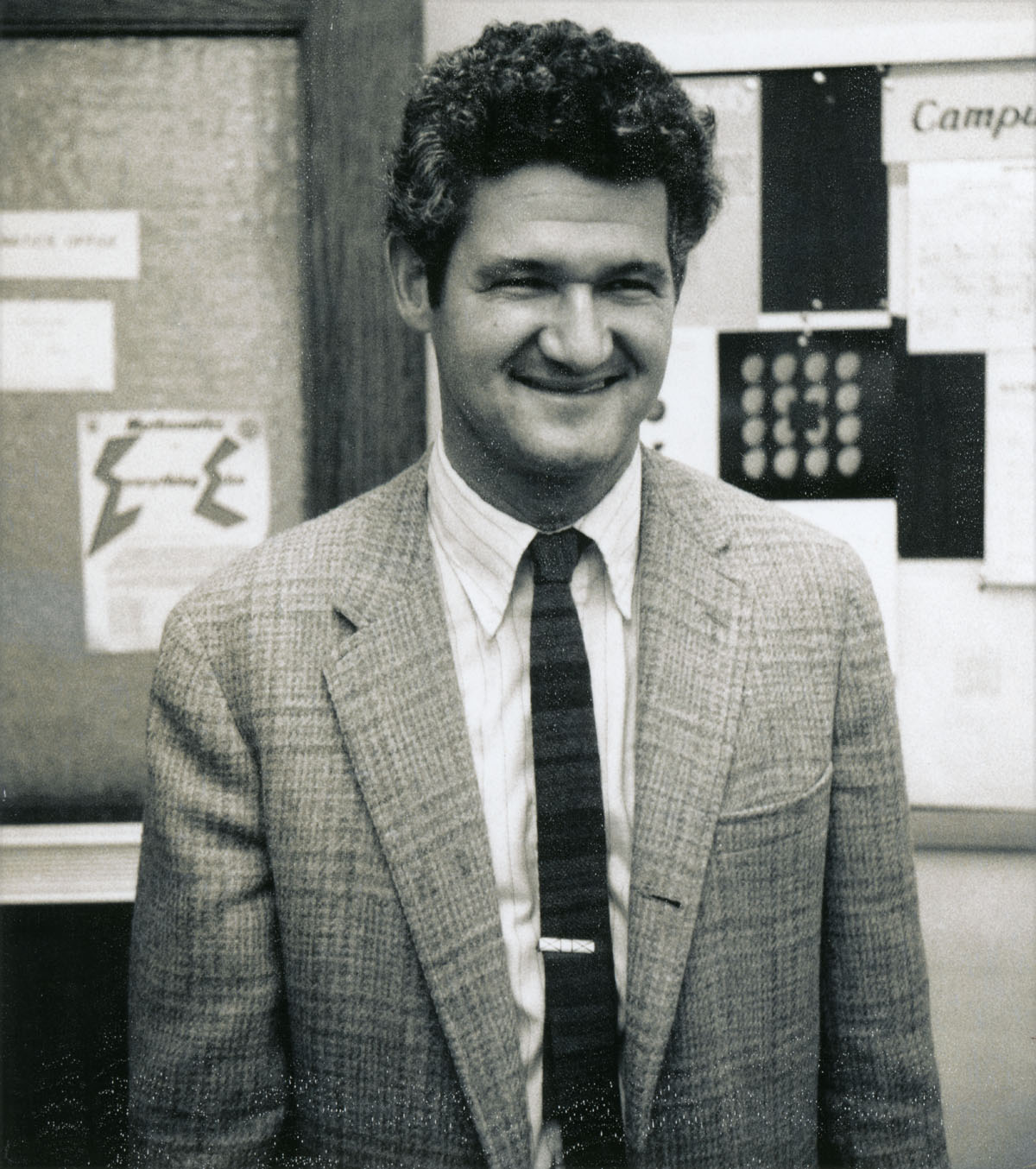
Halmos photographed Peter Lax on November 4, 1969, in Bloomington, Indiana. Born in Budapest, Hungary, Peter Lax has spent most of his career at the Courant Institute at New York University, earning his Ph.D. there in 1949, becoming a faculty member in 1951, and directing the Institute during the 1970s. Now Professor Emeritus at Courant, Lax is an applied mathematician with wide-ranging interests, mostly centered around differential equations and numerical methods for solving them. He may be best known for developing scattering theory with Ralph S. Phillips; see page 9 of this collection for a photo of Phillips. Lax attributes his interest in applied mathematics and computing to his participation in the Manhattan Project at the Los Alamos National Laboratory in New Mexico during 1945-46 and 1950. He was president of the AMS during 1979-80. Another photograph of Lax appears on page 10 of this collection. (Sources: MacTutor Archive, AMS Presidents)
For an introduction to this article and to the Paul R. Halmos Photograph Collection, please see page 1. Watch for a new page featuring six new photographs each week during 2012.
Regarding sources for this page: Information for which a source is not given either appeared on the reverse side of the photograph or was obtained from various sources during 2011-12 by archivist Carol Mead of the Archives of American Mathematics, Dolph Briscoe Center for American History, University of Texas, Austin.
Who's That Mathematician? Paul R. Halmos Collection - Page 30
For more information about Paul R. Halmos (1916-2006) and about the Paul R. Halmos Photograph Collection, please see the introduction to this article on page 1. A new page featuring six photographs will be posted at the start of each week during 2012.
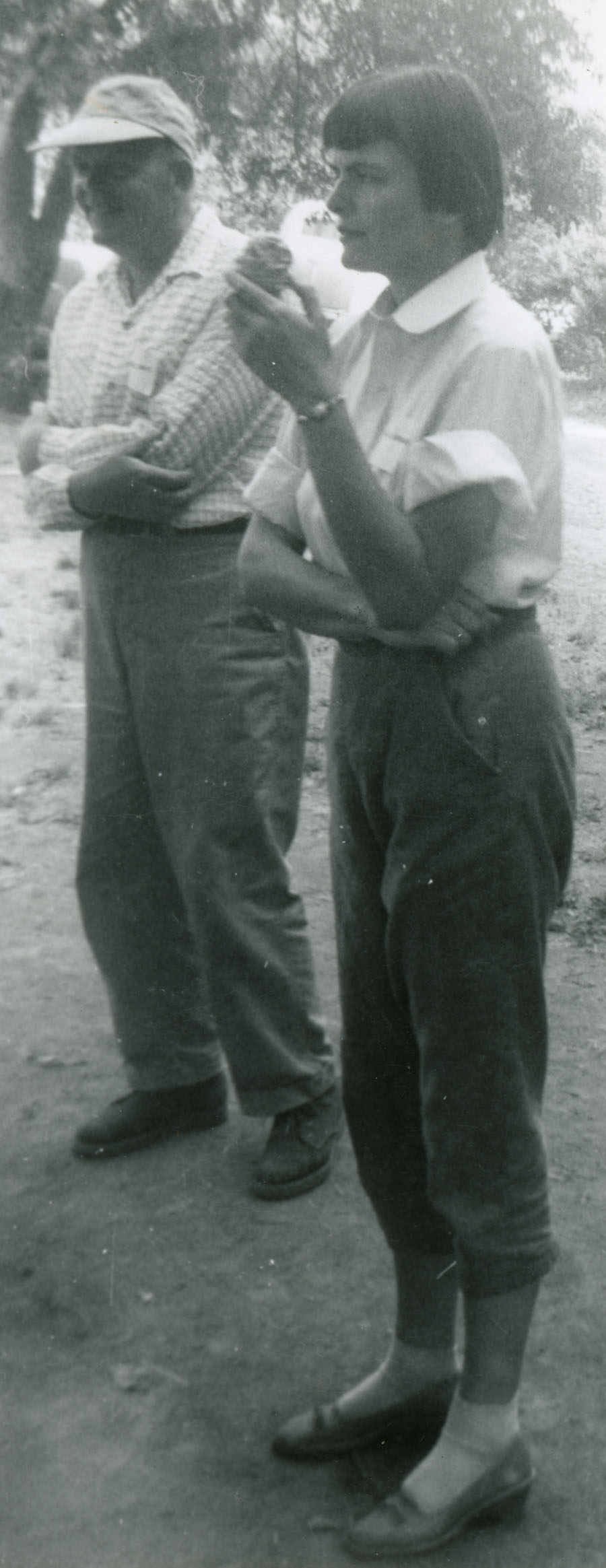
Halmos photographed Derrick H. Lehmer (1905-1991) and Julia B. Robinson (1919-1985) in about 1955, possibly at the University of California, Berkeley, where Lehmer was on the mathematics faculty at the time and Robinson, infamously, was not because anti-nepotism rules allowed at most one of her and her husband, mathematician Raphael Robinson, who had been on the UC Berkeley faculty since 1937, to hold positions in the mathematics department.
Number theorist Dick Lehmer, whose father Derrick N. Lehmer also was a well-known number theorist, earned his Ph.D. in 1930 from Brown University in Providence, Rhode Island. During the 1930s, Lehmer taught at Caltech, Stanford, and Lehigh, and spent one year each at the Institute for Advanced Study in Princeton (1933-34) and in England (1938-39), where he met number theorists Harold Davenport, Louis Mordell, and Paul Erdös, among others. In 1940, he joined the faculty at UC Berkeley, where his father had been a professor from 1900 until his death in 1938. Dick Lehmer’s Ph.D. students at Berkeley included prolific textbook-writer Tom Apostol, discrete mathematician and juggler Ron Graham (pictured on page 18 of this collection), bi-coastal number theorist Harold Stark, and mathematical puzzle-master David Singmaster, among other stars. (Sources: MacTutor Archive, IAS, Mathematics Genealogy Project)
Julia Bowman Robinson earned her Ph.D. in 1948 from UC Berkeley, with the dissertation “Definability and Decision Problems in Arithmetic,” written under advisor Alfred Tarski. Robinson may be best known for her contributions to the solution of Hilbert’s Tenth Problem, which was to find a general method to solve Diophantine equations and for which the solution is negative: there is no such method. According to Martin Davis, in the late 1960s, she, Davis (pictured on page 11), and Hilary Putnam “reduced the problem to finding a single equation that satisfied a certain exponential growth condition.” In 1970, Yuri Matijasevic completed the solution to “H10” by finding such an equation; this solution became known as the “MRDP Theorem” in recognition of the four mathematicians who contributed significantly to its proof. Robinson finally became a mathematics professor at Berkeley in 1976, the same year she became the first woman elected to the National Academy of Sciences. She was AMS president during 1983-84, the first woman to hold this position. (Sources: MacTutor Archive, Mathematics Genealogy Project, AMS Presidents)
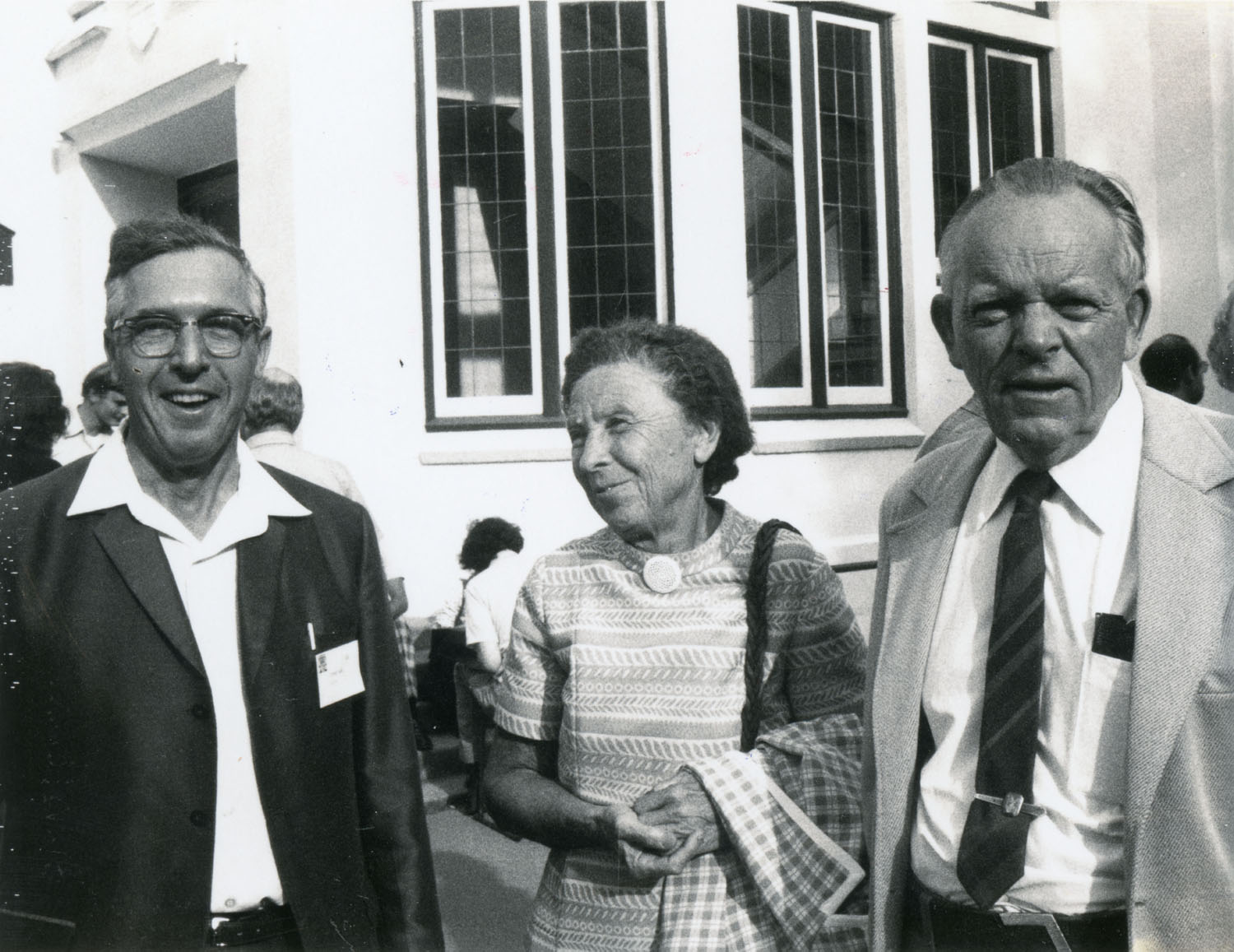
Halmos photographed, left to right, Steven Gaal, Emma Lehmer (1906-2007), and Derrick "Dick" Lehmer (1905-1991) on August 21, 1974, at the International Congress of Mathematicians in Vancouver, British Columbia, Canada. Another photograph of Gaal appears on page 15 of this collection, where you can read more about him, and another photo of Dick Lehmer appears just above this one.
Born in Samara, Russia, Emma Markovna Trotskaia met and married Dick Lehmer as an undergraduate mathematics major at the University of California, Berkeley, where he was a physics major. Emma Lehmer earned her masters degree in mathematics in 1930 from Brown University with a thesis in number theory that was published in the Bulletin of the AMS. During the 1930s, she accompanied her husband to his various academic posts listed above and finally to UC Berkeley in 1940. There she was allowed to teach for a few years because Berkeley’s anti-nepotism rules were relaxed during World War II. All the while, she was doing number theory research, often in collaboration with her husband and, early on, sometimes in collaboration with her father-in-law, Derrick N. Lehmer, with whom she had first done research as an undergraduate at Berkeley. Over a 60+-year research career, she published about 60 papers in various areas of number theory, about 20 of them jointly with her husband. One special interest that she and Dick Lehmer “inherited” from Derrick N. Lehmer was computational number theory, which in their day included helping develop computers that would carry out the computations. (Source: MacTutor Archive)
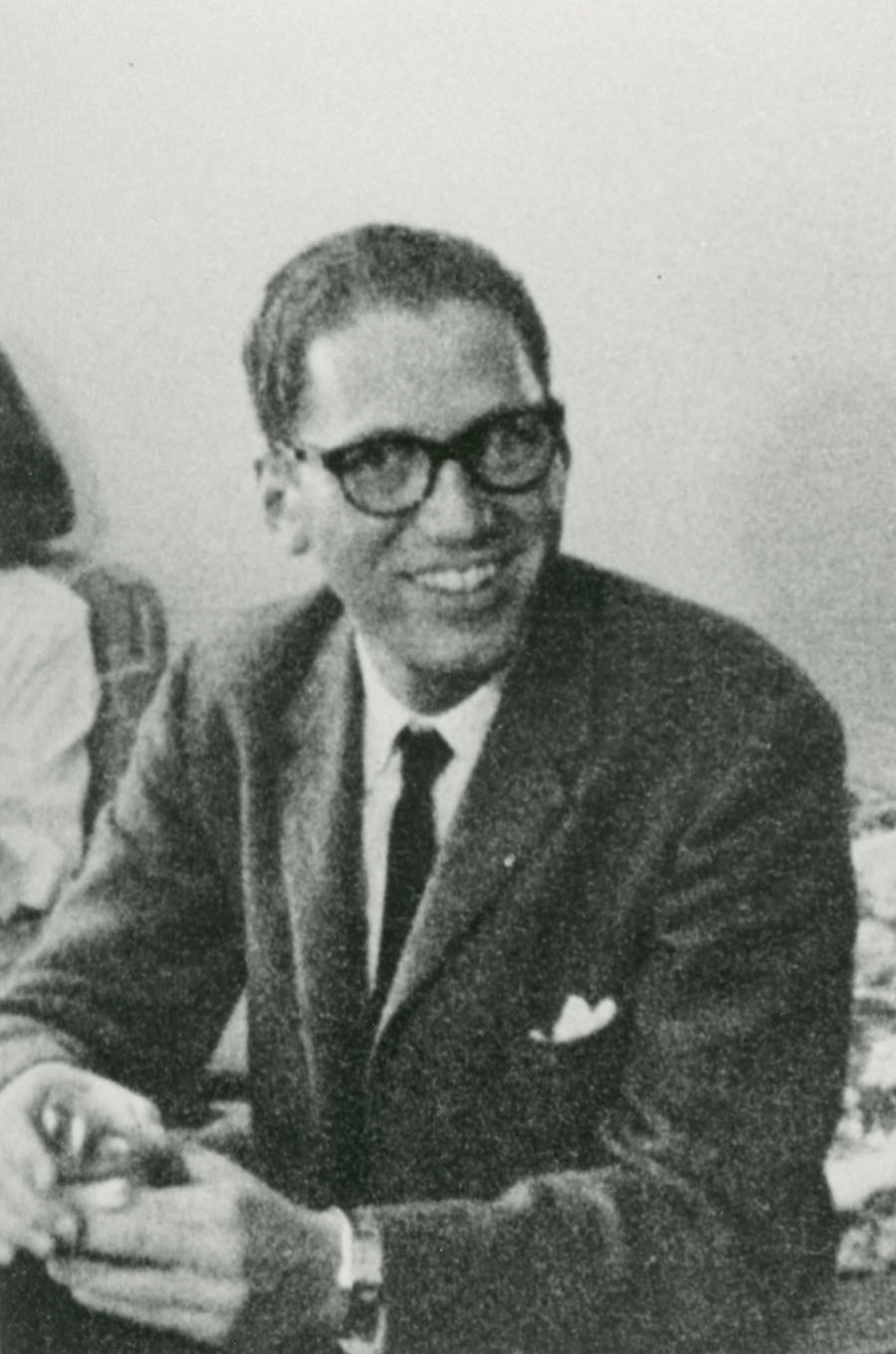
Halmos photographed Tom Lehrer in 1958. Known among mathematicians primarily for his satirical but light-hearted songs about mathematics, including “Lobachevsky,” “New Math,” and “The Derivative Song,” Lehrer also enjoys a wider popular following of his non-mathematical songs, including “The Subway Song” and “It Makes a Fellow Proud to Be a Soldier.” Lehrer came by his technical and sociological knowledge of the mathematical world as an undergraduate mathematics major and a mathematics graduate student at Harvard University in Cambridge, Massachusetts, where he earned a masters degree in 1947 and worked for a few years toward a Ph.D. He lives for half the year in Massachusetts and the other half the year in Santa Cruz, California, where he teaches two courses, one on musicals and one on the nature of mathematics, at the University of California, Santa Cruz. (Sources: Demented Music Database biography; National Curve Bank Deposit #10)
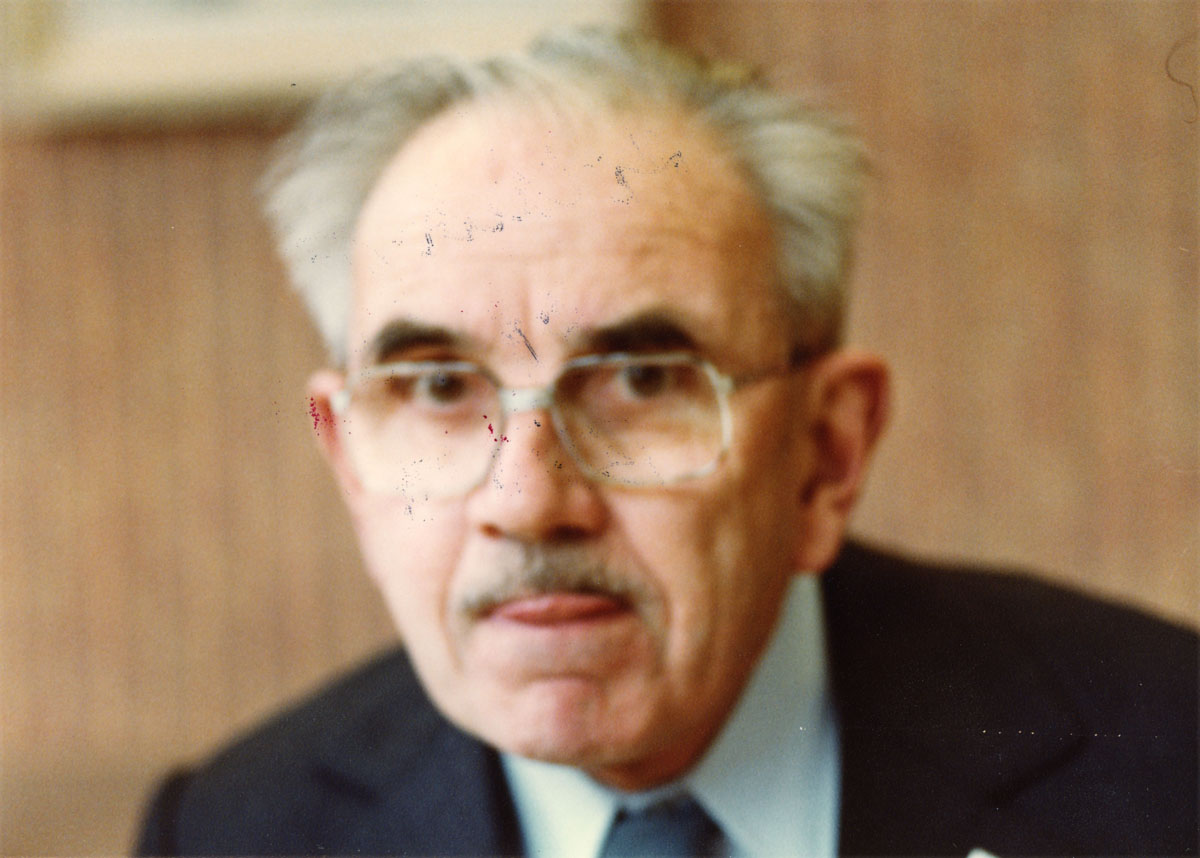
Jean Leray (1906-1998) was photographed by Halmos in April of 1980 in Bloomington, Indiana. Born near Nantes, France, Leray earned his Ph.D. in 1933 from the École Normale Supérieure de Lyon, although by then he had moved to Paris. His work at this time was in hydrodynamics, which might surprise those who know of Leray as an algebraic topologist. His first work in algebraic topology was an application of homotopy to solutions of partial differential equations, and he published work both in topology and in differential equations throughout his career. The exception was 1940-45, when he was a prisoner of war in Austria and convinced his German and Austrian captors that he was an algebraic topologist rather than an expert in hydrodynamics, which would have made him all too useful to them. He both taught and researched topology in his prison camp. In 1947, he joined the faculty of the Collège de France. According to the Mathematics Genealogy Project, Leray’s first Ph.D. student was Armand Borel (pictured on page 8 of this collection) in 1952, whose dissertation was on the cohomology of Lie groups. (Sources: MacTutor Archive, Mathematics Genealogy Project)
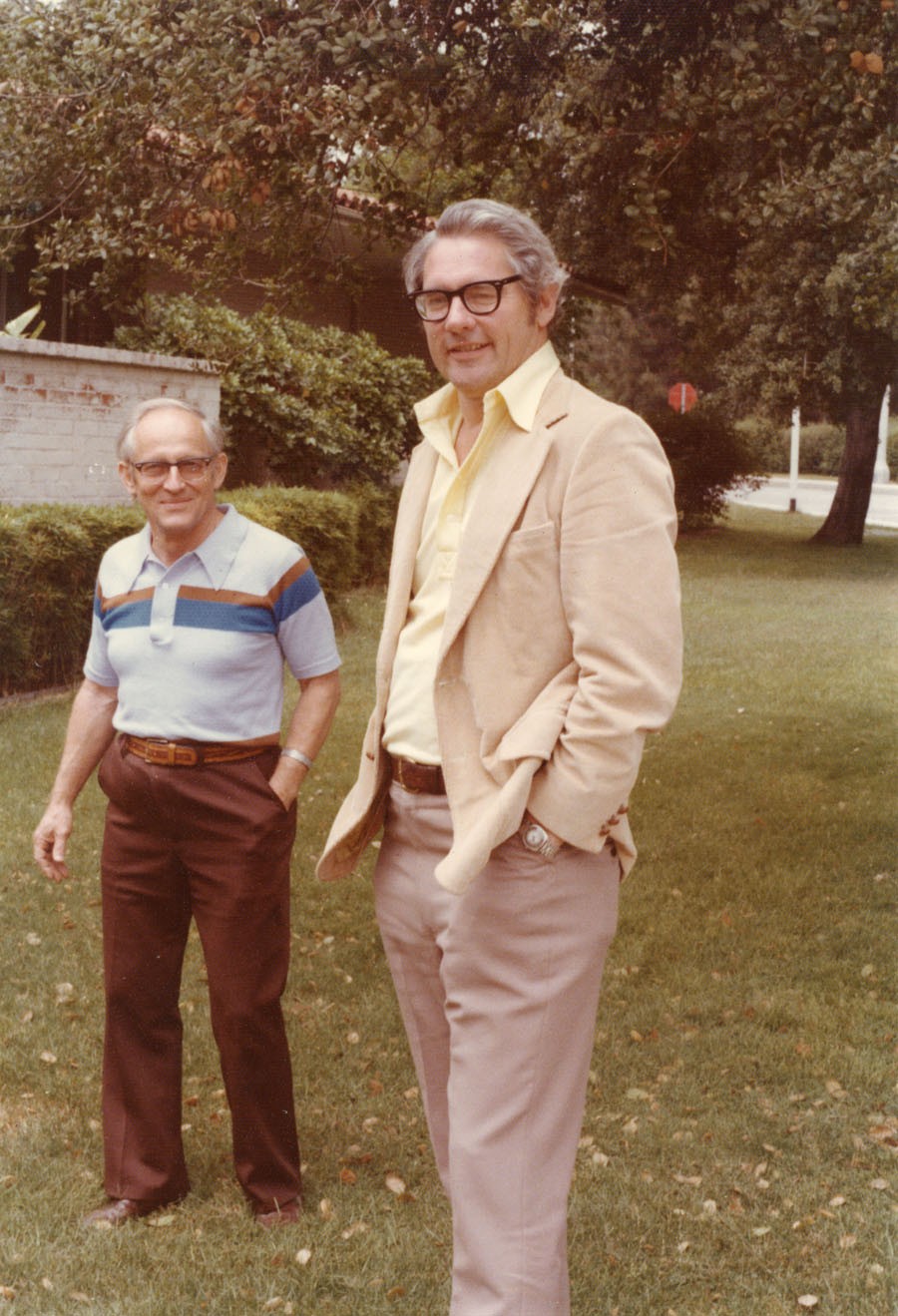
Halmos photographed functional analyst Robert C. James (d. 2004), left, and number theorist William J. LeVeque (1923-2007) in May of 1976 in Claremont, California, where both were faculty members at the Claremont Graduate School (now Claremont Graduate University). Phil McCartney, a Ph.D. student of Bob James at the time the photo was taken and now a mathematics professor at Northern Kentucky University, remembers well Paul Halmos' visit to CGS:
Paul came to Claremont for a visit of roughly three days and gave several terrific lectures. It seemed that he spent more time during his visit interacting with those of us who were graduate students than was customarily the case when visiting speakers came to the campus and typically spoke primarily with the faculty. In particular, at a reception after his first talk, Paul apparently overheard some of the other graduate students giving me a hard time about my car, a white 1965 Pontiac Bonneville, that was known as "the white whale". In a voice loud enough for the other graduate students to hear, Paul asked me if I could give him a ride to the place where he was staying after the party was over. I smiled broadly and said, "Yes, of course." After that party, whenever my fellow grad students referred to my car, I said, "You mean the car Paul Halmos asked to ride in." My car had become "the car".
McCartney was awarded his Ph.D. in 1978. Another photo of Bob James appears on page 25 of this collection, where you can read more about him.
Bill LeVeque earned his Ph.D. in 1948 from Cornell University with the dissertation, “On the Distribution of Values of Number-Theoretic Functions,” written under advisors Burton W. Jones (page 6) and Mark Kac (page 26). He taught at Harvard for two years (1947-49), at the University of Michigan from 1949 to 1970, and at Claremont Graduate School from 1970 to 1977. From 1977 to 1988, he was Executive Director of the AMS. In 1965-66, he was Executive Editor of Mathematical Reviews and was responsible for moving MR from Providence, R.I., to Ann Arbor, Michigan. He remained involved with the administration of MR until 1977, and also published a 6-volume collection of Reviews in Number Theory in 1973. His books Topics in Number Theory: Volumes I and II (1956), Elementary Theory of Numbers (1962), and Fundamentals of Number Theory (1977) have been reprinted by Dover Publications. (Sources: Mathematics Genealogy Project; "William J. LeVeque Retires as Executive Director," AMS Notices 35:6, 783-4; "William J. LeVeque (1923-2007)," AMS Notices 55:10 (November 2008), 1261-2; Dover Publications)
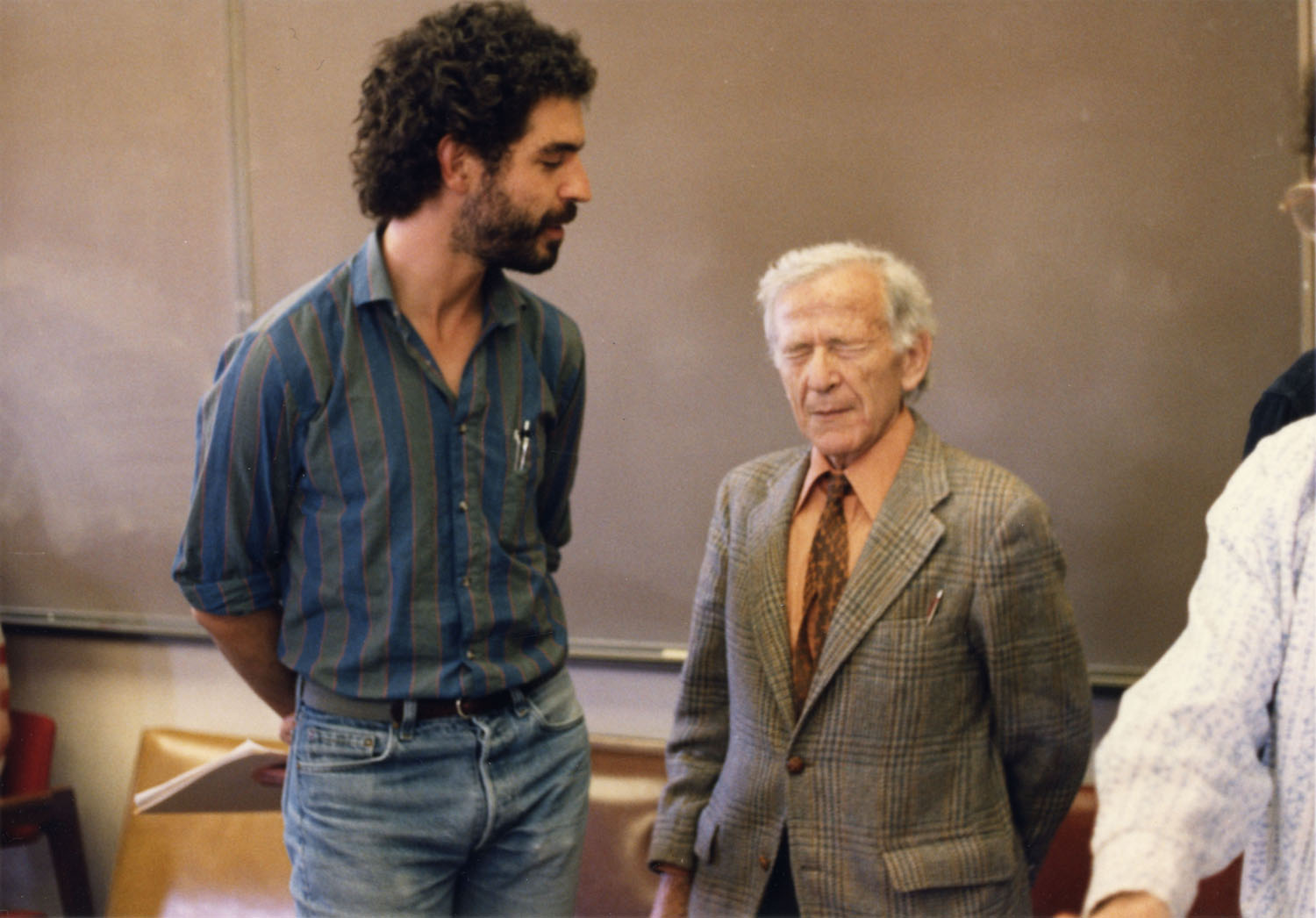
Halmos photographed Walter Craig, left, and Hans Lewy (1904-1988) in May of 1986 at Stanford University in Palo Alto, California, just before Lewy, then Professor Emeritus at the University of California, Berkeley, was to present a seminar. Craig, a faculty member at Stanford at the time, writes:
I remember the occasion well, when I invited Hans Lewy to Stanford to give a seminar. At first he was a little coy, saying that he was working on something that hadn't panned out yet. Then one day a bit before the photo was taken, he called up all excited about it, and we arranged for him to come and talk about these new results. However by the day of his seminar he had found a flaw in his argument, so he gave a lecture on a beautiful problem in differential geometry, and a sequence of interesting lemmas that might prove to be useful in addressing it.
Halmos was a professor at Santa Clara University at the time. All three universities are in the San Francisco Bay Area.
Craig now is at MacMaster University in Hamilton, Ontario, where he is Professor and Canada Research Chair of Mathematical Analysis and its Applications. He earned his Ph.D. in 1981 from the Courant Institute of Mathematical Sciences at New York University under advisor Louis Nirenberg. After holding positions at Caltech (1981-84), Stanford (1984-88), and Brown (1988-2000), he joined the faculty at MacMaster in 2000. His current research interests are nonlinear partial differential equations, Hamiltonian dynamical systems, fluid dynamics, and quantum mechanics. (Sources: MacMaster University Department of Mathematics and Statistics, Mathematics Genealogy Project)
Born in Breslau, Germany (now Wroclaw, Poland), Lewy earned his Ph.D. in 1926 from the University of Göttingen under advisor Richard Courant (pictured on page 10 of this collection). Except for one year each in Rome (1929-30) and Paris (1930-31), he remained at Göttingen until 1933, when he moved to the U.S. to escape the political situation in Germany. After two years at Brown University in Providence, R.I., he joined the faculty at UC Berkeley in 1935 and, even after retiring in 1972, remained an active researcher until his death in 1988. Lewy’s main area of research was partial differential equations, with results ranging from theoretical to applied (water waves and fluid dynamics) and from analytical to numerical. He also obtained important results in calculus of variations. (Source: MacTutor Archive)
For an introduction to this article and to the Paul R. Halmos Photograph Collection, please see page 1. Watch for a new page featuring six new photographs each week during 2012.
Regarding sources for this page: Information for which a source is not given either appeared on the reverse side of the photograph or was obtained from various sources during 2011-12 by archivist Carol Mead of the Archives of American Mathematics, Dolph Briscoe Center for American History, University of Texas, Austin.
Who's That Mathematician? Paul R. Halmos Collection - Page 31
For more information about Paul R. Halmos (1916-2006) and about the Paul R. Halmos Photograph Collection, please see the introduction to this article on page 1. A new page featuring six photographs will be posted at the start of each week during 2012.
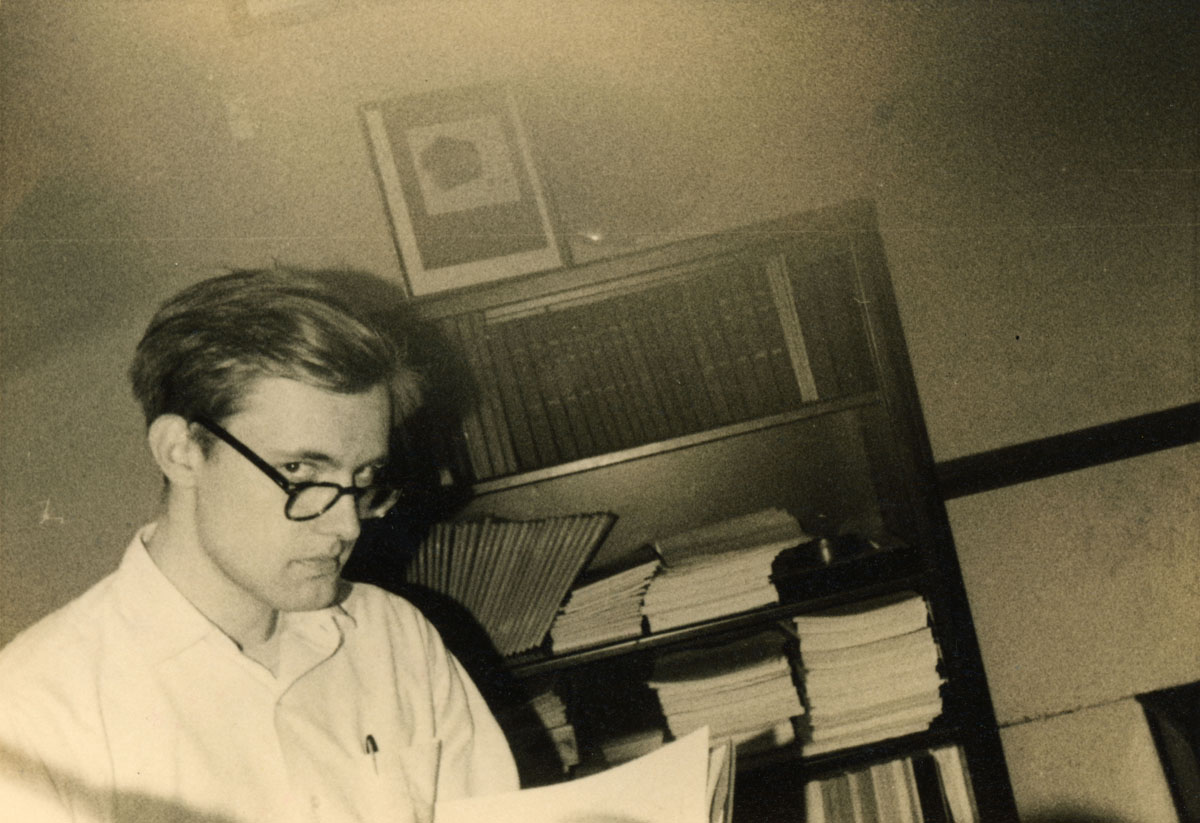
Halmos photographed his Ph.D. student Carl Linderholm in May of 1961. Linderholm earned his degree in 1963 from the University of Chicago with the dissertation “On Some Questions in Ergodic Theory.” Halmos left Chicago to join the faculty at the University of Michigan in 1961, and Linderholm received a teaching assistantship at Michigan so that he could complete his dissertation there. According to Halmos, soon after earning his Ph.D., Linderholm moved to England to take a position at the University of Reading, where he still was on the faculty in 1985. Linderholm is best known for his book, Mathematics Made Difficult (1972), which Halmos himself described as
... a brilliant, witty, extended mathematical in-joke.... The book treats high school trigonometry, for instance, from the point of view of category theory, for instance -- I recommend it highly.
(Sources: Mathematics Genealogy Project; amazon.com; Paul Halmos, I Want To Be A Mathematician, Springer, 1985, pp. 221-2, 250)
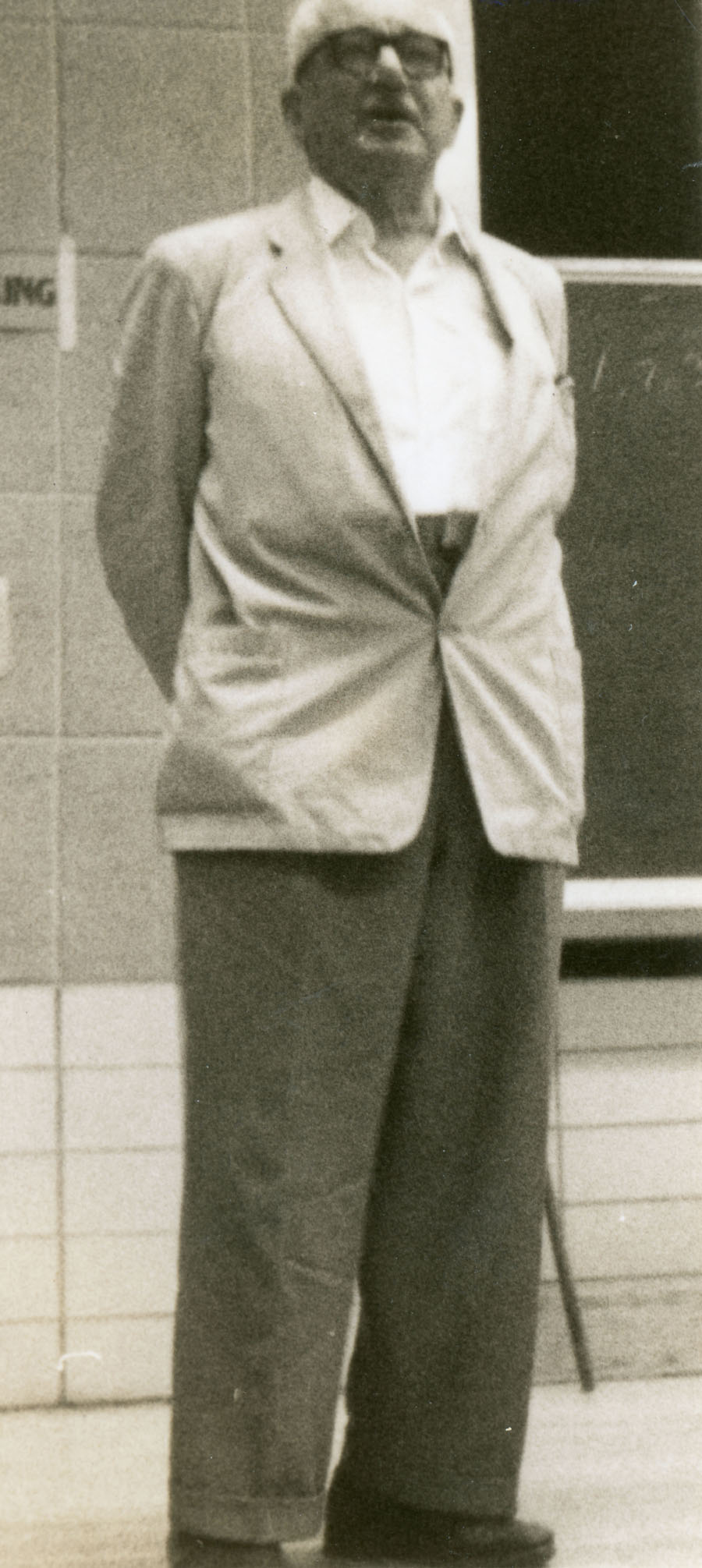
J. E. Littlewood (1885-1977) was photographed by Halmos in May of 1962. The prolific classical analyst John E. Littlewood earned his Ph.D. in 1907 from Cambridge. Except for three years at the University of Manchester (1907-1910) and some war work in London (during World War I; his World War II work was done at Cambridge), he remained at Cambridge for the rest of his career and life, advising 23 Ph.D. students of his own. Littlewood famously collaborated with G. H. Hardy, working on the theory of series, the Riemann zeta function, inequalities, and the theory of functions. During the late 1930s, when another European war looked likely, he began collaborating with his Cambridge colleague Mary Cartwright on nonlinear differential equations arising from radio research. (Source: MacTutor Archive, Mathematics Genealogy Project)
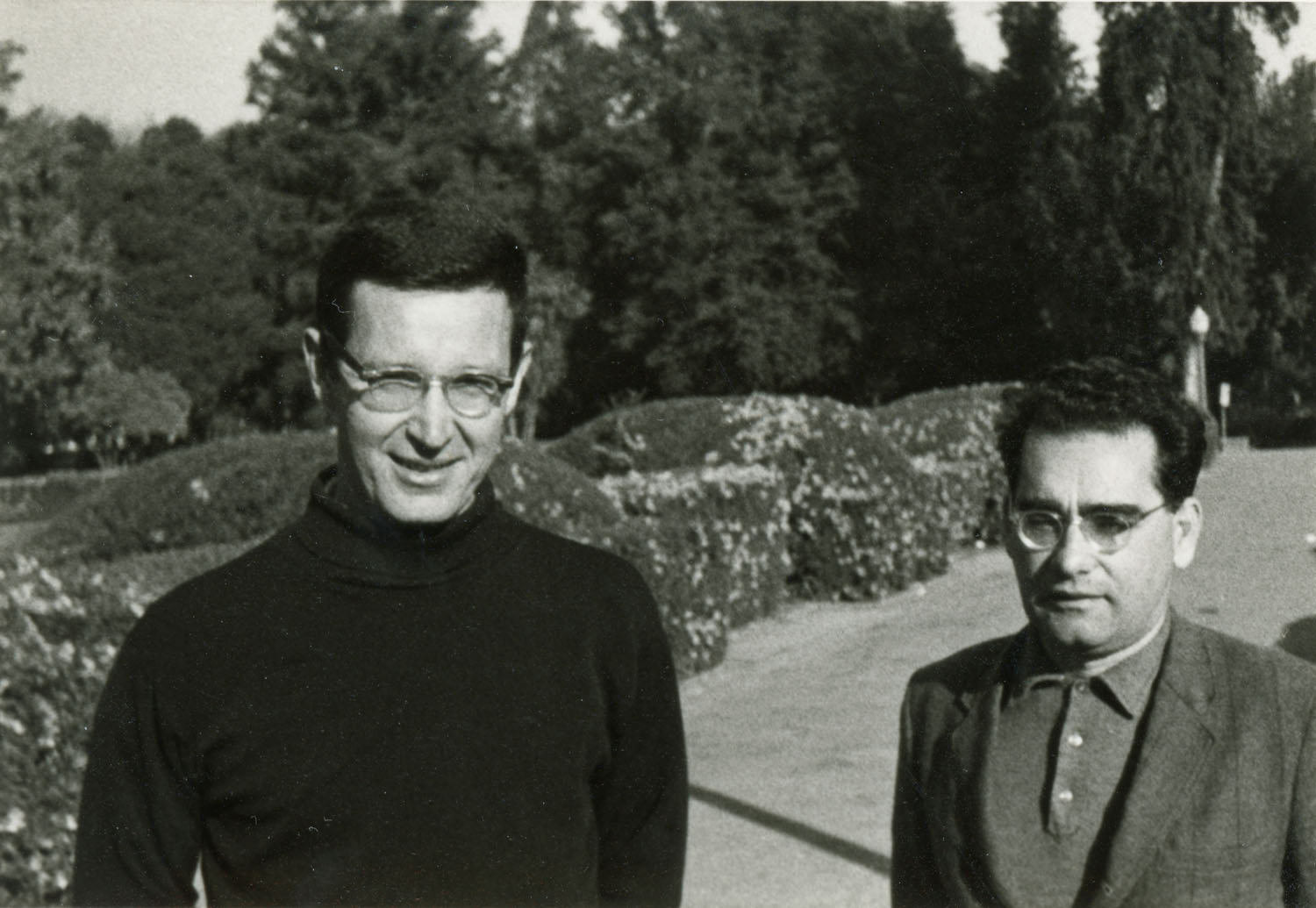
Halmos photographed Arunas Liulevicius, left, and Mauricio Peixoto at the 7th Brazilian Mathematics Colloquium in July of 1969 in Poços de Caldas, Brazil.
Liulevicius earned his Ph.D. in 1960 from the University of Chicago under advisor Saunders Mac Lane. Halmos was at Chicago from 1946 to 1961 and he and Liulevicius would have first met there. Liulevicius is an algebraic topologist who has written and edited several books in his field, including Algebraic Topology (AMS Proceedings of Symposia in Pure Mathematics, 1971) and Cobordism and Homology (University of São Paulo, 1969). He seems to have spent most of his career at the University of Chicago, advising Ph.D. students there at least from 1965 to 1975, and he is now Professor Emeritus at Chicago. Additional information about Arunas Liulevicius would be appreciated. (Sources: Mathematics Genealogy Project, University of Chicago Mathematics, WorldCat)
Peixoto trained initially as a civil engineer at the University of Brazil in Rio de Janeiro and stayed on to teach in the School of Engineering there. But the papers he wrote and the seminars he led as an engineering professor were decidedly mathematical, centering on differential equations and the mathematics of structural stability. In 1949-50, Peixoto visited the University of Chicago, where he would have first met Halmos. In 1953, Peixoto and Brazilian mathematician Leopold Nachbin helped found the Instituto de Matemática Pura e Aplicada (IMPA), which allowed Peixoto to focus on applied mathematics; specifically, the geometry of differential equations and dynamical systems. He visited mathematicians in the U.S. and they visited him at IMPA, most notably Solomon Lefschetz, Stephen Smale, and René Thom. His visits to the U.S. included an appointment to Brown University from 1964 to 1968. (Source: “Introduction: A few words about Mauricio M. Peixoto on his 80th birthday,” Computational & Applied Mathematics, Volume 20 (2001), Issue 1-2, which was devoted to Peixoto, pp. 3-9. Available through Google Books)
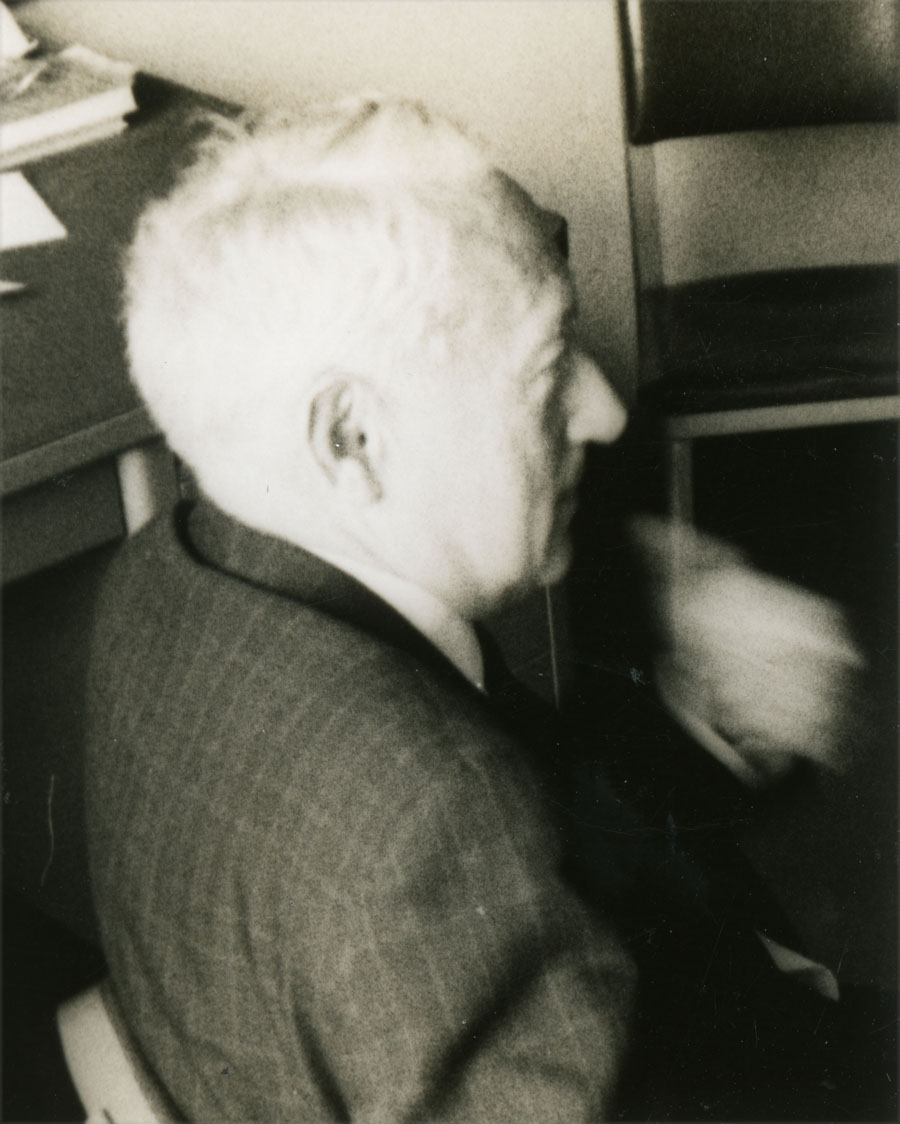
Charles Loewner (1893-1968) was photographed by Halmos in May of 1962. Born in Lany, Bohemia (now in the Czech Republic), Karel Löwner earned his Ph.D. in geometric function theory in 1917 from the Charles University of Prague under advisor Georg Pick (of Pick’s Theorem fame). After teaching at a technical university in Prague for four years, Karl Löwner (now using the German spelling of his name) moved in 1922 to the University of Berlin, in 1928 to the University of Cologne, and in 1930 to Charles University of Prague, where his last Ph.D. student was Lipman (Lipa) Bers (1938), who is pictured on page 5 of this collection. In 1939, Löwner and his family escaped the Nazi occupation of Prague by fleeing to the U.S., where Charles Loewner initially was on the faculty of the University of Louisville, Kentucky. In 1944, he moved to Brown University in Providence, Rhode Island, to do war work in fluid dynamics. From 1946 to 1951 he was at Syracuse University in New York, where he just missed Halmos who had taught there from 1942 to 1946. Finally, in 1951, Loewner moved to Stanford University in Palo Alto, California, where he spent the rest of his career doing research in complex analysis, differential geometry, and semigroups. (Sources: MacTutor Archive, Mathematics Genealogy Project, Stanford University Faculty Memorial)
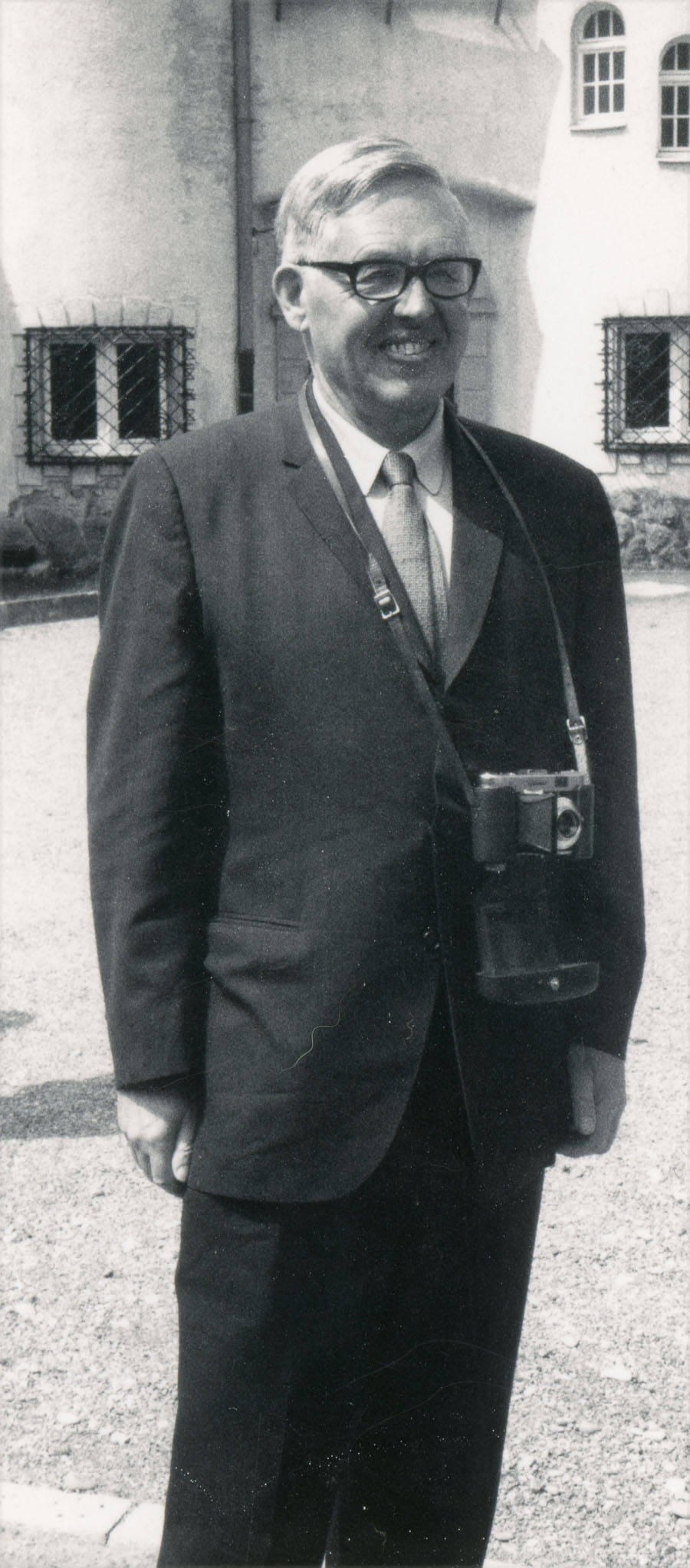
Halmos photographed George G. Lorentz (1910-2006) in July of 1968 at the Oberwolfach Conference Center in Germany. Born in St. Petersburg, Russia, Georg Rudolfovich Lorentz was educated at the Tbilissi (Georgia) Institute of Technology and Leningrad (formerly St. Petersburg) State University. During the 1930s, he carried a heavy teaching load at Leningrad State University, did research in analysis and number theory on his own, and published four papers. In early 1942, he and his wife escaped the German siege of Leningrad and eventually ended up at the University of Tübingen, Germany, where he finally earned his Ph.D. in 1944 under advisor Konrad Knopp.
Georg Gunter Lorentz taught at Tübingen and Frankfurt before emigrating to Canada in 1949 to accept a position at the University of Toronto. Although he worked in many areas, he was primarily an approximation theorist by this time. His Ph.D. students at Toronto included Paul Butzer, whose photo appears on page 9 of this collection and who organized the approximation theory conference at Oberwolfach at which this photo was taken. In 1953, George G. Lorentz (“Gunter” no more) moved to Wayne State University in Detroit, Michigan; in 1958 to Syracuse University; and in 1968 to the University of Texas at Austin, where he spent the rest of his career. (Sources: MacTutor Archive, Mathematics Genealogy Project)
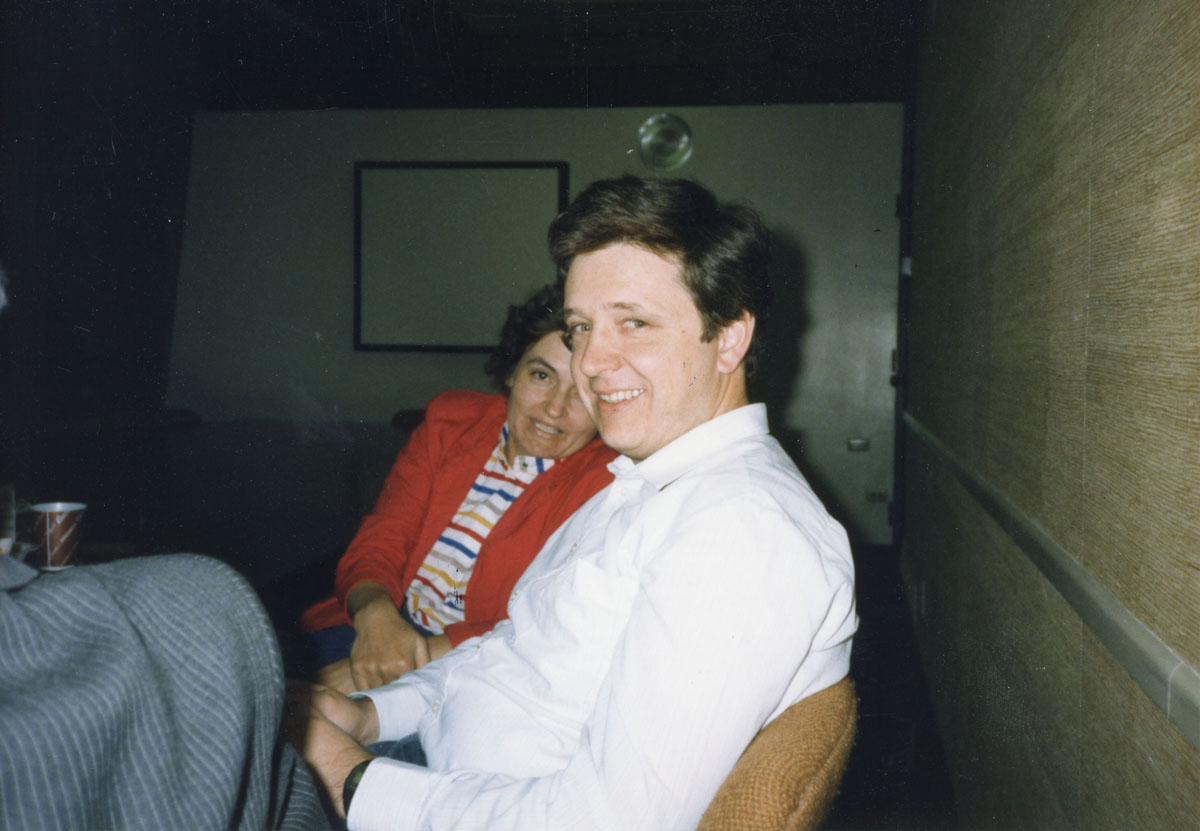
Halmos photographed married combinatorialists and theoretical computer scientists Katalin Vesztergombi and László Lovász in 1986 at Stanford University in Palo Alto, California. Lovász does not remember being photographed by Halmos, but he offers that "The shoulder on the left belongs probably to Paul Erdös."
Vesztergombi earned her Ph.D. in combinatorics in 1987 from Eötvös Loránd University in Budapest with the dissertation, "Distribution of Distances in Finite Point Sets," written under advisor Vera T. Sós, whose photograph appears on page 10 of this collection. (The photograph of Sós also includes Paul Erdös in one corner!) She began publishing papers in graph theory and related areas of discrete mathematics in 1974 and, in 2003, she co-authored with Lovász and József Pelikán the book Discrete Mathematics: Elementary and Beyond in the Springer Undergraduate Textbooks in Mathematics series. Many of Vesztergombi's most recent research papers have been co-authored with Lovász and Sós, among others. She currently is a professor in the Department of Computer Science, Institute of Mathematics, Eötvös Loránd University. (Sources: Mathematics Genealogy Project, MathSciNet, Eötvös Loránd University Institute of Mathematics)
Born in Budapest, Hungary, Lovász was mentored by Erdös beginning at age 15, started winning International Math Olympiad gold medals at age 16, and began publishing papers in graph theory at age 17. By the time he earned his Ph.D. in 1971 from Eötvös Loránd University in Budapest with the dissertation “Factors of Graphs,” he already had published at least 15 papers and in fact had been awarded a higher degree by the Hungarian Academy of Sciences one year earlier. Lovász remained at Eötvös Loránd University until 1975, when he moved to the University of Szeged, Hungary. In 1983, he returned to Eötvös Loránd University to take up the Computer Science Chair, and in 1993 he moved to the U.S. to accept an endowed chair in computer science and mathematics at Yale University. In 1999, he became Senior Researcher at Microsoft Research and in 2006 he returned to Hungary to become Director of the Mathematical Institute at Eötvös Loránd University. Lovász works in combinatorics and theoretical computer science; his primary research interests are optimization, algorithms, complexity, graph theory, and random walks. He was president of the International Mathematical Union from 2007 to 2010. (Sources: MacTutor Archive, Mathematics Genealogy Project)
For an introduction to this article and to the Paul R. Halmos Photograph Collection, please see page 1. Watch for a new page featuring six new photographs each week during 2012.
Regarding sources for this page: Information for which a source is not given either appeared on the reverse side of the photograph or was obtained from various sources during 2011-12 by archivist Carol Mead of the Archives of American Mathematics, Dolph Briscoe Center for American History, University of Texas, Austin.
Who's That Mathematician? Paul R. Halmos Collection - Page 32
For more information about Paul R. Halmos (1916-2006) and about the Paul R. Halmos Photograph Collection, please see the introduction to this article on page 1. A new page featuring six photographs will be posted at the start of each week during 2012.
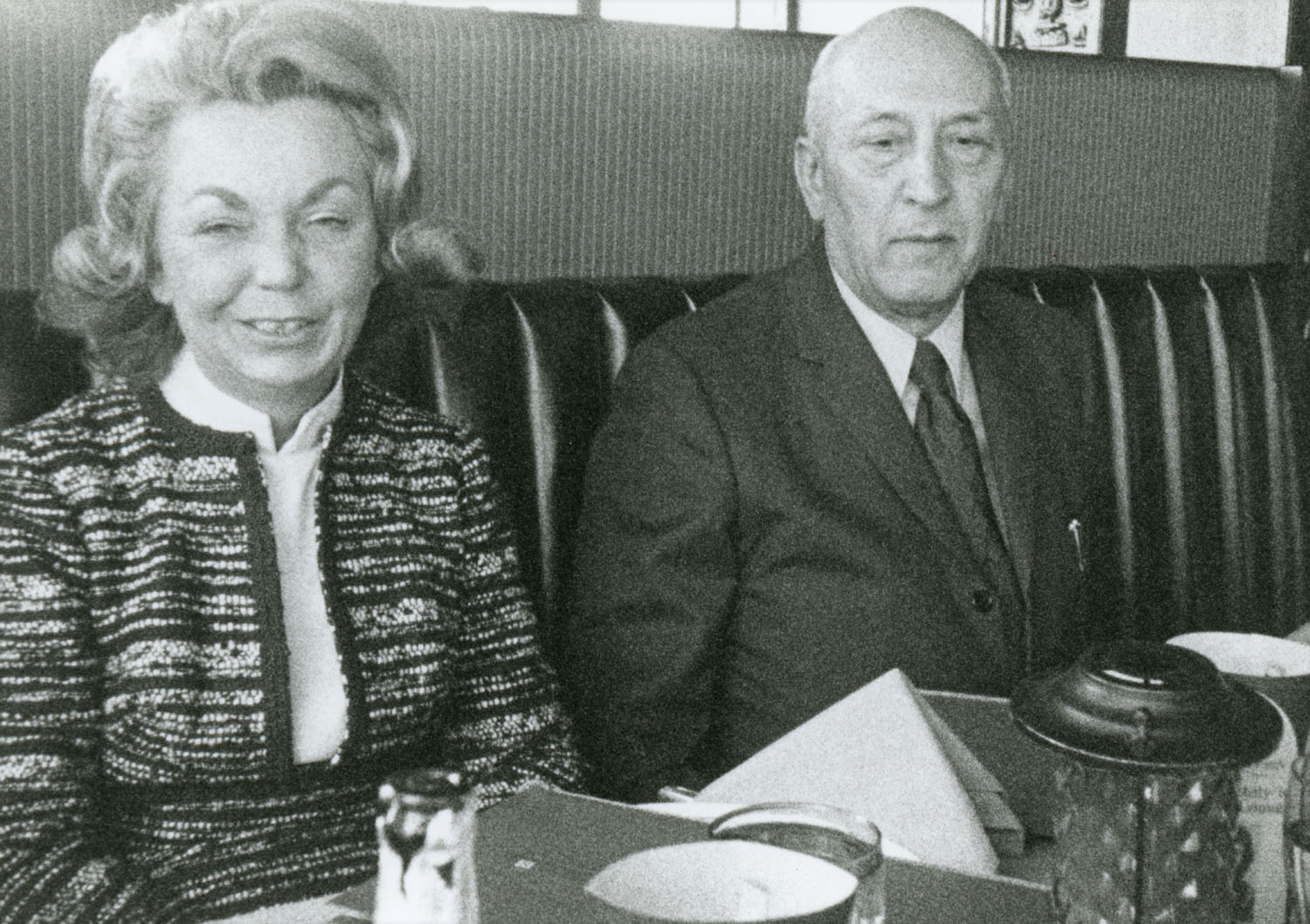
Halmos photographed Libuše Löwig and Henry F. J. Löwig (1904-1995) on May 22, 1972, during a visit to the University of Alberta in Edmonton, Alberta, Canada, where Henry Löwig was a mathematics professor. Heinrich Löwig earned his Ph.D. in 1928 from the German Technical University in Prague in what is now the Czech Republic with the dissertation “On Periodic Difference Equations.” During the 1930s he taught at the German University in Prague and at a variety of German-language schools. During World War II, he was interned in German labor camps. In 1948, he moved to Hobart, Australia to teach at the University of Tasmania and, in 1957, he joined the faculty at the University of Alberta, becoming Professor Emeritus in 1972. According to MathSciNet, he published mathematical papers from 1931 to 1981, on the topics of difference and differential equations during the first decade, and mainly on algebra and lattices from 1941 (when he became “Henry”) onward. (Sources: Introduction to Forgotten Mathematician Henry Löwig (1904-1995) (2012), Mathematics Genealogy Project, MathSciNet)

Eugene Lukacs (1906-1987), left, and Lipman (Lipa) Bers (1919-2004) were photographed in April of 1973 at an AMS Council meeting in New York. Two photos of Bers appear on page 5 of this collection, where you can read more about him.
Born in Hungary, Lukacs grew up in Vienna, Austria, and earned his Ph.D. in geometry in 1930 from the University of Vienna. After teaching secondary school and working as an actuary in Vienna, Lukacs emigrated to the U.S. in early 1939 after the Anschluss. There, his friend Abraham Wald interested him in statistics and probability research and, by 1942, he had made important advances in statistics and was publishing papers on probability with Otto Szasz. After teaching at various colleges in Cincinnati, Ohio, and working briefly for the National Bureau of Standards and the Office of Naval Research, Lukacs joined the faculty at the Catholic University of America in Washington, D.C., in 1955 and made CUA a center of statistical research. In 1972 he returned to Ohio to teach at Bowling Green State University. During the 1960s and 1970s, he held many visiting positions, mainly in Europe. (Source: MacTutor Archive)
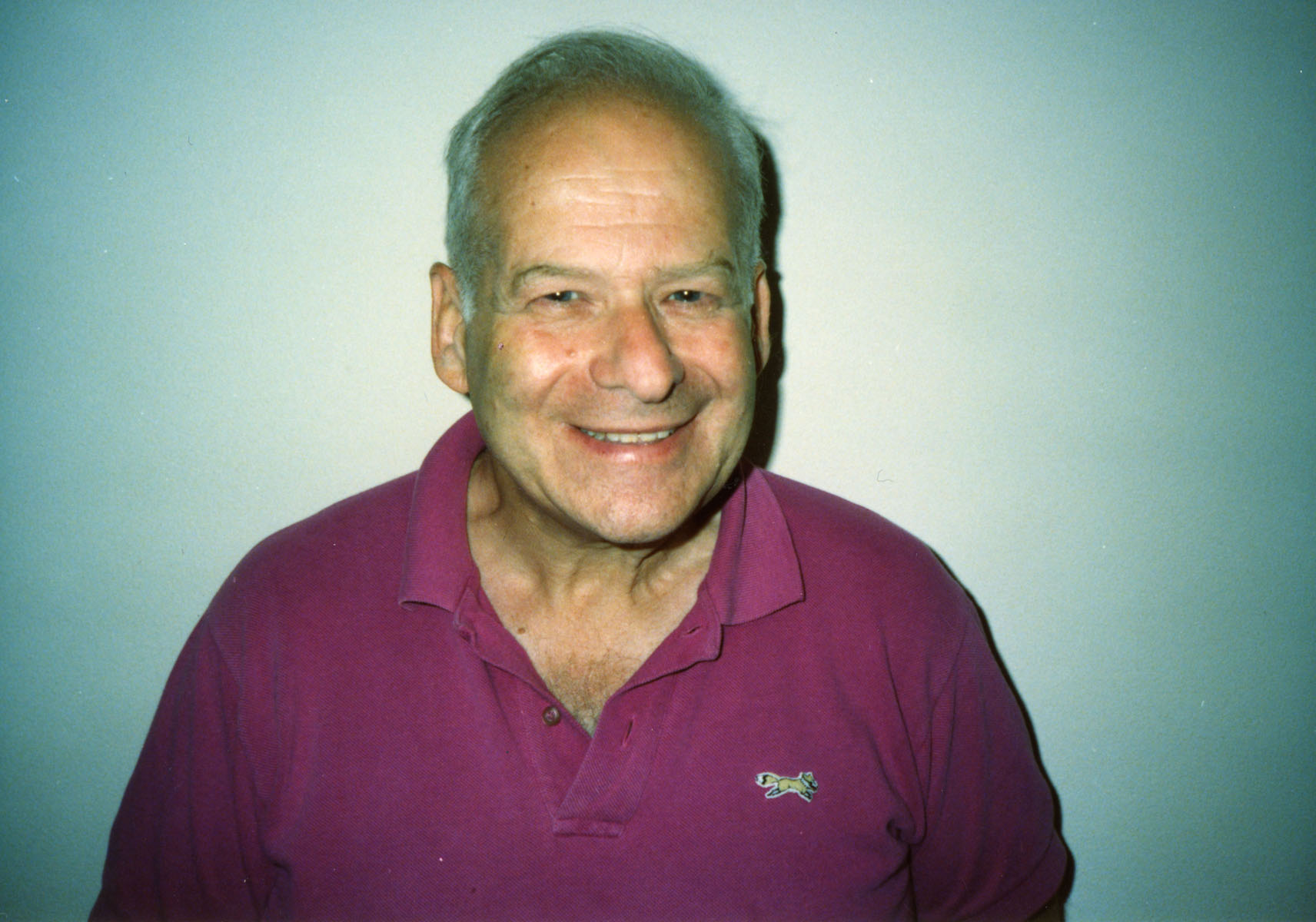
Halmos photographed Gunter Lumer (1929-2005) in June of 1990 at Stanford University in Palo Alto, California. Lumer earned his Ph.D. in 1959 from the University of Chicago under advisor Irving Kaplansky (pictured on page 26 of this collection). He and Halmos first met at the University of Montevideo, Uruguay, where Halmos was a visiting professor during the 1951-52 academic year and Lumer one of two students who worked closely with Halmos during that year. Halmos later wrote (1985, p. 187):
Gunter Lumer was born in Germany, received some of his early education in France (where he was Guy Lumer), and went to university in Uruguay (which was the permanent haven his parents found away from Hitler). He ... [has] a wide grin, and a vivacious manner; he is always in motion. ... His positive personality was visible even in his mathematical attitudes, even when he was a young student. ... He was energetic and talented enough that it’s not at all clear I really did him any good; I am sure he would have become a mathematician no matter what I did.
According to the second source listed below, after receiving his Ph.D. from the University of Chicago in 1959, Lumer spent one year each at the University of California, Los Angeles, and Stanford University in Palo Alto, California, before joining the mathematics faculty at the University of Washington in Seattle in 1961, where he remained until 1974. In 1973, he became a member of the faculty at the Université de Mons-Hainaut, Belgium, and, in 1999, he added a position at the Solvay Institutes for Physics and Chemistry in Brussels, Belgium. He would serve in both of these positions until his death in 2005. Indeed, in 1985, Halmos wrote that Lumer had traveled to a 1980 conference at Oberwolfach from Belgium (p. 386) and that he currently was “doing hard Hardy spaces in Belgium” (p. 188). Lumer's primary research interests were functional analysis, partial differential equations, and evolution equations. Sources:
- Paul Halmos, I Want To Be A Mathematician, Springer, 1985, pp. 187-9, 386;
- "Life and Work of Günter Lumer," Functional Analysis and Evolution Equations: The Günter Lumer Volume, Birkhäuser, 2008, pp. ix-x (available for download from Springer).
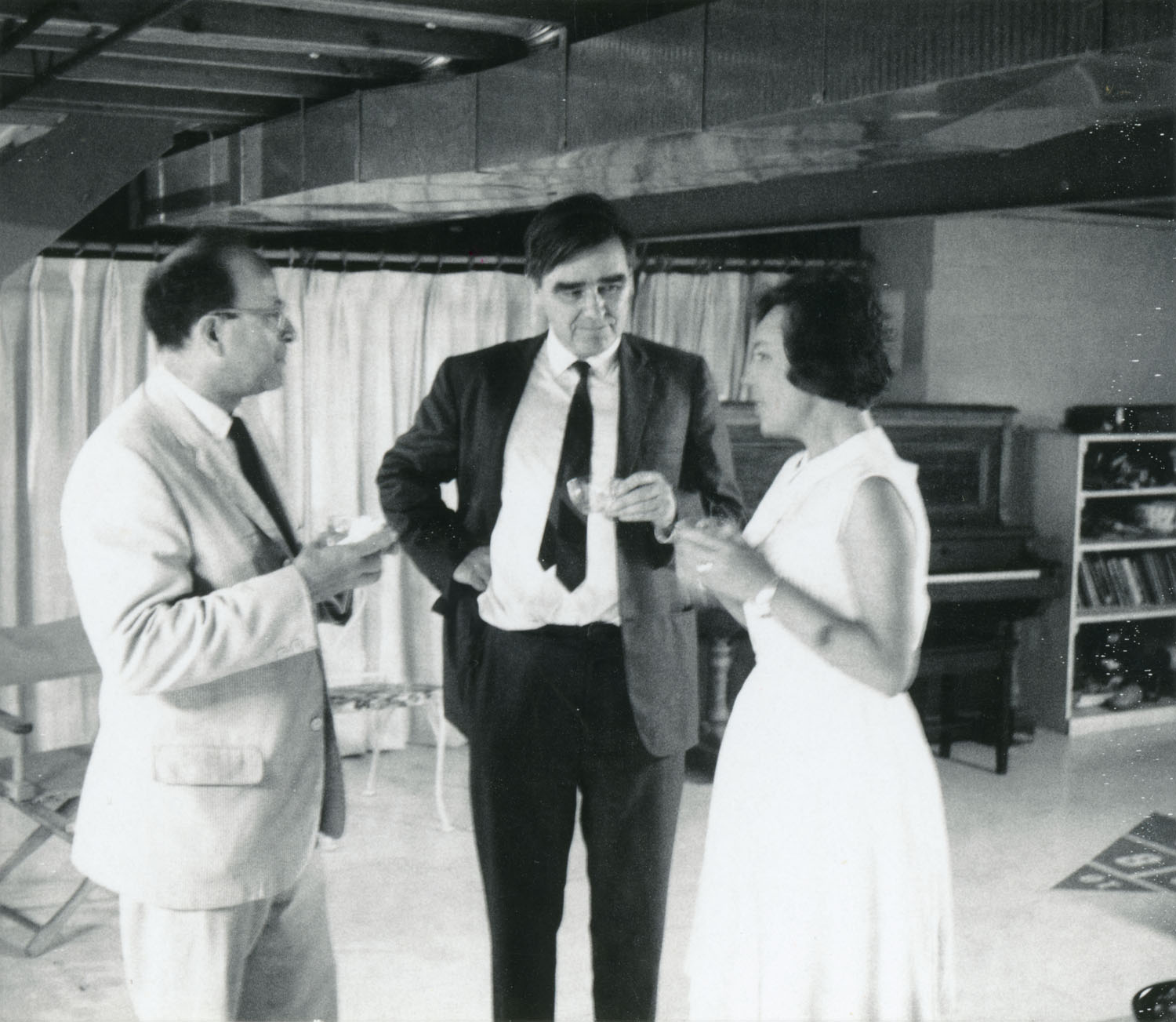
Halmos photographed, left to right, Maxwell Reade, Roger Lyndon (1917-1988), and Frieda (?) Lyndon (Halmos identified the two on the right only as “Lyndon2” on the back of the photograph) on June 7, 1967, at the University of Michigan in Ann Arbor (“A2”). Reade, Roger Lyndon, and Halmos were faculty members at the University of Michigan at the time, with Reade serving from 1946 to 1986, Lyndon from 1953 to 1988, and Halmos from 1961 to 1968.
Complex analyst Maxwell Reade earned his Ph.D. in 1940 from the Rice Institute (now Rice University) in Houston, Texas. After teaching at Ohio State University and Purdue University, he joined the mathematics faculty at the University of Michigan in 1946, where he has been both a very popular teacher and a researcher in complex function theory throughout his career and where he became Professor Emeritus in 1986. Besides mathematical analysis, he and Halmos had photography as a common interest. The University of Michigan’s African American Music Collection includes the Maxwell O. Reade Collection of Early Jazz and Blues Recordings. For a description of mathematics faculty life at the University of Michigan from 1946 to 1960 from the perspective of a faculty spouse, see Marjorie Reade’s “What Was It Like Then? (Post War 1946-1960).” (Sources: Mathematics Genealogy Project, University of Michigan Faculty History Project, University of Michigan Library)
Group theorist Roger Lyndon earned his Ph.D. in 1946 from Harvard University under advisor Saunders Mac Lane, with the dissertation, “The Cohomology Theory of Group Extensions.” From 1946 to 1948, he worked in the Office of Naval Research and, from 1948 to 1953, he was on the mathematics faculty at Princeton University, where he became interested in combinatorial group theory. He also was interested in logic and model theory, and his three books, Notes in Logic (1966); Combinatorial Group Theory, co-authored by Paul Schupp (1976); and Groups and Geometry (1985) represent his main mathematical interests well. The latter two were especially influential and authoritative. From 1953 onward, Lyndon was a mathematics professor at the University of Michigan, becoming Professor Emeritus in 1988. (Sources: MacTutor Archive, University of Michigan Faculty History Project)
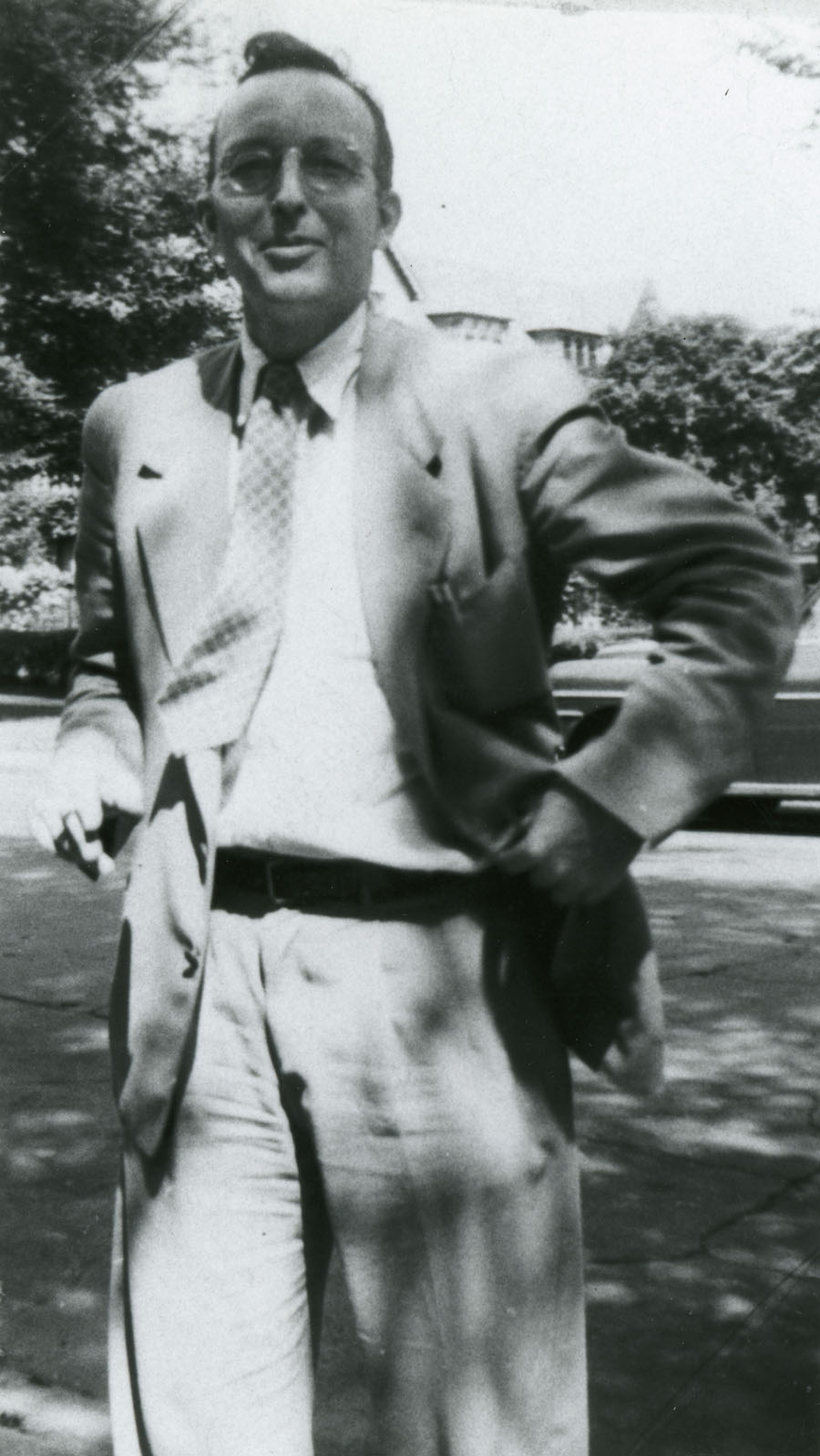
Halmos photographed Saunders Mac Lane (1909-2005) in 1958. Mac Lane earned his Ph.D. in 1934 from the University of Göttingen under advisors Hermann Weyl and Paul Bernays. He was on the faculty at Harvard University from 1938 to 1947, and at the University of Chicago from 1947 to 1982, serving as department chair from 1952 to 1958, when this photo was taken. Halmos was on the faculty at Chicago from 1946 to 1961.
Mac Lane’s primary research areas were homological algebra and category theory, and he advised at least 41 Ph.D. students during his career, most of them at the University of Chicago. His first doctoral student was Irving Kaplansky (pictured on page 26 of this collection), who earned his Ph.D. in 1941 at Harvard and joined the Chicago faculty in 1945. Mac Lane may be best known for his textbook, A Survey of Modern Algebra, co-authored with Garrett Birkhoff in 1941. Mac Lane was MAA president during 1951-52 and AMS president during 1973-74. (Sources: MacTutor Archive, Mathematics Genealogy Project, MAA Presidents, AMS Presidents)
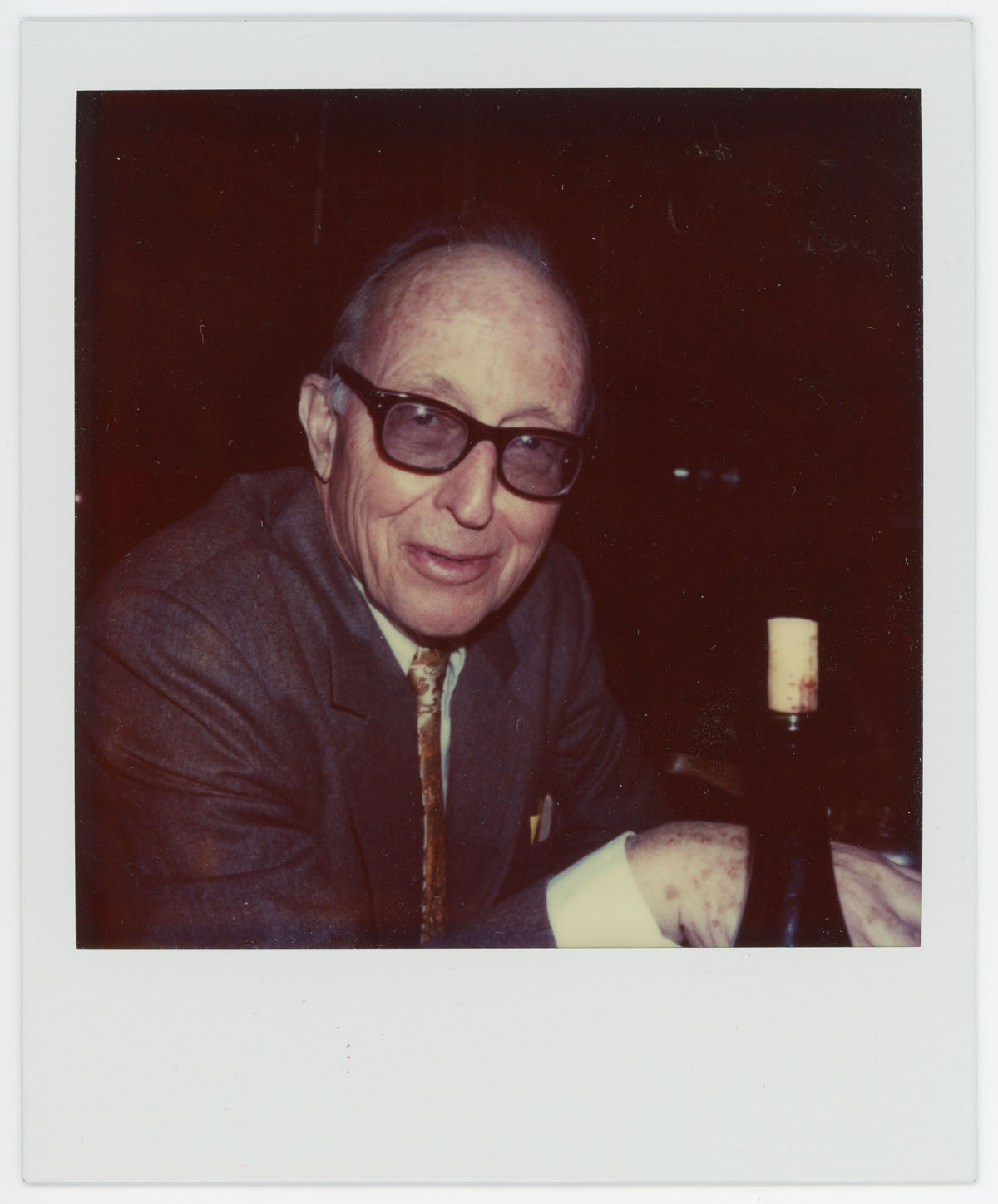
Halmos photographed Saunders Mac Lane (1909-2005) again in March of 1982 in Bloomington, Indiana.
For an introduction to this article and to the Paul R. Halmos Photograph Collection, please see page 1. Watch for a new page featuring six new photographs each week during 2012.
Regarding sources for this page: Information for which a source is not given either appeared on the reverse side of the photograph or was obtained from various sources during 2011-12 by archivist Carol Mead of the Archives of American Mathematics, Dolph Briscoe Center for American History, University of Texas, Austin. Permission to reproduce photos must be obtained from the Dolph Briscoe Center for American History, University of Texas, Austin.
Who's That Mathematician? Paul R. Halmos Collection - Page 33
For more information about Paul R. Halmos (1916-2006) and about the Paul R. Halmos Photograph Collection, please see the introduction to this article on page 1. A new page featuring six photographs will be posted at the start of each week during 2012.
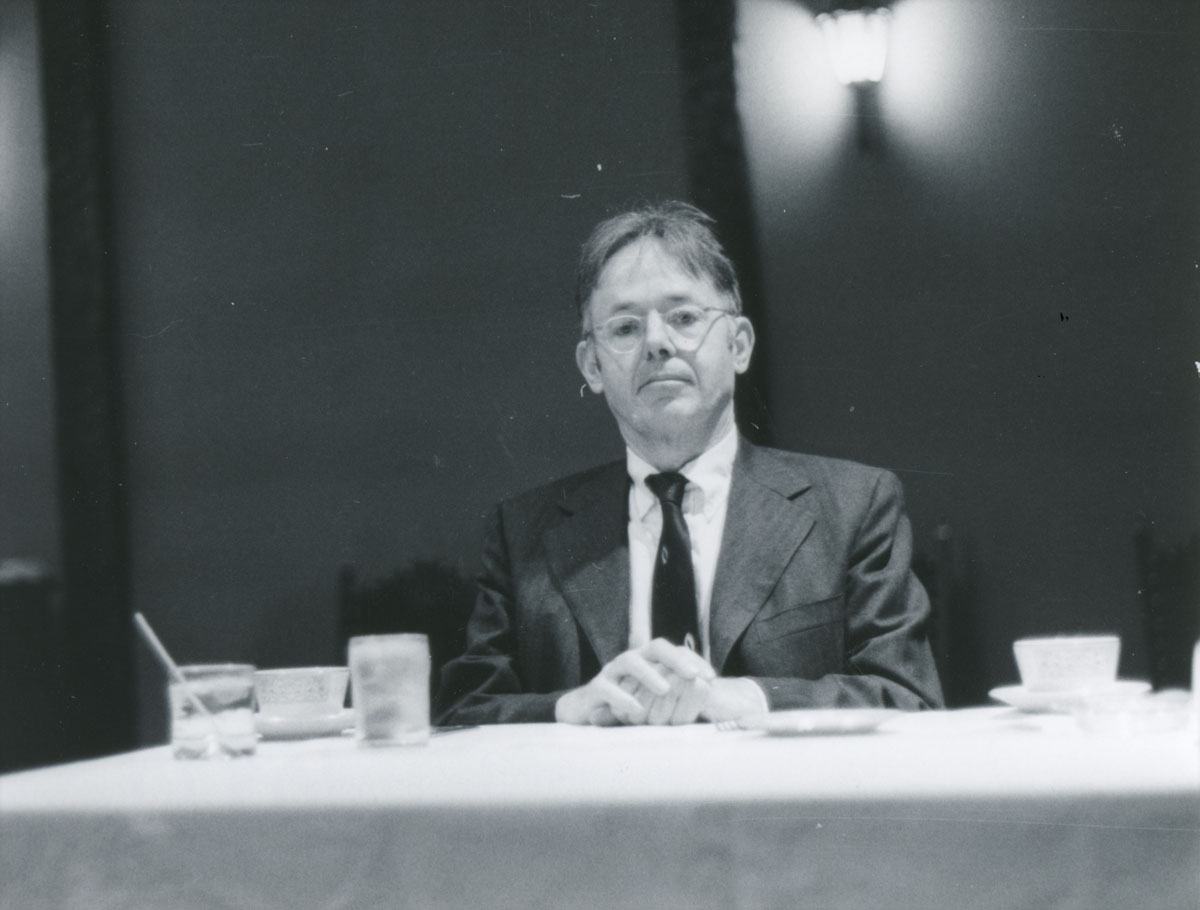
Halmos photographed group representation theorist George Mackey (1916-2006) in April of 1973 in Philadelphia, Pennsylvania. Mackey studied physics as an undergraduate at the Rice Institute (later Rice University) in Houston but switched to mathematics when he entered Harvard University as a graduate student. He earned his Ph.D. from Harvard in 1942 with the dissertation, “The Subspaces of the Conjugate of an Abstract Linear Space,” written under advisor Marshall Stone (whose photograph appears on page 4 of this collection). After one year on the faculty of the Illinois Institute of Technology in Chicago, Mackey returned to Harvard, where he spent the rest of his career, eventually becoming Landon T. Clay Professor of Mathematics. The first of his at least 23 doctoral students was Andrew Gleason (page 17 of this collection), who was appointed a Junior Fellow at Harvard in 1946, and also spent the rest of his career there. The best known of Mackey’s five books probably is his first book, The Mathematical Foundations of Quantum Mechanics (1963), now available from Dover Publications. (Sources: MacTutor Archive, Mathematics Genealogy Project)
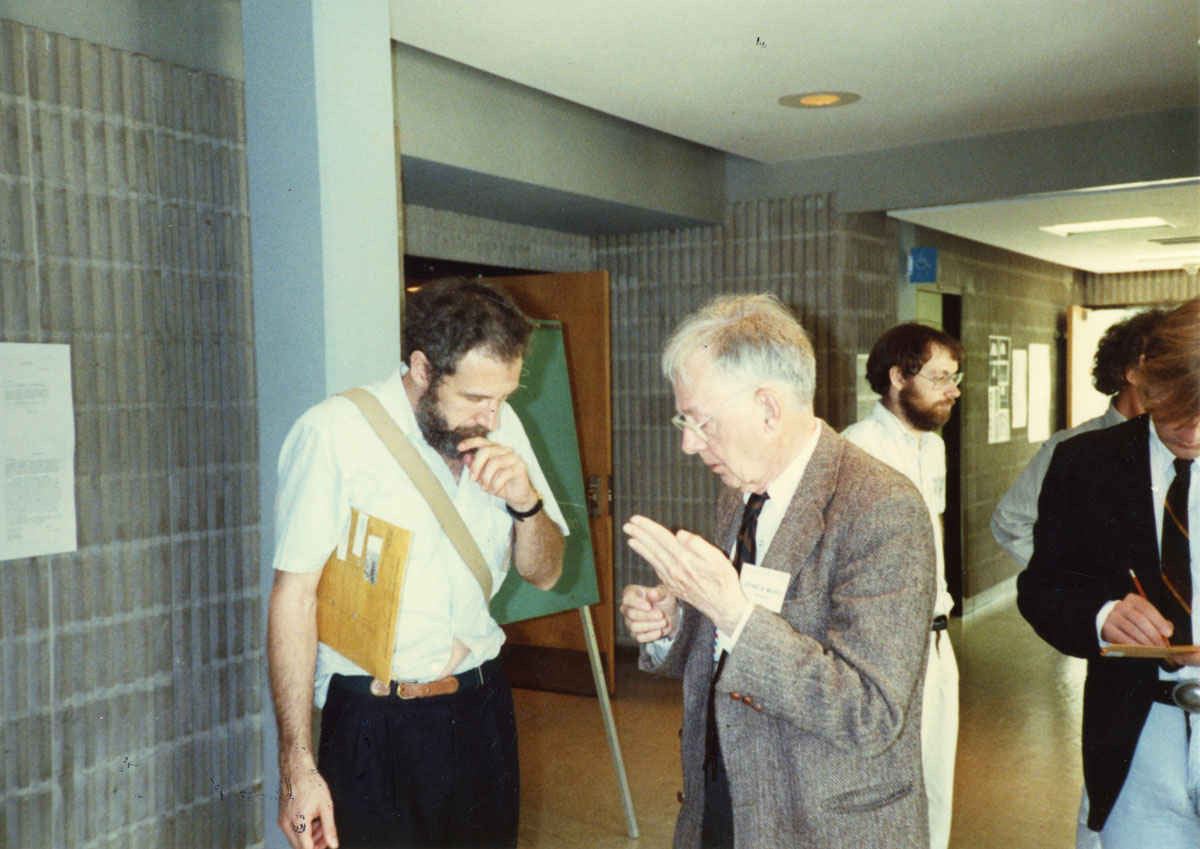
Alain Connes (left) and George Mackey (1916-2006) were photographed by Halmos in June of 1988 at Hofstra University in Hempstead, Long Island, New York. (For a photograph of Bob Bartle and Marshall Stone at the same conference, see page 4 of this collection.) For information about Mackey, see the photo caption above.
Fields Medalist Alain Connes received his Ph.D. in 1973 from the École Normale Supérieure in Paris, with a dissertation on von Neumann algebras written under Jacques Dixmier (page 12 of this collection). Connes continued to obtain important results on the classification and structure of operator algebras and was awarded the Fields Medal in 1982 primarily for this work. In May of 2000, he won the Clay Research Award “for revolutionizing the field of operator algebras, for inventing modern non-commutative geometry, and for discovering that these ideas appear everywhere, including the foundations of theoretical physics” (citation quoted in MacTutor Archive). Connes has been a professor at the Institut des Hautes Études Scientifiques since 1980 and at the Collège de France since 1984; both are in Paris. He also was director of France’s Centre National de la Recherche Scientifique from 1981 to 1989. (Sources: MacTutor Archive, International Mathematical Union Fields Medals; see also Alain Connes official website)
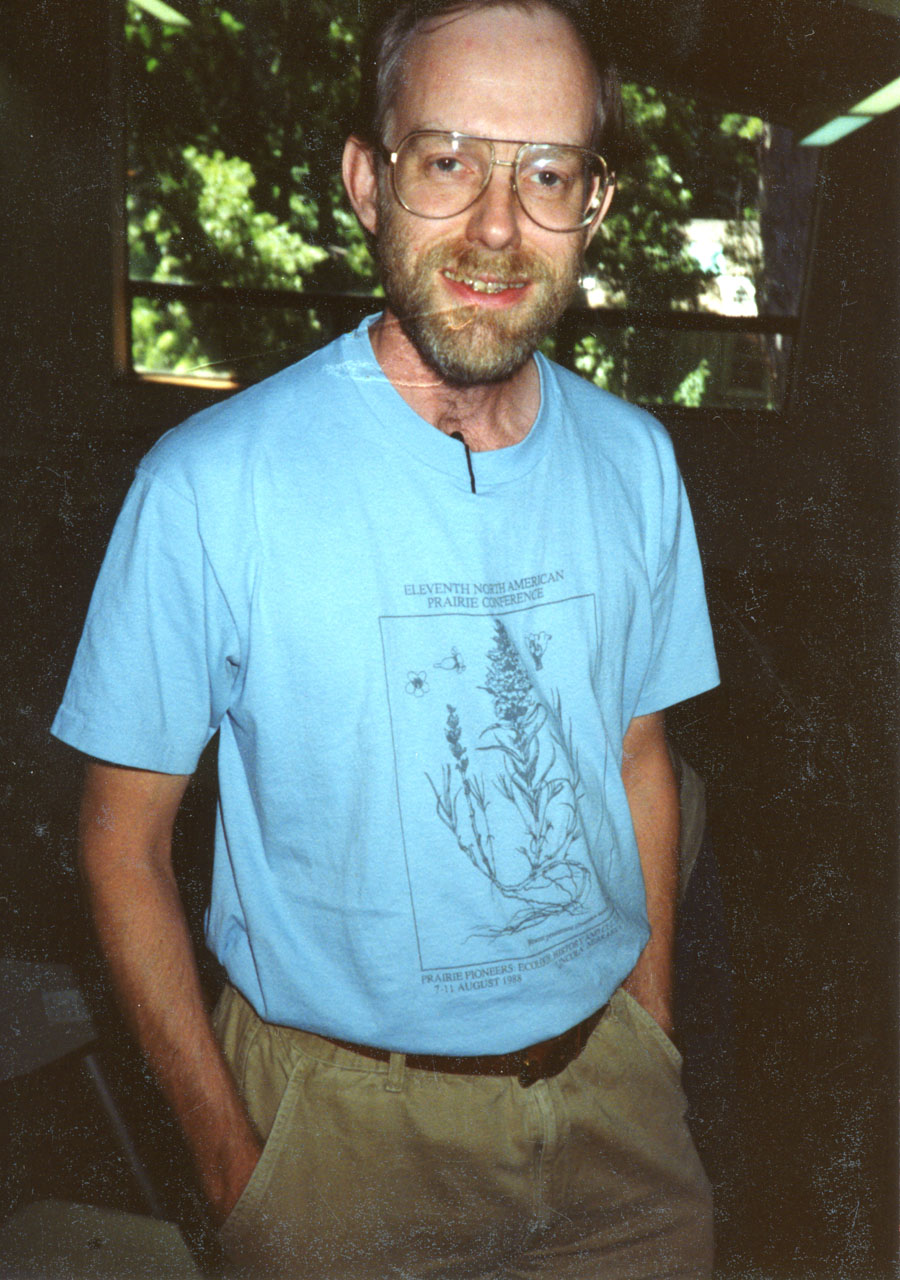
Halmos photographed algebraic logician Roger Maddux in June of 1990 in Oakland, California. Maddux earned his Ph.D. in 1978 from the University of California, Berkeley, with the dissertation, “Topics in Relation Algebras,” written under Alfred Tarski. He is Professor Emeritus of Mathematics at Iowa State University in Ames, Iowa. (Sources: Mathematics Genealogy Project, Iowa State University Mathematics)
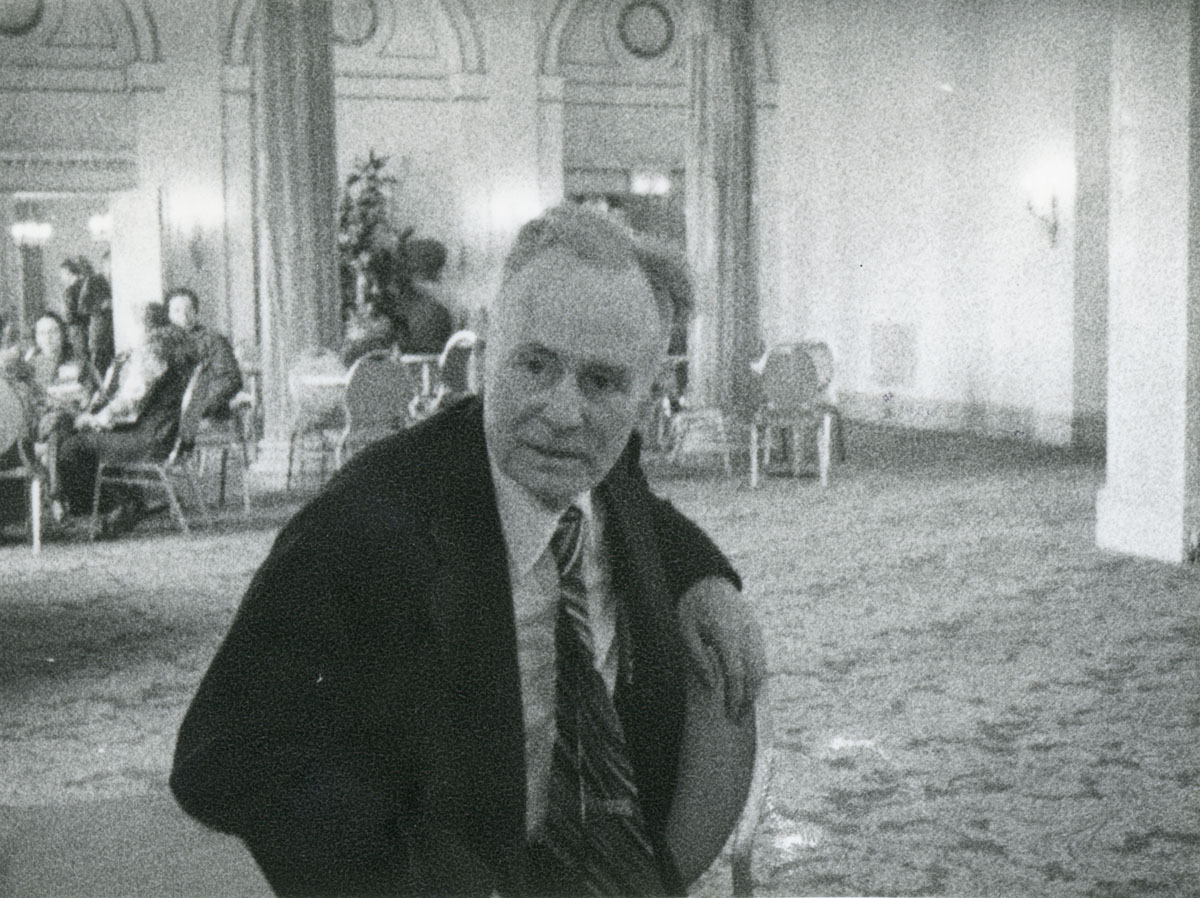
Group theorist Wilhelm Magnus (1907-1990) was photographed by Halmos in April of 1973 at a meeting of the AMS Council at the Biltmore Hotel in New York City. Magnus earned his Ph.D. in 1931 from the University of Frankfurt, Germany, under advisor Max Dehn, and was then on the faculty at Frankfurt until 1938. Barred from academic posts for refusing to join the Nazi party, he worked in industry during World War II. In 1948, he left Germany to join the Bateman Project at the California Institute of Technology (Caltech). This was a project to publish the work on special functions and integral transforms of the prolific (an average of 5 papers per year for the last 40 years of his life) applied mathematician Harry Bateman (1882-1946), who helped establish Caltech as a leading scientific research institution. In 1950, Magnus moved to the Courant Institute at New York University, where he advised all but eight of his 74 Ph.D. students and did research on special functions and mathematical physics, as well as the combinatorial group theory for which he is best known. His book, Combinatorial Group Theory, has been re-published by Dover. (Sources: MacTutor Archive, Mathematics Genealogy Project)
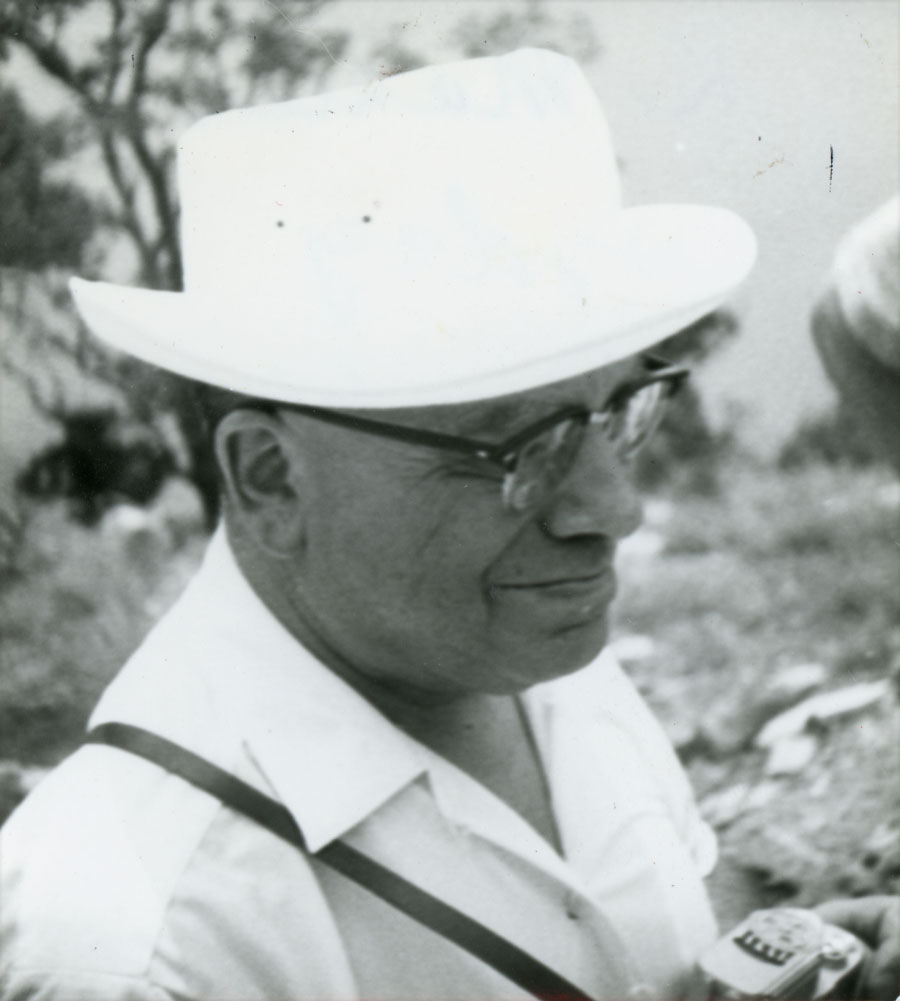
Halmos photographed number theorist Kurt Mahler (1903-1988) in January of 1964. Mahler was a self-taught mathematician, encouraged by a local high school teacher in Krefeld, Germany (with whom his father had shared his mathematical work), and by Carl Siegel at Göttingen to study for the university entrance exam. He entered the University of Frankfurt, where Siegel had moved, in 1923 and earned his Ph.D. there in 1927 with a dissertation on zeros of the incomplete gamma function directed by Siegel. Mahler actually had moved to Göttingen in 1925, where he was influenced by a number of mathematicians, most notably Emmy Noether, who taught him about p-adic numbers. He remained at Göttingen until the fateful year of 1933 when the Nazi party came to power. Mahler moved to the University of Manchester, England, that year, and he spent most of the 1930s at Manchester and at the University of Groningen in the Netherlands. In 1936, he met the nomadic number theorist Paul Erdös (see pages 3, 14, and 27 of this collection) and the two began a lifelong collaboration and friendship. In 1941 Mahler became a permanent faculty member at Manchester, where he remained until 1962, when he moved to the University of Canberra, Australia. Except for spending 1968 to 1972 at Ohio State University in the U.S., he spent the rest of his career and life in Canberra. (Source: MacTutor Archive)
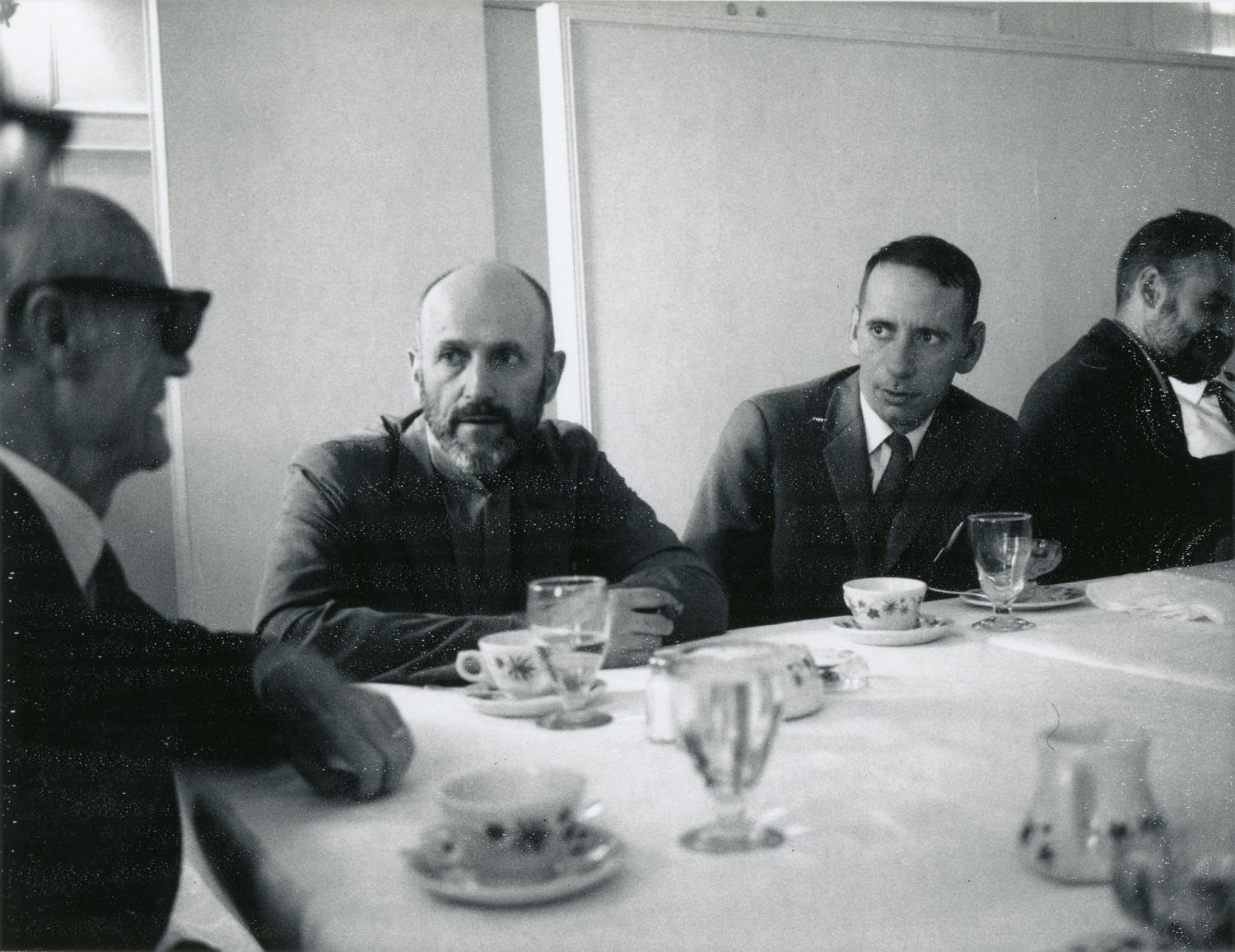
Halmos photographed, left to right, H.S.M. “Donald” Coxeter (1907-2003), Kenneth O. May (1915-1977), William T. Sharp (1927-1972), and James “Ray” Vanstone (1933-2001) on September 19, 1969 in Toronto, Ontario, Canada. All four were mathematics professors at the University of Toronto at the time. Two more photographs of Coxeter appear on page 10 of this collection and you can read more about him there.
Kenneth O. May earned his Ph.D. in 1946 from the University of California, Berkeley, and spent most of his career at the University of Toronto, where he specialized in the history of mathematics. He was founding chair of the International Commission for the History of Mathematics (ICHM) and founding editor of its journal, Historia Mathematica, in 1971 and 1973, respectively. ICHM, in cooperation with the Institute for History of Science and Technology at the University of Toronto, honors May with its Kenneth O. May Prize and Medal, awarded every four years to scholars who have made “significant lifetime contributions to the history of mathematics.” Ken May also helped found the Canadian Society for the History and Philosophy of Mathematics (CSHPM), which honors him with its annual Kenneth O. May Lecture. (Sources: Mathematics Genealogy Project; ICHM; CSHPM; “Mathematics People: Bos Awarded 2005 May Prize,” AMS Notices 52:11 (Dec. 2005), p. 1363)
Born in London, England, mathematical physicist William T. Sharp earned his Ph.D. in 1960 from Princeton University with the dissertation "Racah Algebra and the Contraction of Groups," written under Eugene Paul Wigner. He had earned bachelors (1947) and masters (1948) degrees at the University of Toronto and, in 1962, after a short stint at the University of Alberta, he returned to Toronto as a mathematics professor. An avid mountain climber and longtime member of the Alpine Club of Canada, Bill Sharp died in a climbing accident in British Columbia at the age of 45. His colleague, Edward Barbeau, now Professor Emeritus of Mathematics at the University of Toronto, remembers him as
... the sort of colleague that every department would rejoice to have, affable, fair-minded and very conscientious about canvassing the opinions of his colleagues before decisions were taken. Even after 40 years, I remember him fondly.
We are grateful to Ed Barbeau for identifying Sharp and for researching him in the University of Toronto Archives. (Mathematics Genealogy Project, University of Toronto Archives)
Born in Ontario, Canada, James Ray Vanstone earned his Ph.D. in 1959 from the University of Natal in South Africa with a dissertation titled “Generalized Metric Differential Geometry.” He had earned bachelors and masters degrees at the University of Toronto, and he returned to Canada to join the faculty there in 1959, becoming Professor Emeritus in 1995. Ray Vanstone wrote papers on multilinear algebra and on differential geometry, especially as it relates to relativity, but he may be best known as co-author with his Toronto colleagues Werner Greub and Stephen Halperin of the three-volume set, Connections, Curvature, and Cohomology. He was active in the Canadian Mathematical Society (CMS) throughout his career. (Sources: Mathematics Genealogy Project; “Obituaries” CMS Notes 33:5 (Sept. 2001) pp. 18-19; CMS Service)
For an introduction to this article and to the Paul R. Halmos Photograph Collection, please see page 1. Watch for a new page featuring six new photographs each week during 2012.
Regarding sources for this page: Information for which a source is not given either appeared on the reverse side of the photograph or was obtained from various sources during 2011-12 by archivist Carol Mead of the Archives of American Mathematics, Dolph Briscoe Center for American History, University of Texas, Austin.
Who's That Mathematician? Paul R. Halmos Collection - Page 34
For more information about Paul R. Halmos (1916-2006) and about the Paul R. Halmos Photograph Collection, please see the introduction to this article on page 1. A new page featuring six photographs will be posted at the start of each week during 2012.
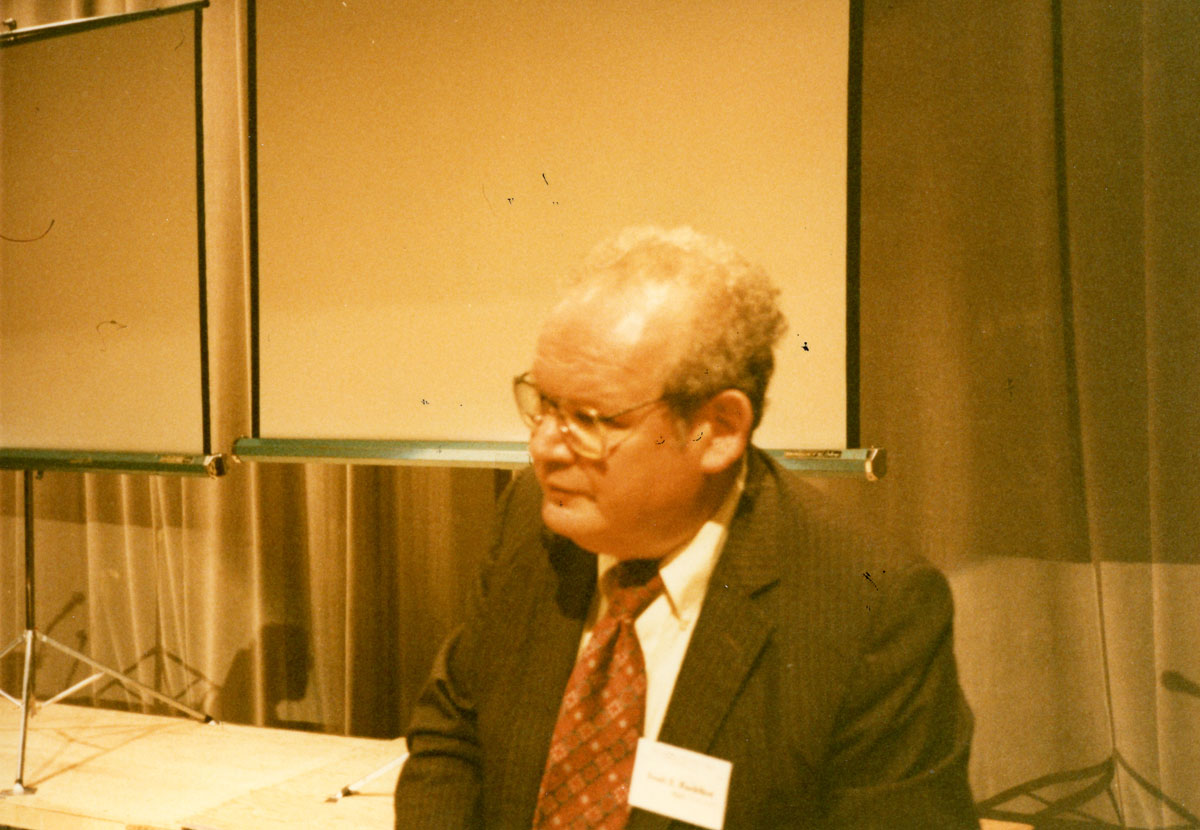
Halmos photographed Benoit Mandelbrot (1924-2010) in August of 1985 at the AMS-MAA Joint Summer Mathematics Meetings in Laramie, Wyoming. Born in Poland but raised in France from 1936 onward, Mandelbrot earned his Ph.D. in 1952 from the University of Paris under advisor Paul Lévy. He worked briefly at the Centre National de la Recherche Scientific in Paris (1955-58), but, due largely to a dislike of the influence of the Bourbaki school of mathematics, he spent most of his career in the U.S. Mandelbrot worked at the Institute for Advanced Study (IAS) in Princeton, New Jersey, during 1953-54; as an IBM Fellow at the IBM Watson Research Center in Yorktown Heights, New York, from 1958 onward (becoming Fellow Emeritus in 1993); and as Sterling Professor of Mathematical Sciences at Yale University in New Haven, Connecticut, from 1999 until his death in 2010. His mathematical viewpoint was primarily geometric and of course his most famous discovery of all was fractals and, in particular, his fractal representation of Gaston Julia’s ideas on iteration of functions from 1918. Mandelbrot did most of this work during the 1970s at the IBM Watson Research Center, where he had first noticed self-similarity in electronic noise during the 1960s. He published his popular book on the topic, The Fractal Geometry of Nature, in 1982. (Sources: MacTutor Archive, Mathematics Genealogy Project, IAS, Benoit Mandelbrot homepage)
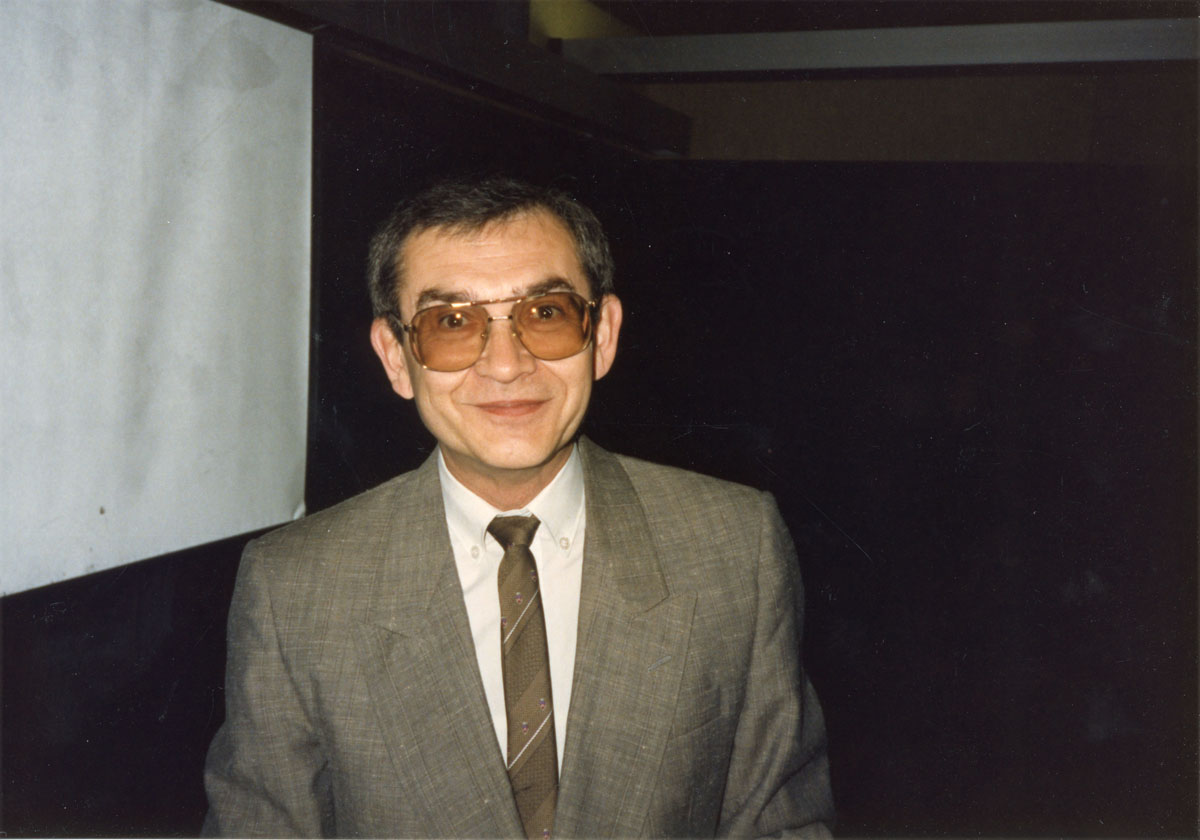
Yuri Manin was photographed by Halmos in November of 1989 in Berkeley, California, probably at the University of California, Berkeley. Born in Simferopol, Russia, Manin earned his Ph.D. in 1960 from Moscow State University under advisor Igor Shafarevich, and was appointed Principal Researcher at the Steklov Mathematical Institute in Moscow. In 1965, he became Professor of Algebra at Moscow State University. Having already made a name for himself in Russia, he soon became famous internationally when he presented his results on classification of rational algebraic surfaces at the International Congress of Mathematicians held in Moscow in August of 1966. Manin’s interests span algebra, including algebraic number theory, algebraic geometry, the algebra of physics (especially quantum groups), and homological algebra, and include many other areas of mathematics as well. From 1991 to 1993, he held one-year positions at Columbia University in New York City and at the Massachusetts Institute of Technology (MIT), and, in 1993, he joined the Max Planck Institute in Bonn, Germany, becoming Emeritus in 2005. He has advised at least 50 doctoral students in Russia, the U.S., and Germany. (Sources: MacTutor Archive, Mathematics Genealogy Project)
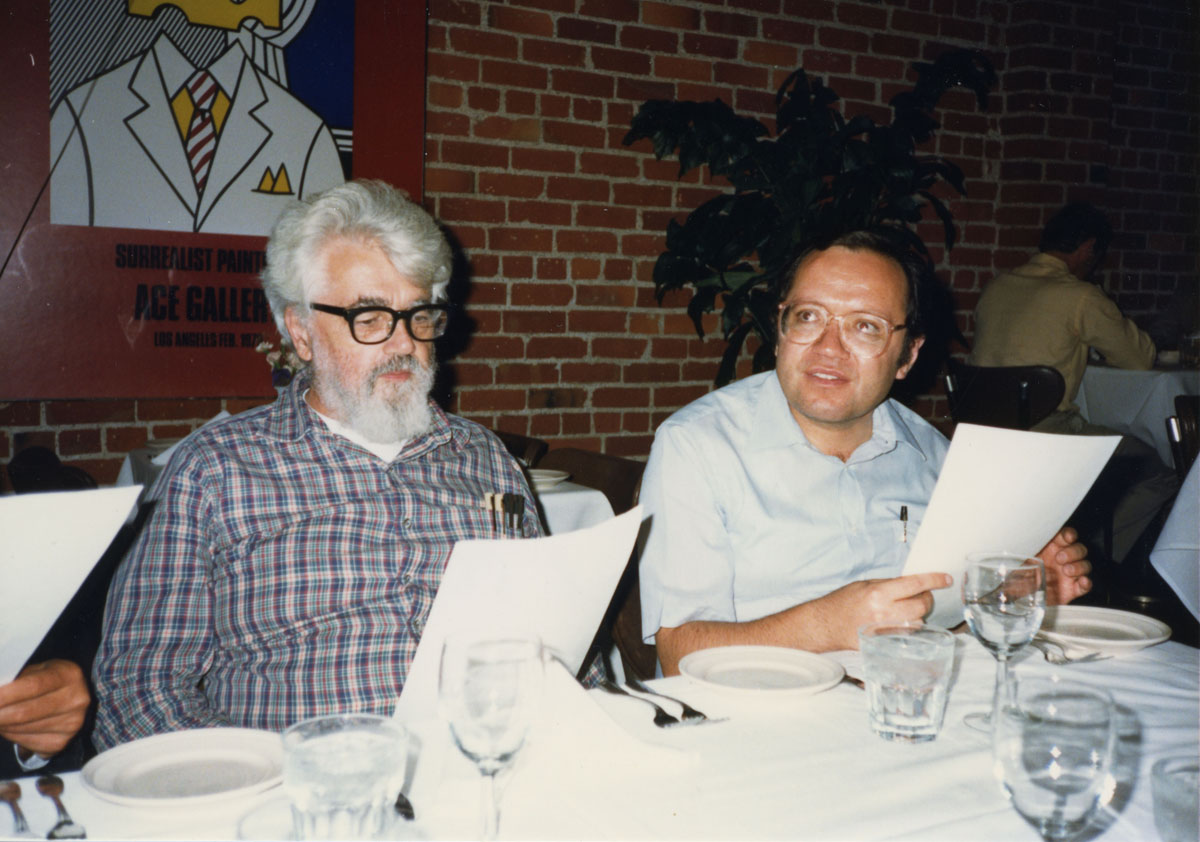
Halmos photographed John McCarthy (1927-2011) and Samih Obaid in October of 1986 in San Jose, California, where all three were about to enjoy dinner at a restaurant after McCarthy gave a talk at San Jose State University. Obaid was the lecture series chair for the San Jose State University Department of Mathematics and Computer Science during 1986-87 and had invited McCarthy to speak. McCarthy was on the computer science faculty at Stanford University and Halmos on the mathematics faculty at Santa Clara University at the time.
McCarthy earned his Ph.D. in 1951 from Princeton University with the dissertation “Projection Operators and Partial Differential Equations,” written under Solomon Lefschetz. However, he is famous as a computer scientist and especially as a researcher in the field of “artificial intelligence,” a term he coined in 1955. In 1958, he invented the computer programming language LISP and, in the late 1950s and early 1960s, he developed computer time-sharing. In 1966, he gained some fame for playing computer chess against Russian researchers and, in 1971, he received the Turing Award, the highest honor in computer science. He held faculty positions at Princeton from 1951 to 1953; at Dartmouth College in Hanover, NH, and MIT from 1955 to 1962; and at Stanford University in Palo Alto, California, from 1953 to 1955 and from 1962 onward. He co-founded both the MIT Artificial Intelligence Project and the Stanford Artificial Intelligence Laboratory, and he advised at least 29 Ph.D. students, all but two of them at Stanford. (Sources: Mathematics Genealogy Project, Stanford University obituary)
Samih Obaid earned his Ph.D. in 1977 from the Pennsylvania State University with the dissertation “Interpolating Sequences and Their Applications to Porous Exceptional Sets,” written under Donald Rung. He is Professor of Mathematics at San Jose State University, where he has taught since 1985. His current research interests are elasticity theory, fluid mechanics, integral equations, and complex analysis. Obaid remembers that Halmos attended nearly all of the SJSU Mathematics and Computer Science lectures that year, which included talks by McCarthy, Richard Hamming, Jerrold Marsden, Constance Reid, Donald Sarason, George Dantzig, and Jeffrey Ullman. (Sources: Mathematics Genealogy Project, San Jose State University)
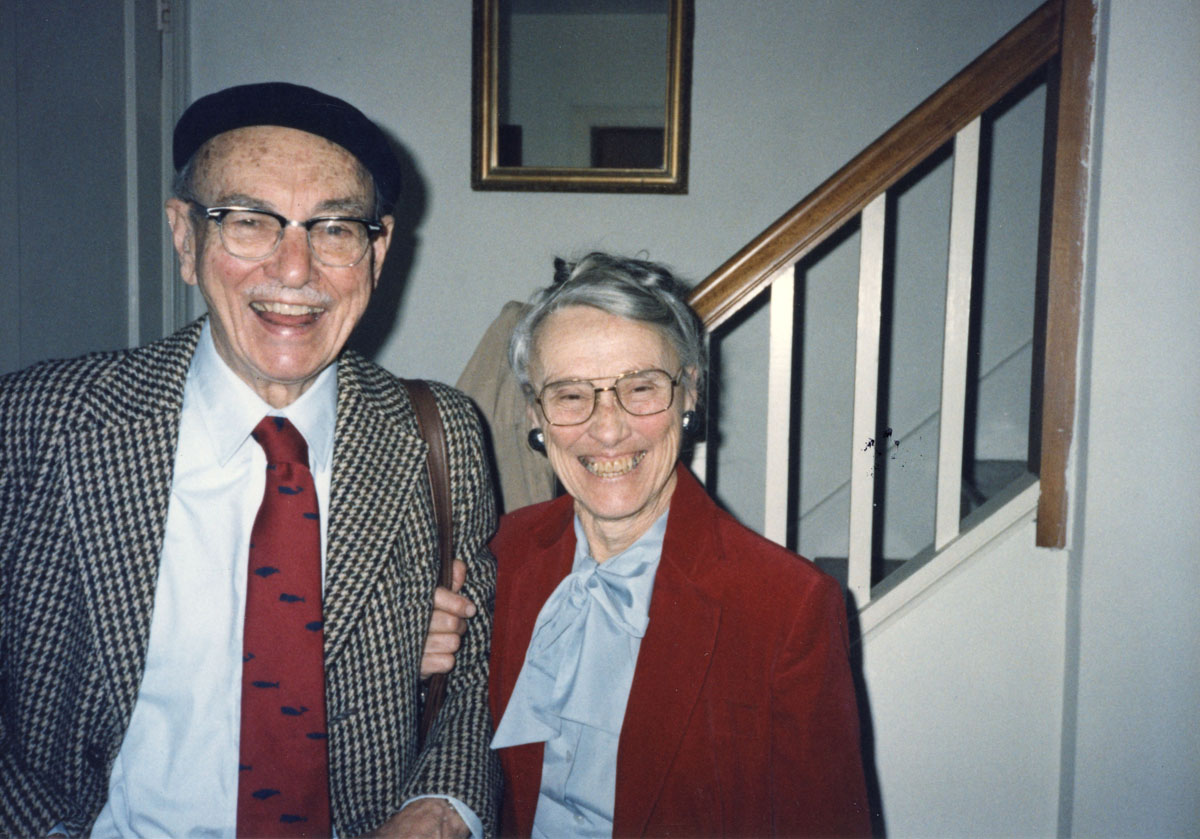
Edward James McShane (1904-1989) and his wife Virginia McShane were photographed by Halmos in March of 1986 in Charlottesville, Virginia. Born in New Orleans, Louisiana, “Jimmy” McShane earned bachelors and masters degrees at Tulane University in his hometown, then moved to the University of Chicago to earn a Ph.D. in calculus of variations written under Gilbert Bliss and Lawrence Graves (whose photo is on page 18 of this collection) in 1930. After brief stints at Princeton, Ohio State, Harvard, Chicago, Göttingen (Germany), and Princeton again, he accepted a position at the University of Virginia in 1935 and spent most of his career there, becoming Professor Emeritus in 1974. His research areas were calculus of variations, integration theory (on which he wrote three books), stochastic models (one more book), and ballistics. He wrote the book, Exterior Ballistics, on the latter topic with John L. Kelley (page 27 of this collection) and Franklin V. Reno. Published in 1953, much of the research for this book was done during the early 1940s, when McShane was head of the Ballistics Research Laboratory at the Aberdeen Proving Ground in Maryland during World War II (1942-1945). McShane was president of the MAA during 1953-1954 and president of the AMS during 1959-1960. (Sources: MacTutor Archive, Mathematics Genealogy Project, MAA Presidents, AMS Presidents)
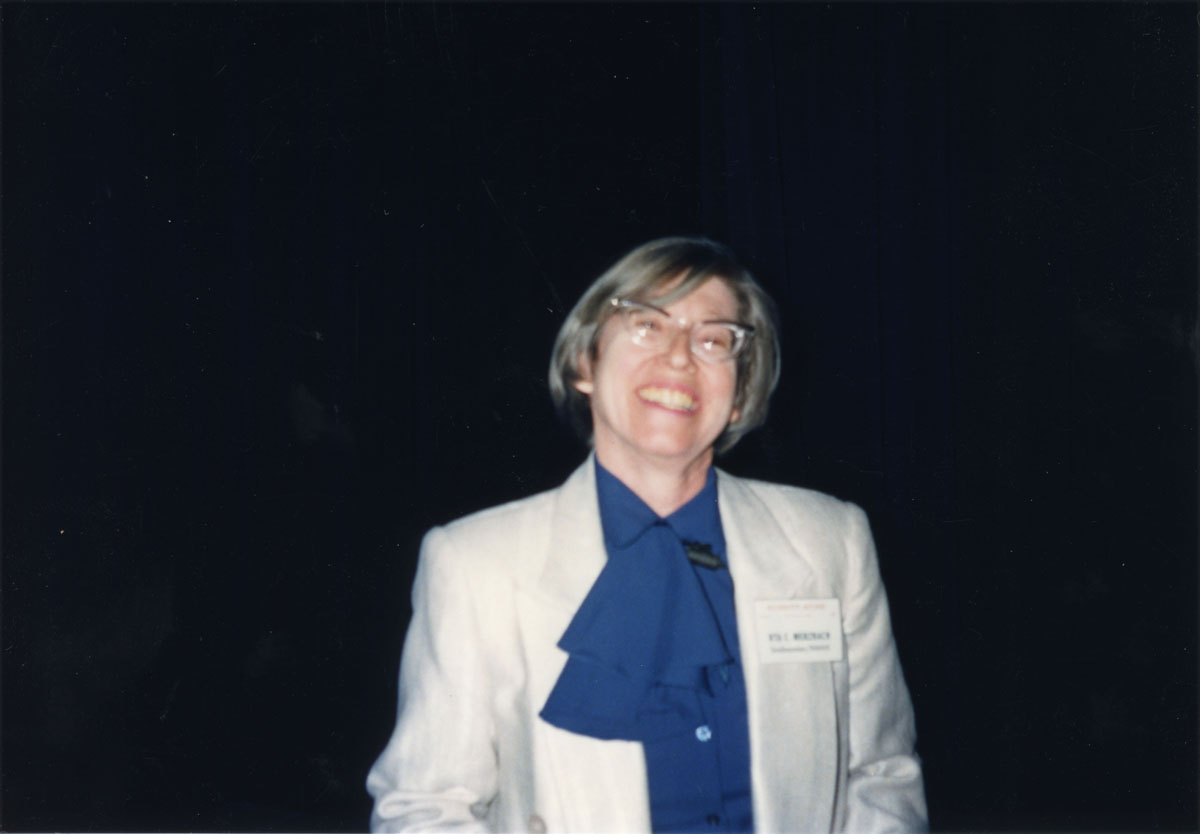
Halmos photographed Uta Merzbach (1933-2017) in January of 1987 in San Antonio, Texas, probably at the Joint Mathematics Meetings. Merzbach earned her Ph.D. in mathematics and the history of science in 1965 from Harvard University with the dissertation, “Quantity of Structure: Development of Modern Algebraic Concepts from Leibniz to Dedekind,” written under algebraist Garrett Birkhoff (page 6 of this collection) and historian of science I. Bernard Cohen. She was the first-ever Curator of Mathematics (and computer science) at the Smithsonian Institution in Washington, D.C., serving from 1963 to 1987, when she became Curator Emeritus. In 1991, Merzbach updated Carl Boyer’s classic A History of Mathematics, originally published in 1968, and, in 2011, she published a further revision of this book. She also wrote Carl Friedrich Gauss: A Bibliography (1984) and she assisted Peter Duren (page 13 of this collection) with his three-volume A Century of Mathematics in America (1989). (Sources: Mathematics Genealogy Project; “Mathematical Treasures of the Smithsonian Institution,” AMS Notices 46:5 (May 1999), pp. 528-534)
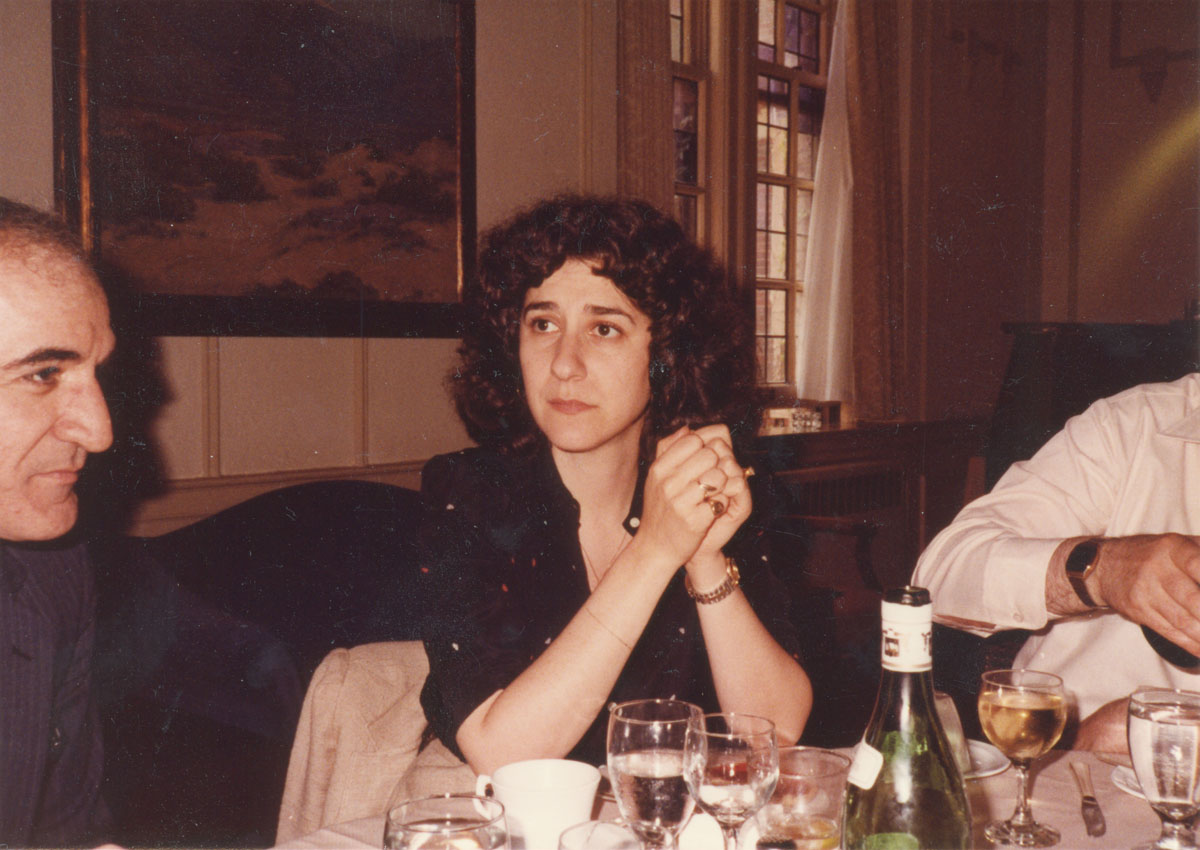
Halmos photographed Jill Mesirov in May of 1983 at a meeting of the AMS Council in Ann Arbor, Michigan. Mesirov was associate director of the AMS from 1982 to 1985 and she remembers that Halmos was a member of the executive committee during that time. Mesirov earned her Ph.D. in 1974 from Brandeis University with the dissertation “Perturbation Theory for the Existence of Critical Points in the Calculus of Variations,” written under Richard Palais. From 1985 to 1995 she was director of research at Thinking Machines Corporation, and from 1995 to 1997 she was a computational biology and bioinformatics manager at IBM. In 1997, she joined the Whitehead Institute/MIT Center for Genome Research and, in 2004, when this unit became a key part of the newly formed interdisciplinary Broad Institute of MIT and Harvard, she became associate director and chief informatics officer, directing the computational biology and bioinformatics organization. As president of the Association for Women in Mathematics from 1989 to 1991, Mesirov was instrumental in strengthening AWM’s relationship and standing with the National Science Foundation (NSF) and in initiating its ongoing activities at Society for Industrial and Applied Mathematics (SIAM) meetings. She also directed AWM’s 20th anniversary celebrations in 1991. (Sources: Mathematics Genealogy Project, Broad Institute biography, Broad Institute History, AWM History, AWM Presidents)
For an introduction to this article and to the Paul R. Halmos Photograph Collection, please see page 1. Watch for a new page featuring six new photographs each week during 2012.
Regarding sources for this page: Information for which a source is not given either appeared on the reverse side of the photograph or was obtained from various sources during 2011-12 by archivist Carol Mead of the Archives of American Mathematics, Dolph Briscoe Center for American History, University of Texas, Austin.
Who's That Mathematician? Paul R. Halmos Collection - Page 35
For more information about Paul R. Halmos (1916-2006) and about the Paul R. Halmos Photograph Collection, please see the introduction to this article on page 1. A new page featuring six photographs will be posted at the start of each week during 2012.

Halmos photographed David Milman (1912-1982) in 1980 at the Oberwolfach Conference Center in Germany. Halmos and Milman were participating in one of a series of seven Oberwolfach conferences on approximation theory organized approximately every three years from 1963 to 1983 by Paul Butzer and Béla Szökefalvi-Nagy. (For a photo of Butzer and Sz.-Nagy at the 1983 conference, see page 9 of this collection.) In his book, I Want to Be a Mathematician: An Automathography (Springer, 1985), Halmos described his attraction to Milman’s “ebullient and instantly likable personality” (p. 387).
Milman earned his Ph.D. in functional analysis in 1939 from Odessa State University in Odessa, Ukraine. He emigrated to Israel during the 1970s and became a professor at Tel Aviv University. The following paragraph appeared at many websites, including Wikipedia, as of Sept. 15, 2012:
Milman is known for his development of functional analysis methods, particularly in operator theory, in close connection with concrete problems coming from mathematical physics, in particular differential equations and normal modes. The Krein–Milman theorem and the Milman–Pettis theorem are named after him.
The source of this paragraph was apparently the Wikipedia article on Milman, for which I hope the source was the introductory article “David Milman (1912-1982)” on pages ii-7 of the “David Milman Memorial Issue” of the journal Integral Equations and Operator Theory 9:1 (Springer 1986). Milman’s sons Vitali Milman and Pierre Milman are professors of mathematics at Tel Aviv University and the University of Toronto, Canada, respectively. There is another photograph of Milman that appears to be from about 1980 in Gil Kalai’s blog post about a geometry and functional analysis conference held June 24-30, 2009, at Tel Aviv University in honor of David’s son Vitali Milman’s 70th birthday (the first photograph there is of Vitali Milman). (Sources: Mathematics Genealogy Project, Wikipedia, SpringerLink, Gil Kalai’s blog post from 7/12/2009 at WordPress.com)

John Milnor was photographed by Halmos in October of 1979 at Indiana University in Bloomington, Indiana. Halmos was a mathematics professor at Indiana from 1969 to 1985. Milnor earned his Ph.D. in 1954 from Princeton University with the dissertation “Isotopy of Links,” written under advisor Ralph Fox. He had accepted a faculty position at Princeton in 1953, and in 1956 he published the paper, “On manifolds homeomorphic to the 7-sphere,” in Annals of Mathematics. In 1962, he was awarded the Fields Medal for proving “that a 7-dimensional sphere can have several different structures; this led to the creation of the field of differential topology” (see “Fields Medals 1962”). In 1960, he had been promoted to Professor at Princeton and, in 1962, besides winning the Fields Medal, he also became editor of Annals of Mathematics. During his career, Milnor has worked on algebraic topology, algebraic K-theory, differential geometry (including knot theory), and dynamical systems. In 1988, he joined the mathematics faculty at the State University of New York (SUNY) at Stony Brook, where he is Professor of Mathematics and Co-Director of the Institute for the Mathematical Sciences. (Sources: MacTutor Archive, International Mathematical Union Fields Medals 1962, SUNY Stony Brook Mathematics)
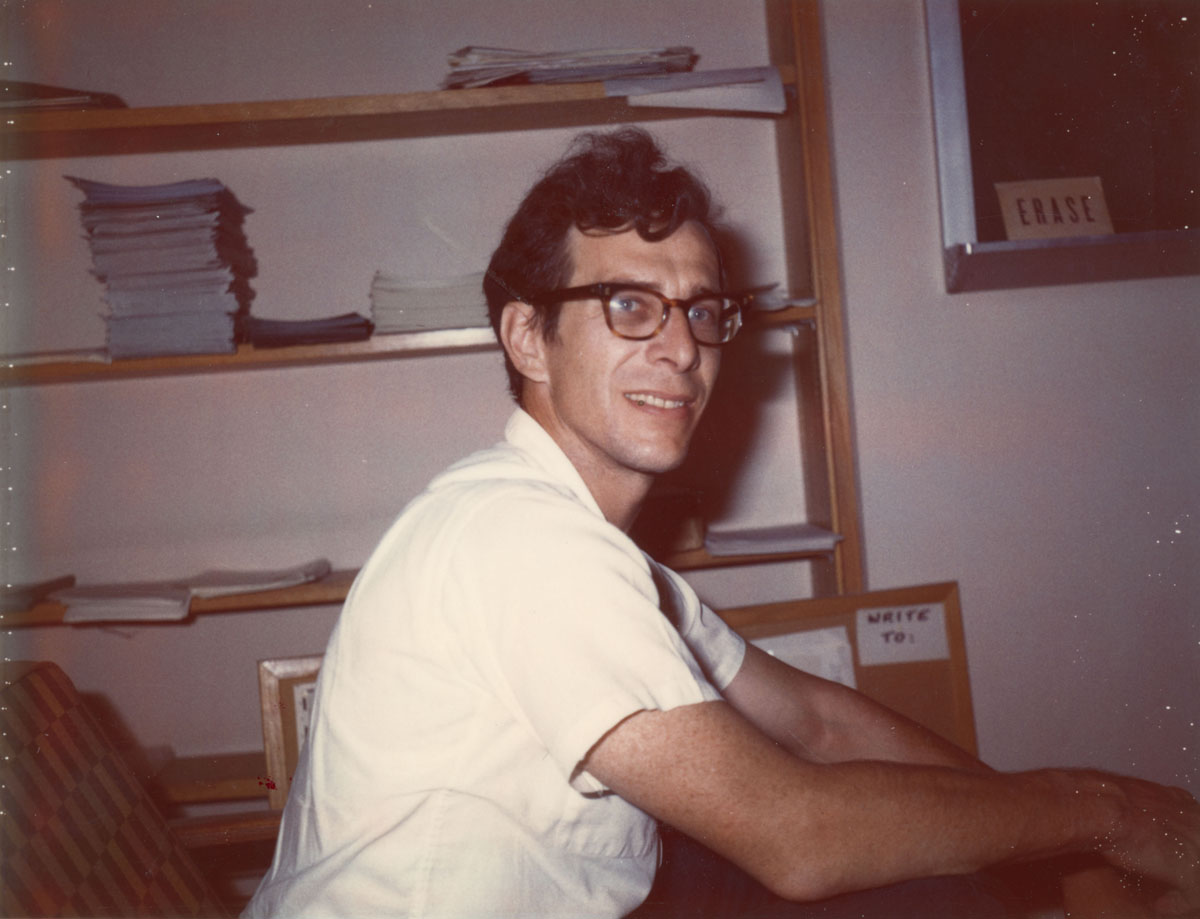
Halmos photographed George Minty on October 8, 1969, at Indiana University in Bloomington. Halmos had just taken up a faculty position at Indiana that fall and would remain there until 1985. Minty had been a mathematics professor at Indiana since the early 1960s and worked in graph theory, electrical networks, and nonlinear functional analysis. After service in the U.S. Army Signal Corps, Minty earned his Ph.D. in 1959 from the University of Michigan with the dissertation, “Integrability Conditions for Vector Fields in Banach Spaces.” His first job out of grad school was as an applied mathematician at the General Motors Research Laboratory in Detroit, Michigan, and it was here that he first melded the discrete and the continuous to obtain significant results. According to Minty’s colleague and friend, Andrew Lenard, now Professor Emeritus of Mathematics at Indiana University:
Perhaps his most significant work during that period was his analysis of the general electrical circuit system, consisting of a finite number of "units" (with arbitrary non-linear characteristics) joined together at junction points, and subject to prescribed external electric signals. He proved mathematically the existence and uniqueness of a solution for the "outputs" using ingenious mathematical methods: He treated first an approximating finite problem with methods of graph- and graph-minimizing theories, and then embedded it in a general functional analysis space to carry out the limit indicated. This work has stimulated much later research by him and others, and was the source of Minty's lifelong interest in discrete mathematics, as well as (mostly non-linear) functional analysis.
Lenard listed Minty’s three most important accomplishments after becoming a mathematics professor at Indiana University as
- the theory of monotone operators on normed linear spaces (also developed independently by Brower),
- the Lemma of the Colored Arcs in matroid theory, and
- in the theory of computation (efficiency of algorithms), a proof that a certain decision problem in a certain type of graph has an algorithmic solution that is only polynomially bounded.
Lenard also described Minty as a “passionate teacher.” Minty’s most-cited result may be his and Victor Klee’s worst-case analysis of the simplex method, including an m-cube example that requires an exponential number (2m) of pivots, published in 1972 (see David Gale’s article). Minty died at age 56 sometime between 1985 and 1990. (Sources: Mathematics Genealogy Project; Andrew Lenard’s post to the Historia Matematica listserve dated Oct. 20, 1999; David Gale, “Linear Programming and the Simplex Method,” AMS Notices 54:3 (March 2007), pp. 364-369)
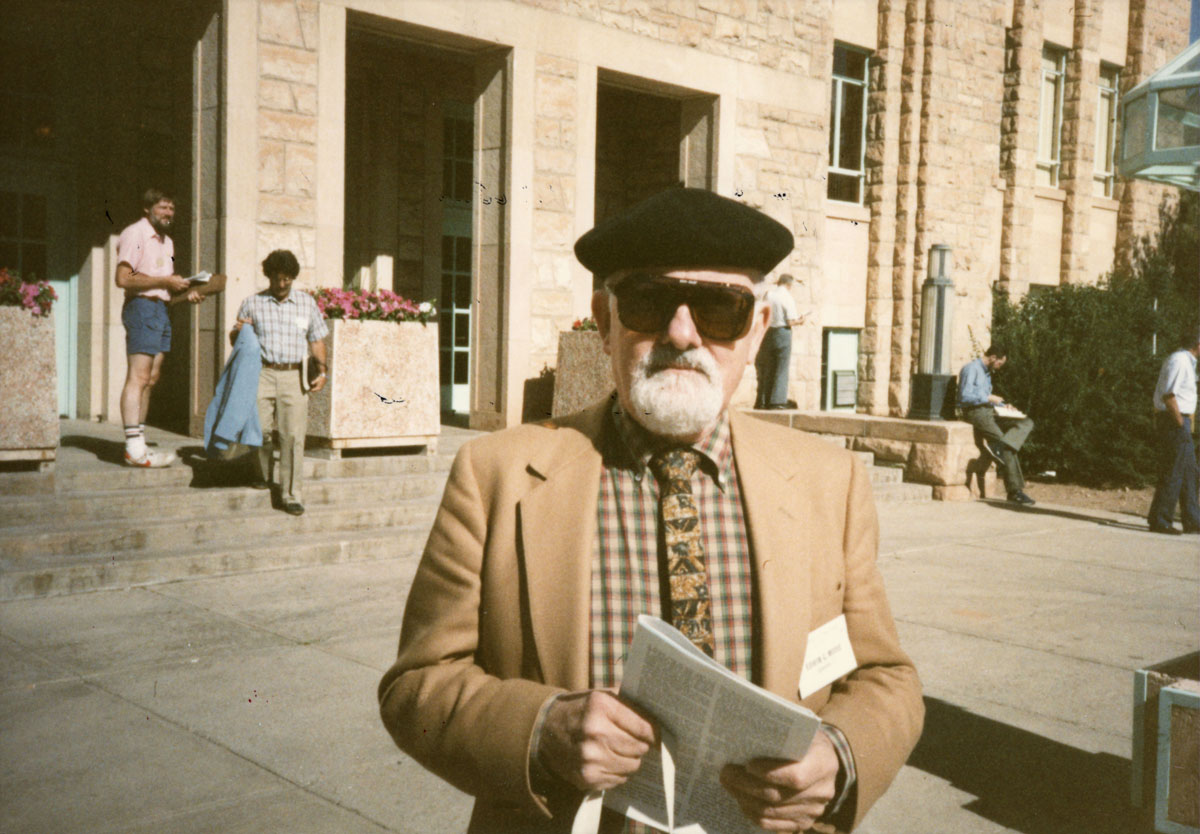
Edwin E. Moise (1918-1998) was photographed by Halmos in August of 1985 at the AMS-MAA Joint Summer Meetings at the University of Wyoming in Laramie, Wyoming. After serving as a crytanalyst during World War II, Moise earned his Ph.D. in general topology in 1947 from the University of Texas at Austin under advisor R. L. Moore. According to fellow Moore Ph.D. student Richard Anderson, Moise’s thesis, in which he constructed and named the pseudoarc, was one of the best of the 50 dissertations advised by Moore (see “Interview”). Moise was on the faculty at the University of Michigan from 1947 to 1960, and then spent two years at the Institute for Advanced Study (IAS) in Princeton, New Jersey, where he obtained his most famous mathematical result, proving that every 3-manifold could be triangulated. He was a professor at Harvard University in Cambridge, Massachusetts, from 1961 to 1971 and at Queens College in Queens, New York, from 1971 to 1987. During the 1960s, Moise participated in the “New Math” project in the U.S. and wrote geometry textbooks for students and teachers. His first Ph.D. student was James Munkres (University of Michigan, 1956) of topology textbook fame and his second Ph.D. student was Ross Finney (UM, 1962) of calculus textbook fame. Moise was president of the MAA during 1967-68. (Sources: Mathematics Genealogy Project; MAA Presidents; “An Interview with Edwin Moise,” Topology Atlas, April 10, 2000; ICMI Biography)

Halmos photographed topologist Deane Montgomery (1909-1992) in August of 1985 at the AMS-MAA Joint Summer Meetings at the University of Wyoming in Laramie. Montgomery earned his Ph.D. in point-set topology in 1933 from the University of Iowa. After one year each at Harvard and Princeton (one year after the Institute for Advanced Study was founded), he taught at Smith College in Northampton, Massachusetts, from 1935 to 1946; then, after two years at Yale University, he became a permanent faculty member at the Institute for Advanced Study (IAS) in 1948. He was president of the AMS during 1961 and 1962 and president of the International Mathematical Union from 1974 to 1978. During the 1930s, Montgomery turned from point-set topology to transformation groups. He is best known for his contributions to the solution of Hilbert’s Fifth Problem, solving it in dimension 3 in 1948 and in the finite-dimensional case in 1952. The problem was solved in 1952 by Andrew Gleason, Montgomery, Leo Zippin, and Hidehiko Yamabe, with Gleason providing the final piece of the solution. (Sources: MacTutor Archive, AMS Presidents)

Halmos photographed Robert L. Moore (1882-1974) and Virginia Halmos (1915-2015) on January 20, 1970, at the University of Texas in Austin, Texas.
R. L. Moore earned his Ph.D. in 1905 from the University of Chicago with the dissertation, “Sets of Metrical Hypotheses for Geometry,” written under Oswald Veblen and E. H. Moore (no relation). After one year at the University of Tennessee, two years at Princeton, three years at Northwestern University in Evanston, Illinois, and nine years at the University of Pennsylvania in Philadelphia, he returned to his alma mater, the University of Texas at Austin, in 1920. His research was in geometry and point-set topology, but he is even better known for the teaching method known as the “Moore Method,” which is still in use today. In Moore’s version of his Method, a group of students whose background knowledge in the given course topic was as uniform as possible would compete (and, in a restricted sense, cooperate) to prove as many of the theorems in that area, often geometry or point-set topology, as possible. He first taught a geometry course using this method at the University of Pennsylvania. During his career, Moore advised 50 Ph.D. students, the first three at the University of Pennsylvania and the rest at the University of Texas, from which he was forced to retire at the age of 86. He was president of the AMS during 1937-38. (Sources: MacTutor Archive, Mathematics Genealogy Project, AMS Presidents)
Virginia Halmos married Paul Halmos (1916-2006) in 1945. Virginia and Paul Halmos have been great friends of the MAA at least since the 1980s, when Paul served as editor of the MAA’s flagship journal, The American Mathematical Monthly. In the early 2000s, they contributed funds to restore the carriage house on the grounds of the building housing the MAA national offices in Washington, D.C., and to convert it to the MAA Carriage House Conference Center, completed in 2007 and now in operation. After Paul’s death in 2006, Virginia Halmos contributed his mathematical papers and his photograph collection to the Archives of American Mathematics at the University of Texas at Austin and provided funding to digitize the collection, a project that is now in progress. She continued to live in Los Gatos, California, near San Jose, where she and Paul moved in 1985 when he accepted his friend Gerald Alexanderson’s offer of a position in the mathematics department at Santa Clara University, until her death in January of 2015. (Source: MAA News: "Virginia Halmos Dies at Age 99")
For an introduction to this article and to the Paul R. Halmos Photograph Collection, please see page 1. Watch for a new page featuring six new photographs each week during 2012.
Regarding sources for this page: Information for which a source is not given either appeared on the reverse side of the photograph or was obtained from various sources during 2011-12 by archivist Carol Mead of the Archives of American Mathematics, Dolph Briscoe Center for American History, University of Texas, Austin.
Who's That Mathematician? Paul R. Halmos Collection - Page 36
For more information about Paul R. Halmos (1916-2006) and about the Paul R. Halmos Photograph Collection, please see the introduction to this article on page 1. A new page featuring six photographs will be posted at the start of each week during 2012.

Halmos photographed number theorist Louis Mordell (1888-1972) in April of 1961 in Chicago, Illinois. Halmos left Chicago after the 1960-61 academic year. Mordell had retired from the Sadleirian Chair at Cambridge University in 1953, but he was still a very active mathematician and, according to O’Connor and Robertson of the MacTutor Archive, an enthusiastic traveler who “delighted in” accepting visiting professorships and invitations to speak at conferences and universities around the world. (Source: MacTutor Archive)
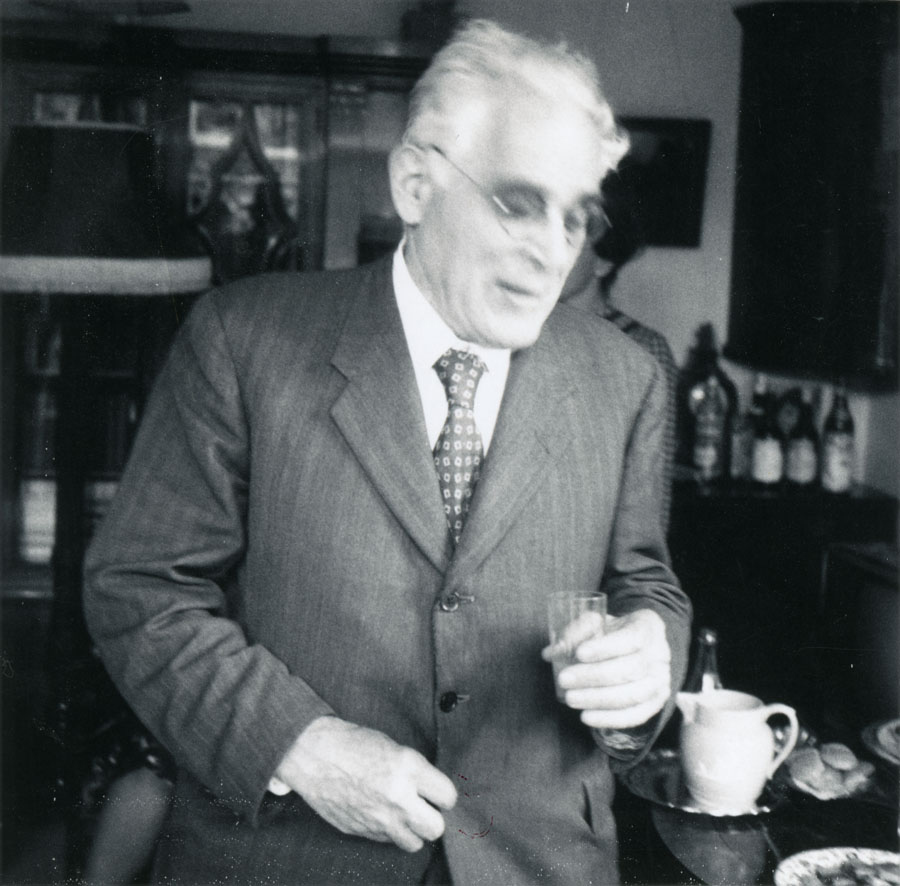
Louis Mordell was photographed again by Halmos on June 6, 1968, in Cambridge, England. As a theretofore self-taught and self-funded 18-year-old mathematician from Philadelphia, Pennsylvania, Mordell had traveled to Cambridge in December of 1906 to compete (successfully) for a scholarship to study mathematics at Cambridge University. Although he was disappointed with himself for finishing as only the Third Wrangler and although Cambridge did not offer a Ph.D. degree at the time, Mordell remained at Cambridge to begin his research career. From the start, he studied the indeterminate equations for which he may be best known, those of the form y2 = x3 + k, now sometimes called Mordell equations. He also is known for proving conjectures of Ramanajan (on the tau function) and Poincaré (the finite basis theorem), and for making the Mordell Conjecture, proved by Gerd Faltings in 1983. Mordell held positions at Birkbeck College in London (1913-20, with war work for the Ministry of Munitions), Manchester College of Technology (1920-22), University of Manchester (1922-45), and Cambridge University (1945 onward), where he succeeded G. H. Hardy in the Sadleirian Chair. His first Ph.D. student at Cambridge was number theorist J.W.S. (Ian) Cassells, who earned his Ph.D. in 1949 and whose photograph appears on page 9 of this collection. (Sources: MacTutor Archive, Mathematics Genealogy Project)
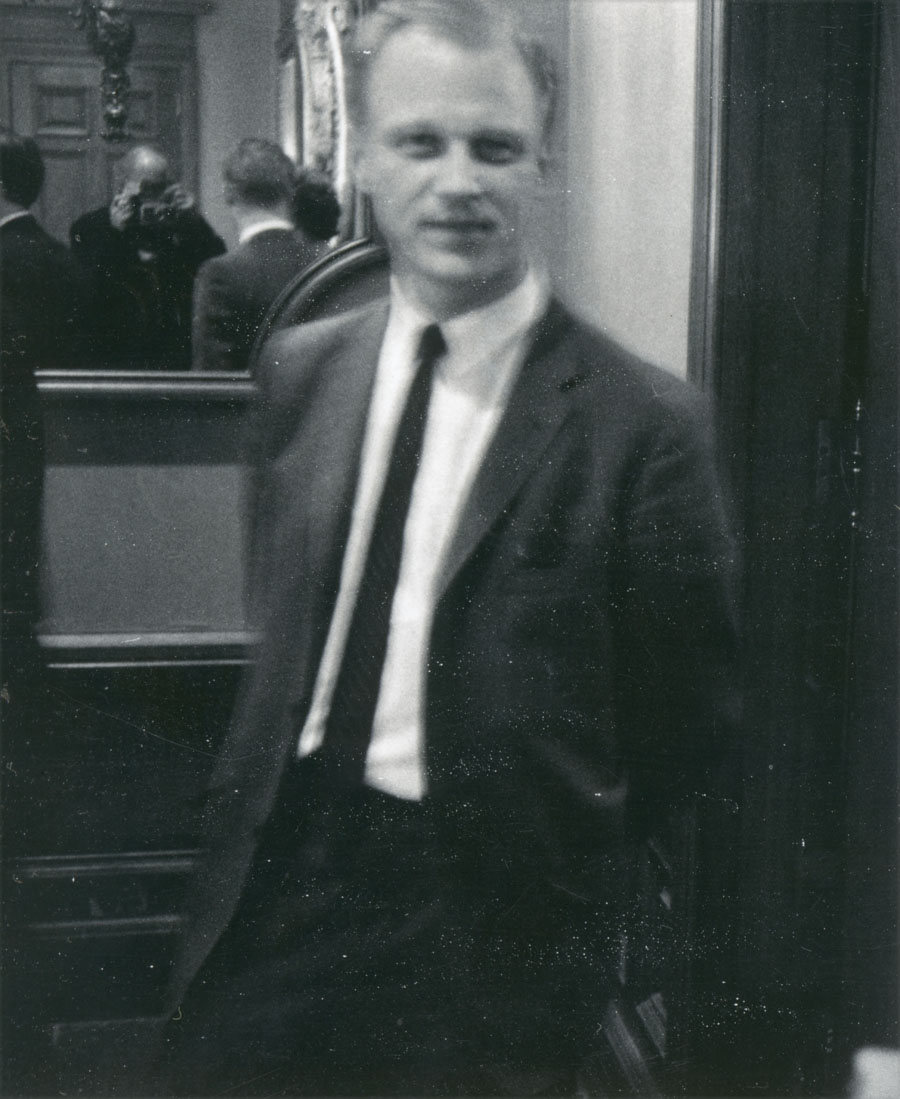
Halmos photographed Jürgen Moser (1928-1999) on January 23, 1969, at the Joint Mathematics Meetings in New Orleans, Louisiana, and managed to catch himself as well in the mirror. After surviving the Russian siege of Königsberg, Germany, in 1945, and several harrowing escapes from and re-entries into Königsberg (or Kaliningrad, as it was renamed by the Russians in 1946) in 1946-47, Moser made his way to Göttingen, Germany, in 1947. He earned his Ph.D. from Göttingen University in 1952 with a dissertation on the spectral theory of differential equations. He spent 1952-53 at Göttingen, 1953-54 at New York University, 1954-55 at Göttingen, and 1955 onward at New York University with a few years at the Massachusetts Institute of Technology (MIT) in the late 1950s. Moser directed the Courant Mathematical Institute at New York University in the late 1960s, but he was best known as a leading researcher in differential equations, spectral theory, celestial mechanics, and stability theory. In 1980, the Eidgenössische Technische Hochschule (ETH) in Zurich, Switzerland, wanting to have the leading dynamical systems researcher in the world on its faculty, enticed Moser to take a position there and eventually to become director of its Mathematics Research Institute (1984-1995). Moser was president of the International Mathematical Union from 1983 to 1986. In 1989, he delivered his last major address to the International Congress of Mathematicians in Berlin on “Dynamical Systems: Past and Present.” (Sources: MacTutor Archive, Mathematics Genealogy Project)
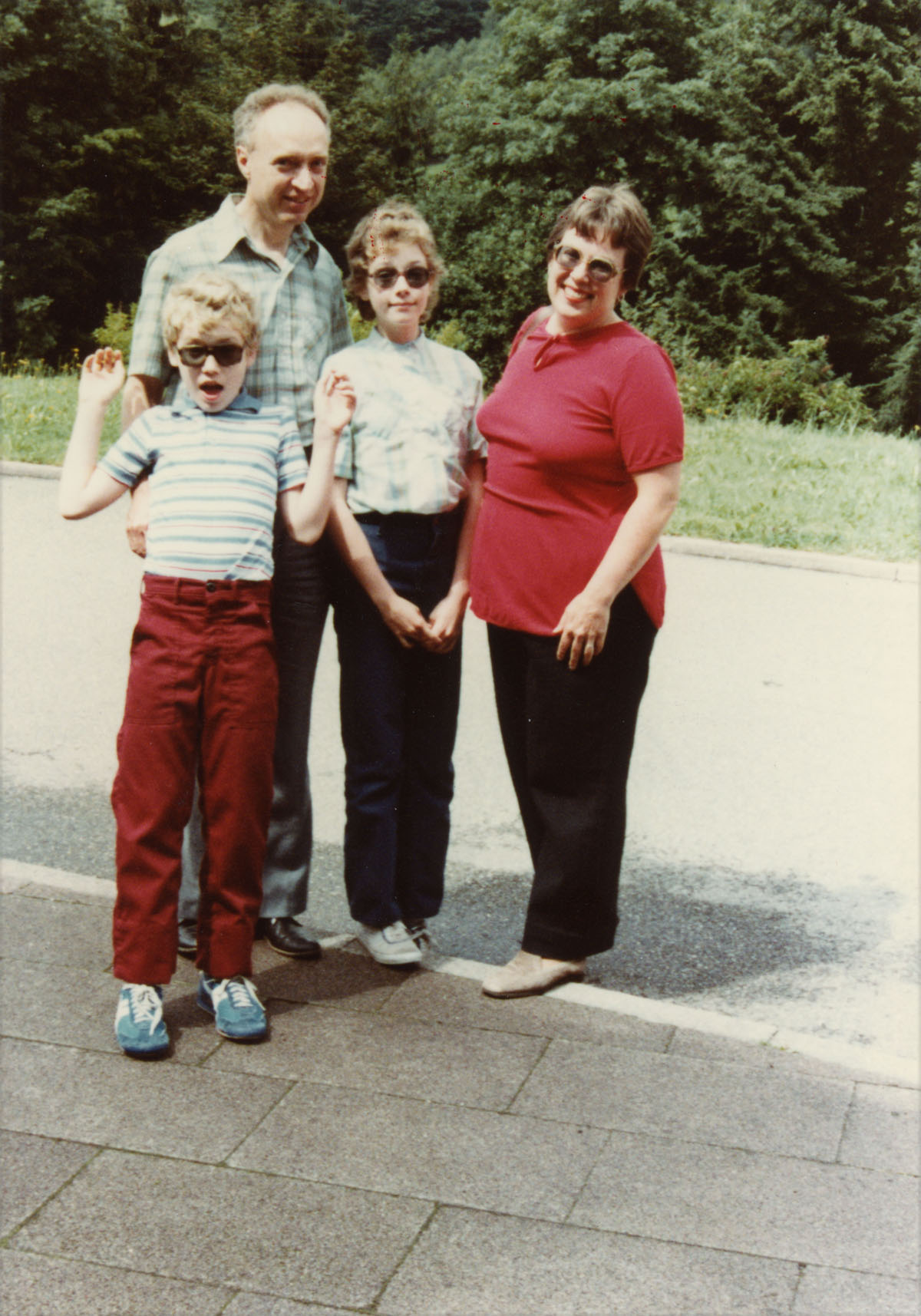
Benjamin Muckenhoupt and his family were photographed by Halmos in August of 1980 at the Oberwolfach Conference Center in Germany. From left to right in the photo are Carl, Benjamin, Meg, and Mary Kay Muckenhoupt. Ben Muckenhoupt earned his Ph.D. in 1958 from the University of Chicago with the dissertation, “On Certain Singular Integrals,” written under Antoni Zygmund. He and Halmos probably first met at Chicago, where Halmos was on the faculty from 1946 to 1961. In 1980, at the time of this photo, both were attending a conference on approximation theory and related areas of functional analysis co-organized by Paul Butzer and Béla Szökefalvy-Nagy (see page 9 of the collection for a photograph of Butzer and Szökefalvy-Nagy). Muckenhoupt spent most of his career at Rutgers University in New Brunswick, New Jersey, where he is now Professor Emeritus of Mathematics and lists his interests are harmonic analysis and weighted norm inequalities. (Sources: Mathematics Genealogy Project, Rutgers University Mathematics)
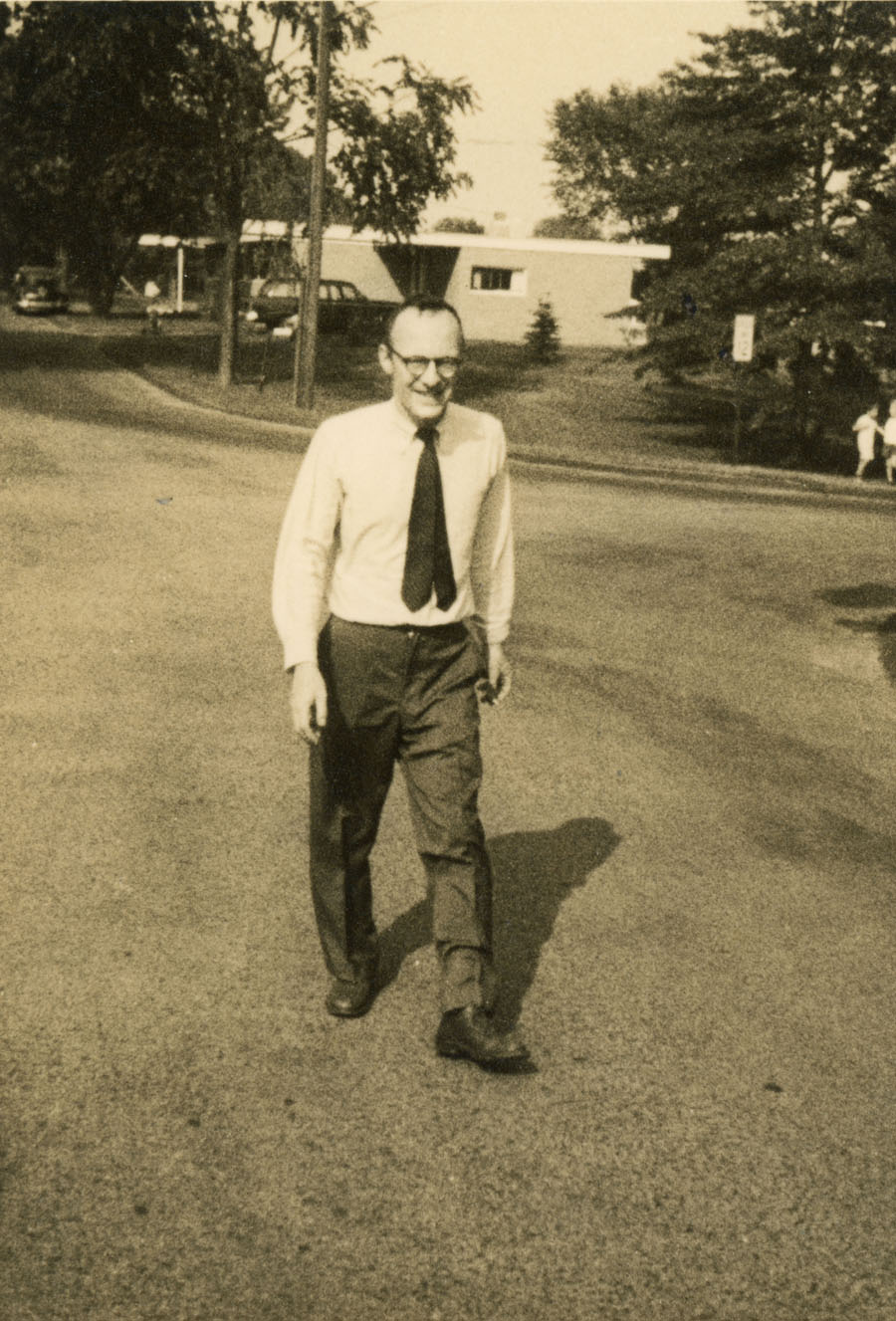
Halmos photographed logician John R. Myhill (1923-1987) in 1958. Myhill earned his Ph.D. in philosophy from Harvard University in 1949 with the dissertation, “A Semantically Complete Foundation for Logic and Mathematics,” written under advisors Willard Quine and Lynn Loomis. He was on the philosophy faculty at the University of California, Berkeley, from 1954 to 1960 and at Stanford University from 1960 to 1963. After having spent 1957-59 and 1963-64 at the Institute for Advanced Study in Princeton and 1964-66 as Visiting Professor of Mathematics at the University of Illinois, he joined the mathematics faculty at the State University of New York, Buffalo, in 1966 and spent the rest of his career there. He may be best known for the Russell-Myhill Paradox, about which you can read more at the Internet Encyclopedia of Philosophy. (Sources: Mathematics Genealogy Project; “John R. Myhill (1923-1987),” History and Philosophy of Logic 8:2 (1987), pp. 243-244 (available from Taylor & Francis Online); Internet Encyclopedia of Philosophy)
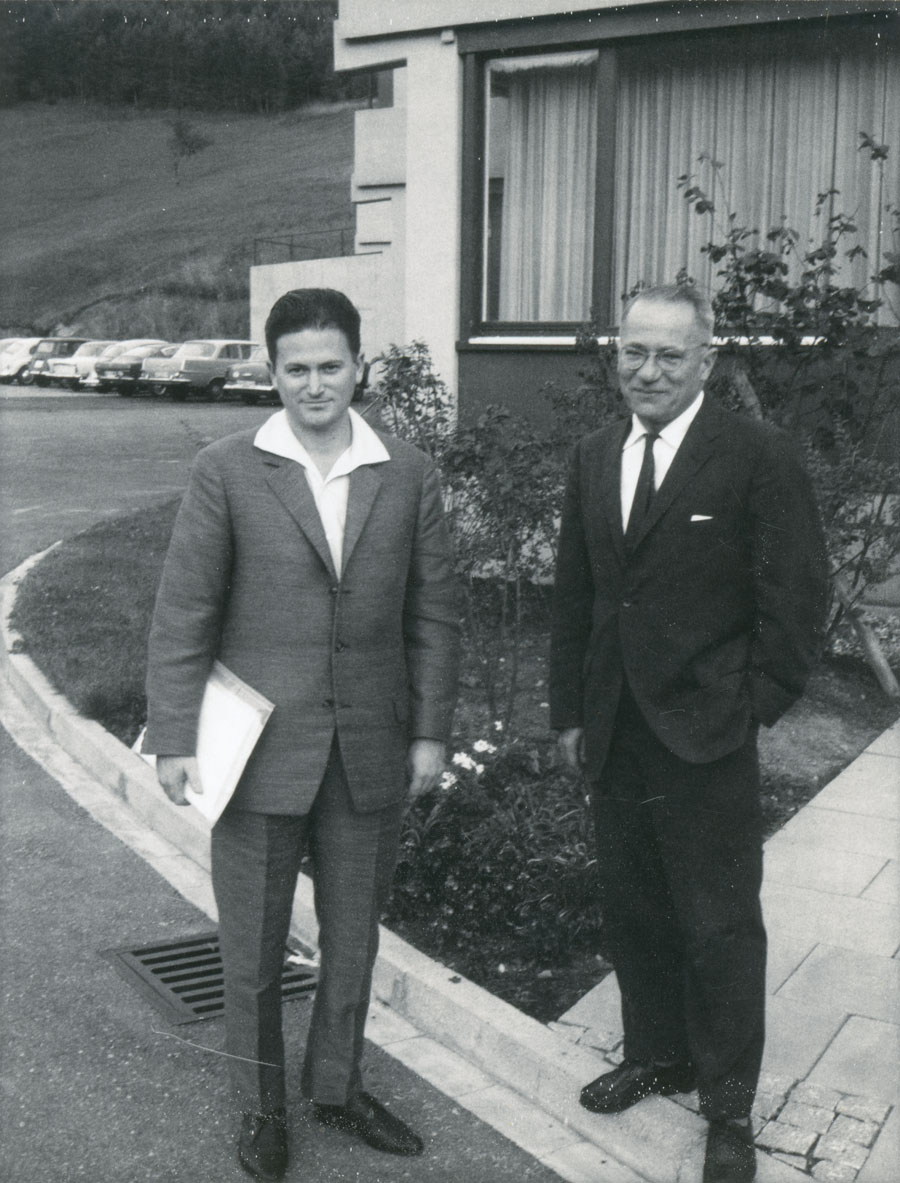
Halmos photographed Ivan Singer (left) and Béla Szökefalvy-Nagy (1913-1998) on July 22, 1968, at the Oberwolfach Conference Center in Germany. Singer, Szökefalvy-Nagy, and Halmos were participating in the conference, "Abstract spaces and approximation," organized by Szökefalvy-Nagy and Paul Butzer (see page 9 of this collection for a photograph of Butzer). Similar conferences were held at Oberwolfach every three years until 1983. Singer wrote recently that, while he was a Visiting Professor at the University of Iowa in 1969, he traveled during during the Winter Break to the West Coast of the U.S. to give a series of talks and to Honolulu, Hawaii, for one week to work with Halmos, who was department chair at the Univeristy of Hawaii at the time. Watch for photographic evidence of this visit on page 58 or so!
Singer now is Research Professor and Honorary Member of the Institute of Mathematics of the Romanian Academy in Bucharest. He is a functional analyst currently researching geometry in semimodules, and also interested in optimization, convex and discrete geometry, and operations research. Much of his research during the 1960s and 1970s, as evidenced by his published papers and monographs during this time, was on approximation theory. Photographs of Szökefalvy-Nagy also appear on page 9 and page 14 of the collection, where you can read more about him. (Sources: Institute of Mathematics of the Romanian Academy, Ivan Singer (Dec. 2012))
For an introduction to this article and to the Paul R. Halmos Photograph Collection, please see page 1. Watch for a new page featuring six new photographs each week during 2012.
Regarding sources for this page: Information for which a source is not given either appeared on the reverse side of the photograph or was obtained from various sources during 2011-12 by archivist Carol Mead of the Archives of American Mathematics, Dolph Briscoe Center for American History, University of Texas, Austin.
Who's That Mathematician? Paul R. Halmos Collection - Page 37
For more information about Paul R. Halmos (1916-2006) and about the Paul R. Halmos Photograph Collection, please see the introduction to this article on page 1. A new page featuring six photographs will be posted at the start of each week during 2012.
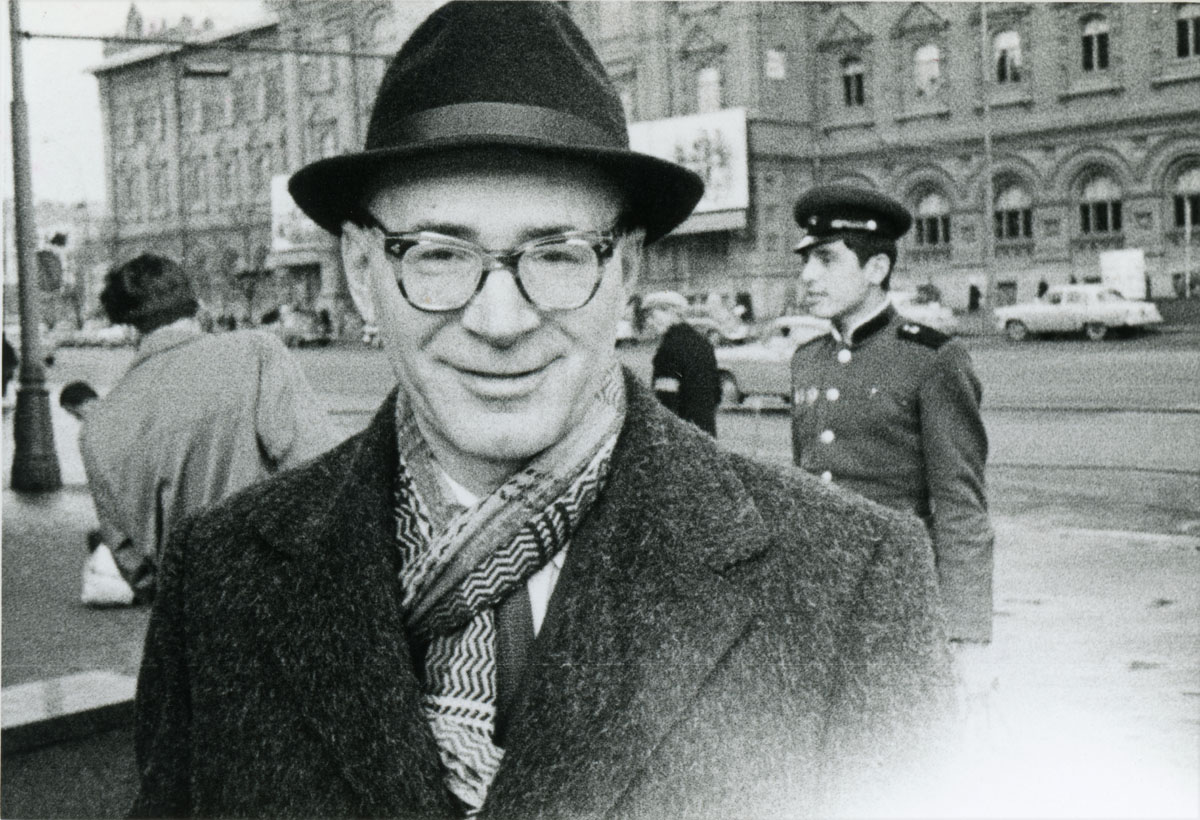
Halmos photographed functional analyst Mark Naimark (1909-1978) in May of 1965 in Moscow, Russia. The two met when Halmos visited mathematicians in Moscow and Leningrad (St. Petersburg) for one month during April and May of 1965 as part of a 1964-65 exchange program between the scientific academies of the U.S. and U.S.S.R. that sent 20 scientists from each country to the other. In his description of this visit in his I Want to Be a Mathematician: An Automathography (Springer, 1985), Halmos described Naimark fondly as beloved by all and “everybody’s uncle” in addition to being a “famous mathematician and a very good one” (p. 310). Born in Odessa, Ukraine, Naimark earned his Ph.D. in 1936 from Odessa State University with the dissertation, “The Theory of Normal Operators in Hilbert Space,” written under advisor Mark Krein. In 1938, he moved to the Steklov Mathematical Institute in Moscow, where he began a collaboration with Israil Gelfand that included papers on normed rings (Banach algebras), unitary representations, and related topics. After holding a variety of academic positions from 1941 to 1962, Naimark finally obtained a permanent post at the Steklov Institute in 1962, which he held for the rest of his life. (Sources: MacTutor Archive, Mathematics Genealogy Project)
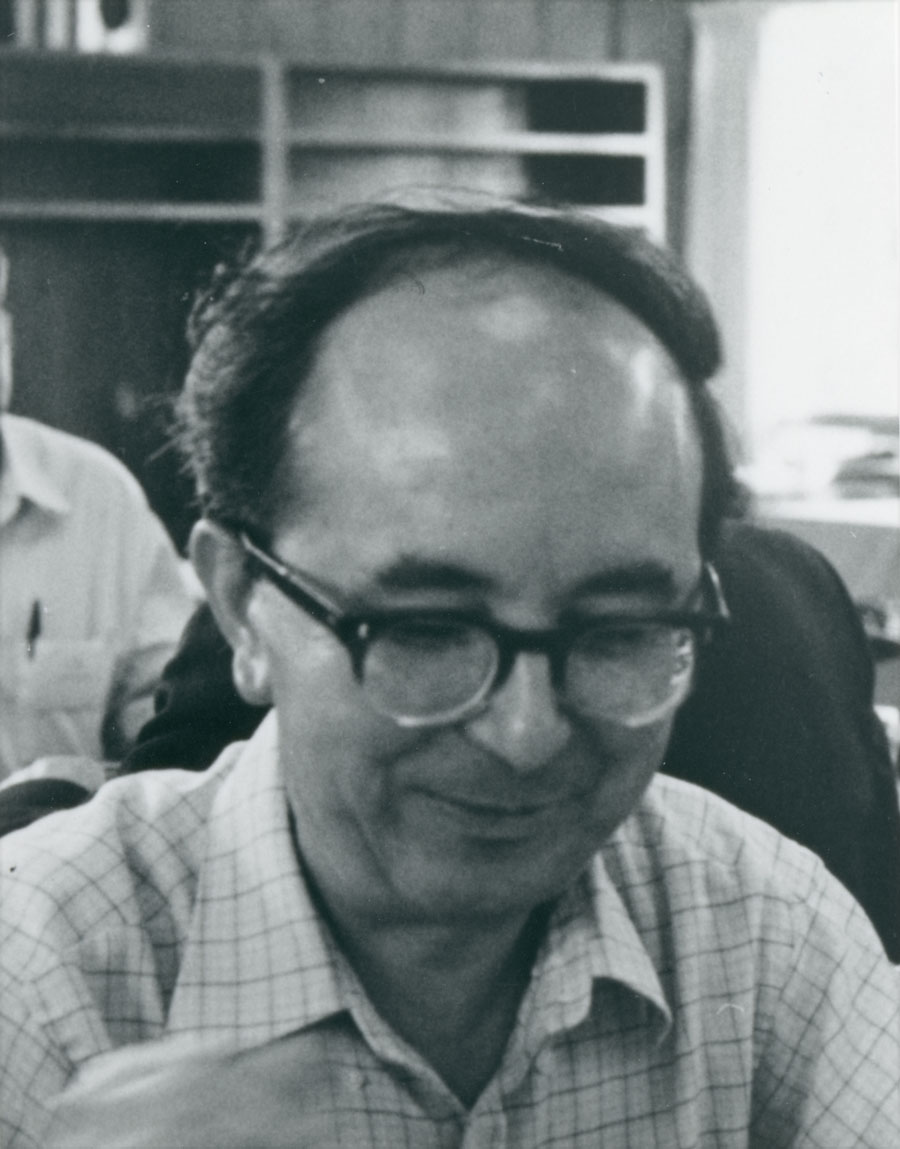
Functional analyst Isaac Namioka was photographed by Halmos in 1985. Namioka earned his Ph.D. in 1956 from the University of California, Berkeley, with the dissertation “On Partially Ordered Linear Topological Spaces,” written under John L. Kelley (see page 27 of this collection for a photograph of Kelley). He joined the mathematics faculty at the University of Washington in Seattle in 1963, where he changed his research focus to functional analysis and is now Professor Emeritus of Mathematics. (Sources: Mathematics Genealogy Project, University of Washington Department of Mathematics, Isaac Namioka (Oct. 2012))
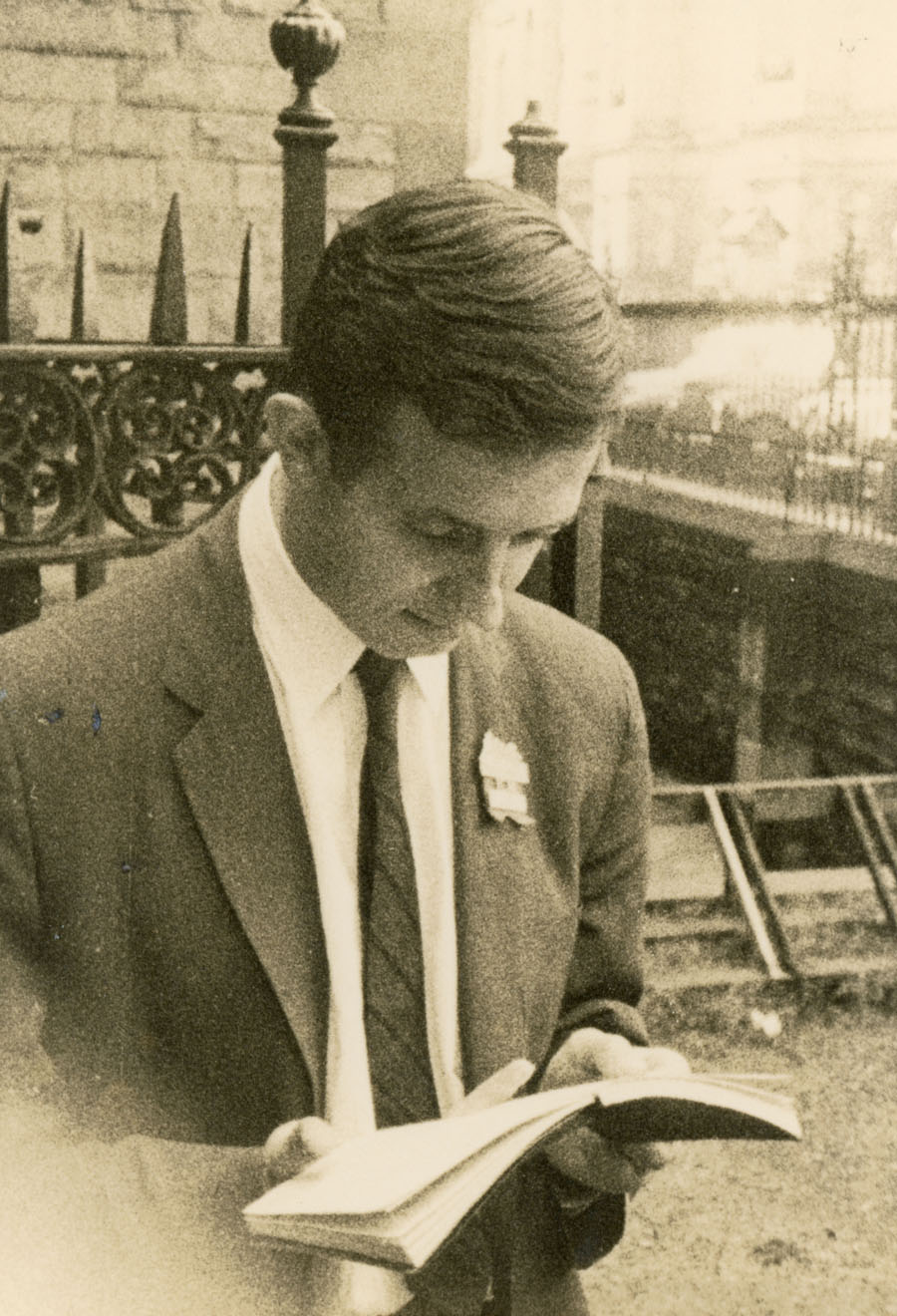
Halmos photographed John Nash (1928-2015) at the International Congress of Mathematicians held in Edinburgh, Scotland, in 1958. John Forbes Nash, Jr., earned his Ph.D. in 1950 from Princeton University with the dissertation “Non-Cooperative Games,” written under advisor Albert Tucker. He was awarded the Nobel Prize in Economics in 1994 for a paper on game theory he had written in 1949, before he earned his doctorate. In this paper and in his doctoral dissertation, he established the mathematical principles of game theory, including the Nash equilibrium. He also invented a game very similar to “Hex” that the Princeton graduate students called “Nash”. Before devoting himself to game theory, he had proved that “any compact real manifold is diffeomorphic to a component of a real-algebraic variety” (MacTutor). While he was on the faculty at MIT from 1951 to 1959, he published three important papers that earned him consideration for the 1958 Fields Medal:
- “Real algebraic manifolds” (1954), which included his earlier result;
- “The imbedding problem for Riemannian manifolds” (1956); and
- “Continuity of solutions of parabolic and elliptic equations” (1958).
As has been well publicized, Nash’s life from 1959 through the 1990s was dominated by schizophrenia, but by the mid-1990s he seemed to have gained the upper hand in his battle with the disease. Long based at Princeton University, by 2012 he had posted at his undated homepage, “My current research interests include logic, game theory, and cosmology and gravitation.” Nash and his wife Alicia were killed in an auto accident on 23 May 2015 in New Jersey as they were returning home from Norway, where John had accepted the 2015 Abel Prize. (Sources: MacTutor Archive, Mathematics Genealogy Project, Autobiography at Nobelprize.org, Home Page of John F. Nash, Jr. (accessed Oct. 2012), John Nash (Nov. 2012))
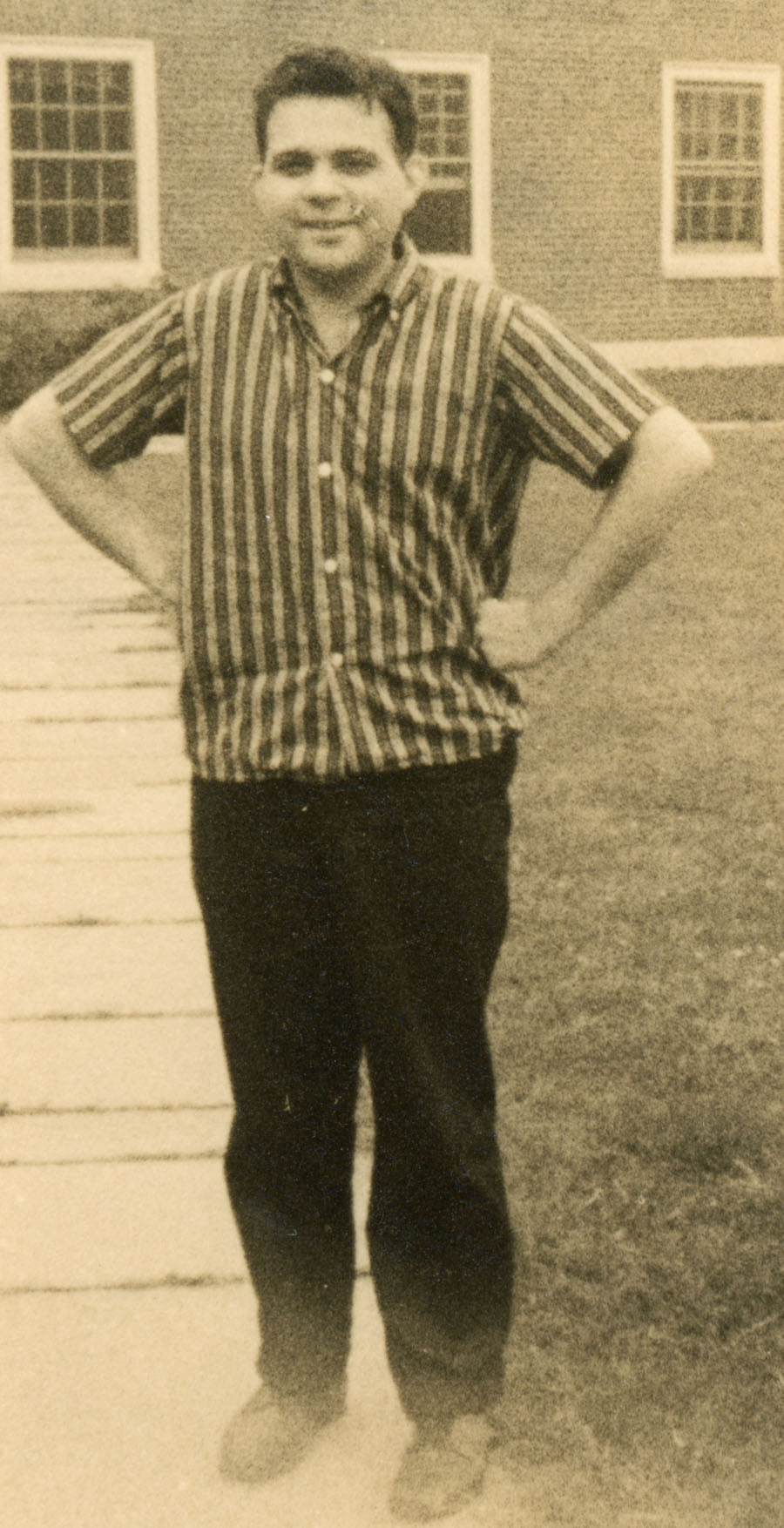
Logician Anil Nerode was photographed by Halmos in 1958, probably at the Institute for Advanced Study in Princeton, N.J., where both spent the 1957-58 academic year. After earning his undergraduate degree from the University of Chicago, Nerode received his Ph.D. in logic in 1956 from Chicago with the dissertation “Composita, Equations and Recursive Definition,” written under advisor Saunders Mac Lane (see page 32 of this collection for photos of Mac Lane). Regarding his choice of advisor, he noted later that Halmos (who was on the faculty at Chicago from 1946 to 1961) was “creating his version of algebraic logic at the time,” but he decided that Mac Lane would be a better advisor for recursive function theory. He spent an extra year (1956-57) at Chicago and then followed Halmos’ advice to participate in the NSF Summer Institute in Logic held at Cornell University in Ithaca, New York, in 1957, which he described as a “signal event” in his life. Nerode spent 1957-58 at the Institute for Advanced Study working with Kurt Gödel and 1958-59 at UC Berkeley working with Alfred Tarski. In 1959, he joined the mathematics faculty at Cornell, where he helped found the graduate program in computer science beginning in 1964, advised 49 Ph.D. students from 1964 to 2009 (and three more elsewhere), and currently is Goldwin Smith Professor of Mathematics. Be sure to visit Nerode’s online photo gallery of logicians and others! (Sources: Mathematics Genealogy Project; Cornell University Department of Mathematics, especially Nerode’s “Autobiography: My Higher Education” (1999/2006); IAS; Anil Nerode (Oct. 2012))
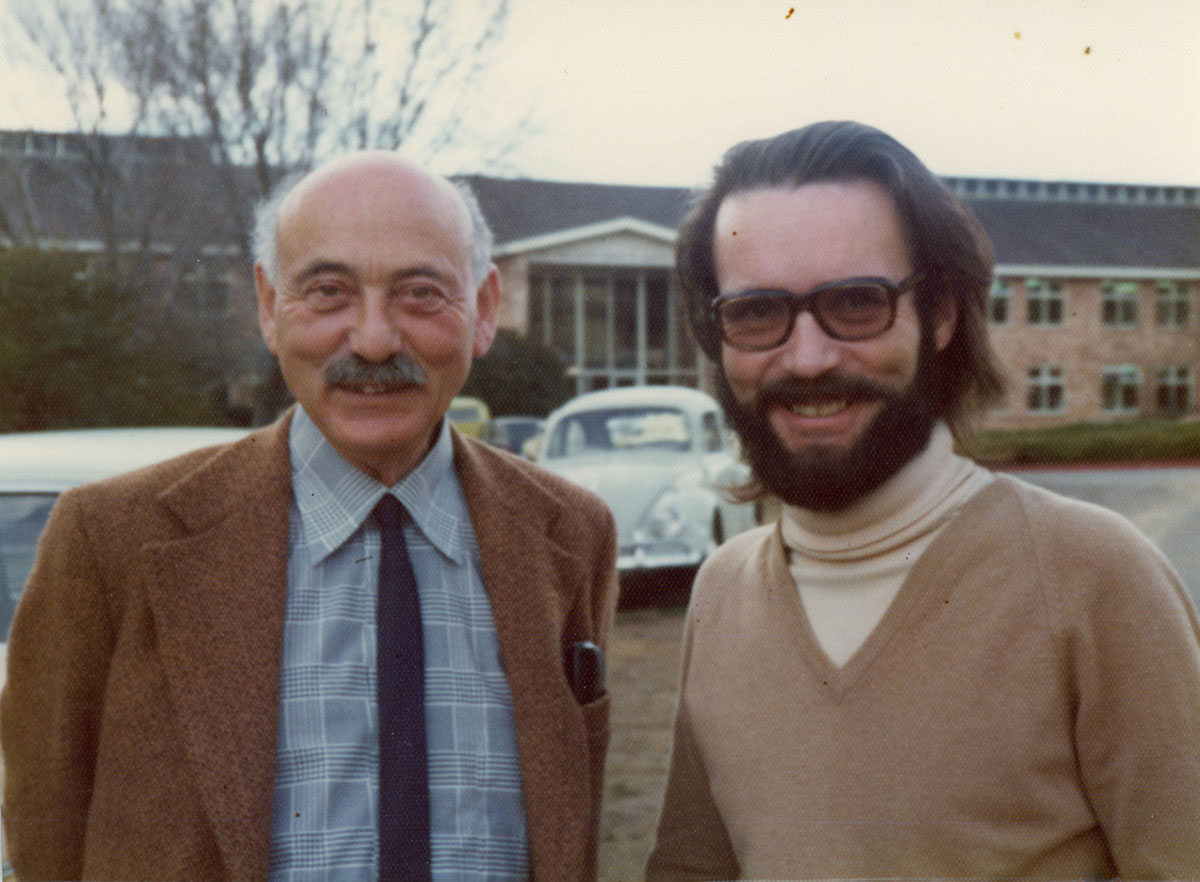
Halmos photographed group theorists Bernhard Neumann (1909-2002), left, and László “Laci” Kovács in June of 1975 in Canberra, Australia.
Neumann earned Ph.D.s in group theory from the University of Berlin in 1932 under Issai Schur and, after fleeing Hitler’s Germany, from Cambridge University in 1935 under Philip Hall. After temporary stints at the universities of Cardiff and Hull and wartime service in the British Intelligence Corps, he joined the faculty at the University of Manchester in 1948. He spent the 1961-62 academic year at the Courant Institute at New York University. In 1962, he accepted a position as professor and department head at the Australian National University in Canberra, where he remained for the rest of his career and life. In 2001, O’Connor and Robertson of the MacTutor Archive wrote, “Neumann is one of the leading figures in group theory who has influenced the direction of the subject in many different ways.” They listed as areas to which Neumann contributed many of the topics in his 1960 Lectures on topics in the theory of infinite groups, including universal algebras, group presentations, word problems, free groups, varieties of groups, Cartesian products, wreath products, embeddings of nilpotent and soluble groups, and Hopfian groups. Neumann collaborated with his wife Hanna Neumann and his son Peter Neumann, both group theorists, and with Graham Higman, among others. He also wrote historical papers on the mathematicians Ada Lovelace (1815-52) and August De Morgan (1806-71), and was President of the Australian Mathematical Society from 1966 to 1968. (Sources: MacTutor Archive, Mathematics Genealogy Project, Australian Academy of Science Memoir)
Neumann’s last Ph.D. student at the University of Manchester was László Kovács, who was awarded the Ph.D. in 1961 for the dissertation “Groups with Automorphisms of Special Kinds.” Laci Kovács has spent most of his career at the Australian National University in Canberra, where he became Retired Visiting Fellow in 2001. He received the B. H. Neumann Award from the Australian Mathematics Trust, presented by Neumann himself, in 1993. (Sources: Mathematics Genealogy Project, Australian National University Mathematical Sciences Institute, Australian Mathematics Trust)
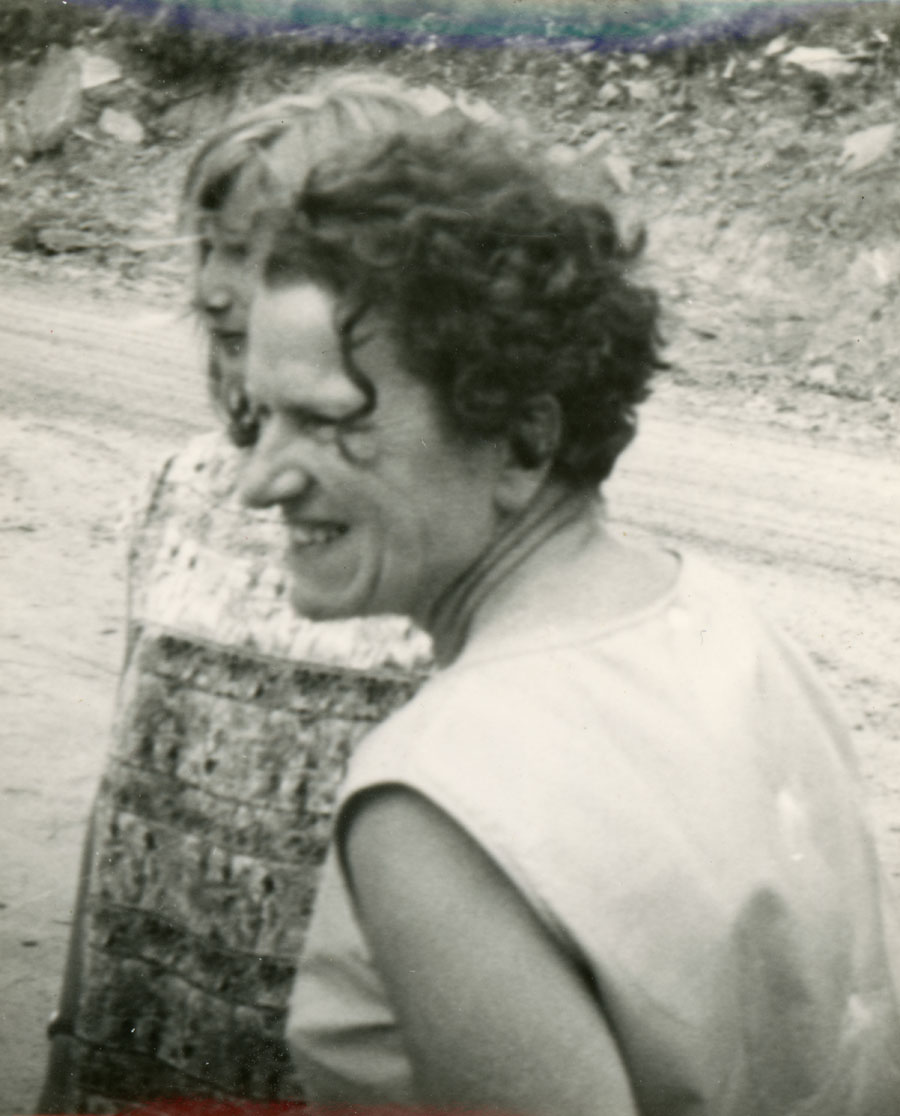
Halmos photographed group theorist Hanna Neumann (1914-1971), front, with Philippa Wall, in January of 1964 in Sydney, Australia, at a Summer Research Institute of the Australian Mathematical Society. At the time, Neumann had been a faculty member at the Australian National University in Canberra for just a few months, having arrived in Australia in August of 1963. Philippa Wall was the daughter of group theorist Gordon "Tim" Wall of the University of Sydney. Laci Kovács (see his photograph above) confirmed recently that:
The 1964 Summer Research Institute was organized by Tim Wall and Halmos was one of the principal speakers; the Walls provided much hospitality to participants, so Halmos would certainly have visited their family home then.
After undergraduate study at the University of Berlin, Johanna “Hanna” von Caemmerer began graduate study at Göttingen University in 1936. In 1938, she moved to England to marry Bernhard Neumann, pictured above, whom she had met when he was a graduate student at the University of Berlin. In 1940, she resumed graduate study at Oxford University and, in 1944, Hanna Neumann earned her D.Phil. in group theory with the dissertation, “Subgroup structure of free products of groups with an amalgamated subgroup,” written under advisor Olga Taussky-Todd. From 1946 to 1958, she was on the faculty at the University of Hull. In 1958, she accepted a position at the University of Manchester, but soon was on the move again: in 1961-62 she spent the academic year at the Courant Institute of Mathematical Sciences at New York University. In 1963, after returning to Manchester for the 1962-63 academic year, she accepted an invitation to join the mathematics faculty at the Australian National University in Canberra, where she remained for the rest of her career and life. In all of her academic posts Neumann was recognized as an excellent researcher and teacher, who also provided incredible amounts of guidance and service to students, colleagues, school teachers, and professional societies in both Britain and Australia. According to O’Connor and Robertson of the MacTutor Archive, of all of her research in group theory, Neumann “is best known for her work on varieties of groups” and “her book Varieties of Groups (1967) is a classic.” (Sources: MacTutor Archive, Mathematics Genealogy Project, Australian Academy of Science Memoir, Laci Kovács (Jan. 2013))
For an introduction to this article and to the Paul R. Halmos Photograph Collection, please see page 1. Watch for a new page featuring six new photographs each week during 2012.
Regarding sources for this page: Information for which a source is not given either appeared on the reverse side of the photograph or was obtained from various sources during 2011-12 by archivist Carol Mead of the Archives of American Mathematics, Dolph Briscoe Center for American History, University of Texas, Austin.
Who's That Mathematician? Paul R. Halmos Collection - Page 38
For more information about Paul R. Halmos (1916-2006) and about the Paul R. Halmos Photograph Collection, please see the introduction to this article on page 1. A new page featuring six photographs will be posted at the start of each week during 2012.
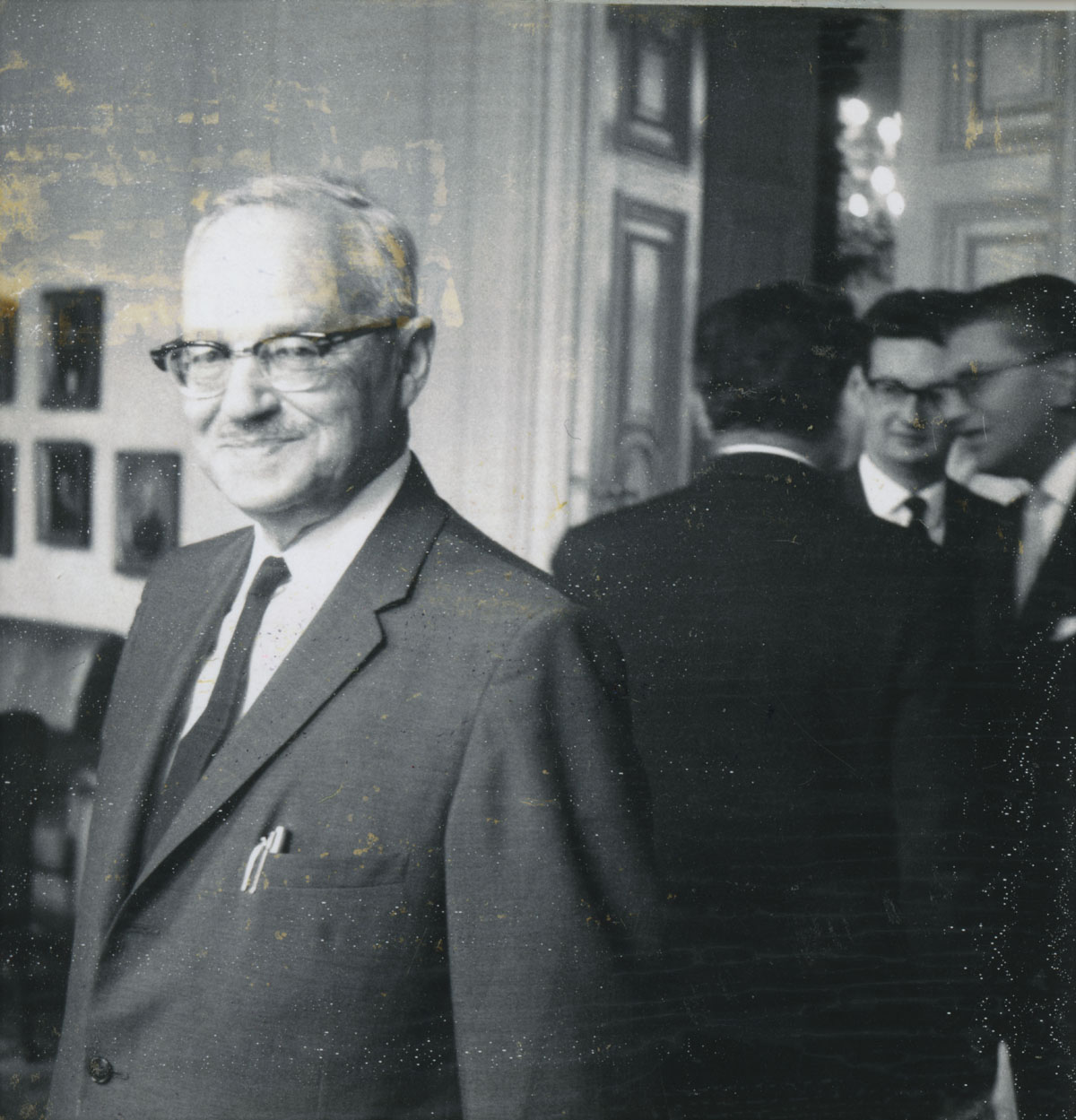
Halmos photographed statistician Jerzy Neyman (1894-1981) on June 7, 1966, in Budapest, Hungary. Neyman was born into a Polish family in what was then Russia and is now Moldova, and received his undergraduate education and some preparation for an academic career at Kharkov University in what was then Russia and is now Ukraine. He earned his Ph.D. in 1924 from the University of Warsaw, Poland, with a dissertation on applying statistics to agricultural experiments written under Waclaw Sierpinski. After study in London and Paris, he returned to Warsaw to set up a Biometric Laboratory at the Nencki Institute for Experimental Biology (1928). Neyman returned to England in 1934 to join the faculty at University College, London, where his friend and collaborator, Egon Pearson, son of Karl Pearson, was head of the applied statistics department. In 1938, he accepted a position at the University of California, Berkeley, where he set up and directed a Statistics Laboratory and eventually a separate statistics department. His (at least) 40 Ph.D. students at Berkeley (and one more at the University of London) included George Dantzig (see his photograph on page 11 of this collection) in 1946. (Sources: MacTutor Archive, Mathematics Genealogy Project, UC Berkeley Memorial)
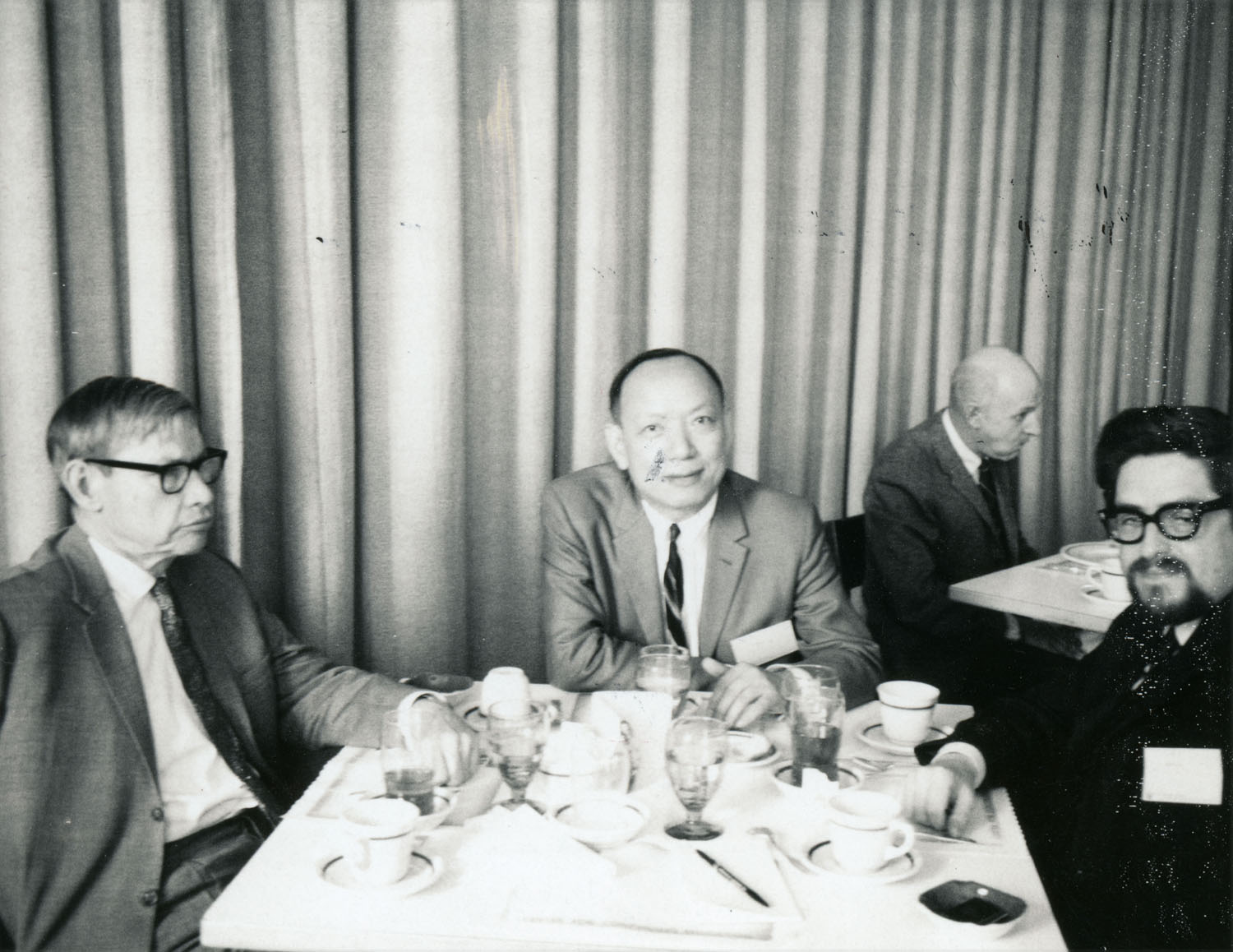
Marshall Stone (1903–1989), Shiing-Shen Chern (1911–2004), and Louis Nirenberg (1925–2020), left to right, were photographed by Halmos on May 22, 1968, in Chicago, Illinois. At the time, Stone was just ending his tenure at the University of Chicago (perhaps the event shown above was part of his retirement celebration?) and preparing to move to the University of Massachusetts; Chern was at the University of California, Berkeley; Nirenberg at the Courant Institute at New York University; and Halmos about to leave the University of Michigan to take up a position at the University of Hawaii. Halmos had been a faculty member at Chicago from 1946 to 1961 and Chern from 1949 to 1960, where both worked under department chair Stone until 1952 and then under department chair Saunders Mac Lane. Stone is pictured on page 4 of this collection, where you can read more about him. Another photograph of Chern appears on page 9 of this collection, where you can read more about him.
After undergraduate studies at McGill University in Montreal, Quebec, Canada, Louis Nirenberg earned his Ph.D. in 1949 from New York University, with the dissertation “The Determination of a Closed Convex Surface Having Given Line Elements,” which he published in 1953 as “The Weyl and Minkowski problems in differential geometry in the large.” Nirenberg remained at the Institute of Mathematical Sciences and Mechanics (which became the Courant Institute of Mathematical Sciences in 1964) at NYU after earning his Ph.D., advising at least 46 Ph.D. students of his own and directing the Institute for a short time. He became Emeritus Professor in 1999. O’Connor and Robertson of the MacTutor Archive quoted Joseph Cohn’s description of Nirenberg:
Louis Nirenberg is recognized throughout the world for his many important research contributions to mathematics, his marvelous lectures, and his lucid expository writing. His range of interest is very broad: differential equations, harmonic analysis, differential geometry, functional analysis, complex analysis, etc.
In 2010, Nirenberg won the first-ever Shiing-Shen Chern Medal, awarded by the International Mathematical Union, for “his role in the formulation of the modern theory of non-linear elliptic partial differential equations and for mentoring numerous students and postdocs in this area.” He received the Abel Prize in 2015. (Sources: MacTutor Archive, Mathematics Genealogy Project, ICM 2010 Prize Winners, NYU Courant)
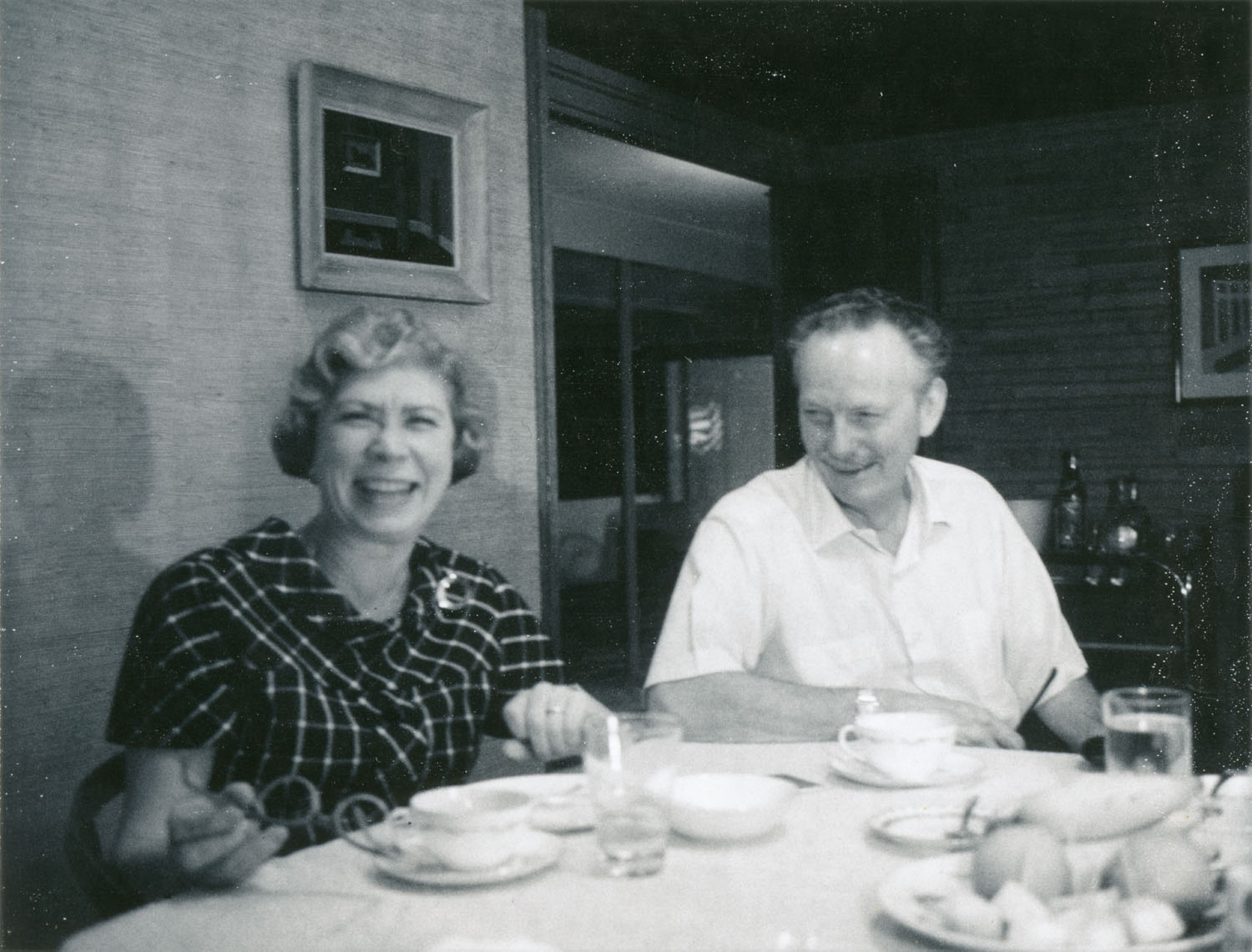
Halmos photographed Betty and Ivan Niven (1915–1999) on December 26, 1968, in Honolulu, Hawaii. Halmos spent the academic year 1968-69 at the University of Hawaii and he and his wife Virginia entertained many mathematical visitors at their home in Honolulu that year. Niven was a number theorist at the University of Oregon whose Erdős number was 1 and who wrote seven books in all, including the MAA books
- Numbers: Rational and Irrational (1961, the first book in the New Mathematical Library series), and
- Diophantine Approximations (1963, Niven’s 1960 MAA Hedrick Lectures, now available from Dover Publications)
and the textbook
- An Introduction to the Theory of Numbers (1960-1991, five editions).
After earning bachelors and masters degrees from the University of British Columbia in Vancouver, Canada, Niven earned his Ph.D. in 1938 from the University of Chicago with the dissertation, “A Waring Problem,” written under advisor Leonard Eugene Dickson. He studied for a year with Hans Rademacher at the University of Pennsylvania (1938–39), then spent three years at the University of Illinois (1939–42, probably just missing Halmos, who left Illinois in 1939) and five years at Purdue University (1942–47) before joining the faculty at the University of Oregon in 1947. In 1947, he also published a one-page proof of the irrationality of pi, the first such short proof. Ivan Niven was president of the MAA during 1983–84. The University of Oregon Mathematics Department honors his memory with its annual Ivan Niven Lectures. (Sources: University of Oregon obituary, Mathematics Genealogy Project, MAA Presidents)
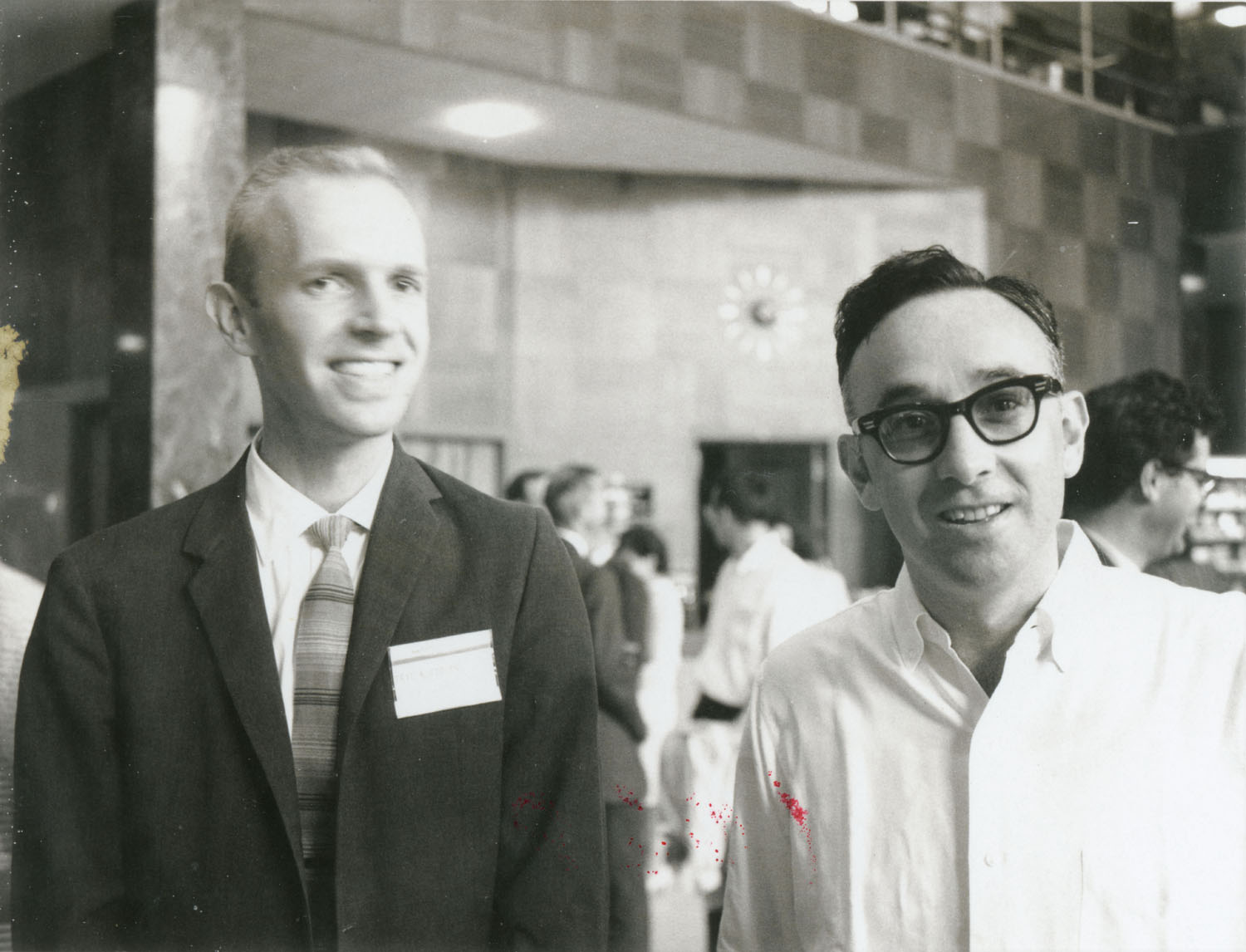
Halmos photographed his Ph.D. student Eric Nordgren, left, and Robert Ellis on August 26, 1964, at the AMS Summer Meeting at the University of Massachusetts in Amherst. Nordgren earned his Ph.D. that year (1964) from the University of Michigan with the dissertation “Some Contributions to the Theory of Toeplitz Operators,” written under advisor Halmos. He is now Professor Emeritus of Mathematics at the University of New Hampshire. Bob Ellis most likely earned his Ph.D. in 1953 from the University of Pennsylvania and now is Professor Emeritus of Mathematics at the University of Minnesota with research interests in topological dynamics. However, it is possible that he instead received his Ph.D. in 1966 from Duke University and now is Professor Emeritus at the University of Maryland. (Sources: Mathematics Genealogy Project, University of New Hampshire Mathematics, Universities of Minnesota and Maryland Mathematics)
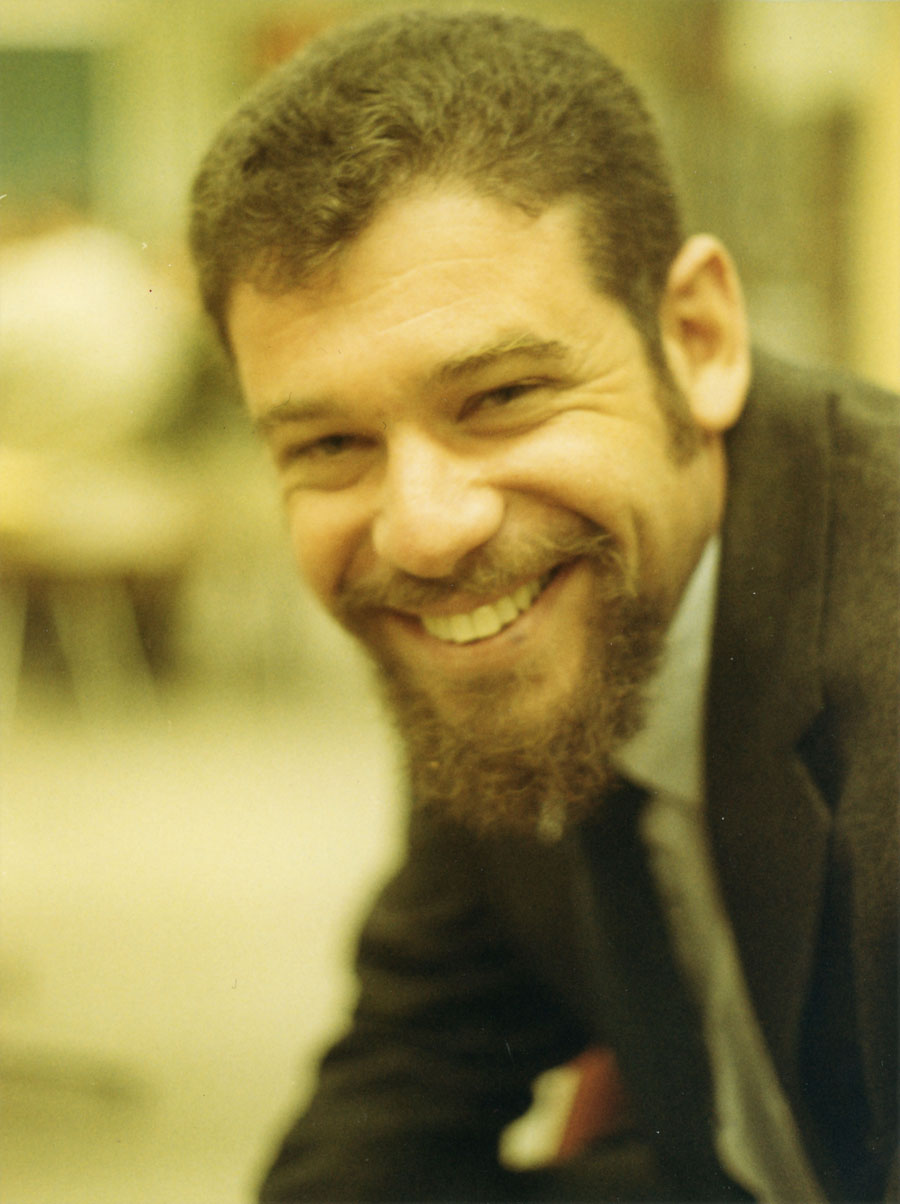
Halmos photographed Donald Ornstein in April of 1970 in Columbus, Ohio. Ornstein earned his Ph.D. in 1957 from the University of Chicago with the dissertation “Dual Vector Spaces,” written under advisor Irving Kaplansky. He spent the years 1956-58 at the Institute for Advanced Study in Princeton, New Jersey. In 1960, he published his first paper on ergodic theory and joined the faculty at Stanford University, where he has remained and is now Professor Emeritus of Mathematics. In the year this photo was taken, 1970, Ornstein published his first really big result in ergodic theory, “Bernoulli shifts with the same entropy are isomorphic.” During the next few years, he continued to publish important results in ergodic theory and collected them in the book, Ergodic theory, randomness, and dynamical systems (1974). Ornstein would have first met Halmos when he was a graduate student at Chicago during the 1950s, and, indeed, in his 1985 book, I Want to Be a Mathematician, Halmos confirmed that he taught “Don Ornstein in several courses and he began to learn ergodic theory from me (but wrote his thesis with Kaplansky on algebra)” (p. 202). Halmos was a faculty member at Chicago from 1946 to 1961. He also was a member of the Institute for Advanced Study during 1957-58, as was Ornstein. (Source: MacTutor Archive)
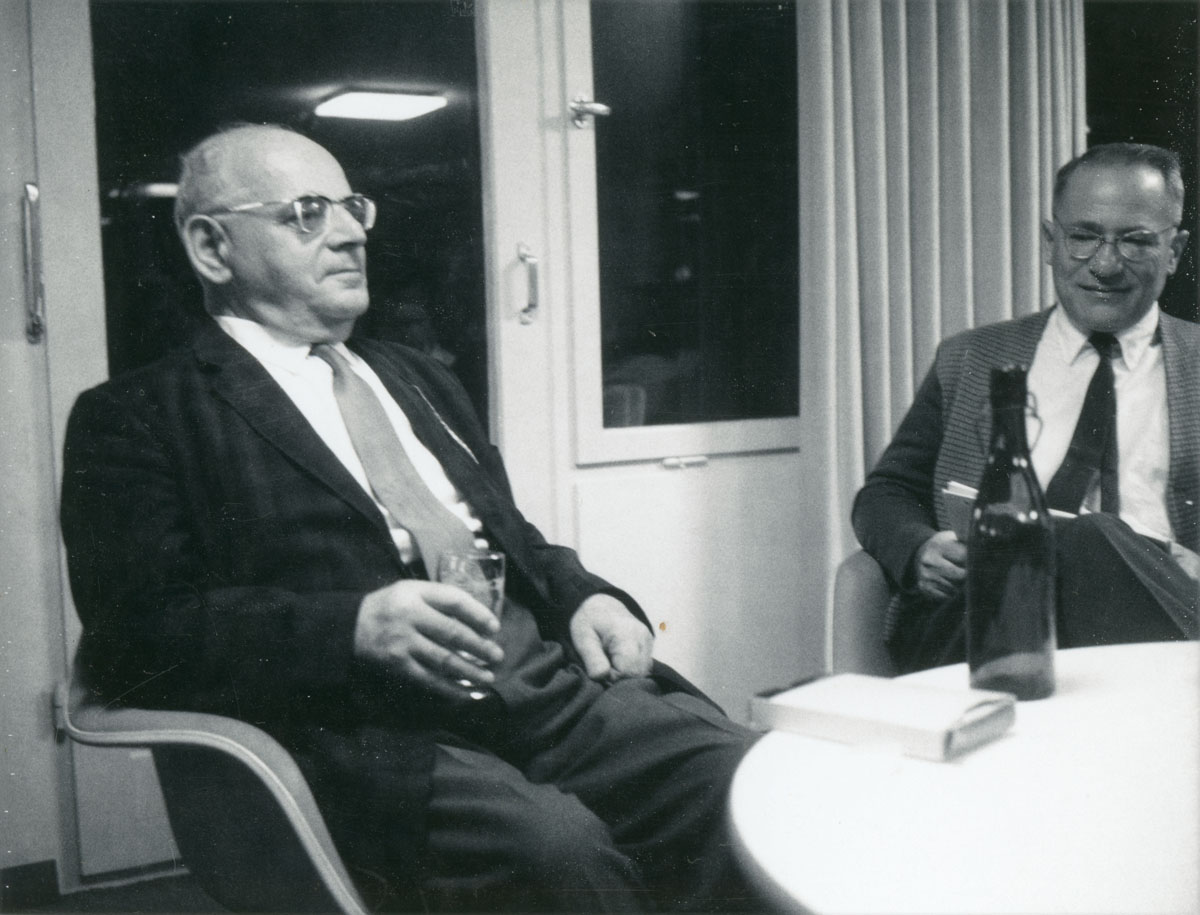
Halmos photographed Alexander Ostrowski (1893-1986), left, and Béla Szökefalvy-Nagy (1913-1998) on July 19, 1968, in Oberwolfach, Germany, where all three of them were participating in the conference, "Abstract spaces and approximation," organized by Szökefalvy-Nagy and Paul Butzer (see page 9 of this collection for a photograph of Butzer). Similar conferences were held at Oberwolfach every three years until 1983. Photos of Szökefalvy-Nagy appear on page 9, page 14, and page 36 of this collection; read more about him on pages 9 and 14.
Born in Kiev, Ukraine, Alexander Ostrowski earned his Ph.D. (Dr. phil.) at the University of Göttingen, Germany, in 1920 with a dissertation written under unofficial advisor David Hilbert and official advisors Edmund Landau and Felix Klein. He had studied previously with Dmitry Grave at the University of Kiev and with Kurt Hensel at the University of Marburg, and his article based on his doctoral dissertation was his 15th publication! His dissertation also led to his solution of Hilbert’s 18th Problem. After working with Erich Hecke at the University of Hamburg for two years, teaching at Göttingen for three more years, and visiting universities in Britain for a year (1925-26), Ostrowski accepted the Chair of Mathematics at the University of Basel, Switzerland, and was based there for the rest of his career and life. His work was mainly, but not exclusively, in algebra and number theory, and he had a great interest in numerical methods as well as abstract mathematics. (Sources: MacTutor Archive, Mathematics Genealogy Project, Ivan Singer (Dec. 2012))
For an introduction to this article and to the Paul R. Halmos Photograph Collection, please see page 1. Watch for a new page featuring six new photographs each week during 2012.
Regarding sources for this page: Information for which a source is not given either appeared on the reverse side of the photograph or was obtained from various sources during 2011–12 by archivist Carol Mead of the Archives of American Mathematics, Dolph Briscoe Center for American History, University of Texas, Austin.
Who's That Mathematician? Paul R. Halmos Collection - Page 39
For more information about Paul R. Halmos (1916-2006) and about the Paul R. Halmos Photograph Collection, please see the introduction to this article on page 1. A new page featuring six photographs will be posted at the start of each week during 2012.
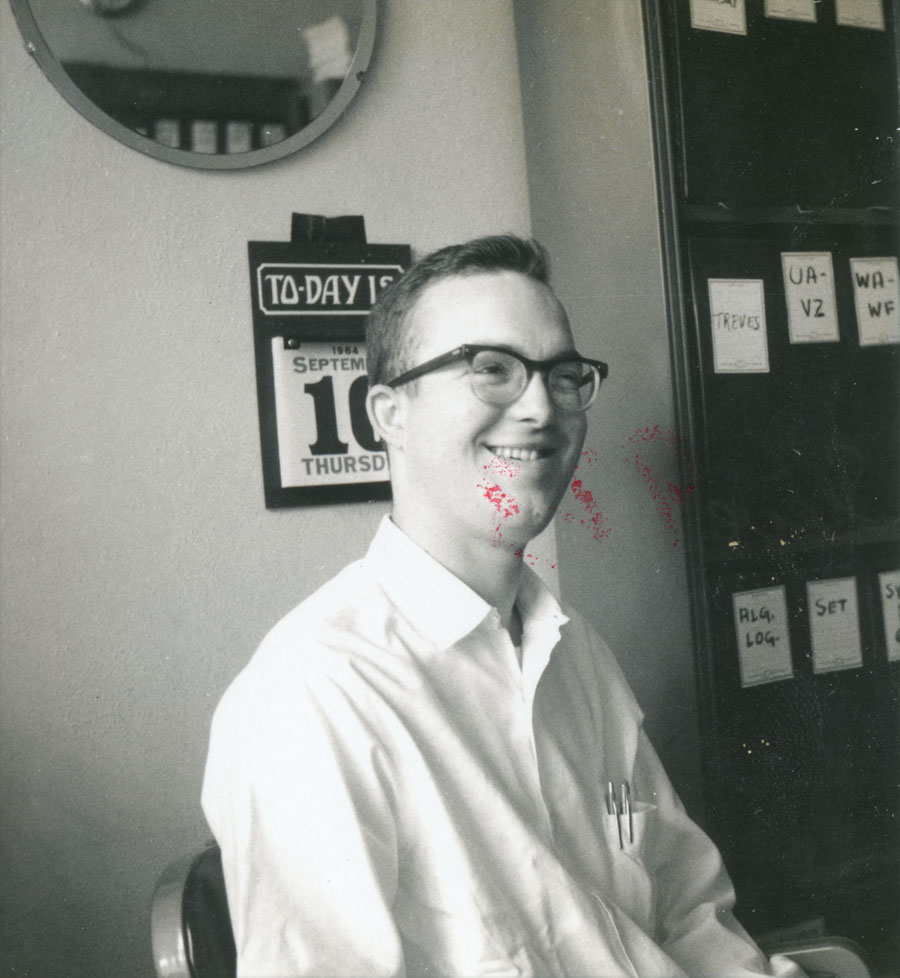
Halmos photographed his Ph.D. student Stephen Parrott on September 10, 1964, at the University of Michigan in Ann Arbor. Parrott earned his Ph.D. in 1965 from Michigan with the dissertation “Weighted Translation Operators,” written under Halmos. In his book I Want to Be a Mathematician: An Automathography (Springer, 1985), Halmos described how Parrott accidentally broke his (Halmos’) coffee cup and how the incident apparently broke the ice between the two of them and had the happy ending of Parrott becoming his Ph.D. student (pp. 278-279). Parrott spent most of his career on the mathematics faculty at the University of Massachusetts in Boston, from which he is now retired. His interest in operator theory has been replaced more recently with an interest in mathematical physics. (Source: Mathematics Genealogy Project, University of Massachusetts–Boston Mathematics, Stephen Parrott homepage)
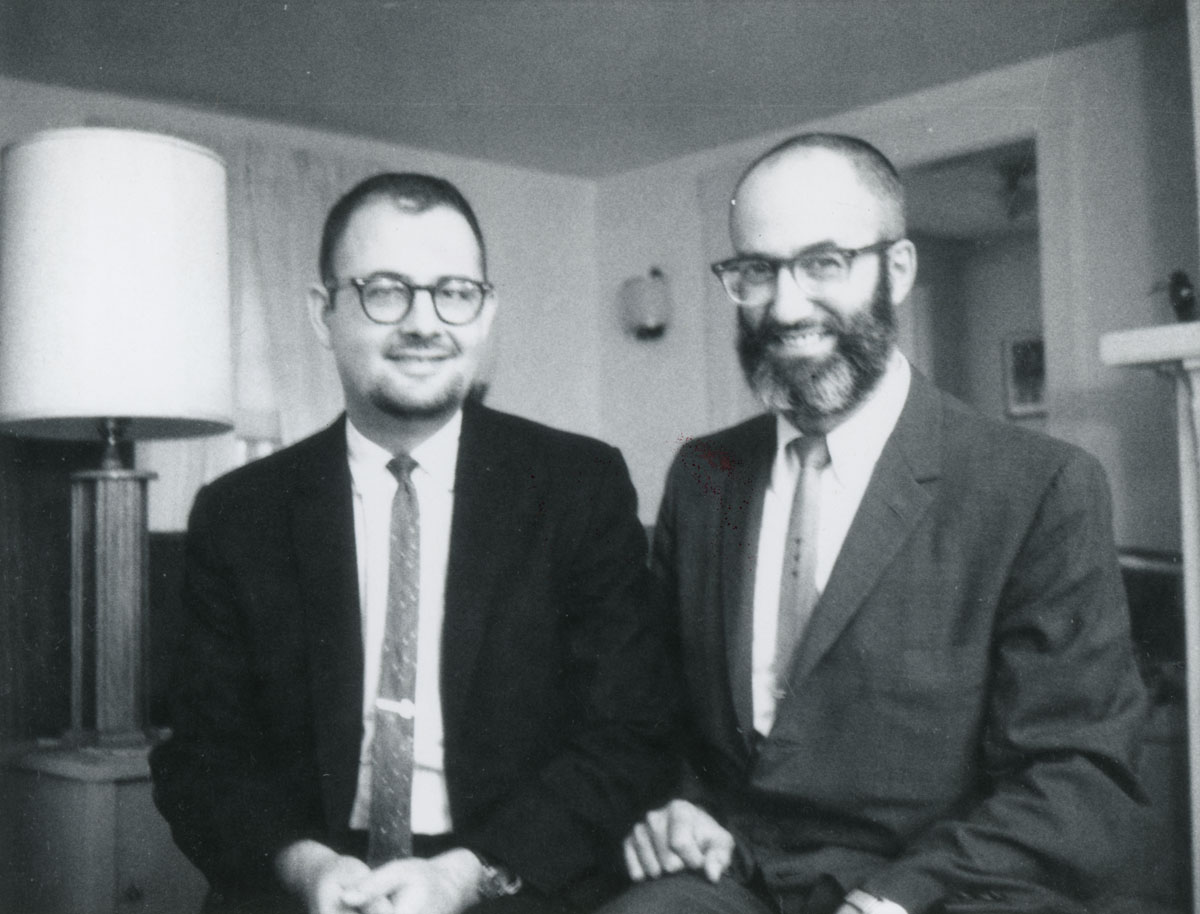
Carl Pearcy, left, and Paul Halmos were photographed in 1965. At the time, both Halmos and Pearcy were on the mathematics faculty at the University of Michigan in Ann Arbor. Pearcy earned his Ph.D. in 1960 from Rice University (then the Rice Institute) in Houston, Texas, with the dissertation, “On the Unitary Equivalence of N-Normal Operators.” His thesis advisor at Rice was H. Arlen Brown, who had earned his own Ph.D. from the University of Chicago in 1952 under advisors Paul Halmos and Irving Kaplansky. Another photograph of Pearcy appears on page 29 of this collection, where you can read more about him. (For a photo of Brown, see page 8; Kaplansky’s photo appears on page 26.) (Source: Mathematics Genealogy Project)
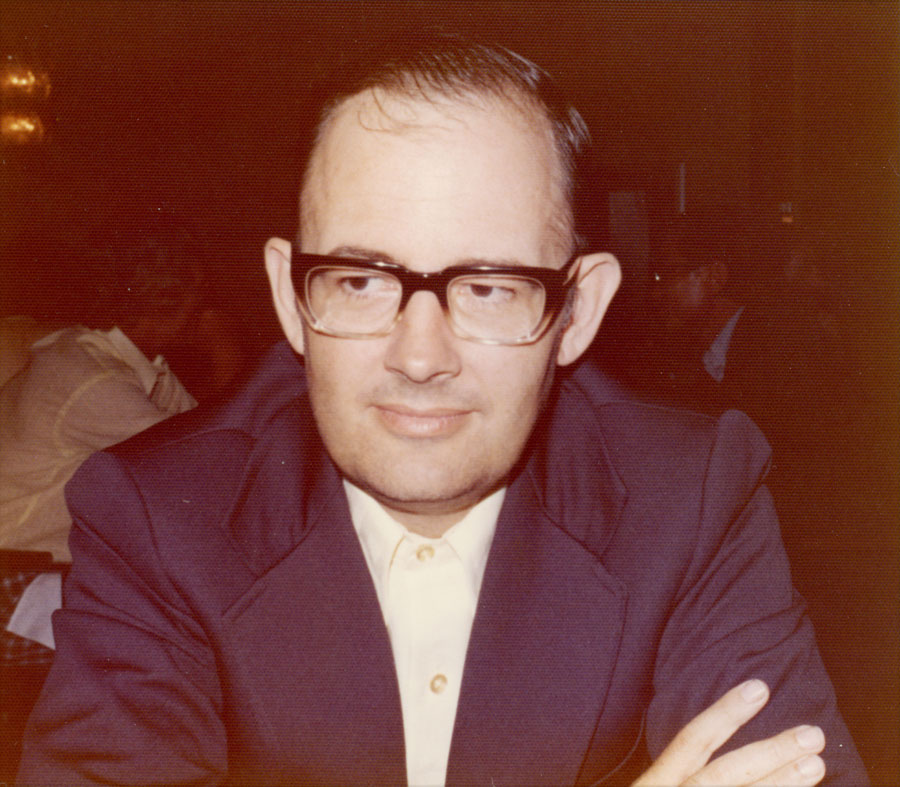
Halmos photographed Carl Pearcy in August of 1975, probably at Bucknell University in Lewisburg, Pennsylvania. Besides the two photographs above, another photograph of Pearcy appears on page 29 of this collection, where you can read more about him.
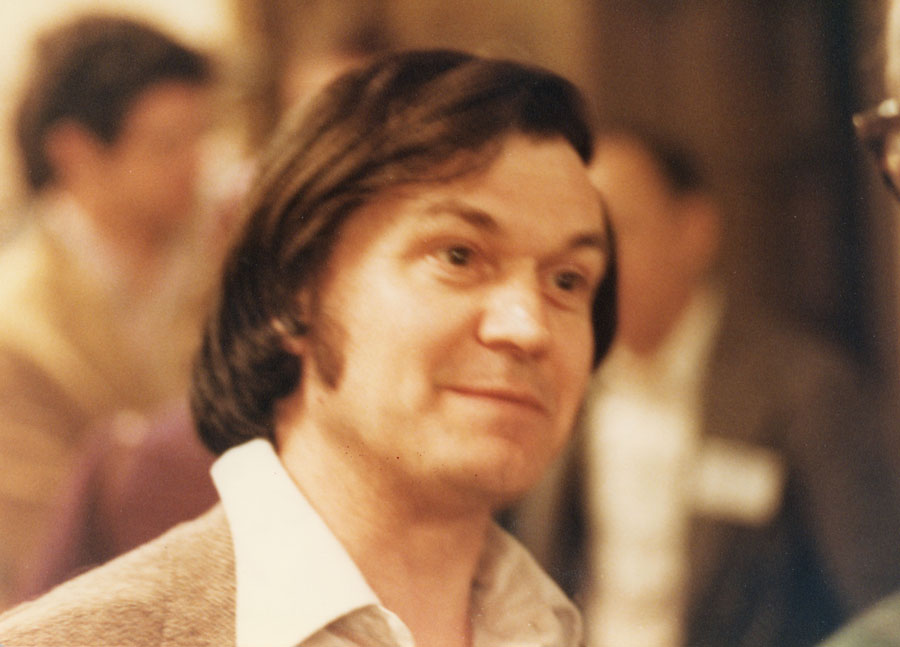
Roger Penrose was photographed by Halmos in April of 1980 in Bloomington, Indiana. Penrose earned his Ph.D. in 1958 from Cambridge University with the dissertation, “Tensor Methods in Algebraic Geometry,” written under John Arthur Todd (not John “Jack” Todd). From 1956 to 1964, he held various fellowships and positions in England and the U.S., from 1964 to 1973 he was on the mathematics faculty at Birkbeck College in London, and from 1973 onward he has been Rouse Ball Professor of Mathematics at Oxford University, emeritus since 1998. He has advised at least 30 Ph.D. students, at least 27 of them at Oxford.
Since his university days (at University College London), Penrose has been interested in both pure and applied mathematics and in physics, and his best known results throughout his career have been in geometry and mathematical physics. In awarding him its Copley Prize in 2008, the Royal Society cited his breakthroughs in gravitation theory, his application of spinors and twistors to space-time, his non-periodic Penrose tilings, and his popular books relating mathematics, physics, and cognition. Sir Roger Penrose has won numerous scientific awards and was knighted by the Queen of England in 1994. (Sources: MacTutor Archive, Mathematics Genealogy Project)
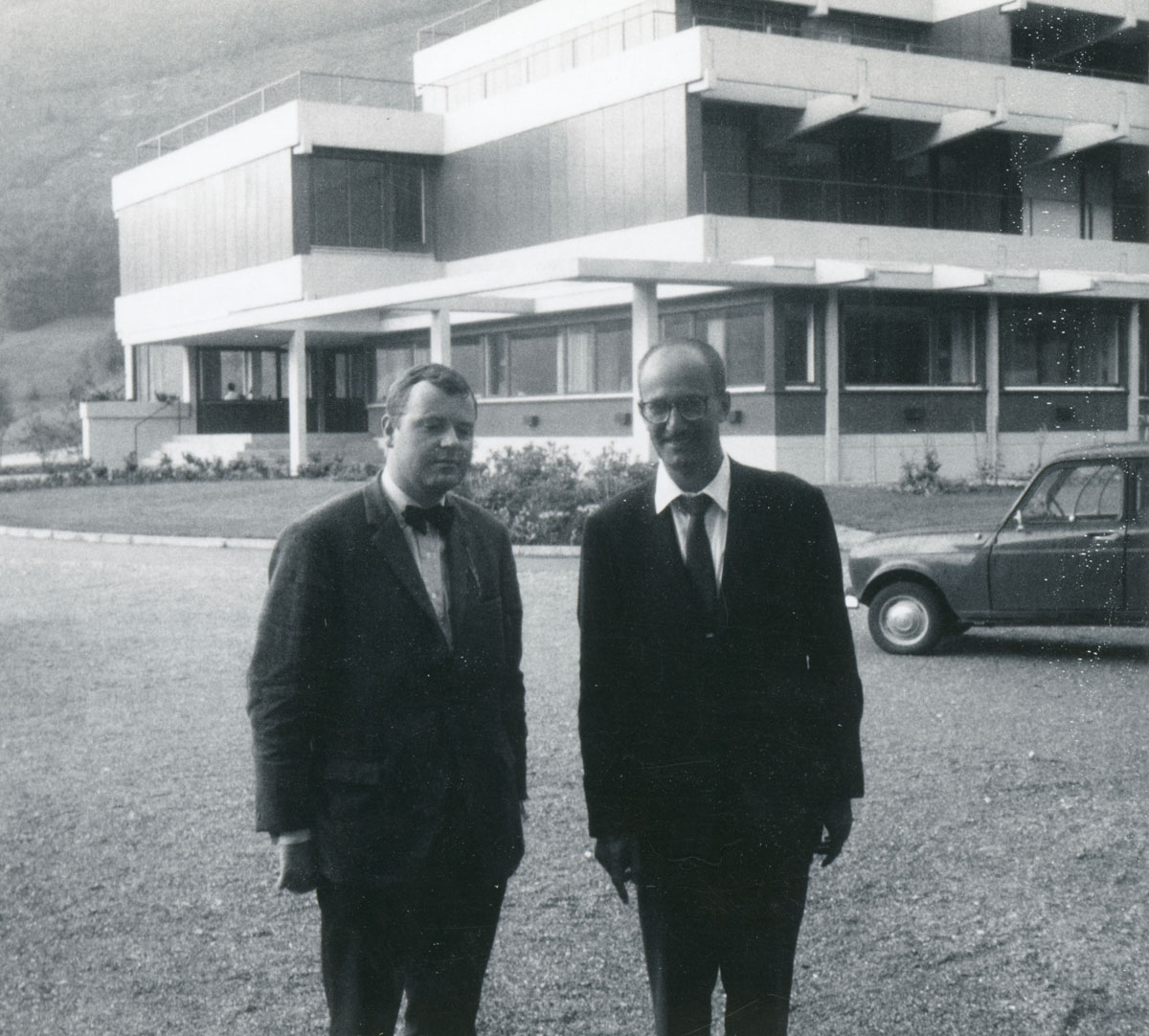
Klaus Peters (1937-2014), left, and Paul Halmos were photographed on July 19, 1968, in Oberwolfach, Germany, where the two were attending a conference at the Oberwolfach Conference Center. This conference was one of a series of seven organized by Paul Butzer (page 9) from 1963 to 1983 on approximation theory and related topics in functional analysis. The 1968 conference was the first of the three Halmos attended.
Peters earned his doctoral degree (Dr. rer. nat.) in complex analysis from the University of Erlangen-Nürnberg in 1962 under advisors Reinhold Remmert (see page 18 of this collection) and Georg Nöbeling. Peters began his career as a mathematics professor but, within two years, had taken a “temporary” position as a mathematics editor at Springer Verlag. During his 1964-1979 tenure at Springer, he increased mathematical publications from 5 books per year to over 100 books per year. In 1979, he and his wife Alice Peters founded Birkhauser Boston, which they sold to Springer in 1984. They then opened the Cambridge, Massachusetts, offices of Academic Press / Harcourt Brace Jovanovich, and took over that company’s publications in mathematics, computer science, and theoretical physics. In 1992, Alice and Klaus Peters founded A K Peters Ltd., Publishers of Science and Technology; in 2010, they sold their company to the Taylor and Francis Group, which made it part of CRC Press. (Sources: Mathematics Genealogy Project, A K Peters Publishers)
Klaus Peters recently (Oct. 2012) shared a story typifying “Paul’s practical and insightful perception”: He recalled telling Halmos “on a walk in the hills above Santa Clara in 1978, before anybody knew” that he and Alice were going to leave Springer Verlag in order to .... Before he could share their plans, Halmos “asked for half an hour ‘time out’ by the end of which he would tell me our next move. Then, he correctly predicted that we would start the American affiliate of Birkhäuser Verlag. He was right and provided a clear and rational explanation.”
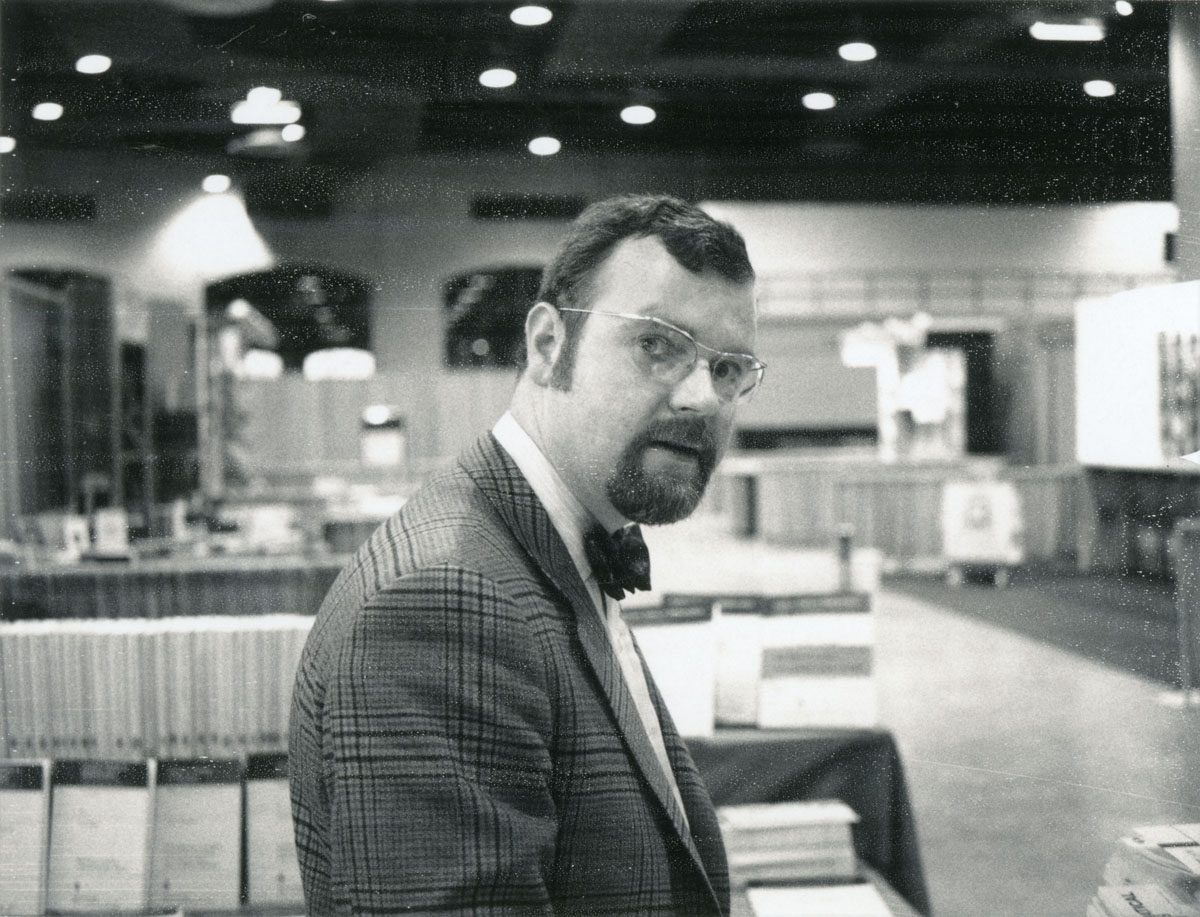
Halmos photographed Klaus Peters on January 23, 1970, at the Joint Mathematics Meetings in San Antonio, Texas. Peters is pictured at the Book Exhibit, of course!
For an introduction to this article and to the Paul R. Halmos Photograph Collection, please see page 1. Watch for a new page featuring six new photographs each week during 2012.
Regarding sources for this page: Information for which a source is not given either appeared on the reverse side of the photograph or was obtained from various sources during 2011-12 by archivist Carol Mead of the Archives of American Mathematics, Dolph Briscoe Center for American History, University of Texas, Austin.
Who's That Mathematician? Paul R. Halmos Collection - Page 40
For more information about Paul R. Halmos (1916-2006) and about the Paul R. Halmos Photograph Collection, please see the introduction to this article on page 1. A new page featuring six photographs will be posted at the start of each week during 2012.
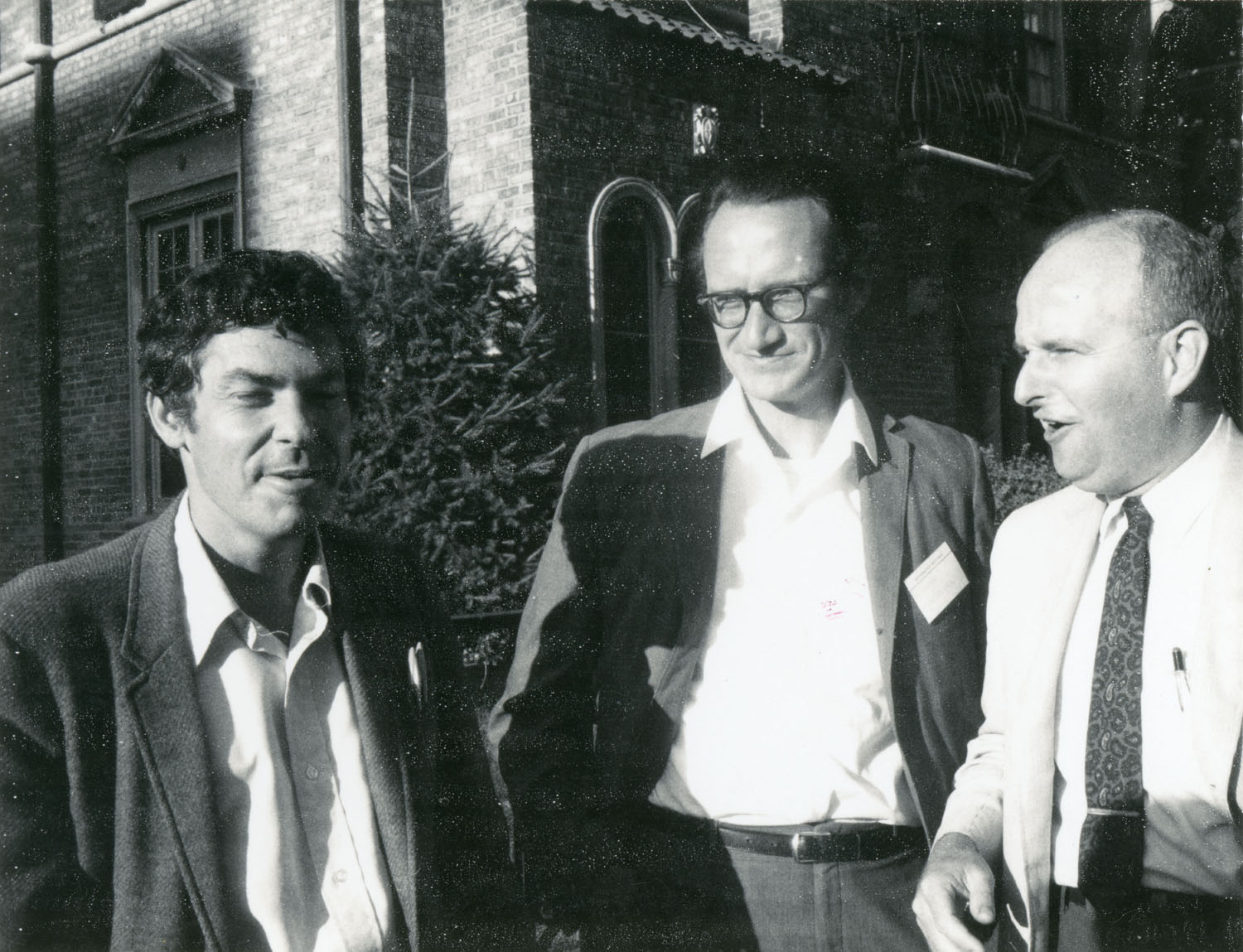
Halmos photographed, from left to right, Stephen Smale, William Browder, and Franklin Peterson on August 27, 1968, at the Joint Summer Mathematics Meetings in Madison, Wisconsin. Halmos affixed his Honolulu, Hawaii, address label to the back of the photo, indicating that he had already moved to Hawaii in preparation for his 1968-69 post as chair of the University of Hawaii Mathematics Department. Another photograph of William Browder appears on page 8 of this collection, where you can read more about him.
Stephen Smale is best known for having won the Fields Medal in 1966 for his work in differential geometry -- more specifically, for having proved in 1961 the higher dimensional Poincaré Conjecture for n=5 and up -- and for having completed at least part of this work on the beaches of Rio de Janeiro. Smale earned his Ph.D. in 1957 from the University of Michigan with the dissertation “Regular Curves on Riemannian Manifolds,” written under advisor Raoul Bott. (For photographs of Bott, see page 8 and page 10 of this collection.) He spent 1956-58 as an instructor at the University of Chicago, where he probably first met Halmos, who was on the faculty there from 1946 to 1961. He spent the first 18 months of a two-year 1958-60 NSF Fellowship at the Institute for Advanced Study in Princeton, New Jersey, and the last six months at the Instituto de Mathematica Pura e Aplicada in Rio de Janeiro, Brazil. Smale has spent most of his career at the University of California, Berkeley, where he became Professor Emeritus of Mathematics in 1995. He now is based at the City University of Hong Kong. (Sources: MacTutor Archive, University of California, Berkeley)
Franklin Peterson (1930-2000) earned his Ph.D. in 1955 from Princeton University with the dissertation “Generalized Cohomotopy Groups,” written under advisor Norman Steenrod. He remained on the Princeton faculty until 1958, when he moved to the Massachusetts Institute of Technology (MIT). He was an algebraic topologist who specialized in cohomology operations, and he advised 23 Ph.D. students at MIT. Peterson also served the American Mathematical Society (AMS) as treasurer for 25 years, from 1974 to 1998. (Sources: Mathematics Genealogy Project, MITnews; see also “Franklin P. Peterson (1930-2000),” AMS Notices 48:10 (November 2001), pp. 1161-1168)
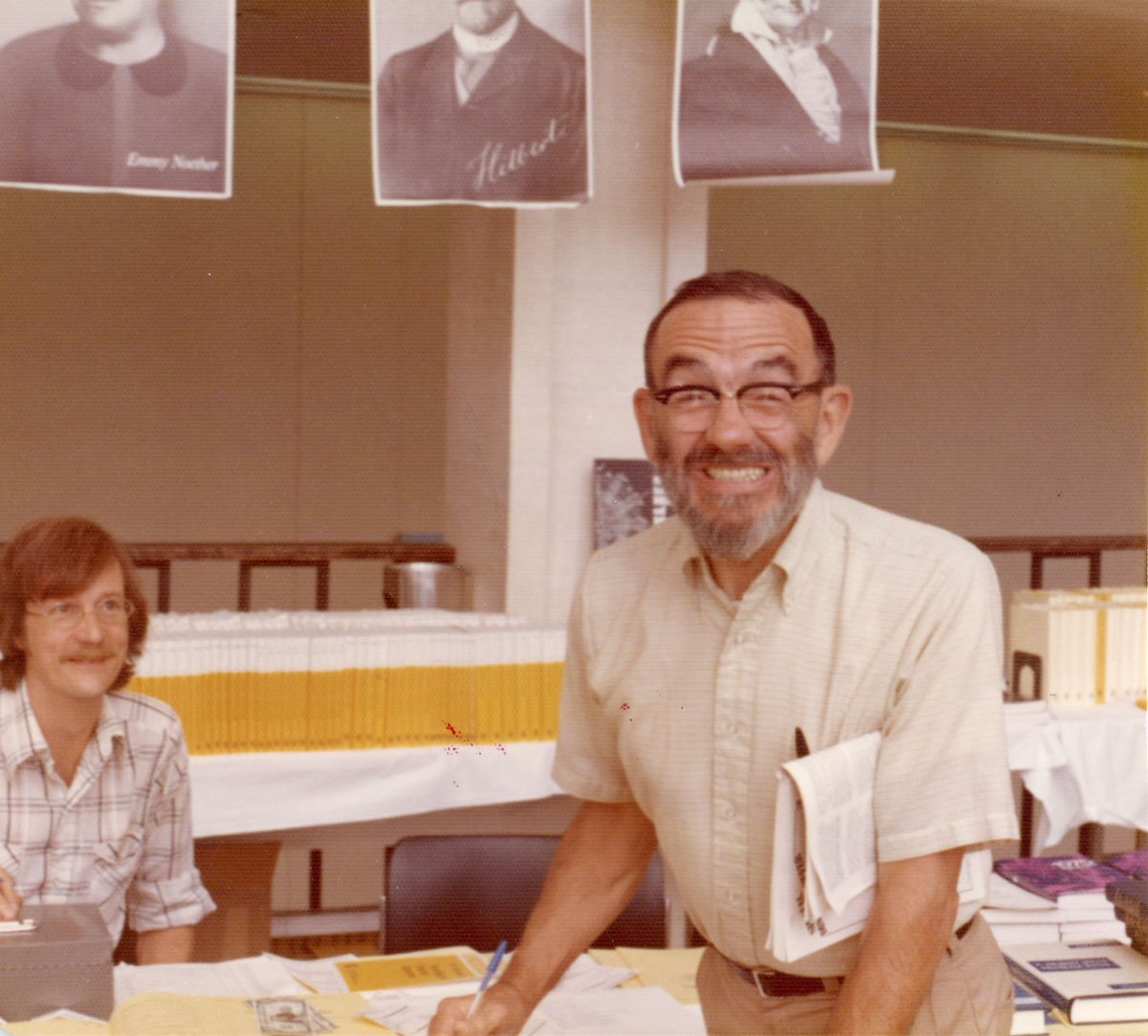
Functional analyst Billy James Pettis (1913-1979) was photographed by Halmos in August of 1975 at the Joint Summer Mathematics Meetings in Kalamazoo, Michigan. Pettis earned his Ph.D. in 1937 from the University of Virginia with the dissertation “Integration in Vector Spaces,” written under advisor Edward J. McShane. In fact, Pettis was McShane’s first Ph.D. student. (McShane is pictured on page 34 of this collection.) Pettis was a faculty member at Tulane University in New Orleans, Louisiana, and, from 1957 onward, at the University of North Carolina, Chapel Hill. (Sources: Mathematics Genealogy Project; A Guide to the B. J. Pettis Papers, 1938-1980, Archives of American Mathematics)
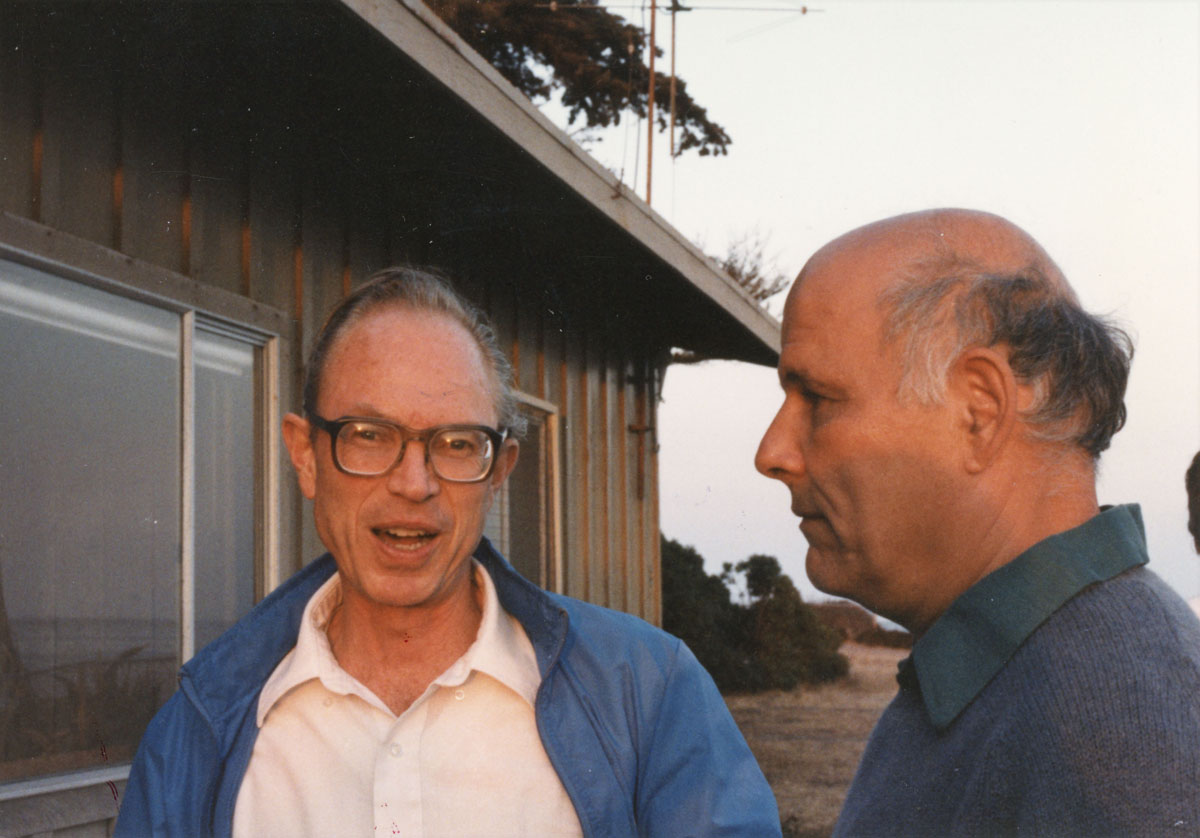
Halmos photographed Robert Phelps, left, and Andrew Bruckner in June of 1985 in Santa Barbara, California. The event was a conference in honor of Ky Fan on his retirement from UCSB. Halmos spent 1975-1977 at UCSB and would have first met both Fan and Bruckner then, if not earlier.
Bob Phelps (1926-2013) earned his Ph.D. in 1958 from the University of Washington with the dissertation “Subreflexive Normed Linear Spaces,” written under advisor Victor Klee. He then spent two years at the Institute for Advanced Study in Princeton, New Jersey, and two years at the University of California, Berkeley. In 1960, he and Errett Bishop, a Ph.D. student of Halmos whose photograph appears on page 6 of this collection, proved what quickly became known as the Bishop-Phelps Theorem. A survey article on this result is available from Phelps’ website. In 1962, Phelps joined the faculty at the University of Washington, where he continued to carry out research in functional analysis. At Washington, he was an active member of the John Rainwater Functional Analysis Seminar and was the primary author of Rainwater’s work; see the Topology Atlas link below for details. (Sources: Mathematics Genealogy Project, University of Washington Mathematics: Robert Phelps (including "The Bishop-Phelps Theorem"), Topology Atlas, Seattle Times obituary)
Andy Bruckner earned his Ph.D. in 1959 from the University of California, Los Angeles, with the dissertation “Minimal Superadditive Extensions of Superadditive Functions,” written under advisor John W. Green. (For a photograph of Green, see page 18 of this collection.) Bruckner joined the faculty at the University of California, Santa Barbara, in 1959. He has spent his career at UCSB, becoming Professor Emeritus of Mathematics in 1994. He has written both monographs and textbooks on real analysis, the latter with co-authors Judith Bruckner and Brian Thomson. (Sources: Mathematics Genealogy Project, UCSB Mathematics, Classical Real Analysis)
Bruckner wrote recently (Oct. 2012) of Halmos:
Seeing the pictures brought back all sorts of fond memories of Halmos' two years in Santa Barbara. One of many such memories illustrated his desire to be precise. Our department used to have "guess your own speed races." We ran around the UCSB track, without a watch, predicting our times just before the race began. Halmos walked, but did so in the fifth lane of the track so that he wouldn't get in the way of the runners when they lapped him. (He walked very fast with his cane, about 12 minutes per mile.) During one of our colloquium lectures I sat next to him and wondered about the notes he was taking of the lecture. So I took a look. There I saw a picture of the track and some scribbling that calculated just how much further he had to walk per lap in the 5th lane at the next day's race. I had told Paul that each lap out from the inside lane adds seven and a third yards, so if he walks at 12 minutes per mile in the 5th lane he would have to take 12 seconds longer each lap. He didn't believe me, I guess, and had to check it out for himself. I resisted the temptation to tell him that, to be precise, he had to walk exactly 12 inches from the line separating the 4th and 5th lanes.
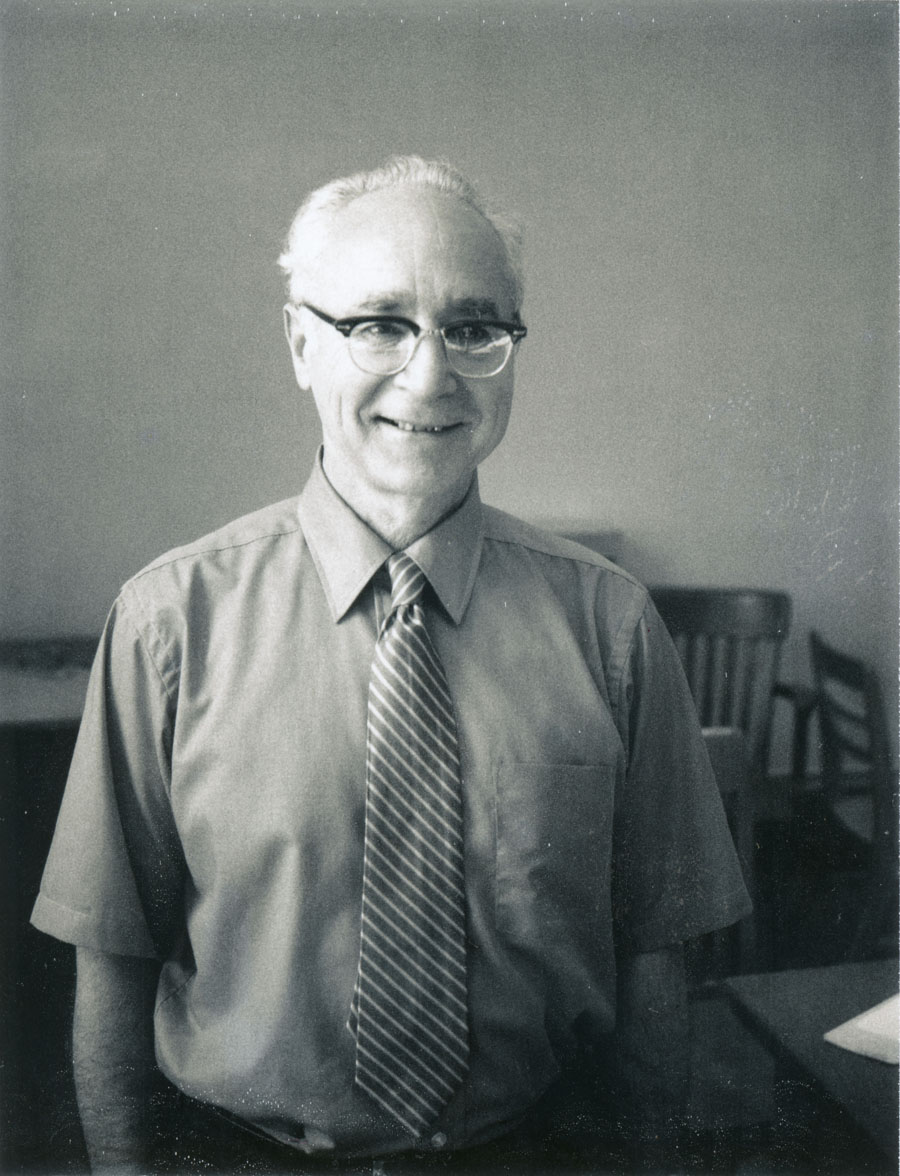
Ralph S. Phillips (1913-1998) was photographed by Halmos on February 16, 1970, at Indiana University in Bloomington. At the time, Phillips was a functional analyst at Stanford University. Another photograph of Phillips appears on page 9 of this collection, where you can read more about him.

Halmos photographed George Pólya (1887-1985) and Alexander Ostrowski (1893-1986) at the International Congress of Mathematicians in Edinburgh, Scotland, in 1958. Another photo of Ostrowski appears on page 38 of this collection, where you can read more about him.
Born in Budapest, Hungary, George (György) Pólya entered the University of Budapest (now Eötvös Loránd University) in 1905. After studying law, languages, literature, philosophy, and, finally, physics and mathematics, he received his Ph.D. in mathematics in 1912 with a thesis in geometric probability written under Leopold (Lipót) Fejér. He then spent a year studying at the University of Göttingen, Germany, with its who’s who of eminent mathematicians, and then another few months studying in Paris, before being invited by Adolf Hurwitz, then Chair of Mathematics at Eidgenössische Technische Hochschule (ETH) in Zürich, Switzerland, to join the faculty there, which he did in 1914. Pólya worked closely with Hurwitz until Hurwitz’s death in 1919.
Although he may be best known today for his contributions to mathematics teaching and learning, Pólya was a prolific and formidable researcher who made important contributions in complex analysis, probability, combinatorics, geometry, and mathematical physics. Besides writing many papers (O’Connor and Robertson of the MacTutor Archive pointed out that he published 31 papers just from 1926 to 1928), he also wrote influential books. In 1925, after years of work, Pólya and Gábor Szegő published Problems and Theorems in Analysis, Volumes I, II (Springer), and in 1924 Pólya began to work with G. H. Hardy and J. E. Littlewood (page 31 of this collection) on the book Inequalities (Cambridge, 1934). In 1940, Pólya moved to the United States and, after short stints at Brown University and Smith College, he joined the faculty at Stanford University in Palo Alto, California, where Szegő had been based since 1938. He and Szegő continued their collaboration, producing another influential book, Isoperimetric Inequalities in Mathematical Physics (Princeton, 1951).
In 1945, Pólya published what may be his best known book, and certainly is the one that established him as a leader in mathematics teaching and learning, How to Solve It: A New Aspect of Mathematical Method (Princeton), which has been translated into 17 languages. Other books on mathematical reasoning and surveys/textbooks include:
- Mathematics and Plausible Reasoning: Volume I, Induction and Analogy in Mathematics; Volume II, Patterns of Plausible Inference (Princeton, 1954);
- Mathematical Discovery: On understanding, learning, and teaching problem solving: Volume I (Wiley, 1962), Volume II (1965);
- Complex Variables, with Gordon Latta (Wiley, 1974);
- Mathematical Methods in Science, with Leon Bowden (MAA, 1977); and
- Notes on Introductory Combinatorics, with Robert Tarjan and Donald Woods (Birkhäuser Boston, 1983).
Pólya advised at least 30 Ph.D. students at ETH and Stanford, plus one more at England’s Cambridge University, Imre Lakatos, who received his Ph.D. in 1961. Lakatos’ Ph.D. dissertation, titled “Essays in the Logic of Mathematical Discovery,” eventually became the book Proofs and Refutations: The Logic of Mathematical Discovery (Cambridge University Press, 1976). (Sources: MacTutor Archive, Mathematics Genealogy Project, MathSciNet, WorldCat)
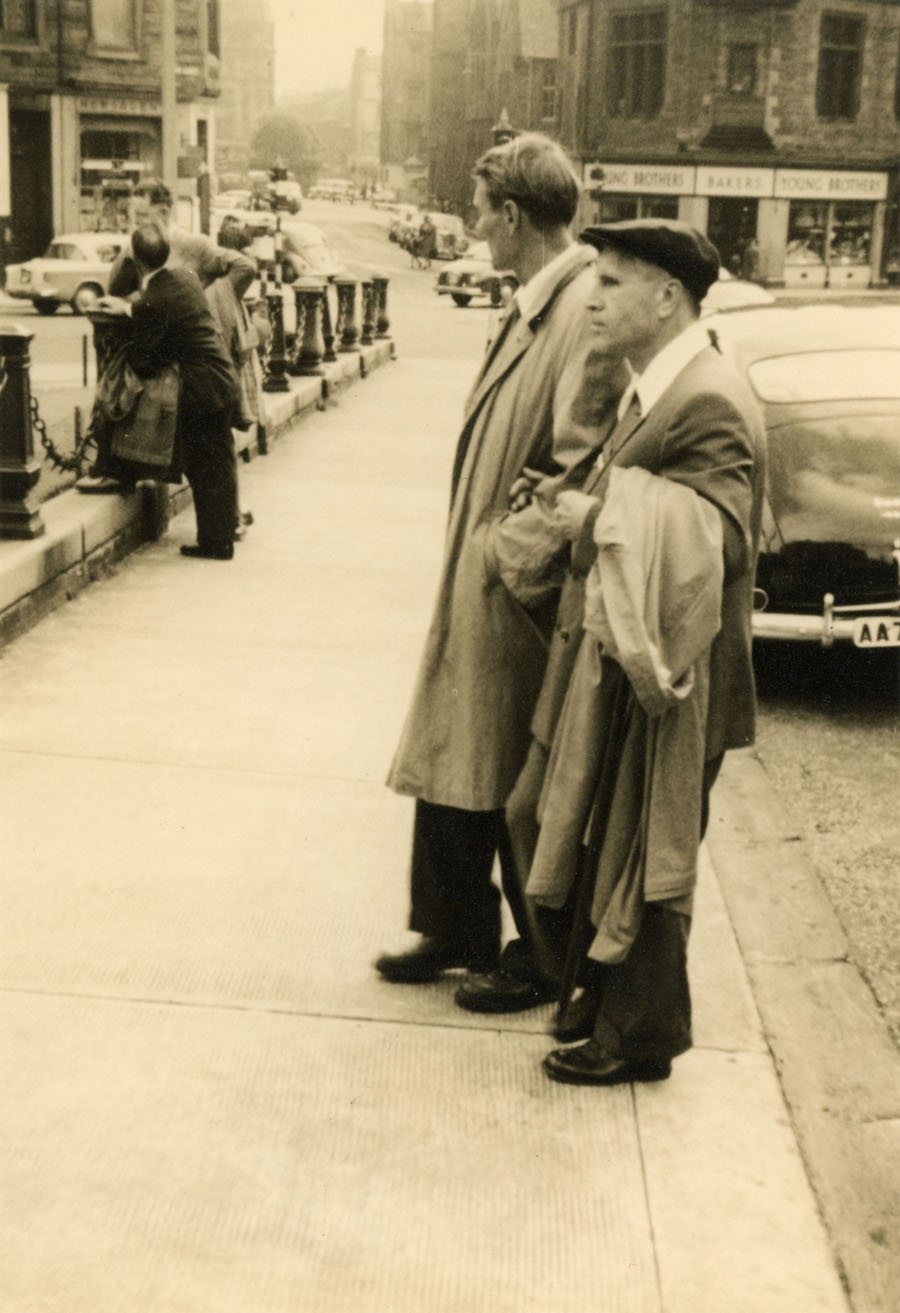
Halmos photographed Evgenii Mishchenko (1922-2010), left, and Lev Pontryagin (1908-1988) at the International Congress of Mathematicians (ICM) in Edinburgh, Scotland, in 1958, where Pontryagin was one of the main speakers.
Evgenii Mishchenko earned his Ph.D. in general topology in 1953 from Moscow State University under renowned topologists Pavel Aleksandrov and Lev Pontryagin. In 1961, Mishchenko co-authored The Mathematical Theory of Optimal Processes with Pontryagin and two other students of Pontryagin, V. G. Boltyanskii and R. V. Gamkrelidze. (For a photo of Gamkrelidze, see page 16 of this collection.) In 1952, Pontryagin had shifted his research program from topology to differential equations and control theory, and Mishchenko seems to have followed suit. He has been on the faculty of Moscow State University and of the Moscow Institute of Physics and Technology. (Sources: MacTutor Archive: Pontryagin, Mathematics Genealogy Project, Steklov Mathematical Institute)
Lev Semenovich Pontryagin (or, as Halmos spelled it, Pontrjagin) was blinded by an explosion at age 14, and learned mathematics primarily by listening to his mother, Tat’yana Andreevna Pontryagina, a seamstress, read mathematical books and papers to him. In 1925, he entered the University of Moscow and soon was working on topology with Pavel Aleksandrov. In 1929, he earned the equivalent of the Ph.D. and joined the Faculty of Mechanics and Mathematics of the University of Moscow. In 1934 he was appointed to the prestigious Steklov Mathematical Institute, where just one year later he became head of the Department of Topology and Functional Analysis. According to O’Connor and Robertson of the MacTutor Archive:
By 1927, although he was still only 19 years old, Pontryagin had begun to produce important results on the [James] Alexander duality theorem. His main tool was to use link numbers which had been introduced by [L. E. J.] Brouwer and, by 1932, he had produced the most significant of these duality results when he proved the duality between the homology groups of bounded closed sets in Euclidean space and the homology groups in the complement of the space.
This work led to his development of a theory of characters for commutative topological groups and his proof of Hilbert’s Fifth Problem for Abelian groups, both by 1934. He described all of this work in his 1938 book, Topological Groups, which was to become an enduring classic of topological algebra.
In his I Want to Be a Mathematician: An Automathography (Springer 1985), Halmos described Pontryagin’s Topological Groups, which he read shortly after it was translated to English by Emma Lehmer (whose photograph appears on page 30 of this collection) in 1939, as “an eye opener, a revelation, a thriller,” which he read “almost as I would read a detective story, to find out whodunit.” The “it” of the “whodunit” was the “big duality theorem” and its implications and applications (p. 93). (Sources: MacTutor Archive: Pontryagin, Steklov Mathematical Institute)
For an introduction to this article and to the Paul R. Halmos Photograph Collection, please see page 1. Watch for a new page featuring six new photographs each week during 2012.
Regarding sources for this page: Information for which a source is not given either appeared on the reverse side of the photograph or was obtained from various sources during 2011-12 by archivist Carol Mead of the Archives of American Mathematics, Dolph Briscoe Center for American History, University of Texas, Austin.
Who's That Mathematician? Paul R. Halmos Collection - Page 41
For more information about Paul R. Halmos (1916-2006) and about the Paul R. Halmos Photograph Collection, please see the introduction to this article on page 1. A new page featuring six photographs will be posted at the start of each week during 2012.
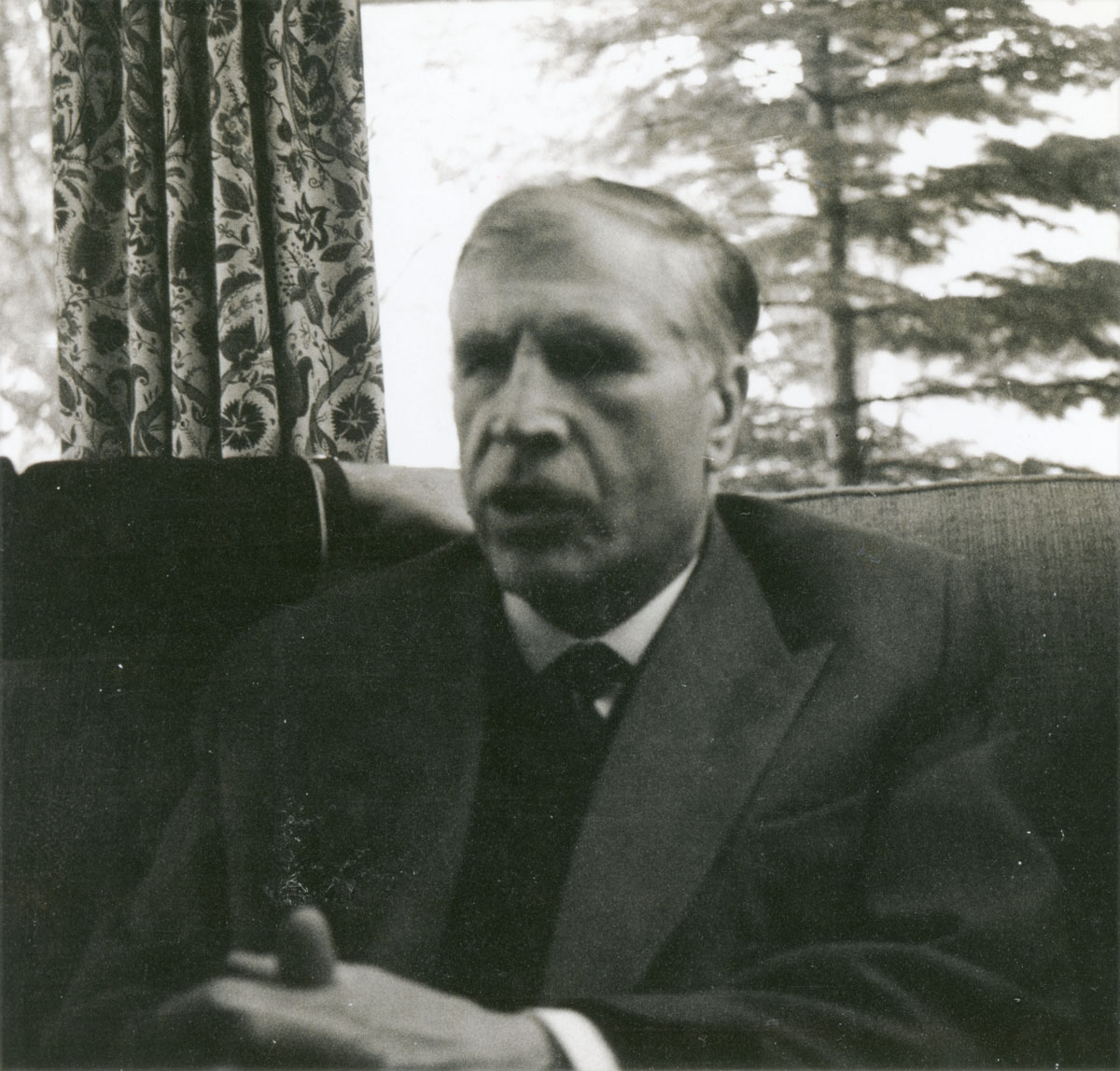
Halmos photographed Russian topologist Lev Pontryagin (1908-1988) on Oct. 8, 1964, in Ann Arbor, Michigan. In his book, I Want to Be a Mathematician: An Automathography (Springer, 1985), Halmos related how he and Pontryagin met again in 1965 when Halmos visited Moscow as part of an exchange program that allowed U.S. and Soviet scientists to visit one another’s countries (pp. 290, 311-312). Another photo of Pontryagin, taken in 1958, appears on page 40 of this collection and you can read more about him there.
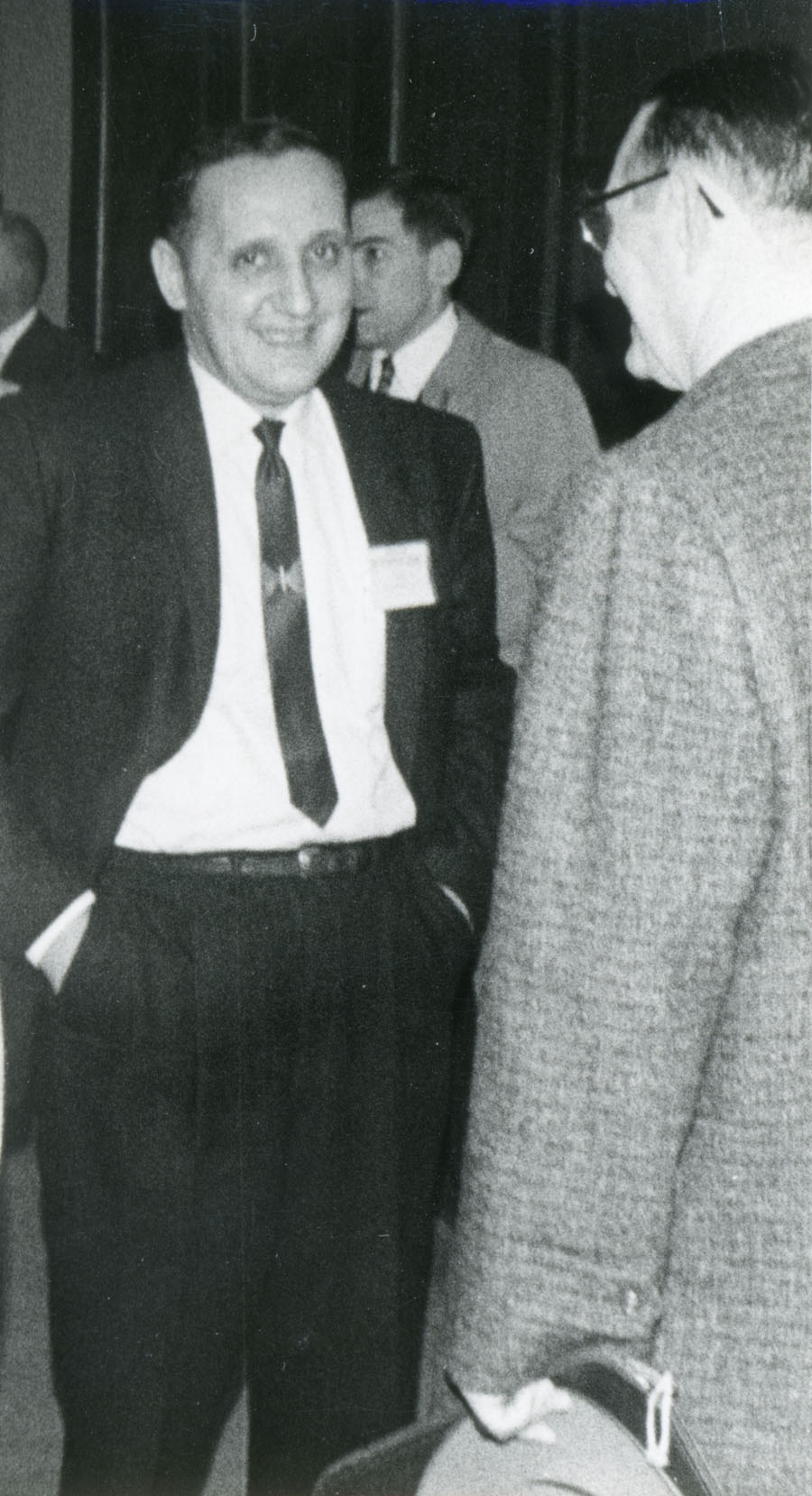
Pasquale Porcelli and W. T. Reid were photographed by Halmos in April of 1961 in Chicago, Illinois, probably at the University of Chicago. Halmos was just ending his tenure as a faculty member at Chicago, and was about to move to the University of Michigan in Ann Arbor.
Pasquale Porcelli (d. 1972) earned his Ph.D. at the University of Texas at Austin in 1952. After serving on the faculty of the Illinois Institute of Technology (IIT), he joined the mathematics faculty at Louisiana State University in Baton Rouge in 1959 and spent the rest of his career there, becoming a Boyd Professor, the highest professorial rank at LSU, in 1965. Porcelli advised at least 19 Ph.D. students during his career. His Ph.D. students at LSU included Ronald Douglas, who is pictured on page 13 of this collection and who has spent his career at the University of Michigan, SUNY Stony Brook, and Texas A & M University, where he is now Distinguished Professor of Mathematics. Douglas recently wrote about his first experience with inquiry-based learning in Porcelli’s calculus classroom at IIT, an experience he says “changed his life” by inspiring him not only to major in math at IIT, but also to follow Porcelli to LSU to obtain his Ph.D. The LSU Mathematics Department honors Porcelli with the Porcelli Lecture Series, the Porcelli Research and Academic Excellence Awards for graduate students, and the Porcelli Scholarships for undergraduates. (Sources: Mathematics Genealogy Project; “Inquiry-Based Learning: Yesterday and Today,” AMS Notices 59:5 (May 2012), pp. 668-9; LSU Mathematics)
William Thomas Reid (1907-1977) earned his Ph.D. in differential equations at the University of Texas at Austin in 1929. He was a faculty member at the University of Chicago from 1929 to 1944 and at Northwestern University in Evanston, Illinois, from 1944 to 1959. In 1959, he became chair of the mathematics department at the University of Iowa and, in 1964, he became Phillips Professor of Mathematics at the University of Oklahoma. His research areas included differential equations, calculus of variations, and optimal control, and he advised at least 26 Ph.D. students during his career. Of the seven Ph.D. students he supervised at the University of Chicago, the first three were co-advised by Gilbert Bliss, and one of these was Herman Goldstine, who became a leader in the fields of numerical analysis and computing and then wrote excellent histories of both fields. The Society for Industrial and Applied Mathematics (SIAM) honors both Reid and his wife, Idalia Reid (d. 2000), with its annual W. T. and Idalia Reid Prize in Mathematics, awarded for research in differential equations and control theory. (Sources: Hardin-Simmons University biography, Archives of American Mathematics biography, SIAM biography, Mathematics Genealogy Project)
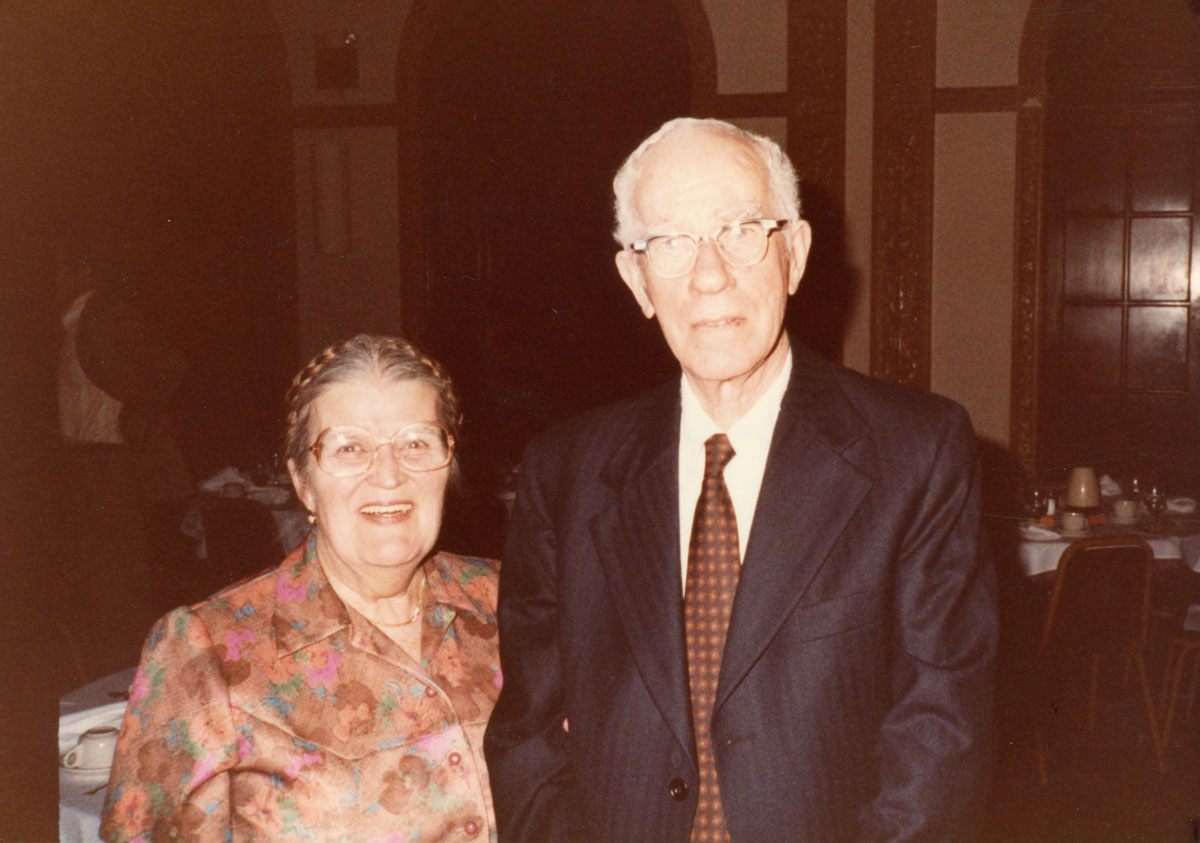
Halmos photographed Cora Lee Beers Price (d. 2004) and G. Baley Price (1905-2006) in April of 1983 at the University of Kansas in Lawrence. Cora Price was a professor of English and Classics at the University of Kansas; her husband Griffith Baley Price was the mathematician in the family. G. B. Price earned his Ph.D. in 1932 from Harvard University with the dissertation, “Double Pendulum and Similar Dynamical Systems,” written under George David Birkhoff. He joined the University of Kansas faculty in 1937 and spent the rest of his career there. As president of the MAA during 1957-58, he helped organize the School Mathematics Study Group in 1958. He also was instrumental in founding and developing such mathematical mainstays as Mathematical Reviews and the Conference Board of the Mathematical Sciences (CBMS) and such MAA fixtures as the Hedrick Lectures and the Committee on the Undergraduate Program in Mathematics (CUPM). In the biography of Price at MAA Presidents, he is described as a person of both ideas and action; that is, as someone who both “conceived what ought to be done” and was “there to see it through.” The University of Kansas honors his memory with the G. Baley Price Award for Excellence in Teaching and the G. Baley Price Professorship in Mathematics. (Sources: University of Kansas obituary, MAA Presidents, Mathematics Genealogy Project)
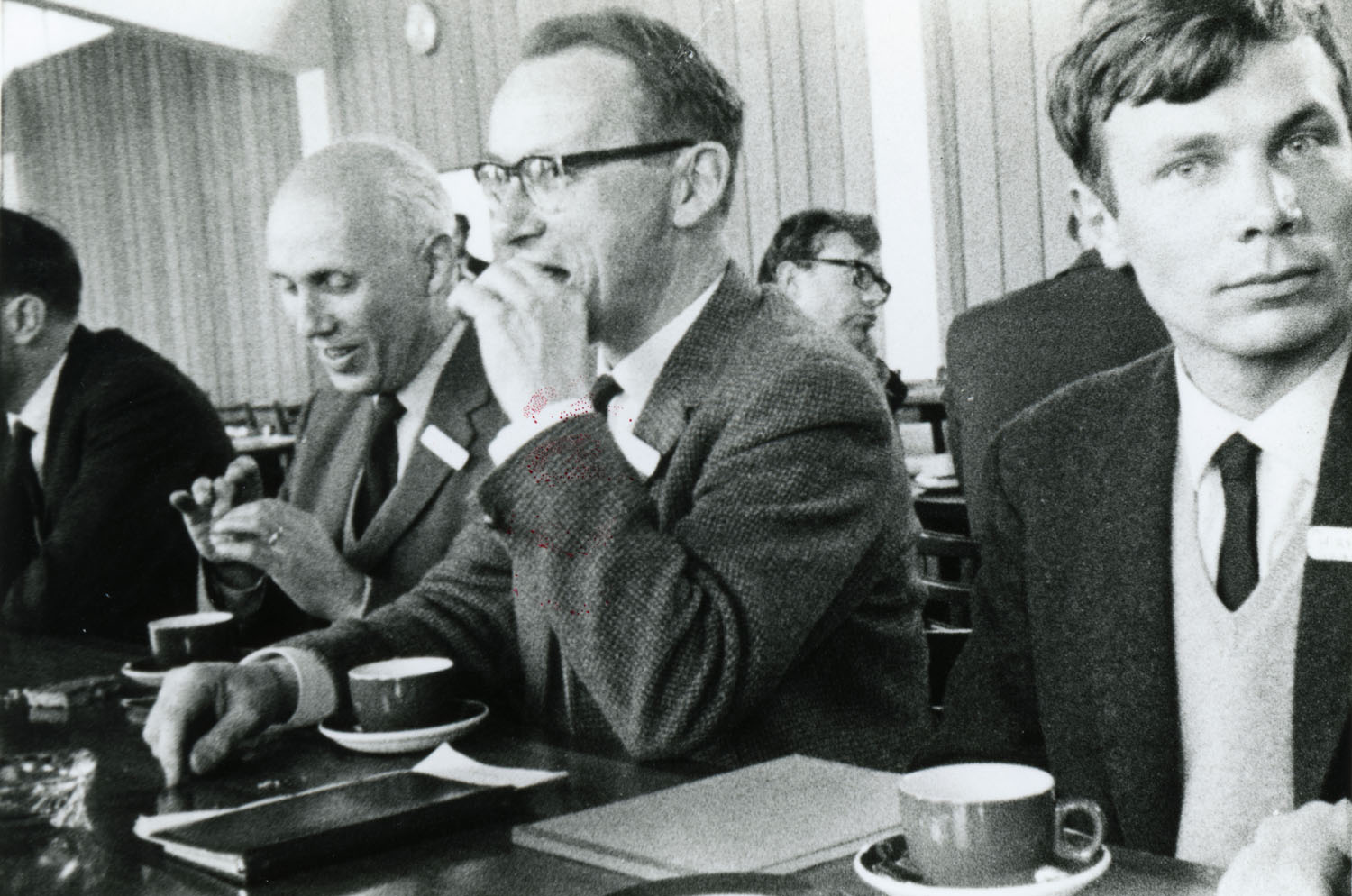
Richard Rado (1906-1989), Robert Rankin (1915-2001), and Hans Reimann, left to right, were photographed by Halmos in April of 1965 at the British Mathematical Colloquium in Dundee, Scotland. Halmos was one of three main speakers at this conference (I Want to Be a Mathematician, Springer, 1985, pp. 290-292). Another photograph of Rankin appears on page 7 of this collection, where you can read more about him.
Born in Berlin, Germany, Richard Rado earned doctoral degrees from the University of Berlin in 1933 and from Cambridge University in 1935. At the University of Berlin, he wrote the dissertation, “Studies on combinatorics,” under advisor Issai Schur and at Cambridge, he wrote the dissertation, “Linear Transformations on Bounded Sequences,” under advisor G. H. Hardy. Although he would write papers in both fields, his research throughout his career was primarily in combinatorics. In 1934, Rado met Paul Erdős, who had earned his Ph.D. in Budapest that year and accepted a fellowship at the University of Manchester in England, and the two began to collaborate. Erdős described the strengths each brought to their collaboration as follows:
I was good at discovering perhaps difficult and interesting special cases and Richard was good at generalising them and putting them in their proper perspective (quoted by O’Connor and Robertson in their MacTutor Archive biography of Rado).
After spending 1935-36 at Cambridge University, Rado was on the mathematics faculty at the University of Sheffield, England, from 1936 to 1947, then at King’s College, London, from 1947 to 1954, and finally at the University of Reading in England from 1954 onward. Much like another couple featured in this collection, Leonard and Reba Gillman (see page 17), Richard Rado and his wife, Luise Zadek Rado (d. 1990), were highly accomplished musicians, he as a pianist and she as a singer, and gave both public and private concerts. (Sources: MacTutor Archive, Mathematics Genealogy Project)
Hans-Martin Reimann earned his Ph.D. in 1969 at the Eidgenössische Technische Hochschule (ETH) in Zürich, Switzerland. After receiving the Diploma in Mathematics from ETH in 1964, he spent the 1964-1965 academic year at the University of Edinburgh studying with Arthur Erdélyi before beginning Ph.D. work at ETH in 1965. He has spent most of his career at the University of Bern, Switzerland, becoming Professor Emeritus in 2006, and, in 2012, his webpage listed his research interests as complex analysis, quasiconformal mappings, Lie groups, symplectic geometry, and wavelets. Recently, Reimann remembered meeting Halmos in Scotland during his year of study there and, in particular, having a cup of coffee with him after one of the conference lectures. He also wrote, "I started growing a beard only in 1972, yet there are hardly any pictures of me without a beard." For some evidence of his claim, see Reimann's photographs in the Oberwolfach Photo Collection and at his Universität Bern webpage. (Sources: Mathematics Genealogy Project, Universität Bern Mathematics, Hans-Martin Reimann (Nov. 2012))
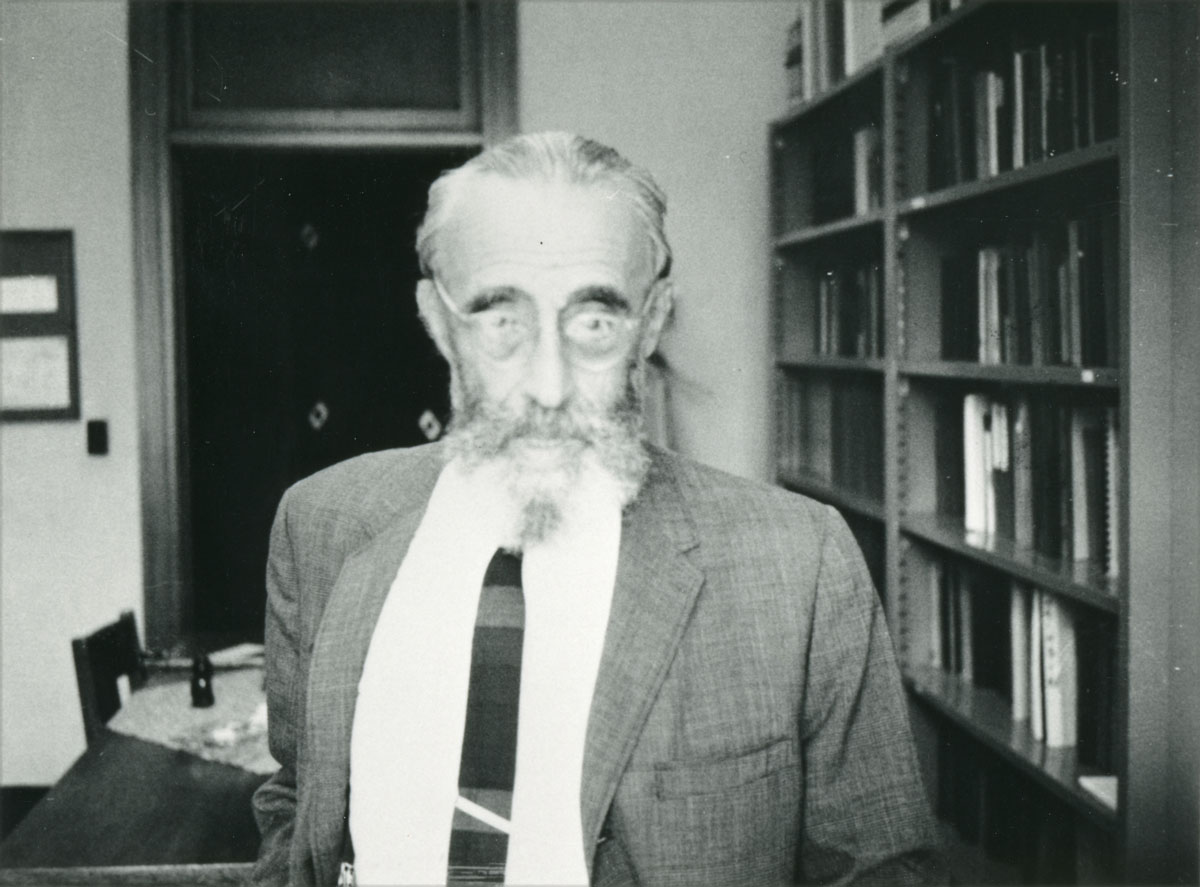
Halmos photographed George Yuri Rainich (1886-1968), in 1964, probably at the University of Michigan in Ann Arbor, where Halmos was a faculty member from 1961 to 1968 and Rainich a faculty member from 1926 onward, becoming Professor Emeritus in 1956. Born in Odessa, Russia, George Yuri Rabinovich earned his doctoral degree (Magister of Pure Mathematics) in 1913 from the University of Kazan, Russia. He remained on the faculty at Kazan until 1917 and was a mathematics professor at the University of Odessa from 1917 to 1922. During 1922 and 1923, he spent several months traveling to the U.S. and obtaining a fellowship at Johns Hopkins University in Baltimore, Maryland, where he became George Yuri Rainich. During the 1920s and certainly by 1926, when he joined the University of Michigan mathematics faculty, his main research focus had become relativity theory. According to his Ph.D. student (1947) and University of Michigan colleague (1947-1973, Emeritus 1973-1979) Kenneth B. Leisenring, Rainich wrote a series of papers during the 1920s in which he “showed that the mathematics of the general theory, which Einstein had made to supply a model for gravitation, also supplied one for electromagnetism” (UM Memorial), published the book Mathematics of Relativity (Wiley) in 1950, and in 1963, after serving as a visiting professor at the University of Notre Dame for several years, returned to UM to conduct a seminar on relativity theory. He advised at least 19 Ph.D. students at the University of Michigan in a wide variety of topics, and he established a fellowship fund at UM intended to promote graduate study in mathematics for African-American and international students.
If you’ve heard one story about Rainich, it probably was that, during a lecture on relativity theory at Columbia University, an audience member asked why he had not cited the work of Rabinovich among that of other leading researchers on the subject. Showing some embarrassment, Rainich answered, “Well, you see, I am Rabinovich.” (Sources: University of Michigan Faculty History Project, Mathematics Genealogy Project)
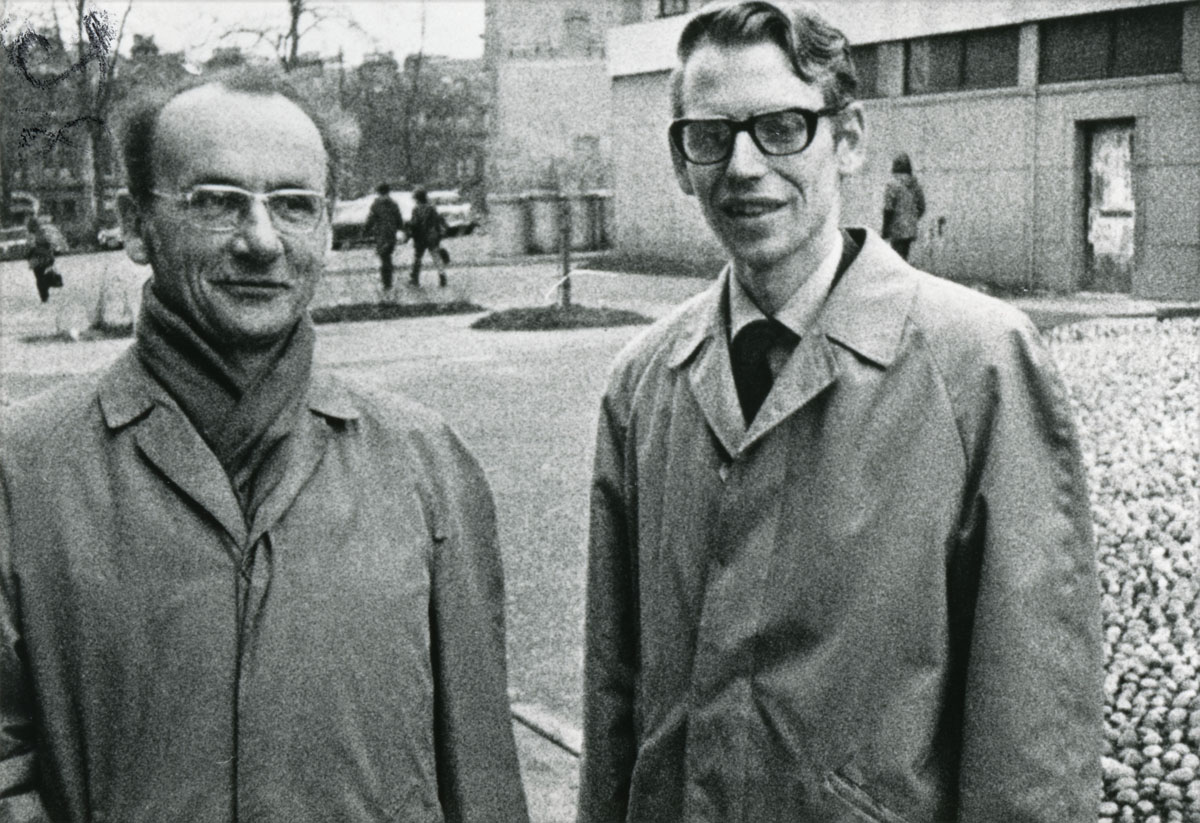
Halmos photographed Robert Rankin (1915-2001), left, and H. Garth Dales in 1973 at the University of Glasgow, Scotland, where Rankin was the longtime Head of Department and Dales was on the faculty. Two more photos of Rankin appear above and on page 7 of this collection, where you can read more about him. H. Garth Dales earned his Ph.D. in functional analysis in 1970 from the University of Newcastle-upon-Tyne, England. From his first academic post at Glasgow (1970-1973), he moved in 1973 to the University of Leeds, England, where he became Professor Emeritus of Pure Mathematics in 2011 and continues to carry out research on Banach algebras. Dales wrote (from his visiting position at the University of California, Berkeley, in November, 2012) that Halmos may have been at Glasgow to give a lecture to the "North British Functional Analysis Seminar." He also shared the following story about the intertwining of his and Rankin's lives:
Robert Rankin was the son of a professor of Old Testament Studies at the University of Edinburgh. He took a first degree and PhD at Cambridge, and then became a Fellow of Clare College, Cambridge. In 1945, after the war, Clare College appointed two Fellows - Rankin in Science and a certain Dr John Parry in Arts - and Rankin and Parry and their families shared a house owned by Clare in Cambridge for a couple of years. Eventually John Parry became a famous professor of Oceanic History at Harvard - and I married one of his daughters, Joanna Clare, who had, as a girl, lived in the Cambridge house with the Rankin family!
(Sources: Mathematics Genealogy Project, University of Leeds Mathematics, Garth Dales (Nov. 2012))
For an introduction to this article and to the Paul R. Halmos Photograph Collection, please see page 1. Watch for a new page featuring six new photographs each week during 2012.
Regarding sources for this page: Information for which a source is not given either appeared on the reverse side of the photograph or was obtained from various sources during 2011-12 by archivist Carol Mead of the Archives of American Mathematics, Dolph Briscoe Center for American History, University of Texas, Austin.
Who's That Mathematician? Paul R. Halmos Collection - Page 42
For more information about Paul R. Halmos (1916-2006) and about the Paul R. Halmos Photograph Collection, please see the introduction to this article on page 1. A new page featuring six photographs will be posted at the start of each week during 2012.
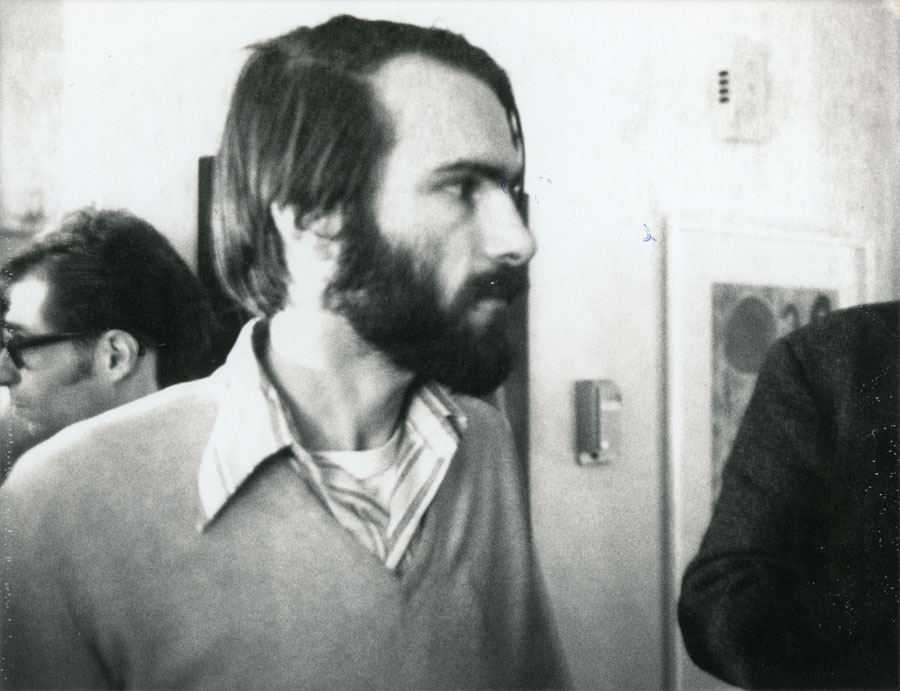
Halmos photographed algebraic topologist Douglas Ravenel on March 24, 1974, at Indiana University in Bloomington. Ravenel recently recalled that he was at IU in 1974
for a weekend topology conference, the second of three held there in consecutive years. They were known as "opera conferences" because there was always an excursion to an opera put on by the IU music school. The best seats in the house were only $5. The three operas were "The Marriage of Figaro," "Rigoletto" (in 1974), and "Parsifal." The other person visible in the picture (over my right shoulder) is Larry Smith, who was briefly an IU faculty member. In 1973 and 1974 I got a ride to the conference with Haynes Miller, who was then a Princeton graduate student. He was driving, Jack Morava was in the front seat navigating, and I was asleep in the back seat. Both times we got lost in the same part of Philadelphia, and both times Jack had a topological explanation. The first time it had to do with the local topology not being simply connected, something to do with a bridge. The second time Jack said the problem was that the topology was not locally Hausdorff. In 1975 we all flew there instead of driving.
Ravenel earned his Ph.D. in 1972 from Brandeis University in Waltham, Massachusetts. He was then on the faculties of Columbia University and the University of Washington before moving to the University of Rochester in 1988, where he is now Daniel Burton Fayerweather Professor of Mathematics. During the 1990s, he and Rochester colleagues launched the popular WeBWorK mathematics homework system. In 2009, Ravenel and two collaborators solved all but one case of the Arf-Kervaire invariant problem in homotopy theory. Be sure to see Ravenel’s short synopsis of this result, which includes photos of players from both the 20th and 21st century history of the problem. (Sources: Mathematics Genealogy Project, University of Rochester Mathematics, Doug Ravenel (Nov. 2012))

Sisters Julia Robinson (1919-1985), left, and Constance Reid (1918-2010) were photographed by Halmos in July of 1984 in Eugene, Oregon. Constance Reid was the well-known author of popular books about mathematics, most notably From Zero to Infinity: What Makes Numbers Interesting (MAA, 1961), and of biographies of mathematicians, including E. T. Bell (or John Taine), Richard Courant (photographed on page 10 of this collection), David Hilbert, Jerzy Neyman (photographed on page 38 of this collection), and Julia Robinson. Another photograph of Julia Robinson appears on page 30 of the collection, where you can read more about her. (Sources: MacTutor Archive, MAA obituary: Constance Reid)
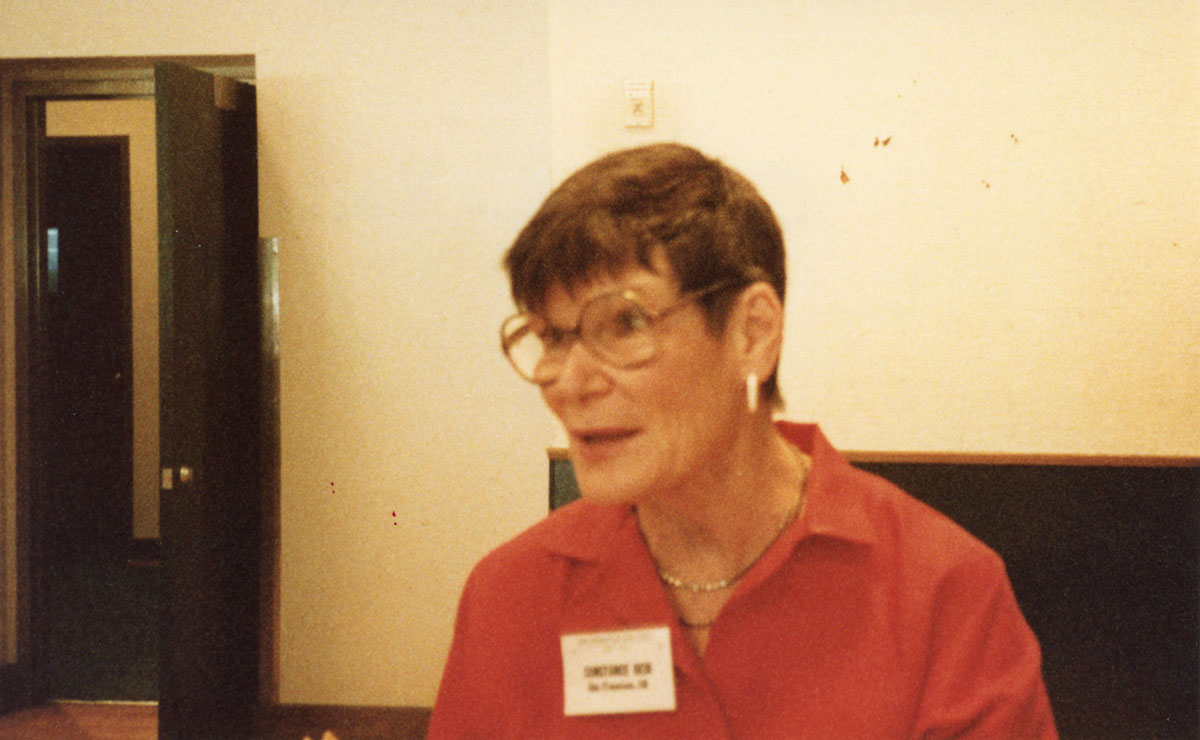
Halmos photographed Constance Reid (1918-2010) in July of 1984 in Eugene, Oregon. See the photo caption above for more information about Reid.
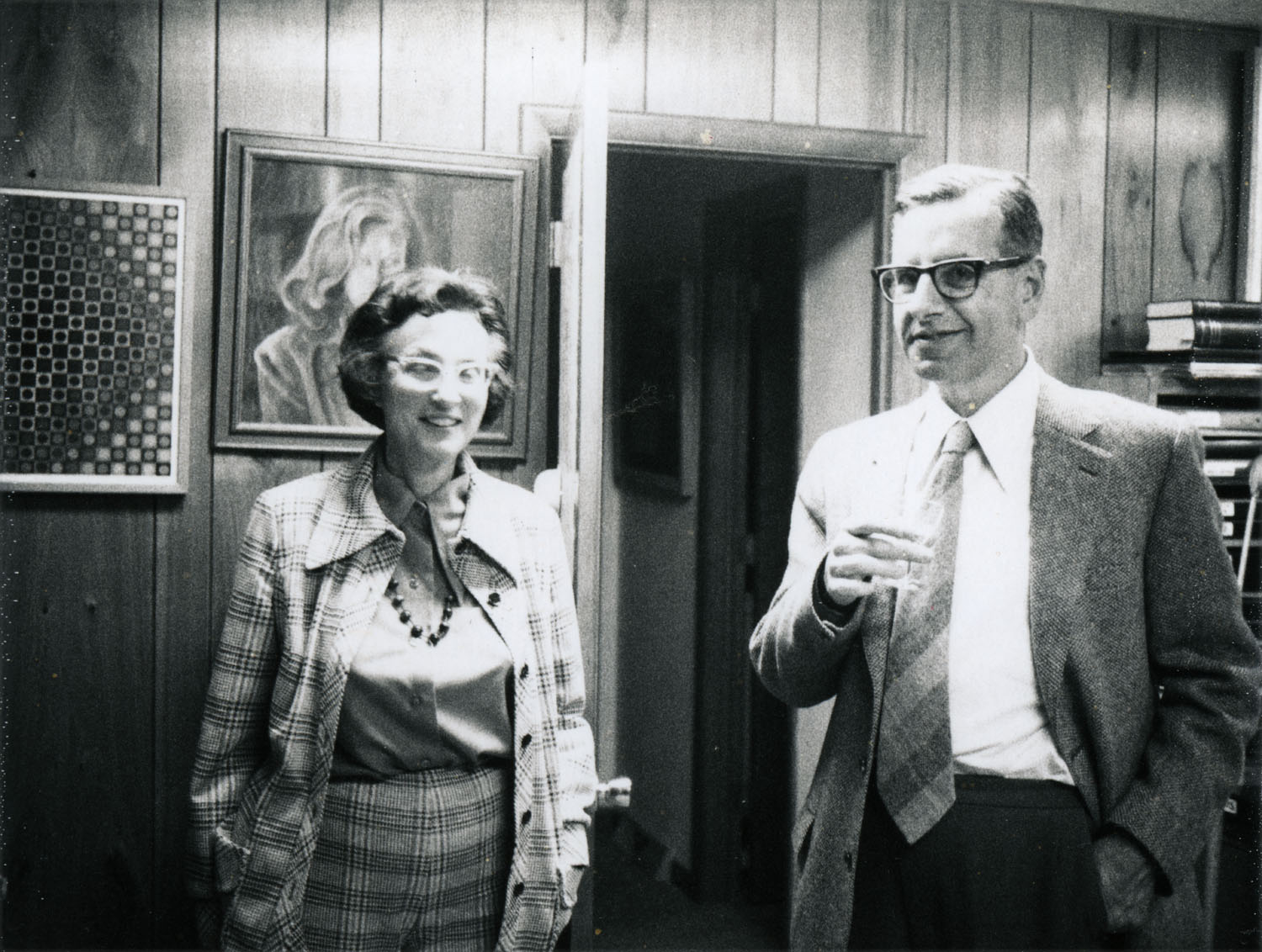
Mathematicians Irma Reiner (1922-2014) and Irving Reiner (1924-1986) were photographed by Halmos on October 11, 1974, in Bloomington, Indiana, in the home of Paul and Virginia Halmos. (We believe the painting just behind Irma Reiner in the photograph to be of Virginia Halmos.)
Irma Moses Reiner earned her Ph.D. in 1946 from Cornell University under advisor Burton W. Jones (see page 6 of this collection for a photo of Jones). Irving Reiner earned his Ph.D. in 1947, also from Cornell University under advisor Burton W. Jones. In fact, the Reiners were Jones’ first two Ph.D. students. Both Reiners spent their mathematical careers at the University of Illinois at Urbana-Champaign, where Irma Reiner was emeritus at the time this article was published. Irving Reiner is best known as co-author with Charles Curtis of the classic Representation Theory of Finite Groups and Associative Algebras, originally published in 1962 and revised and republished in two volumes in 1981 and 1987. (Sources: MacTutor Archive, Mathematics Genealogy Project, Irma Reiner (Nov. 2012), Chicago Tribune obituary of Irma Reiner)
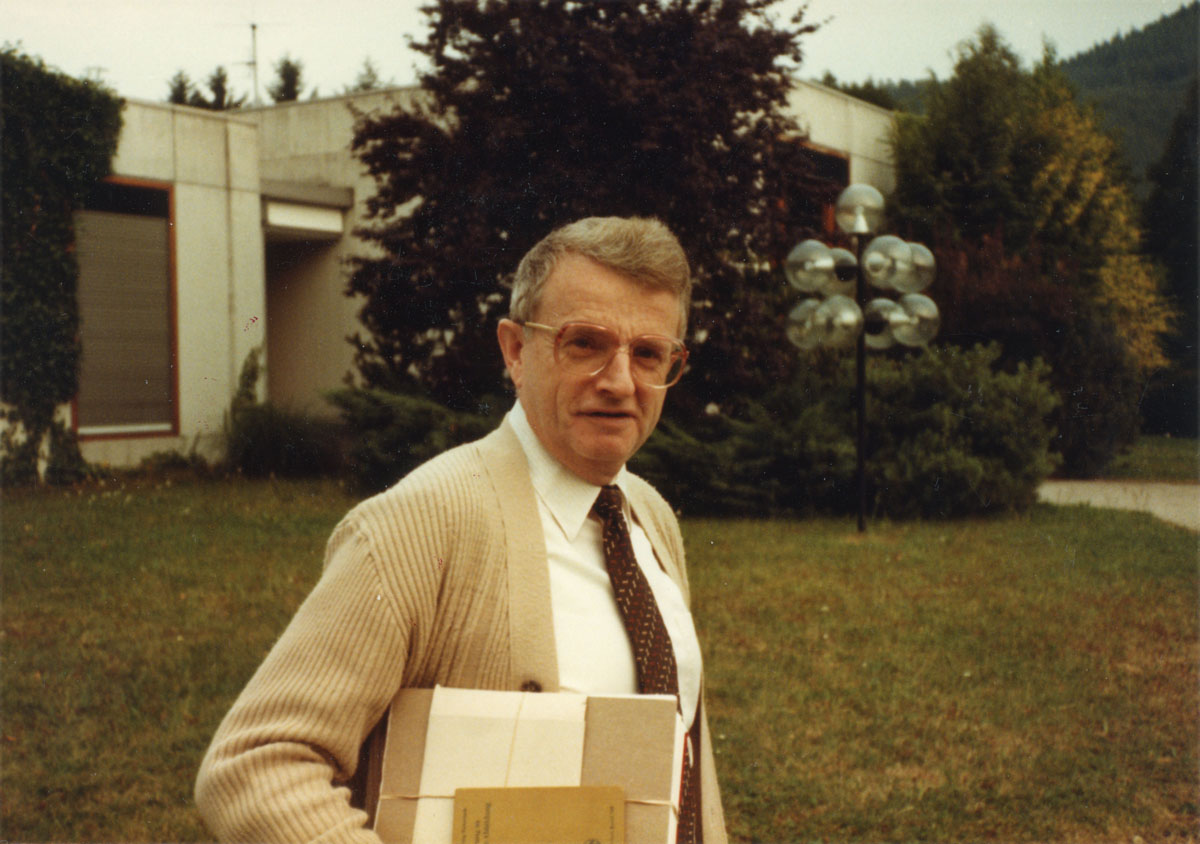
Halmos photographed Reinhold Remmert in August of 1983 in Oberwolfach, Germany. Halmos and Remmert were attending the last in a series of seven conferences at the Oberwolfach Conference Center organized by Paul Butzer (page 9) from 1963 to 1983 on approximation theory and related topics in functional analysis. Another photo of Remmert appears on page 18 of this collection, where you can read more about him. Be sure to see also the Oberwolfach Photograph Collection.

Halmos photographed Natalie Davis and Alfréd Rényi (1921-1970) in September of 1961.
Natalie Zemon Davis, wife of mathematician Chandler Davis, is a noted social and cultural historian, primarily of early modern France. Her best known book is The Return of Martin Guerre (1983), also the title of a popular film released at the same time. Natalie and Chandler Davis were victims of the “Red scare” in the United States during the 1950s, with Chandler Davis losing his job at the University of Michigan in 1954 and even being imprisoned for six months. They moved to Toronto, Canada, during the summer of 1962, and Chandler Davis is now Professor Emeritus of Mathematics at the University of Toronto. (Sources: Wikipedia, University of Michigan History, University of Toronto Mathematics, Chandler Davis (Nov. 2012))
Natalie and Chandler Davis recalled more vividly a later visit to North America by Alfréd Rényi and his daughter Zsuzsi (see page 43 of this collection for a photo of Alfréd and Zsuzsanna Rényi, probably on that very visit). Natalie Davis later found "duplicate" evidence of Alfréd Rényi's earlier visit:
Going through all our old photographs yesterday for another reason, I came upon the original of the Halmos photograph of me and Rényi. It had the date September 1961 on the back and Paul [Halmos] had written "Belle of the Ball"....
Born in Budapest, Hungary, Alfréd Rényi earned his doctoral degree in 1945 from the University of Szeged, Hungary, under advisor Frigyes (Frédéric) Riesz. According to O’Connor and Robertson of the MacTutor Archive, this was after graduating from the University of Budapest, where he studied from 1940 to 1944 under Lipót Fejér and Paul Turán, escaping from a forced-labor camp, hiding out to avoid capture, and rescuing his parents from the Budapest ghetto by impersonating a soldier. After a postdoctoral year in Russia (1946-47) during which he obtained important results on the Goldbach Conjecture, Rényi continued to obtain results in number theory, probability, and analysis as a professor at the University of Budapest and a member of the Hungarian Academy of Sciences and director of its Institute for Applied Mathematics before dying suddenly at age 48. Rényi’s wife was the mathematician Katalin (Kató) Rényi, and possibly she and/or Chandler Davis were among the assembled party as well. We will search for photographic evidence! (Source: MacTutor Archive)
For an introduction to this article and to the Paul R. Halmos Photograph Collection, please see page 1. Watch for a new page featuring six new photographs each week during 2012.
Regarding sources for this page: Information for which a source is not given either appeared on the reverse side of the photograph or was obtained from various sources during 2011-12 by archivist Carol Mead of the Archives of American Mathematics, Dolph Briscoe Center for American History, University of Texas, Austin.
Who's That Mathematician? Paul R. Halmos Collection - Page 43
For more information about Paul R. Halmos (1916-2006) and about the Paul R. Halmos Photograph Collection, please see the introduction to this article on page 1. A new page featuring six photographs will be posted at the start of each week during 2012.
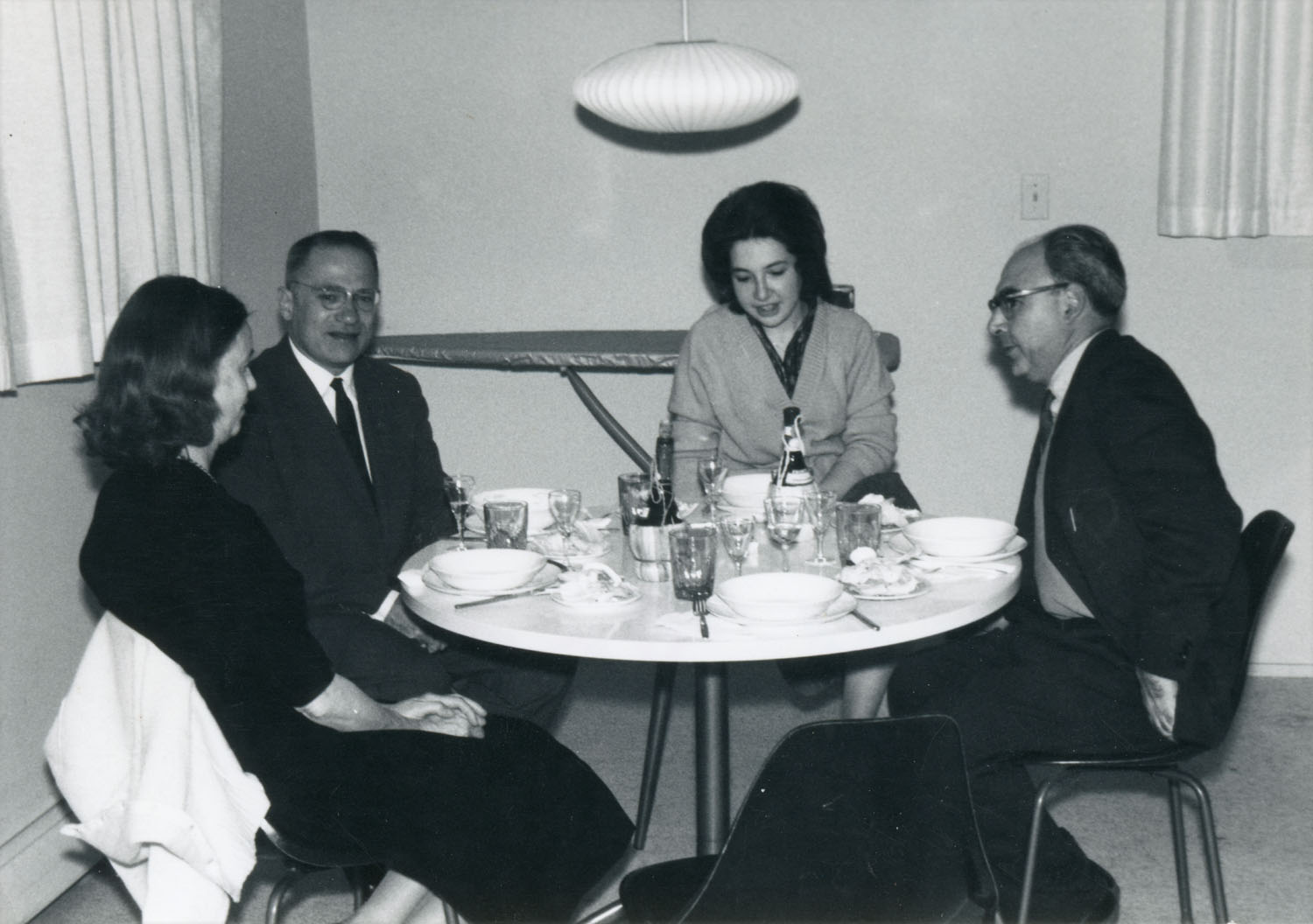
Halmos photographed, left to right, Virginia Halmos, Béla Szökefalvi-Nagy (1913-1998), Zsuzsanna (Zsuzsa) Rényi, and Alfréd Rényi (1921-1970) in April of 1964 in Ann Arbor, Michigan, possibly in the Halmos' home there. Halmos was a professor at the University of Michigan from 1961 to 1968. Another photograph of Virginia Halmos, wife of Paul Halmos, can be found on page 35 of this collection, where you can read more about her. Photos of Béla Szökefalvi-Nagy appear on page 9, page 14, page 36, and page 38 of this collection; read more about him on pages 9 and 14. Zsuzsanna Rényi is the daughter of Alfréd Rényi. Another photograph of Alfréd Rényi appears on page 42 of this collection, where you can read more about him. (Sources: MacTutor Archive, Mathematics Genealogy Project)
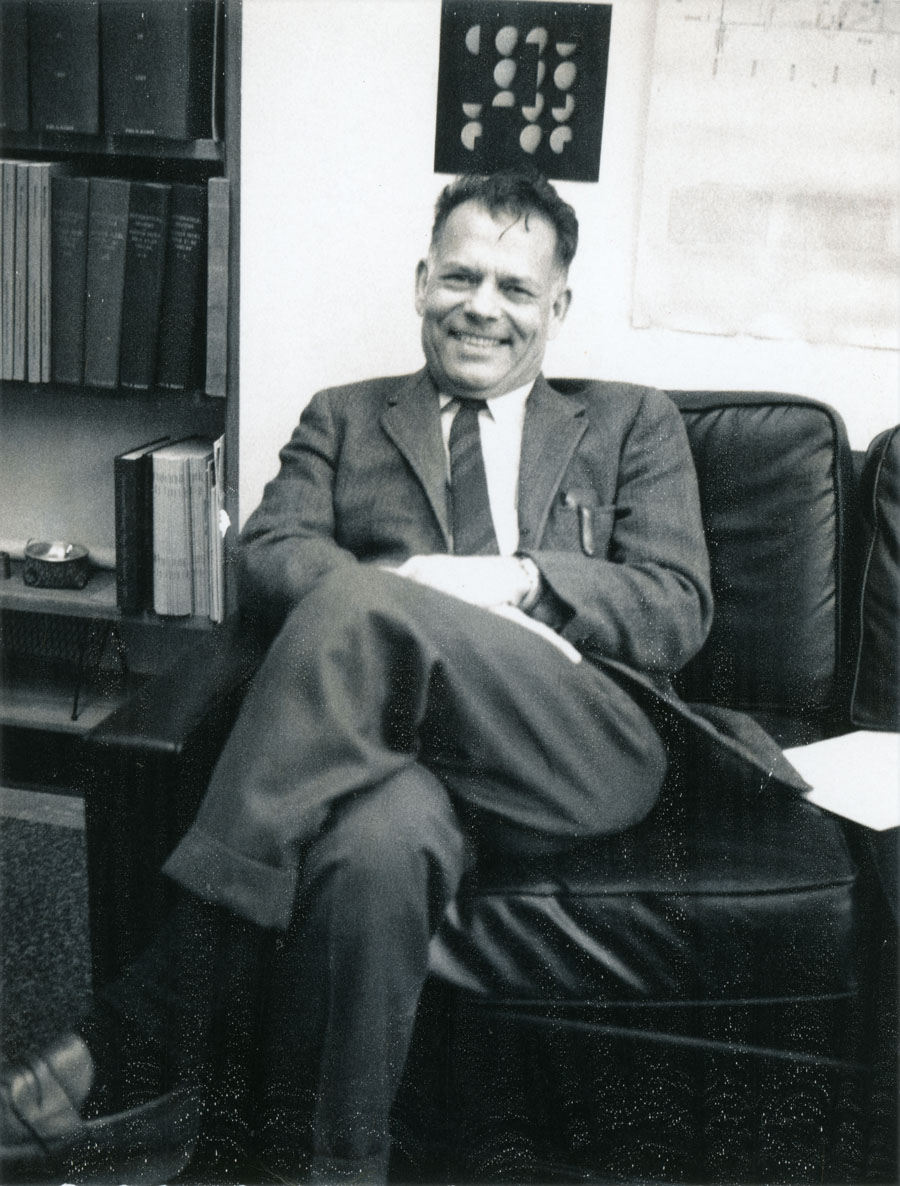
Charles Rickart (d. 2002) was photographed by Halmos on February 9, 1970, in Bloomington, Indiana. Rickart earned his Ph.D. in 1941 from the University of Michigan with the dissertation, “Integration in a Convex Linear Topological Space,” written under advisor T. H. Hildebrandt. (For a photograph of Hildebrandt, see page 23 of this collection.) After two years at Harvard, Rickart joined the faculty at Yale University in 1943, becoming Percey F. Smith Professor of Mathematics in 1963 and Professor Emeritus in 1983. In addition to his research on Banach algebras, he was known for his excellence and interest in teaching at all levels. During the late 1950s and early 1960s, he helped develop the “new math” for American schools. (Sources: Mathematics Genealogy Project, Yale University obituary)
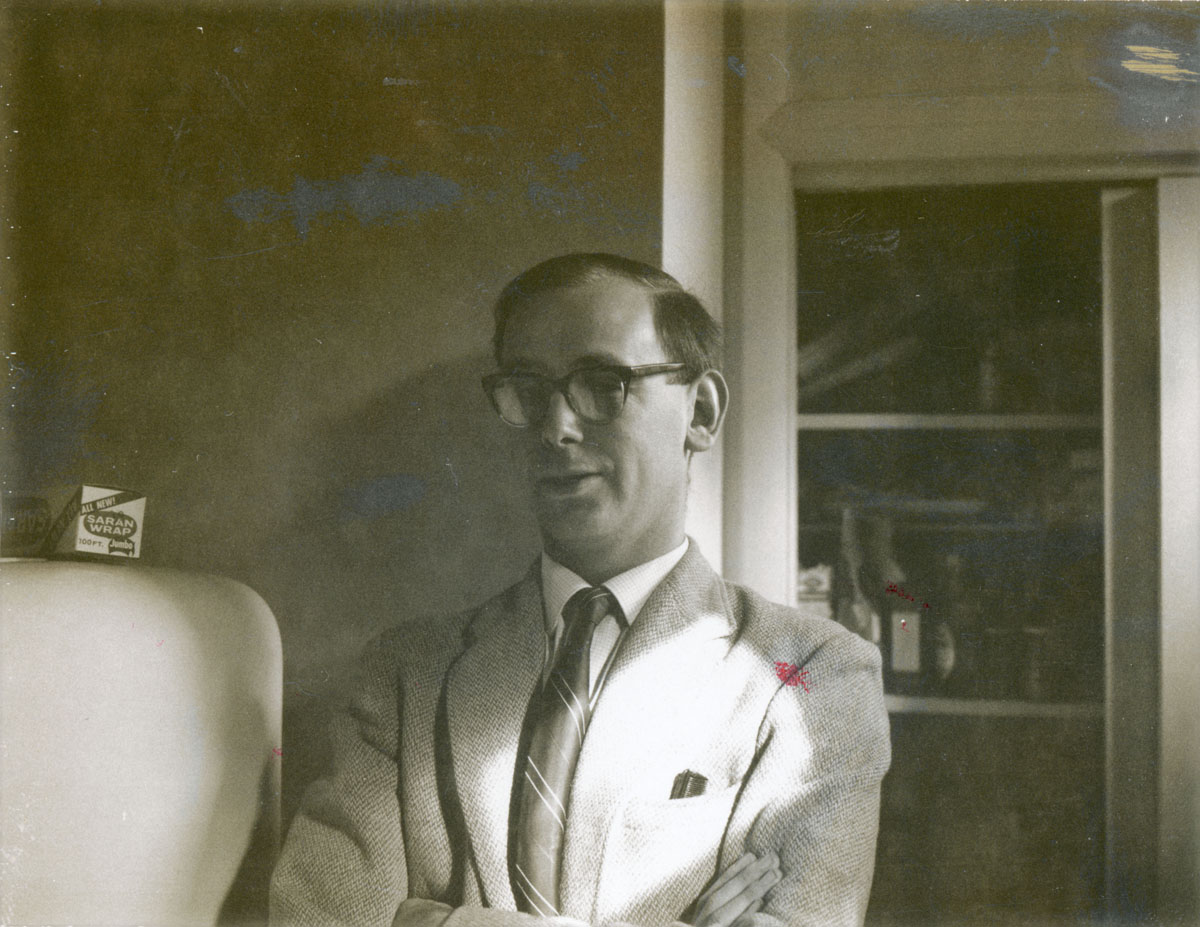
Halmos photographed John Ringrose on October 10, 1964, in Philadelphia, Pennsylvania. Ringrose earned his Ph.D. in operator theory in 1957 from Cambridge University under advisor Frank Smithies. After two years at the University of Newcastle-upon-Tyne (1957-59) and two years back at Cambridge (1961-63), he has spent his career at Newcastle, becoming Chair of Pure Mathematics in 1964, the year this photo was taken, and Professor Emeritus in 1993. O’Connor and Robertson of the MacTutor Archive described Ringrose as “a leading world expert on non-self-adjoint operators and operator algebras,” and praised his 1971 text on the former subject as well as his and Richard Kadison’s (see page 26 for a photo of Kadison) four-volume work on the latter subject. (Sources: MacTutor Archive, Mathematics Genealogy Project)

Robert Ritchie, left, and Raymond Wilder (1896-1982) were photographed by Halmos in March of 1964 in Ann Arbor, Michigan. Halmos and Wilder were on the faculty at the University of Michigan in Ann Arbor at the time. Ritchie earned his Ph.D. in 1960 from Princeton University with the dissertation, “Classes of Recursive Functions of Predictable Complexity,” written under advisor Alonzo Church. He spent much of the next two decades at the University of Washington in Seattle and, by 1985, had become manager of the Computer Science Laboratory at the Xerox Palo Alto (California) Research Center (PARC). (Sources: Mathematics Genealogy Project; George E. Pake, “Research at Xerox PARC: A Founder’s Assessment,” IEEE Spectrum (Oct. 1985), pp. 54-61)
Wilder earned his Ph.D. in general topology in 1923 from the University of Texas at Austin under advisor R. L. Moore, Moore’s first of 47 doctoral students at Texas (for a photo of Moore, see page 35 of this collection). After one year as an instructor at Texas and another two years at Ohio State University, Wilder joined the faculty at the University of Michigan in Ann Arbor, where he would remain until his retirement in 1967 and where Halmos also was on the faculty from 1961 to 1968. Wilder spent the rest of his career and life based at the University of California, Santa Barbara, where Halmos spent the years 1975-77. Wilder worked on set theoretic topology during the 1920s, broadening his interests to include algebraic topology and topology of manifolds during the 1930s and 1940s. He is best known today for his work on the foundations of mathematics and, in particular, for his books Introduction to the Foundations of Mathematics (1952) and Mathematics as a Cultural System (1981). Wilder was president of the American Mathematical Society (AMS) during 1955-56 and of the MAA during 1965-66. (Sources: MacTutor Archive, AMS Presidents, MAA Presidents)
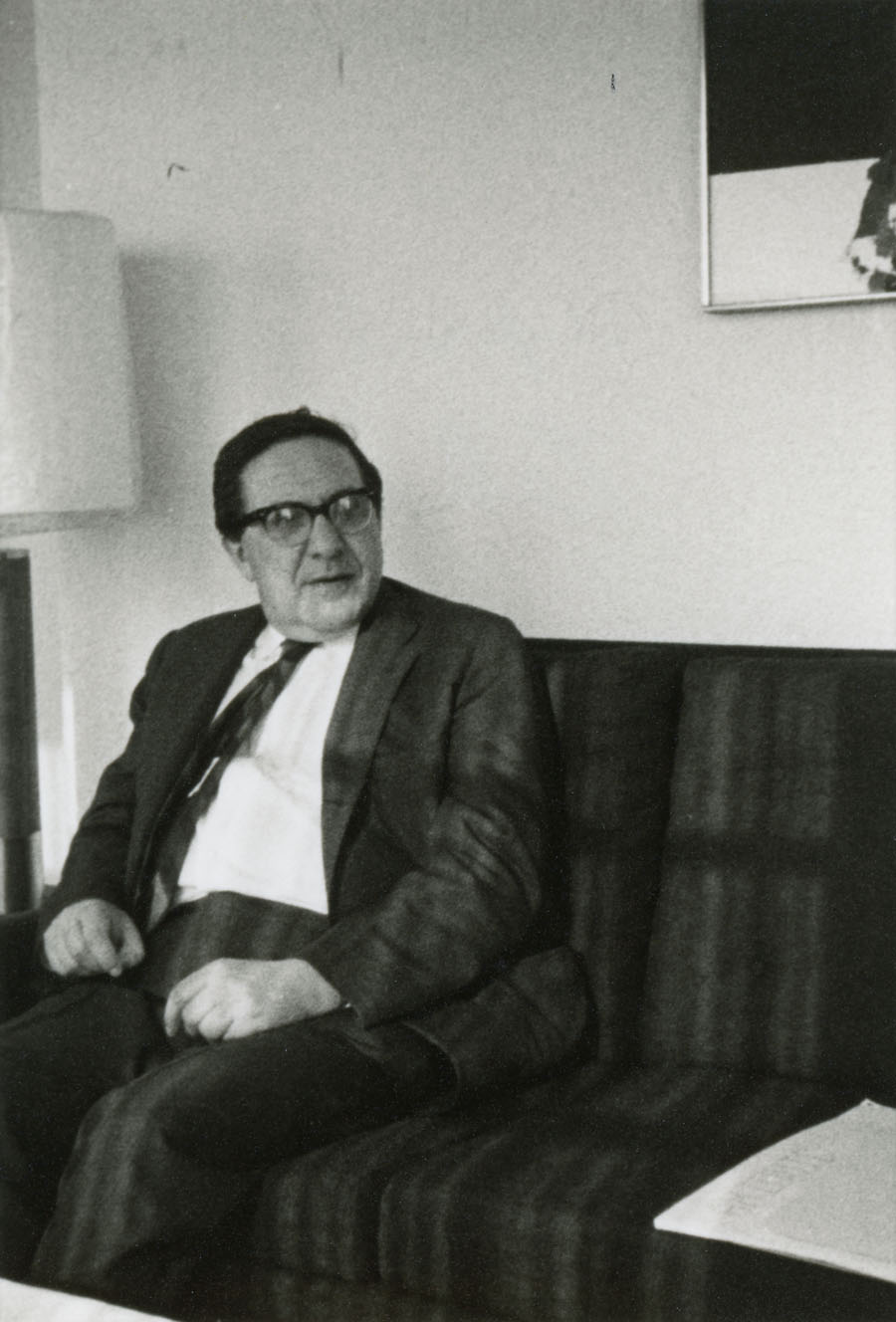
Halmos photographed Ronald Rivlin (1915-2005) in April of 1970 at Lehigh University in Bethlehem, Pennsylvania. Born in London, England, Rivlin earned his Sc.D. from Cambridge University in 1952, specializing in applied mathematics. He had worked as a physicist for the British Rubber Producers Research Association and, from 1950 to 1953, served as its supervisor of research. In 1953, he joined the faculty of Brown University in Providence, R. I., and, in 1967, he moved to Lehigh University to help found its Center for Applied Mathematics, which he directed until he retired in 1980, when he became Professor Emeritus of Applied Mathematics and Mechanics. According to colleagues, Rivlin was the founder of the modern theory of finite elasticity, having developed solutions to non-linear systems describing deformations of rubber and rubber-like materials. (Sources: Mathematics Genealogy Project, Lehigh University obituary)
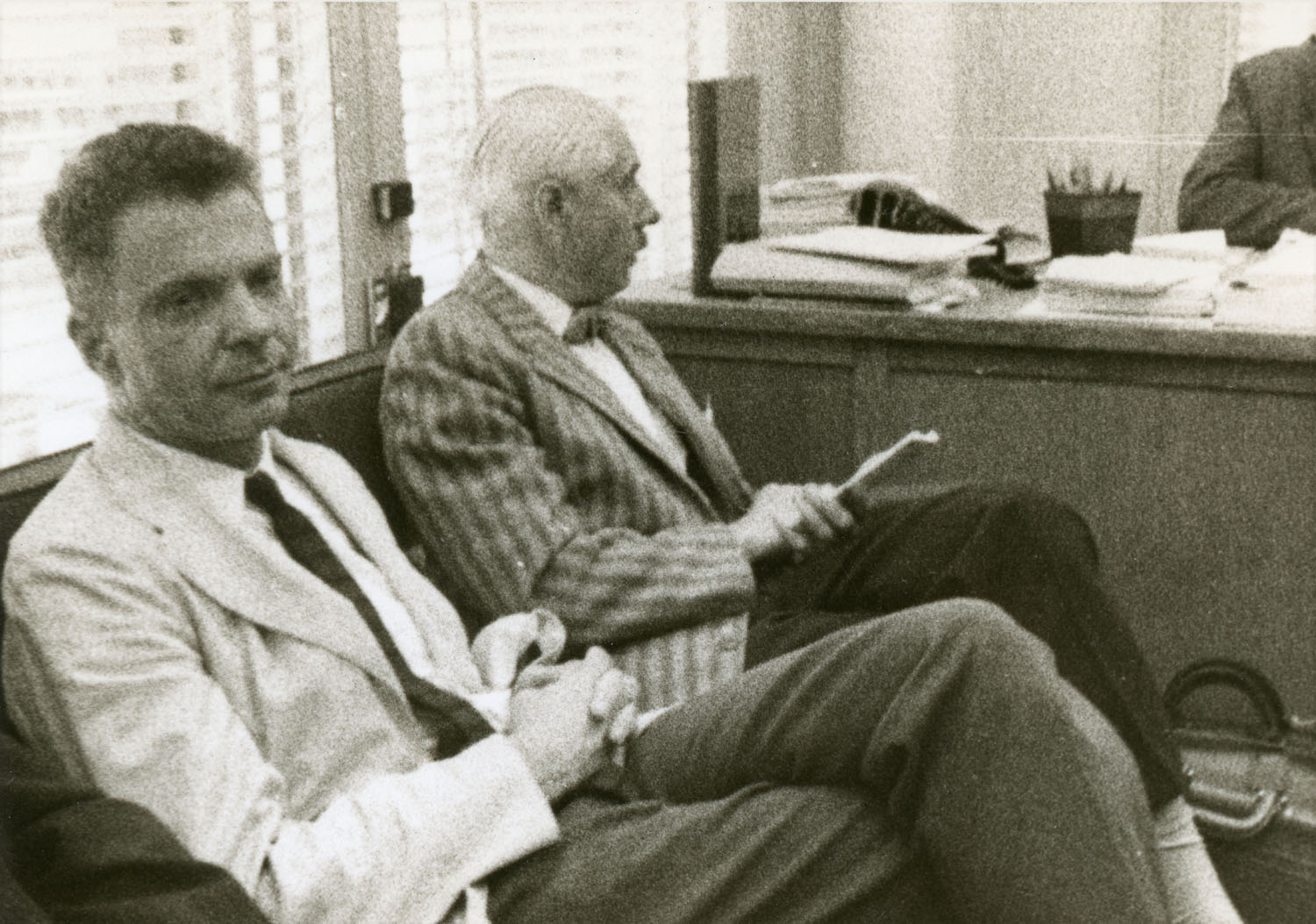
Halmos photographed Herbert Robbins (1915-2001), left, and Julius Hlavaty in September of 1960, possibly at Columbia University in New York City.
Robbins earned his Ph.D. in topology in 1938 from Harvard University under advisor Hassler Whitney. He spent the year 1938-1939 at the Institute for Advanced Study, where he may have first met or may have just missed Halmos, who spent the years 1939-1942 there. In 1939, Robbins moved to New York University, where he collaborated with Richard Courant on their famous book, What Is Mathematics? (1941). After wartime service in the U.S. Navy during the years 1942-46, Robbins joined the statistics faculty at the University of North Carolina at Chapel Hill in order to teach probability (he had written a few papers on geometric probability) and soon changed his research area to statistics. In 1953, he became a statistics professor at Columbia University, where he would spend most of the rest of his career, retiring in 1985. He then served as a statistics professor at Rutgers University in New Jersey until 1977. (Sources: MacTutor Archive, Mathematics Genealogy Project)
According to the National Council of Teachers of Mathematics (NCTM), Julius Hlavaty
was affiliated for many years with Columbia University, where he served as an instructor at Teachers College. He taught at several New York City high schools and was the first chairman of the department of mathematics at the Bronx High School of Science. He served on the Commission on Secondary School Curriculum and the Curriculum Workshop at Syracuse University. Hlavaty lectured and appeared on the national educational program Continental Classroom, broadcast on NBC-TV. He also instructed many National Science Foundation (NSF) institutes for teachers of mathematics.
Hlavaty served as president of NCTM from 1968 to 1970. (Source: National Council of Teachers of Mathematics (NCTM) biography)
For an introduction to this article and to the Paul R. Halmos Photograph Collection, please see page 1. Watch for a new page featuring six new photographs each week during 2012.
Regarding sources for this page: Information for which a source is not given either appeared on the reverse side of the photograph or was obtained from various sources during 2011-12 by archivist Carol Mead of the Archives of American Mathematics, Dolph Briscoe Center for American History, University of Texas, Austin.
Who's That Mathematician? Paul R. Halmos Collection - Page 44
For more information about Paul R. Halmos (1916-2006) and about the Paul R. Halmos Photograph Collection, please see the introduction to this article on page 1. A new page featuring six photographs will be posted at the start of each week during 2012.
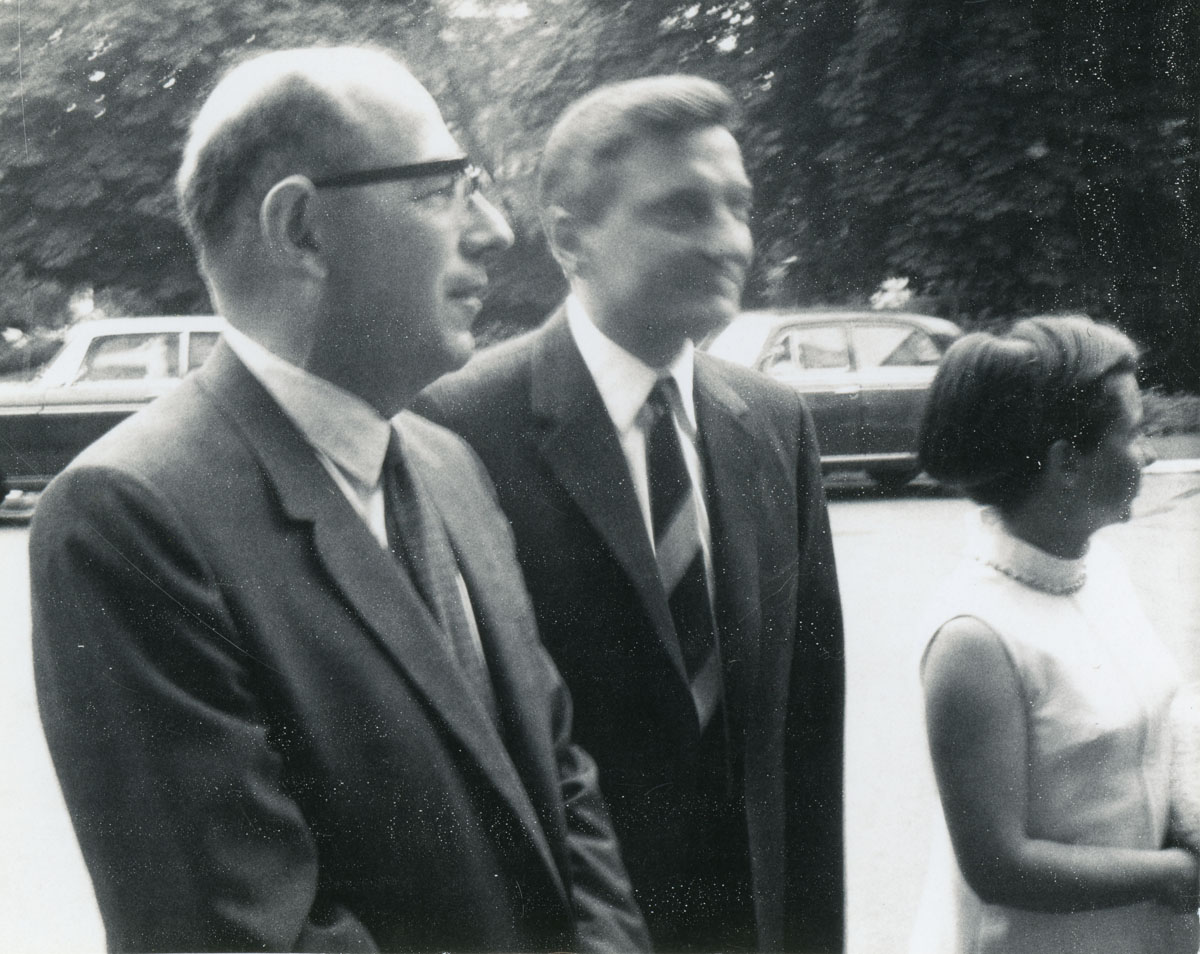
Halmos photographed, left to right, Abraham Robinson (1918-1974), Dieter Puppe (1930-2005), and a woman identified only as Puppe’s wife on July 18, 1968, in Heidelberg, Germany.
Born in Germany, “Abby” Robinson moved with his family to Palestine in 1933, just after Hitler came to power. After earning his bachelors degree in mathematics from Hebrew University of Jerusalem in 1939, he studied for just a few months at the Sorbonne in Paris before fleeing Hitler again, this time to England. Although his war service with the Free French Air Force made him an expert in aerodynamics, when he finally returned to graduate school, Robinson also returned to his earlier interest in mathematical logic. He earned his Ph.D. in 1949 from the University of London with the dissertation “The Metamathematics of Algebraic Systems,” written under advisor Paul Dienes. He was on the faculties of the University of Toronto (1951-57), Hebrew University of Jerusalem (1957-62), the University of California at Los Angeles (1962-67), and, finally, Yale University (1967-74). His most famous invention was non-standard analysis (beginning in 1961) and his most famous book Non-standard analysis (1966). (Sources: MacTutor Archive, Mathematics Genealogy Project)
Dieter Puppe earned his Ph.D. in algebraic topology in 1954 from Heidelberg University under advisor Herbert Seifert. He was on the mathematics faculty at the University of Heidelberg until 1960, and then at the University of Saarland, Germany, from 1960 to 1968. In 1968, the year this photo was taken, Puppe returned to the University of Heidelberg and spent the rest of his career there, becoming emeritus in 1996. He and Halmos may have first met during the academic year 1957-58, which both spent at the Institute for Advanced Study in Princeton, New Jersey. (Sources: Mathematics Genealogy Project, Wikipedia)
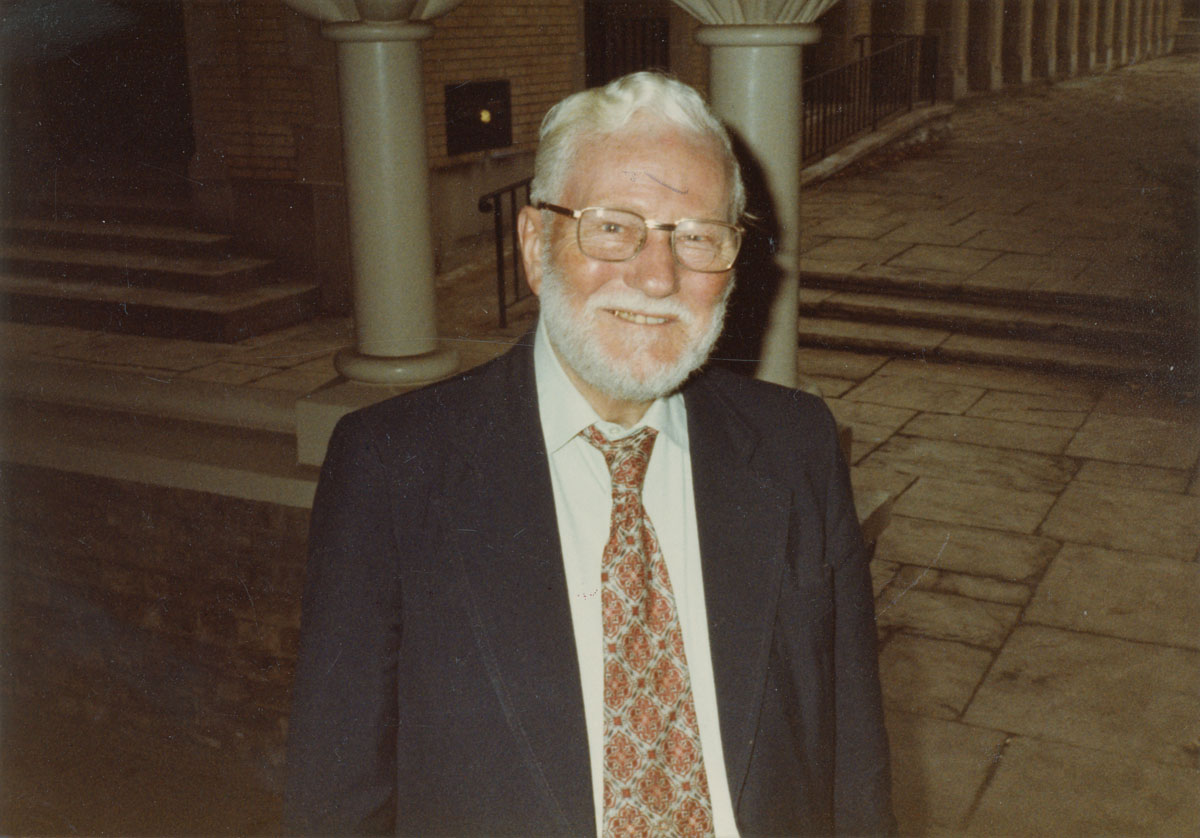
Gilbert de Beauregard Robinson (1906-1992) was photographed by Halmos in November of 1983 at the Ontario Mathematics Meeting in Toronto, Ontario, Canada. Another photograph of G. de B. Robinson, who spent his career at the University of Toronto, appears on page 10 of this collection, where you can read more about him. Paul Butzer (see page 9 of this collection), who was a Ph.D. student at the University of Toronto from 1948 to 1951, recalled Robinson as a “very helpful and influential person,” who dispensed useful and motivational advice such as, “If you do not publish in the first year after the doctorate, you will not make it as a real mathematician.” (Sources: Canadian Mathematical Society, MacTutor Archive, Paul Butzer (March 2012))
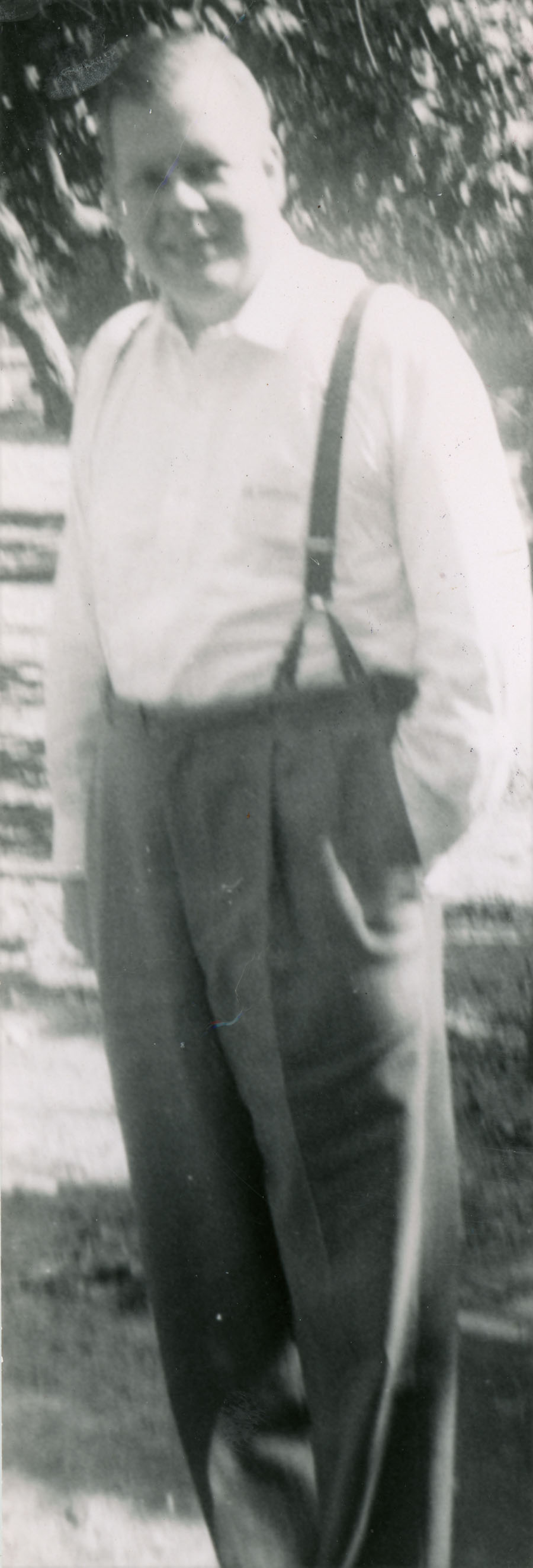
Halmos photographed Raphael Robinson (1911-1995) in about 1955. Robinson earned his Ph.D. in complex analysis from the University of California, Berkeley, in 1935 with the dissertation “Some results in the theory of Schlicht functions,” written under advisor John McDonald. After two years at Brown University in Providence, Rhode Island, Robinson returned to UC Berkeley, where he spent the rest of his career and life. He continued to work in analysis but also in logic, set theory, geometry, tilings of the plane, number theory, and combinatorics, and it may be his work in logic, some of it with Alfred Tarski, his colleague at Berkeley from 1942 onward, that is best-known today. (Sources: MacTutor Archive, Mathematics Genealogy Project)
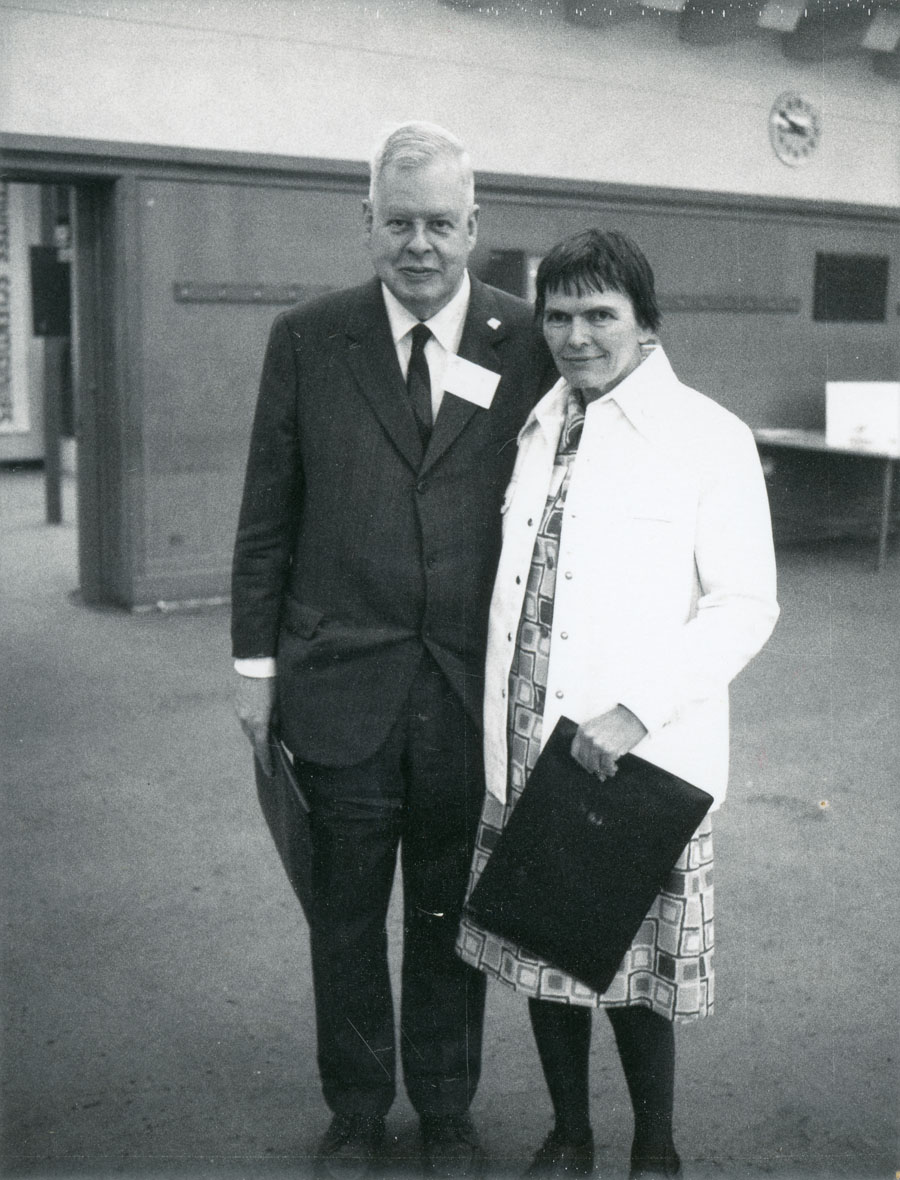
Raphael Robinson (1911-1995) and Julia Robinson (1919-1985) were photographed by Halmos on August 20, 1974, at the International Congress of Mathematicians held in Vancouver, British Columbia, Canada. The two mathematicians married in December of 1941. Another photograph of Raphael Robinson appears above. Additional photos of Julia Robinson appear on page 30 of this collection, where you can read more about her, and on page 42 of this collection.
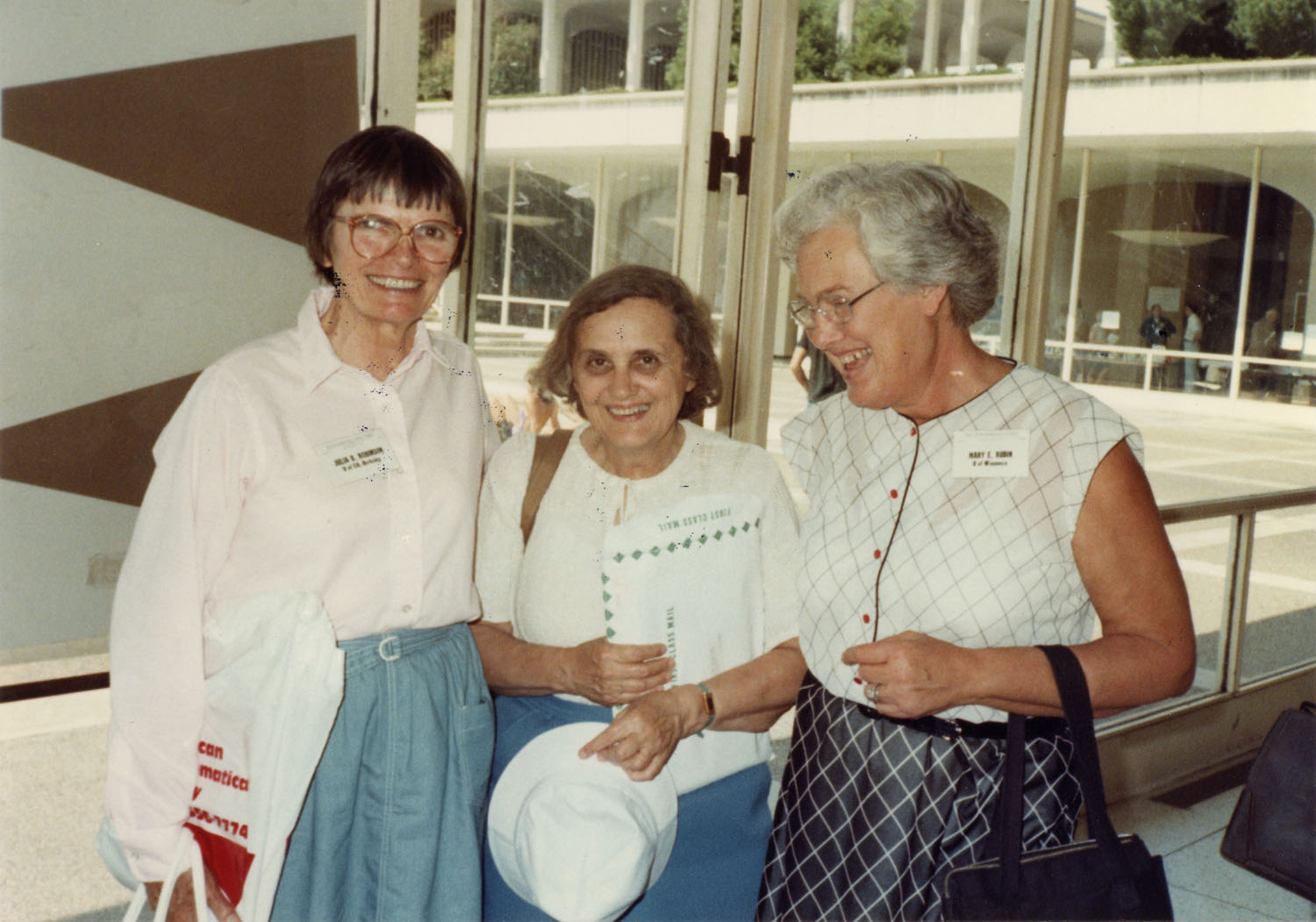
Halmos photographed, left to right, Julia Robinson (1919-1985), Lisl Gaal, and Mary Ellen Rudin (1924-2013) in August of 1983 in Albany, New York. Additional photographs of Julia Robinson appear above; on page 30 of this collection, where you can read more about her; and on page 42 of this collection. Another photograph of Lisl Gaal appears on page 15 of this collection, where you can read more about her. For another photo of Mary Ellen Rudin and to read more about her, see page 25 of this collection.
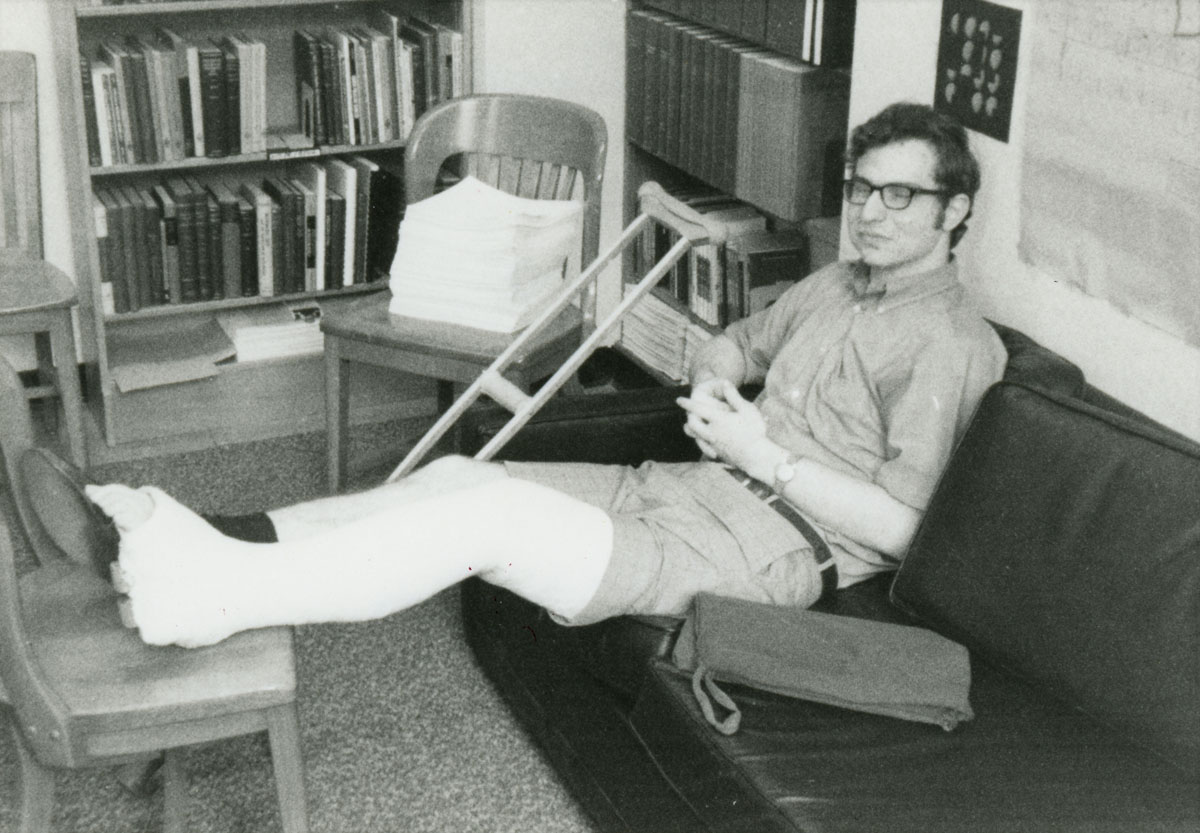
Halmos photographed his Ph.D. student Donald Rogers in October of 1970 in Bloomington, Indiana. Rogers earned his Ph.D. in 1975 from Indiana University with the dissertation “Normal Spectral Approximation.” In his I Want to Be a Mathematician, Halmos described Rogers as a member of his “gang of five” Ph.D. students at Indiana who took his real variable and/or functional analysis courses during 1969-1971 (Halmos’ first two years at Indiana), worked in operator theory, participated in a “private seminar (which met sometimes in my living room with beer and pretzels),” spent a semester at the University of Edinburgh with Halmos, and were awarded their Ph.D.s from 1973 to 1975. Halmos reported in 1985 that Rogers was pursuing a mathematical career outside of academia. (Sources: Mathematics Genealogy Project; Paul R. Halmos, I Want to Be a Mathematician: An Automathography, Springer, 1985, pp. 366-367)
For an introduction to this article and to the Paul R. Halmos Photograph Collection, please see page 1. Watch for a new page featuring six new photographs each week during 2012.
Regarding sources for this page: Information for which a source is not given either appeared on the reverse side of the photograph or was obtained from various sources during 2011-12 by archivist Carol Mead of the Archives of American Mathematics, Dolph Briscoe Center for American History, University of Texas, Austin.
Who's That Mathematician? Paul R. Halmos Collection - Page 45
For more information about Paul R. Halmos (1916-2006) and about the Paul R. Halmos Photograph Collection, please see the introduction to this article on page 1. A new page featuring six photographs will be posted at the start of each week during 2012.
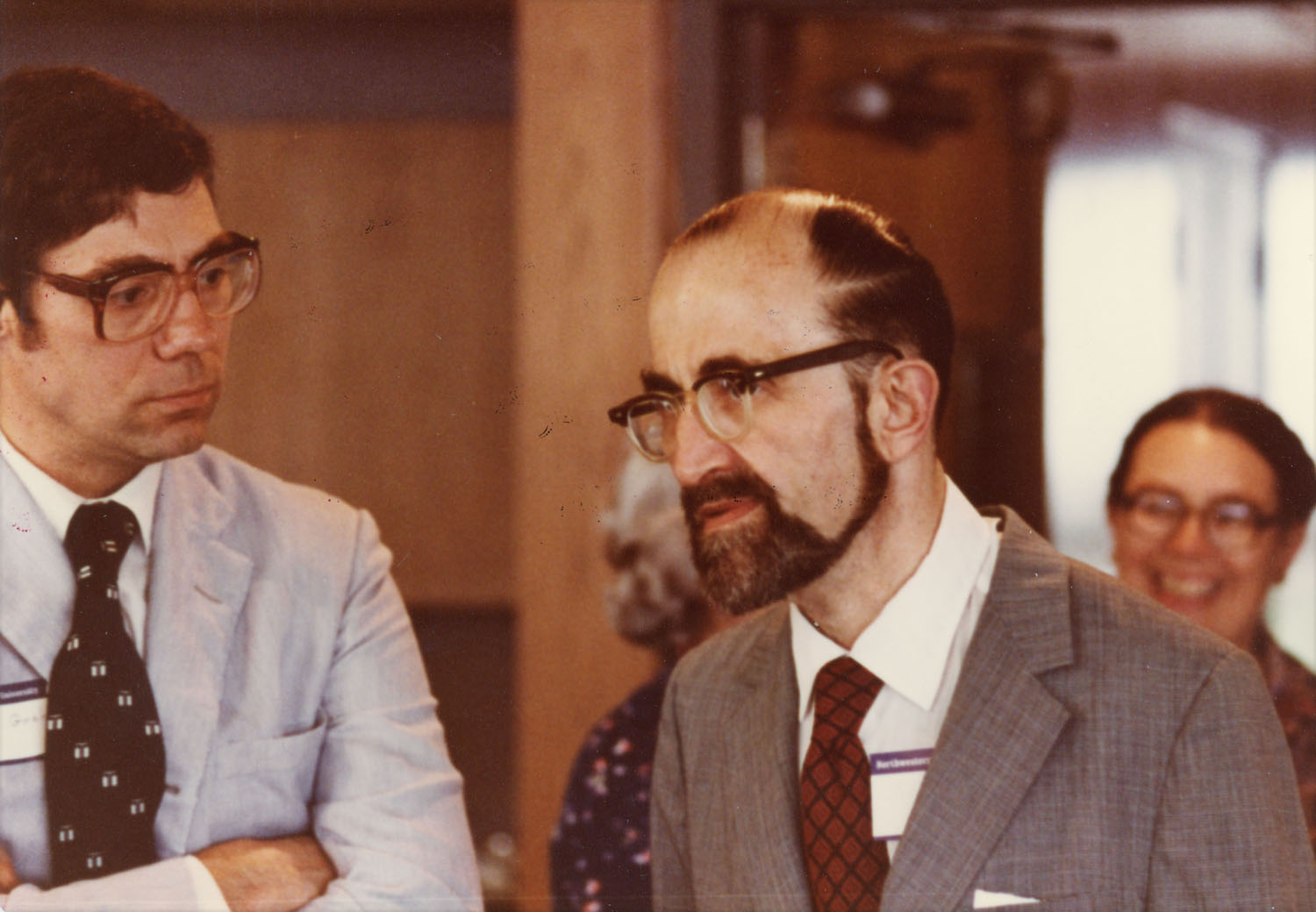
Halmos photographed Alex Rosenberg (1926-2007), right, in 1980. Our first question this week is, who is the man on the left? Our second question: Who is the woman on the right?
Rosenberg earned his Ph.D. in 1951 from the University of Chicago with the dissertation “Subrings of Simple Rings with Minimal Ideals,” written under advisor Irving Kaplansky (pictured on page 26 of this collection). Halmos was on the Chicago faculty from 1946 to 1961 and he and Rosenberg would have first met there. After one year at the University of Michigan and nine years at Northwestern University, Rosenberg joined the faculty at Cornell University in Ithaca, New York, in 1961 and remained there until 1986, advising 17 of his 20 Ph.D. students there. After serving on the University of California, Santa Barbara, faculty from 1986 to 1994, he retired for good and, a few years later, moved to Germany, land of his birth, from whence his family had fled the Nazis in 1939, eventually settling in Canada. (Sources: Mathematics Genealogy Project; Spelman College obituary)
Rosenberg was editor of the MAA’s American Mathematical Monthly during 1974-1978. In preparation for the American bicentennial in 1976, Halmos agreed to assemble a team to prepare a presentation for the 1976 Winter Meetings on developments in American mathematics since 1940. In his I Want to Be a Mathematician, Halmos reported that the project was not without its challenges and that he and his co-authors breathed a “justified sigh of relief” (p. 399) when Rosenberg accepted their article, “American mathematics from 1940 to the day before yesterday,” for publication in the Monthly (83:7, August-September 1976, pp. 503-516). Halmos and one of his team members, John Ewing, would become Monthly editors themselves, during 1982-86 and 1992-96, respectively. (Sources: I Want to Be a Mathematician: An Automathography, Springer 1985, pp. 397-399; History of MAA Journals)

Halmos photographed George Rosenstein, Jr., on September 26, 1966, in Cleveland, Ohio, at Case Western Reserve University, where Rosenstein was on the faculty. Rosenstein earned his Ph.D. in 1963 from Duke University with the dissertation “Generalizations and an Extension of Lebesgue’s Covering Theorem.” After serving on the faculty at Case Western during the 1960s, he has spent most of his career at Franklin and Marshall College in Lancaster, Pennsylvania, where he is now Professor Emeritus of Mathematics. At Franklin and Marshall, he has been interested in the teaching of calculus, serving as Chief Reader for the College Board’s AP Calculus program during the late 1980s, writing the “reform” text Discovering Calculus with colleague Alan Levine in 1994, and writing the article, “One Hundred and Fifty Years of Teaching Calculus” in 2002. (Sources: Mathematics Genealogy Project, Franklin & Marshall College Mathematics)
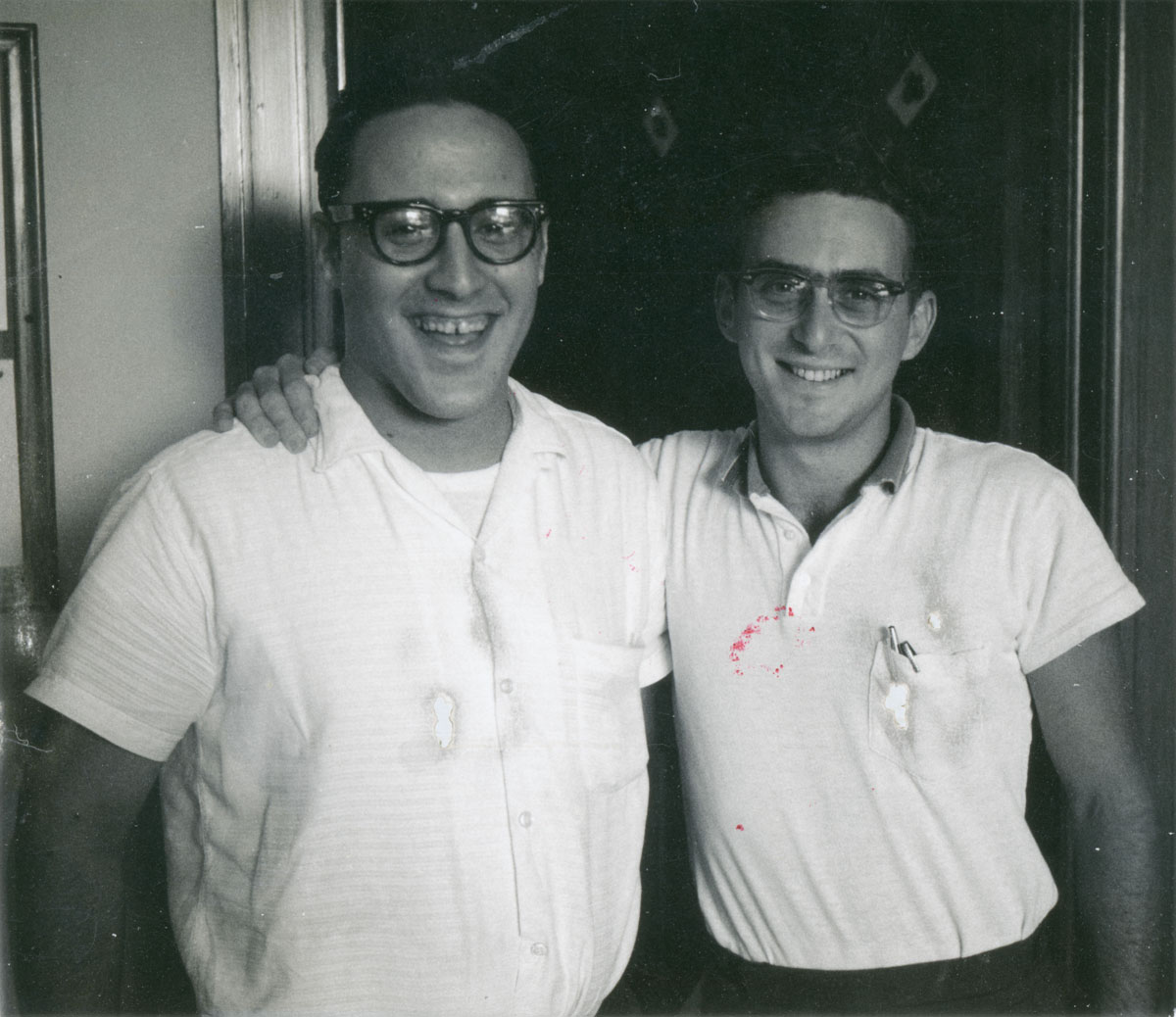
Halmos photographed his Ph.D. student Peter Rosenthal, left, and another Ph.D. student, Robert Kopp, on September 10, 1964, in Ann Arbor, Michigan. Rosenthal earned his Ph.D. from the University of Michigan in 1967 with the dissertation “On Lattices of Invariant Subspaces.” He has spent most of his career as a mathematician at the University of Toronto, specializing in operators on Hilbert spaces. Since 1992, Rosenthal has had a parallel career as an attorney. He currently is Professor Emeritus of Mathematics at UT, an adjunct on the UT Faculty of Law, and a lawyer for a Toronto law firm, specializing in litigation for social change. (Sources: Mathematics Genealogy Project, University of Toronto Mathematics, UT Faculty of Law)
Rosenthal was the last of Halmos’ six Ph.D. students at the University of Michigan. In his I Want to Be a Mathematician (Springer 1985), Halmos recalled Rosenthal’s difficulty in addressing him as “Paul” rather than “Professor Halmos” after he had completed his Ph.D.:
I treasure a letter I got from Peter. Once we were finished with the student-teacher business, I told him to lay off the “Professor Halmos” stuff – but he found it hard to promote our relation to a first-name basis. In a letter there is no way out – you do, or you don’t – so he began it this way: “Dear P-P-P-P-Paul: There! I’ve said it!” (p. 278)
Robert Kopp earned his Ph.D. from the University of Michigan in 1966 with the dissertation “A Class of Banach Spaces of Analytic Functions on the Unit Disk,” written under advisor Allen Shields. He was one of Shields’ 29 Ph.D. students at Michigan. More information about Robert Kopp would be appreciated. (Source: Mathematics Genealogy Project)
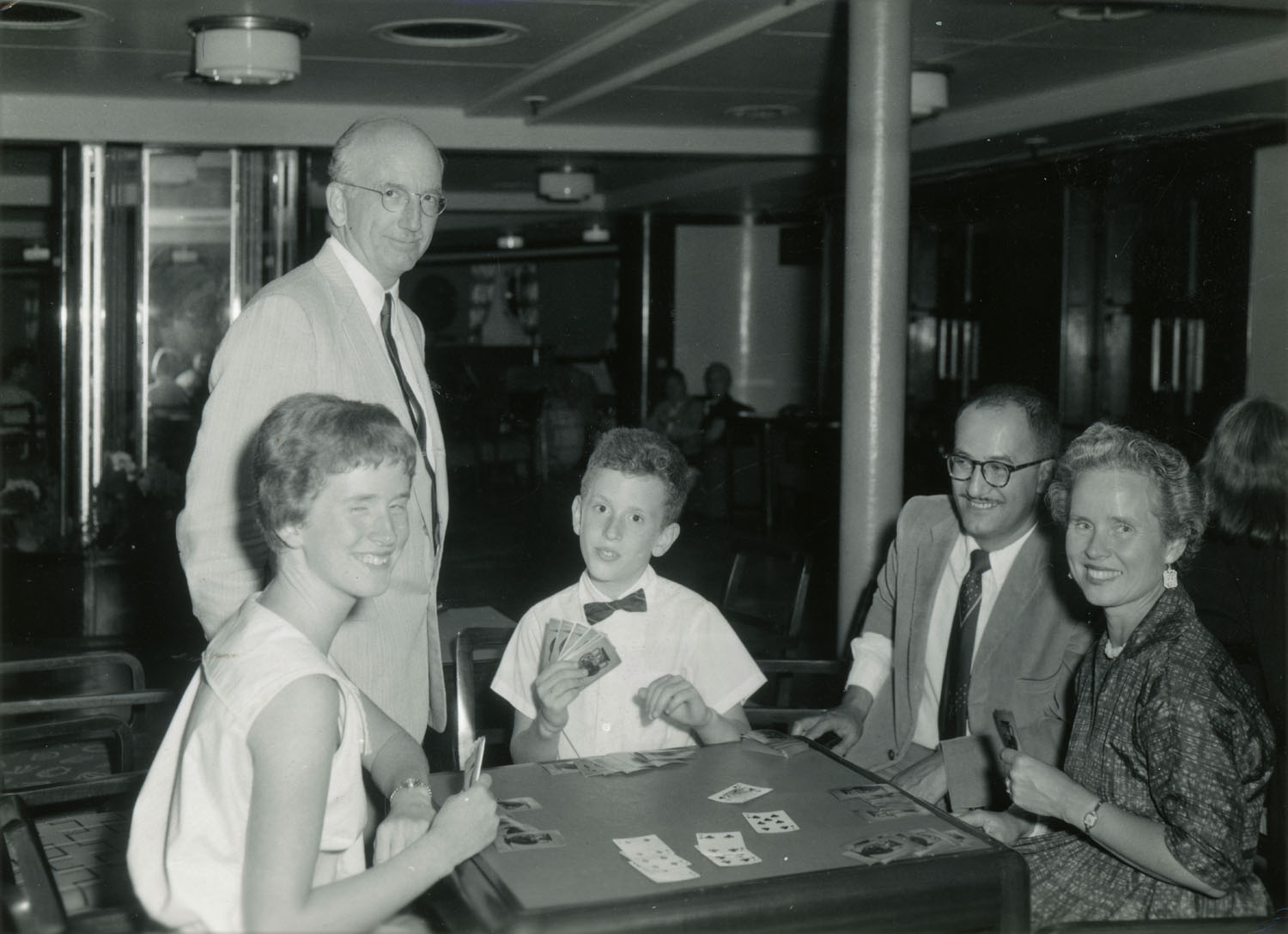
John Barkley Rosser (1907-1989), second from left, Paul Halmos, second from right, and Rosser’s family were photographed (possibly by Virginia Halmos) in 1958 on the Queen Elizabeth, perhaps en route to or from the International Congress of Mathematicians held in Edinburgh, Scotland, in August of that year.
After receiving bachelors and masters degrees from the University of Florida, John Barkley Rosser earned his Ph.D. in 1934 from Princeton University with the dissertation “A Mathematical Logic without Variables,” written under advisor Alonzo Church. His first academic posts were at Princeton and Harvard, but by 1941 he was on the faculty at Cornell University and, by about 1969, he had moved to the University of Wisconsin at Madison, where he directed the U.S. Army Mathematics Research Center and spent the rest of his career and life. His best known work may be his book, Logic for Mathematicians, originally published in 1953. Besides symbolic logic, he became an expert in numerical analysis, ballistics, and rocket development. (Sources: Mathematics Genealogy Project, Archives of American Mathematics biography)
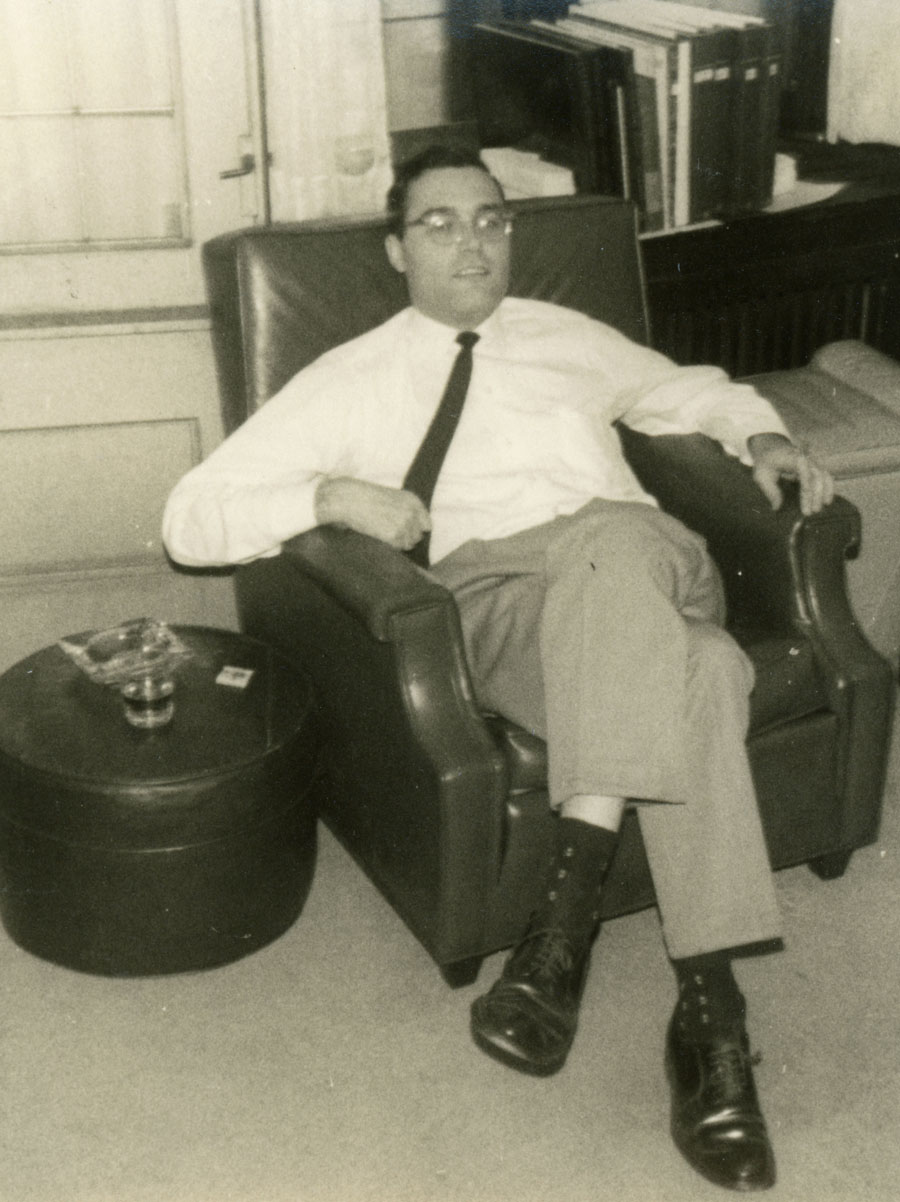
Gian-Carlo Rota (1932-1999) was photographed by Halmos in August of 1961. Rota earned his Ph.D. in 1956 from Yale University with the dissertation “Extension Theory of Differential Operators,” written under advisor Jacob T. Schwartz (he was the first of Schwartz’s 28 Ph.D. students), but soon changed his research area from functional analysis to combinatorics. The American Mathematical Society cited his 1964 paper, “On the foundations of combinatorial theory,” as
the single paper most responsible for the revolution that incorporated combinatorics into the mainstream of modern mathematics (quoted in O’Connor’s and Robertson’s MacTutor Archive biography of Rota).
Rota’s first two academic posts were at New York University (1956-57) and Harvard University (1957-59). He spent the rest of his career at the Massachusetts Institute of Technology (MIT), where he was Professor of Applied Mathematics and, from 1972 onward, Professor of Applied Mathematics and Philosophy. He advised at least 50 Ph.D. students throughout the course of his career, most of them at MIT. His Ph.D. students included Peter Duren (page 13 of this collection), Kenneth Lange, and Richard Stanley. (Sources: MacTutor Archive, Mathematics Genealogy Project)

Halmos photographed Pierce Ketchum, left, and Lee A. Rubel in 1959.
Pierce Waddell Ketchum (1903-1993) earned his Ph.D. in 1926 from the University of Illinois at Urbana-Champaign with the dissertation “Functions of Hypercomplex Variables.” He immediately joined the faculty at Illinois and spent his entire career there, advising 20 Ph.D. students from 1947 to 1968 and becoming Professor Emeritus of Mathematics in 1969. Ketchum was Halmos’ first graduate analysis instructor at the University of Illinois during 1935-36. Somewhat surprisingly, Halmos struggled with analysis during his final year as an undergraduate at Illinois and most of his first year of graduate school there:
Matters did not immediately improve when I started graduate school. Pierce Ketchum tried to teach me some analysis, but I just didn’t catch on (I Want to Be a Mathematician, p. 47).
Halmos credited his friend and fellow graduate student Warren Ambrose (pictured on page 1 of this collection) with showing him the light.
The day when the light dawned ... Ambrose and I were talking ... and something he said was the last candle that this blind camel needed. I suddenly understood epsilons and limits, it was all clear, it was all beautiful, it was all exciting. ... I had become a mathematician (p. 48).
(Sources: Mathematics Genealogy Project; Judy Green, Jeanne LaDuke, Pioneering Women in American Mathematics, AMS-LMS, 2009, pp. 218-219; Paul R. Halmos, I Want to Be a Mathematician: An Automathography, Springer 1985, pp. 47-48)
Lee A. Rubel (d. 1995) earned his Ph.D. in 1954 from the University of Wisconsin at Madison with the dissertation “Entire Functions and Ostrowski Sequences,” written under advisor R. Creighton Buck (for a photograph of Buck, see page 8 of this collection; for photos of Alexander Ostrowski, see page 38 and page 40). Rubel spent most of his career, from 1958 onward, at the University of Illinois at Urbana-Champaign, where his later research was in theoretical computer science; more specifically, the development of “mathematics to improve analog computers” (New York Times obituary). According to a computer scientist quoted in the same obituary,
Rubel’s theoretical blueprint has been as important a contribution to analog computing as Alan Turing’s machine was to digital computing (Jonathan W. Mills, Indiana University).
(Sources: Mathematics Genealogy Project, New York Times obituary)
For an introduction to this article and to the Paul R. Halmos Photograph Collection, please see page 1. Watch for a new page featuring six new photographs each week during 2012.
Regarding sources for this page: Information for which a source is not given either appeared on the reverse side of the photograph or was obtained from various sources during 2011-12 by archivist Carol Mead of the Archives of American Mathematics, Dolph Briscoe Center for American History, University of Texas, Austin.
Who's That Mathematician? Paul R. Halmos Collection - Page 46
For more information about Paul R. Halmos (1916-2006) and about the Paul R. Halmos Photograph Collection, please see the introduction to this article on page 1. A new page featuring six photographs will be posted at the start of each week during 2012.
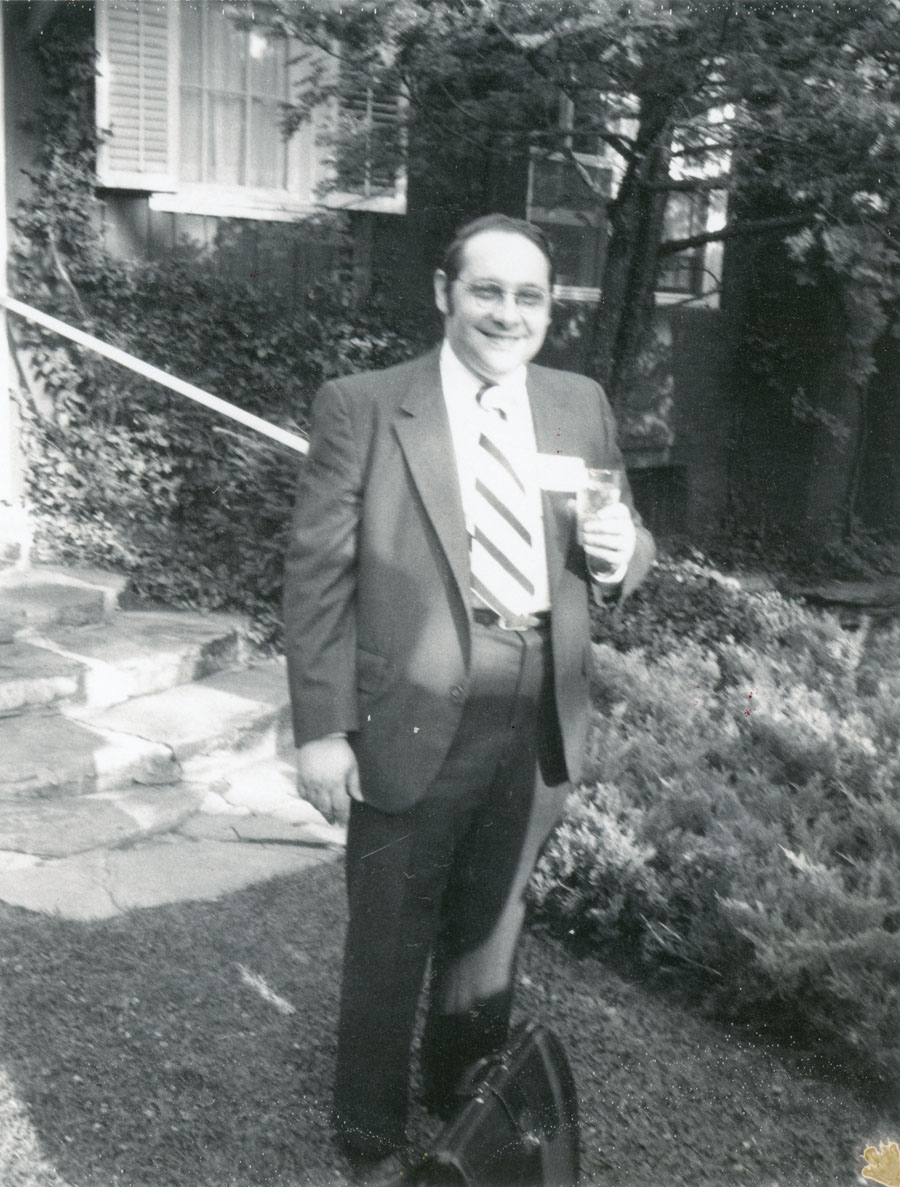
Halmos photographed his first Ph.D. student, statistician Herman Rubin (1926-2018), in Bloomington, Indiana, on July 31, 1974. Rubin earned his Ph.D. in 1948 from the University of Chicago, where Halmos was a faculty member from 1946 to 1961, with the dissertation “Systems of Linear Stochastic Equations.” Both Rubin and Halmos spent the academic year 1947-48 at the Institute for Advanced Study in Princeton, New Jersey. Rubin advised Ph.D. students of his own at Stanford University in Palo Alto, California, during the 1950s, the University of Oregon and Michigan State University during the 1960s, and Purdue University in West Lafayette, Indiana, where he was Professor of Statistics and Mathematics, from the 1970s onward. (Sources: Mathematics Genealogy Project, Institute for Advanced Study, Purdue University Department of Statistics)
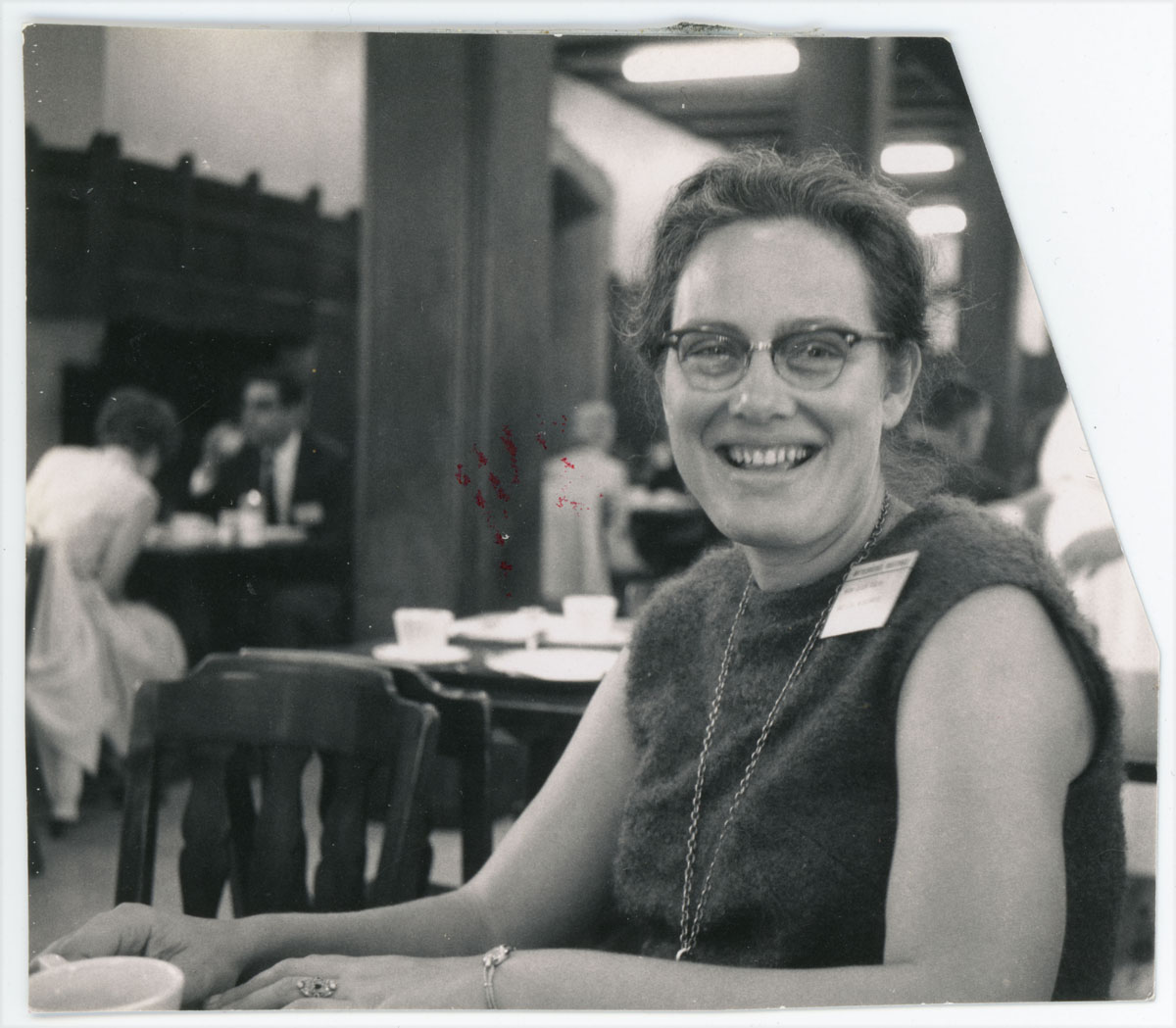
Topologist Mary Ellen Rudin (1924-2013) was photographed by Halmos at the Joint Mathematics Meeting at Cornell University in Ithaca, New York, on September 1, 1965. Another photograph of Rudin appears on page 25 of this collection, where you can read more about her; see page 44 for one more photo of her.
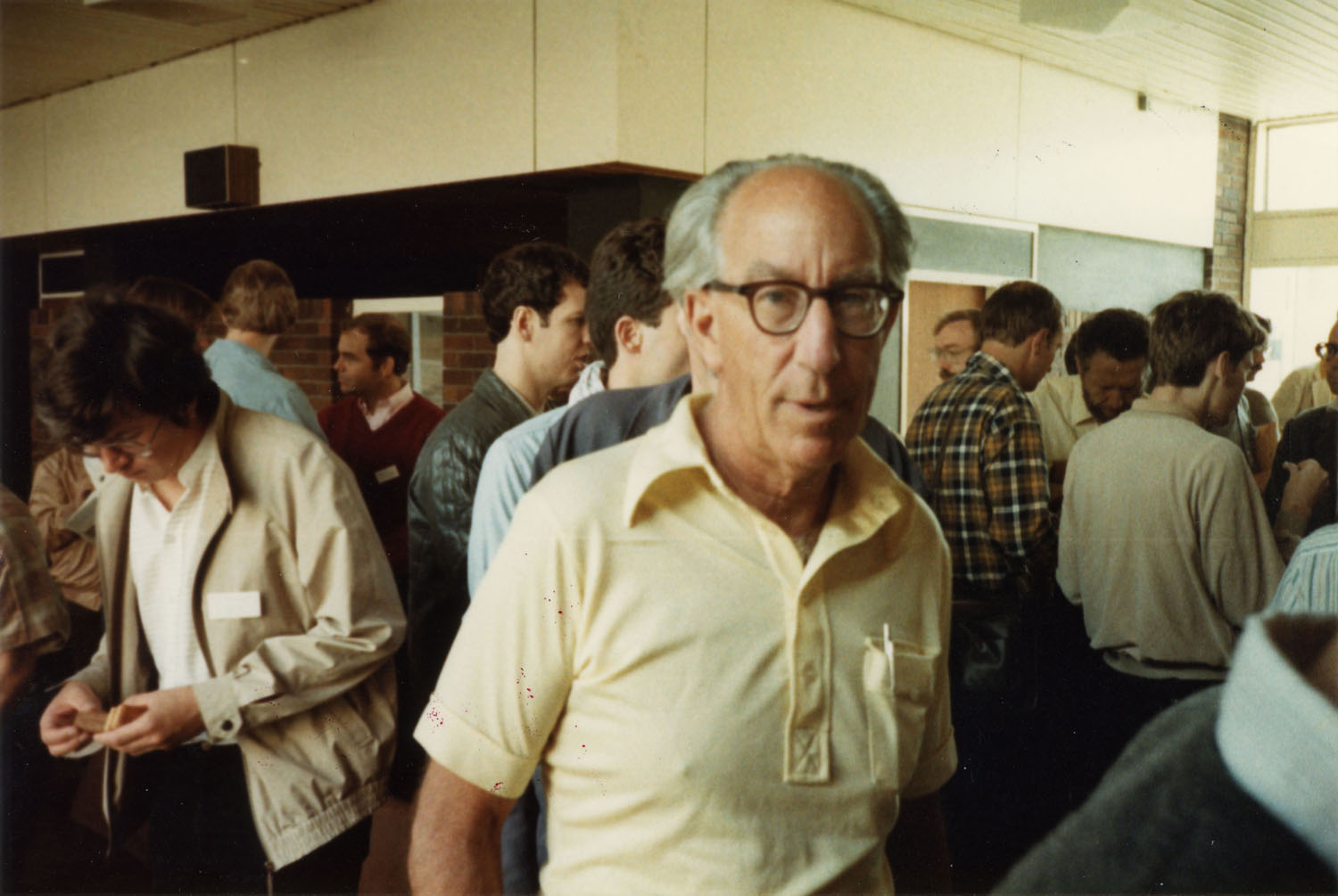
Halmos photographed complex analyst Walter Rudin (1921-2010) at a conference in Lancaster, England, in July of 1984. Born in Vienna, Austria, Rudin earned his Ph.D. in 1949 from Duke University in Durham, North Carolina, with the dissertation “Uniqueness Theory for Laplace Series.” His first two academic posts were at Duke (1949-50) and MIT (1950-1952). He was on the faculty at the University of Rochester from 1952 to 1959, and in 1959 moved to the University of Wisconsin at Madison, where he spent the rest of his career. He is best known for his analysis textbooks, Principles of Mathematical Analysis (1953), Real and Complex Analysis (1966), and Functional Analysis (1973). Do you recognize anyone in the crowd behind Rudin? (Sources: University of Wisconsin obituary, MacTutor Archive (Mary Ellen Rudin), Mathematics Genealogy Project)
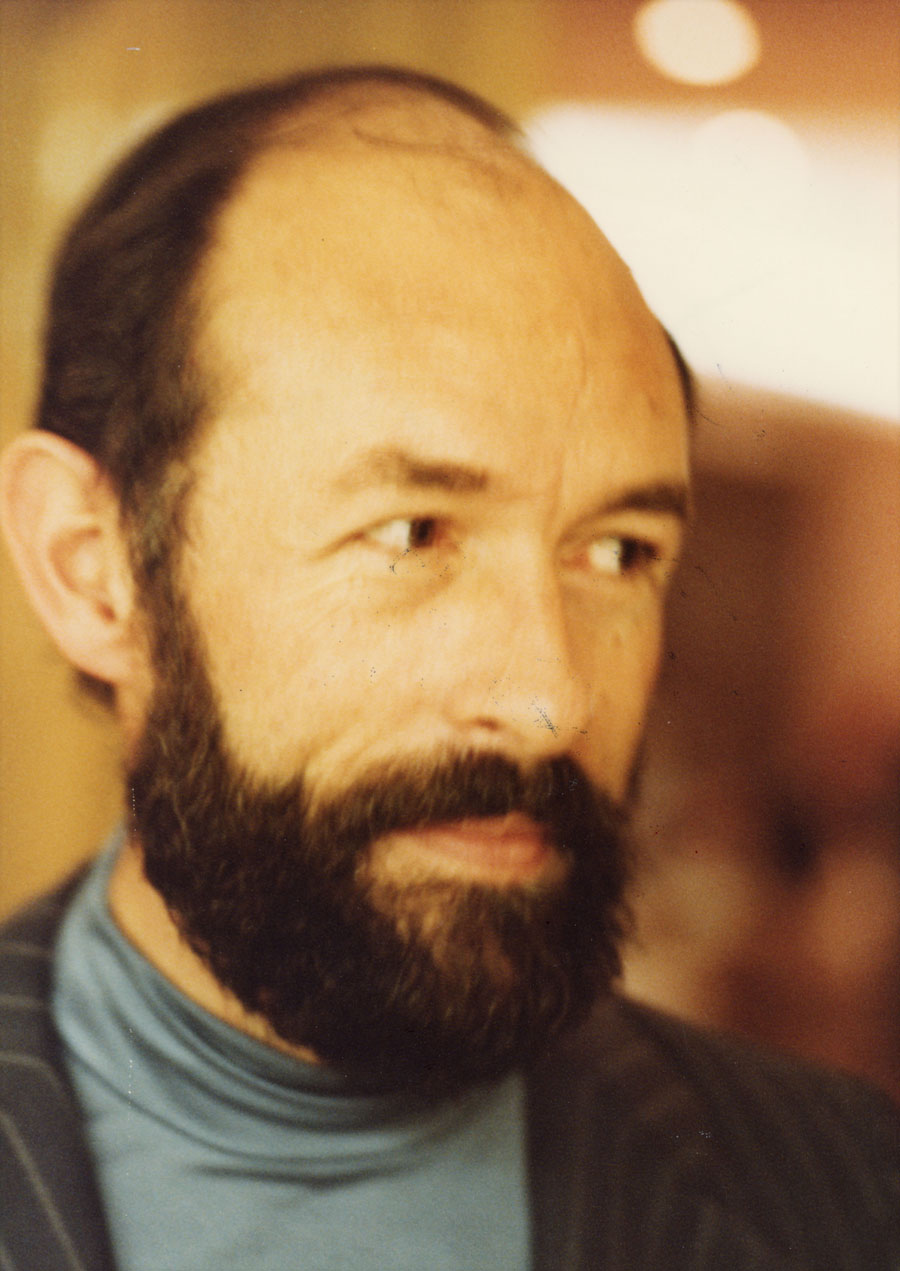
Mathematical physicist David Ruelle was photographed by Halmos in Bloomington, Indiana, in April of 1980. Born in Ghent, Belgium, Ruelle earned his Ph.D. in physics jointly from the Free University of Brussels, Belgium, and Eidgenössische Technische Hochschule (ETH) in Zürich, Switzerland. He was a faculty member at ETH from 1960 to 1962 and a member of the Institute for Advanced Study in Princeton, New Jersey, from 1962 to 1964 (and again in 1970-71). In 1964, he joined the faculty at the Institut des Hautes Études Scientifiques (IHES), near Paris, where he became Honorary Professor in 2000. He also is a Distinguished Visiting Professor at Rutgers University in New Brunswick, New Jersey. A sampling of Ruelle’s book and monograph titles from the 1960s through the 1990s gives a representative outline of his important contributions to mathematical physics: Statistical Mechanics (1969), Thermodynamic Formalism (1978), Elements of Differentiable Dynamics and Bifurcation Theory (1989), Chance and Chaos (1991), and Turbulence, Strange Attractors, and Chaos (1995). His best known book today may be his fascinating The Mathematician’s Brain (2007). (Sources: Mathematics Genealogy Project, IHES Mathematics)
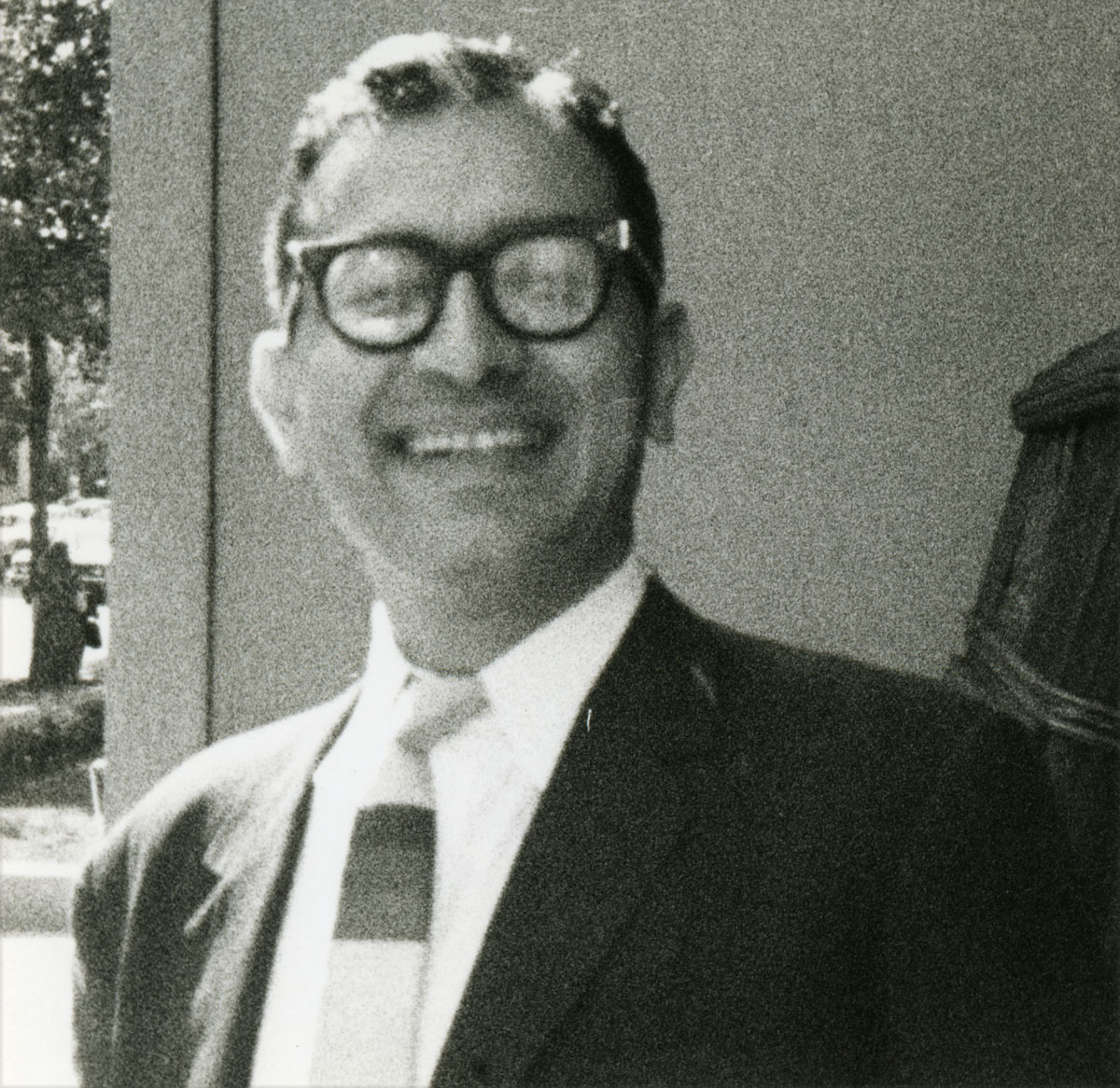
Halmos photographed operations researcher Thomas Saaty in November of 1962. Saaty earned his Ph.D. in 1953 from Yale University with the dissertation “On the Bessel Tricomi Equation,” written under advisor C. Einar (Carl) Hille. (For a photograph of Hille, see page 23 of this collection, where you can read more about him.) Saaty’s mathematical models of epidemics, urban design, arms control and disarmament, and the workings of the human brain, among other applications, have used linear programming, queuing theory, graph theory, nonlinear mathematics, game theory, and decision theory, among other mathematical tools. His research interests today are decision-making and conflict resolution – his dream is to establish an International Center for Conflict Resolution – and he is Distinguished University Professor in the University of Pittsburgh’s Katz School of Business. Before joining the Pitt faculty, he was on the faculty of the University of Pennsylvania’s Wharton School of Business. Before that, he worked in the U.S. State Department’s Arms Control and Disarmament Agency and, before that, for various U.S. government agencies in positions influencing scientific funding. At about the time the photo above was taken, Saaty, in his position at the Office of Naval Research, commissioned Halmos’ series of talks on operator theory and the subsequent publication of these talks in his 1963 survey, A glimpse into Hilbert space. (Sources: Mathematics Genealogy Project; University of Pittsburgh Katz School of Business; Paul Halmos, I Want to Be a Mathematician: An Automathography, Springer 1985, p. 390)
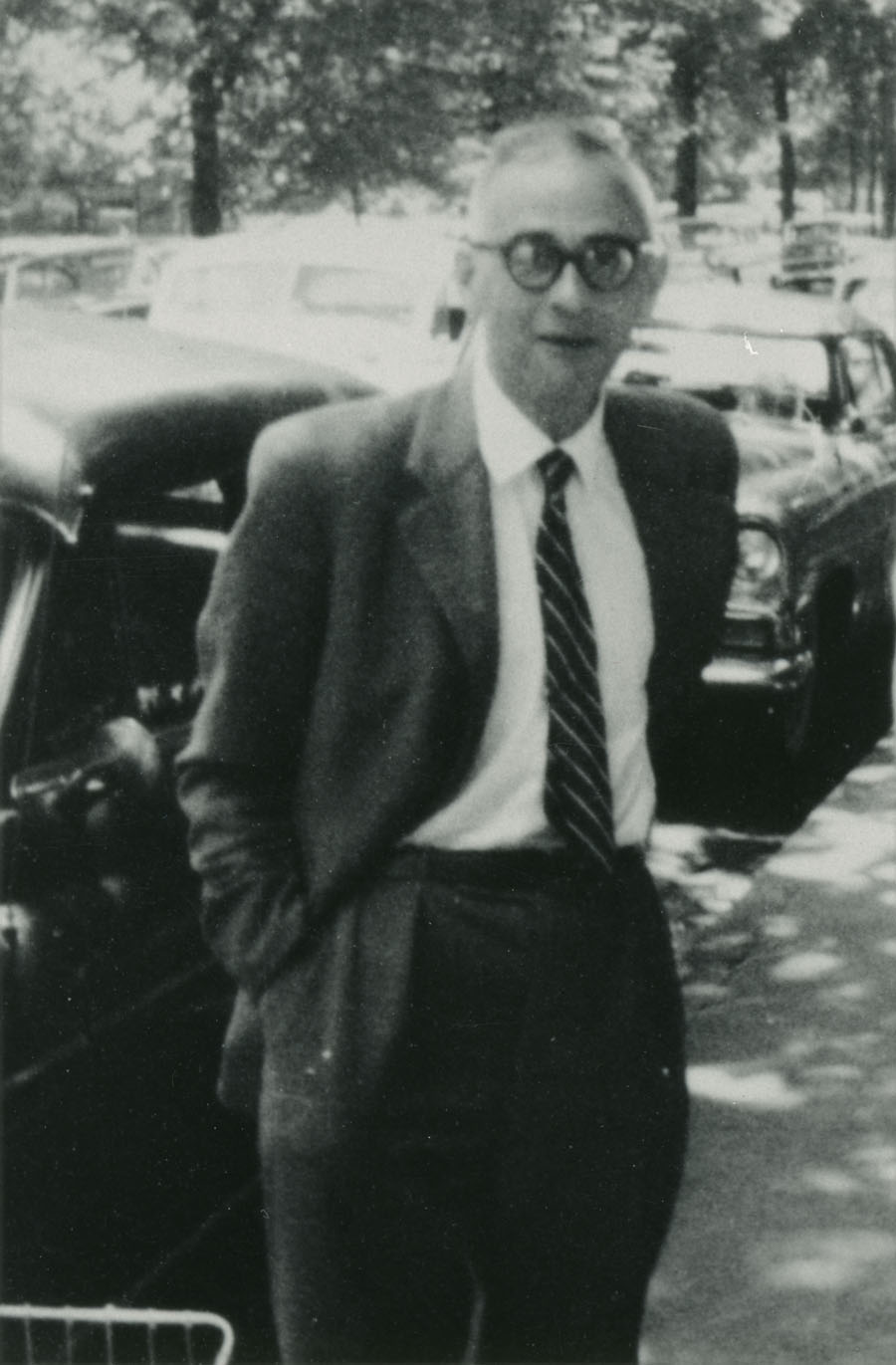
Halmos photographed algebraic geometer Pierre Samuel (1921-2009) in 1959. Born in Paris, Samuel earned the Agrégé de mathematique at the École Normale Supérieure before traveling to the U.S. to earn his Ph.D. at Princeton University in 1947 with the dissertation “Ultrafilters and Compactification of Uniform Spaces,” written under advisor Oscar Zariski. He then returned to France, joining the National Center for Scientific Research in 1947, the Faculty of Science at Clermont-Ferrand in 1949, and the Université Paris Sud XI Orsay in 1961. According to O’Connor and Robertson of the MacTutor Archive, even before earning his Ph.D., Samuel had become a second-generation member of the Bourbaki. He is best-known for his and Oscar Zariski’s two-volume Commutative Algebra (1958, 1960). (Sources: MacTutor Archive, Mathematics Genealogy Project)
For an introduction to this article and to the Paul R. Halmos Photograph Collection, please see page 1. Watch for a new page featuring six new photographs each week during 2012.
Regarding sources for this page: Information for which a source is not given either appeared on the reverse side of the photograph or was obtained from various sources during 2011-12 by archivist Carol Mead of the Archives of American Mathematics, Dolph Briscoe Center for American History, University of Texas, Austin.
Who's That Mathematician? Paul R. Halmos Collection - Page 47
For more information about Paul R. Halmos (1916-2006) and about the Paul R. Halmos Photograph Collection, please see the introduction to this article on page 1. A new page featuring six photographs will be posted at the start of each week during 2012.
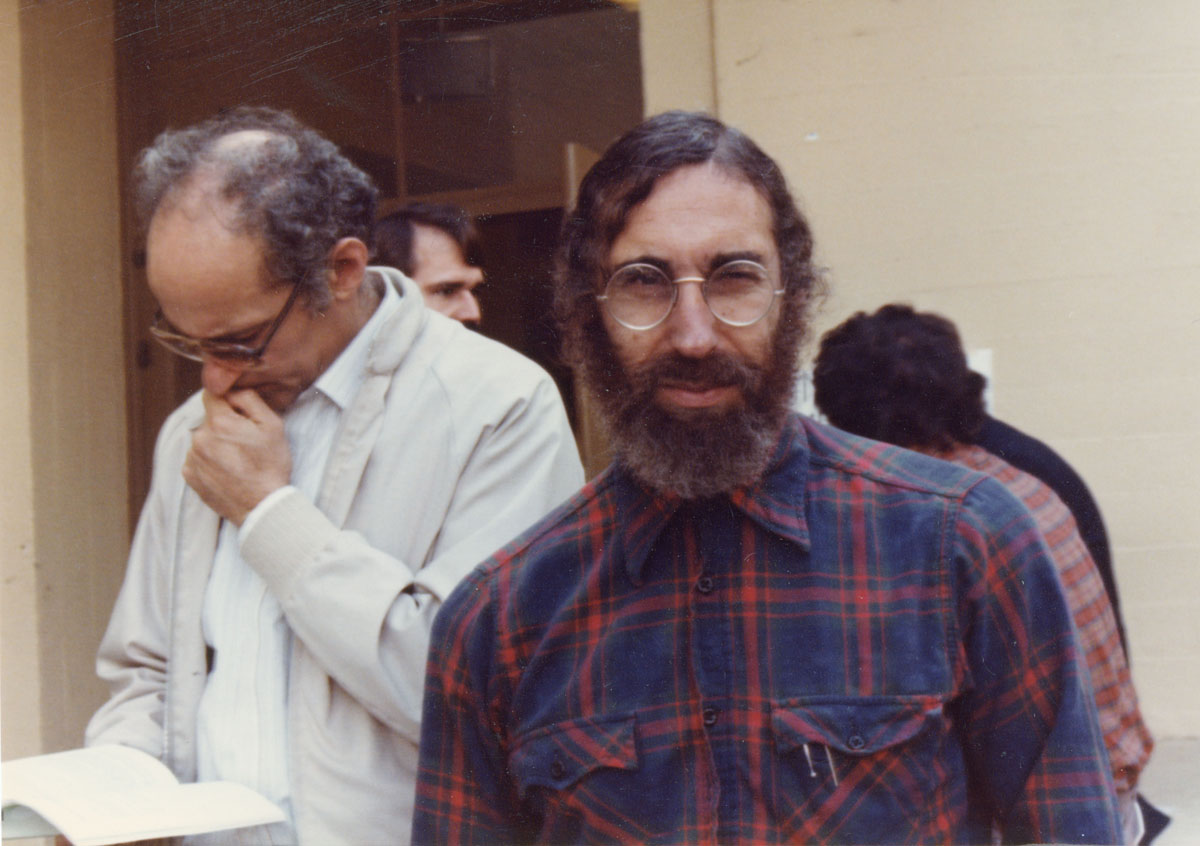
Halmos photographed his former Ph.D. student Donald Sarason (center, with Dan Halperin at left), in February of 1982 at the University of California, Davis. Sarason (1933-2017) earned his Ph.D. in 1963 from the University of Michigan with the dissertation “The Hp Spaces of Annuli.” He has spent his career at the University of California, Berkeley, where he has advised 40 Ph.D. students and became Professor Emeritus in January of 2012. His first book was the monograph The Hp Spaces of an Annulus (AMS, 1965) and his most recent Complex Function Theory (2nd ed., AMS, 2007) with numerous papers in between and since; at his UC Berkeley website, he lists his current research interests as complex function theory and operator theory.
In his I Want to Be a Mathematician: An Automathography (Springer 1985), Halmos wrote of Sarason:
I still haven’t decided whether Don was my best student or Errett Bishop; fortunately I don’t have to. ... Don is intelligent and quick, and although he doesn’t waste words, he never fails to say what must be said. ... [He] is a quiet man; he never uses eight words when seven will do. He is one of the smoothest and clearest lecturers I know and he has an extraordinary sense of time. He knows almost to the minute how long it will take him to explain something. (pp. 276-277)
For a photograph of Erret Bishop, see page 6 of this collection, where you can read more about him. (Sources: Mathematics Genealogy Project, UC Berkeley Mathematics)
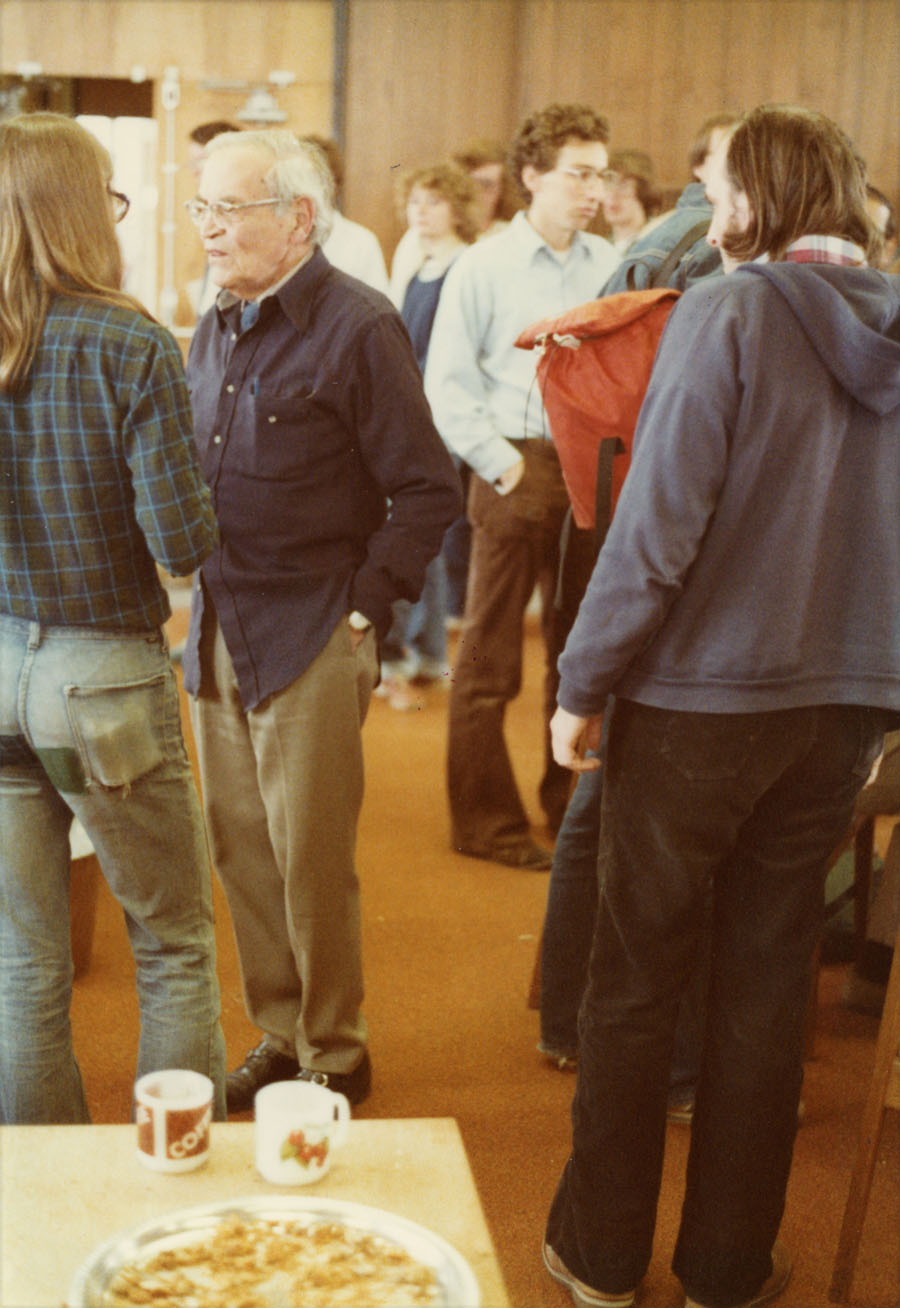
Isaac J. Schoenberg (1903-1990) was photographed by Halmos in 1978. Born in Galati, Romania, Iso Schoenberg earned his Ph.D. in analytic number theory in 1926 from the Alexandru Ioan University of Iasi (or Jassy), Moldavia, under advisors Simeon Sanielevici and Issai Schur. Schur was at the University of Berlin at the time, but Schoenberg had studied in Berlin with Schur and in Göttingen with Edmund Landau from 1922 to 1925. From 1928 to 1930, Schoenberg visited Hebrew University of Jerusalem and, from 1930 onward, he held various positions in the U.S., including professorships at the University of Pennsylvania from 1941 to 1966 and at the University of Wisconsin at Madison from 1966 onward. While doing ballistics research at the Aberdeen (Maryland) Proving Ground from 1943 to 1945, he introduced the theory of splines, publishing his first two papers on the subject in 1946. Splines really took off during the 1960s when computers became available for scientific research and engineering design, and Schoenberg not only became well known for their invention but continued to make advances in both theory and practice. He continued to work on approximation theory for the rest of his life. Do you recognize anyone in the crowd? (Sources: MacTutor Archive, Mathematics Genealogy Project)
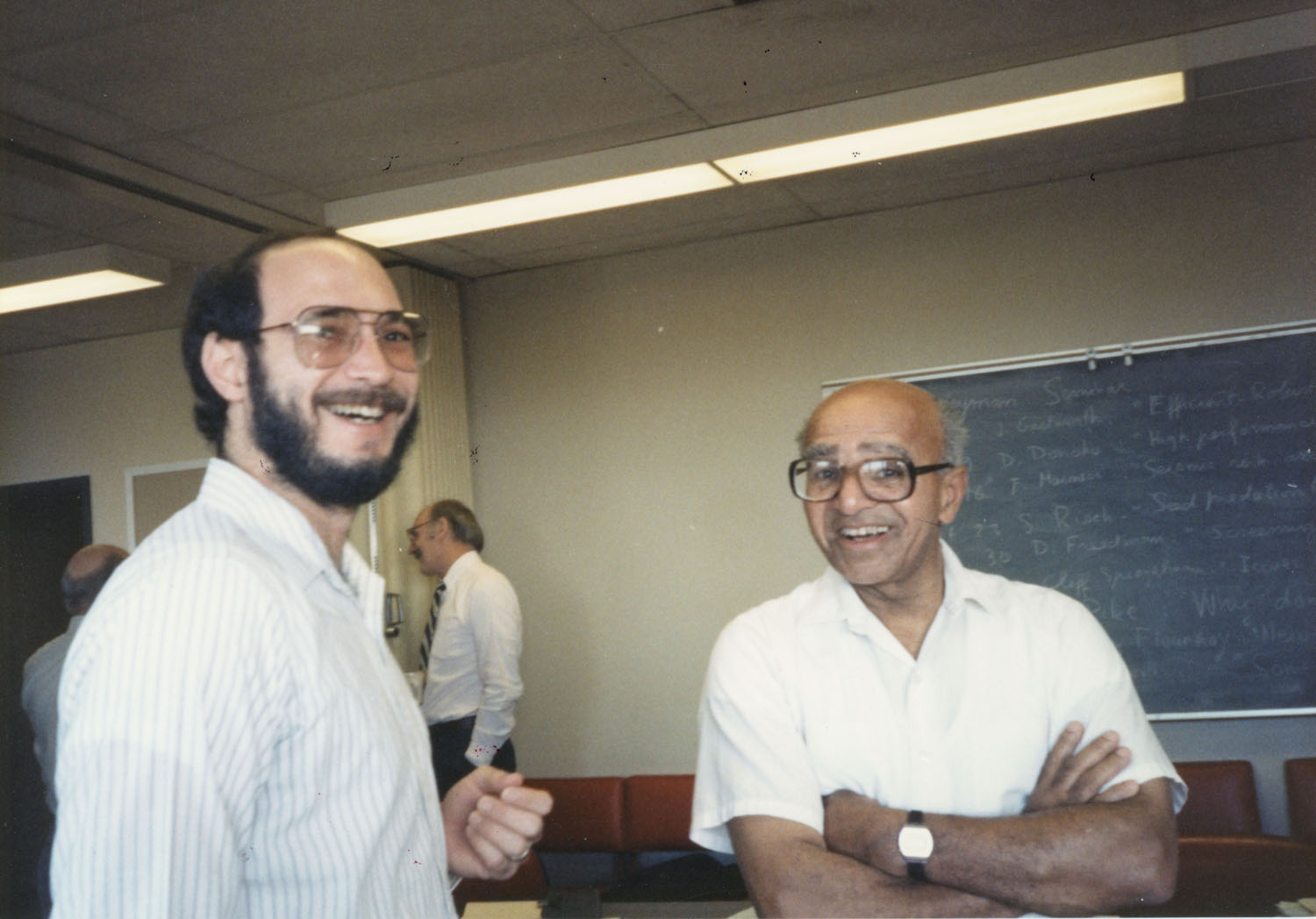
Alan H. Schoenfeld, left, and David Blackwell (1919-2010) were photographed by Halmos in December of 1985 in Berkeley, California. Schoenfeld wrote recently:
I remember that meeting - Paul, David Blackwell, Leon Henkin and I had gotten together to discuss the mathematics content (specifically problem solving) that ought to be highlighted in AAAS's Project 2061 mathematics report.
Two more photographs of Blackwell appear on page 1 and page 7 of this collection, where you can read more about him. Schoenfeld earned his Ph.D. in 1973 from Stanford University with the dissertation “Topological and Measure-Theoretic Studies on Cantor Sets and Peano Spaces.” He has spent his career at the University of California, Berkeley, where he holds the Conner Chair in Education, is an Affiliated Professor of Mathematics, and continues to advise Ph.D. students in mathematics education. He is a national leader in the field of mathematics education, specializing in cognition and development or, as his UC Berkeley biography puts it, “Schoenfeld’s research deals with thinking, teaching, and learning. His book Mathematical Problem Solving characterized what it means to think mathematically ....” Among his many accomplishments, he was lead author for grades 9-12 of the groundbreaking Principles and Standards for School Mathematics, produced by the National Council of Teachers of Mathematics (NCTM) in 2000. In 2011 Schoenfeld was awarded the Felix Klein Medal for lifetime achievement by the International Commission on Mathematical Instruction. (Sources: Mathematics Genealogy Project, UC Berkeley Graduate School of Education)

Halmos photographed his former Ph.D. student Morris Schreiber (d. 1988) on May 29, 1966, in Irvine, California. Schreiber earned his Ph.D. in 1955 from the University of Chicago with the dissertation “Unitary Dilations of Operators.” In I Want to Be a Mathematician: An Automathography (Springer 1985), Halmos wrote of Schreiber’s thesis work:
He gave me one of the rare deep surprises that thesis advisors get. I suggested to him that he study the unitary power dilations of strict contractions and look at them as spectral invariants; what information about a contraction can we infer from knowledge of its unitary power dilation? I didn’t believe Moe the first time when he, hesitantly, told me the answer. None, he said. All those unitary power dilations are the same. ... Schreiber’s theorem (as it quickly became called) is that the spectral information conveyed by the unitary power dilation ... says something about everybody but it doesn’t say anything about anybody. (page 222)
Schreiber was on the faculty at Cornell University in Ithaca, New York, during the 1960s, and he was a professor at Rockefeller University in New York City at the time of his death. In 1990, Schreiber’s sister Hilda Schreiber established a fund at Princeton University to support graduate fellowships in mathematics. (Sources: Mathematics Genealogy Project, New York Times obituary, Princeton University)
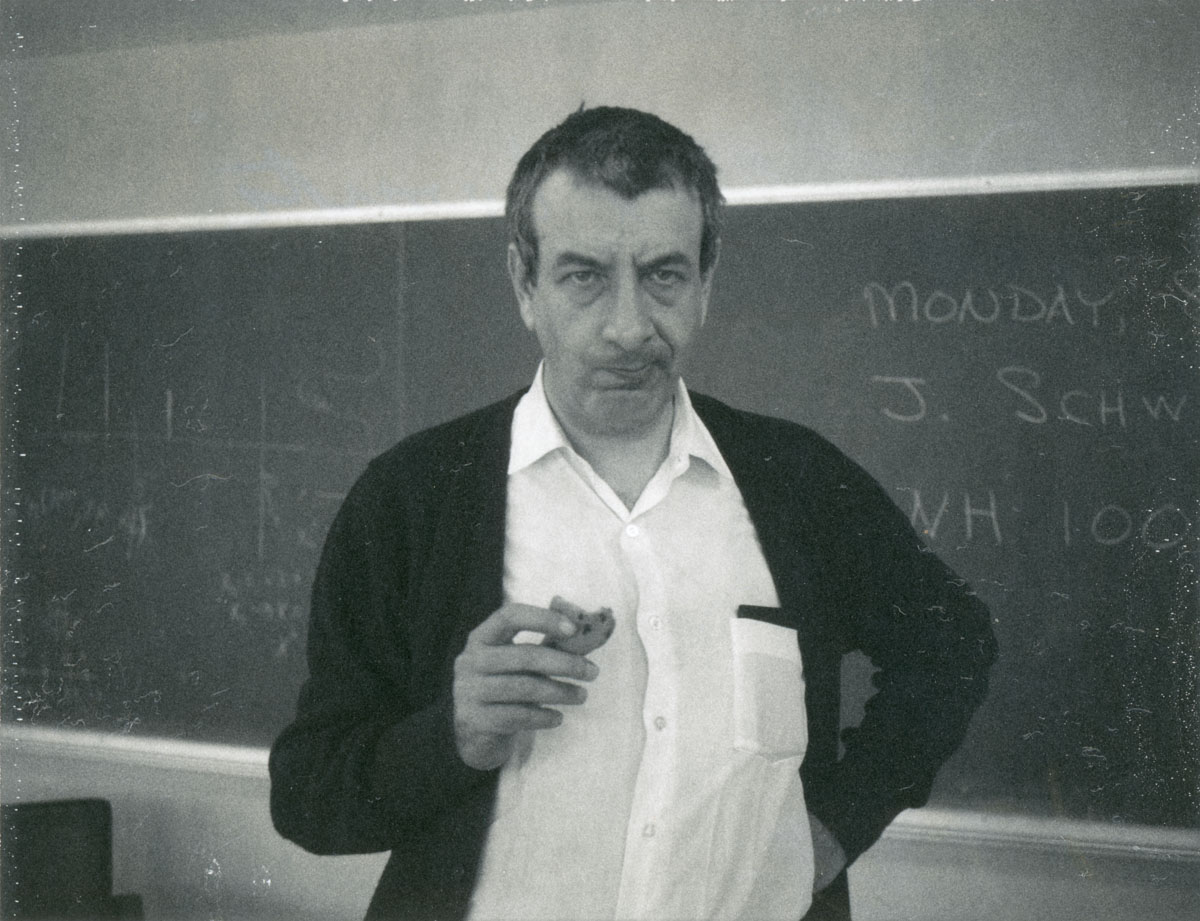
Halmos photographed Jacob T. Schwartz (1930-2009) on May 8, 1978, at the University of California, Santa Barbara. Born in New York City, Jack Schwartz earned his Ph.D. in 1952 from Yale University with the dissertation “Linear Elliptic Differential Operators.” He remained on the faculty at Yale until 1957, when he joined the soon-to-be Courant Institute at New York University, where he remained for the rest of his career and life. The first of his at least 28 Ph.D. students was Gian-Carlo Rota (Yale, 1956), who is pictured on page 45 of this collection, with his remaining Ph.D. students at NYU. O’Connor and Robertson of the MacTutor Archive quote Schwartz’s NYU colleague Martin Davis (see page 11 of this collection) on Schwartz’s research modus operandi:
Jack's style has been to enter a new field, master quickly the existing research literature, add the stamp of his own forceful vision in a series of research contributions, and finally, leave behind an active research group that continues fruitful research for many years along the lines he has laid down.
At first, these research fields were in mathematical analysis, but in 1964 Schwartz founded the computer science department at NYU and became its first chair. His interests in computer science included parallel computing, compiler optimization, and robot design. By the time of his death, he was doing research in molecular biology. (Sources: MacTutor Archive, Mathematics Genealogy Project)
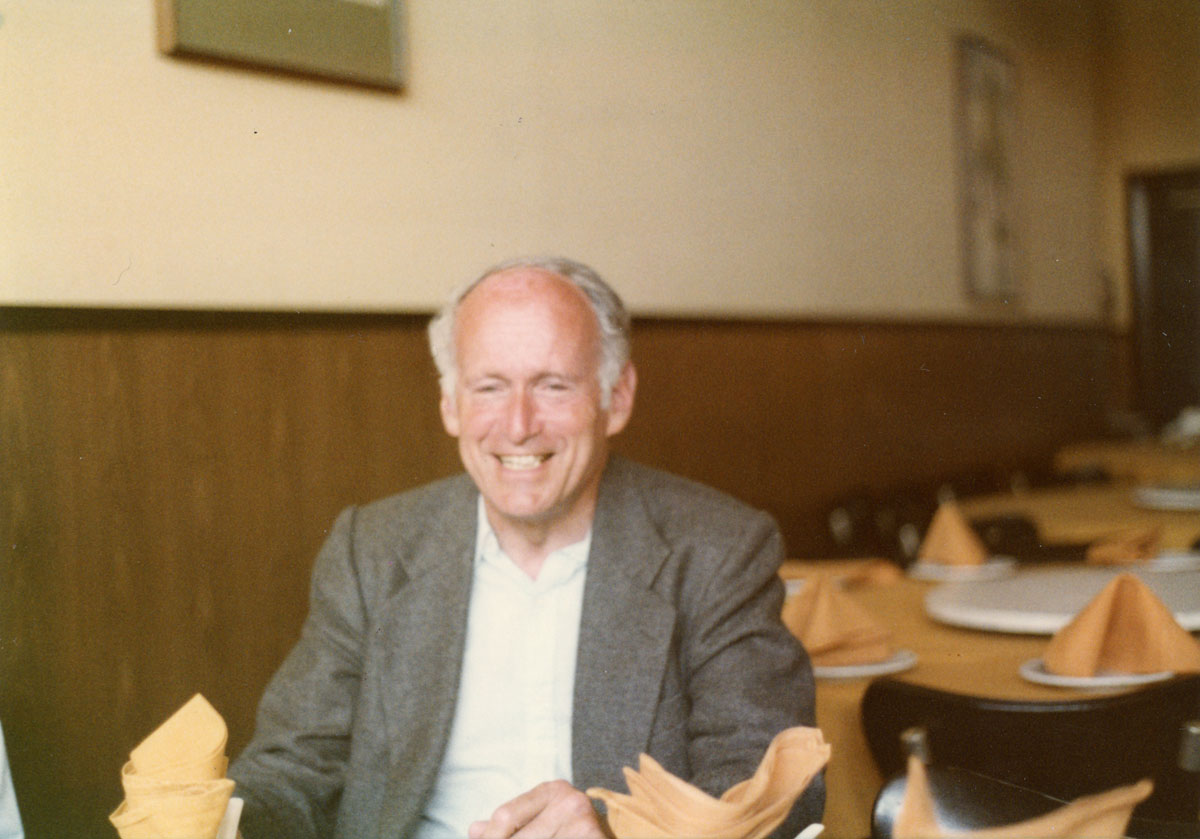
Halmos photographed Laurent Schwartz (1915-2002) in 1978. Born in Paris and educated there through the Agrégation de Mathématiques from the École Normale Supérieure in 1937, Schwartz earned his Ph.D. in 1943 from the Université Louis Pasteur – Strasbourg with the dissertation “Sommes de Fonctions Exponentielles Reelles.” He spent his career at various universities in France, including Grenoble (1944-45), Nancy (1945-53), and Paris (1953-59, 1980-83). He was on the faculty at the École Polytechnique in Paris from 1959 to 1980. Schwartz’s best known contribution to mathematics, the one for which he won the Fields Medal in 1950, was the theory of distributions. In his I Want to Be a Mathematician (Springer 1985), Halmos described Schwartz’s difficulties in obtaining a visa to enter the U.S. to attend the 1950 International Congress of Mathematicians (ICM) to be held at Harvard University in Cambridge, Massachusetts, describing Schwartz only partly tongue-in-cheek as a “known Trotskyite activist” (page 163). Schwartz was eventually allowed to enter the U.S. and to speak at the ICM and receive his Fields Medal there. Halmos also wrote, “The last time I saw Schwartz was in Berkeley in the 1970’s” (ibid), so this photograph was quite possibly taken in Berkeley, California. (Sources: MacTutor Archive, Mathematics Genealogy Project)
For an introduction to this article and to the Paul R. Halmos Photograph Collection, please see page 1. Watch for a new page featuring six new photographs each week during 2012.
Regarding sources for this page: Information for which a source is not given either appeared on the reverse side of the photograph or was obtained from various sources during 2011-12 by archivist Carol Mead of the Archives of American Mathematics, Dolph Briscoe Center for American History, University of Texas, Austin.
Who's That Mathematician? Paul R. Halmos Collection - Page 48
For more information about Paul R. Halmos (1916-2006) and about the Paul R. Halmos Photograph Collection, please see the introduction to this article on page 1. A new page featuring six photographs will be posted at the start of each week during 2012.
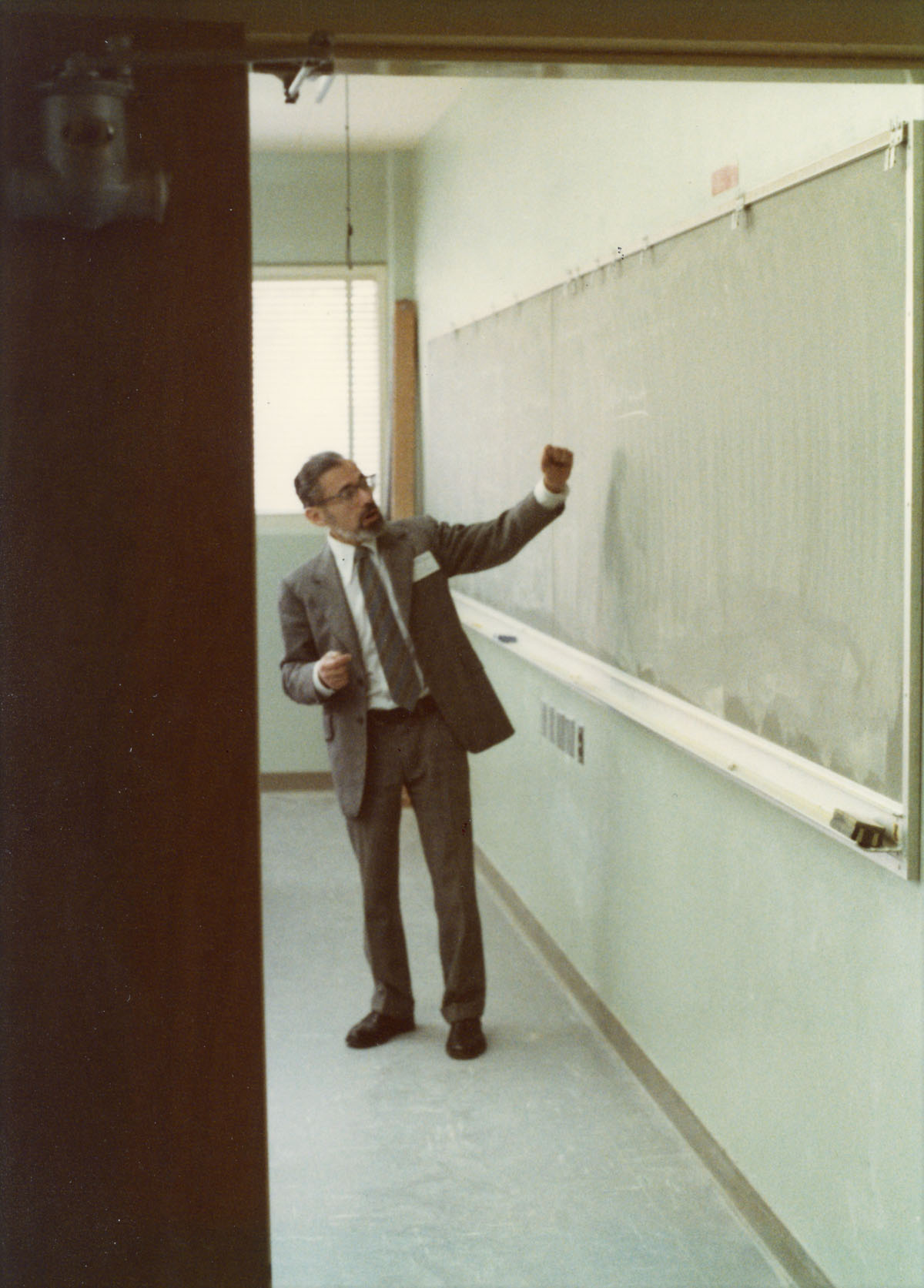
Halmos photographed Irving Segal (1918-1998) in 1977. In this photo, Segal may have been teaching at the Massachusetts Institute of Technology (MIT) in Cambridge, where he was Professor of Mathematics from 1960 onward, but his nametag makes it seem more likely he was lecturing at a conference. Segal earned his Ph.D. in 1940 from Yale University with the dissertation, “Ring Properties of Certain Classes of Functions,” written under advisor Carl Einar Hille (see page 23 of this collection for a photograph of Hille). He would not publish the main results of his thesis until 1947 in the paper, “The group algebra of a locally compact group.” The reason for his delay in publication may have been that, after one year at Harvard (1940-41), he performed war work at Princeton (1941-43) and the Aberdeen (Maryland) Proving Ground (1943-45). He then spent two years at the Institute for Advanced Study in Princeton (1945-47) and another year at Princeton before joining the University of Chicago faculty in 1948. Halmos was on the faculty at Chicago from 1946 to 1961, just a few years longer than Segal (1948-60), and Halmos, Segal, and Irving Kaplansky (from 1945 onward; see page 26 for a photo) were somewhat famously junior faculty members there during the late 1940s and 1950s, hired by department chair Marshall Stone (see page 4 or page 38 for a photo of Stone). Segal advised 40 Ph.D. students, 15 at the University of Chicago and the rest at MIT. His Chicago students included Isadore Singer (1950), Edward Nelson (1955; see page 15 for a photo from that time), and Leonard Gross (1958; see page 19), whose photographs appear in this collection. In their article on Segal in the MacTutor Archive, O’Connor and Robertson quoted Gross on Segal’s main motivation for his mathematical work:
In retrospect I realize that he was driven ... by his single-minded determination to solve one of the big problems of mathematical physics: the existence of interacting quantum fields. Although much of his work may seem to many mathematicians to be motivated simply by the usual aesthetic considerations – and is certainly justified by the intrinsic beauty of his ideas – Irving told me a few years ago that all of his work was aimed in one way or another at understanding quantum physics.
(Sources: MacTutor Archive, Mathematics Genealogy Project, IAS)
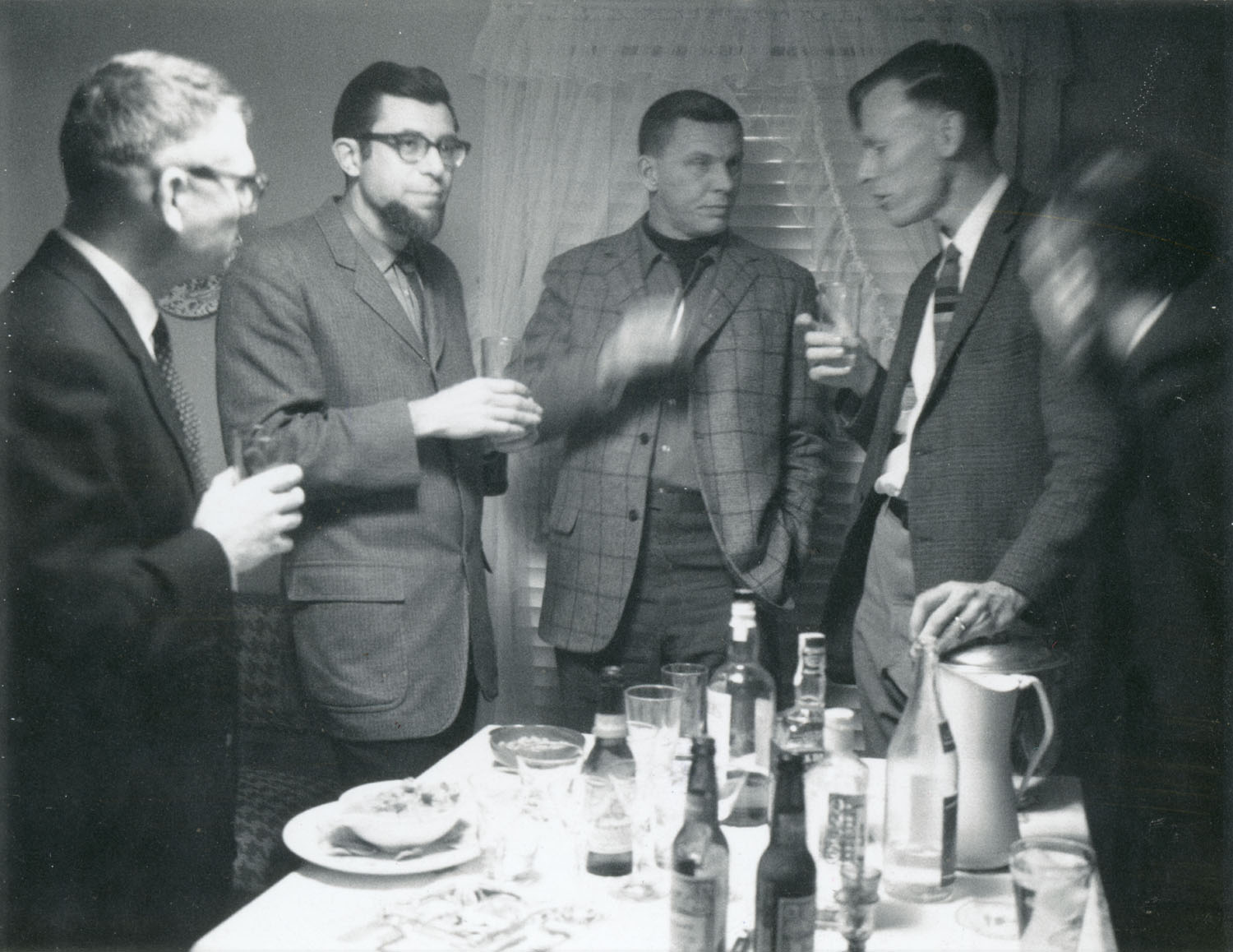
Halmos photographed, left to right, Charles Brumfiel, Harold Shapiro, H. Arlen Brown, and Allen Shields on January 27, 1966, in Ann Arbor, Michigan. These four mathematicians and Halmos were on the faculty at the University of Michigan at the time. Who was the fifth person in the photograph, the one at far right who moved his head as the photo was being snapped, blurring its image? Either Halmos didn’t recognize him later (he listed only four last names on the back of the photo), or it could have been Halmos himself (although he usually scribbled “PRH” in this case).
Charles Brumfiel (1914-1991) earned his Ph.D. from Purdue University in 1954 with the dissertation “Noetherian Minimal Bases and Equations with Prescribed Groups.” He taught public school from 1939 to 1942 and, after earning a masters degree from the University of Chicago in 1944 and working briefly as an industrial engineer, he became an assistant professor at his alma mater, Ball State Teachers College, in 1946. In 1960, Brumfiel moved from Ball State to the University of Michigan, where, during his first two years (1960-62), he published (with Merrill Shanks of Purdue) three “new math” textbooks that not only launched the curriculum known as the “Ball State Program,” but also established Brumfiel as a national leader in mathematics education. He wrote 20 more books and became Professor Emeritus of Mathematics at UM in 1985. According to his UM Memorial,
Despite being a phenomenal mental calculator himself, Brumfiel consistently maintained, in his teaching and writing, the preeminence of reasoning and concept formation over mechanical skills.
(Sources: Mathematics Genealogy Project, University of Michigan Faculty History Project)
Harold S. Shapiro earned his Ph.D. in complex analysis from MIT in 1952 with the dissertation, “Extremal Problems for Polynomials and Power Series,” written under advisor Norman Levinson. Shapiro wrote in 2005 that his Ph.D. thesis could be viewed as a “pioneering effort in the area … of Banach spaces of analytic functions.” He worked at Bell Labs in Murray Hill, New Jersey, from 1952 to 1954, and then was a faculty member at New York University from 1954 to 1962, at the University of Michigan from 1962 to 1972, and at the Royal Institute of Technology (Kungliga Tekniska Högskolan or KTH) in Stockholm, Sweden, from 1972 onward. NYU’s Institute of Mathematical Sciences was renamed the Courant Institute at about the time Shapiro left it; he must have retained an association with NYU because the Mathematics Genealogy Project shows him advising a Ph.D. student who graduated from NYU in 1980. Shapiro became Professor Emeritus at KTH in 1993. In 2005, he listed his mathematical interests as approximation theory, complex analysis, functional analysis, partial differential equations, applications of analysis, and the pedagogy of problem-solving. (Sources: Mathematics Genealogy Project, Swedish Royal Institute of Technology (2005))
H. Arlen Brown was a Ph.D. student of Halmos and of Irving Kaplansky at the University of Chicago, earning his degree in 1952, and a faculty member at Michigan from 1963 to 1967. Brown appears in another photo on page 8 of this collection, where you can read more about him. See page 26 for a photo of Kaplansky.
Allen Shields (1927-1989) earned his Ph.D. from MIT in 1952 with the dissertation, “On Additive Properties of Real Numbers,” written under advisor Witold Hurewicz. His first academic post was at Tulane University, where he wrote papers on topological semigroups. Shields joined the faculty at the University of Michigan in January of 1956, and spent the rest of his career there. His colleague Peter Duren (see page 13 of this collection for a photograph) wrote in his UM Memorial of Shields:
He was especially well known for his work combining functional analysis with problems of classical analysis, often in elegant and unexpected ways. A gregarious mathematician, he published 65 of his 80 research papers in collaboration with a total of 44 different coauthors.
In his book, I Want to Be a Mathematician: An Automathography (Springer 1985), Halmos praised Shields as a seminar partner:
The best kind of seminar has two members. ... The best seminar I ever belonged to consisted of Allen Shields and me. We met one afternoon a week, for about two hours. We did not prepare for our meetings, and we certainly did not lecture at each other. We were interested in similar things, we got along well, and each of us liked to explain his thoughts and found the other a sympathetic and intelligent listener. ... [W]e would shout excitedly, or stare together at the blackboard in bewildered silence – and, whatever we did, we both learned a lot from each other during the year the seminar lasted (pages 72-73).
(Sources: MacTutor Archive; Mathematics Genealogy Project; UM Faculty History Project Memorial)
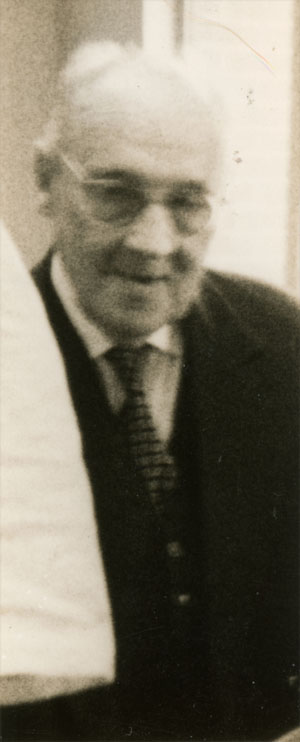
Halmos photographed Waclaw Sierpinski (1882-1969), of Sierpinski curve and carpet fame, in May of 1962 in Ann Arbor, Michigan. As noted above, Halmos was on the faculty at Michigan from 1961 to 1968. Born in Warsaw, Poland, then under Russian control, Sierpinski earned his undergraduate degree in mathematics and physics from the University of Warsaw in 1904. He earned his Ph.D. in 1906 from the Uniwersytet Jagiellonski (Jagiellonian University) in Krakow, Poland, and joined the faculty at the University of Lvov, Poland, in 1908. In 1909, after studying the work of Georg Cantor, he “gave the first ever lecture course devoted entirely to set theory” (O’Connor and Robertson, MacTutor Archive). He remained at Lvov until 1918, although from 1914 to 1918, he worked at the University of Moscow with Nikolai Luzin. This was because he and his family were stranded in Russia at the start of World War I, and apparently were not allowed to leave until the end of the war. Shortly after his return to Poland in 1918, Sierpinski moved to the University of Warsaw. In 1920, he founded the set theory journal Fundamenta Mathematicae, which he edited until his death. During the German occupation of Poland (1939-1945), he helped maintain the “underground university” in Warsaw. Sierpinski reported in 1945 that over half of Poland’s mathematicians had been killed during World War II. O’Connor and Robertson of the MacTutor Archive reported that Sierpinski published 724 papers and 50 books during his career. They summarized his contributions as follows:
Sierpinski’s most important work is in the area of set theory, point set topology and number theory. In set theory he made important contributions to the axiom of choice and to the continuum hypothesis.
(Sources: MacTutor Archive, Mathematics Genealogy Project)
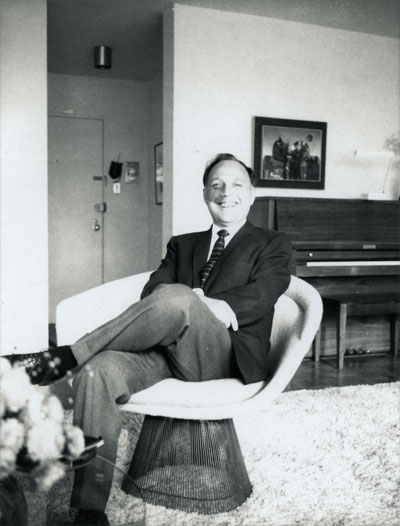
Isadore M. Singer was photographed by Halmos on May 21, 1968, in Chicago, Illinois. After earning a bachelors degree in physics from the University of Michigan in January of 1944 and spending three years in the Army Signal Corps, Singer earned his Ph.D. from the University of Chicago in 1950 with the dissertation, “Lie Algebras of Unbounded Operators,” written under advisor Irving Segal (whose photograph appears above). As noted above, Halmos was on the Chicago faculty from 1946 to 1961; he and “Iz” (or “Is”) Singer would have first met during Singer’s graduate school days there. Singer’s first academic post was a Moore instructorship at the Massachusetts Institute of Technology (MIT), where he has spent most of his career, save for two years at the University of California, Los Angeles (1952-1954), six years at the University of California, Berkeley (1977-1983), and various visiting professorships, including at the Institute for Advanced Study in Princeton, New Jersey, in 1955-56 and 1975-76. He is best known for his joint work with Michael Atiyah (who is pictured on page 2 and page 10 of this collection) on the Atiyah-Singer Index Theorem, but also for his work on analytic torsion with his MIT colleague Daniel B. Ray (see page 13 of this collection for a photo of Ray) and more generally for his efforts to unify mathematics and theoretical physics. As O’Connor and Robertson of the MacTutor Archive pointed out, Atiyah and Singer were awarded the 2004 Abel Prize for
their discovery and proof of the index theorem, bringing together topology, geometry and analysis, and their outstanding role in building new bridges between mathematics and theoretical physics.
Singer also is considered an excellent teacher at all levels, from first-year calculus to research seminars. He has advised at least 34 Ph.D. students, four of them at the University of California, Berkeley, and the rest at MIT. (Sources: MacTutor Archive, Mathematics Genealogy Project)
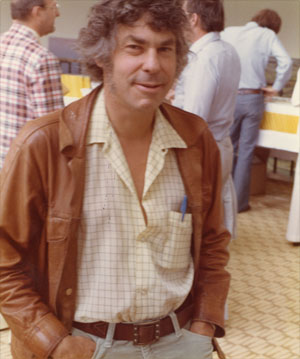
Halmos photographed Stephen Smale in August of 1975 at the Joint Summer Mathematics Meetings in Kalamazoo, Michigan. Another photo of Smale appears on page 40 of this collection, where you can read more about him.
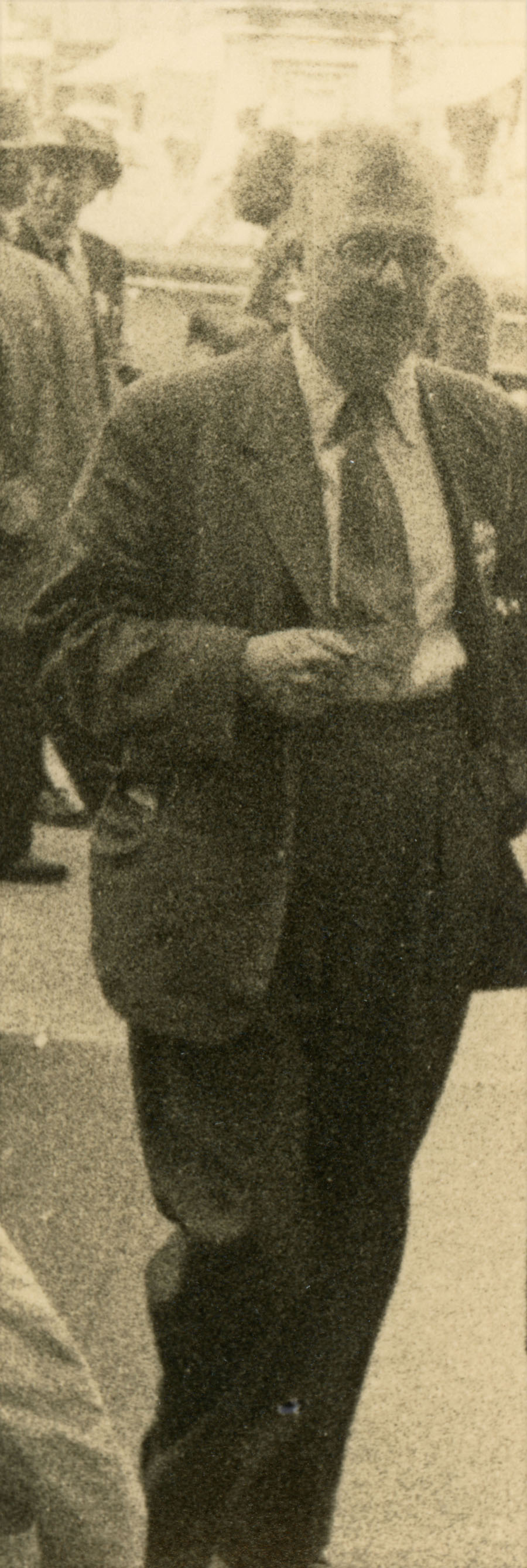
Halmos photographed Frank Smithies (1912-2002) in 1958 at the International Congress of Mathematicians held in Edinburgh, Scotland. Smithies earned his Ph.D. from Cambridge University in 1937 with the dissertation, “The Theory of Linear Integral Equations,” written under advisor G.H. Hardy. He spent his career at Cambridge, advising at least 26 Ph.D. students there. In his book, I Want to Be a Mathematician: An Automathography (Springer 1985), Halmos wrote fondly of the 1972 St. Andrews Colloquium (pp. 387-390), at which he gave a series of lectures, and, in particular, of Frank Smithies:
The people I spent the most time with were Frank and Nora Smithies. Frank could be called the father (grandfather?) of functional analysis in Britain. He spent the greater part of his life at Cambridge, and his students and his students’ students grew into many influential positions in the country. He is a wonderful man and always a pleasure to be with. He knows poetry and history and languages and, of course, mathematics; he has insight and wisdom and wit; he talks softly and precisely; he likes a glass or two of sherry before his dinner, and he smokes all the time (page 388).
See also the photo of Nora Smithies and William Hodge on page 24 of this collection. (Sources: MacTutor Archive, Mathematics Genealogy Project)
For an introduction to this article and to the Paul R. Halmos Photograph Collection, please see page 1. Watch for a new page featuring six new photographs each week during 2012.
Regarding sources for this page: Information for which a source is not given either appeared on the reverse side of the photograph or was obtained from various sources during 2011-12 by archivist Carol Mead of the Archives of American Mathematics, Dolph Briscoe Center for American History, University of Texas, Austin.
Who's That Mathematician? Paul R. Halmos Collection - Page 49
For more information about Paul R. Halmos (1916–2006) and about the Paul R. Halmos Photograph Collection, please see the introduction to this article on page 1. A new page featuring six photographs will be posted at the start of each week during 2012 and early 2013.

Halmos photographed Nora and Frank Smithies in May of 1973 in Cambridge, England. Another photograph of Nora Smithies appears on page 24 of this collection and another of Frank Smithies on page 48, where you can read more about him.
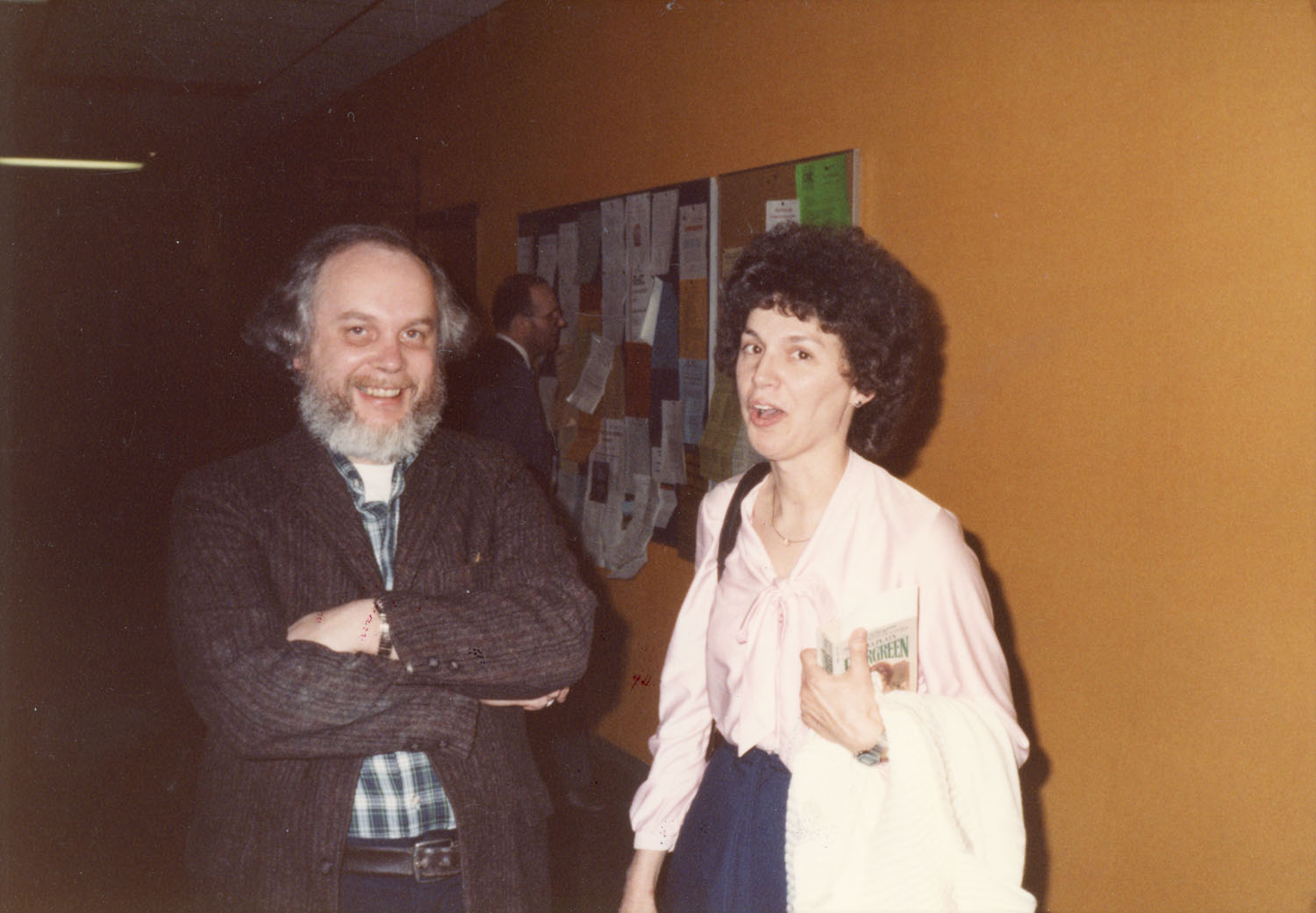
Russ and Linda Smucker were photographed by Halmos in April of 1980 during Honors Weeks at Kent State University in Kent, Ohio. Russ Smucker was a Ph.D. student of Halmos, earning his degree in 1973 from Indiana University with the dissertation “Quasidiagonal and Quasitriangular Operators.” He most likely was a faculty member at Kent State at the time of this photo; Halmos was on the faculty at Indiana University from 1969 to 1985. In his I Want to Be a Mathematician, Halmos described Smucker as a member of his “gang of five” Ph.D. students at Indiana who took his real variable and/or functional analysis courses during 1969-1971, worked in operator theory, participated in a “private seminar (which met sometimes in my living room with beer and pretzels),” spent a semester at the University of Edinburgh with Halmos, and were awarded their Ph.D.s from 1973 to 1975. Smucker moved to Muskingum College in New Concord, Ohio, in 1982, and was a faculty member there until his retirement in 2007. (Sources: Mathematics Genealogy Project; Paul R. Halmos, I Want to Be a Mathematician: An Automathography, Springer, 1985, pp. 366-367; Muskingum University Mathematics)
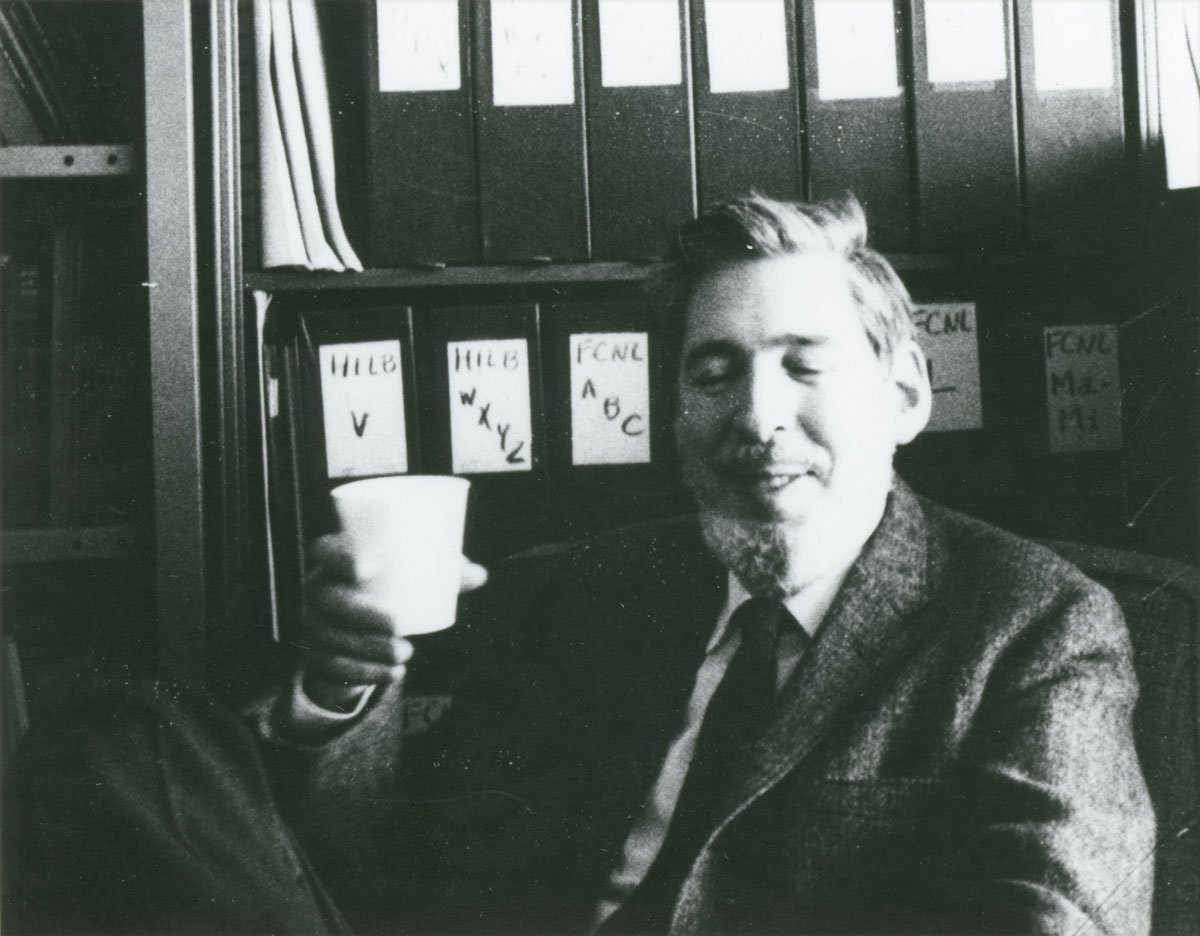
Halmos photographed Raymond Smullyan (1919–2017) in 1968. From an early age, Smullyan excelled at music and mathematics, and, as a young man, he became expert as well at composing puzzles, especially chess puzzles, and performing a professional magic show. After studying mathematics and logic mainly on his own but also at the University of Wisconsin and the University of Chicago, Smullyan finally earned his Ph.D. in logic in 1959 from Princeton University with the dissertation “Theory of Formal Systems,” written under advisor Alonzo Church. He joined the faculty of Yeshiva University in New York City in 1961 and moved to City University of New York in 1968, becoming Professor Emeritus in 1982. In their MacTutor Archive article on Smullyan, O’Connor and Robertson praised his many and varied books, writing
Smullyan’s publications have been quite remarkable with the two outstanding books on retrograde analysis chess problems .., a whole series of marvelous popular puzzle books …, and some books on the foundations of mathematics and mathematical logic which are in many ways in a class of their own.
(Sources: MacTutor Archive, Mathematics Genealogy Project)
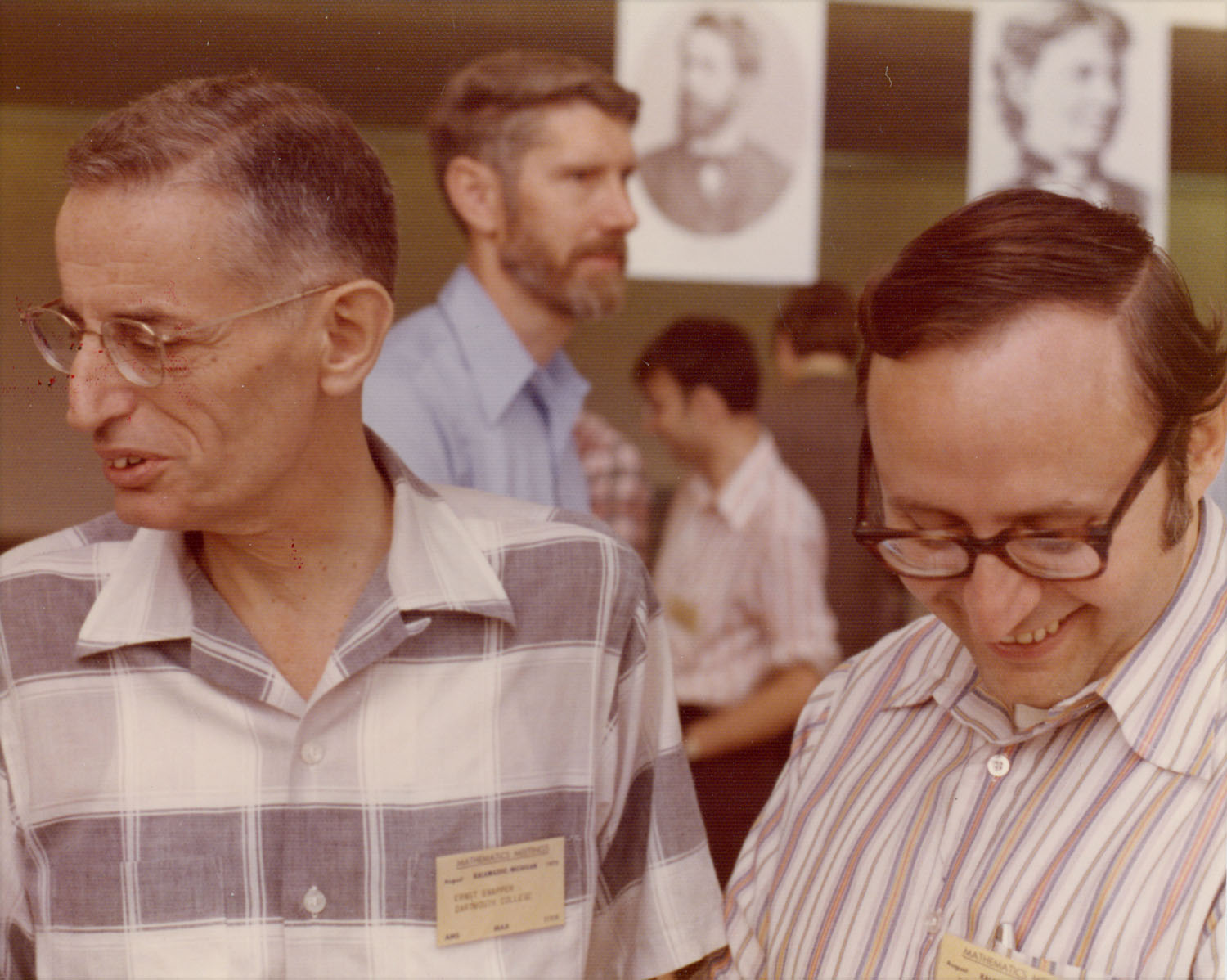
Ernst Snapper (1913–2011), left, and John B. Conway were photographed by Halmos in August of 1975 at the Joint Summer Mathematics Meetings in Kalamazoo, Michigan. At the time, Snapper was on the faculty at Dartmouth College in Hanover, New Hampshire, and Halmos and Conway were faculty members at Indiana University in Bloomington. Just over Snapper's left shoulder in the photo is Billy E. Rhoades, who was a colleague of Conway and Halmos at Indiana University at the time and now is Professor Emeritus of Mathematics there. Rhoades earned his Ph.D. in 1958 from Lehigh University with the dissertation “Hausdorff Summability Methods.” (Sources: Mathematics Genealogy Project, Indiana University Mathematics)
Born in Groningen, Holland, Ernst Snapper studied at the University of Amsterdam before earning his Ph.D. in 1941 from Princeton University with the dissertation “Structure of Linear Sets,” written under Joseph Wedderburn. He remained at Princeton until 1945, when he joined the mathematics faculty at the University of Southern California in Los Angeles. In 1955, he became Buckingham Professor of Mathematics at Miami University of Ohio and, in 1958, he moved to Indiana University. In 1963, he joined the mathematics faculty at Dartmouth College, becoming Cheney Professor of Mathematics in 1971 and Emeritus Professor in 1979. In his memorial to Snapper in the January 2013 issue of the AMS Notices, his former Ph.D. student Joseph Buckley (Indiana, 1964) noted the wide range of Snapper’s scholarly work:
Snapper’s research made significant contributions in commutative algebra, algebraic geometry, cohomology of groups, character theory, and combinatorics.
Buckley noted as well Snapper’s accomplishments as a mathematics educator, from the “lucid lectures” that made him “much in demand by the MAA, and … in numerous summer institutes for both high school and college mathematics teachers,” to his 1971 textbook Metric Affine Geometry, coauthored with his former Ph.D. student Robert Troyer (Indiana, 1960), that based instruction in geometry "on a foundation of linear algebra.” (Sources: Mathematics Genealogy Project; AMS Notices, Jan. 2013; Princeton University Memorial, Princeton in the 1930s interview, Open Museum: Faces of Norwich VT)
John B. Conway earned his Ph.D. in 1965 from Louisiana State University with the dissertation “The Strict Topology and Compactness in the Space of Measures.” An operator theorist like Halmos, he was a faculty member at Indiana University from 1965 to 1990, department chair at the University of Tennessee at Knoxville from 1990 to 2003, an NSF program officer from 2003 to 2006, and department chair at George Washington University in Washington, D.C., from 2006 to 2011. He has served the American Mathematical Society in a number of ways, including as editor of its Proceedings (1984–1988) and as a member of its Executive Committee (1997–2001) and its Board of Trustees (2001–2011). He is Professor Emeritus of Mathematics at both University of Tennessee and George Washington University. (Sources: Mathematics Genealogy Project, UT Knoxville Mathematics, GWU Mathematics)
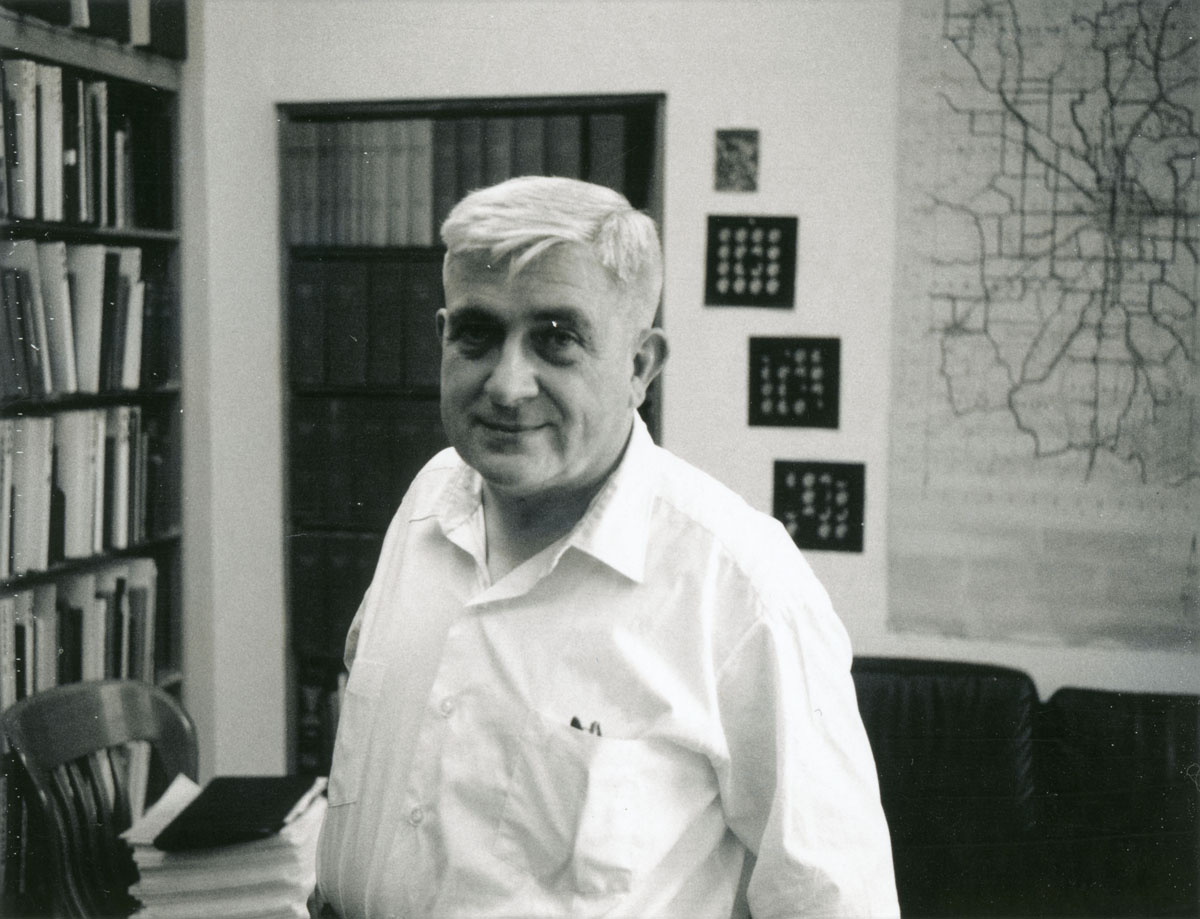
Halmos photographed Ian Sneddon (1919–2000) on July 6, 1970, in Bloomington, Indiana. Halmos was a professor at Indiana University at the time and Sneddon most likely was a visiting lecturer there. Born in Glasgow, Scotland, Sneddon began his university studies at the University of Glasgow in 1936 at the age of 16. He continued his studies at Cambridge from 1940 to 1942, when he was assigned war work on elasticity at the Cavendish Laboratory, Ministry of Supply. After working briefly as a researcher in nuclear physics at Bristol University, he joined the physics faculty at the University of Glasgow in 1946 and was awarded the D.Sc. for his research there. After one more sojourn away from Glasgow – he served as chair of mathematics at the then-new University College of North Staffordshire (later Keele University) from about 1950 to 1956—Sneddon returned to the University of Glasgow as Simson Chair of Mathematics in 1956. In their MacTutor Archive article on Sneddon, O’Connor and Robertson praised most highly Sneddon’s series of at least seven lucid and forward-looking texts on applied mathematics published from 1948 to 1969, two of which were reprinted by Dover Publications in 2006 and 2010. (Sources: MacTutor Archive, Dover Publications)
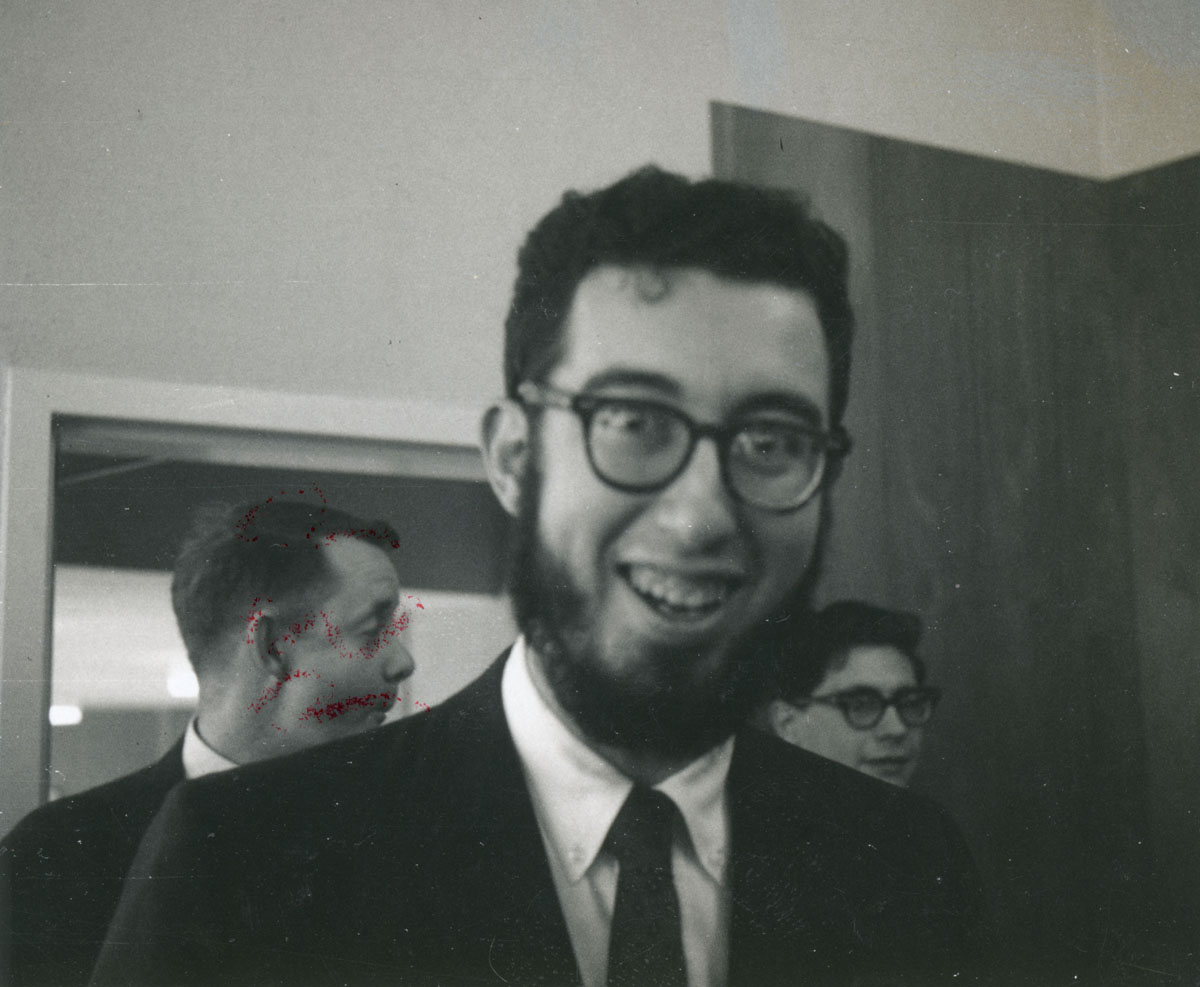
Halmos photographed Robert Solovay on October 9, 1964, at Princeton University. Solovay earned his Ph.D. in 1964 from the University of Chicago with the dissertation “A Functorial Form of the Differentiable Riemann-Roch Theorem,” written under advisor Saunders Mac Lane. He taught at Princeton from 1962 to 1964 and was a member of the Institute for Advanced Study in Princeton during 1964-65 (and again during 1971–72). In 1965, Solovay joined the faculty at the University of California, Berkeley, where he is now Professor Emeritus. As a set theorist, he has written most recently on computer verification of formal proofs, but, as he wrote recently, "I follow my curiosity wherever it leads me. Sometimes it leads me back to set theory; sometimes far afield." (Sources: UC Berkeley Mathematics, Mathematics Genealogy Project, IAS)
For an introduction to this article and to the Paul R. Halmos Photograph Collection, please see page 1. Watch for a new page featuring six new photographs each week during 2012.
Regarding sources for this page: Information for which a source is not given either appeared on the reverse side of the photograph or was obtained from various sources during 2011–12 by archivist Carol Mead of the Archives of American Mathematics, Dolph Briscoe Center for American History, University of Texas, Austin.
Who's That Mathematician? Paul R. Halmos Collection - Page 50
For more information about Paul R. Halmos (1916-2006) and about the Paul R. Halmos Photograph Collection, please see the introduction to this article on page 1. A new page featuring six photographs will be posted at the start of each week during 2012 and early 2013.
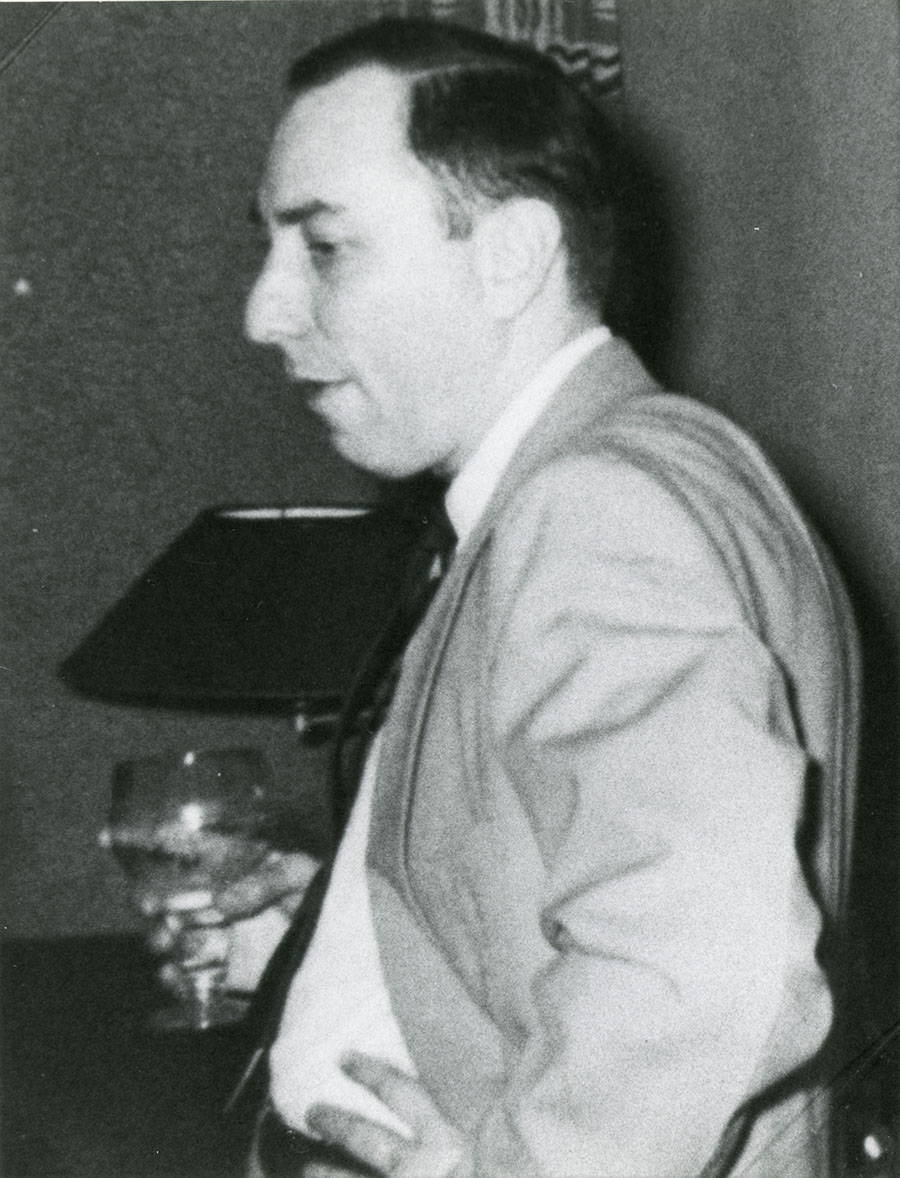
Halmos photographed Edwin H. Spanier (1921-1996) in about 1955. Spanier was on the faculty of the University of Chicago from 1948 to 1959, as was Halmos from 1946 to 1961. After serving in the U.S. Army Signal Corps during World War II, Spanier earned his Ph.D. in algebraic topology under advisor Norman Steenrod at the University of Michigan in 1947. He spent the academic year 1947-48 at the Institute for Advanced Study in Princeton, as did Halmos. Spanier returned to IAS during 1951-52 and 1958-59. In 1959, he became professor of mathematics at the University of California, Berkeley, where he remained for the rest of his career. He worked on a wide range of topics in algebraic topology, including homology groups of fibre spaces with Shiing-Shen Chern (pictured on page 9 and page 38 of this collection) and duality in homotopy theory with Henry Whitehead, having a great influence on the subject and its various applications. Beginning in 1961, he also worked on formal languages in theoretical computer science. (Sources: MacTutor Archive, IAS)
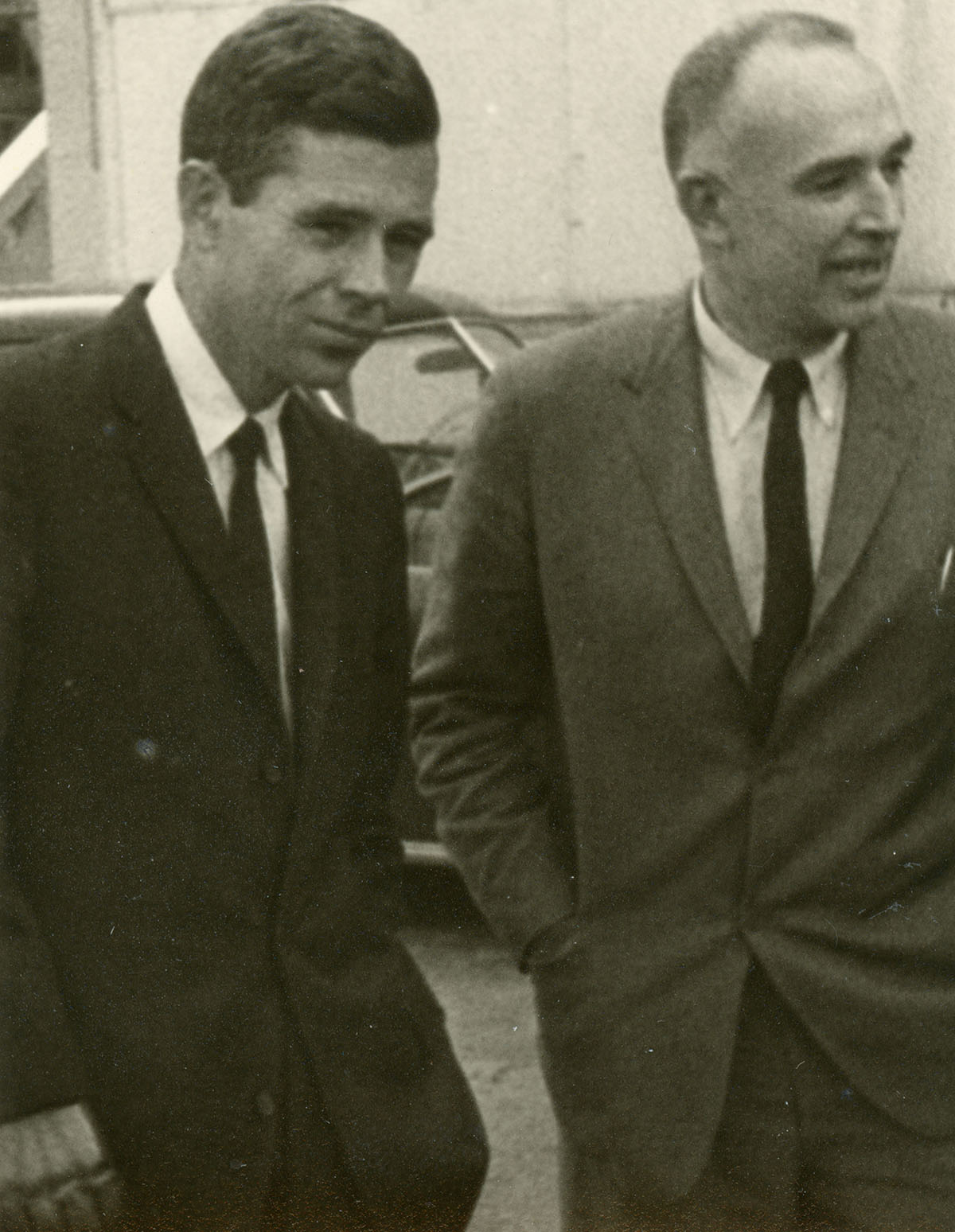
Edwin E. Floyd (1929-1990), left, and Donald Spencer (1912-2001) were photographed by Halmos no earlier than January and no later than April of 1960.
Topologist Edwin E. Floyd earned his Ph.D. from the University of Virginia in 1948 with the dissertation “The Extension of Homeomorphisms,” written under advisor Gordon Whyburn. After teaching at Princeton University during the 1948-49 academic year, he returned to the University of Virginia, where he continued to work with Whyburn. Floyd is perhaps best known for his collaboration with Pierre Conner on equivariant cobordism, resulting in the monograph, The relation of cobordism to K-theories (Springer, 1966). He spent the rest of his career at Virginia, becoming Taylor Professor of Mathematics in 1966 and University Provost in 1981. (Sources: Mathematics Genealogy Project, University of Virginia History, MathSciNet)
Donald Spencer earned his Ph.D. in analytic number theory in 1939 from Cambridge University with the dissertation “On a Hardy-Littlewood Problem of Diophantine Approximation.” His Ph.D. advisor was none other than J. E. Littlewood (pictured on page 31 of this collection) and, not surprisingly, he also worked with G. H. Hardy. Spencer then joined the faculty of MIT in Cambridge, Massachusetts, where he had been an undergraduate aeronautical engineering major, but moved to Stanford University in Palo Alto, California, in 1942. He was at Stanford from 1942 to 1950 and 1963 to 1968 and at Princeton University from 1950 to 1963 and from 1968 to 1978. During his career, Spencer worked primarily on complex analysis and is best known for his joint work with Fields Medalist Kunihiko Kodaira on deformations of complex manifolds. Spencer was born and raised in Boulder, Colorado, and, after he retired from Princeton in 1978, he moved to Durango, Colorado. (Source: MacTutor Archive)
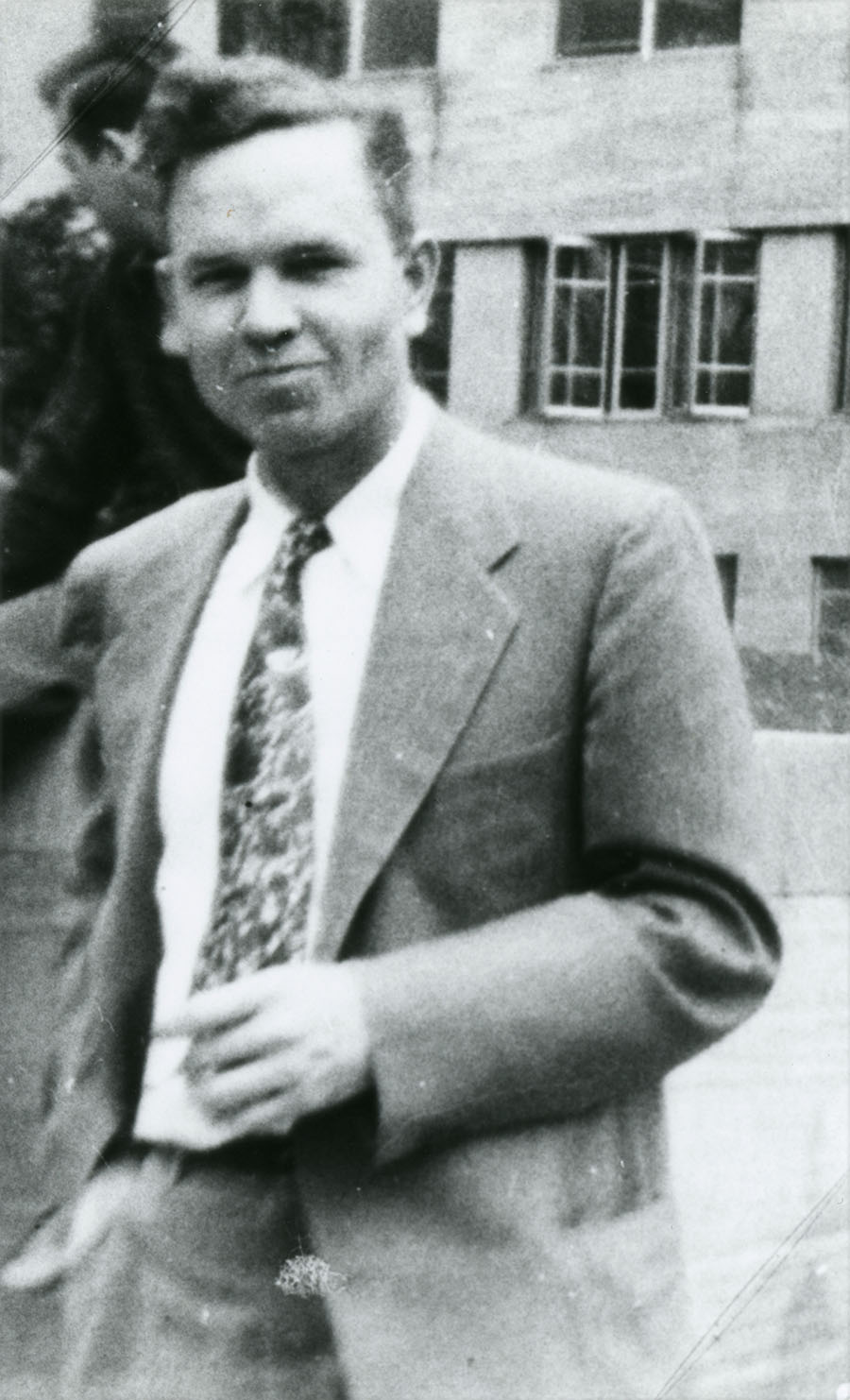
Halmos photographed Norman Steenrod (1910-1971) in about 1955. After being inspired to study topology by Raymond Wilder (see page 43 of this collection) in the only mathematics course he took as an undergraduate at the University of Michigan, Steenrod eventually followed Wilder to Princeton to work toward a Ph.D. in mathematics. He earned his Ph.D. in 1936 with the dissertation “Universal Homology Groups,” written under advisor Solomon Lefschetz. After teaching at Princeton (1936-39), the University of Chicago (1939-42), and the University of Michigan (1942-47), Steenrod returned to Princeton, where he spent the rest of his career. He is best known for introducing Steenrod squares and the Steenrod algebra during the early 1940s, work described in his and David Epstein’s book, Cohomology Operations (1962); for his research on fibre bundles and his explication of this topic in his book The Topology of Fibre Bundles (1951, reprinted by Princeton University Press in 1999); and for his and Samuel Eilenberg’s book, Foundations of Algebraic Topology (1952). (See page 13 of this collection for a photo of Eilenberg.) (Sources: MacTutor Archive, Mathematics Genealogy Project, MathSciNet)
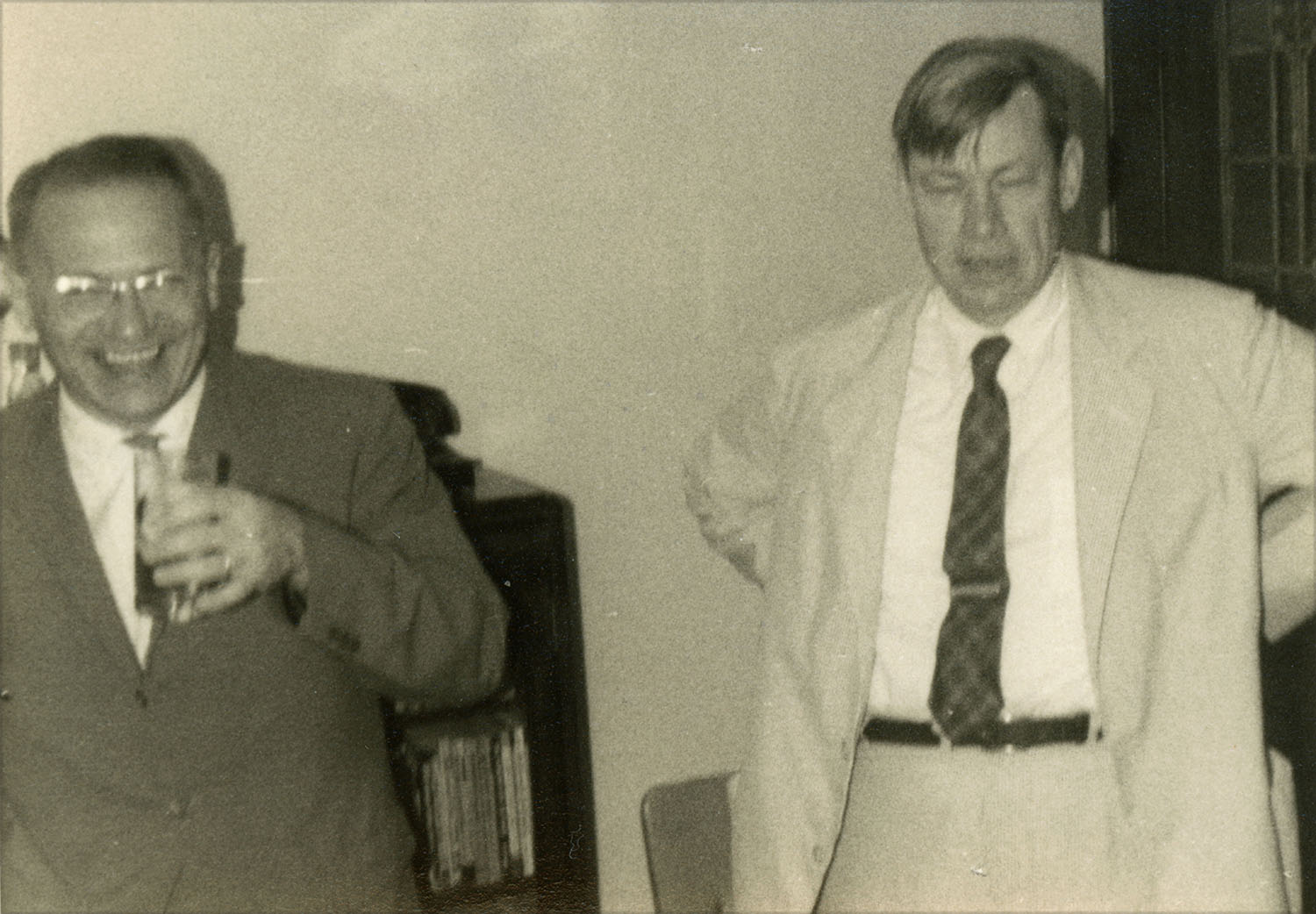
Béla Szőkefalvi-Nagy (1913-1998), left, and Marshall Stone (1903-1989) were photographed by Halmos in July or August of 1961. Other photographs of Szőkefalvi-Nagy appear on page 9 and page 14 of this collection, where you can read more about him, with additional photos on pages 36, 38, and 43. Stone is pictured on page 4 of this collection, where you can read more about him, and on page 38.
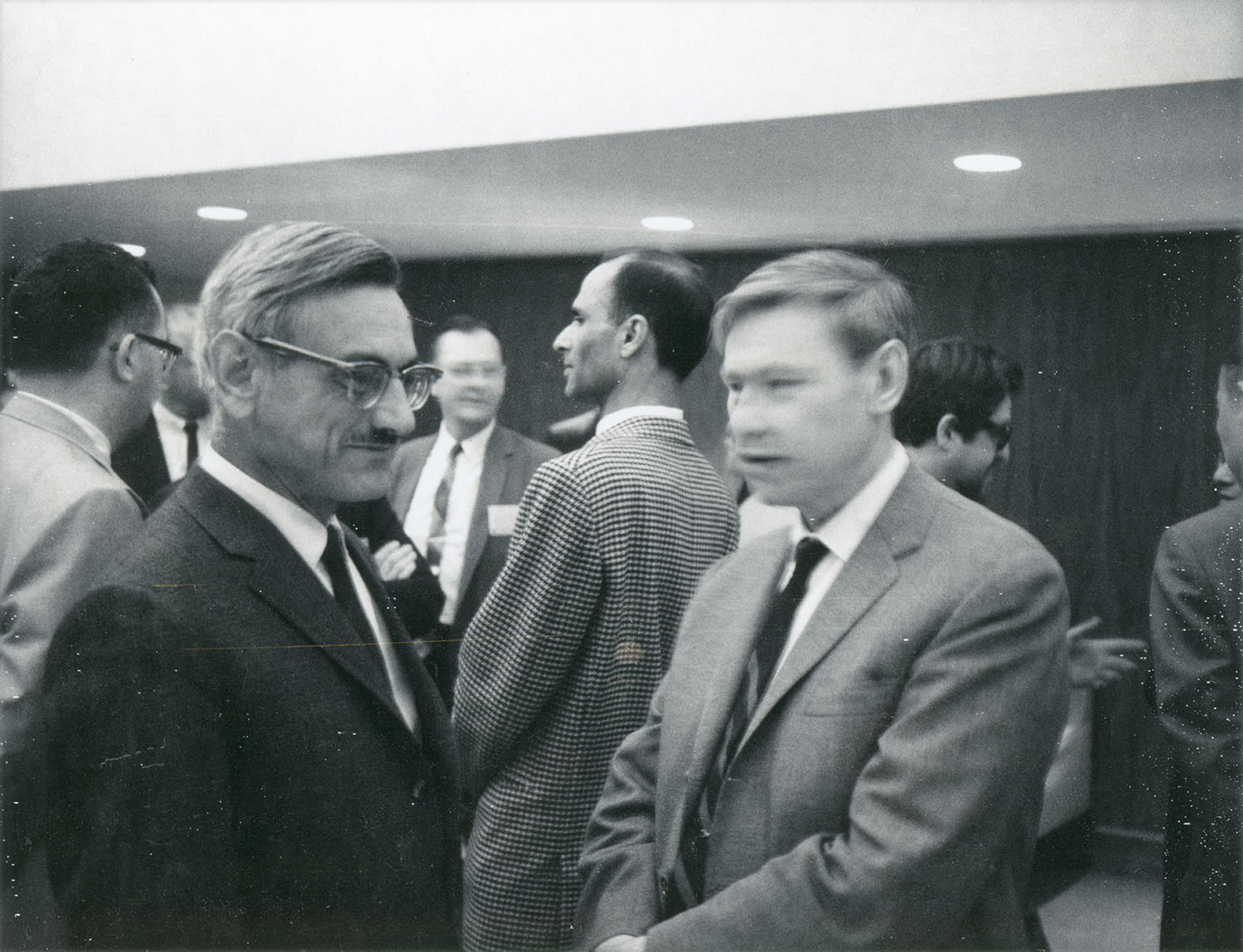
Halmos photographed Béla A. Lengyel (1910-2002), left, and Marshall Stone (1903-1989) on May 21, 1968, in Chicago, Illinois, possibly at a celebration of Stone’s retirement from the University of Chicago. Stone also is pictured above and on page 4 and page 38 of this collection. Lengyel and Stone published the paper, “Elementary proof of the spectral theorem,” together in 1936. This is the first paper of Lengyel’s that appears in MathSciNet; his second paper was written with Paul Erdős in 1938, giving him an Erdős number of 1. (Erdős is pictured on pages 3, 10, 14, and 27 of this collection.) Lengyel earned his doctorate in mathematical physics from Pázmány University (now Lóránd Eötvös University) in Budapest, Hungary, in 1935, with a dissertation on linear operators written under John von Neumann (who was then at Princeton). During the 1935-36 academic year, he studied mathematics at Harvard with Stone, who was a professor there. He returned to the U.S. in 1939, where he taught at Rensselaer Polytechnic Institute in Troy, New York, and various other institutions; worked as a physicist at the Naval Research Laboratory in Washington, D.C., from 1946 to 1952 and at Hughes Research Laboratories in Los Angeles, California, from 1952 to 1963; and, in 1963, founded the physics and astronomy department at California State University, Northridge, serving as its chair until 1970, and retiring in 1977. He is best known among physicists for writing the first technical monograph on the then-new technology of lasers in 1962. (Sources: MathSciNet; Los Angeles Times obituary; Bela Adalbert Lengyel obituary by Barney Bales, CSUN Physics)
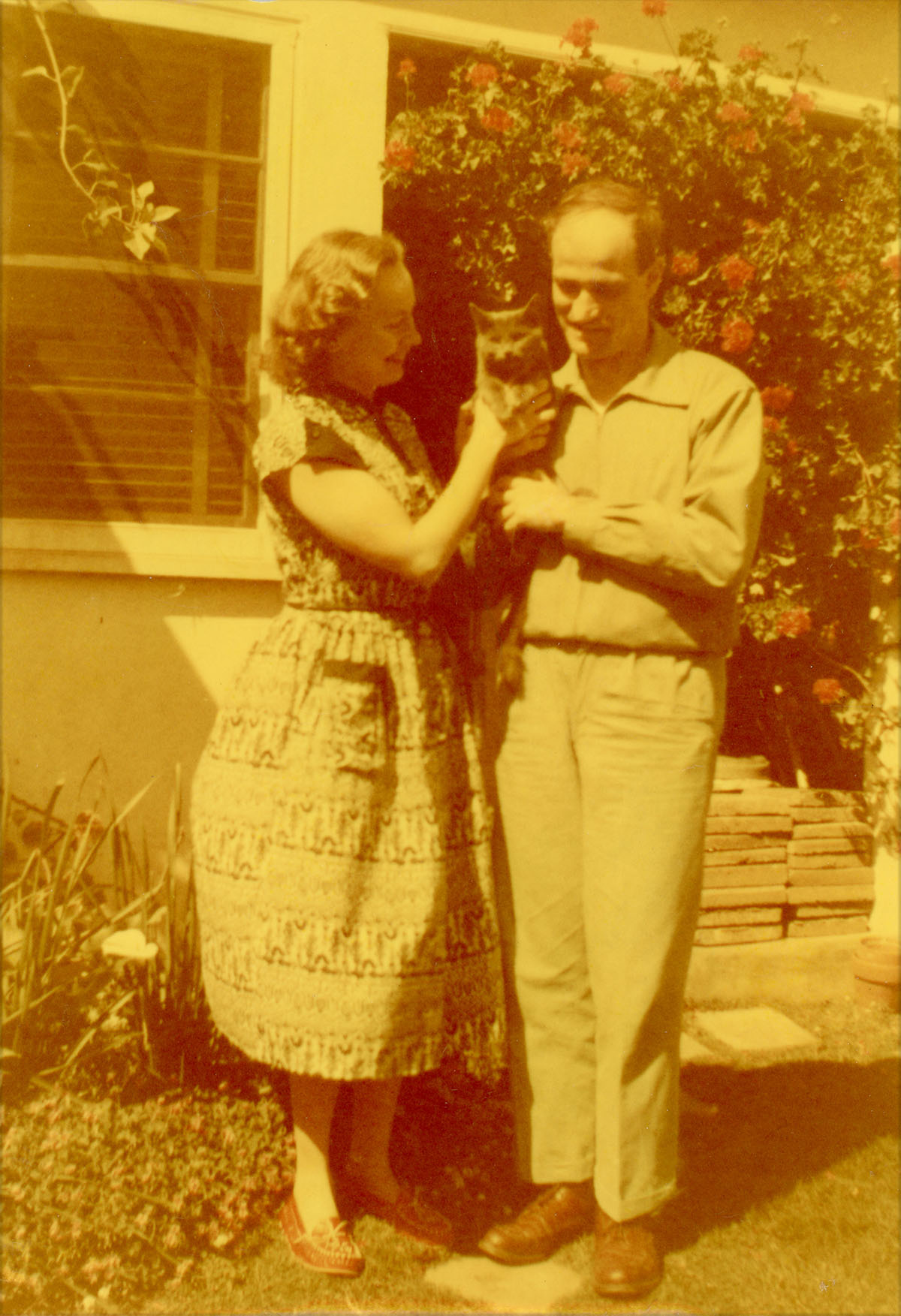
Halmos photographed Louise and Ernst Straus (1922-1983) in 1953, probably in Los Angeles, California. Ernst Straus earned his Ph.D. in 1948 from Columbia University with the dissertation “Some results in Einstein’s unified field theory,” under advisors F. J. Murray and Albert Einstein. Straus was Einstein’s assistant at the Institute for Advanced Study in Princeton from 1944 to 1948 and published three joint papers with him. He also was interested in geometry, number theory, combinatorics, graph theory, and linear algebra, and published 21 joint papers with Paul Erdős, giving him an Erdős number of 1 21 times over. Born in Munich, Germany, Straus moved with his family to Jerusalem, Palestine, in 1933. He studied at Hebrew University in Jerusalem before moving to New York City in 1941 to study at Columbia University. In 1948, he joined the faculty at the University of California, Los Angeles, where he spent the rest of his career. Halmos was at the Institute for Advanced Study during 1947-48 and he and Straus knew each other then. They may have first met even earlier, as Halmos also was at IAS from 1939 to 1942 and from May to September of 1946. (Sources: MacTutor Archive; Mathematics Genealogy Project; Ernst Gabor Strauss Calisphere obituary; Paul Halmos, I Want to Be a Mathematician: An Automathography, Springer, 1985, pp. 127-8, 140-1)
For an introduction to this article and to the Paul R. Halmos Photograph Collection, please see page 1. Watch for a new page featuring six new photographs each week during 2012.
Regarding sources for this page: Information for which a source is not given either appeared on the reverse side of the photograph or was obtained from various sources during 2011-12 by archivist Carol Mead of the Archives of American Mathematics, Dolph Briscoe Center for American History, University of Texas, Austin.
Who's That Mathematician? Paul R. Halmos Collection - Page 51
For more information about Paul R. Halmos (1916-2006) and about the Paul R. Halmos Photograph Collection, please see the introduction to this article on page 1. A new page featuring six photographs will be posted at the start of each week during 2012 and early 2013.
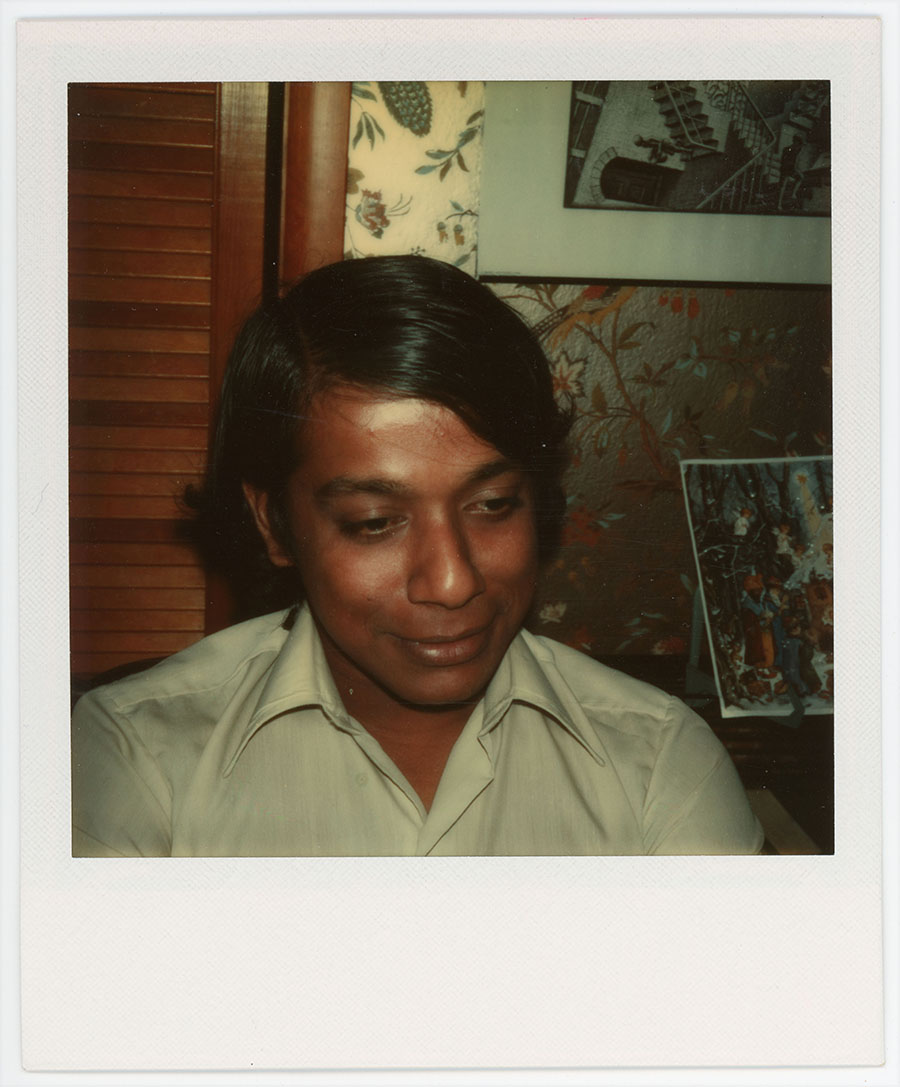
Halmos photographed his Ph.D. student Viakalathur Shankar Sunder on November 22, 1973 in Bloomington, Indiana. Sunder earned his Ph.D. in 1977 from the University of Indiana with the dissertation “Characterization Theorems for Integral Operators.” In his book, I Want to Be a Mathematician: An Automathography (Springer 1985), Halmos fondly recalled Sunder’s thesis work during 1975–1977 and their collaboration on the book, Bounded Integral Operators on L2 Spaces (Springer 1978), which contained results from Sunder’s dissertation:
Sunder came to Santa Barbara with me and finished his thesis there. He got some beautiful results …. He put compactness back into the theory of integral operators …. He answered so many questions that my book would have been incomplete without his results …. [The] solution was to ask him to collaborate with me on the book …. (p. 371)
A few years later, Sunder changed his research focus to operator algebras. After serving on the faculty of the Indian Statistical Institute in Delhi and Bangalore for over ten years, he moved in 1995 to the Institute of Mathematical Sciences in Chennai, where he continues to work on operator algebras and, in particular, on subfactors. He co-authored the book, Introduction to Subfactors, with Vaughan Jones (for a photograph of Jones, see page 25 of this collection, where you can read more about him) in 1997. (Sources: Mathematics Genealogy Project, Indian National Science Academy biography)
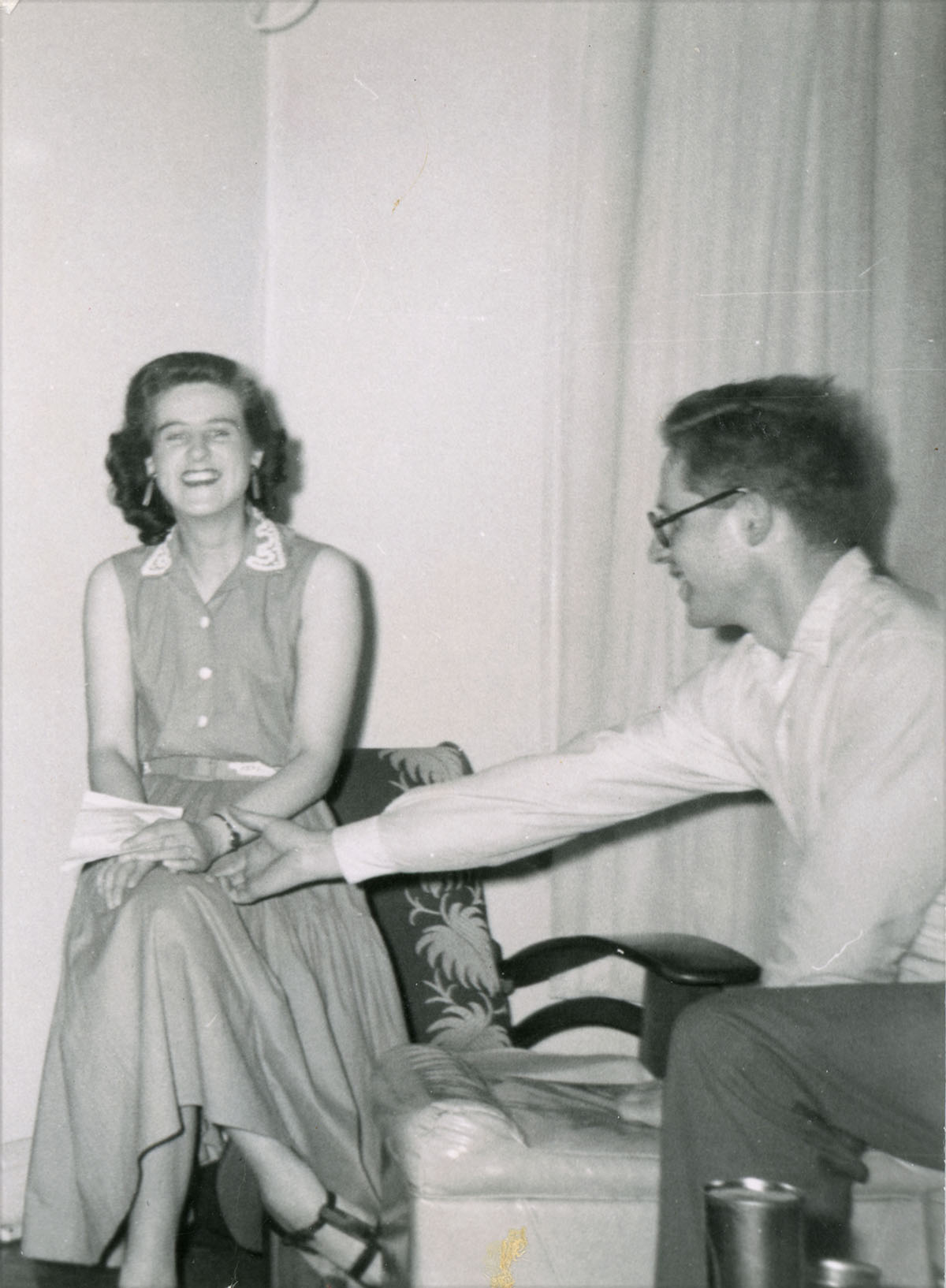
Rhona Cockcroft and H.P.F. Swinnerton-Dyer were photographed by Halmos in about 1955 in Chicago.
Rhona Cockcroft was the wife of topologist Wilfred Halliday “Bill” Cockcroft (1923-1999), who was on the faculties of the universities of Aberdeen, Southampton, Hull, and Ulster, and who from 1978 to 1982 led a well-known study of mathematics teaching in British schools. (Sources: Wilfred Halliday Cockcroft obituary, Hull University Archives)
Number theorist Sir Peter Swinnerton-Dyer (1927-2018) completed his doctoral work with J. E. Littlewood (for a photograph of Littlewood, see page 31 of this collection where you can read more about him) and André Weil. Best known for the Birch and Swinnerton-Dyer Conjecture, which in 2000 became one of the Clay Mathematics Institute’s seven Millennium Prize Problems, he has spent most of his career at Cambridge University, where he is now Emeritus Professor in the Department of Pure Mathematics and Mathematical Statistics. (Sources: Mathematics Genealogy Project, Clay Mathematics Institute, Cambridge University Mathematics)
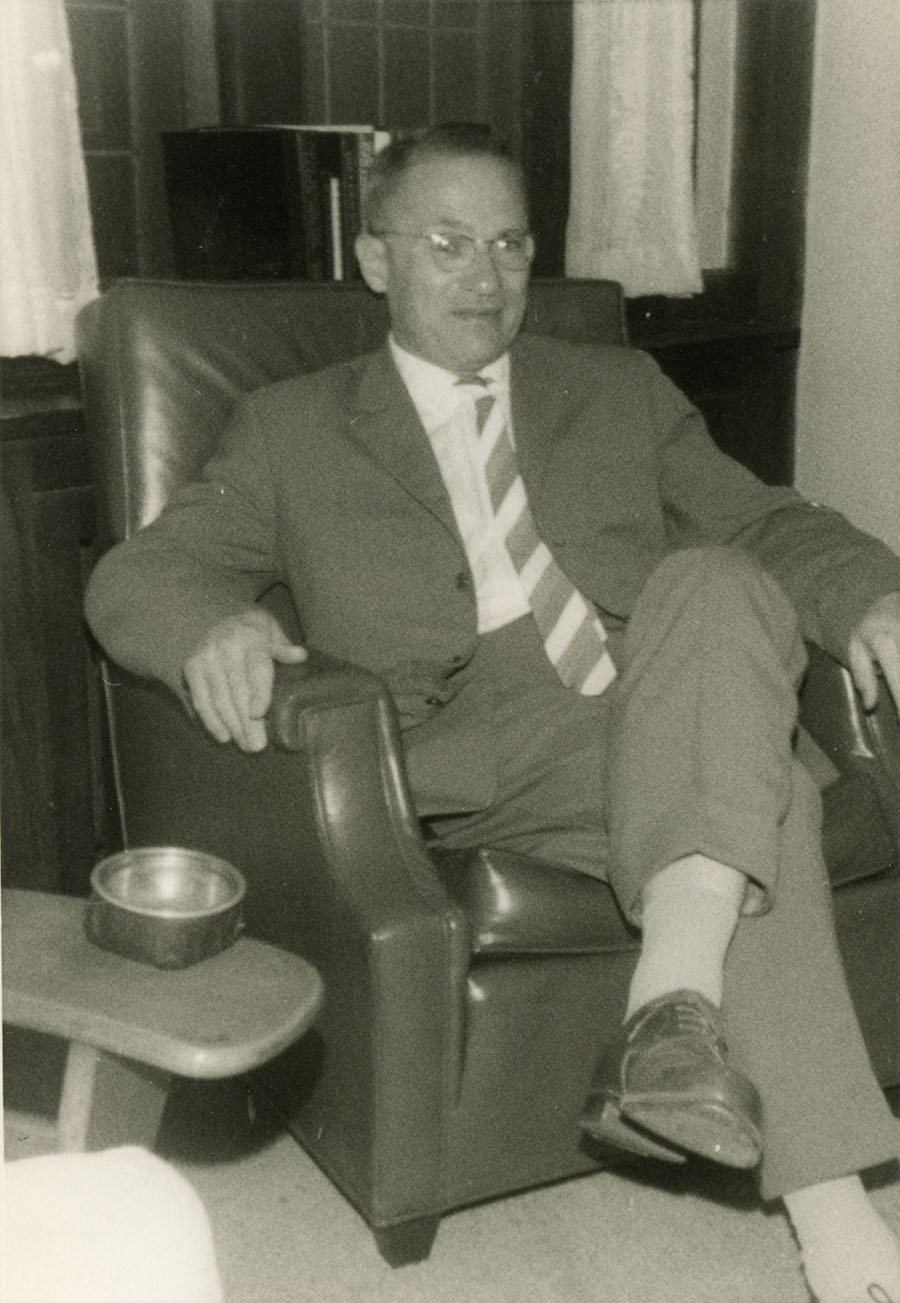
Halmos photographed Béla Szőkefalvi-Nagy (1913-1998) in August of 1961. Photographs of Szőkefalvi-Nagy appear on page 9 and page 14 of this collection, where you can read more about him, with additional photos on pages 36, 38, 43, and 50.
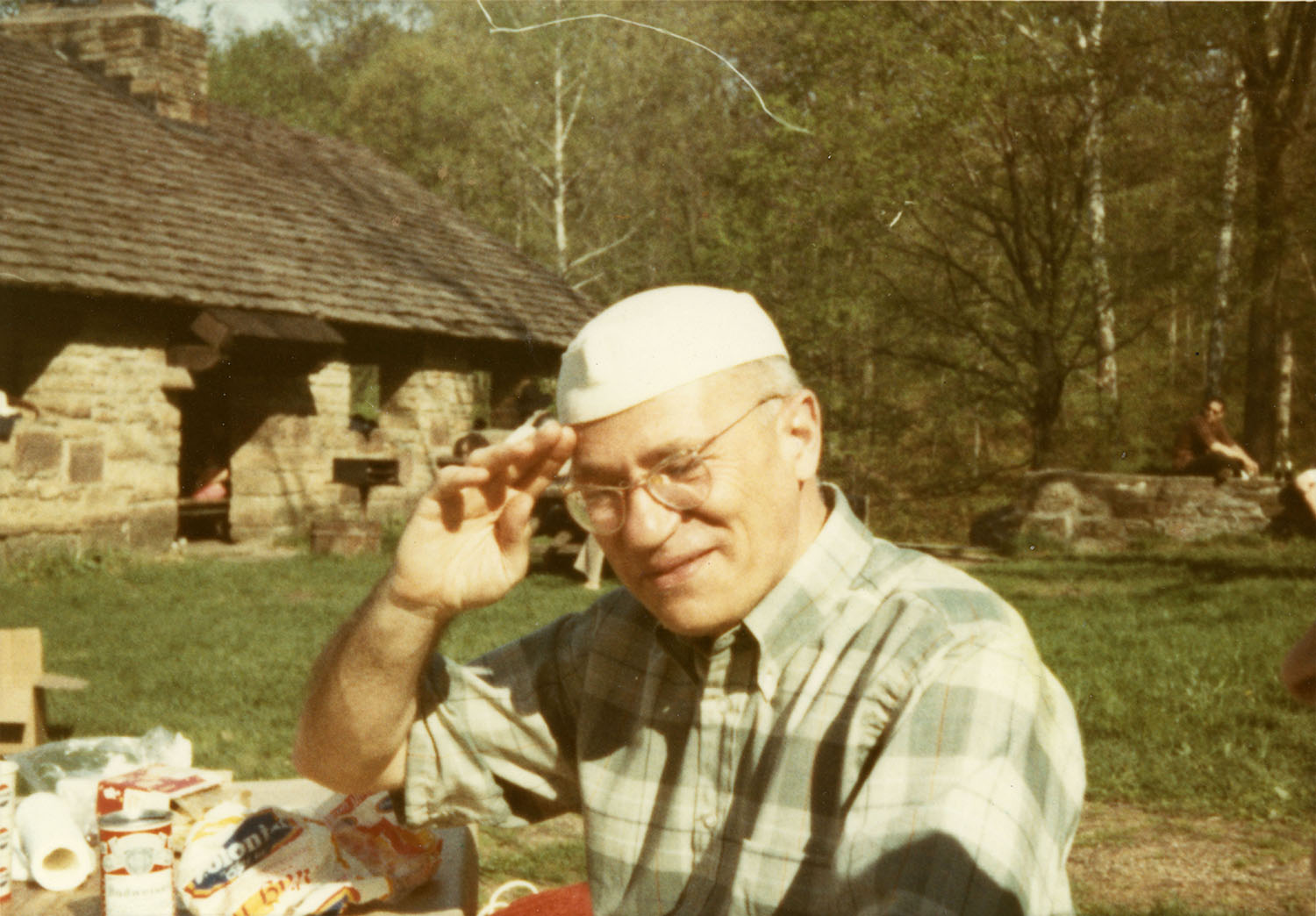
Béla Szőkefalvi-Nagy (1913-1998) was photographed by Halmos again in May of 1970 in Bloomington, Indiana.
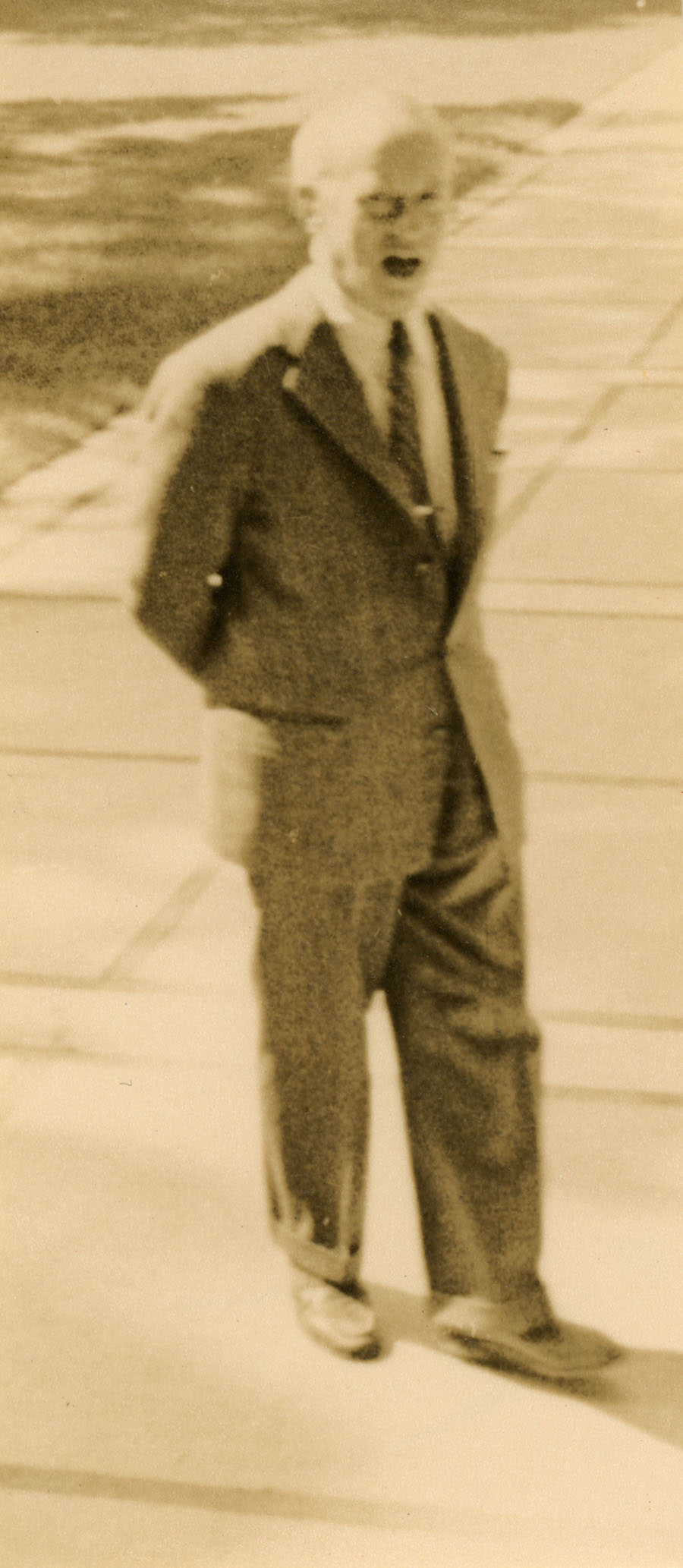
Halmos photographed Alfred Tarski (1902-1983) in 1959. Tarski was at the Institute for Advanced Study (IAS) during 1941-42, as was Halmos, and it is likely that the two first met there. Born in Warsaw when it was still under Russian control, Tarski earned his doctorate at the University of Warsaw in 1924 under logician Stanislaw Lesniewski. He was attending a meeting at Harvard in the U.S. on September 1, 1939, when Hitler’s army invaded Poland, and was able to stay on at Harvard (1939-1941), and then at IAS, and, finally, at the University of California, Berkeley, from 1942 onward. According to O’Connor and Robertson of the MacTutor Archive:
Tarski is recognised as one of the four greatest logicians of all time, the other three being Aristotle, [Gottlob] Frege, and [Kurt] Gödel. Of these Tarski was the most prolific as a logician and his collected works, excluding his books, runs to 2500 pages. Tarski made important contributions in many areas of mathematics: set theory, measure theory, topology, geometry, classical and universal algebra, algebraic logic, various branches of formal logic and metamathematics. … He can be considered a mathematical logician with exceptionally broad mathematical interests.
Tarski advised at least 26 Ph.D. students, all but three of them at UC Berkeley. (Sources: MacTutor Archive, Mathematics Genealogy Project, IAS)
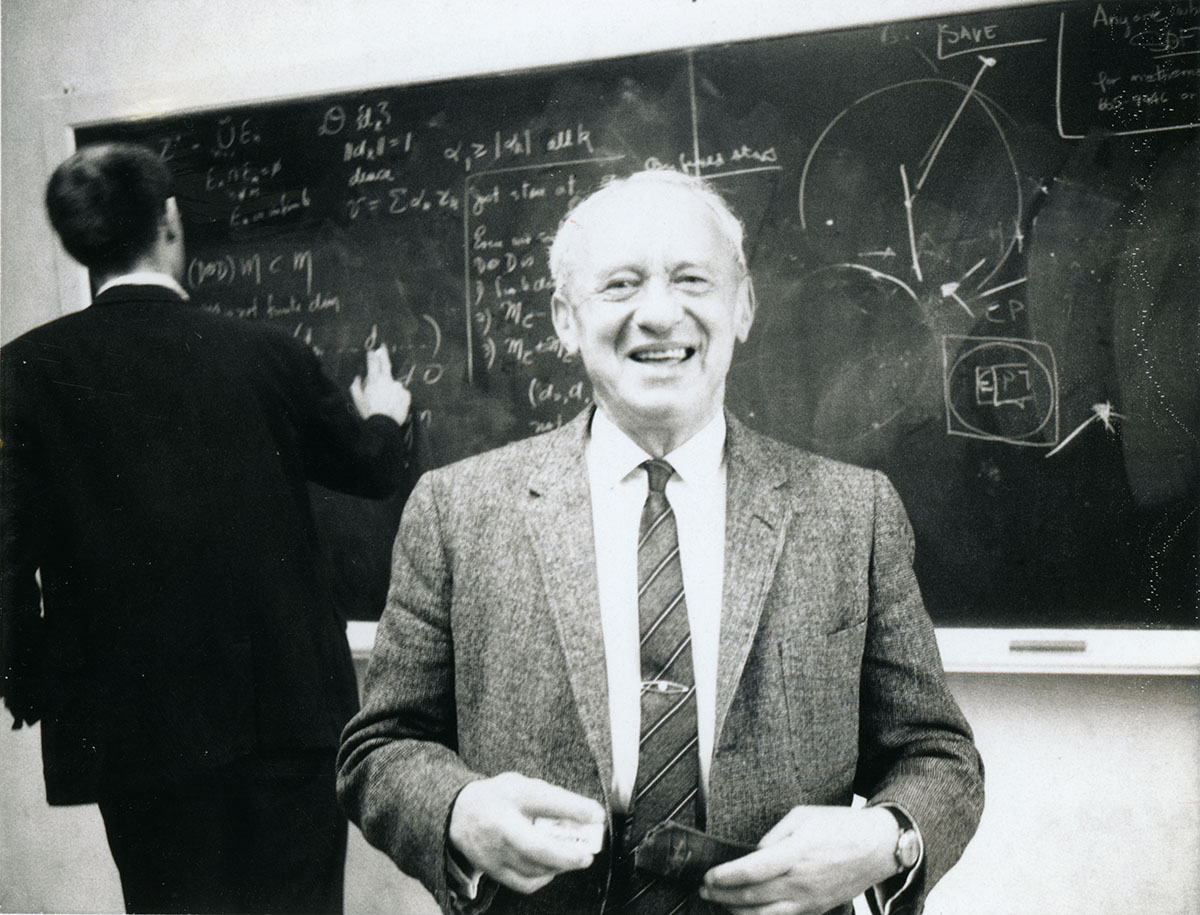
Halmos photographed Alfred Tarski again on May 11, 1967, in a classroom at the University of Michigan. That’s Ron Douglas at the chalkboard. For another photo of Douglas, see page 13 of this collection, where you can read more about him.
For an introduction to this article and to the Paul R. Halmos Photograph Collection, please see page 1. Watch for a new page featuring six new photographs each week during 2012.
Regarding sources for this page: Information for which a source is not given either appeared on the reverse side of the photograph or was obtained from various sources during 2011-12 by archivist Carol Mead of the Archives of American Mathematics, Dolph Briscoe Center for American History, University of Texas, Austin.
Who's That Mathematician? Paul R. Halmos Collection - Page 52
For more information about Paul R. Halmos (1916-2006) and about the Paul R. Halmos Photograph Collection, please see the introduction to this article on page 1. A new page featuring six photographs will be posted at the start of each week during 2012 and early 2013.
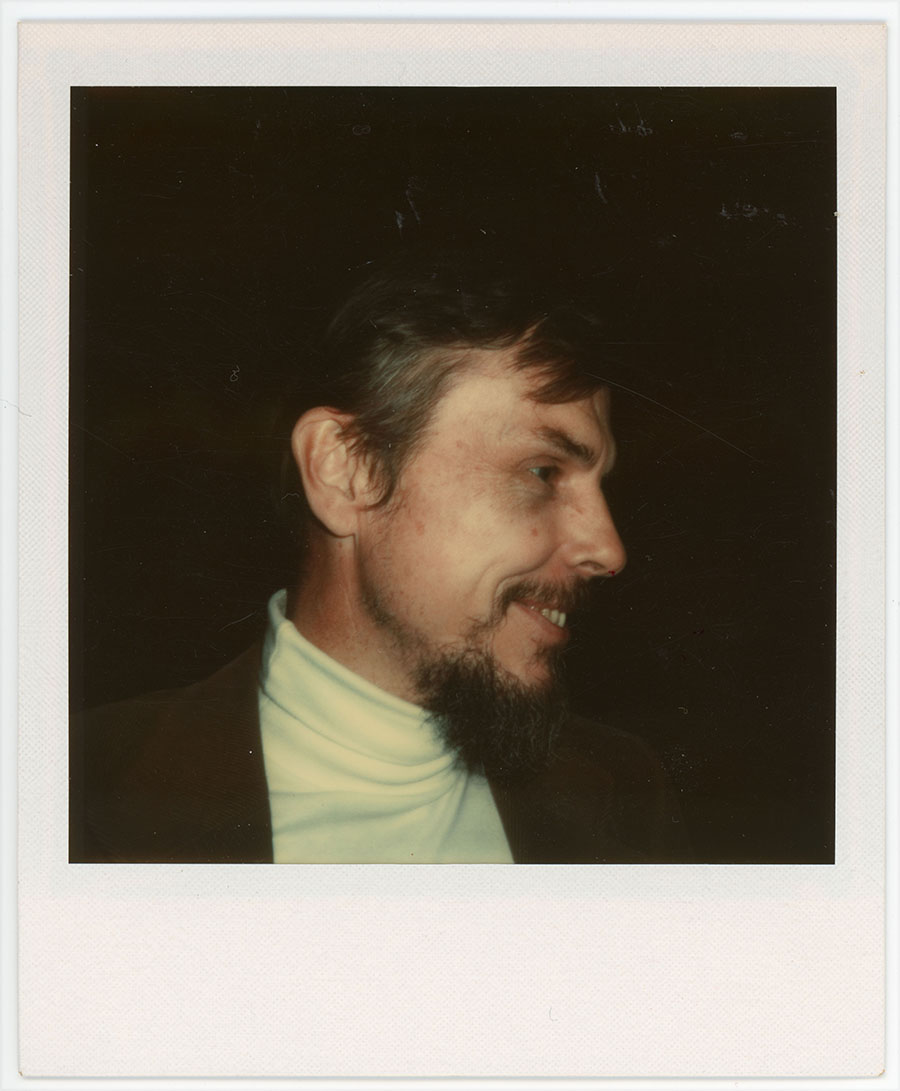
Halmos photographed John Tate, Jr., at the AMS Hilbert Problems Conference, on May 13, 1974, in DeKalb, Illinois. After studying physics and mathematics as an undergraduate at Harvard and entering Princeton in order to study for a Ph.D. in physics, Tate finally realized that mathematics and, in particular, number theory was the field for him. Beginning with his Ph.D. dissertation, “Fourier Analysis in Number Fields and [Erich] Hecke’s Zeta Functions,” written under advisor Emil Artin, he has introduced new tools and ideas into number theory, algebra, and algebraic geometry throughout his career. For his accomplishments at the beginning of his career, he was awarded the AMS Cole Prize in Number Theory (1952) and, much more recently, he was awarded the Abel Prize (2010)
… for his vast and lasting impact on the theory of numbers. … Many of the major lines of research in algebraic number theory and arithmetic geometry are only possible because of the incisive contributions and illuminating insights of John Tate. (President of Norwegian Academy and Abel Prize Committee quoted by O’Connor and Robertson of the MacTutor Archive)
Tate was on the faculty at Princeton from 1950 to 1953, at Columbia during 1953-54, and at Harvard from 1954 to 1990. He held one of the Richardson Regents Chairs at the University of Texas at Austin from 1990 to 2009, and is now Professor Emeritus at UT Austin. (Sources: MacTutor Archive, Abel Prize)

Abraham Taub (1911-1999), left, and John von Neumann (1903-1957) were photographed by Halmos in 1948, probably at the Institute for Advanced Study (IAS) in Princeton, as all three were based there during 1947-48. Von Neumann was at Princeton from 1930 onward and at IAS from its founding in 1933 onward. Taub was at Princeton as a graduate student from 1931 to 1935 and as a theoretical physicist doing war work from 1942 to 1945, and at IAS during 1935-36, 1940-41, 1947-48, and 1962-63. Halmos was at IAS from 1939 to 1942 as well as during 1947-48. He had arrived in 1939 without a fellowship but received one after submitting his careful notes on von Neumann’s lectures on operator algebras to von Neumann, and in fact was von Neumann’s assistant during 1940-42.
Abraham Taub earned his Ph.D. in 1935 from Princeton University with the dissertation “Quantum Equations in Cosmological Spaces,” written under Howard Percy Robertson. At the same time, he worked with Oswald Veblen on differential geometry; in fact, his first published paper was with Veblen on the projective differentiation of spinors (1934). His second paper was with Veblen and von Neumann on the Dirac equation in projective relativity and his third paper on the Dirac equation in Robertson’s cosmological spaces (1937). When he returned to Princeton in 1942 to do war work, he studied shock waves and, after the war, relativistic hydrodynamics, both of which led to his interest in numerical analysis and computer science. In 1948, he joined the team at the University of Illinois building the ORDVAC and ILLIAC computers from von Neumann’s plans. He was a professor at the University of Washington in Seattle from the late 1930s to 1948, at the University of Illinois from 1948 to 1964, and at the University of California, Berkeley, from 1964 onward. (Sources: Society for Industrial and Applied Mathematics (SIAM) Memorial, Mathematics Genealogy Project, IAS)
John von Neumann’s genius, especially in mathematics, was apparent from an early age. Born and raised in Budapest, Hungary, he studied chemistry at the University of Berlin from 1921 to 1923 and at Eidgenössische Technische Hochschule (ETH) in Zürich, where he also studied mathematics with Hermann Weyl and George Pólya, from 1923 to 1926. In 1926, von Neumann earned a diploma in chemical engineering from ETH and a doctorate in mathematics from the University of Budapest, the latter with a dissertation on set theory written under Lipót Fejér. His interest in set theory led also to results in measure theory and his grounding and interest in physics to his construction of a mathematical framework for quantum mechanics. His interests in ergodic theory and quantum mechanics, in turn, led to his development of the operator algebras now known as von Neumann algebras. At the same time, he made advances in partial differential equations, game theory, and, of course, applied physics and especially development of the hydrogen bomb. During the 1940s, he also built computers and, during the 1950s, worked on automata theory.
Where did von Neumann do all of this work? During 1926-27, he studied with David Hilbert at Göttingen University; from 1926 to 1929, he lectured at the universities of Berlin and Hamburg; from 1930 to 1933, he was on the faculty at Princeton University; and, in 1933, he became a founding faculty member at the Institute for Advanced Study, where he remained for the rest of his career and life. Von Neumann was president of the American Mathematical Society during 1951-52. (Sources: MacTutor Archive, Mathematics Genealogy Project, AMS Presidents)
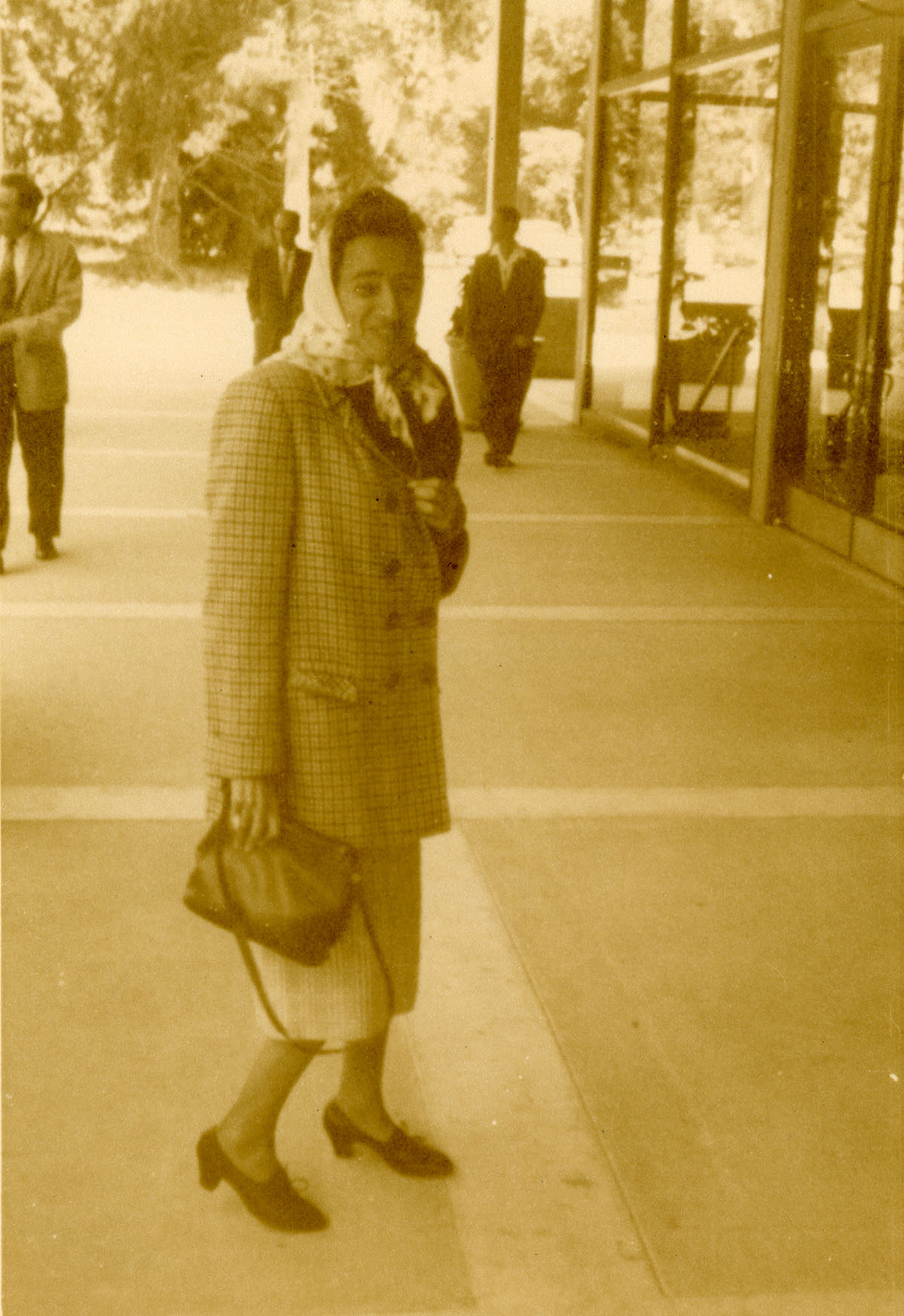
Halmos photographed Olga Taussky-Todd (1906-1995) in 1959. Olga Taussky grew up in Vienna and Linz, Austria, and earned her Ph.D. from the University of Vienna in 1930 with a dissertation on algebraic number fields. In 1931, Richard Courant (for a photograph of Courant, see page 10 of this collection, where you can read more about him) invited Taussky to the University of Göttingen, where she helped edit works of David Hilbert and Emil Artin and worked with Emmy Noether on class field theory and Courant himself on differential equations. In 1935, she moved to England, where she worked on group theory and on matrices, the latter with John “Jack” Todd, whom she married in 1938. During 1943-46, Taussky-Todd did war work on aerodynamics, which opened up at least two new mathematical fields for her:
For the first time I realised the beauty of research on differential equations – something that my former boss, Professor Courant, had not been able to instil in me. Secondly I learned a lot of matrix theory. (Taussky-Todd, as quoted by O’Connor and Robertson of the MacTutor Archive)
In 1947, she moved to the U.S., where she worked at the National Bureau of Standards, primarily on numerical analysis and its computer implementation, and then, from 1957 onward, at the California Institute of Technology. At Caltech, she pursued all of her mathematical interests, but primarily the one for which she is best known, matrix theory. (Source: MacTutor Archive)
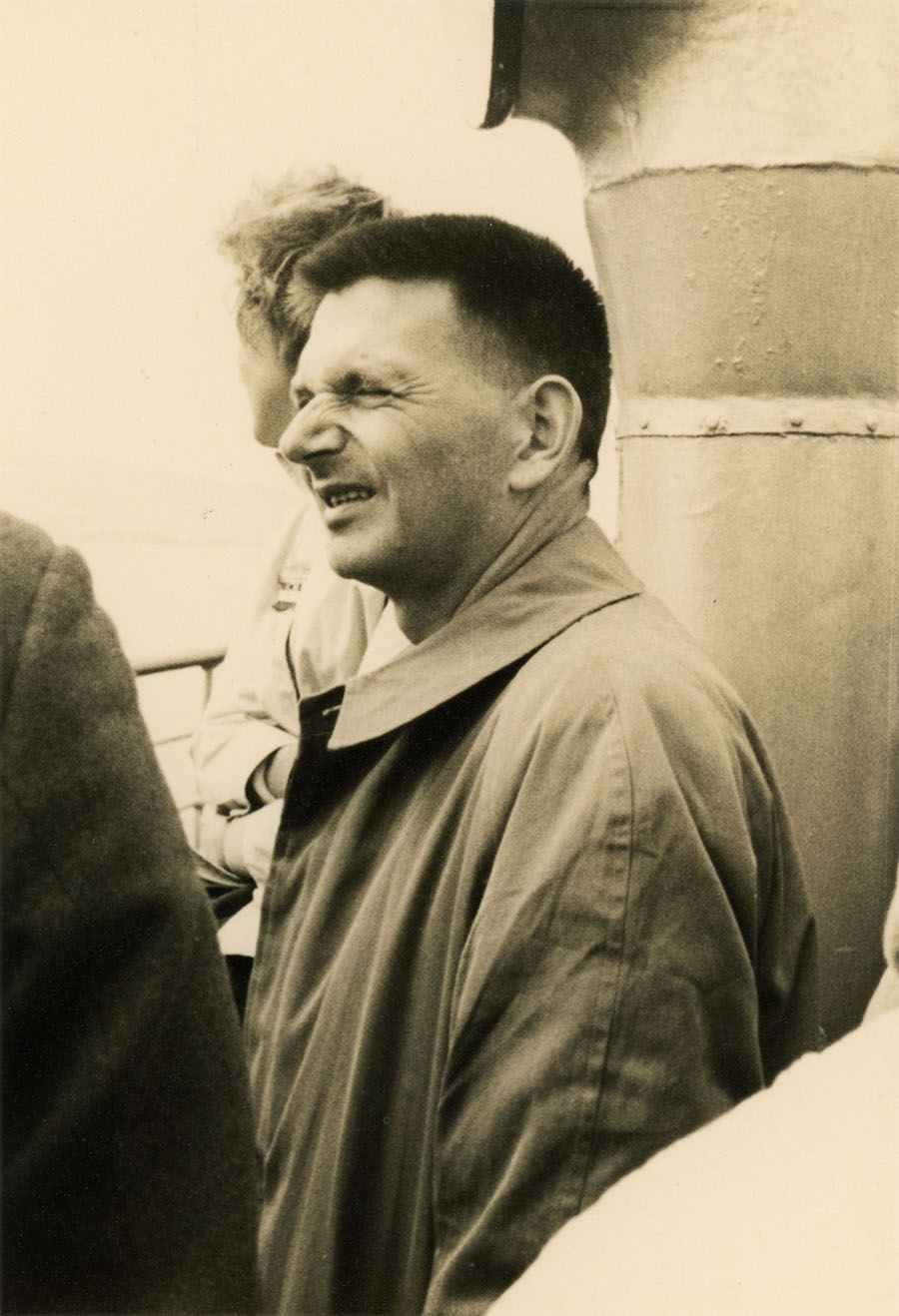
René Thom (1923-2002) was photographed by Halmos in 1958, the year he won the Fields Medal primarily for inventing and developing the theory of cobordism in algebraic topology. Halmos attended the August 1958 International Congress of Mathematicians in Edinburgh, Scotland, where Thom received the Fields Medal, and it is more than likely that this photo was taken there, probably onboard the Queen Elizabeth, the same ship on which Halmos and John Barkley Rosser were photographed that year (see page 45 of this collection). Although it is possible that mathematicians traveled to or from the Congress on the QE, it is perhaps more likely that a tour or cruise onboard the ship was an excursion for conference participants. Thom delivered the address, "Des variétés triangulées aux variétés différentiables," at the 1958 ICM.
Thom earned his Ph.D. in 1951 from the University of Paris with the dissertation “Fibre spaces in spheres and Steenrod squares,” written under Henri Cartan. After working in the U.S. (1951-53) and at the University of Grenoble (1953-54), he joined the faculty at the University of Strasbourg, where he had done much of his doctoral work and where he remained until 1963. After 1958, his work became more general and, from 1964 onward, when he moved to the Institut des Hautes Études Scientifique, it became even more general with his development of catastrophe theory, the field for which he is best known. (Sources: MacTutor Archive, MacTutor Archive: ICM, Mathematics Genealogy Project, IMU Fields Medals 1958)
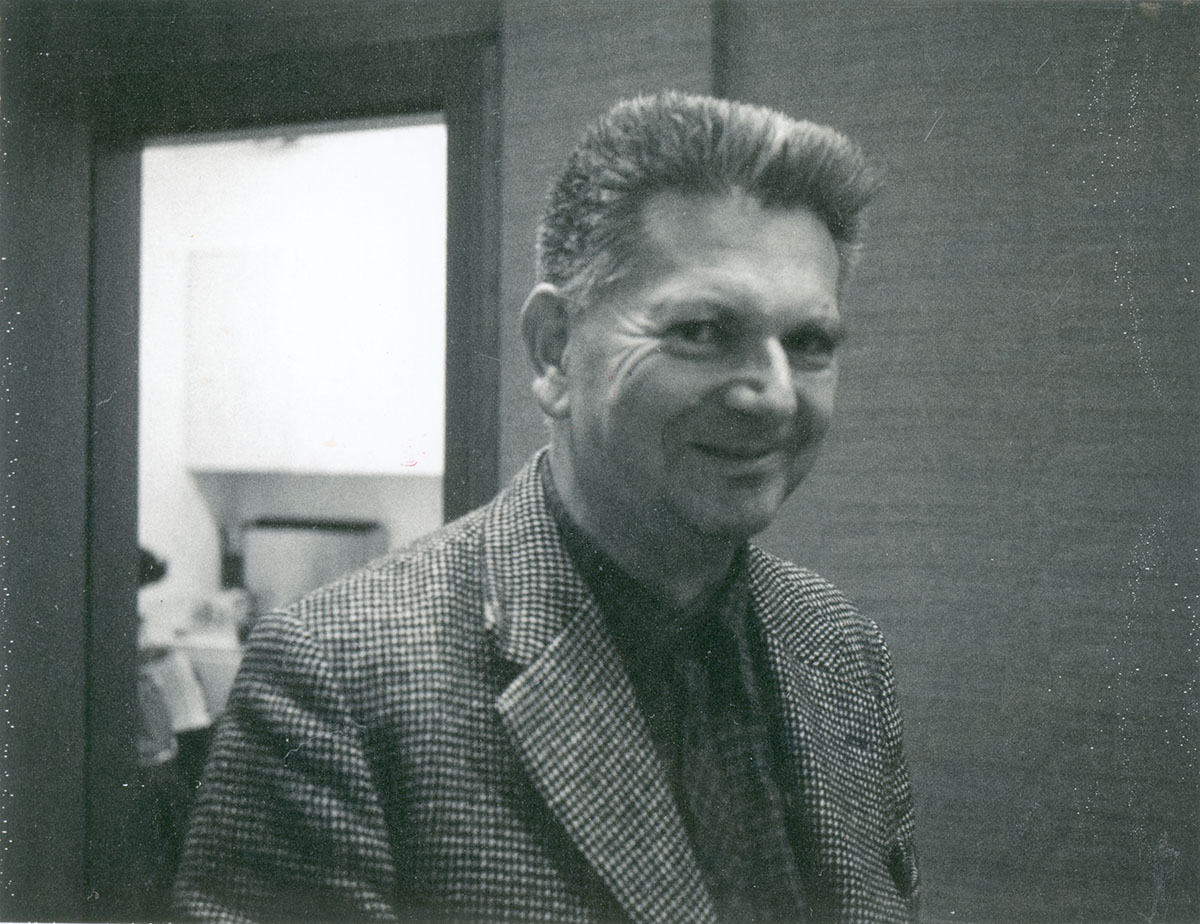
Halmos photographed René Thom again in October of 1979 at a colloquium at Indiana University in Bloomington, where Halmos was a professor at the time.
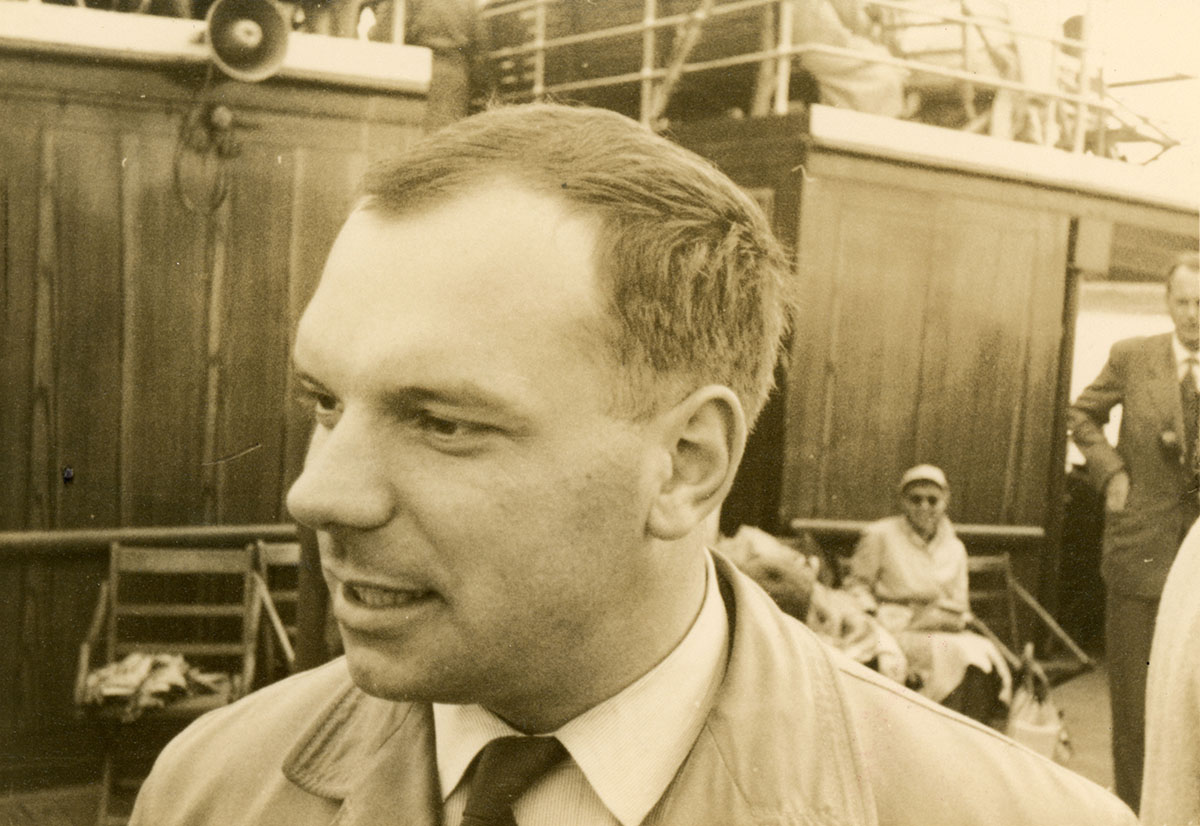
Halmos photographed Jacques Tits in 1958, probably onboard the Queen Elizabeth, the same ship on which he (Halmos) photographed René Thom that year (see above) and on which Halmos was photographed with John Barkley Rosser and his family that year (see page 45 of this collection), and almost certainly in connection with the International Congress of Mathematicians held August 14-21, 1958, in Edinburgh, Scotland.
Born and raised near Brussels, Belgium, Tits earned his Ph.D. in 1950 from the University of Brussels with the dissertation “Généralisation des groupes projectifs basés sur la notion de transitivité.” His early work was on multiply transitive groups. From 1946 to 1956, his research in group theory was funded by the Belgian national scientific agency; from 1956 to 1964 he was on the faculty at the University of Brussels; from 1964 to 1973 he was at the University of Bonn; and from 1973 onward he was Chair of Group Theory at the Collège de France, becoming Professor Emeritus (Professeur honoraire) in 2000. He is best known for inventing and developing building theory, which he first introduced comprehensively in his 1974 book, Buildings of spherical type and finite BN-pairs (1974, reprinted 1986, Springer). Tits and John Thompson were awarded the 2008 Abel Prize for their contributions to group theory. (Sources: MacTutor Archive, MacTutor Archive: ICM, Springer, Abel Prize)
For an introduction to this article and to the Paul R. Halmos Photograph Collection, please see page 1. Watch for a new page featuring six new photographs each week during 2012.
Regarding sources for this page: Information for which a source is not given either appeared on the reverse side of the photograph or was obtained from various sources during 2011-12 by archivist Carol Mead of the Archives of American Mathematics, Dolph Briscoe Center for American History, University of Texas, Austin.
Who's That Mathematician? Paul R. Halmos Collection - Page 53
For more information about Paul R. Halmos (1916-2006) and about the Paul R. Halmos Photograph Collection, please see the introduction to this article on page 1. A new page featuring six photographs will be posted at the start of each week during 2012 and early 2013.
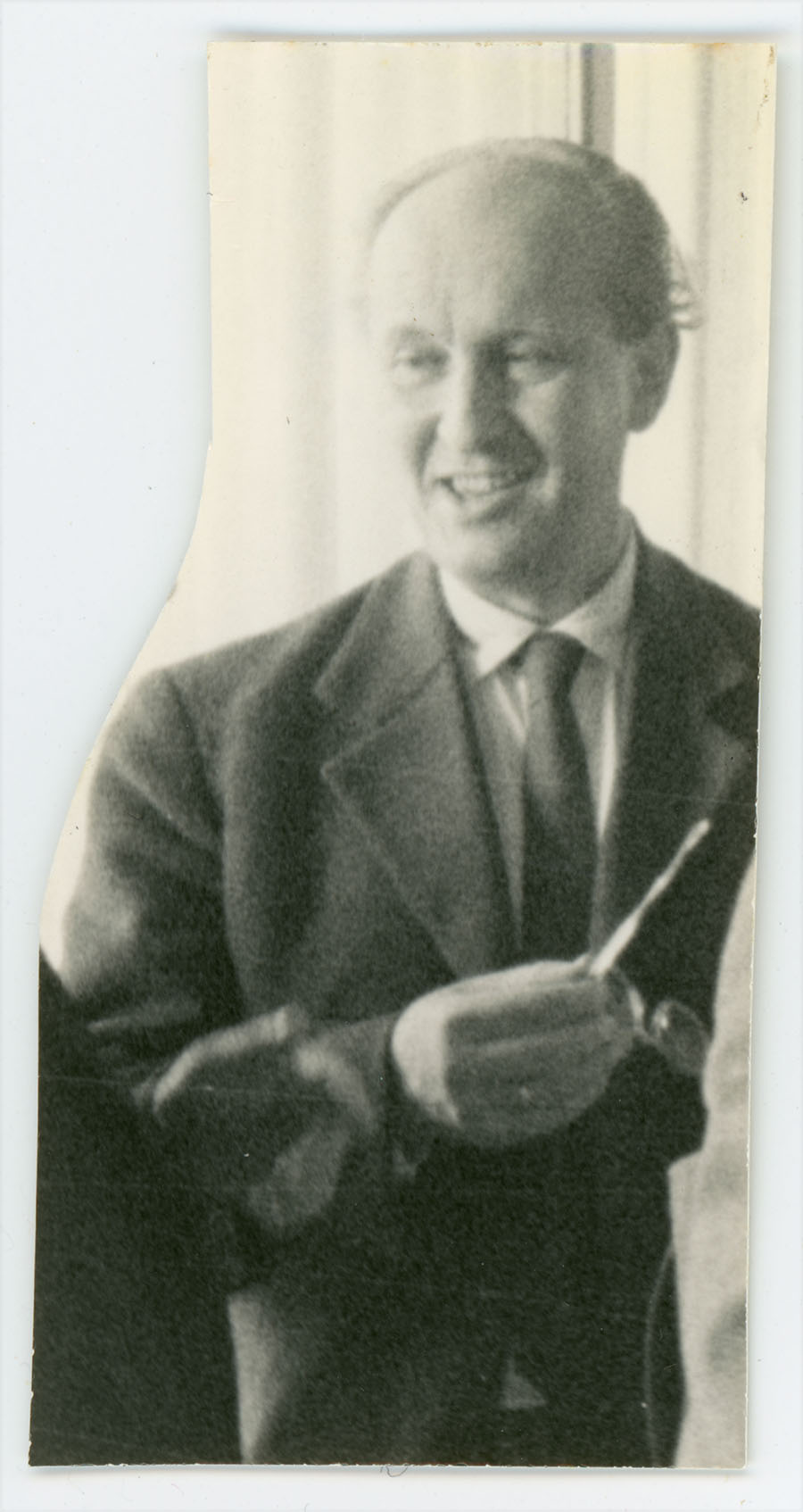
Halmos photographed Pál Turán (1910-1976) in 1963 in Berkeley, California. Turán earned his Ph.D. from the University of Budapest in 1934 with the dissertation “On the number of prime divisors of integers,” written under advisor Lipót Fejér. His first three papers included his first joint paper with Paul Erdős, who also earned his Ph.D. from the University of Budapest in 1934, and a paper featuring a new proof of a theorem of Hardy and Ramanujan. Both of these papers were published in 1934, and a string of important papers in various international journals followed. In 1938, Turán invented his famous power sum method in analytic number theory, which would also influence many other areas of mathematics. Turán spent most of 1940 to 1944 in forced labor camps, where he further developed his power sum method and invented extremal graph theory. In 1945-46 he joined the faculty at the University of Budapest, becoming Chair of Algebra and Number Theory in 1949. In 1948 he was elected to the Hungarian Academy of Sciences and from 1955 onward was Head of the Complex Function Theory Department in the Academy’s Mathematical Institute. (Source: MacTutor Archive)
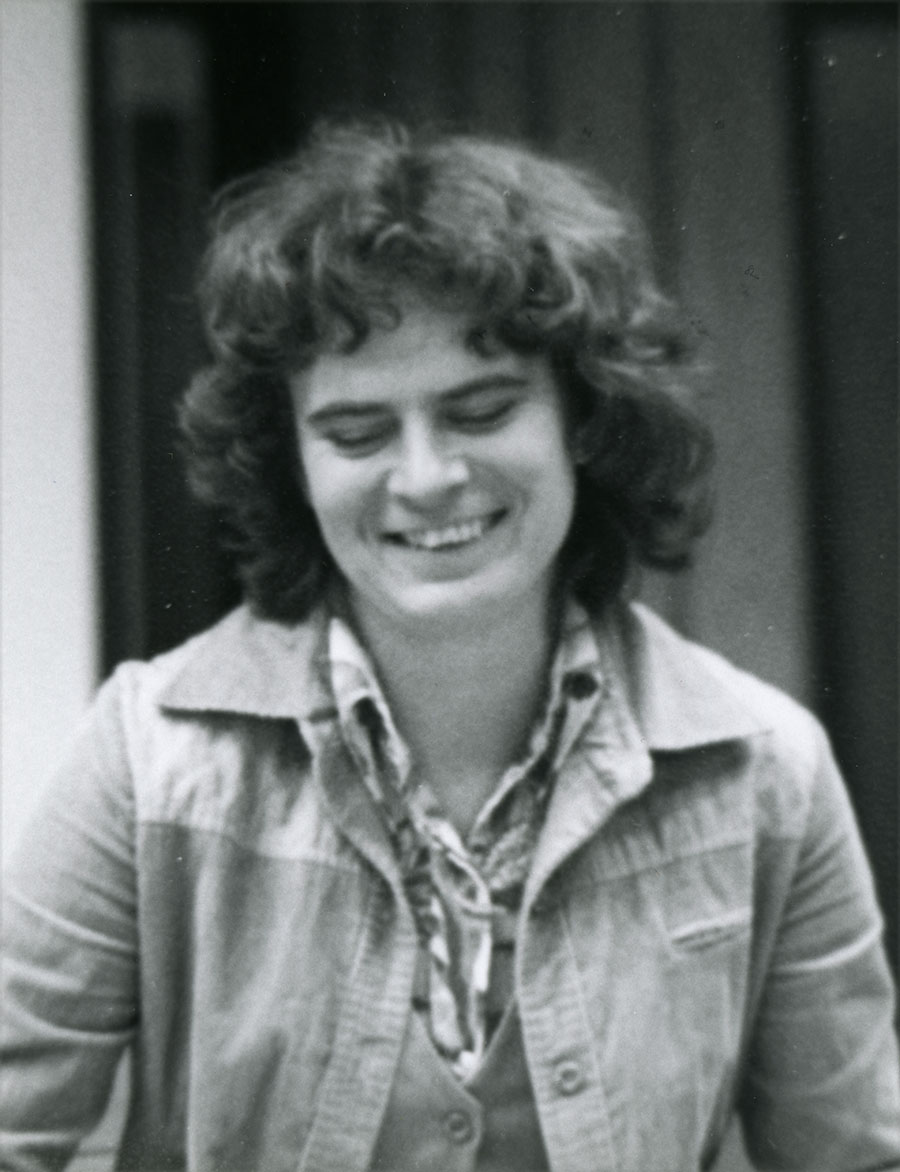
Karen Uhlenbeck was photographed by Halmos in 1978. At the time, Halmos was at Indiana University and Uhlenbeck at the University of Illinois at Chicago Circle (which became the University of Illinois at Chicago in 1982), and this photograph may well have been taken at the same UICC colloquium at which Halmos also photographed UICC faculty members Louise Hay (see page 21 of this collection) and William Howard (see page 25). Uhlenbeck earned her Ph.D. from Brandeis University in 1968 with the dissertation “The Calculus of Variations and Global Analysis,” written under advisor Richard Palais. After one year (1968-69) at MIT, two years at the University of California, Berkeley (1969-71), and five years at the University of Illinois at Urbana-Champaign (1971-76), she was a professor at UICC from 1976 to 1983. There, she did work on partial differential equations that provided analytic tools that would become immediately useful in the geometric work for which Simon Donaldson (pictured on page 12 of this collection, where you can read more about him) was awarded the Fields Medal in 1986, and presumably led to her own MacArthur Fellowship (“genius grant”) in 1983. In 1983, she moved to the University of Chicago and in 1988 she moved again, to the University of Texas at Austin, where she remains Sid W. Richardson Regents Chair in Mathematics and lists her interests as non-linear analysis, gauge theory, and integrable systems. (Sources: MacTutor Archive, Mathematics Genealogy Project, University of Texas Mathematics)
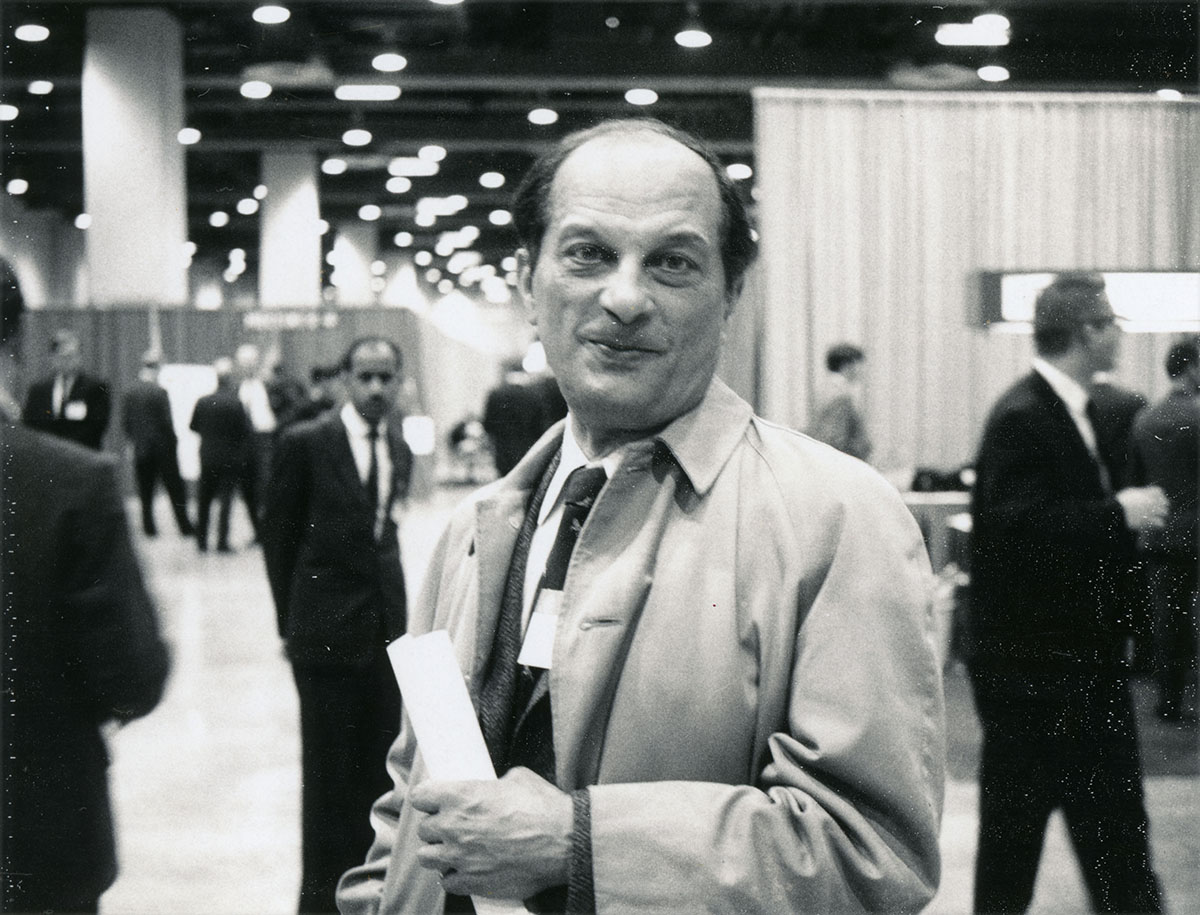
Halmos photographed Stanislaw Ulam (1909-1984) on January 23, 1970, at the Joint Mathematics Meetings in San Antonio, Texas. Although Ulam may be best known for figuring out how to initiate fusion in the hydrogen bomb, mathematicians probably prefer to remember him as the inventor of the “Monte-Carlo method” of statistical sampling. Ulam earned his Ph.D. in 1933 from the Polytechnic Institute in Lvov, Poland (now Ukraine) with a dissertation written under advisors Kazimierz Kuratowski (pictured on page 29 of this collection, where you can read more about him) and Wlodzimierz Stozek, but probably more closely advised by Stefan Banach since it generalized a result of Banach’s. In 1935, he traveled to the U.S. to work with John von Neumann (for a photo and more information, see page 52 of this collection) at the Institute for Advanced Study in Princeton, New Jersey, and soon accepted a position at Harvard University in Cambridge, Massachusetts. In 1940, he moved to the University of Wisconsin and, in 1943, he began working on the hydrogen bomb in Los Alamos, New Mexico. He remained at the Los Alamos National Laboratory until 1965, when he moved to the University of Colorado at Boulder. (Sources: MacTutor Archive, Mathematics Genealogy Project)
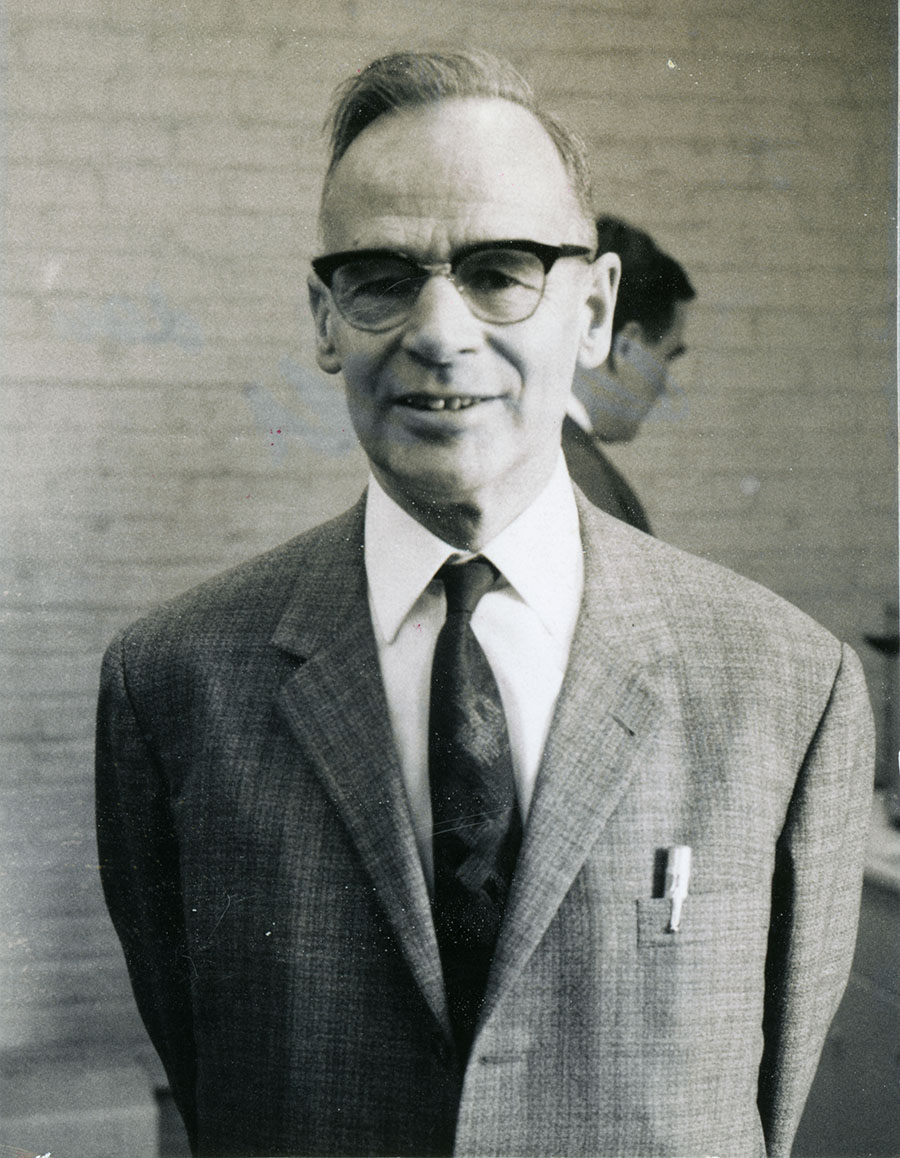
Bartel Leendert van der Waerden (1903-1996) was photographed by Halmos on April 2, 1968, in Ann Arbor, Michigan. Another photograph of van der Waerden from the same occasion appears on page 23 of this collection, where you can read more about him. Halmos was a faculty member at the University of Michigan from 1961 to 1968.
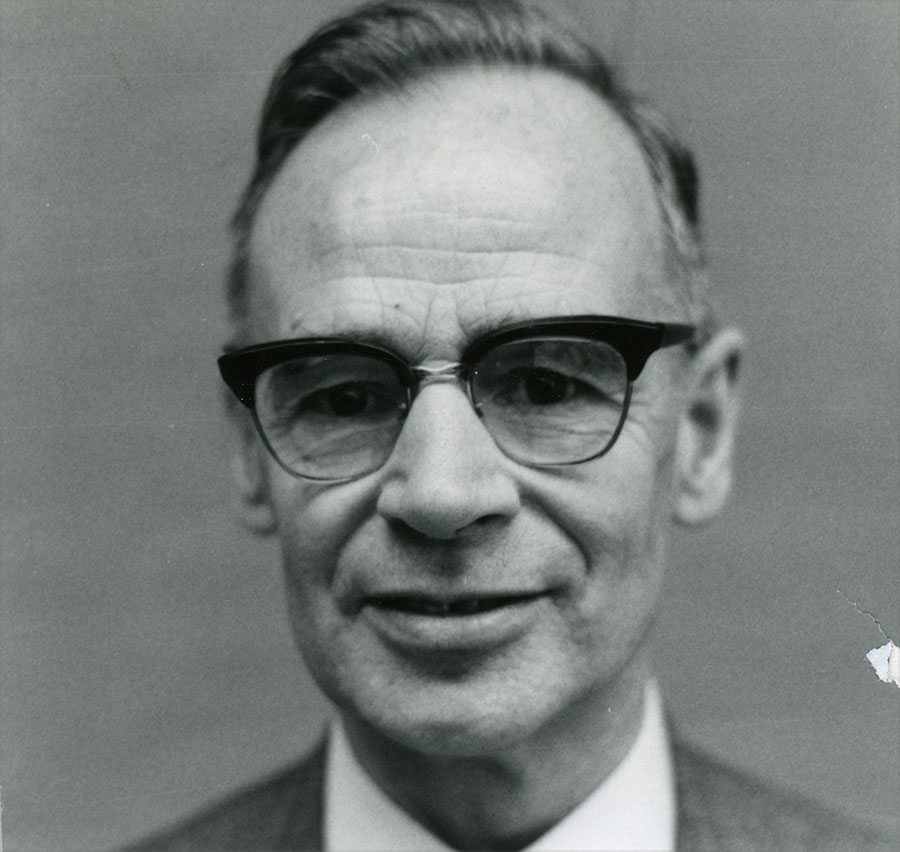
Bartel Leendert van der Waerden (1903-1996) was photographed again by Halmos on April 2, 1968, in Ann Arbor, Michigan. Other photographs of van der Waerden from the same occasion appear above and on page 23 of this collection, where you can read more about him.
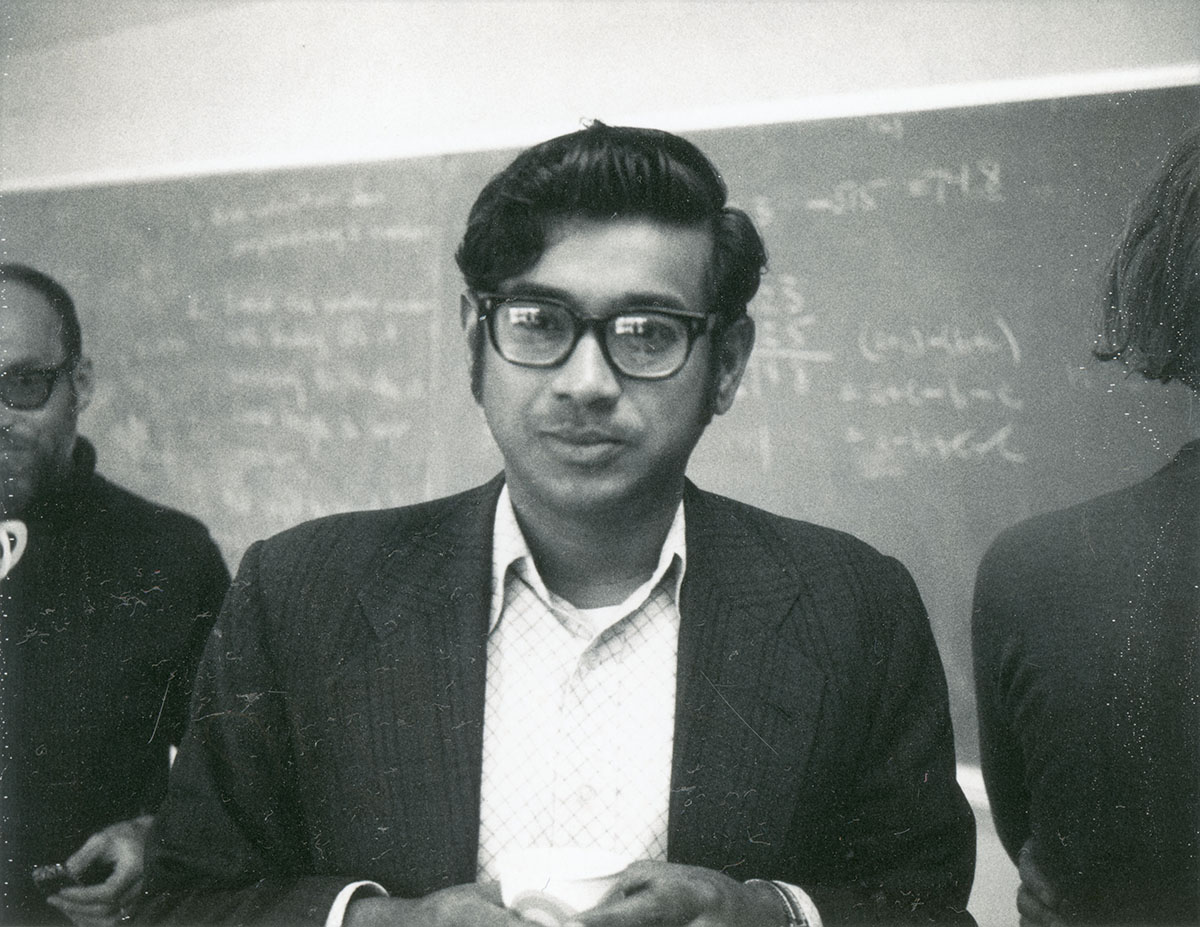
Halmos photographed the probabilist and 2007 Abel Prize winner Srinivasa (S.R.S.) Varadhan on February 24, 1977, in Santa Barbara, California. Halmos was on the faculty at the University of California, Santa Barbara, from 1975 to 1977. Raghu Varadhan earned his Ph.D. in 1963 from the Indian Statistical Institute in Kolkata (then Calcutta) with the dissertation “Convolution Properties of Distributions on Topological Groups.” One of his thesis examiners was Andrei Kolmogorov (pictured on page 28 of this collection, where you can read more about him), who reported, “This is not the work of a student, but of a mature master” (quoted in O’Connor’s and Robertson’s MacTutor biography). Varadhan immediately accepted a postdoc at the Courant Institute of Mathematical Sciences at New York University, where he remains Professor of Mathematics and Frank J. Gould Professor of Science, specializing in probability, stochastic processes, and partial differential equations. His best known work probably is his martingale characterization of diffusion processes and his theory of large deviations for Markov processes. (Sources: MacTutor Archive, Abel Prize, NYU Mathematics)
For an introduction to this article and to the Paul R. Halmos Photograph Collection, please see page 1. Watch for a new page featuring six new photographs each week during 2012.
Regarding sources for this page: Information for which a source is not given either appeared on the reverse side of the photograph or was obtained from various sources during 2011-12 by archivist Carol Mead of the Archives of American Mathematics, Dolph Briscoe Center for American History, University of Texas, Austin.
Who's That Mathematician? Paul R. Halmos Collection - Page 54
For more information about Paul R. Halmos (1916-2006) and about the Paul R. Halmos Photograph Collection, please see the introduction to this article on page 1. A new page featuring six photographs will be posted at the start of each week during 2012 and early 2013.

Halmos photographed Richard Varga and Leila Dragonette Bram on January 22, 1970, in San Antonio, Texas. Varga had joined the faculty at Kent State University as Professor of Mathematics in 1969; the Kent State shootings would occur in May of 1970. Halmos had joined the faculty at Indiana University in 1969 and Bram was Head of the Mathematics Program at the Office of Naval Research.
After earning his Ph.D. from Harvard University in 1954 with the dissertation “Properties of a special set of entire functions and their respective partial sums,” Richard Varga worked for six years for the Westinghouse Electric Corporation’s Bettis Atomic Power Laboratory in Pittsburgh, Pennsylvania, where his mathematical interests quickly shifted from complex analysis to numerical analysis. In 1960, he left Bettis to become Professor of Mathematics at his alma mater, Case Institute of Technology, in Cleveland, Ohio, which became part of Case Western Reserve University in 1967. Varga joined the faculty of Kent State University, also in Ohio, in 1969, becoming Director of the Institute for Numerical Mathematics in 1980, Research Director of this Institute in 1988, and Emeritus University Professor of Mathematical Sciences in 2006. He has advised 25 Ph.D. students during his career. In their MacTutor Archive biography of Varga, O’Connor and Robertson noted the high praise accorded each of Varga’s six books:
- Matrix iterative analysis (1962, 2000)
- Functional analysis and approximation theory in numerical analysis (1971)
- Topics in polynomial and rational interpolation and approximation (1982)
- Zeros of sections of power series (1983)
- Scientific computation on mathematical problems and conjectures (1990)
- Gerschgorin and his circles (2004)
Reviewers lauded these books not only for Varga’s new developments in numerical analysis and for his more rigorous treatment of numerical analysis topics, but also for the connections he made between numerical analysis and pure mathematics, with each helping to solve problems in the other. (Source: MacTutor Archive, Kent State University Mathematics)
Leila Dragonette (d. 1979) earned her Ph.D. from the University of Pennsylvania in 1951 with the dissertation, “Asymptotic formula for the mock theta series of Ramanujan,” written under advisor Hans Rademacher. From 1951 to her death in 1979 at age 52, she was Mathematician, then Head of the Mathematics Bureau, and then Head of the Mathematics Program at the Office of Naval Research in Washington, D.C. (Sources: Mathematics Genealogy Project; “News and Notices,” American Mathematical Monthly 86:10 (Dec. 1979), p. 880)
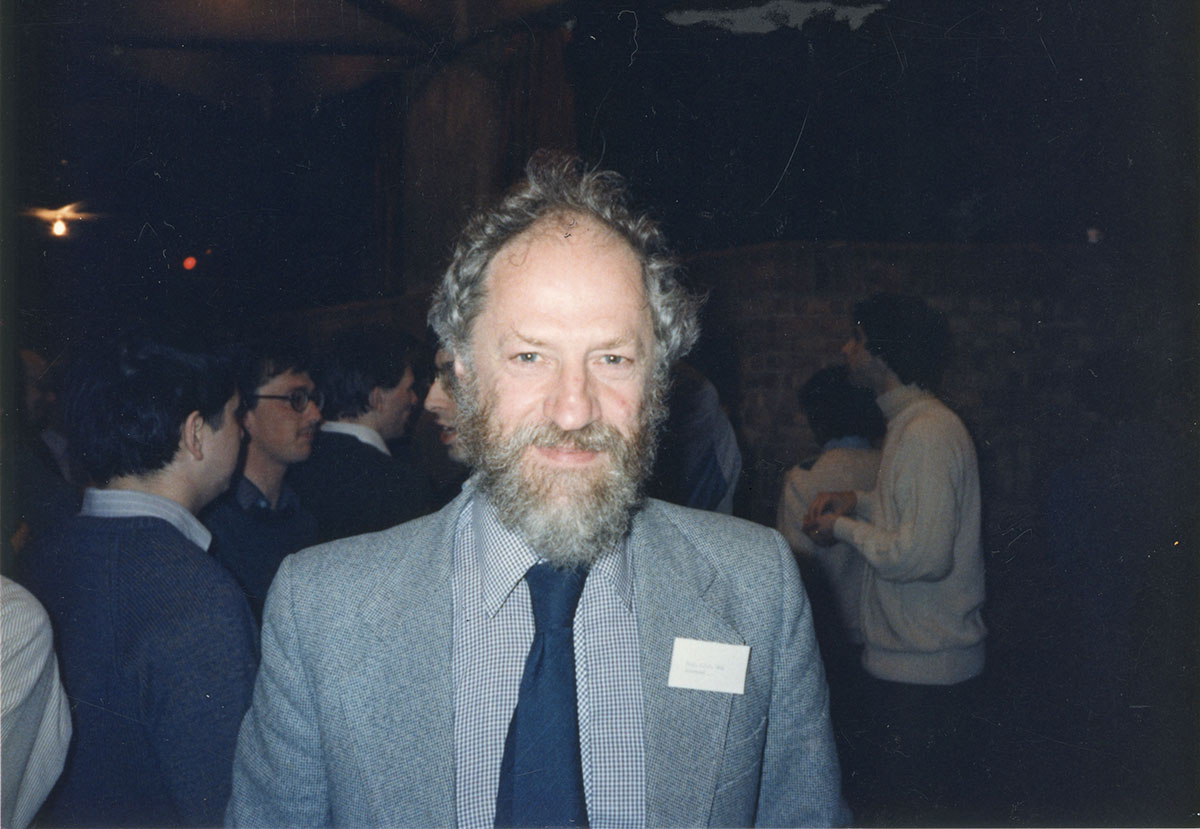
C. Terence Wall was photographed by Halmos in April of 1986 at the British Mathematical Colloquium in Hull, England. Terry Wall earned his Ph.D. from Cambridge University in 1960 with the dissertation “Algebraic Aspects of Cobordism,” written under advisors Chris Zeeman and Frank Adams. (A photograph of Adams appears on page 1 of this collection, where you can read more about him.) Wall was based at Cambridge until 1964 and then at Oxford during 1964-65. In 1965, he accepted the Chair of Pure Mathematics at the University of Liverpool, England, where he has spent the rest of his career, becoming Emeritus Professor and Senior Fellow in 1999. As described by O’Connor and Robertson of the MacTutor Archive, Wall’s research is primarily in
… geometric topology and related algebra. In particular he has made substantial contributions to the study of singularities, especially isolated singularities, of differentiable maps and algebraic varieties. He has written a number of highly influential books including Surgery on compact manifolds (1970), … , The geometry of topological stability [with A. A. du Plessis, 1995], … [and the graduate text] Singular points of plane curves in 2004.
He also wrote A geometric introduction to topology (1972), intended as an introduction to algebraic topology requiring no prior knowledge of general topology. (Source: MacTutor Archive)
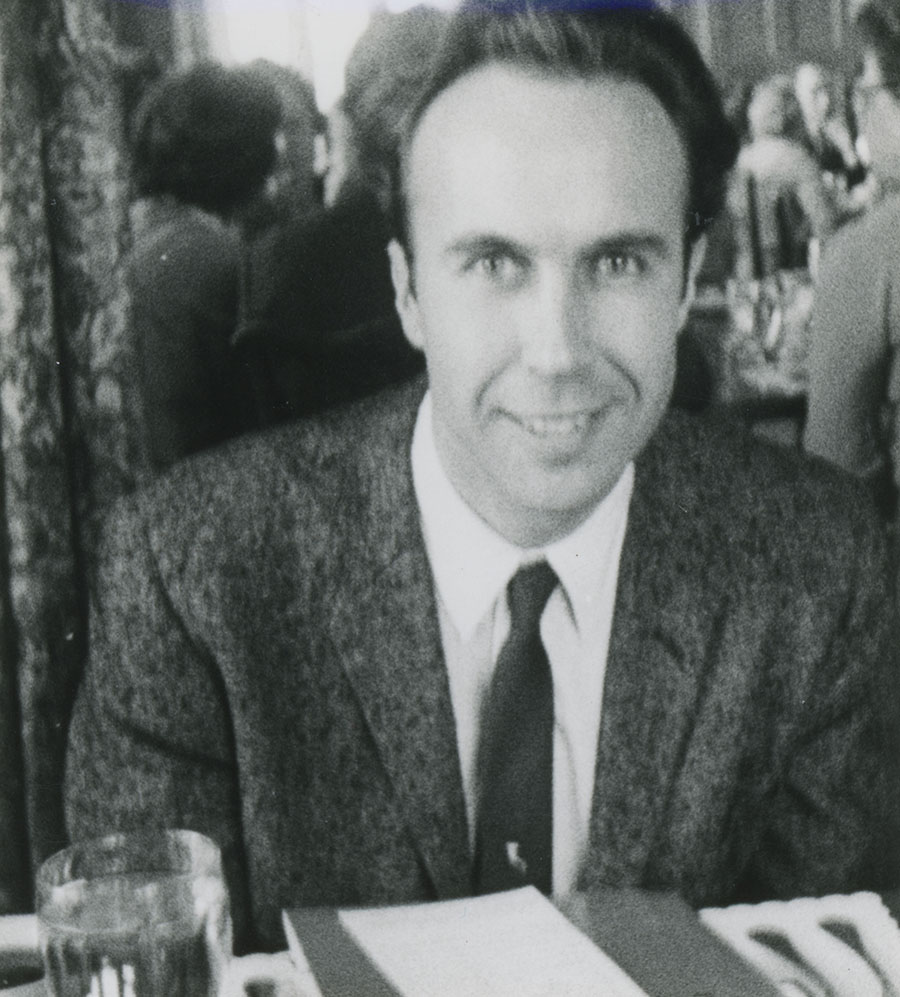
Halmos photographed topologist Andrew H. Wallace (1926-2008) in February of 1962 in Bloomington, Indiana. Born and raised in Edinburgh, Scotland, Andrew Wallace earned his Ph.D. from St. Andrews University in 1949. At the time this photograph was taken, he was a mathematics professor at Indiana University (1959-1965); he joined the mathematics faculty at the University of Pennsylvania in 1965, becoming Professor Emeritus of Mathematics in 1986. Halmos would join the faculty at Indiana University in 1969; at the time of this photo, he was at the University of Michigan. (Sources: Mathematics Genealogy Project, University of Pennsylvania Mathematics)
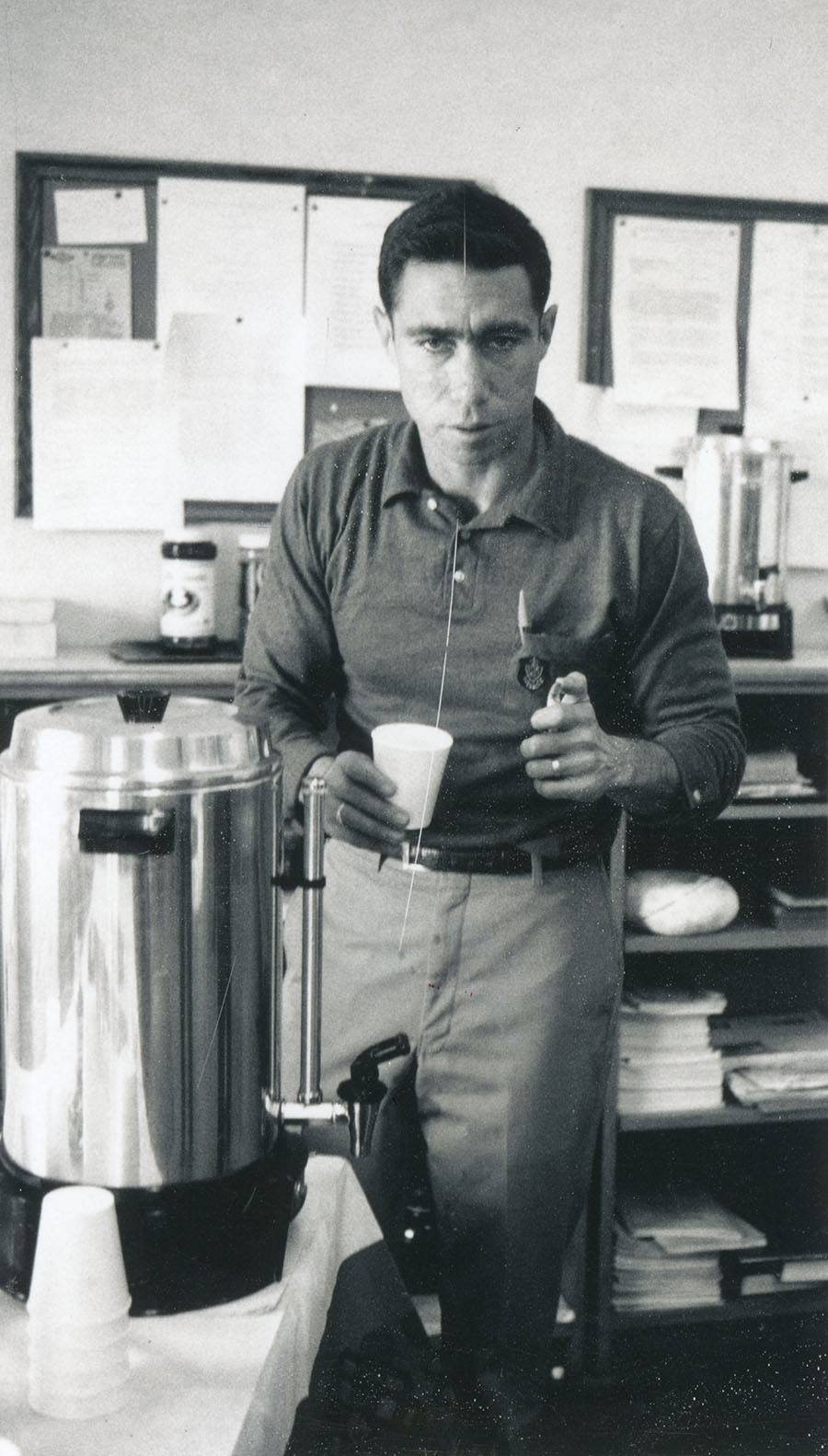
Lawrence J. Wallen was photographed by Halmos on September 11, 1967, at the University of Michigan in Ann Arbor, where the two were colleagues. Halmos and Wallen spent the 1968-69 academic year at the University of Hawaii in Honolulu, where the two of them comprised the “Pacific Basin Two Man Seminar (or T.M.S.)” during the 1968 fall semester, Wallen wrote in “Walking and Talking with Halmos” (p. 137). During the 1969 spring semester, the Two Man Seminar expanded to three mathematicians, when Allen Shields (whose photograph appears on page 48 of this collection, where you can read more about him), another colleague from the University of Michigan, joined them.
Larry Wallen earned his Ph.D. from M.I.T. in 1967 under advisor Isadore Singer (whose photograph appears on page 48 of this collection, where you can read more about him) and Kenneth Hoffman. He spent the 1967-68 academic year at the University of Michigan, where he worked with Halmos, and the remainder of his career at the University of Hawaii, where he is now Professor Emeritus. Shields returned to Michigan after working with Halmos and Wallen in Hawaii in 1969 and spent the rest of his career there. Halmos himself, after serving as chair of the mathematics department at Hawaii during 1968-69, accepted a position at the University of Indiana in Bloomington, where he would remain until 1985. (Sources: Mathematics Genealogy Project; UM Faculty History Project Memorial: Shields; Wallen, Lawrence J., "Walking and Talking with Paul Halmos," in Paul Halmos: Celebrating 40 Years of Mathematics, edited by John H. Ewing and F. W. Gehring, Springer-Verlag, New York, 1991, pp. 136-138, accessed via Google Books)
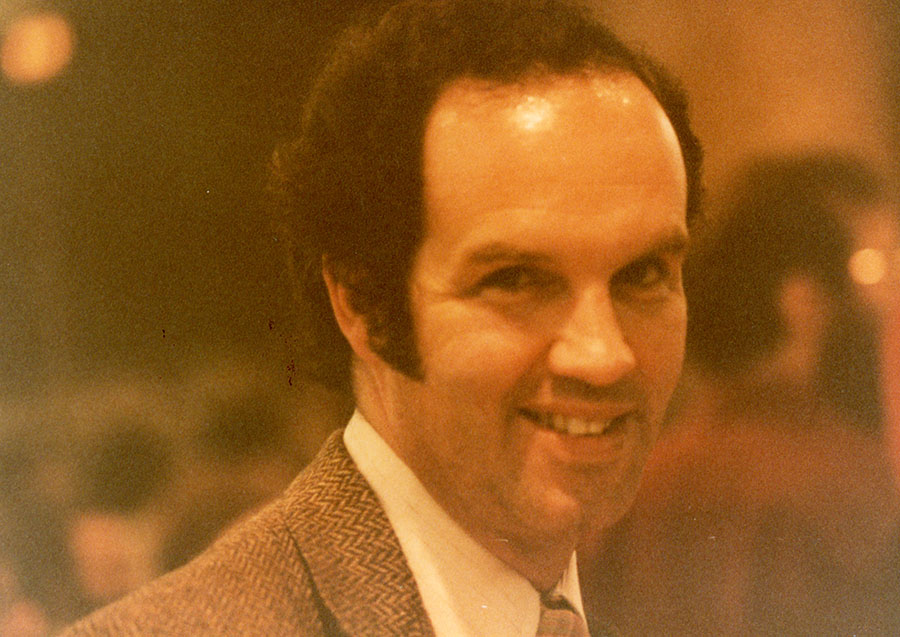
Halmos photographed Raymond O. Wells in April of 1980 in Bloomington, Indiana. Wells earned his Ph.D. from New York University in 1965 with the dissertation “On the local holomorphic hull of a real submanifold in several complex variables,” written under advisor Lipman Bers (pictured on page 5 of this collection, where you can read more about him, and also on page 32). Wells joined the mathematics faculty at Rice University in Houston, Texas, in 1965 and spent most of his career there, becoming Professor Emeritus of Mathematics in 2000. During 1998-2001, Wells helped found International University Bremen, Germany, where he was both Vice President and Professor of Mathematics from 2001 to 2005 and Distinguished Professor of Mathematics from 2005 onward. International University Bremen became Jacobs University Bremen in 2007. He now spends most of the year in Boulder, Colorado, where he is Adjunct Professor of Mathematics at the University of Colorado, in addition to his positions at Rice and Jacobs. Besides his many publications in complex analysis, Wells may be best known for his and his Rice University colleague Howard L. Resnikoff’s book, Mathematics in Civilization (1973; 1985 edition available from Dover Publications). (Sources: Mathematics Genealogy Project, Rice University Mathematics, Jacobs University Mathematics)

Halmos photographed Fritz Joachim Weyl (1915-1977) in November of 1962. Weyl was born in Zürich, Switzerland, where his father, Hermann Weyl, held the chair of mathematics at Eidgenössische Technische Hochschule (ETH) from 1913 to 1930. Fritz Weyl earned his Ph.D. from Princeton University in 1939 with the dissertation “Analytic Curves” written under advisor Salomon Bochner. He wrote on analytic curves and meromorphic functions, often with his father, from 1938 to 1943, but eventually gravitated toward applied mathematics. He was on the mathematics faculties of the University of Illinois, University of Maryland, and Indiana University; served as a consultant to government agencies; and, at his death, was Dean of Science and Mathematics at Hunter College in New York City. The SIAM Review’s 1978 memorial of Fritz Wyel summed up his mathematical outlook in words reminiscent of his father’s famous quotation, “My work always tried to unite the truth with the beautiful, but when I had to choose one or the other, I usually chose the beautiful”:
In memoriam: Fritz Joachim Weyl,
in warm recognition of his enduring vision for both the beauties and the practicalities of applied mathematics,
in everlasting gratitude for his untiring service to the Society for Industrial and Applied Mathematics and to the newly-formed SIAM Institute for Mathematics and Society,
and above all in deep appreciation for his personal enthusiasm, sympathy, kindness, understanding, and friendship,
the members and officers of SIAM and SIMS offer their heartfelt tribute.
(Sources: MacTutor Archive: Hermann Weyl; Mathematics Genealogy Project; MathSciNet; "F. Joachim Weyl," American Men and Women of Science (13th ed., vol. 6), 1976, p. 4806; Society of Industrial and Applied Mathematics: “In Memoriam–Fritz Joachim Weyl,” SIAM Review 20:1 (1978), p. vi)
For an introduction to this article and to the Paul R. Halmos Photograph Collection, please see page 1. Watch for a new page featuring six new photographs each week during 2012.
Regarding sources for this page: Information for which a source is not given either appeared on the reverse side of the photograph or was obtained from various sources during 2011-12 by archivist Carol Mead of the Archives of American Mathematics, Dolph Briscoe Center for American History, University of Texas, Austin.
Who's That Mathematician? Paul R. Halmos Collection - Page 55
For more information about Paul R. Halmos (1916-2006) and about the Paul R. Halmos Photograph Collection, please see the introduction to this article on page 1. A new page featuring six photographs will be posted at the start of each week during 2012 and early 2013.
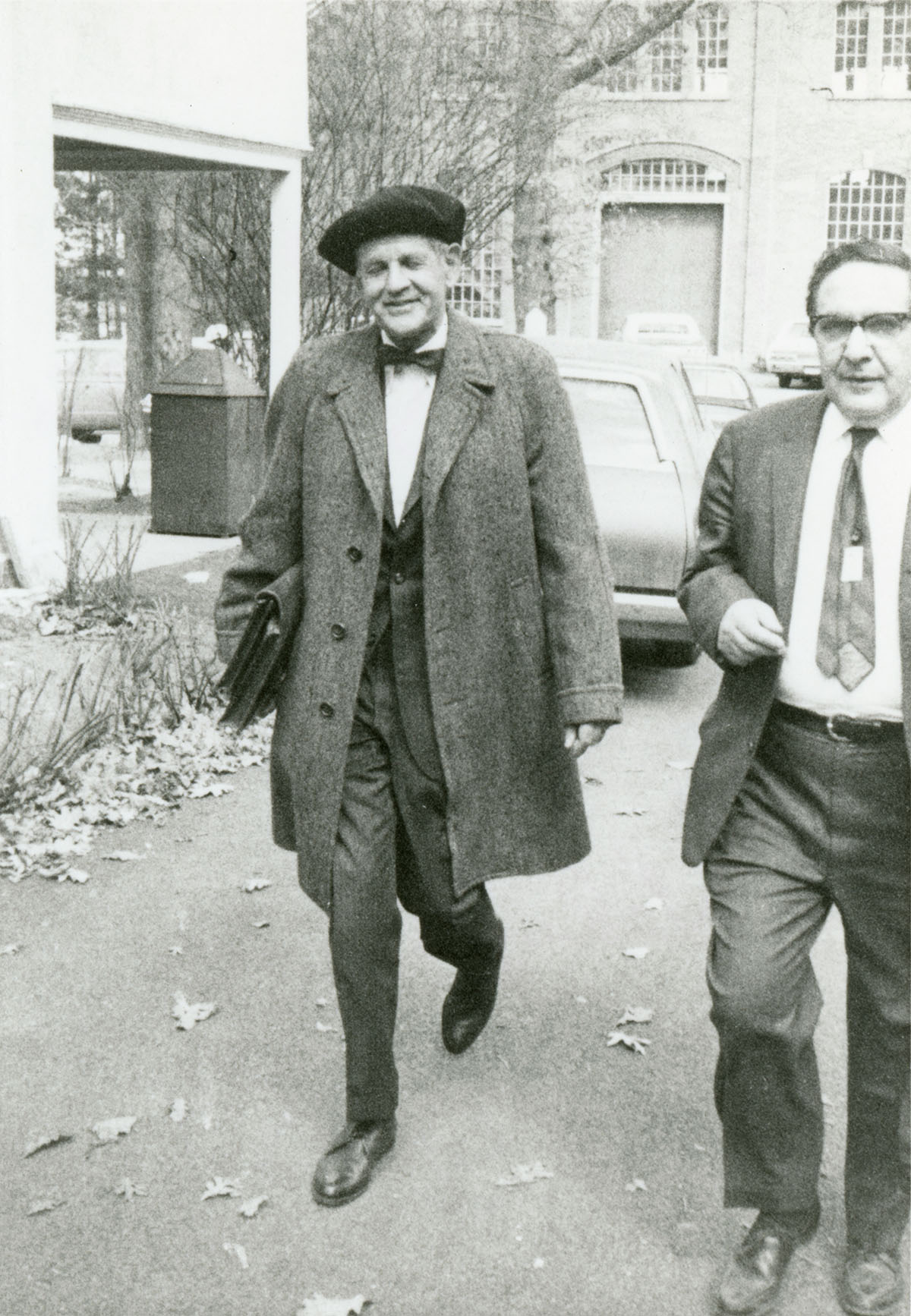
Halmos photographed Fritz Joachim Weyl (1915-1977), left, and Ronald Rivlin (1915-2005) in April of 1970 at Lehigh University in Bethlehem, Pennsylvania. Weyl appears also in a photograph on page 54 of this collection, where you can read more about him. Another photograph of Ronald Rivlin appears on page 43 of this collection, where you can read more about him.

Physicists John Wheeler (1911-2008), left, and Arthur Komar (1931-2011) were photographed by Halmos in May of 1979 at a conference on Gravity and Quantum Theory in New Orleans, Louisiana.
John Wheeler was one of the leading theoretical physicists of the 20th century and coined many now familiar terms in physics, three of which he included in the title of his autobiography Geons, Black Holes and Quantum Foam: A Life in Physics (1998). He earned his Ph.D. at Johns Hopkins University in 1933 with the dissertation “Theory of the dispersion and absorption of helium” and, in 1938, joined the faculty at Princeton University. At Princeton, he was doctoral advisor to Richard Feynman (1918-1988), who earned his Ph.D. in 1942, and to several other well-known physicists. According to Princeton University’s obituary of Wheeler (2008):
[H]e was known for his drive to address big, overarching questions in physics, subjects which he liked to say merged with philosophical questions about the origin of matter, information and the universe. He was a young contemporary of Albert Einstein and Niels Bohr, was a driving force in the development of both the atomic and hydrogen bombs and, in later years, became the father of modern general relativity.
In fact, he and Bohr “co-wrote the original paper on the mechanism of nuclear fission that helped lead to the development of the atomic bomb.” Wheeler also was praised as an outstanding teacher and mentor; his Princeton Ph.D. student Kip Thorne reported that “he was the most influential mentor of young scientists whom I have known” (quoted in Princeton University obituary). After he retired from Princeton in 1976, Wheeler directed the Center for Theoretical Physics at the University of Texas at Austin until 1986 and remained active in physics at least until 2006, based primarily at Princeton. (Sources: Princeton University obituary, Mathematics Genealogy Project)
Arthur Komar was both an undergraduate and doctoral student of John Wheeler at Princeton University, earning his Ph.D. in 1956 with the dissertation, “Some Consequences of Mach’s Principle for General Relativity.” After a year as a fellow at the Niels Bohr Institute in Copenhagen, Denmark, he joined the faculty at Syracuse University in 1957 and then moved to Yeshiva University in New York City in 1963, retiring in 1997. He also taught at New York University from 1984 to 1997. His main research interest throughout his career was gravitational physics and, in particular, developing a quantum theory for gravity. He also was known for his work on conserved quantities, time and space, and thermodynamics, and for his namesake covariant Komar energy-momentum tensor. (Sources: Physics Today obituary, Princeton Alumni obituary)

Halmos photographed W. Forrest “Woody” Stinespring (d. 2012), left, and J. H. C. (Henry) Whitehead (1904-1960), in 1960.
W. Forrest Stinespring earned his Ph.D. in 1957 from the University of Chicago with the dissertation “Integration theory for gages and duality theorems,” written under advisor Irving Segal. (For a photograph of Segal, see page 48 of this collection, where you can read more about him.) After visiting the Institute for Advanced Study in Princeton during 1957-1959 and teaching at the University of Illinois at Urbana-Champaign, Massachusetts Institute of Technology, and University of Chicago, he joined the faculty at the University of Illinois at Chicago in 1966, becoming Professor Emeritus in 1999. An operator theorist, Stinespring was best known for his Dilation Theorem or Factorization Theorem. In both 1947 and 1949, he was an individual Putnam Fellow and a member of the winning Harvard team. (Sources: Mathematics Genealogy Project, University of Illinois at Chicago obituary, IAS, MAA Putnam Competition)
Born in India and raised in England, Henry Whitehead earned his Ph.D. in 1932 from Princeton University with the dissertation “The representation of projective spaces,” written under advisor Oswald Veblen. In the same year, Whitehead and Veblen published The Foundations of Differential Geometry, the book containing "the first proper definition of a differential manifold" (O'Connor and Robertson, MacTutor Archive). Whitehead continued to work on differential geometry and on topology, especially homotopy equivalence, throughout his career at Oxford University, where he established a school of topology and was appointed Waynflete Chair of Pure Mathematics in 1947. He was finishing up a 1959-1960 visit to the Institute for Advanced Study in Princeton, when he died of a heart attack in May of 1960. (Sources: MacTutor Archive, IAS)
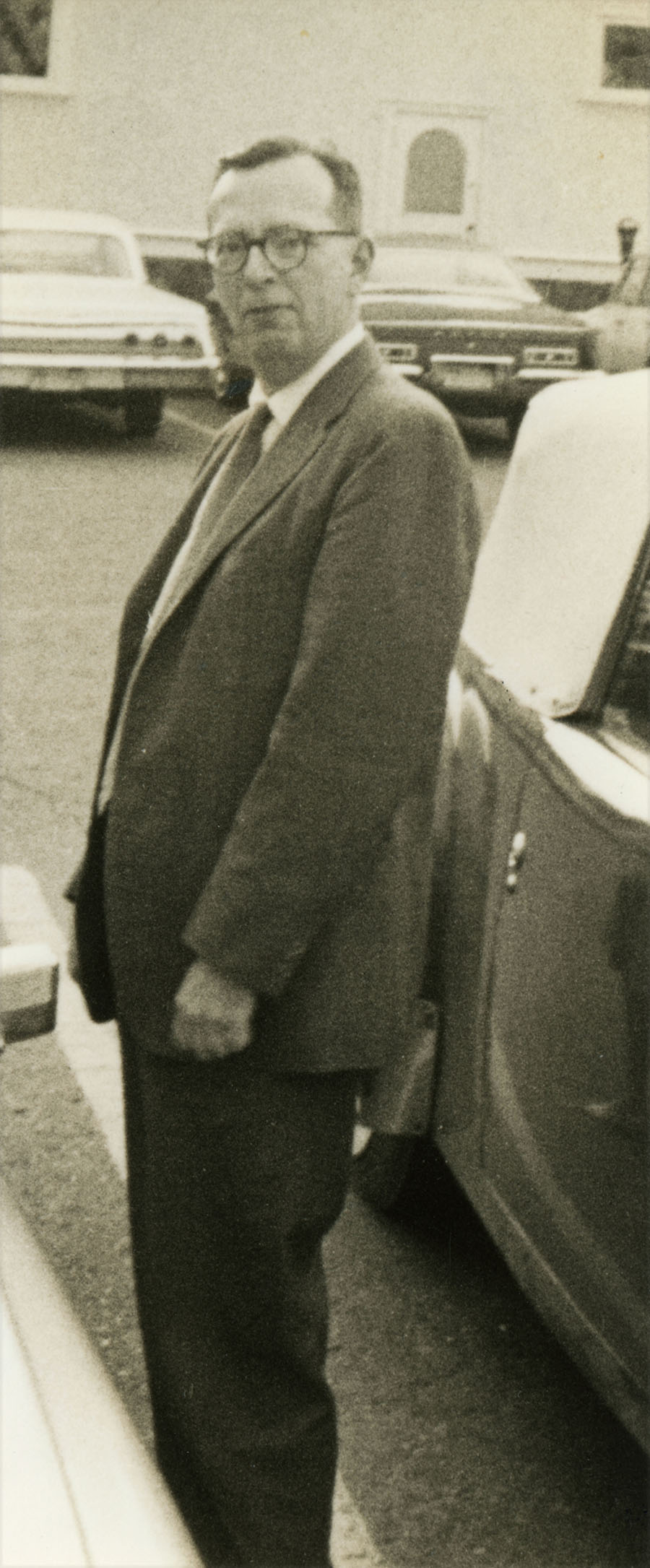
George W. Whitehead, Jr. (1918-2004), was photographed by Halmos in August of 1963 in Ann Arbor, Michigan. George Whitehead earned his Ph.D. in 1941 from the University of Chicago with the dissertation “Homotopy properties of the real orthogonal groups,” written under advisor Norman Steenrod. (For a photograph of and information about Steenrod, see page 50 of this collection.) He remained a homotopy theorist throughout his career and helped create modern algebraic topology, especially with his paper, “Generalized Homology Theories” (1962), which “established the language and basic structure underlying a great part of contemporary algebraic topology” (MIT obituary). After earning his Ph.D. in 1941, Whitehead taught at Purdue, Princeton, and Brown universities from 1941 to 1949. He joined the faculty of the Massachusetts Institute of Technology (MIT) in 1949, becoming Professor Emeritus in 1985. (Sources: Mathematics Genealogy Project, MIT obituary)
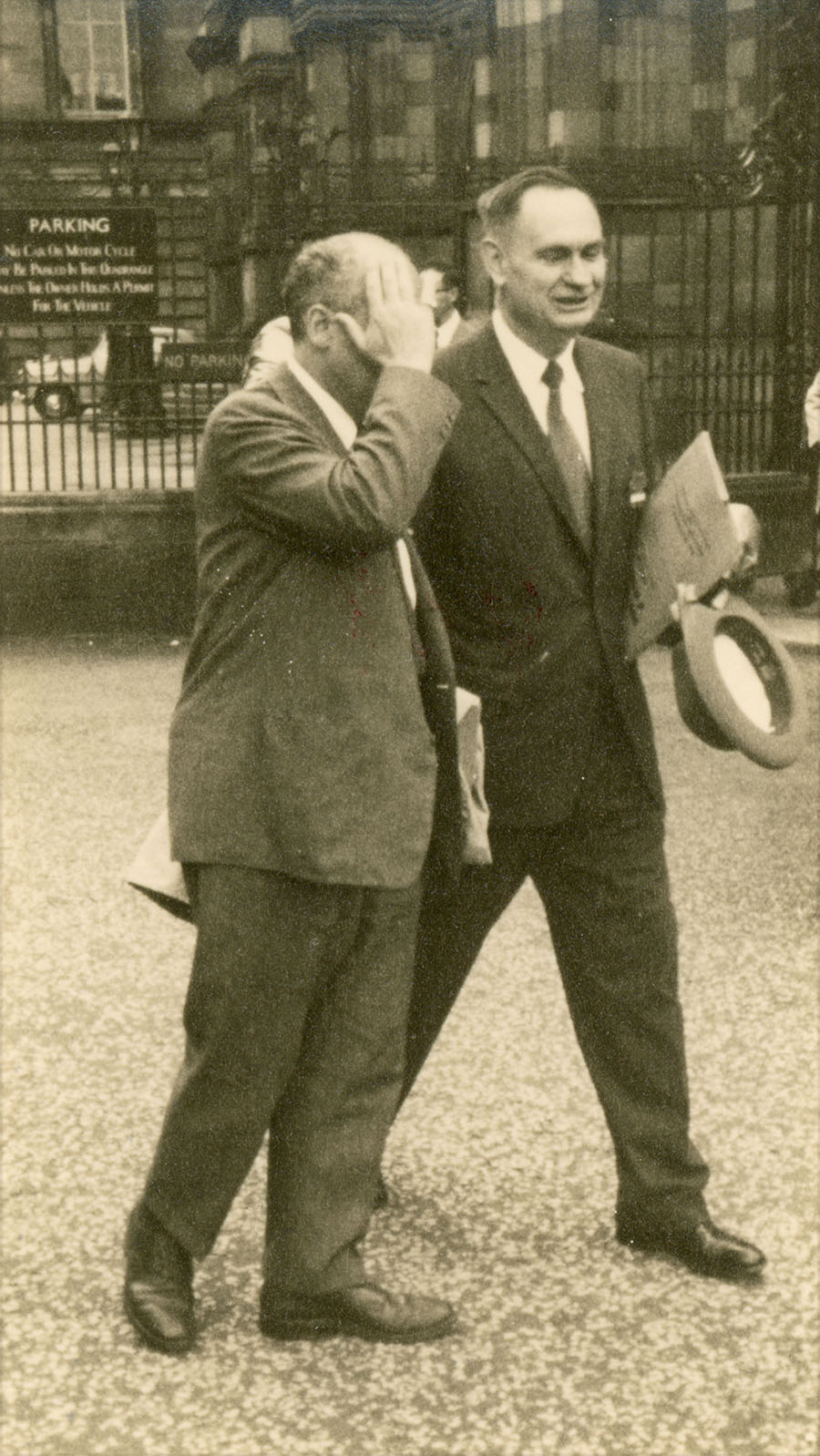
Halmos photographed Samuel Eilenberg (1913-1998), left, and Gordon T. Whyburn (1904-1969) in 1958 at the International Congress of Mathematicians in Edinburgh, Scotland. Eilenberg is pictured on page 13 of this collection, where you can read more about him.
Whyburn earned his Ph.D. in general topology in 1927 from the University of Texas at Austin with the dissertation, “Concerning continua in the plane,” written under R. L. Moore (pictured on page 35 of this collection, where you can read more about him). He taught at UT Austin during 1927-29, spent 1929-30 in Vienna (studying with Hans Hahn) and Warsaw (meeting Kazimierz Kuratowski and Waclaw Sierpinski) on a Guggenheim Fellowship, and taught at Johns Hopkins University in Baltimore, Maryland, during 1930-33. He moved to the University of Virginia in Charlottesville, Virginia, in 1934 to become chair of the mathematics department there and remained for the rest of his career, retiring in 1966. Whyburn advised at least 31 Ph.D. students during his career. He was president of the American Mathematical Society during 1953-54. (Sources: MacTutor Archive, Mathematics Genealogy Project, AMS Presidents)

Halmos photographed Harold Widom on Oct. 28, 1969, at Indiana University in Bloomington. Widom earned his Ph.D. in 1955 from the University of Chicago under advisor Irving Kaplansky (pictured on page 26 of this collection). His early research was on integral equations and operator theory, but he is best known today for his research on random matrix theory. He and his collaborator Craig Tracy of the University of California, Davis, won both the 2002 George Pólya Prize and the 2007 Norbert Wiener Prize for their work on random matrices and, more specifically, for their discovery of the Tracy-Widom distribution, a new class of distribution functions useful to physicists. Widom taught at Cornell University in Ithaca, New York, before moving to the University of California, Santa Cruz, in 1968, becoming Professor Emeritus in 1994. (Source: Mathematics Genealogy Project, UC Santa Cruz Mathematics)
For an introduction to this article and to the Paul R. Halmos Photograph Collection, please see page 1. Watch for a new page featuring six new photographs each week during 2012 and early 2013.
Regarding sources for this page: Information for which a source is not given either appeared on the reverse side of the photograph or was obtained from various sources during 2011-12 by archivist Carol Mead of the Archives of American Mathematics, Dolph Briscoe Center for American History, University of Texas, Austin.
Who's That Mathematician? Paul R. Halmos Collection - Page 56
For more information about Paul R. Halmos (1916-2006) and about the Paul R. Halmos Photograph Collection, please see the introduction to this article on page 1. A new page featuring six photographs will be posted at the start of each week during 2012 and early 2013.

Halmos photographed Harold Widom in 1985. At the time, Widom was a professor at the University of California, Santa Cruz, where he is now emeritus. In 1985, Halmos moved from Indiana University to the University of Santa Clara, California. Another photograph of Widom appears on page 55 of this collection, where you can read more about him.
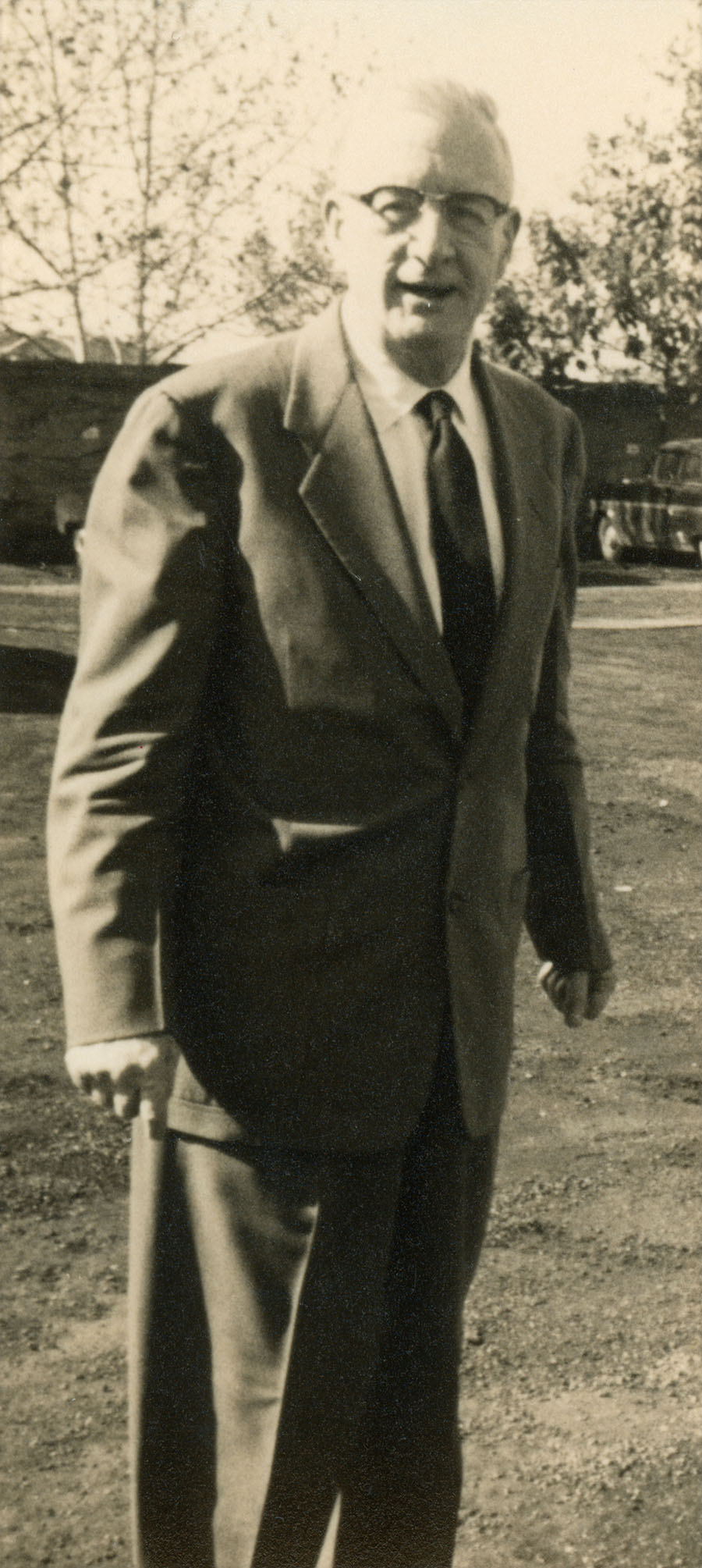
Raymond L. Wilder (1896-1982) was photographed by Halmos in 1958. Wilder was on the faculty of the University of Michigan in Ann Arbor from 1926 to 1967, when he became Professor Emeritus. Another photograph of Wilder appears on page 43 of this collection, where you can read more about him.

Halmos photographed Raymond L. Wilder again on August 1, 1960, in Lansing, Michigan. As noted above, Wilder was a professor at the University of Michigan in Ann Arbor at this time. Halmos would leave the University of Chicago to join the faculty at the University of Michigan one year later, in 1961.
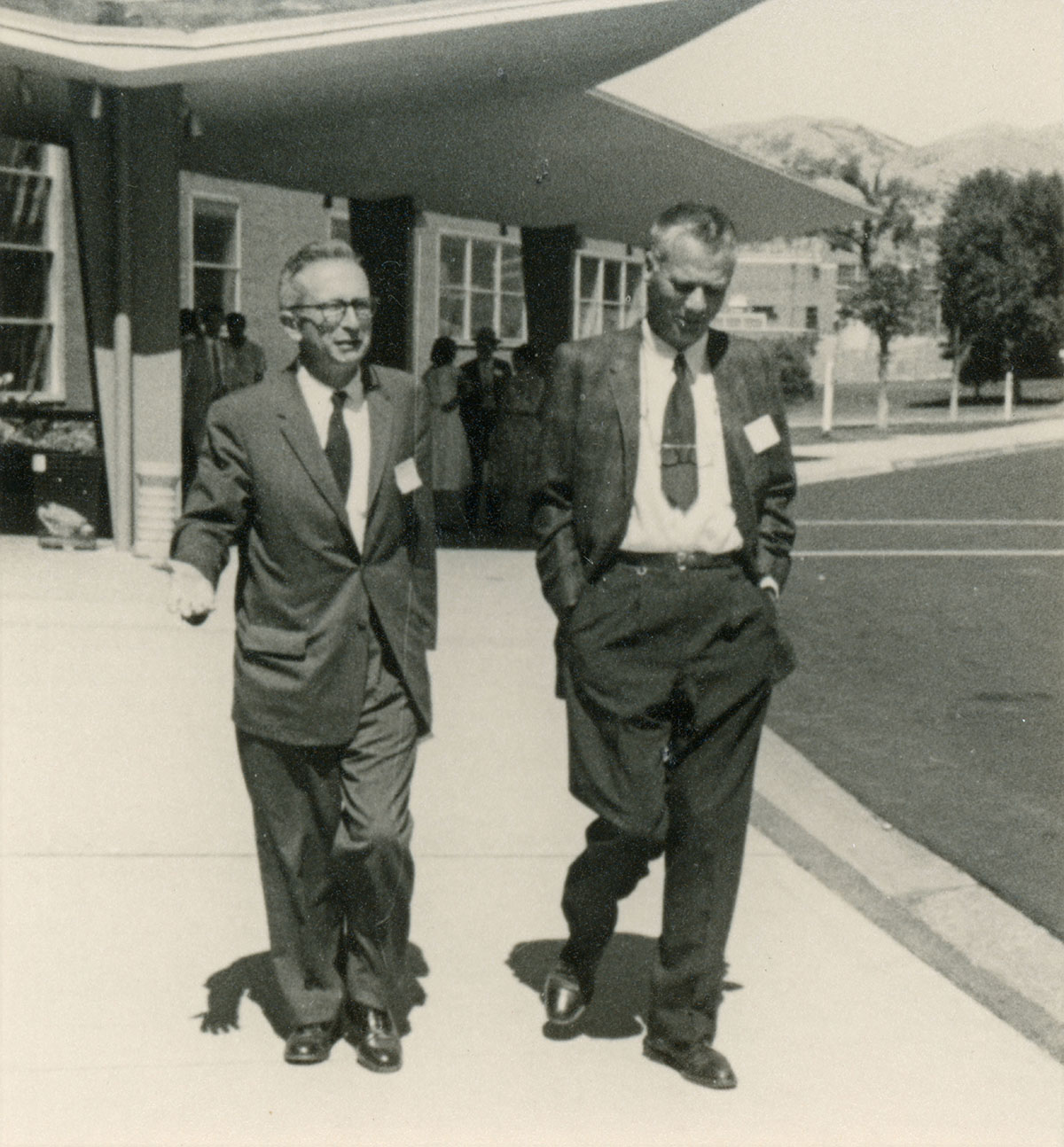
Jacob Wolfowitz (1910-1981), left, and Joseph Doob (1910-2004) were photographed by Halmos in 1959. Joseph Doob was Paul Halmos’ Ph.D. advisor at the University of Illinois. Two photos of him appear on page 12 of this collection, where you can read more about him; additional photos of Doob can be found on page 1, page 2, and page 14.
Jacob Wolfowitz was born in Warsaw in what was then the Russian Empire and emigrated to the U.S. in 1920 when he was 10 years old. He earned his Ph.D. from New York University in 1942 with the dissertation, “Additive Partition Functions and a Class of Statistical Hypotheses.” That year he joined the Statistical Research Group at Columbia University in New York City, where he collaborated with geometer, statistician, and inventor of sequential analysis Abraham Wald (1902-1950) to develop a theory of sequential analysis, among other topics. Wolfowitz remained at Columbia until 1951, the year after Wald, who had been at Columbia since 1938, died in a plane crash. Wolfowitz was on the faculty at Cornell University in Ithaca, New York, from 1951 to 1970, at the University of Illinois at Urbana-Champaign from 1970 to 1978, and at the University of South Florida in Tampa from 1978 onward. (Sources: MacTutor Archive, Mathematics Genealogy Project)
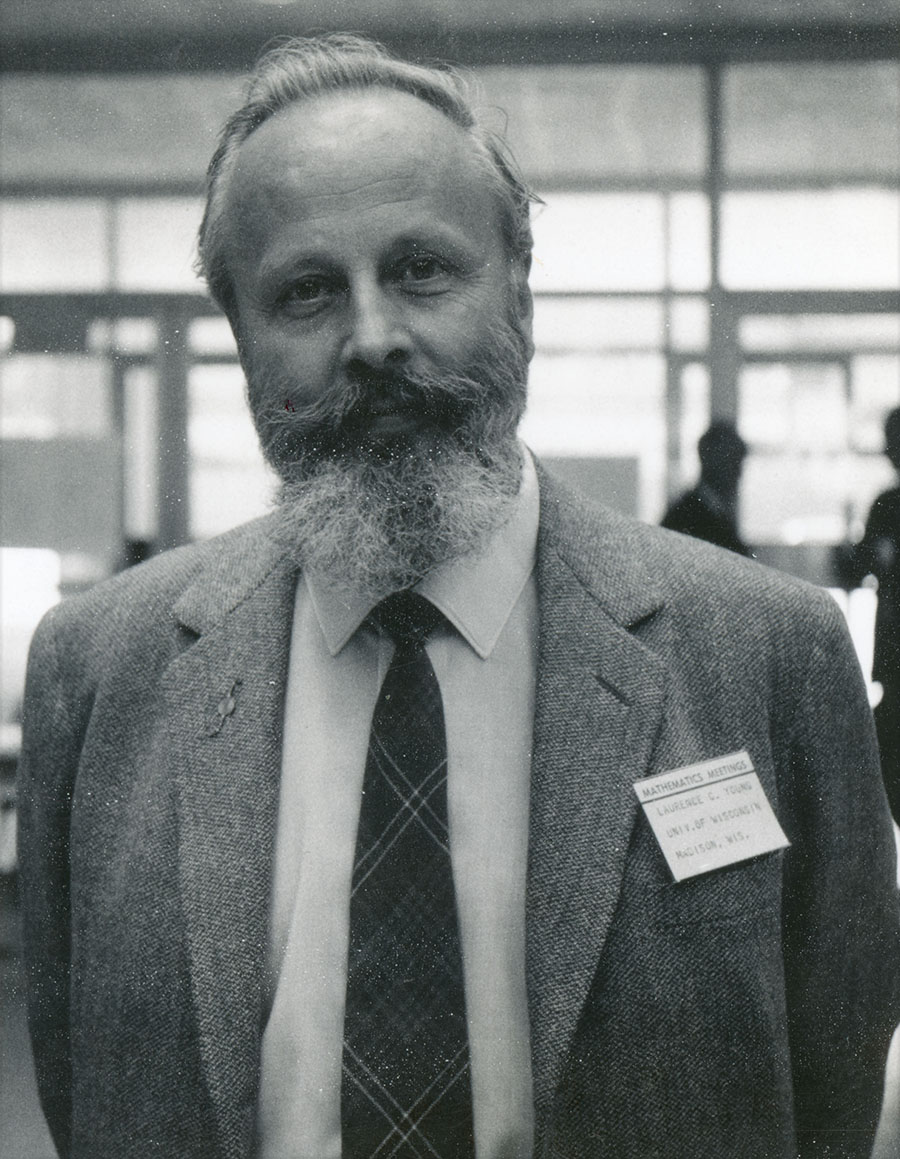
Halmos photographed Laurence C. Young (1905-2000) on August 31, 1967, at the Joint Mathematics Meetings in Toronto, Ontario, Canada. Laurence Chisholm Young was born in Göttingen, Germany, to British mathematicians Grace Chisholm Young and William Henry Young. He published his first book, The theory of integration (Cambridge University Press), in 1927. Four years later, in 1931, he earned a masters degree from Cambridge University under advisors J. E. Littlewood (see page 31 of this collection for a photograph of Littlewood) and Ralph H. Fowler and, according to the Mathematics Genealogy Project, also earned a doctoral degree in 1939 under these two advisors. From 1938 to 1948, he was Professor and founding Chair of Mathematics at the University of Cape Town, South Africa. From 1948 or 1949 onward, he was Professor of Mathematics at the University of Wisconsin, Madison, becoming emeritus in 1975. His 1969 book, Lectures on the calculus of variations and optimal control theory, summarized his major research results; his 1981 book, History of mathematics and mathematics of history, may be of greater interest to mathematical historians. (Sources: MacTutor Archive, Mathematics Genealogy Project)
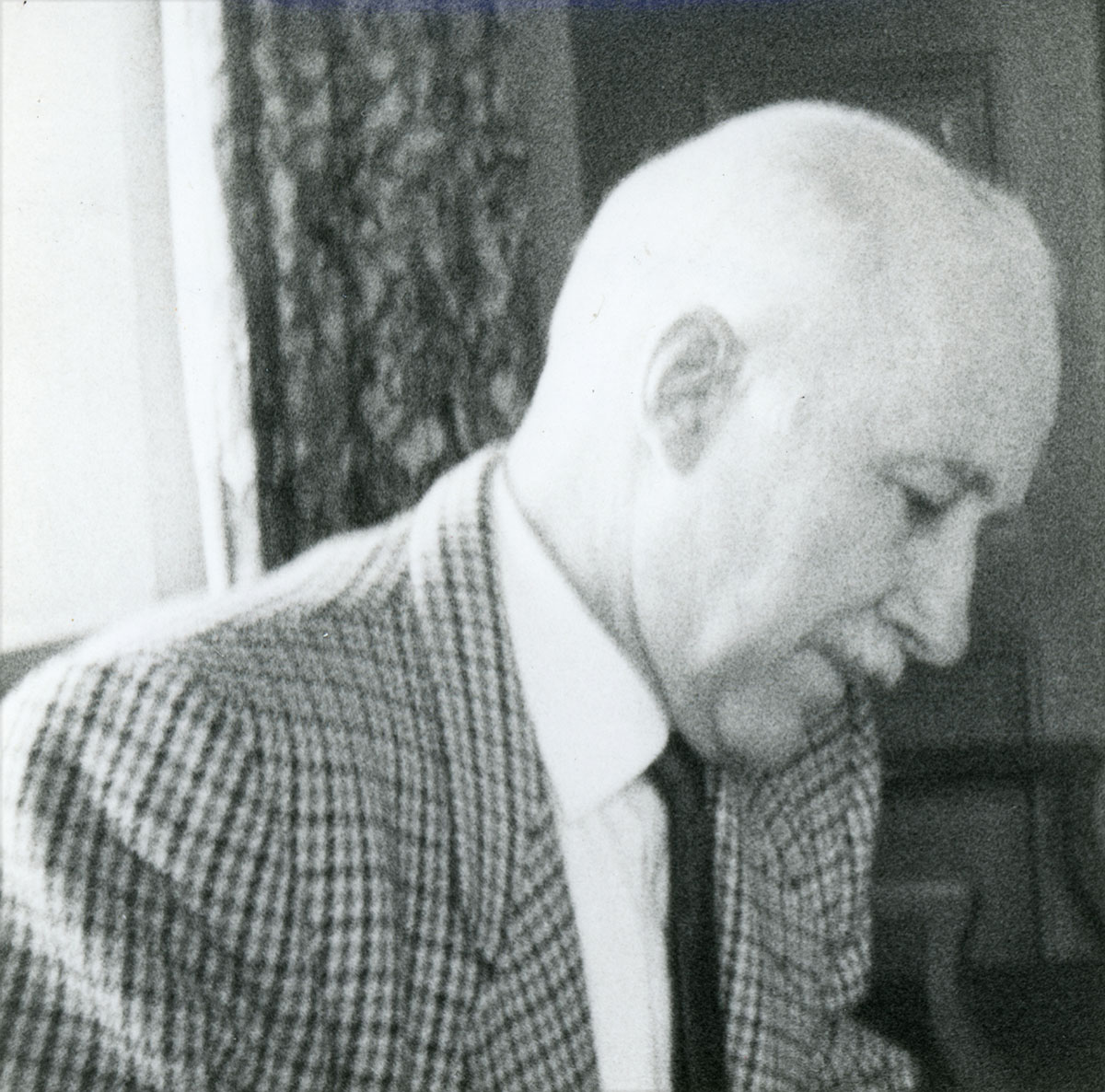
Halmos photographed J.W.T. Youngs (1910-1970) in February of 1962 in Bloomington, Indiana, where Youngs was a faculty member at Indiana University. John William Theodore “Ted” Youngs was born in Bilaspur, India, and earned his Ph.D. in 1934 from Ohio State University in Columbus, probably under advisor Tibor Radó (1895-1965). (Youngs is not listed as a Ph.D. student of Radó, who was at Ohio State University from the founding of its graduate program in 1930 to the end of his life, in Radó’s Ohio State University obituary or in his Mathematics Genealogy Project entry; however, the memorial cited below notes Youngs “working alongside the famous Hungarian, Tibor Rado.”) After teaching at Ohio State and Purdue universities, Youngs was a mathematics professor at Indiana University for 18 years, from 1946 to 1964. In 1964, he became the founding chair of the mathematics department at the brand-new University of California at Santa Cruz, where he remained for the rest of his career and life. A topologist, Youngs is best known for his and Gerhard Ringel’s work on the (Percy) Heawood Conjecture on colorings of maps on surfaces of higher genus (specifically, the chromatic number of these surfaces). This work was done during the last decade of Youngs’ life, much of which was spent at UC Santa Cruz. At Santa Cruz, Youngs also developed an early “math for liberal arts” course titled “The Nature of Mathematics.” (Sources: WorldCat, University of California CaliSphere memorial, Ohio State University obituary: Radó, J.W.T. Youngs Fellows)
For an introduction to this article and to the Paul R. Halmos Photograph Collection, please see page 1. Watch for a new page featuring six new photographs each week during 2012 and early 2013.
Regarding sources for this page: Information for which a source is not given either appeared on the reverse side of the photograph or was obtained from various sources during 2011-12 by archivist Carol Mead of the Archives of American Mathematics, Dolph Briscoe Center for American History, University of Texas, Austin.
Who's That Mathematician? Paul R. Halmos Collection - Page 57
For more information about Paul R. Halmos (1916-2006) and about the Paul R. Halmos Photograph Collection, please see the introduction to this article on page 1. With this page, we reach the last of the 342 photographs digitized by the Archives of American Mathematics in 2011, but watch for bonus photos during the next two weeks!
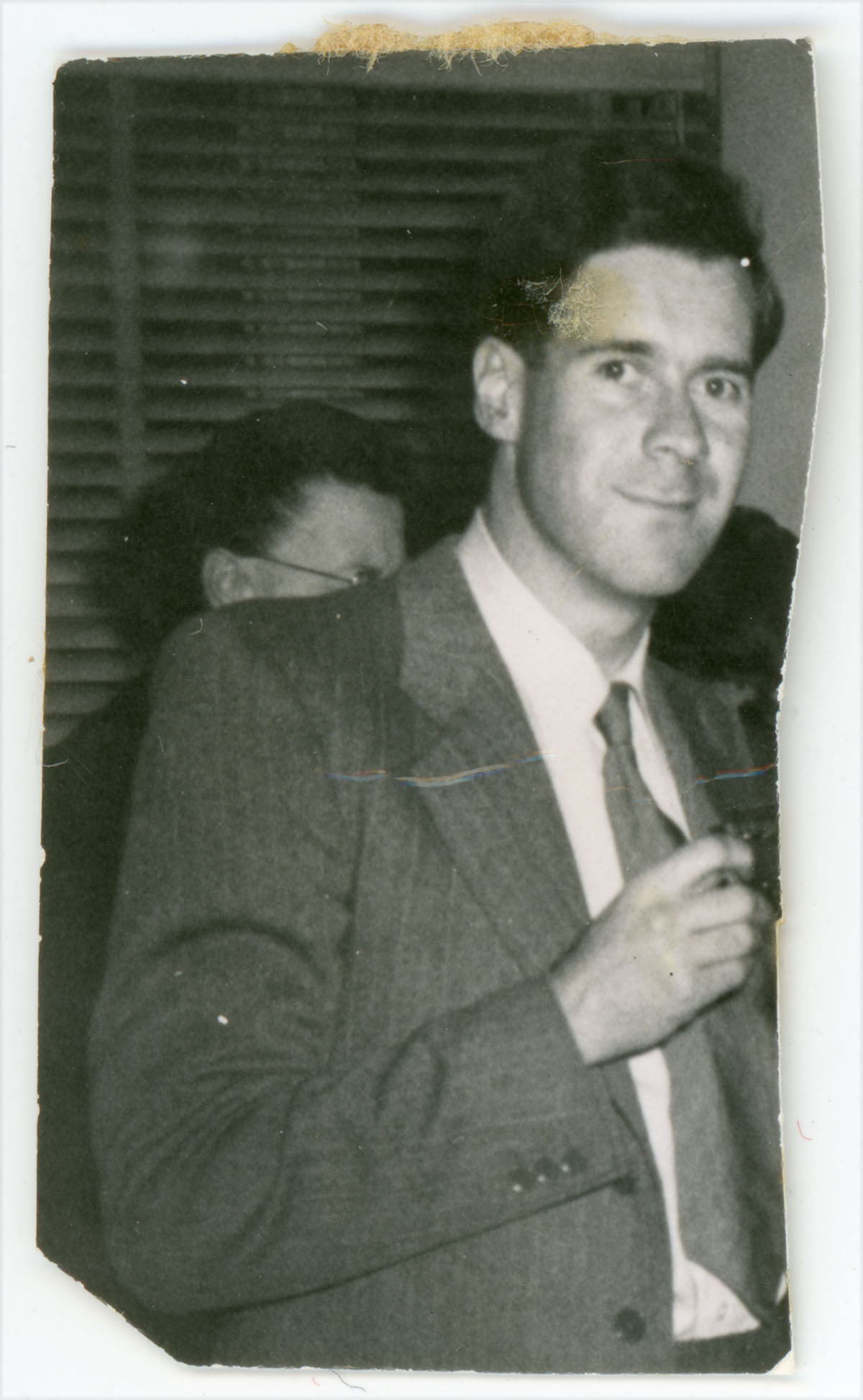
Halmos photographed E. Christopher Zeeman in about 1952. Chris Zeeman received his Ph.D. in 1953 from the University of Cambridge with the dissertation “Dihomology” written under advisor Shaun Wylie (who also was Ph.D. advisor to topologist Frank Adams, whose photograph appears on page 1 of this collection, where you can read more about him). After spending the year 1954-55 in the U.S. at the University of Chicago, where Halmos was on the faculty, and at Princeton University, he returned to Cambridge, where he remained on the faculty until 1964. In 1964 he became Foundation Professor of Mathematics at the brand-new University of Warwick, where he led the Department of Mathematics and the Mathematics Research Centre until 1988, when he accepted positions at Oxford University and Gresham College. He has advised at least 30 Ph.D. students during his career, eight of them at Cambridge University and the rest at the University of Warwick. O’Connor and Robertson of the MacTutor Archive quote Zeeman himself on his favorite research accomplishments:
I am particularly fond of having unknotted spheres in 5-dimensions, of spinning lovely examples of knots in 4-dimensions, of proving [Henri] Poincaré’s Conjecture in 5-dimensions, of showing that special relativity can be based solely on the notion of causality, and of classifying dynamical systems by using the Focke-Plank equation. And amongst my applications of catastrophe theory I particularly liked buckling, capsizing, embryology, evolution, psychology, anorexia, animal behaviour, ideologies, committee behaviour, economics and drama.
(Sources: MacTutor Archive, Mathematics Genealogy Project)
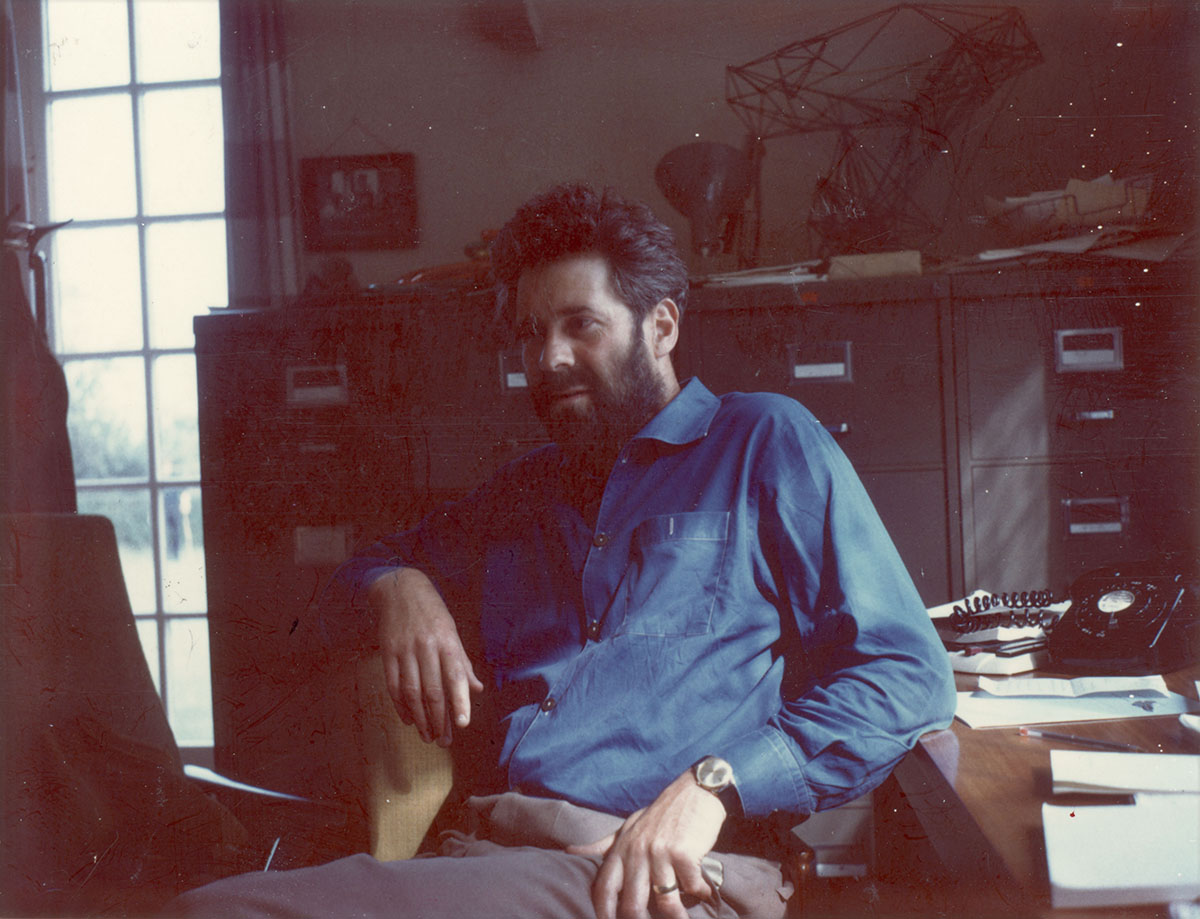
E. Christopher Zeeman was photographed by Halmos again on June 13, 1966, in Coventry, England, where Zeeman was Foundation Professor of Mathematics (professor and founding chair) at the University of Warwick at the time.
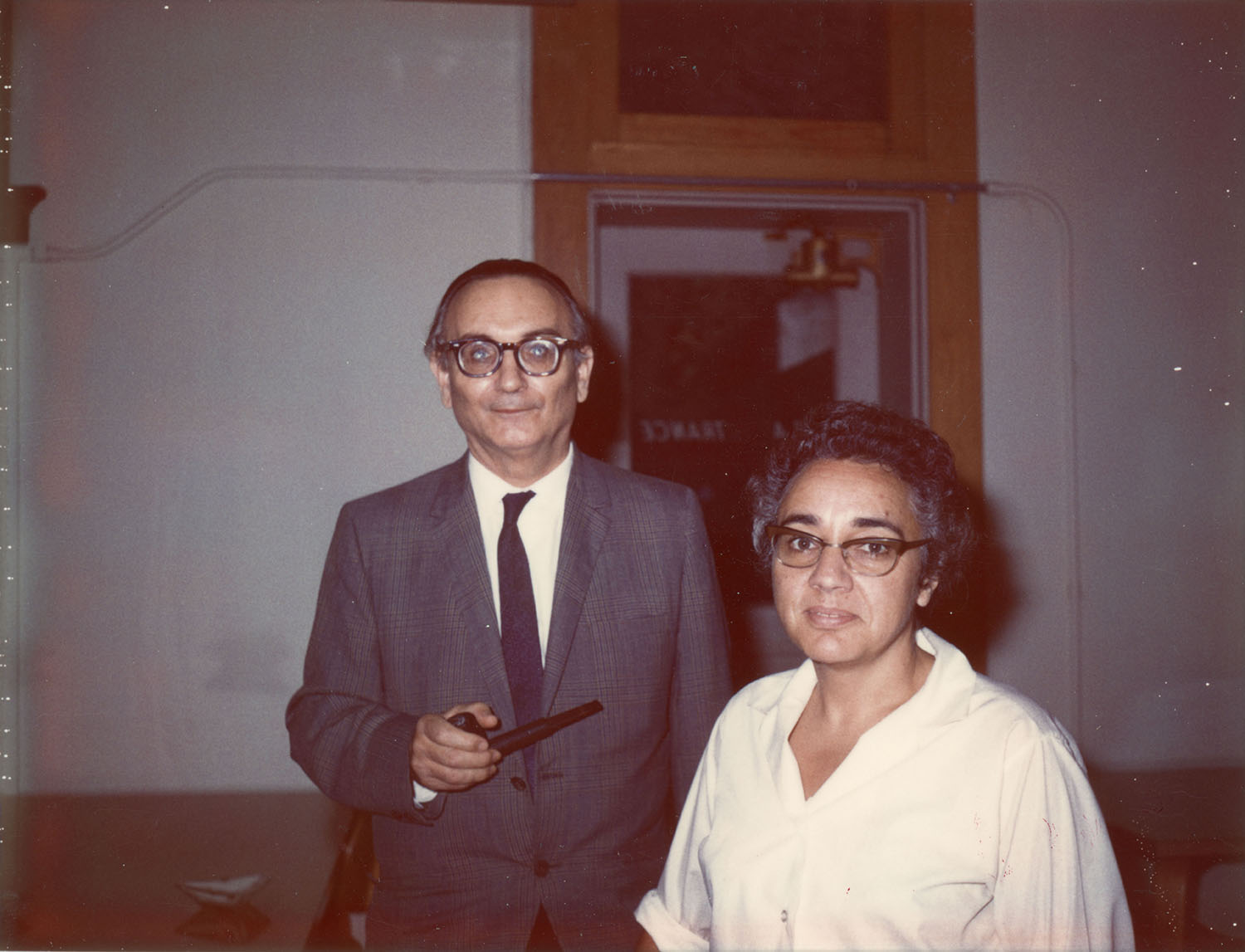
Halmos photographed Max Zorn (1906-1993) and Maria J. Wonenburger on September 26, 1969, in Bloomington, Indiana, where all three of Halmos, Zorn, and Wonenburger were mathematics professors at Indiana University at the time.
Max Zorn was responsible for Zorn’s Lemma, equivalent to the Axiom of Choice and originally published by him in 1935 as a “maximum principle” to be used as an alternative to Ernst Zermelo’s well-ordering principle in studying field theory. This paper was published early in Zorn’s career, while he was on a fellowship at Yale University, after having received his Ph.D. from the University of Hamburg in Germany in 1930 under advisor Emil Artin with the dissertation “Theorie der alternativen Ringe.” Zorn was on the faculty at the University of California, Los Angeles, from 1936 to 1946, and at Indiana University from 1946 onward. The Mathematics Genealogy Project lists his only Ph.D. student as Israel (Yitz) Herstein (pictured on page 22 of this collection, where you can read more about him), who earned his Ph.D. in 1948 from Indiana University with the dissertation “Divisor Algebras.” (Sources: MacTutor Archive, Mathematics Genealogy Project)
After studying mathematics at the University of Madrid in Spain, Maria Wonenburger earned her Ph.D. in 1957 from Yale University with the dissertation “On the Group of Similitudes and Its Projective Group,” written under advisor Nathan Jacobson. An active researcher especially during the 1960s, she was a mathematics professor at the University of Toronto, the University of Buffalo, and Indiana University from 1960 to 1983. Her service at Toronto and Buffalo must have been relatively brief because she had joined the faculty at Indiana University by 1967, when she became a full professor there. In 1983, Wonenburger returned to her hometown of Montrove-Oleiros in A Coruña, Galicia, in the northwest corner of Spain. In 2010, she received an honorary degree from the Universidade de A Coruña. (Sources: Mathematics Genealogy Project, El País Archivo)
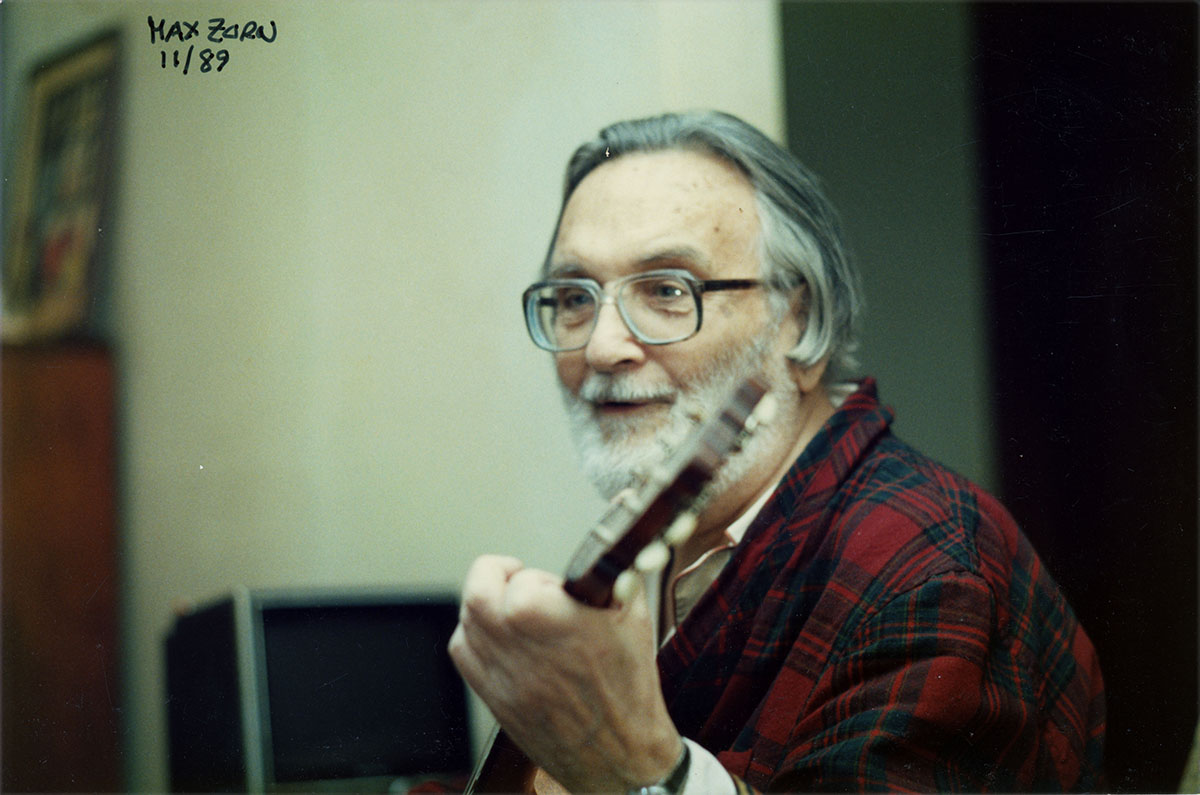
Max Zorn was photographed by Halmos again in November of 1989 at Indiana University in Bloomington.
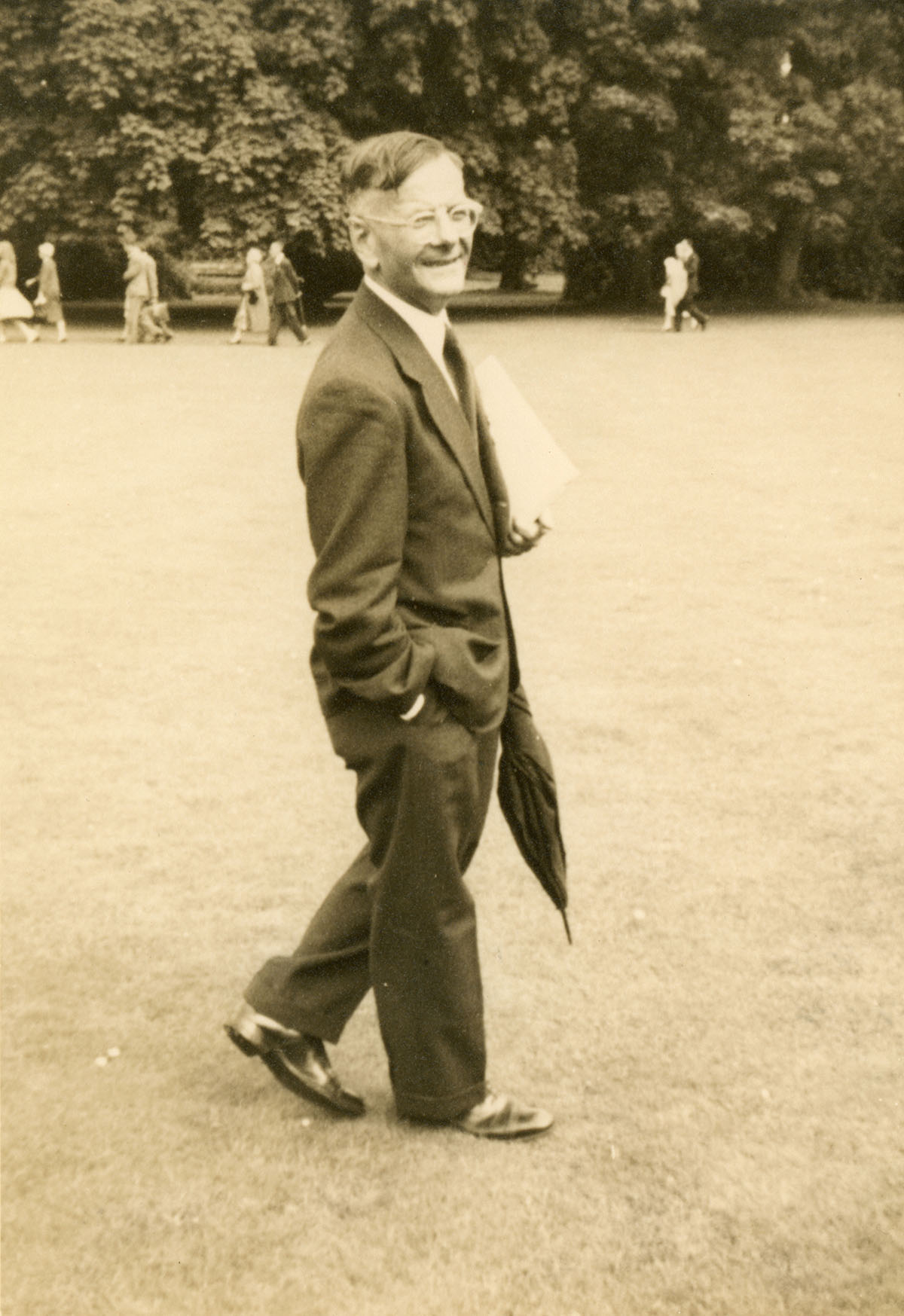
Halmos photographed Antoni Zygmund (1900-1992) in 1958, probably during the International Congress of Mathematicians in Edinburgh, Scotland, but possibly also in Chicago, Illinois, where both were professors at the University of Chicago at the time.
Zygmund was born on Christmas Day in Warsaw, Poland (then part of the Russian Empire), and received his Ph.D. from the University of Warsaw in 1923 with a dissertation on trigonometric series written under advisors Aleksander Rajchman and Stefan Mazurkiewicz. He taught at the Warsaw Polytechnic School (1923-29) and the University of Warsaw (1926-29), and then, during 1929-30, he traveled to England, spending half the year studying with G. H. Hardy in Oxford and the remaining half studying with J. E. Littlewood (photographed on page 31 of this collection) in Cambridge. When he returned to Poland in 1930, Zygmund became chair of mathematics at the University of Stefan Batory in Vilnius, and, during the 1930s, published three well-known texts, Notes on random functions (with Raymond Paley and Norbert Wiener, 1933), Trigonometric series (1935, 1959, and 2002), and Analytic functions (1938 and 1952). In 1940, he escaped the German occupation and moved to the U.S., where he taught at Mount Holyoke College in Massachusetts from 1940 to 1945 (and at the University of Michigan during 1942-43) and then at the University of Pennsylvania for one year before joining the faculty at the University of Chicago in 1947. He is generally credited with building at Chicago the strongest analysis faculty and graduate program of the 20th century, and, in 1986, he received the National Medal of Science primarily for this accomplishment. The citation read:
For outstanding contributions to [Joseph] Fourier analysis and its applications to partial differential equations and other branches of analysis, and for his creation and leadership of the strongest school of analytical research in the contemporary mathematical world. (quoted by O’Connor and Robertson, MacTutor Archive)
Zygmund had many collaborators during his career, the best known probably being his Ph.D. student Alberto Calderón, with whom he worked on harmonic functions, singular integrals, and partial differential equations. (Calderón is pictured on page 9 of this collection, where you can read more about him.) He supervised at least 40 Ph.D. students during his career, all but four of them at the University of Chicago. Later texts by Zygmund included Trigonometric interpolation (1950) and Measure and integral (with Richard Wheeden, 1977). (Sources: MacTutor Archive, Mathematics Genealogy Project)
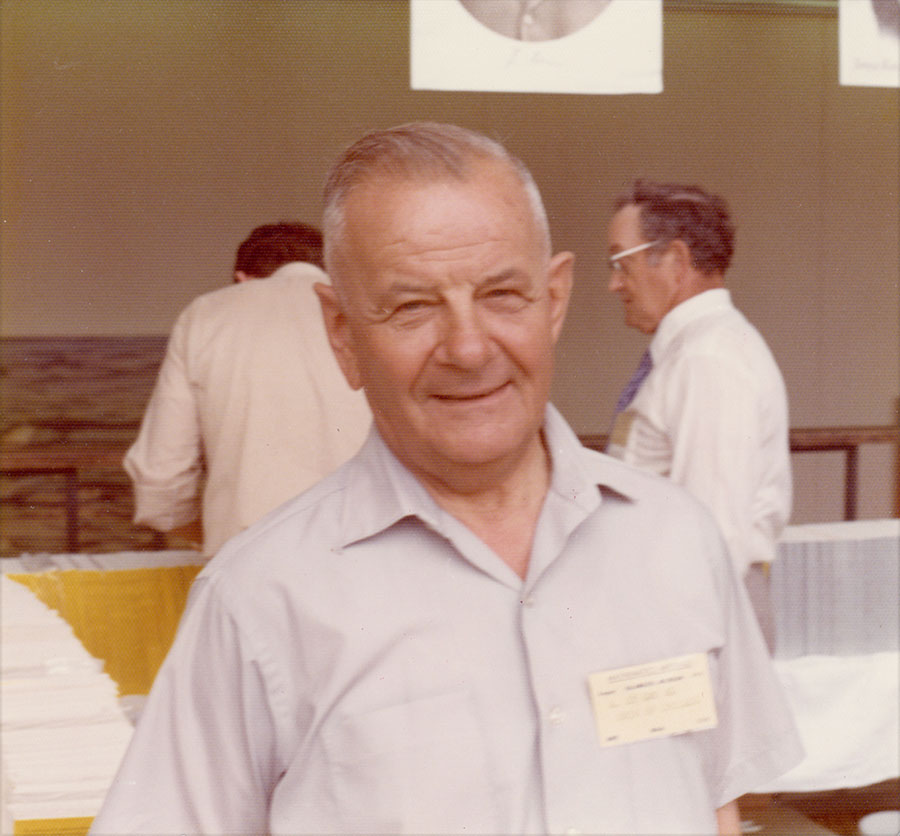
Halmos photographed Antoni Zygmund again on August 1, 1975, at the Joint Summer Mathematics Meetings in Kalamazoo, Michigan.
For an introduction to this article and to the Paul R. Halmos Photograph Collection, please see page 1. Although we have come to the end of the initial set of 342 photographs digitized by the Archives of American Mathematics in 2011, please watch for a new page of bonus photos next week!
Regarding sources for this page: Information for which a source is not given either appeared on the reverse side of the photograph or was obtained from various sources during 2011-12 by archivist Carol Mead of the Archives of American Mathematics, Dolph Briscoe Center for American History, University of Texas, Austin.
Who's That Mathematician? Paul R. Halmos Collection - Page 58
For more information about Paul R. Halmos (1916-2006) and about the Paul R. Halmos Photograph Collection, please see the introduction to this article on page 1.
1973 International Conference on Banach Space Theory
Romanian mathematician Ivan Singer visited Purdue University in West Lafayette, Indiana, for three months during 1973. While there, he attended the International Conference on Banach Space Theory, held June 25-29 on the campus of Wabash College in Crawfordsville, Indiana, where he took the color photographs below and where the black and white photographs immediately below were taken. Singer also attended sessions of the Wabash Functional Analysis Seminar.
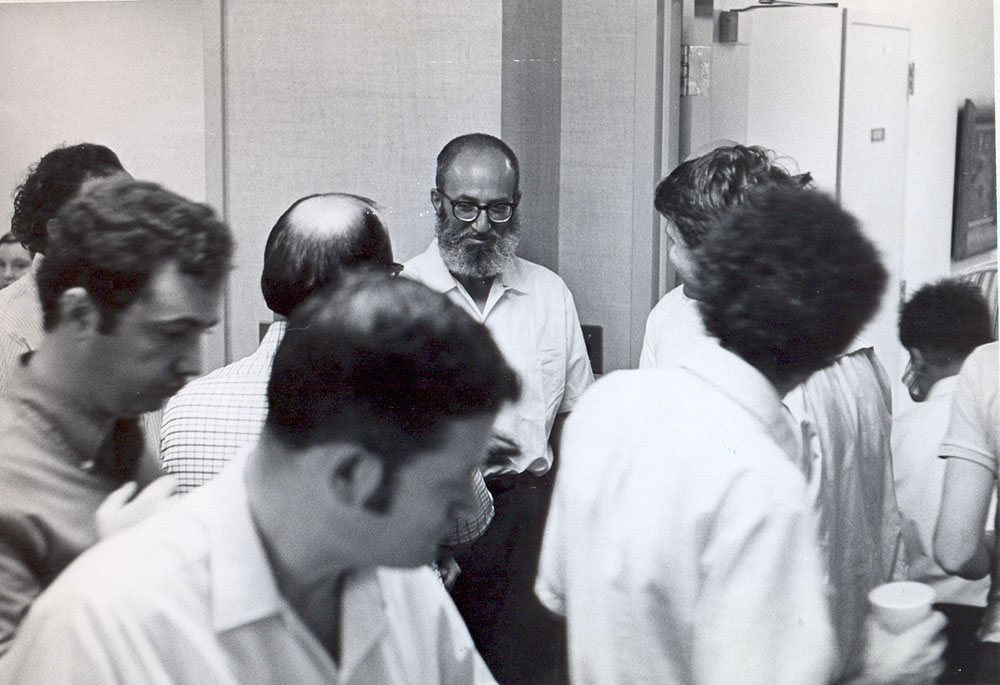
In the photograph above, Paul Halmos (center) conversed with fellow conference attendees amidst the crowd at the International Conference on Banach Space Theory, held in 1973 at Wabash College and sponsored by the Wabash Functional Analysis Seminar and the National Science Foundation. Ivan Singer was the man up front closest to the camera. The man in the plaid shirt who appears to have been speaking to Halmos at the moment the photo was taken may have been Lawrence "Larry" Brown of Purdue University. Do you recognize anyone else in the photograph? If so, please let us know!
Though small, Wabash College was a logical location for the 1973 International Conference on Banach Space Theory because it was centrally located between the conference’s other institutional sponsors, Purdue University, Indiana University in Bloomington, where Halmos was a professor, and the University of Illinois at Urbana-Champaign, and because it already was the home of the successful Wabash Functional Analysis Seminar.
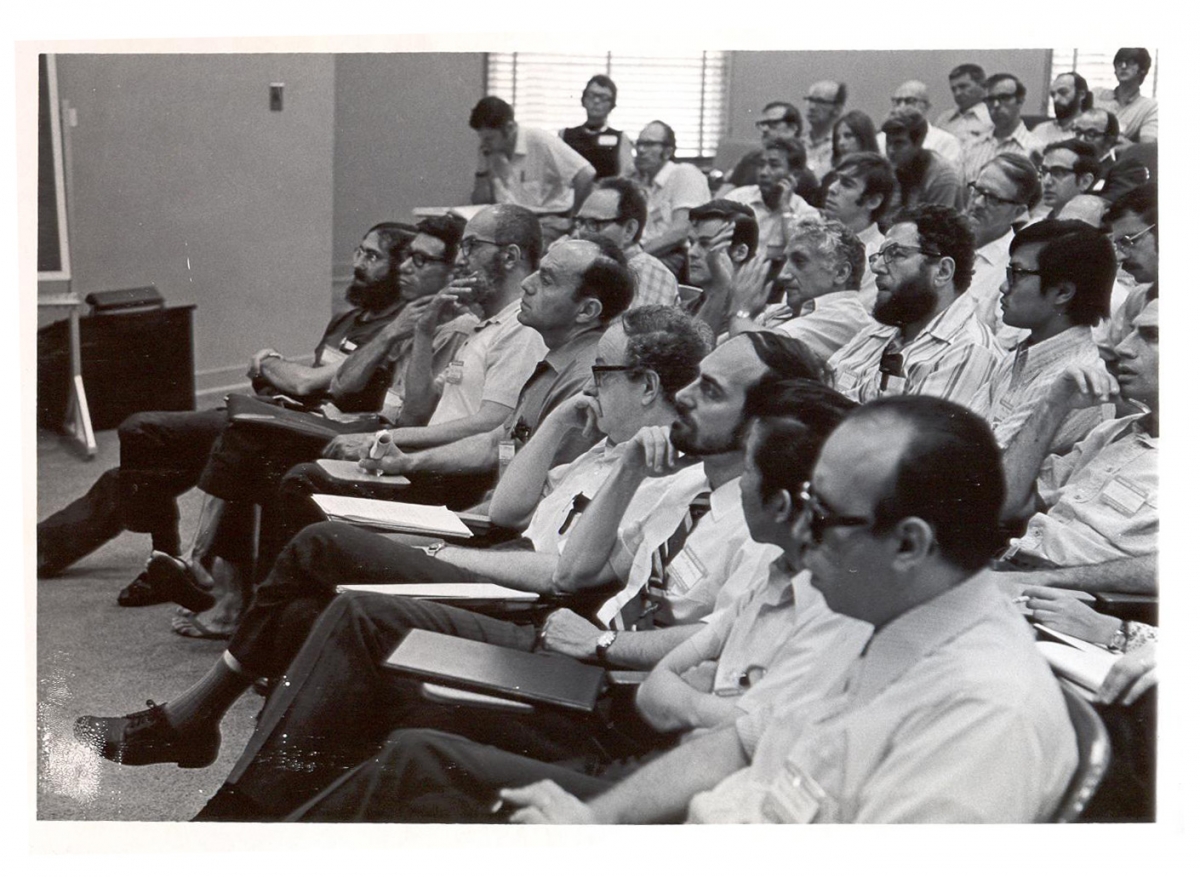
The front row of the rapt audience in the photograph above included Donald "Don" Sarason, far left (see page 47 of this collection for another photograph of Sarason and more information about him); Paul Halmos, third from left; Meyer Jerison, fourth from left; Owen Burkinshaw, third from right; and Norberto Salinas, far right (closest to the camera). In the second row, at far left and third from left, respectively, were Aleksander Pelczynski and Czeslaw Bessaga, both of Warsaw, Poland. Also in the second row, the bearded man third from the right was Leon Brown of Wayne State University and the man at far right Haskell Rosenthal (also pictured on page 5). Ivan Singer is at far left in the third row, consulting a book. Second from left in the third row was Robert "Bob" Phelps (page 40). At far right in the third row was William "Bill" Arveson (page 2) and at far left in the fourth row (but to the right of the lefthand window) William "Bill" Johnson (page 5). The man in the upper right of the photograph, in the last row of seats visible in the photo, was Warren Wogen. In the row of seats in front of him, the two men were Arlen Brown (left, see page 8 and page 48) and Peter Fillmore (right, bearded). In the row of seats in front of them (third row from the back), the man third from the left and second from the right (between Brown and Fillmore) was Kevin Clancey and the man at far right was Bernard "Bernie" Morrel (1940-1997). Do you recognize others? If so, please let us know.
After the photo above was posted and readers began to identify audience members, Singer located the official conference photograph shown below.

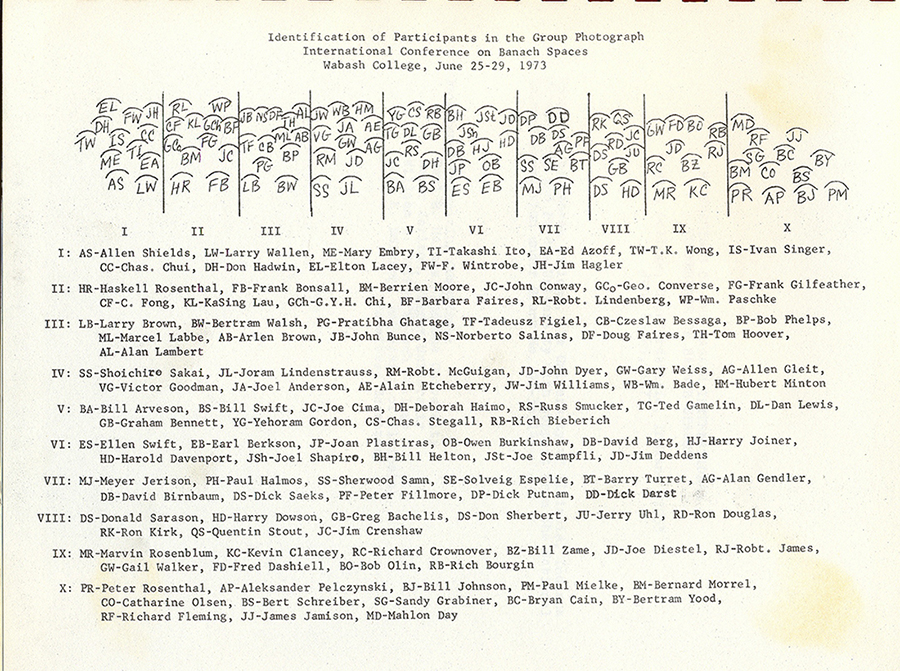
Download a higher resolution copy of the group photograph of participants in the 1973 International Conference on Banach Space Theory and of the identification of persons in the group photograph. For an even higher resolution scan of the group photograph, please email the authors.
Wabash Functional Analysis Seminar
While he was at Purdue University in 1973, Ivan Singer also attended the Wabash Functional Analysis Seminar, sponsored by Wabash College, Purdue University, Indiana University, and the University of Illinois and held six to eight times per year in those days. In his book I Want to Be a Mathematician: An Automathography (Springer 1985, pp. 373-5), Halmos described how, shortly after his arrival at Indiana University in 1969, he, Earl Berkson of the University of Illinois, and Meyer Jerison (1922-1995) of Purdue University founded this seminar. The Wabash Seminar eventually received National Science Foundation funding for the international conference featured on this page and for visiting lecturers.
Berkson wrote recently that the organizing committee included two more members, Neal Rothman of Indiana University - Purdue University, Indianapolis (IUPUI), and William “Bill” Clement Swift (1928-2008) of Wabash College. He also appreciated the support of Swift's colleague Paul Mielke, who was chair of the Mathematics Department at Wabash College during the 1970s. In his I Want to Be a Mathematician, Halmos also praised Bill Swift and his colleagues at Wabash College for their hosting of and participation in the Wabash Seminar (p. 374). Swift retired in 1990, but, as of 2008, the Wabash Seminar still met a few times each semester.
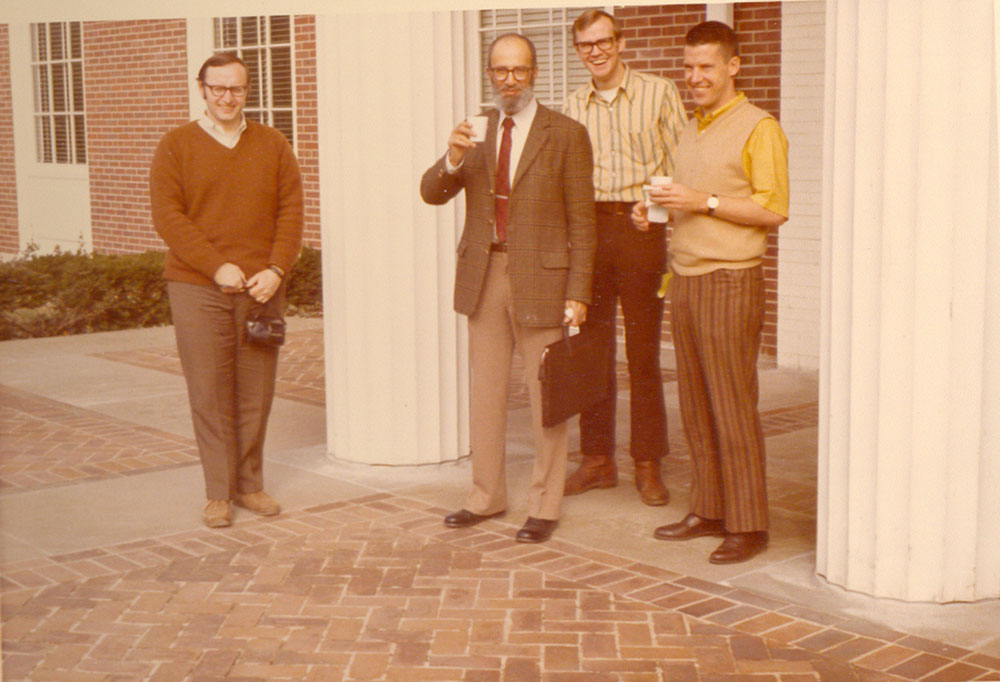
Left to right: John B. Conway, Paul Halmos, and two other conference attendees took a break during the International Conference on Banach Space Theory at Wabash College. Both Conway and Halmos were mathematics professors at Indiana University at the time. (For another photograph of Conway and more information about him, see page 49 of this collection.) Do you recognize either of the two men at right in the photo? If so, please let us know who they are!
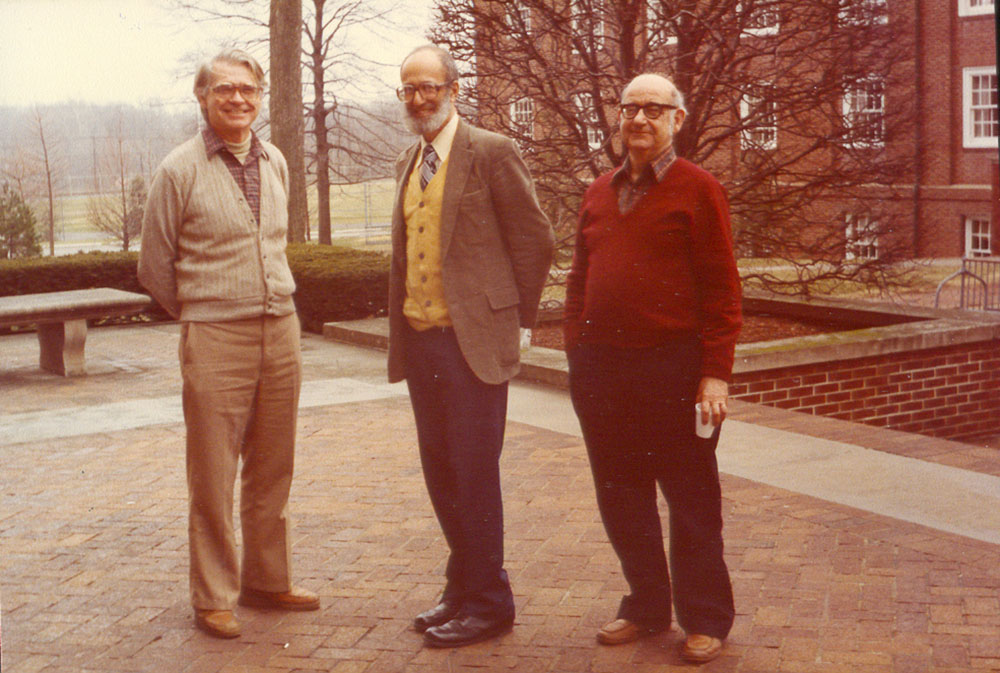
Left to right: Bill Swift, Paul Halmos, and Casper Goffman (?) enjoyed a break on the Wabash College campus. Swift, of Wabash College, and Halmos, of Indiana University, were co-organizers of the 1973 International Conference on Banach Space Theory. They also were co-organizers of the Wabash Functional Analysis Seminar, Swift until he retired in 1990 and Halmos until he moved to Santa Clara University in California in 1985. Goffman was then at Purdue University, where he spent most of his career.

Paul Halmos, left, was photographed with Ellen and Bill Swift. As noted above, Bill Swift was a co-organizer of the Wabash Seminar until 1990. He also was a co-organizer of the 1973 International Conference on Banach Space Theory, and he and his wife Ellen made many of the local arrangements for the conference.
Earl Berkson, Emeritus Professor of Mathematics at the University of Illinois, Ubana-Champaign, and one of the organizers of the Wabash Seminar and of the 1973 International Conference on Banach Space Theory, wrote recently of Halmos:
Paul Halmos was one of my teachers when I was a graduate student at the University of Chicago (1957-1960), and so my mathematical association with him lasted from that time on. His role as an organizer of the Wabash Seminar and Conferences reflects one of his many stellar facets – wherever he was, mathematical activity thrived.
Ivan Singer, who took and/or submitted the photographs on this page, is now Research Professor and Honorary Member of the Institute of Mathematics of the Romanian Academy in Bucharest. He is a functional analyst currently researching geometry in semi-modules, and also interested in optimization, convex and discrete geometry, and operations research. His books include Duality for nonconvex approximation and optimization (2006), Abstract convex analysis (1997), Bases in Banach spaces I and II (1970, 1981), Theory of best approximation and functional analysis (1974), and Best approximation in normed linear spaces by elements of linear subspaces (1967, 1970). For a photograph of Singer, see page 36 of this collection, where you can read more about him.
Singer recently passed along some advice for photographers in the form of an anecdote:
I also used to take many pictures and, when I first met Paul, I asked him why he always wrote on the back side of his photos the names and other coordinates of the respective people (he had then a Polaroid camera making instant photos), and he answered that otherwise he would forget them. I smiled and said that for me this is not necessary since I will remember them. Paul smiled and answered "you will see." Unfortunately, it has turned out that I was utterly wrong and Paul was right!
Many thanks to Ivan Singer, and also to Earl Berkson, John Conway, William Johnson, and Judith Morrel, for information and photo identifications. For more information about Paul R. Halmos (1916-2006) and about the Paul R. Halmos Photograph Collection, please see the introduction to this article on page 1.
You may use the photographs on this page in your classroom; for all other purposes, please contact Ivan Singer, Institute of Mathematics, Romanian Academy, or MAA Convergence Editor Janet Beery so that she may seek permission for you from Prof. Singer.
Who's That Mathematician? Paul R. Halmos Collection - Page 59
For more information about Paul R. Halmos (1916–2006) and about the Paul R. Halmos Photograph Collection, please see the introduction to this article on page 1.
Mathematicians from the Collection ... and Their Friends!
Israel 1974
Two mathematicians whose photographs have already appeared more than once in this collection …
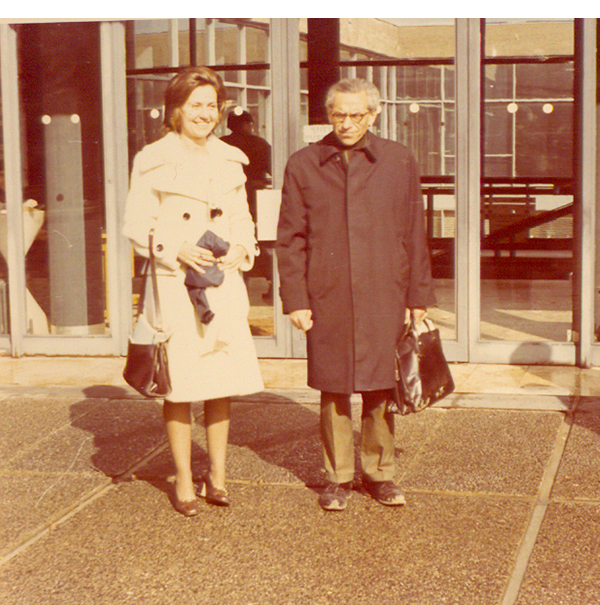
Alexandra Bellow and Paul Erdős (1913–1996) were photographed by Ivan Singer in Haifa, Israel, in 1974.
The Romanian functional analyst Ivan Singer recalled recently that he visited several universities in Israel and Greece during the winter holiday in 1974, in the midst of a six-month visit to the University of Amsterdam, Holland. The invitation to visit Israeli universities came from Samuel Karlin (1924–2007), who was Head of the Department of Applied Mathematics at the Weizmann Institute in Rehovot, Israel, at the time. (Karlin was a longtime Stanford University mathematician who divided his time between Stanford and the Weizmann Institute from 1970 to 1976 or later.) Photographs of (and by) Ivan Singer appear on page 36 and page 58 of this collection, where you can read more about him. Ergodic theorist Alexandra Bellow also is pictured on page 5 and page 9 of this collection, where you can read more about her. Photographs of polymath Paul Erdős appear on page 3, page 14, and page 27 of this collection.
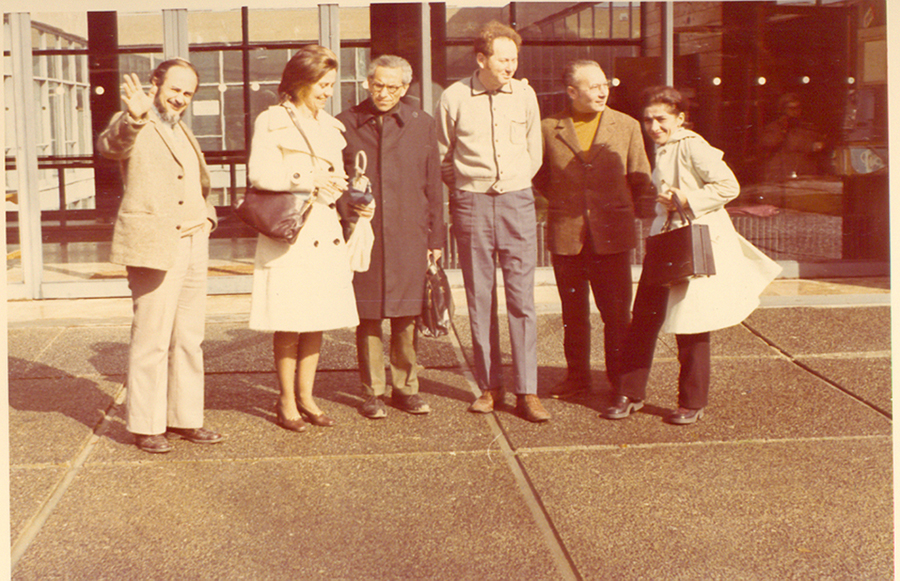
Left to right: Pierre Saphar, Alexandra Bellow, Paul Erdős, Harry Cohn, Froim Marcus, and, at far right, Crina Singer (wife of Ivan Singer)
Pierre-David Saphar is Professor Emeritus of Mathematics at the Technion – Israel Institute of Technology in Haifa, Israel. Singer remembers discussing Saphar's then recent work on tensor products of Banach spaces with him during a visit to his home in Haifa. According to MathSciNet, Pierre Saphar published articles on various topics in functional analysis, primarily Banach spaces, from 1960 to 1999. (Sources: Technion Mathematics, MathSciNet)
Harry I. Cohn, a probabilist specializing in Markov chains, earned his Ph.D. in 1966 from the University of Bucharest, Romania, but has spent most of his career at the University of Melbourne, Australia, where he is now retired from the Department of Statistics. He was at the Centre for Mathematical Statistics in Romania from 1963 to 1970; at the Technion – Israel Institute of Technology in Haifa, Israel, from 1970 to 1974; at Haifa University during 1974–75; at the Australian National University in Canberra from 1975 to 1978; and at the University of Melbourne, Australia, from 1978 onward.
Froim Marcus was a Romanian-born differential geometer who had at least some association with Technion – Israel Institute of Technology in Haifa, Israel, during the 1970s and early 1980s, publishing several papers in Technion’s preprint series from 1971 through 1981. According to MathSciNet, he published papers, most of them on projective differential geometry, in many languages and journals from 1958 to 1985. (Sources: GoogleBooks, MathSciNet)
Ivan Singer especially enjoyed meeting with fellow functional analysts during his visit to Israel, including Joram Lindenstrauss and others in Jerusalem.

Left to right: Andrzej Szankowski, Alexandra Bellow, and Joram Lindenstrauss
Andrzej Szankowski is Professor Emeritus of Mathematics at Hebrew University of Jerusalem. He collaborated with Lindenstrauss during the 1980s and has published on Banach spaces since 1969. (Sources: Hebrew University Mathematics, MathSciNet, Mathematics Genealogy Project)
Alexandra Bellow is pictured above, where you can find links to more information about her.
Joram Lindenstrauss (1936–2012) earned his Ph.D. at Hebrew University of Jerusalem and spent his career there as well. He and his thesis advisor, Aryeh Dvoretzky (1916–2008), founded the school of functional analysis in Israel. (Sources: Mathematics Genealogy Project, Scripta Mathematica, MacTutor Archive)
Singer also enjoyed meeting with approximation theorists, as the following photograph shows.
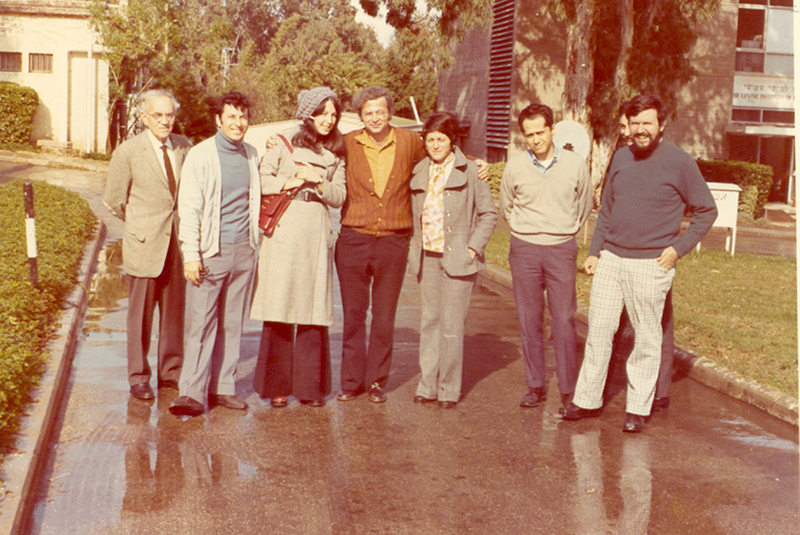
Left to right: Isaac Schoenberg, Dany Leviatan, Nira Dyn, Samuel Karlin, Esther Kimchi, Charles Micchelli, and Zeev Ditzian were photographed by Ivan Singer at the Weizmann Institute of Science in Rehovot, Israel, in 1974.
Isaac Schoenberg (1903–1990) is pictured on page 47 of the collection, where you can read more about him.
Dany Leviatan is ProRector and Professor Emeritus of Pure Mathematics at Tel Aviv University in Israel. An approximation theorist, he earned his Ph.D. in 1966 from Hebrew University in Jerusalem and has been on the faculty of Tel Aviv University since then. He served as Rector of Tel Aviv University from 2005 to 2010 and has been ProRector since 2011. (Sources: Mathematics Genealogy Project, Tel Aviv University Mathematics)
Nira Dyn is Professor Emeritus of Applied Mathematics at Tel Aviv University. She earned her Ph.D. at the Weizmann Institute of Science in 1970 with the dissertation, “Optimal and minimum norm approximations to linear functionals in Hilbert spaces, and their application to numerical integration.” At her webpage, she lists nonlinear subdivision schemes and approximation of set-valued functions as her current research interests. (Sources: Mathematics Genealogy Project, Tel Aviv University Mathematics)
Samuel Karlin (1924–2007) earned his Ph.D. in 1947 from Princeton University with the dissertation “Independent Functions” written under advisor Salomon Bochner. His first faculty appointment was at the California Institute of Technology (Caltech) in Pasadena, where he initially published in functional analysis but soon switched to game theory. In 1956, he moved to Stanford University. His interest in game theory led him into mathematical economics and operations research and, by the mid-1960s, into stochastic processes and total positivity. By the late 1980s, he had begun to apply mathematics to biology. He spent the rest of his career at Stanford University, with additional affiliations at the RAND Corporation and, as noted above, at the Weizmann Institute of Science in Rehovot, Israel. He may be best known today for his work on DNA sequencing. (Sources: Mathematics Genealogy Project, MacTutor Archive, Stanford University News Service)
Esther Kimchi earned her Ph.D. in 1976 from Tel Aviv University in Israel with the dissertation, “Problems of Interpolation and Their Application in Approximation with Side Conditions,” written under advisor Dany Leviatan. She co-authored a series of eight papers with Nira Dyn from 1974 to 1979, and has pursued a career in industry. (Sources: Mathematics Genealogy Project, MathSciNet)
Charles A. Micchelli earned his Ph.D. in 1969 from Stanford University with the dissertation “Saturation Classes and Iterates of Operators,” written under advisor Samuel Karlin. According to Singer, Micchelli “became a well known specialist in splines and optimal recovery.” He is Professor of Mathematics at the State University of New York at Albany (SUNY Albany), where his current research interest is computational mathematics and its applications. He wrote recently,
I do remember Ivan Singer's visit. I was put in charge of taking care of him while he was in Israel by my thesis adviser Samuel Karlin. … I still have fond memories of my visit to Israel just after the Yom Kippur War in 1973 with my wife, Pat; my son Craig, who was three at the time; and my daughter Lisa, who was one year old.
(Sources: Mathematics Genealogy Project, SUNY Albany Mathematics)
Zeev Ditzian received his Ph.D. in 1965 from Hebrew University in Jerusalem. He was on the faculty of the University of Alberta in Edmonton, Alberta, Canada, from the early 1970s onward, and he is now Professor Emeritus of Mathematics there. He continues to do research in approximation theory. (Sources: Mathematics Genealogy Project, University of Alberta Mathematics)
Israel 1960
Mathematical physicist Daniel Sternheimer alerted us to the following extraordinary photograph that includes many mathematicians pictured elsewhere in this collection, plus many more.
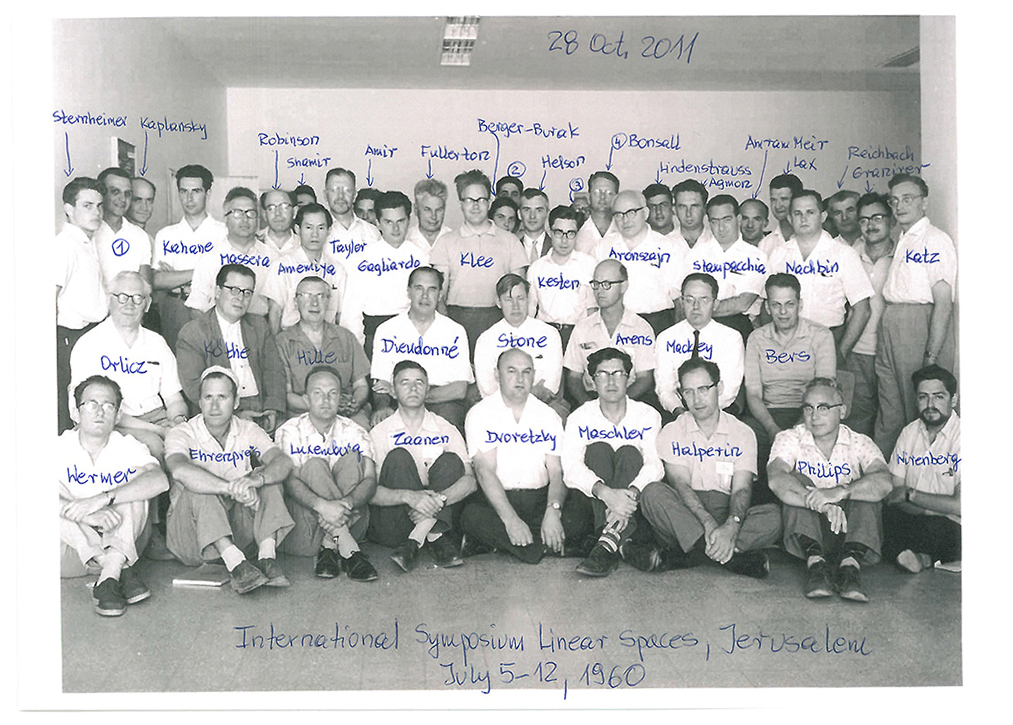
The participants in the 1960 International Symposium on Linear Spaces held July 5–12 at Hebrew University in Jerusalem, posed for the camera of an unknown photographer. Identifications of participants were made over a five-year period (2007-2011) by Lech Maligranda of Luleå University of Technology (LTU) in Luleå, Sweden.
Lech Maligranda has published the results of his identification project in Cornell University Library’s arXiv as “Fifty two years ago in Jerusalem,” and here in MAA Convergence with the hope that our readers can help him identify three remaining conference participants. Two of these three mystery persons are labeled 1 and 2 in the photo above (and 19 and 32 in the photo at arXiv).
1 – top row, second from left, between Sternheimer and Kaplansky
2 – top row, middle, between Klee and Helson and behind Berger-Burak
Maligranda has identified the person labeled “3” in the photo above as Haim Amsterdamer. As noted, the person labeled “4” has been identified as Frank Bonsall (see page 7 of this collection for another photo of Bonsall).
Maligranda’s third mystery person? He (or she) is fourth from top right, between Nachbin and Reichbach.
According to Sternheimer, about whom you can read more on page 14 of this collection (see the caption for Leopold Flatto) and who is at upper left in the photo above:
I have many fond recollections and interesting anecdotes about the many mathematicians (and physicists) I met during a career in research that … started in 1960 in Jerusalem. I was then barely 22 (an M.Sc. student) and attended a conference on linear spaces, as proved by a photo I received in October-November 2011 from Lech Maligranda. Maligranda had been a student of [Wladyslaw] Orlicz and found on the Internet (with an incorrect reference) [this] photo, for which he has been able to put a name on almost all faces (or fractions thereof).
Dany Leviatan (see the fourth photo on this page, above) also remembers this conference. He was a first year student at Hebrew University at the time. More recently, he helped Maligranda identify several of the participants, including Haim Amsterdamer (person "3" in the photo). Leviatan recalled recently that Amsterdamer taught him analytic geometry during his first year at Hebrew University, but then left mathematics two years later in order to study psychology. Leviatan wonders what became of Amsterdamer afterwards, and would appreciate any information about him.
Finland 1978
Ivan Singer sent us the next two photographs, each including himself, one other mathematician who has already appeared in the collection, and one mathematician new to the collection.

Left to right: Angela Vasiu, Ivan Singer, and Robert “Bob” Bartle enjoyed the International Congress of Mathematicians, held in Helsinki, Finland, in 1978.
Angela Vasiu was on the mathematics faculty at Babes-Bolyai University, Cluj-Napoca, Romania. More information about Vasiu would be appreciated.
For more information about Ivan Singer, see page 36 and page 58 of this collection.
Bob Bartle is pictured on page 4 of this collection, where you can read more about him.
Germany 1982

Left to right: Laszlo Lovasz, Bernhard Korte, and Ivan Singer at the 11th Symposium on Mathematical Programming in Bonn, Germany, in 1982
Laszlo Lovasz is pictured on page 31 of this collection, where you can read more about him.
Bernhard Korte is Director of the Research Institute for Discrete Mathematics in the Hausdorff Center for Mathematics at the University of Bonn, Germany. The Institute currently specializes in combinatorial optimization and chip design within its larger purview of algorithms, combinatorics, and complexity. Korte and Lovasz wrote a series of papers on “greedoids” during the 1980s, culminating in a Springer book on the topic in 1991 (Greedoids, with Rainer Schrader, who was a 1982 Ph.D. student of Korte). Now based at the Eötvös Loránd University in Budapest, Hungary, Lovasz has been an honorary member of the Research Institute for Discrete Mathematics since visiting the University of Bonn during 1984-85. (Sources: Research Institute for Discrete Mathematics, MathSciNet, Mathematics Genealogy Project)
For more information about Ivan Singer, see page 36 and page 58 of this collection.
Australia 1976

Ivan Singer photographed graph theorist Frank Harary (1921–2005) at a wildlife preserve in Brisbane, Australia, in 1976. Harary is pictured on page 29 of this collection, where you can read more about him.
Singer visited at least a dozen Australian universities across the continent during a two-month visit there, the main purpose of which was to give an invited address at the Annual Congress of the Australian Mathematical Society in Perth.
Jennifer Seberry and Bernhard Neumann, probably at the Australian National University in Canberra, where Seberry was a research fellow and Neumann a professor in the mathematics department
Jennifer Seberry is Professor of Computer Science at the University of Wollongong, Australia. She earned her Ph.D. in computational mathematics from La Trobe University in Melbourne, Australia, in 1971. During her career, she has done pioneering work in combinatorial matrices and designs, cryptology, and computer security. (Sources: Mathematics Genealogy Project, University of Wollongong Computer Science)
Bernhard Neumann is also pictured on page 37 of this collection, where you can read more about him. Singer especially remembers playing cello duets with Neumann during his visit.
United States 1999–2000
Do you know the first and last names of the mathematicians in the photos below? Do you know their middle names?
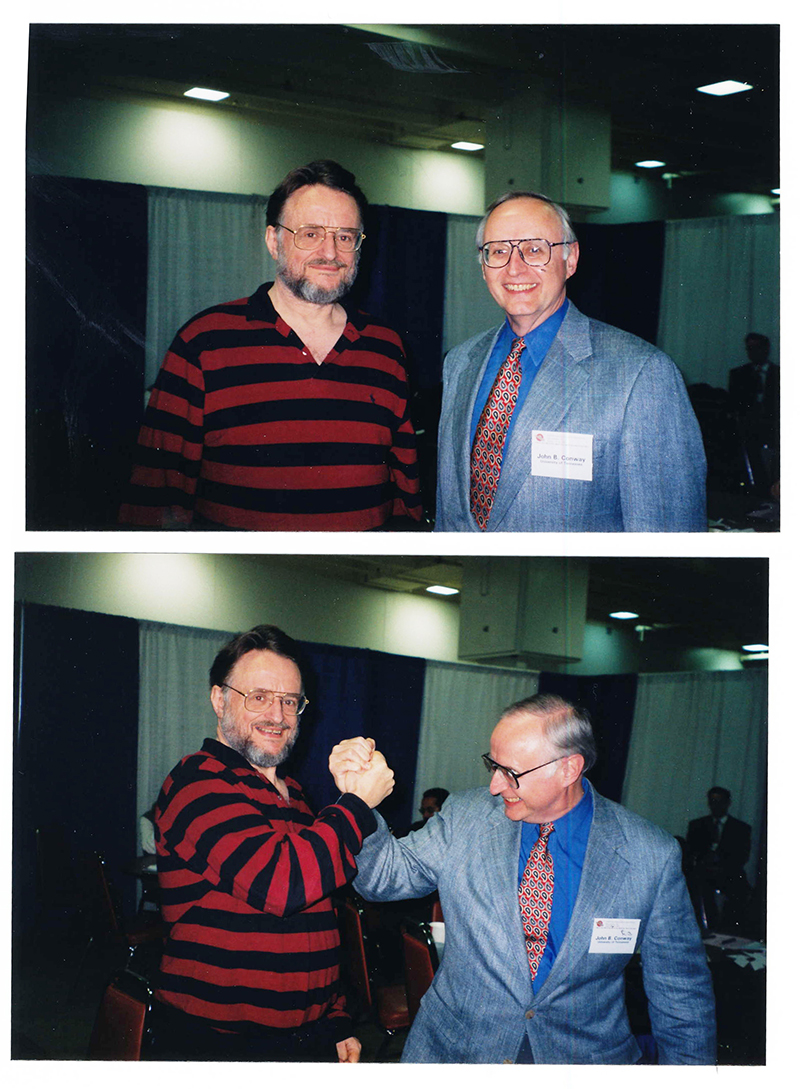
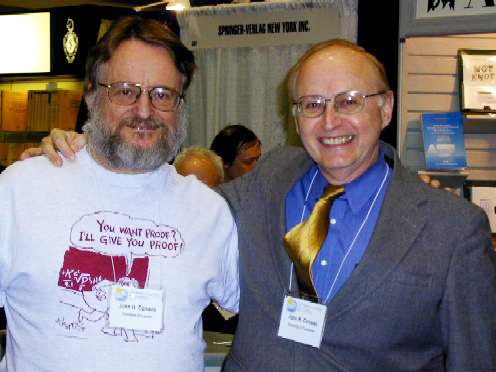
Mathematicians John H. Conway, left in each photo, and John B. Conway provided photographic evidence that they were (and are) indeed two different people (top two photos by Ina Mette).
The first two of these three photographs were taken in January of 1999 at the Joint Mathematics Meetings in San Antonio, Texas, by Ina Mette, of the American Mathematical Society. About the last photo, John H. Conway remembers that it was taken in January of 2000 at the Joint Mathematics Meetings in Washington, D.C., where:
Someone asked me, "Are you THE John Conway?", and, without looking up, I said, "It depends which John Conway you mean!" A good reply, because the asker was John B!
Their full names are John Horton Conway and John Bligh Conway. Another photograph of John B. Conway appears on page 49 of this collection, where you can read more about him; you’ll also find photos of him on page 58 of this collection.
John H. Conway (1937–2020) earned his doctoral degree in 1964 from the University of Cambridge with the dissertation “Homogeneous ordered sets,” written under advisor Harold Davenport. He joined the Cambridge faculty that year and in 1968 published his results on the symmetry group of the [John] Leech lattice, which included three new simple groups as a factor group and subgroups. In 1970, Martin Gardner (see page 16 of this collection) popularized Conway’s “Game of Life” in his Scientific American column. That same year, Conway, while studying the game of “Go”, invented what became known as the surreal numbers. These numbers were named by Donald Knuth in his book Surreal Numbers in 1974, the year this photo was taken. In 1986, Conway moved from Cambridge University to Princeton University, where he assumed the John von Neumann Chair of Mathematics and where he remains on the faculty today. (Source: MacTutor Archive; see also T&F Virtual Special Issue)
Many thanks to Ivan Singer, Daniel Sternheimer, Lech Maligranda, Ina Mette, and John B. Conway for this week's photographs. For more information about Paul R. Halmos (1916–2006) and about the Paul R. Halmos Photograph Collection, please see the introduction to this article on page 1.
You may use the photographs on this page in your classroom; for all other purposes, please contact MAA Convergence Editor Janet Beery so that she may seek permission for you from Singer, Maligranda, Mette, or Conway.
Who's That Mathematician? Paul R. Halmos Collection - Page 60
For more information about Paul R. Halmos (1916-2006) and about the Paul R. Halmos Photograph Collection, please see the introduction to this article on page 1.
Halmos in Hawaii
Paul Halmos served as chair of the mathematics department at the University of Hawaii in Honolulu during 1968-69 and he had many mathematical visitors during this time. (See page 2 and page 10 of this collection, for instance.) Four of his visitors during 1969 were Ivan and Crina Singer and Allen and Joan Shields. Allen Shields (1927-1989) visited the University of Hawaii for a semester from his home campus, the University of Michigan (where Halmos had been a professor from 1961 to 1968), while Ivan Singer visited UH for one week from much farther away, Romania. Actually, Singer was a Visiting Professor at the University of Iowa in 1969, and he and Crina traveled during the Winter Break to the West Coast of the U.S. so that he could give a series of talks and to Honolulu, Hawaii, for one week so he could work with Halmos. Besides doing mathematics, Singer remembers that he and Crina spoke Hungarian with Halmos because he wanted to practice it and that they had a wonderful time as tourists, taking in, for instance the Kodak Hula Show, and as guests of Paul and Virginia Halmos.
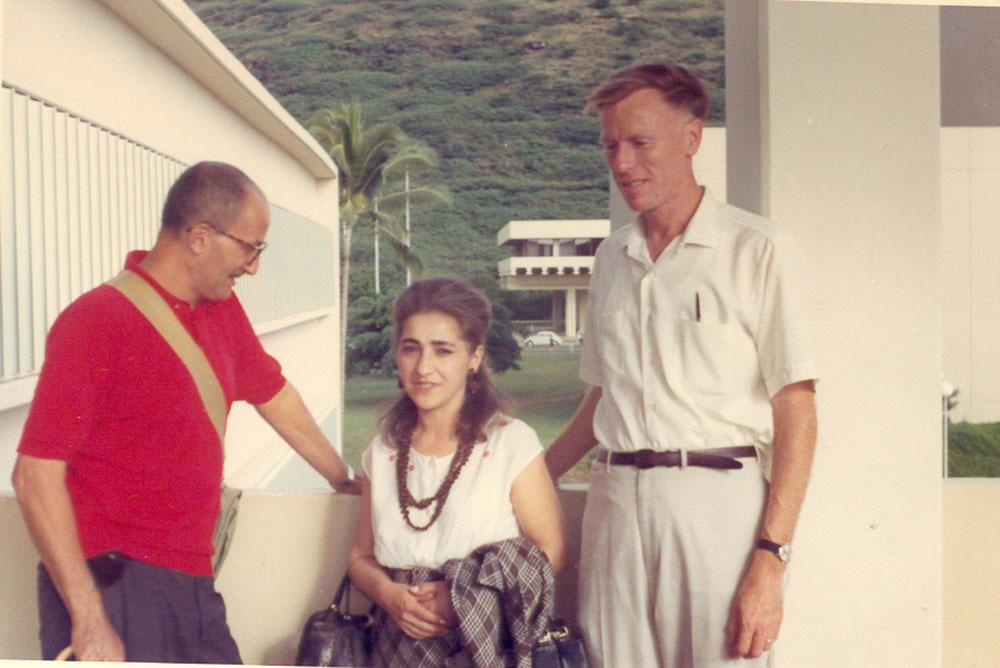
Left to right: Paul Halmos, Crina Singer, and Allen Shields at the University of Hawaii in Honolulu
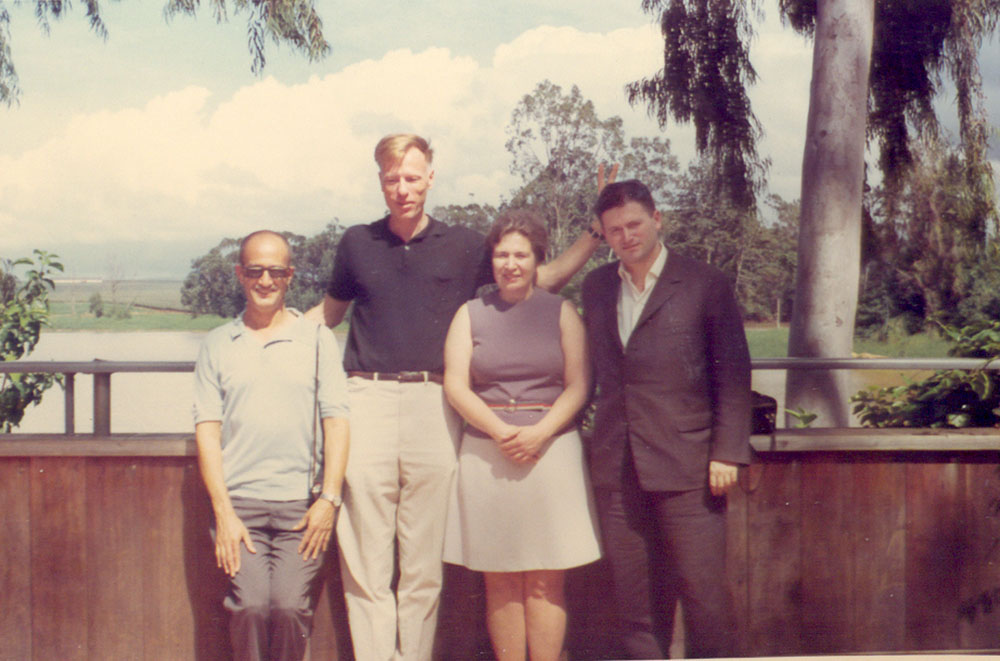
Left to right: Paul Halmos, Allen Shields, Joan Shields, and Ivan Singer in Honolulu, Hawaii
Ivan Singer now is Research Professor and Honorary Member of the Institute of Mathematics of the Romanian Academy in Bucharest. He is a functional analyst currently researching geometry in semi-modules, and also interested in optimization, convex and discrete geometry, and operations research. Photographs of (and by) Singer appear on page 36 and page 58 of this collection, where you can read more about him. Allen Shields is pictured on page 48 of this collection, where you can read more about him.

Left to right: Paul Halmos, Crina Singer, Allen Shields, and Joan Shields in Honolulu, Hawaii
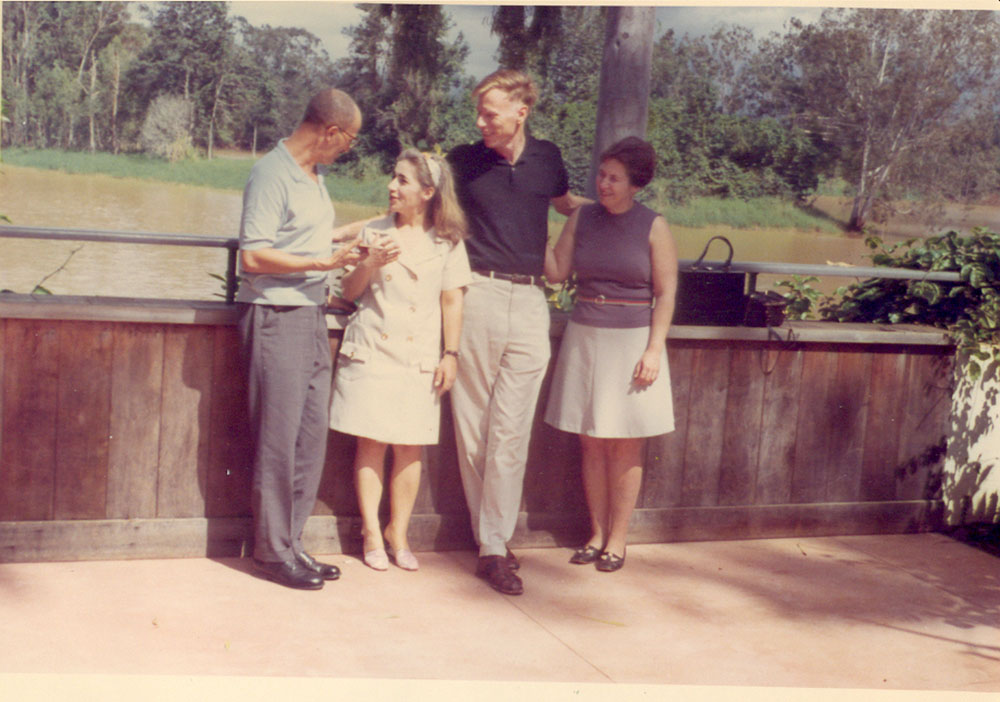
Left to right: Paul Halmos, Crina Singer, Allen Shields, and Joan Shields in Honolulu, Hawaii
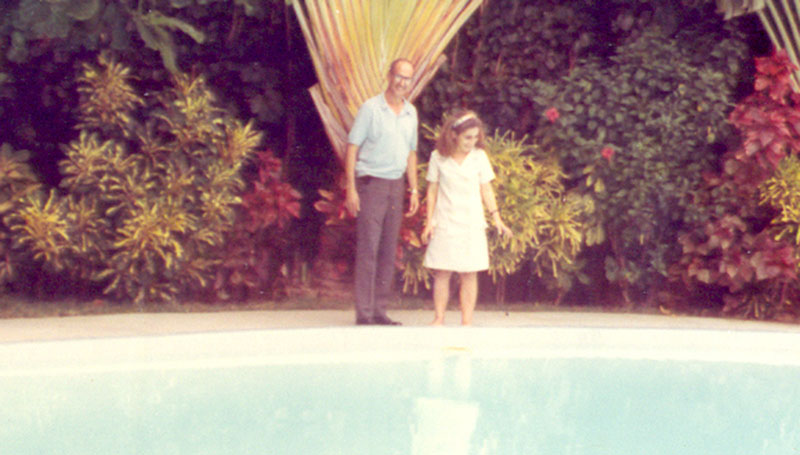
Paul Halmos and Crina Singer poolside in Honolulu, Hawaii
Many thanks to Ivan Singer for the photographs on this page. For more information about Paul R. Halmos (1916-2006) and about the Paul R. Halmos Photograph Collection, please see the introduction to this article on page 1.
You may use the photographs on this page in your classroom; for all other purposes, please contact Ivan Singer, Institute of Mathematics, Romanian Academy, or MAA Convergence Editor Janet Beery so that she may seek permission for you from Prof. Singer.
